Like so many people, I was very disappointed that the 2020 Silverstone Classic had to be cancelled. 2020 would have been the thirtieth anniversary for the Silverstone Classic, an event which from relatively small beginnings has grown and grown to become the largest Historic MotorSport festival in the world and a number of special features were planned for the 2020 edition to make it even more memorable than this three-day celebration of historic motorsport usually is. Of course, it was not to be, as events on the scale of this were simply out of the question in July 2020, given the state of Covid and the associated lockdowns. Much, of course, had been prepared, as the build up to the Classic takes months, but understandably the event had to be cancelled, with the promise that much of what had been in the organiser’s minds would be transferred over to 2021. Planning must have been very difficult, as the early months of 2021 saw the country locked down again, and whilst dates were announced by the end of February of when a possible relaxation of the rules might take effect, these were earliest dates and not guaranteed dates. With the final removal of all restrictions deferred from late June into July, it was only relatively close to the timing of this event that it was clear that it could go ahead. I suspect quite a lot of people – participants as well as the paying public – either assumed it would not, or simply chose not attend a large scale event, even though it is mostly held outdoors, but thankfully, the organisers held their nerve and the 30th edition of the event did indeed take place, 31 years after the first one. And it was most definitely an event to remember, with all the features which have made the Classic, as it now seems to be branded, so popular. I learned long ago that even a weekend is insufficient to see everything, so planned to attend all three days, during which I walked probably further than I had done in the preceding months put together. The weather gods did not quite seem to be on side, with some damp mornings and some truly torrential downpours, especially around Friday lunchtime and a worse one around 6pm on that day, and you can probably tell which photos were taken around then, as sadly several of them had evidence of rain drops on the camera lens! That aside, this was everything I had been looking forward to, and even in the three days, I am sure there is stuff I missed, including a lot of the races themselves. There are a vast number of photos here, to show just what I did see, so read on.
CAR CLUB DISPLAYS
The Silverstone Classic has long been popular with Car Clubs who collectively provide a stunning display of around 10,000 cars all parked up in the infield. Some bring just a few cars and others amass into the hundreds and in the case of Porsche Club GB, the thousands. Every year there are a few Clubs that make their first appearance as well as those who return time and again. An added bonus for many of the displaying Clubs is the opportunity to take the track in one of the Club Parades which are scheduled during the day on each of the three days of the event. Clubs lucky enough to get these are chosen by the organisers who take note of notable anniversaries for the marque, model or sometimes the whole Club. Clearly, all those who had been selected for 2020 missed out, but those Clubs who had been selected and who attended in 2021 were given Parades as were a number of Clubs with a 2021 anniversary to celebrate. Among the anniversaries being celebrated were 60 years of the Mini Cooper and the Jaguar E Type, 50 years of the Stag and Lamborghini Countach, 40 years of the DeLorean, and smaller groups included the BMW Z3, Quantum kit cars and also a belated celebration of 110 years of Alfa Romeo. Getting the cars on and off the track is quite some logistics challenge, especially for the largest Club groups, which in the case of 2021 meant the Triumph Stag Owners who had around 375 cars participating.
ABARTH
It was always going to be hard to get as big an Abarth turnout in 2021 as I managed in 2019, as that had been the year when the marque’s 70th anniversary celebrations had seen Abarth UK join us and a very central location on site. Even so, we had around 36 cars booked in for the busiest day (Saturday) and a good number on the other two days. Many people did as me, and made a three day trip out of it all.
The vast majority of cars here were the 500-based models which have been on sale now since the end of 2008, following a launch at the Paris Show that year. Since that time there have been a number of detailed changes to the standard cars and a lot of limited editions. Those who really know the marque can spot most of them, but some are so subtle that unless there is a badge you can see, you will not be quite sure which version you are looking at. It used to be relatively easy, when the model was first launched, as there was only one version as shipped ex works called the 500. It had a 135 bhp 1.4 litre turbo-charged engine coupled to a five speed manual gearbox, with 16″ alloys as standard, and the option of 17″ wheels, and a colour palette comprising of two whites (BossaNova White, the standard colour, or the pearlescent Funk White), Red (Pasadoble), Pale Grey (Campovolo) or Black. If you wanted more power – 160 bhp – then you could order an Esseesse kit, which came in a large wooden crate, containing new wheels, springs, an ECU upgrade, the Monza exhaust system and badging. It was dealer fitted and could be applied at any time within the first 12 months or 10,000 miles from registration. Needless to say, it proved popular. As were many of the optional extras, with stickers for the sides, a large scorpion for the bonnet and even a chequered pattern for the roof among the personalisation options offered. Several of the original style of cars were here.
Having used the legendary 695 badging from the 1960s on the Tributo cars, at the 2012 Geneva Show, Abarth dusted off the 595 name that had been used on the less powerful of the Nuova 500 based cars of the same generation, and created two new versions which we should think of as Series 2 cars, the 595 Turismo and Competizione, both of which could be bought in either closed or open top C guise, with either the 5 speed manual or robotised automated gearshifts. Both models had the 160 bhp engine as standard. Effectively they were a replacement for the Esseesse kit, and it meant that the cars were produced complete at the factory, rather than needing the dealer to undertake the upgrade (and the associated paperwork), though Abarth did not withdraw the Esseesse kits from the market for some while. Turismo, as the name suggests was aimed slightly less extreme in intent, featuring standard leather upholstery, upgraded dampers and climate control, Xenon headlights and Alutex interior details. The sportier Abarth 595 Competizione replaced the leather seats with Sabelt cloth sport seats and Alutex with aluminium, while adding p-cross-drilled brakes and the Record Monza dual-mode exhaust. Some new colours were introduced, and very soon one of those, Record Grey, frequently combined with a tan interior became one of the most popular choices. There were several examples of this popular colour here and there is no denying that this combination suits the Abarth shape very well.
Peter Cuthbertson brought his 50th Anniversary Edition car. This version was unveiled at the 2013 Frankfurt Motor Show, as a limited production car of which just 299 vehicles would be made commemorating the 50th anniversary of the original Fiat-Abarth 595. As that original car had been badged a Fiat, so was this one, which confused everyone who had been trying to explain how Abarth is a separate company. The UK cars listed at around £29,000 so not cheap, but for that money you got the 180 PS 1.4 T-Jet engine, Abarth Competizione gearbox, 17-inch alloy wheels with 695 Magnesio Grey design embellished and red liner, Brembo 305 mm floating brake discs, fixed four-piston caliper, special shock absorbers, ‘Record Monza’ variable back-pressure dual mode exhaust, matt three-layer white body colour, Xenon headlights with dipped and driving light functions, red leather sports seats with white inserts and red stitching, Abarth logo at black leather steering wheel with red inserts and finder and the kick plate.
Rumours started to circulate towards the end of 2014 that Abarth were going to upgrade the Competizione model, so as better to bridge the gap between the Turismo and the 190 bhp 695 Biposto that had been added to the range earlier in the year. It was Geneva 2015 when the result was finally shown to an expectant fan base. Most exciting news was that thanks to a bigger Garrett Turbo, the engine had been tweaked to 180 bhp, and with reduced CO2 emissions. A standard spec that included Koni Dampers, Brembo brakes, Xenon lights, Sabelt seats, Climate Control, parking sensors as well as other refinements that had been added like the TFT instrument display all proved very compelling, so not long after the first cars reached the UK in June of 2015, I found temptation too hard to resist, and as is well documented here, swapped my 2010 car for one of these. At the time I ordered it, Cordolo Red, a tri-coat pearlescent paint which shimmers in bright sunlight looked set to become one of the most popular colours of the lot, even though it is a cost option. Indeed, the Launch Edition models were all offered either in this colour or Scorpion Black, with black wheels. Surprisingly, the colour was not carried over to the Series 4 cars.
What is known as the Series 4 version of the familiar 595 reached the markets in the middle of 2016. After rumours had circulated all winter following the launch of the facelifted Fiat 500 last year, Abarth finally unveiled the Series 4 at the end of May 2016. Initially, we were told that the cars would not be available in the UK until September, but that came forward somewhat, with dealers all receiving demo cars in June, and the first customers taking delivery in July. Three regular production versions of both the closed car and the open-topped C were initially available, all badged 595, and called Custom, Turismo and Competizione, as before, though numerous limited edition models have since appeared and in most case disappeared. The most significant changes with the Series 4 are visual, with a couple of new colours, including the much asked for Modena Yellow and a different red, called Abarth Red, which replaces both the non-metallic Officina and – slightly surprisingly – the tri-coat pearlescent Cordolo Red. as well as styling changes front and rear. The jury is still out on these, with many, me included, remaining to be convinced. At the front, the new air intake does apparently allow around 15 – 20 % more air in and out, which will be welcome, as these cars do generate quite a lot of heat under the bonnet. Competizione models for the UK retain the old style headlights, as they have Xenon lights as standard, whereas the Custom and Turismo cars have reshaped units. At the back, there are new light clusters and a new rear bumper and diffuser. Inside, the most notable change is the replacement of the Blue & Me system with a more modern uConnect Audio set up, which brings a new colour screen to the dash. Mechanically, there is an additional 5 bhp on the Custom (now 145) and Turismo (now 165 bhp) and the option of a Limited Slip Diff for the Competizione, which is likely to prove a popular option. Details of the interior trim have changed, with a filled-in glovebox like the US market cars have always had, and electric windows switches that are like the US ones, as well as a part Alcantara trim to the steering wheel in Competizione cars. These cars have now been on offer for three years and with Abarth sales on the rise, it was no surprise that they were particularly well represented here.
More recently, Abarth have produced the 695 Rivale, a celebration of Fiat’s partnership with Riva, which has already seen a special Riva version of the 500,. Described as being “the most sophisticated Abarth ever”, it is available either as a hatch or a cabriolet, with both of them featuring a two-tone Riva Sera Blue and Shark Grey paintwork. The Rivale is adorned with an aquamarine double stripe, satin chrome finish on the door handles and satin chrome moulding on the tailgate, various aesthetic elements inspired by the Riva 56 Rivale yachts and ‘695 Rivale’ logos, joined by Brembo Brakes, Koni suspension, and 17-inch Supersport alloy wheels. Enhancing the nautical theme the new 695 Rivale features either a carbon fibre or mahogany dashboard, black mats with blue inserts, blue leather seats and door panels, carbon fibre kick plates, special steering wheel wrapped in blue and black leather and with a mahogany badge, blue leather instrument panel cover, and mahogany gear lever knob and kick plate. These are joined by the standard Uconnect infotainment with a 7-inch display, which is compatible with Android Auto and Apple CarPlay, and there is also a hand-written numbered plate that can be customised with the mane of the customer’s yacht on request. Powering the 695 Rivale is the same 1.4-litre turbocharged engine that makes 180PS (177hp) and 184lb/ft of torque, that features in the 595 Competizione, allowing it to go from rest to 100km/h (62mph) in 6.7 seconds and up to a top speed of 225km/h (140mph). This is a regular model in the range, but confusingly, there is also the Abarth 695 Rivale 175 Anniversary, created to celebrate 175 years of the Riva brand. Just 350 of these were produced, half of them the hatch and the other half cabriolets. These featured 17-inch alloy wheels with a special pattern, celebratory badge on the outside, hand-crafted details such as the two-tone colour – blue and black hand-stitched leather seats with a celebratory logo stitched onto the headrest, carbon dashboard silk screen printed with special logo, numbered plate. Standard Rivale cars arrived in the UK in April 2018, and quite a few have been sold. They always attract lots of interest when they do appear.
The 695 Anniversario was launched at the brand’s 70th anniversary celebrations in Milan in October 2019, and deliveries of which started around the turn of the year. The Anniversario is in a choice of 5 colours: White, Black, Podium Blue, Grey and 1958 Green, and there were examples of some but not all of these here, including a couple of cars in the 1958 Green which was selected to evoke memories of the 1958 record-breaking 500, though I can advise that the two shades of green are quite different, the older car being much lighter. Online verdicts of the new car at launch were not entirely positive, with many challenging the appearance, others the spec and yet more the price (£29,995 in the UK), but in the metal, it looks far better than those first web pictures portrayed, and there is no doubt that the 1949 buyers of the car are getting something quite distinctive, with the Campovolo Grey accents around the wheelarches and lower body skirts. What they aren’t getting is more than 180 bhp, as it would seem that to get Euro 6d compliance from the T-Jet engine, 180 bhp is the limit. But the Abarth 695 70° Anniversario does have an ace up its sleeve. Look at the back and you’ll notice a rather large roof-mounted spoiler serving as the special edition’s party piece. Manually adjustable in literally a dozen of positions, the spoiler was developed in the wind tunnel to achieve maximum aero efficiency regardless of speed. Its inclination varies from 0 to 60 degrees and helps increase aerodynamic load by 42 kilograms when the car is travelling at speeds of 124 mph (200 km/h) provided the spoiler is at its maximum inclination. Abarth has done the maths and it claims the new aero component will reduce steering corrections by as much as 40% based on the testing they’ve done at FCA’s wind tunnel in the Orbassano municipality located southwest of Turin. Power is provided by the familiar 1.4-litre turbocharged engine with 180 hp and 250 Nm (184 lb-ft) of torque, good enough for a sprint from 0 to 62 mph (100 km/h) in 6.7 seconds before topping out at 140 mph (225 km/h) if the spoiler is in the 0° position. Those 17-inch SuperSport wheels are paired to a Brembo braking system with four-piston aluminium calipers finished in red, hugging the 305-mm front and 240-mm rear self-ventilated discs. Rounding off the changes on the outside is the newly developed Record Monza exhaust with active valve for a better soundtrack. Abarth also spruced up the cabin a bit where the body-hugging seats are exclusive to this special edition, just like the individually numbered plaque reminding you this isn’t an ordinary 695. Onboard tech includes support for both Apple CarPlay and Android Auto, DAB digital radio and a navigation system for that seven-inch touchscreen display. Additional standard equipment includes automatic climate control, daytime running lights, LED fog lights, unique mats, and the Abarth telemetry system if you plan on taking the hot hatch to the track.
Abarth announced two limited edition models in the autumn of 2020 and both of these was here. This is the 595 Scorpioneoro, another model which takes its inspiration from a history which few in the UK will be familiar with, there will be just 2000 units of this distinctive model available globally. The 595 Scorpioneoro was born to continue the legacy of the famous A112 Abarth “Gold Ring” of 1979, better known as the A112 Abarth “Targa Oro”, of which only 150 models produced and, as with the new Abarth 595 Scorpioneoro, what made it so special were its stylistic details. These details included black livery, gold-coloured decorative line contouring the bodywork and the alloy wheels, also painted in the distinctive gold colour. This car is liveried in the same way, marked out by its black livery, decorative gold bodywork lining and gold-painted alloy wheels. It also boasts a matt black chessboard roof and grey finish on the door handles and mirror caps. And to mirror the ‘Gold Scorpion’ name, the car is adorned with gold scorpions on the bonnet and the wheel centres. Inside the cabin of this new exciting new model, you’ll be greeted with a black dashboard which is home to the new gold finished 500 logo. Leather detailing on the seats introduces the original “scorpionflage”. The seats are further embellished with dedicated stitching and personalised headrests with the word “Scorpioneoro”, the Italian flag and Abarth embroidered on them. An additional touch of exclusivity comes from the numbered, gold coloured plaque, available solely on this model. The Scorpioneoro also comes with Abarth’s top-of-the-range seven-inch touchscreen infotainment system, complete with Apple CarPlay and Android Auto, as well as a Beats Audio sound system. Mechanically, there is nothing new, as the car has the 165 bhp version of the familiar T-Jet engine and the other features you get in the regular production Trofeo cars.
The other limited production car was the 595 Yamaha Monster Edition and Emma Woods’ car here was an example of that. One of two limited production (or Collector Edition, as Abarth have called them) cars released in September of 2020, this was the cheaper of the pair.. It was inspired by the MotoGP superbike, while the more expensive Scorpioneoro that was released at the same time was designed, so we are told. Based on the 165 bhp Turismo and like the Scorpioneoro, this limited-edition car gets new Abarth sports seats, albeit with blue finishes and the ‘Monster Energy Yamaha MotoGP’ logo on the head restraints. The blue lining contrasts with the black dashboard, while the numbered plate denoting the car’s special-edition status is placed on the central tunnel. Other features include the flat-bottomed steering wheel, sport button and the Record Monza exhaust with active valve. There’s a specially designed braking system, too, which complements the Koni rear suspension. That itself is fitted with Frequency Selective Damping (FSD) technology designed to improve the ride and handling characteristics of the car. 2000 were produced globally.
The Punto Evo was launched at the 2010 Geneva Show, with the cars reaching UK buyers in the summer of that year, and it incorporated many of the changes which had been seen a few months earlier on the associated Fiat models, the visual alterations being the most obvious, with the car taking on the nose of the associated Fiat, but adapted to make it distinctively Abarth, new rear lights and new badging. There was more to it than this, though, as under the bonnet, the T-Jet unit was swapped for the 1.4 litre Multi-Air, coupled to a 6 speed gearbox, which meant that the car now had 165 bhp at its disposal. Eventually, Abarth offered an Esseesse kit for these cars, though these are exceedingly rare. Part of the Punto Evo family is the SuperSport, usually identified by the distinctive black bonnet, though not all cars feature it. Just 199 of the SuperSport versions were built, of which around 120 are registered on UK roads. These cars had many of the options from the Punto Evo included as standard. Power came from the the 1.4-litre MultiAir turbo engine, tuned to produce 178bhp and 199lb ft of torque, up from 165 of the standard Punto Evo, giving the SuperSport a 0-62 time of 7.5 seconds and a top speed of over 132mph. To help put the power down, the SuperSport was fitted with wider 18″ wheels and optional Koni FSD dampers. Standard equipment included the Blue&Me infotainment system with steering wheel controls, automatic climate control and a popular option was the ‘Abarth Corsa by Sabelt’ sports leather seats. The SuperSport was available in the same colours as the regular Punto Evo, which means white, grey, black and red.
Completing the different models from the modern Abarth catalogue were a number of examples of the 124 Spider. Eagerly awaited, the 124 Spider went on sale in September 2016. A quick reminder as to what this car is: The Abarth 124 Spider was developed in parallel with the Fiat model. It does cost a lot more, and there are those who think you don’t get enough extra for your money, but those who have driven it will tell you otherwise. You certainly get more power. The 1.4 MultiAir turbo unit jumps up from 138bhp to 168bhp, while torque also increases by a modest 10Nm to 250Nm, which gives it a 0-62mph time of 6.8 seconds, which is half a second quicker than the 2.0-litre Mazda MX-5. The top speed is 143mph. It weighs just 1060kg meaning a power-to-weight ratio of 158bhp-per-tonne, and with the new Record Monza exhaust system it sounds great even at idle. The Abarth version gets a stiffer suspension setup than the regular Fiat 124 Spider, with Bilstein dampers and beefed-up anti-roll bars. Bigger Brembo brakes also feature, with aluminium calipers. It can be had with a six-speed manual or six-speed automatic transmission with paddles, and the latter gets a Sport mode for quicker shifts. Many of the UK cars sport the ‘Heritage Look’ pack, which is a no-cost option. It brings a matt black bonnet and bootlid, plus red exterior trim detailing and has proved popular. The £29,565 starting price gets you standard equipment such as cruise control, climate control, Bluetooth, a DAB radio and satnav, plus Alcantara black and red (or pure black) seat trim. The automatic gearbox is a £2,035 extra, while an optional visibility pack brings LED DRLs, auto lights and wipers and rear parking sensors. Production ceased in 2019 and around 1800 examples came to the UK, so this will always be a rare car. You might not have though so on the evidence of this event, though. As well as plenty of the standard car, there were a number of examples of the GT.
AC
AC came back to the market after the Second World War with the staid 2-Litre range of cars in 1947, but it was with the Ace sports car of 1953 that the company really made its reputation in the post war years. Casting around for a replacement for the ageing 2-Litre, AC took up a design by John Tojeiro that used a light ladder type tubular frame, all independent transverse leaf spring suspension, and an open two seater alloy body made using English wheeling machines, possibly inspired by the Ferrari Barchetta of the day. Early cars used AC’s elderly 100 bhp two-litre overhead cam straight-six engine (first seen soon after the end of the First World War), which, according to a 1954 road test by Motor magazine, gave a top speed of 103 mph and 0–60 mph in 11.4 seconds and a fuel consumption of 25.2 mpg. It was hardly a sporting engine, however, and it was felt that something more modern and powerful was required to put the modern chassis to good use. Joining the Ace in 1954 was the Aceca hard top coupé, which had an early form of hatchback rear door but used the same basic timber framed alloy body. From 1956, there was the option of Bristol Cars’ two-litre 120 bhp straight-six with 3 downdraught carburettors and slick four-speed gearbox. Top speed leapt to 116 mph with 0–60 mph in the nine second bracket. Overdrive was available from 1956 and front disc brakes were an option from 1957, although they were later standardised. In 1961 a new 2.6-litre straight-six ‘Ruddspeed’ option was available, adapted by Ken Rudd from the unit used in the Ford Zephyr. It used three Weber or SU carburettors and either a ‘Mays’ or an iron cast head. This setup boosted the car’s performance further, with some versions tuned to 170 bhp, providing a top speed of 130 mph and 0–60 mph in 8.1 seconds. However, it was not long before Carroll Shelby drew AC’s attention to the Cobra, so only 37 of the 2.6 models were made. These Ford engined models had a smaller grille which was carried over to the Cobra. The car raced at Le Mans in 1957 and 1958. In 1959 at Le Mans, Ted Whiteaway and John Turner drove their AC-Bristol, registration 650BPK, to the finish, claiming top honours for the 2,000cc class and seventh overall behind six 3 litre cars. Few cars with this provenance have survived and are extremely valuable. They can range from $100,000 or more for an unrestored car, even one in pieces, to in excess of $400,000 for a restored AC Ace.
There are so many replica and recreation examples of the Cobra that it is tempting to assume that whenever you see one, that is what it is. Occasionally, of course, the car before you is actually one of the original ones from the 1960s and that is the case with this fabulous Cobra 289. Like many British manufacturers, AC Cars had been using the Bristol straight-6 engine in its small-volume production, including its AC Ace two-seater roadster. This had a hand-built body with a steel tube frame, and aluminium body panels that were made using English wheeling machines. The engine was a pre-World War II design by BMW which by the 1960s was considered dated. In 1961 Bristol decided to cease production of its engine. In September 1961, American retired race car driver and automotive designer Carroll Shelby wrote to AC asking if they would build him a car modified to accept a V8 engine. Bristol engines for the AC Ace two-seater sports car had recently been discontinued so AC agreed, provided a suitable engine could be found. Shelby went to Chevrolet to see if they would provide him with engines, but not wanting to add competition to the Corvette they said no. However, Ford wanted a car that could compete with the Corvette and they happened to have a brand new engine which could be used in this endeavor: the Windsor 3.6-litre (221 cu in) engine – a new lightweight, thin-wall cast small-block V8. Ford provided Shelby with two engines. In January 1962 mechanics at AC Cars in Thames Ditton, Surrey designed the “AC Ace 3.6” prototype with chassis number CSX2000. AC had already made most of the modifications needed for the small-block V8 when they installed the 2.553-litre (156 cu in) inline 6 Ford Zephyr engine, including the extensive rework of the AC Ace’s front end bodywork. The only modification of the front end of the first Cobra from that of the “AC Ace 2.6” was the steering box, which had to be moved outward to clear the wider V8 engine. The most important modification was the fitting of a stronger rear differential to handle the increased engine power. A Salisbury 4HU unit with inboard disc brakes to reduce unsprung weight was chosen instead of the old E.N.V. unit. It was the same unit used on the Jaguar E-Type. After testing and modification, the engine and transmission were removed and the chassis was air-freighted to Shelby in Los Angeles on 2 February 1962, By this time the small-block’s displacement was increased to 4.7 L (289 cu in). Shelby’s team paired this engine along with a transmission into CSX2000, in less than eight hours at Dean Moon’s shop in Santa Fe Springs, California, and began road-testing. A few changes were made to the production version: The inboard brakes were moved outboard to reduce cost; the fuel tank filler was relocated from the fender to the cenre of the trunk; the trunk lid had to be shortened to accommodate this change. AC exported completed, painted, and trimmed cars (less engine and gearbox) to Shelby who then finished the cars in his workshop in Los Angeles by installing the engine and gearbox and correcting any bodywork flaws caused by the car’s passage by sea. A small number of cars were also completed on the East Coast of the US by Ed Hugus in Pennsylvania, including the first production car; CSX2001. The first 75 Cobra Mk1 models (including the prototype) were fitted with the 4.3 L (260 cu in). The remaining 51 Mk1 models were fitted with a larger version of the Windsor Ford engine, the 4.7-litre (289 cu in) V8. In late 1962, Alan Turner, AC’s chief engineer completed a major design change of the car’s front end to accommodate rack and pinion steering while still using transverse leaf spring suspension (with the leaf spring doubling as the upper suspension link). The new car entered production in early 1963 and was designated Mark II. The steering rack was borrowed from the MGB while the new steering column came from the VW Beetle. About 528 Mark II Cobras were produced from 1963 to the summer of 1965 (the last US-bound Mark II was produced in November 1964). In 1963 to keep production focused on producing cars for Shelby American Inc., the Ruddspeed Ace was discontinued. To supply cars to the European market, AC began to market and sell the Cobra in Europe. Advertisements from the time state that the Cobra was designed to meet the requirements of Shelby American Inc. Shelby experimented with a larger Ford FE engine, of 6.4 L (390 cu in) in chassis number CSX2196. Unfortunately, the car was not able to receive the development it needed, as resources were aimed at taking the crown from Ferrari in the GT class. Ken Miles drove and raced the FE-powered Mark II at Sebring and pronounced the car virtually undrivable, naming it “The Turd”. It failed to finish with the engine expiring due to damper failure. CSX2196 was revised for the showdown at Nassau which allowed a more relaxed class division of racing. This allowed the Cobras to run with a prototype Ford GT40, GM Grand Sport Corvettes and a Lola Mk6. An aluminium 6.4-litre (390 cu in) engine was used. By the end of the first lap, the Cobra had a lead of the length of the start-finish straight. However, the car failed to finish due to brake problems. A new chassis was required, developed, and designated Mark III. The new car was designed in cooperation with Ford in Detroit. A new chassis was built using 101.6 mm (4 in) main chassis tubes, up from 76.2 mm (3 in) and coil spring suspension all around (an especially significant change up front, where the previously-used transverse leaf spring had done double duty as the top link). The new car also had wide fenders and a larger radiator opening. It was powered by the “side oiler” Ford 7.0 L (427 cu in) FE engine equipped with a single 4-barrel 780 CFM Holley carburetor rated at 425 bhp at 6000 rpm and 651 N⋅m (480 lb⋅ft) at 3700 rpm of torque, which provided a top speed of 264 km/h (164 mph) in the standard model. The more powerful tune of 485 bhp with a top speed of 298 km/h (185 mph) in the semi-competition (S/C) model. Cobra Mark III production began on 1 January 1965; two prototypes had been sent to the United States in October 1964. Cars were sent to the US as unpainted rolling chassis, and they were finished in Shelby’s workshop. Unfortunately, The MK III missed homologation for the 1965 racing season and was not raced by the Shelby team. Only 56 of the 100 planned cars were produced. Of those, 31 unsold competition models were detuned and fitted with windscreens for street use. Called S/C for semi-competition, an original example can currently sell for US$1.5 million, making it one of the most valuable Cobra variants. Some Cobra 427s were actually fitted with Ford’s 7-litre (428 cu in) engine, a long stroke, smaller bore, lower cost engine, intended for road use rather than racing. The AC Cobra was a financial failure that led Ford and Carroll Shelby to discontinue importing cars from England in 1967. AC Cars kept producing the coil-spring AC Roadster with narrow fenders and a small block Ford 289. It was built and sold in Europe until late 1969.
Rather rare than these was the much more recent Ace Brooklands. The AC Brooklands Ace is a roadster built by the British automotive company AC Cars. Launched in 1993 following two previous concept cars of 1986 and 1991, the Brooklands Ace underwent small scale production until 1997 when it received a facelift and reengineering under AC’s new owners and was relaunched. The Brooklands Ace did not prove popular, and production ceased in 2000 after a total production run of approximately 58. The Brooklands Ace traces its history back to the 1986 concept car called the Ace of Spades that featured a high proportion of Ford parts including the 2.9 V6 engine and four-wheel drive system. The car underwent significant development before reappearing in 1991 with a new design by IAD, a stainless steel chassis and a Ford 3.0 V6 engine. The second prototype was a standard two-seater, dropping the 2+2 design of the Ace of Spades. In 1993 the production model was launched, with a new specification and went into small scale production for two years before AC Cars folded in 1996. The production model is powered by a 5.0 L V8 engine from Ford and is shared with the AC Cobra, producing 225 bhp. The final version included an electric hood mechanism but the pop-up headlights from the earlier prototype had been abandoned, but the aluminium body was kept. Production ended with 46 of the original versions made between 1993 and 1996, by which time AC Cars had gone into receivership. Under new ownership in 1996, the Brooklands Ace underwent a significant redesign and re-engineering, with a relaunch at the 1997 London Motor Show as the Ace V8, dropping the Brooklands name. Sales started in 1998, but despite the changes, production reached only 12 units before ending in 2000. The external changes included a significant re-design to the bumpers, grille, lights (now rectangular instead of round), and a new bonnet. As well as production of some elements outsourced to South Africa, final assembly was undertaken in Coventry. A change of some manufacturing techniques to reduce cost and weight was also included in the refreshed design. The second generation Ace weighs 1,453 kg (3,203 lb), sits on a wheelbase of 2,472 mm (97.3 in) and an overall length of 4,420 mm (174.0 in). The engine range was increased with two 5.0 L V8 options, in 240 bhp and 320 bhp V8 supercharged variations; a 4.6 litre 320 bhp V8 32-valve fuel injected quad cam engine, and a Lotus 3.5 V8 producing 251 bhp. The 1999 London Motor Show car was originally fitted with the Lotus engine, but as it was never operational a 4.6-litre Cobra engine was later installed. A four-seater version called the AC Aceca, reviving an old AC model name, was also launched with the 4.6 L V8 engine. The 5.0 V8 achieved a top speed of 135 mph (217.3 km/h) and could accelerate from 0 to 60 in 6.9 seconds. The supercharged 5.0 could reach 155 mph (249.4 km/h) and accelerate to 60 mph in 5.5 seconds.
ALFA ROMEO
The 105 Series Coupe was the oldest Alfa type here and there were rather fewer than you sometimes get at events like this. There’s a complex history to this much-loved classic. The first car was called the Alfa Romeo Giulia Sprint GT, and was revealed at a press event held at the then newly opened Arese plant on 9 September 1963, and displayed later the same month at the Frankfurt Motor Show. In its original form the Bertone body is known as scalino (step) or “step front”, because of the leading edge of the engine compartment lid which sat 1/4 an inch above the nose of the car. The Giulia Sprint GT can be distinguished from the later models by a number of features including: Exterior badging: Alfa Romeo logo on the front grille, a chrome script reading “Giulia Sprint GT” on the boot lid, and rectangular “Disegno di Bertone” badges aft of the front wheel arches; flat, chrome grille in plain, wide rectangular mesh without additional chrome bars; single-piece chrome bumpers; no overriders. Inside the cabin the padded vinyl dashboard was characterised by a concave horizontal fascia, finished in grey anti-glare crackle-effect paint. Four round instruments were inset in the fascia in front of the driver. The steering wheel was non-dished, with three aluminium spokes, a thin bakelite rim and a centre horn button. Vinyl-covered seats with cloth centres and a fully carpeted floor were standard, while leather upholstery was an extra-cost option. After initially marketing it as a four-seater, Alfa Romeo soon changed its definition of the car to a more realistic 2+2. The Giulia Sprint GT was fitted with the 1,570 cc version of Alfa Romeo’s all-aluminium twin cam inline four (78 mm bore × 82 mm stroke), which had first debuted on the 1962 Giulia Berlina. Breathing through two twin-choke Weber 40 DCOE 4 carburettors, on the Sprint GT this engine produced 105 hp at 6,000 rpm. Like all subsequent models, the Sprint GT was equipped with an all-synchromesh 5-speed manual transmission. The braking system comprised four Dunlop disc brakes and a vacuum servo. The rear brakes featured an unusual arrangement with the slave cylinders mounted on the axle tubes, operating the calipers by a system of levers and cranks. According to Alfa Romeo the car could reach a top speed of “over 180 km/h (112 mph)”. In total 21,902 Giulia Sprint GT were produced from 1963 to 1965, when the model was superceded by the Giulia Sprint GT Veloce. Of these 2,274 were right hand drive: 1,354 cars fully finished in Arese, and 920 shipped in complete knock-down kit form for foreign assembly. For 1966, the Giulia Sprint GT was replaced by the Alfa Romeo Giulia Sprint GT Veloce, which was very similar but featuring a number of improvements: a revised engine—slightly more powerful and with more torque—better interior fittings and changes to the exterior trim. Alongside the brand new 1750 Spider Veloce which shared its updated engine the Sprint GT Veloce was introduced at the 36th Geneva Motor Show in March 1966, and then tested by the international specialist press in Gardone on the Garda Lake. Production had began in 1965 and ended in 1968. The Giulia Sprint GT Veloce can be most easily distinguished from other models by the following features: badging as per Giulia Sprint GT, with the addition of round enamel badges on the C-pillar—a green Quadrifoglio (four-leaf clover) on an ivory background—and a chrome “Veloce” script on the tail panel; black mesh grille with three horizontal chrome bars; the grille heart has 7 bars instead of 6; stainless steel bumpers, as opposed to the chromed mild steel bumpers on the Giulia Sprint GT. The bumpers are the same shape, but are made in two pieces (front) and three pieces (rear) with small covers hiding the joining rivets. Inside the main changes from the Giulia Sprint GT were imitation wood dashboard fascia instead of the previous anti-glare grey finish, front seats revised to a mild “bucket” design, and a dished three aluminium spoke steering wheel, with a black rim and horn buttons through the spokes. The Veloce’s type 00536 engine, identical to the Spider 1600 Duetto’s, featured modifications compared to the Giulia Sprint GT’s type 00502—such as larger diameter exhaust valves. As a result it produced 108 hp at 6,000 rpm, an increase of 3 hp over the previous model, and significantly more torque. The top speed now exceeded 185 km/h (115 mph). Early Giulia Sprint GT Veloces featured the same Dunlop disc brake system as the Giulia Sprint GT, while later cars substituted ATE disc brakes as pioneered on the GT 1300 Junior in 1966. The ATE brakes featured an handbrake system entirely separate from the pedal brakes, using drum brakes incorporated in the rear disc castings. Though the Sprint GT Veloce’s replacement—the 1750 GT Veloce—was introduced in 1967, production continued throughout the year and thirty final cars were completed in 1968. By then total Giulia Sprint GT Veloce production amounted to 14,240 examples. 1,407 of these were right hand drive cars, and 332 right hand drive complete knock-down kits. The Alfa Romeo 1750 GT Veloce (also known as 1750 GTV) appeared in 1967 along with the 1750 Berlina sedan and 1750 Spider. The same type of engine was used to power all three versions; this rationalisation was a first for Alfa Romeo. The 1750 GTV replaced the Giulia Sprint GT Veloce and introduced many updates and modifications. Most significantly, the engine capacity was increased to 1779 cc displacement. Peak power from the engine was increased to 120 hp at 5500 rpm. The stroke was lengthened from 82 to 88.5 mm over the 1600 engine, and a reduced rev limit from 7000 rpm to 6000 rpm. Maximum torque was increased to 137 lb·ft at 3000 rpm. A higher ratio final drive was fitted (10/41 instead of 9/41) but the same gearbox ratios were retained. The result was that, on paper, the car had only slightly improved performance compared to the Giulia Sprint GT Veloce, but on the road it was much more flexible to drive and it was easier to maintain higher average speeds for fast touring. For the United States market, the 1779 cc engine was fitted with a fuel injection system made by Alfa Romeo subsidiary SPICA, to meet emission control laws that were coming into effect at the time. Fuel injection was also featured on Canadian market cars after 1971. Carburettors were retained for other markets. The chassis was also significantly modified. Tyre size went to 165/14 from 155/15 and wheel size to 5 1/2J x 14 instead of 5J x 15, giving a wider section and slightly smaller rolling diameter. The suspension geometry was also revised, and an anti-roll bar was fitted to the rear suspension. ATE disc brakes were fitted from the outset, but with bigger front discs and calipers than the ones fitted to GT 1300 Juniors and late Giulia Sprint GT Veloces. The changes resulted in significant improvements to the handling and braking, which once again made it easier for the driver to maintain high average speeds for fast touring. The 1750 GTV also departed significantly from the earlier cars externally. New nose styling eliminated the “stepped” bonnet of the Giulia Sprint GT, GTC, GTA and early GT 1300 Juniors and incorporated four headlamps. For the 1971 model year, United States market 1750 GTV’s also featured larger rear light clusters (there were no 1970 model year Alfas on the US market). Besides the chrome “1750” badge on the bootlid, there was also a round Alfa Romeo badge. Similar Quadrofoglio badges to those on the Giulia Sprint GT Veloce were fitted on C pillars, but the Quadrofoglio was coloured gold instead of green. The car also adopted the higher rear wheelarches first seen on the GT 1300 Junior. The interior was also much modified over that of earlier cars. There was a new dashboard with large speedometer and tachometer instruments in twin binnacles closer to the driver’s line of sight. The instruments were mounted at a more conventional angle, avoiding the reflections caused by the upward angled flat dash of earlier cars. Conversely, auxiliary instruments were moved to angled bezels in the centre console, further from the driver’s line of sight than before. The new seats introduced adjustable headrests which merged with the top of the seat when fully down. The window winder levers, the door release levers and the quarterlight vent knobs were also restyled. The remote release for the boot lid, located on the inside of the door opening on the B-post just under the door lock striker, was moved from the right hand side of the car to the left hand side. The location of this item was always independent of whether the car was left hand drive or right hand drive. Early (Series 1) 1750 GTV’s featured the same bumpers as the Giulia Sprint GT Veloce, with the front bumper modified to mount the indicator / sidelight units on the top of its corners, or under the bumper on US market cars. The Series 2 1750 GTV of 1970 introduced other mechanical changes, including a dual circuit braking system (split front and rear, with separate servos). The brake and clutch pedals on left hand drive cars were also of an improved pendant design, instead of the earlier floor-hinged type. On right hand drive cars the floor-hinged pedals were retained, as there was no space for the pedal box behind the carburettors. Externally, the series 2 1750 GTV is identified by new, slimmer bumpers with front and rear overriders. The combined front indicator and sidelight units were now mounted to the front panel instead of the front bumper, except again on the 1971-72 US/Canadian market cars. The interior was slightly modified, with the seats retaining the same basic outline but following a simpler design. 44,269 1750 GTVs were made before their replacement came along. That car was the 2000GTV. Introduced in 1971, together with the 2000 Berlina sedan and 2000 Spider, the 2 litre cars were replacements for the 1750 range. The engine displacement was increased to 1962 cc. The North American market cars had fuel injection, but everyone else retained carburettors. Officially, both versions generated the same power, 130 hp at 5500 rpm. The interior trim was changed, with the most notable differences being the introduction of a separate instrument cluster, instead of the gauges installed in the dash panel in earlier cars. Externally the 2000 GTV is most easily distinguished by its grille with horizontal chrome bars, featuring protruding blocks forming the familiar Alfa heart in outline, smaller hubcaps with exposed wheel nuts, optional aluminium alloy wheels of the same size as the standard 5. 1/2J × 14 steel items, styled to the “turbina” design first seen on the alloy wheels of the Alfa Romeo Montreal, and the larger rear light clusters first fitted to United States market 1750 GTV’s were standard for all markets. From 1974 on, the 105 Series coupé models were rationalised and these external features became common to post-1974 GT 1300 Junior and GT 1600 Junior models, with only few distinguishing features marking the difference between models. 37,459 2000 GTVs were made before production ended and these days they are very sought after with prices having sky-rocketed in recent years.
Alfa replaced the Giulia-based Spider model with an all-new design which finally made its debut in 1966 together with the Giulia Sprint GT Veloce at an event organised in Gardone Riviera. With its boat tailed styling, it quickly found favour, even before taking a starring role in the film “The Graduate”. The original 1600cc engine was replaced by a more powerful 1750cc unit at the same time as the change was made to the rest of the range, and the car continued like this until 1970, when the first significant change to the exterior styling was introduced on the 1750 Spider Veloce, with the original’s distinctive elongated round tail changed to a more conventional cut-off tail, called the “Kamm tail”, as well as improving the luggage space. Numerous other small changes took place both inside and out, such as a slightly different grille, new doorhandles, a more raked windscreen, top-hinged pedals and improved interior trim. 1971 saw the Spider Veloce get a new, larger powerplant—a 1962 cc, 132 hp unit—and consequently the name was changed from 1750 Spider Veloce to 2000 Spider Veloce. The 1600 Spider restarted production a year later as the Spider 1600 Junior, and was visually identical to the 1300. 1974 saw the introduction of the rare, factory request, Spider-Targa. Based upon the Spider, it featured a Porsche style solid rear window and lift out roof panels, all made out of black GRP type material. Less than 2,000 models of such type were ever made and was the only part solid roof Spider until the introduction of the factory crafted hard top. The 1300 and 2000 cars were modified in 1974 and 1975 respectively to include two small seats behind the front seats, becoming a “two plus two” four seater. The 1300 model was discontinued in 1977. Also, between 1974 and 1976, the early-style stainless-steel bumpers were discontinued and replaced with black, rubber-clad units to meet increasingly stringent North American crash requirements. 4,557 examples of the 1300 Junior were made and 4,848 of the 1600 Junior as well as 16,320 2000 Spider Veloces and 22,059 of 2000 Spider Veloce US version. There were also 4,027 1750 Spider Veloces produced.
The Series 3 Spider was previewed in North America for the 1982 model year with the introduction of 2.0 litre Bosch electronic fuel injection to replace the SPICA mechanical injection. The Spider underwent a major styling revamp in 1983, which saw the introduction of black rubber front and rear bumpers. The front bumper incorporated the grille and a small soft rubber spoiler was added to the trunk lid. The change altered the exterior appearance of the car considerably and was not universally praised by enthusiasts. Various other minor mechanical and aesthetic modifications were also made, and the 1600 car (never available in North America) dropped the “Junior” name. The Quadrifoglio Verde (Green Cloverleaf) model was introduced in 1986, with many aesthetic tweaks, including sideskirts, mirrors, new front and rear spoilers, hard rubber boot mounted spoilers with integral 3rd stoplight, unique 15″ alloys and optional removable hardtop. Different interior trim included blood red carpets and grey leather seats with red stitching. The QV was offered in only 3 colours: red, silver and black. It was otherwise mechanically identical to the standard Spider Veloce model, with a 1962 cc double overhead cam, four-cylinder engine (twin two-barrel carburettors in Europe; North American models retained the Bosch L-Jetronic fuel injection introduced for the 1982 model year except that the VVT mechanism was now L-Jet activated) and five-speed manual transmission. The interior was revised with a new centre console, lower dash panels (to meet U.S. regulations) and a single monopod gauge cluster (with electronic gauges). For the North American market a model dubbed the Graduate was added in tribute to the car’s famous appearance in the 1967 film, The Graduate, starring Dustin Hoffman. The Graduate was intended as a less expensive “entry-level” Alfa. While it had the same engine and transmission as the Quadrifoglio and Veloce, it lacked the alloy wheels and luxury features of the other two models. The Graduate model had manual windows, basic vinyl seats, a vinyl top, and steel wheels as standard. Air conditioning and a dealer-installed radio were the only options. It first appeared in 1985 in North America and continued until 1990. Minor changes occurred from 1986 to 89, including new paint colours, a centre high mount stop lamp midway through 1986 for North American models, a move away from the fade-prone brown carpet and new turn signal levers. Some 1988 models featured automatic seatbelts that extended from a large device between the front seats.
The S4, the final major change to the long running Spider came in 1990, and mechanically, the biggest different was the use of Bosch Motronic electronic fuel injection with an electric fan. Externally, the Spider lost its front under-bumper spoiler and the rather ungainly rear boot spoiler of the S3, and picked up 164-style rear lights stretching across the width of the car as well as plastic bumpers the same colour as the car. This also marked the first generation of the car with automatic transmission, as well as on-board diagnostics capabilities. The car had remained in production largely thanks to continued demand in North America, though this market had to wait until 1991 for the changes to appear on their cars. European markets were offered a car with a 1600cc engine and carburettors as well as the 2 litre injected unit. Production finally ended in 1993, with an all new model, the 916 Series Spider appearing a year later. The S4 car was not officially sold in the UK, but plenty have found their way to our shores since then.
As was still the practice in the 1970s, Alfa followed up the launch of the Alfetta Berlina with a very pretty coupe. Styled by Giugiaro, this car, initially called the GT, and premiered in the autumn of 1974, looked completely unlike the saloon on which it was based. The first cars had 1.8 litre four cylinder engines and there was one of those on show. In 1976 the range was expanded both up and down with a 1.6 and a 2.0 model, the latter adopting the legendary GTV name. A rare SE model from this period was part of the display, complete with period vinyl roof (look closely), and although the pain does appear a bit like a lot of older Alfa reds, having gone rather pink, this was the actual shade when the car was new. In 1981, with the 2.5 litre V6 engine that had been developed for the ill-fated Alfa 6 luxury saloon available, Alfa was able to create a true rival for the 2.8 litre Capri with the GTV6. A facelift modernised the look of the car with plastic bumpers front and rear and a new interior looked rather better as well as being more ergonomically logical. There was a good mix of the earlier chrome bumpered and later plastic bumpered models, the last with 2.0 and 2.5 GTV6 versions both represented. There was also a car sporting 3.0 badging and right hand drive. This is a South African car. From 1974 South African Alfetta’s were manufactured at Alfa Romeo’s own Brits plant. South Africa was one of two markets to have a turbocharged GTV6, with a Garrett turbocharger and a NACA intake. An estimated 750 were assembled before all production ceased in 1986. The South African range included a 3.0 litre GTV-6, predating the international debut of the factory’s 3.0 litre engine in 1987 (for the Alfa 75). and 212 of these were built in South Africa for racing homologation. The last 6 GTV-6 3.0’s were fuel injected. To this day, the GTV-6 remains the quintessential Alfa Romeo for South Africans.
It was nice to see three examples of the AlfaSud here. These characterful small cars evoke a very positive reaction, with many people wistfully recollecting one that they, or their parents, owned back in the 1970s, but observing that the car, whilst divine to drive, simply rusted away almost before your very eyes. There are a lot more of these cars left in the UK than you might imagine, but most of them are on SORN, needing massive restorations that may or may not ever happen. That should not detract from the splendour of the models on show at this event. Alfa Romeo had explored building a smaller front wheel drive car in the 1950s but it was not until 1967 that firm plans were laid down for an all-new model to fit in below the existing Alfa Romeo range. It was developed by Austrian Rudolf Hruska, who created a unique engineering package, clothed in a body styled by Giorgetto Giugiaro of ItalDesign. The car was built at a new factory at Pomigliano d’Arco in southern Italy, hence the car’s name, Alfa Sud (Alfa South). January 18, 1968, saw the registration at Naples of a new company named “Industria Napoletana Costruzioni Autoveicoli Alfa Romeo-Alfasud S.p.A.”. 90% of the share capital was subscribed by Alfa Romeo and 10% by Finmeccanica, at that time the financial arm of the government controlled IRI. Construction work on the company’s new state sponsored plant at nearby Pomigliano d’Arco began in April 1968, on the site of an aircraft engine factory used by Alfa Romeo during the war. The Alfasud was shown at the Turin Motor Show three years later in 1971 and was immediately praised by journalists for its styling. The four-door saloon featured an 1,186 cc Boxer water-cooled engine with a belt-driven overhead camshaft on each cylinder head. It also featured an elaborate suspension setup for a car in its class (MacPherson struts at the front and a beam axle with Watt’s linkage at the rear). Other unusual features for this size of car were four-wheel disc brakes (with the front ones being inboard) and rack and pinion steering. The engine design allowed the Alfasud a low bonnet line, making it very aerodynamic (for its day), and in addition gave it a low centre of gravity. As a result of these design features, the car had excellent performance for its engine size, and levels of roadholding and handling that would not be equaled in its class for another ten years. Despite its two-box shape, the Alfasud did not initially have a hatchback. Some of the controls were unorthodox, the lights, turn indicators, horn, wipers and heater fan all being operated by pulling, turning or pushing the two column stalks. In November 1973 the first sport model joined the range, the two-door Alfasud ti—(Turismo Internazionale, or Touring International).Along with a 5-speed gearbox, it featured a more powerful version of the 1.2 engine, brought to 67 hp by adopting a Weber twin-choke carburettor; the small saloon could reach 160 km/h. Quad round halogen headlamps, special wheels, a front body-colour spoiler beneath the bumper and rear black one around the tail distinguished the “ti”, while inside there were a three-spoke steering wheel, auxiliary gauges, leatherette/cloth seats, and carpets in place of rubber mats. In 1974, Alfa Romeo launched a more upscale model, the Alfasud SE. The SE was replaced by the Alfasud L (Lusso) model introduced at the Bruxelles Motor Show in January 1975. Recognisable by its bumper overriders and chrome strips on the door sills and on the tail, the Lusso was better appointed than the standard Alfasud (now known as “normale”), with such features as cloth upholstery, headrests, padded dashboard with glove compartment and optional tachometer. A three-door estate model called the Alfasud Giardinetta was introduced in May 1975. It had the same equipment of the Alfasud “L”. It was never sold in the UK and these models are particularly rare now. The Lusso model was produced until 1976, by then it was replaced with the new Alfasud 5m (5 marce, five speed) model, the first four-door Alfasud with a five-speed gearbox. Presented at the March 1976 Geneva Motor Show, it was equipped like the Lusso it replaced. In late 1977 the Alfasud Super replaced the range topping four-door “5m”; it was available with both the 1.2- and 1.3-litre engines from the “ti”, though both equipped with a single-choke carburettor.The Super introduced improvements both outside, with new bumpers including large plastic strips, and inside, with a revised dashboard, new door cards and two-tone cloth seats. Similar upgrades were applied to the Giardinetta. In May 1978 the Sprint and “ti” got new engines, a 78 hp 1.3 (1,350 cc) and a 84 hp 1.5 (1,490 cc), both with a twin-choke carburettor. At the same time the Alfasud ti received cosmetic updates (bumpers from the Super, new rear spoiler on the boot lid, black wheel arch extensions and black front spoiler) and was upgraded to the revised interior of the Super. The 1.3 and 1.5 engines were soon made available alongside the 1.2 on the Giardinetta and Super, with a slightly lower output compared to the sport models due to a single-choke carburettor. All Alfasuds were upgraded in 1980 with plastic bumpers, new instrument panel, headlamps and rear lights as well as other revisions. The Ti version was now fitted with a twin-carburettor version of the 1490 cc engine that had been fitted to the Sprint the previous year, developing 95 bhp A three-door hatchback was added to the range in 1981 in either SC or Ti trim and the two-door Ti and Giardinetta were deleted from most markets around this time. Belatedly in 1982 the four-door cars were replaced by five-door versions as by now, most of its competitors were producing a hatchback of this size, although some also produced a saloon alternative. The range was topped by the five-door Gold Cloverleaf, featuring the 94 hp engine from the Ti and enhanced interior trim. In 1983 an attempt to keep pace with the hot hatchback market, the final version of the Alfasud Ti received a tuned 1490 cc engine developing 105 PS Now named Quadrifoglio Verde (Green Cloverleaf) this model was also fitted with Michelin low profile TRX tyres on metric rims as well as an enhanced level of equipment. The five-door Alfasud saloons were replaced by the 33 models in 1983. The 33 was an evolution of the AlfaSud’s floorpan and running gear, including minor suspension changes and a change from four-wheel disc brakes to front disc and rear drum brakes to reduce costs. The three-door versions continued for a further year before being replaced by the unsuccessful Alfa Romeo Arna a joint venture between Alfa Romeo and Nissan.
Follow on to the much-loved AlfaSud was the Alfa 33. Despite the low survival rate, believe it or not, the 33 is actually the best selling Alfa in history, with just under a million of them sold between 1983 and 1994. One reason why precious few seem to have survived is that the 33 struggled even new to gain the affections of the enthusiasts in the way that the model’s predecessor, the AlfaSud, did, so when rust and old age came on, the vast majority of the cars were simply scrapped. There were two distinct generations of the 33. The first ran from 1983 until 1990 and then a major facelift was applied with new front and rear styling to bring the looks more into line with the new 164. A mild facelift was applied to the first 905 series cars in late 1986. Exterior alterations were limited to clear indicator lens, wheel covers and alloy wheels of new design, the adoption of side skirts on all models, and a new front grille. Two-tone paint schemes were discontinued. There were more significant changes inside, with a more conventionally designed dashboard and steering wheel, which superseded the innovative moveable instrument binnacle. All 1.5 variants now had the 105 PS engine from the now discontinued 1.5 QV; a TI (Turismo Internazionale) trim level was exclusive to the front-wheel drive 1.5 hatchback. Changes were made to the suspension, brakes and gearbox, with closer-spaced ratios. A new 1,712 cc 116 bhp engine was introduced on the 1.7 Quadrifoglio Verde, which replaced the 1.5 QV. The 1.7 engine was developed from the 1.5 by enlarging bore and stroke; it also used new cylinder heads, incorporating hydraulic tappets. To cope with the increased power the new QV was equipped with vented front brake discs. The 1.7 QV looked close to its predecessor, but had lost the grey mid-body stripe and gained new alloy wheels, wind deflectors on the front windows, more pronounced side skirts and a rear body-colour spoiler on the boot lid. Inside it featured a leather-covered steering wheel, red carpets, and leatherette-backed sport seats upholstered in a grey/black/red chequered cloth. Diesel models were offered in some continental markets, but these were not sold in the UK, where only 1.5 and 1.7 Green Cloverleaf hatchback models were sold, as well as a market-specific 1.7 Sportwagon estate; all three were also available in “Veloce” versions, outfitted by Alfa Romeo GB with a colour-matching Zender body kit.
The Alfa 75 was the last Alfa model to be developed before the company was bought by Fiat. It was introduced in May 1985, to replace the 116 Series Giulietta with which it shared many components. It was named to celebrate Alfa’s 75th year of production. The body, designed by head of Alfa Romeo Centro Stile Ermanno Cressoni, was styled in a striking wedge shape, tapering at the front with square headlights and a matching grille. The 75 was only ever sold as a four door saloon, though at the 1986 Turin Auto Salon, a prototype 75 estate was to be seen, an attractive forerunner of the later 156 Sportwagon. This version was, however, never listed for sale, being cancelled after Fiat took control of Alfa Romeo. The car, dubbed the 75 Turbo Wagon, was made by Italian coachbuilder Rayton Fissore using a 75 Turbo as the basis. Two estate versions were to be found at the later 1987 Geneva Motor Show; one was this Turbo Wagon and the other was a 2.0 litre version named the Sportwagon. The 75 featured some unusual technical features, most notably the fact that it was almost perfectly balanced from front to rear. This was achieved by using transaxle schema — mounting the standard five-speed gearbox in the rear connected to the rear differential (rear-wheel drive). The front suspension was a torsion bar and shock absorber combination and the rear an expensive de Dion tube assembled with shock absorbers; these designs were intended to optimise the car’s handling; moreover the rear brake discs were fitted at the centre of the rear axle, near the gearbox-differential group. The engine crankshaft was bolted directly to the two-segment driveshaft which ran the length of the underside from the engine block to the gearbox, and rotated at the speed of the engine. The shaft segments were joined with elastomeric ‘doughnuts’ to prevent vibration and engine/gearbox damage. The 2.0 litre Twin Spark and the 3.0 litre V6 were equipped with a limited slip differential. The 75 featured a then-advanced dashboard-mounted diagnostic computer, called Alfa Romeo Control, capable of monitoring the engine systems and alerting the drivers of potential faults. The 75 engine range at launch featured four-cylinder 1.6, 1.8 and 2.0 litre petrol carburettor engines, a 2.0 litre intercooled turbodiesel made by VM Motori, and a 2.5 litre fuel injected V6. In 1986, the 75 Turbo was introduced, which featured a fuel-injected 1779 cc twin-cam engine using Garrett T3 turbocharger, intercooler and oil cooler. In 1987, a 3.0 litre V6 was added to the range and the 2.0 litre Alfa Romeo Twin Cam engine was redesigned to have now two spark plugs per cylinder, the engine was named as Twin Spark. With fuel injection and variable valve timing this engine produced 146 hp. This was the first production engine to use variable valve timing. In North America, where the car was known as the Milano, only the 2.5 and 3.0 V6s were available, from 1987 to 1989. The North American 2.5-litres were fundamentally different from their European counterparts. Due to federal regulations, some modifications were required. Most noticeable from the outside were the ‘America’ bumpers, with the typical rubber accordions in them. Furthermore, these bumpers had thick (and heavy) shock-absorbing material inside them and in addition, they were mounted to the vehicle on shock absorbers. To accommodate these shock absorbers, the ‘America’-bodies were slightly different from the European ones. The North American cars also had different equipment levels (depending on the version: Milano Silver, Milano Gold or Milano Platinum). electrically adjustable outside mirrors, electrically reclining seats and cruise control were usually optional in Europe. The car was also available with a 3-speed ZF automatic gearbox option for the 2.5 V6. Other, more common options such as electrically operated rear windows and an A/C system were standard in the USA. The USA-cars also had different upholstery styles and of course different dashboard panels also indicating speed in mph, oil pressure in psi and coolant temperature in degrees F, and as a final touch the AR control was different, including a seat belt warning light. The European-spec 2.5 V6 (2.5 6V Iniezione or 2.5QV) was officially sold only between 1985 and 1987, although some of them were not registered until 1989. Relatively few of them were sold (about 2800 units), especially when the 155 PS 1.8 Turbo was launched, which in some countries was cheaper in taxes because of its lower displacement. To create a bigger space between the V6 and the inline fours, the 2.5 was bored out to 2959 cc’s to deliver 188 PS and this new engine was introduced as the 3.0 America in 1987. As its type designation suggests, the 3.0 only came in the US-specification, with the impact-bumpers and in-boot fuel tank. However, the European ‘America’s’ were not equipped with side-markers or the door, bonnet and boot lid fortifications. Depending on the country of delivery, the 3.0 America could be equipped with a catalytic converter. In 1988 engines were updated again, the 1.8 litre carburettor version was replaced with fuel injected 1.8 i.e. and new bigger diesel engine was added to the range. In the end of 1989 the 1.6 litre carburettor version was updated to have fuel injection and 1990 the 1.8 Turbo and 3.0i V6 got some more power and updated suspension. The 3.0 V6 was now equipped with a Motronic system instead of an L-Jetronic. The 1.8 Turbo was now also available in ‘America’-spec, but strangely enough not available for the USA market. The 3.0 V6 did make it to the United States, and was sold as Milano Verde. The UK never particularly warmed to the 75 when it was new, but its reputation has got ever stronger as the car ages. Many UK cars were snapped up by the owners of driving schools at racing circuits, thanks to its handling characteristics, but there are also some nice road cars left.
It was more than 10 years after the Montreal had ceased production before Alfa offered another high-end and costly Coupe model, and the result, seen for the first time in 1989, could hardly have been more different than its forebear. That car had been praised for its looks, whereas this one, the SZ, and cruelly nicknamed “Il Mostro”, was almost wilfully, well, “different”. First seen at the 1989 Geneva Show, the car was also first shown simply as a concept, called the ES-30, for Experimental Sports car 3 litre. It was produced by Zagato. Robert Opron of the Fiat design studio was responsible for the initial sketches while Antonio Castellana was largely responsible for the final styling details and interior. Only the ‘Z’ logo of Zagato was kept. The car possessed unusual headlights positioned in a trio on each side – a styling used more subtly on later Alfa Romeos in the 2000s. Mechanically and engine-wise, the car was based on the Alfa 75, production being carried out by Zagato at Terrazzano di Rho near the Alfa factory in Arese. The thermoplastic injection moulded composite body panels were produced by Italian company Carplast and French company Stratime Cappelo Systems. The suspension was taken from the Alfa 75 Group A/IMSA car, and modified by Giorgio Pianta, engineer and team manager of the Lancia and Fiat rally works team. A hydraulic damper system was made by Koni. The SZ was originally equipped with Pirelli P Zero tyres (front 205/55 ZR 16, rear 225/50 ZR 16) and is able to sustain over 1.1 G in cornering, some drivers have measured a cornering force of 1.4 G, which remains an excellent performance figure. Low volume production got underway late in 1989, and over the next three years, 1036 were built, slightly more than planned. With the exception of a black car made for Zagato, all of them were red. Subsequently a convertible version, the RZ (for Roadster Zagato), was produced from 1992 until December 1994. Although almost identical to look at the two cars had completely different body panels save for the front wings and boot. The RZ had a revised bumper and door sills to give better ground clearance and the bonnet no longer featured the aggressive ridges. Three colours were available as standard: black, yellow and red, with black and yellow being the more popular choices. Yellow and red cars got a black leather interior and black cars burgundy. Although the interior layout was almost unchanged from the SZ, the RZ had a painted central console that swept up between the seats to conceal the convertible roof storage area. 350 units were planned but production was halted after 252 units when the Zagato factory producing the cars for Alfa Romeo went in to receivership, a further 32 cars were then completed under the control of the receivers before production finished at 284 units. Of those final three were painted silver with burgundy interior and another pearlescent white.
The 916 Series GTV and Spider were conceived to replace two very different models in the Alfa range. First of these was the open topped 105 Series Spider which had been in production since 1966 and by the 1990s was long overdue a replacement. Alfa decided to combine a follow on to the Alfetta GTV, long out of production, with a new Spider model, and first work started in the late 1980s. The task was handed to Pininfarina, and Enrico Fumia’s initial renderings were produced in September 1987, with the first clay models to complete 1:1 scale model made in July 1988. Fumia produced something rather special. Clearly an Italian design, with the Alfa Romeo grille with dual round headlights, recalling the Audi-based Pininfarina Quartz, another design produced by Enrico Fumia back in 1981, the proposal was for a car that was low-slung, wedge-shaped with a low nose and high kicked up tail. The back of the car is “cut-off” with a “Kamm tail” giving improved aerodynamics. The Spider would share these traits with the GTV except that the rear is rounded, and would feature a folding soft-top with five hoop frame, which would completely disappear from sight under a flush fitting cover. An electric folding mechanism would be fitted as an option. Details included a one-piece rear lamp/foglamp/indicator strip across the rear of the body, the minor instruments in the centre console angled towards the driver. The exterior design was finished in July 1988. After Vittorio Ghidella, Fiat’s CEO, accepted the design, Alfa Romeo Centro Stile under Walter de Silva was made responsible for the completion of the detail work and also for the design of the interiors, as Pininfarina’s proposal was not accepted. The Spider and GTV were to be based on the then-current Fiat Group platform, called Tipo Due, in this case a heavily modified version with an all new multilink rear suspension. The front suspension and drivetrain was based on the 1992 Alfa Romeo 155 saloon. Chief engineer at that time was Bruno Cena. Drag coefficient was 0.33 for the GTV and 0.38 for the Spider. Production began in late 1993 with four cars, all 3.0 V6 Spiders, assembled at the Alfa Romeo Arese Plant in Milan. In early 1994 the first GTV was produced, with 2.0 Twin Spark engine. The first premiere was then held at the Paris Motor Show in 1994. The GTV and Spider were officially launched at the Geneva Motor Show in March 1995 and sales began the same year. The cars were well received. At launch, many journalists commented that Alfa had improved overall build quality considerably and that it came very close to equalling its German rivals. I can vouch for that, as I owned an early GTV for eighteen months, and it was a well built and reliable car. In 1997 a new engine, a 24-valve 3.0 litre V6, was available for the GTV along with bigger, 12.0 inch brakes and red four-pot calipers from Brembo. The console knobs were changed from round central to rectangle ones and to a three-spoke steering wheel. Some versions were upgraded with different front bumper mesh to bring the wind noise down to 74 dBA. In May 1998 the cars were revamped for the first time, creating the Phase 2 models. Most of the alterations were inside. The interior was changed with new centre console, painted letters on skirt seals, changed controls and switches arrangement and different instrument cluster. Outside, the main changes included chrome frame around the grille and colour-coded side skirts and bumpers. A new engine was introduced, the 142 hp 1.8 Twin Spark, and others were changed: the 2.0 Twin Spark was updated with a modular intake manifold with different length intakes and a different plastic cover. Power output of the 2.0 TS was raised to 153 hp. Engines changed engine management units and have a nomenclature of CF2. The dashboard was available in two new colours in addition to the standard black: Red Style and Blue Style, and with it new colour-coded upholstery and carpets. The 3.0 24V got a six-speed manual gearbox as standard and the 2.0 V6 TB engine was now also available for the Spider. August 2000 saw the revamp of engines to comply with new emission regulations, Euro3. The new engines were slightly detuned, and have a new identification code: CF3. 3.0 V6 12V was discontinued for the Spider and replaced with 24V Euro3 version from the GTV. 2.0 V6 Turbo and 1.8 T.Spark were discontinued as they did not comply with Euro3 emissions. By the 2001-2002 model year, only 2 engines were left, the 2.0 Twin.Spark and 3.0 V6 24V, until the Phase 3 engine range arrived. The Arese plant, where the cars had been built, was closing and, in October 2000, the production of GTV/Spider was transferred to Pininfarina Plant in San Giorgio Canavese in Turin. In 2003 there was another and final revamp, creating the Phase 3, also designed in Pininfarina but not by Enrico Fumia. The main changes were focused on the front with new 147-style grille and different front bumpers with offset numberplate holder. Change to the interior was minimal with different centre console and upholstery pattern and colours available. Instrument illumination colour was changed from green to red. Main specification change is an ASR traction control, not available for 2.0 TS Base model. New engines were introduced: 163 hp 2.0 JTS with direct petrol injection and 237 hp 3.2 V6 24V allowing a 158 mph top speed. Production ceased in late 2004, though some cars were still available for purchase till 2006. A total of 80,747 cars were made, and sales of the GTV and Spider were roughly equal. More V6 engined GTVs than Spiders were made, but in 2.0 guise, it was the other way round with the open model proving marginally more popular.
When it came to replacing the 33, Alfa decided that they needed not just a five door hatch, but a three door as well, just as had been offered with the AlfaSud. The three door model, the Alfa Romeo 145 (Tipo 930A) was first to appear, making its debut on static display at the April 1994 Turin Motor Show and then at the Paris Motor Show in July. A simultaneous European commercial launch was planned for 9 September, but it was delayed until October. It was only in April 1992 that work had begun on a second car, the 146 or Tipo 930B, derived from and to be sold alongside the 145; with its more traditionally Alfa Romeo style it was aimed at a different clientele, that of the outgoing Alfa Romeo 33. The 146 premiéred in November 1994 at the Bologna Motor Show and went on sale in May 1995. The two cars shared design plans and interior components from the B-pillar forwards, but with very different looking rear ends. Based, as they were, on the Fiat Group’s Tipo Due (Type Two) platform, the 145 and 146 had a unibody structure, front MacPherson strut and rear trailing arm suspensions. A peculiarity of these cars is that they were designed to be fitted with both longitudinal engines (the older Boxers) and with transverse engines (the diesels and the Twin Spark). The former were mounted in the same configuration as on the 33 or Alfasud, that is longitudinally overhanging the front axle with the gearbox towards the cabin; the latter in the conventional transverse position with the gearbox to the left side. All engines were coupled to 5-speed manual transmissions. Steering was rack and pinion, with standard hydraulic power assistance. At launch the engine line-up for both cars comprised a 1.9-litre inline-four turbo diesel and the boxer petrol engines from the 33, in 1.3 8-valve, 1.6 8-valve and range topping 1.7 16-valve flat four forms. Depending on the market, the engines were available in either or both base and better equipped L (for “Lusso”) trim levels; L trim standard equipment was richer on larger engined cars. Flagship sport models with the two-litre 16-valve Twin Spark inline-four engine from the Alfa Romeo 155 arrived a year after the début: the 145 Quadrifoglio and 146 ti. Each of the two-litre versions had a unique trim level; both included richer standard equipment than L trims, like ABS, leather-wrapped steering wheel and shifter knob and available Recaro sport seats. The 145 Quadrifoglio (145 Cloverleaf in the UK), launched at the September 1995 Frankfurt Motor Show and on sale from October,had deep body-colour side skirts with “green cloverleaf” badges and 5-hole alloy wheels. The 146 ti went on sale in February 1996. It came with painted side skirts, a boot spoiler and 12-hole alloy wheels. Two-litre cars were equipped with stiffer suspension, uprated all-disk braking system, ABS, wider, lower-profile tires and ‘quick-rack’ direct steering (also seen on the 155, GTV and Spider) which improved responsiveness, but also compromised the turning circle. The sporty suspension set-up was harsher than many others in its category at the time, but this was in line with the Fiat Group’s marketing of Alfa Romeo as a sporting brand and it is said to have resulted in class leading handling. From January 1997 all the boxer engines were phased out in favour of 1.4, 1.6 and 1.8 versions of the Twin Spark 16-valve engine.1.8-litre cars adopted the sport chassis, steering and brakes of the Quadrifoglio/ti, and also offered some of their optional equipment such as the sport seats. At the same time the interior was updated: a new air conditioning system, a redesigned dashboard an upholstered insert were fitted. Outside changes were minor: new wheel covers and alloy wheels and a wider choice of paint colours. In late 1997 Alfa Romeo introduced the Junior, a trim level targeted at young buyers that combined the sport styling and chassis setup of the range topping models with the affordable entry-level 1.4 powertrain, later with 1.6 engine too. Based on the 1.4 L, Junior cars were distinguished by the Quadrifoglio’s side skirts with “Junior” badges, specific 15 inch alloy wheels, and by the stainless steel exhaust tip (as well as, on the 146, the boot spoiler) from the ti. A year later 1.8 and 2.0 Twin Spark engines received the updates first introduced on the Alfa Romeo 156; thanks to variable length intake manifolds the two powertrains gained 4-5 PS and reached peak torque at engine speeds some 500 rpm lower. At the Geneva Motor Show in March 1999 Alfa Romeo introduced the restyled ’99 line-up for both models. The new common rail direct injection 1.9 JTD turbo diesel replaced the 1.9 TD. The main changes outside were new, body-colour bumpers with round fog lights and narrow protection strips; the interior got new upholstery and detail trim changes such as chrome vent surrounds. Optional side airbags complemented the already available passenger and standard driver airbags. The Junior trim level was discontinued, in favour of “pack sport” option package that included side skirts, rear spoiler, alloy wheels, leather-wrapped steering wheel and sport seats, all standard features on the two-litre models. A second “pack lusso” package offered leather steering wheel, velour upholstery and mahogany wood trim. In September of the next year, at the Paris Motor Show the all-new Alfa Romeo 147 was presented Eventually, in 2000, the 145/146 cars were superseded by the all-new 147, which was a far bigger commercial success, with its acclaimed styling front end and improved quality. Still, many enthusiasts feel that it lost a little of the special feel and Alfa Romeo that the 145 had. 221,037 145s and 233,295 146s were built, There are depressingly few survivors of either model in the UK, so it was good to see a couple of examples of both the 145 here.
When the 156 was launched in 1997, things looked very bright for Alfa. Striking good looks were matched by a driving experience that the press reckoned was better than any of its rivals. The car picked up the Car of the Year award at the end of the year. and when it went on sale in the UK in early 1998, waiting lists soon stretched out more than 12 months. Reflecting the way the market was going, Alfa put a diesel engine under the bonnet, launched a (not very good, it has to be admitted) automated transmission with the SeleSpeed, added a very pretty if not that commodious an estate model they called Sport Wagon and then added a top spec 3.2 litre GTA with its 250 bhp engine giving it a performance to outrun all its rivals. And yet, it did not take long before the press turned on the car, seduced by the latest 3 Series once more, citing build quality issues which were in fact far from universal. The 156 received a very minor facelift in 2002 and a more significant one in late 2003 with a new front end that was a clue to what would come with the car’s successor. Production ceased in 2005.
Rather than replacing the 916 Series GTV with a single model, Alfa elected to produce two successors., The more commodious of the two, the GT, was the first to appear, making its debut in March 2003 at the Geneva Motor Show, finally going on sale in early 2004. It was built at the Pomigliano plant, alongside the 147 and 159. The GT was based on the Alfa 156 platform, which was also used for the 147, providing the 2-door coupé with genuine five-passenger capacity. It was styled by Bertone. Most mechanicals were taken directly from the 156/147 using the same double wishbone front suspension and MacPherson rear setup. The interior was derived form the smaller hatchback 147 and shared many common parts. The GT shared the same dash layout and functions, the climate control system as well as having a similar electrical system. Some exterior parts were taken from 147 with the same bonnet, wing mirrors and front wings (from 147 GTA). The engine range included both a 1.8 TS, and 2.0 JTS petrol engine, a 1.9 MultiJet turbodiesel, and a top-of-the-range 240 bhp 3.2 V6 petrol. There were few changes during the GT’s production life. In 2006 Alfa introduced a 1.9 JTD Q2 version with a limited slip differential, and also added a new trim level called Black Line. In 2008 Alfa introduced the cloverleaf model as a limited edition complete with new trim levels, lowered suspension, body kit, 18 inch alloy wheels and was only available in the colours black, Alfa red, or blue. with 1.8 and 2.0 litre petrol engines as well as the 1.9 litre Multijet turbo diesel. The GT was acclaimed for its attractive styling and purposeful good looks, in 2004 being voted the world’s most beautiful coupe in the annual ‘World’s Most Beautiful Automobile’ (L’Automobile più Bella del Mondo) awards. The car sold reasonably well, with 80,832 units being produced before the model was deleted in 2010.
The other 916 series replacement cars were the Brera and Spider models, and there were a lot of them here. Visually similar to the 159 models at the front, the Brera and Spider boasted unique styling from the A pillars rearwards. They were offered with the same range of engines as the 159, and thanks to that strong, but rather heavy platform on which they were built, even the 3.2 litre V6 cars were more Grand Tourer than rapid sports car. Pininfarina was responsible for both models. The Brera was first to market, in 2005, with the Spider following in 2006. Production of both ceased in late 2010, by which time 12,488 units of the Spider and 21,786 units of the Brera had been built. It will be very surprising if these do not attain classic status, and the consequent rise in values, though that has not happened yet.
First seen as a concept at the 2011 Geneva Show, the production 4C Competizione model did not debut for a further 2 years. Production got underway later that year at the Maserati plant in Modena, and the first deliveries were late in 2013. Production was originally pegged at 1000 cars a year and a total of just 3500, which encouraged many speculators to put their name down in the hope of making a sizeable profit on selling their cars on. That plan backfired, and in the early months, there were lots of cars for sale for greater than list price. Press reaction to the car has been mixed, with everyone loving the looks, but most of them feeling that the driving experience is not as they would want. Owners generally disagree – as is so often the case! For sure, it has no radio, and no carpets and no luggage space to speak of, but you know that when you buy it. It won’t be the car everyone, but if you can live with these limitations, you are sure to enjoy it. Indeed, all owners I have ever spoke to do love their car. I know I would if I could find space (and funds!) for one in my garage!
The current Giulietta arrived in 2010 as a much awaited replacement for the 147. Spy photos had suggested that the car was going to look very like Fiat’s ill-fated Bravo, but the reality was that it had a style all of its own. A range of very efficient petrol and diesel engines were among the most emissions-efficient in their class at the time, and a 250 bhp Quadrifoglio version at the top of the range made sure there was something for the man who wanted a rapid, but quite subtle hatch. The car has enjoyed reasonable success in the UK, and the car has certainly found favour among Alfa enthusiasts
Also from the current range were examples of both the Giulia and the Stelvio.
ALLARD
The J1 cars were race cars that were very successful in trials and rallies. Their front wings could be removed and replaced with cycle fenders depending on the event. The J2 was a complete departure, it featured a minimalist body with front cycle fenders and a DeDeion rear suspension. Most UK, European, and non-North American export J2’s featured tuned Mercury flatheads or Ardun OHV powerplants. While most North American bound J2’s were shipped without an engine – and their new owners often installed the powerful Cadillac 331 OHV V8 that made the J2 the dominant road racing car in America for a few brief years. The J2 however featured a unique front suspension that made it challenging to drive aggressively; additionally the cockpit was cramped. To address these concerns, Allard introduced the J2X which included a revised front suspension that improved handling, new engine layout, and more legroom in the stretched cockpit. The rear of the J2 and J2X are identical. In 1952, Le Mans outlawed cycle fenders; the new JR was in development, but not yet ready – which led the Allard panel beaters to rush the development of a J2X with enclosed front fenders. The car was called the J2X Le Mans, bearing a striking resemblance to the Jaguar C-type body. J2’s and J2X’s are most often associated with Cadillac power, but they were also propelled by Chrysler, Oldsmobile, and Lincoln V8’s – even a GMC straight-6 was used! KBP 242 is the last recorded of the 11 J1 Allard’s built between 1947 and 1948 by the Allard and one of 6 known J1 Allard’s to remain. KBP is the sole survivor of the 3 Special Trials bodied 100” short wheelbase J1’s built for Leonard Potter’s Team to compete in International Rally’s and Classic Trials. The first competitive event for the cars was the Rallye des Alpes in 1948. KBP wears its original bodywork and is fitted with a 4600cc Mercury/Ford side valve flathead V8 with period Offenhauser high compression aluminium cylinder heads and twin inlet manifold with Stromberg 97 carburettors.
The Allard K1 was a two seat sports car that was intended to be used for racing as well as on the road. A total of 151 were produced between 1946 and 1950. Because of the car’s lightness, due to its simple body, and being equipped with a 3.6 litre flathead Ford V8 engine, the vehicle was capable of reaching 149.67 km/h (93 mph). Some cars were built using Mercury V8 engines as well. It is believed that the Allard K1 was never offered for sale outside of the United Kingdom, but records indicate that a few were shipped to different countries around the world, including Argentina, Australia, Belgium, Brazil, and the United States.
The L Type was a four-seat tourer produced by Allard between 1946 and 1948. 191 L Type tourers were made and only 19 are known to still be in existence around the world. The L Type used the V8 engine from the Ford Pilot. There was power and acceleration in abundance and the ‘long’ rear axle ratio of 3.6:1 used at first gave these tourers an easy gait up to a maximum of around 85 mph. After the chassis (112 inches long) were built in South Hill Park, where after completion were towed across London to the Hilton Brothers’ workshops in Fulham. This is where the hand-crafted, ash-framed, coachbuilt bodies were installed. By the standards of the time the L Type provided roomy accommodation for four people in comfortable leather-trimmed seats. They were fully carpeted and the hood and removable sidescreens were practical and weatherproof, although a sports-type fold-flat windscreen was also provided.
The Allard P1 (known when new more often than not simply as the Allard 3.6-litre Saloon) is a five-seater two-door sports saloon produced by the British Allard Motor Company between 1949 and 1952. 155 Allard P1s were built. The cars used Ford engines and transmissions. This helped reduce problems finding service support and parts for cars exported to the US which was a key export market for Allard and other UK makers of larger cars in the 1950s. A car tested by the British magazine The Autocar in 1949 recorded a top speed of 84.5 mph (136.0 km/h) and could accelerate from 0–60 mph in 23.4 seconds. A fuel consumption of 17 mpg was recorded. The test car cost £1277 including taxes. The Competition Series version received Mercury’s 4.4 litre V8 engine with 115 hp; if this did not suffice then various aftermarket parts from companies such as Edelbrock or Edmunds could be specified. Unusually in a car of post-war design, the Allard featured a windscreen hinged at the top, which could be opened “by means of a central toggle mechanism”. Interior fittings displayed unusual attention to detail by the car’s designers, with good interior storage including a packages shelf under the fascia and “pockets formed…in the thickness of the doors”. Instrumentation included, in addition to a choke control, a “screw-type hand throttle” as well as a switch for a light in the engine compartment. A heater that drew fresh air from the outside was included as a standard feature on exported cars, and was offered as an optional extra for the domestic market. In 1952 an Allard P1, driven by Sydney Allard himself, along with Guy Warburton, won the Monte Carlo Rally. Tom Lush was the navigator.
ALPINA
As ever there were a good number of Alpina models on show here, several dating back to the time when few people even knew what Alpina was, let alone had seen one. This is based on the E30 3 Series. Dubbed the B3, the 2.7 litre version featured a larger 2.7 litre inline-six-cylinder engine — up from the E30’s 2.5 litre unit — upgraded suspension, and killer looks. Thankfully for customers back in the day, the B3 2.7 was available in almost every body style the E30 offered. Which meant you could get it as a coupe, a convertible, and even the Touring. The 2.7 litre naturally-aspirated inline-six made, at the time, 204 bhp and 195 lb-ft (265 Nm) of torque. By modern standards, that might not sound like a lot, but it was plenty back then. Especially when you consider how light the B3 2.7 was compared to modern cars. All B3 2.7 models feature the brand’s iconic blue paint, with its iconic pin-striped livery. While the convertible version gets a silver livery, the other two cars get gold. However, they’re all spectacular looking.
This one is based on the E32 generation of the 7 Series. The Alpina B11 3.5 was based on the E32 735i and introduced in 1987 with a 251 bhp inline-six engine. Between 1987 and 1993 a total of 332 cars were produced. The Alpina B11 4.0 is based on the E32 740i with a modified engine producing 311 bhp] (compared with 282 bhp for the 740i) and 410 Nm (302 lb/ft) of torque. Just 7 cars were made in 1993 and 1994. The Alpina B12 5.0 is based on the E32 750i/750iL and used a modified V12 engine producing 345 bhp (compared with 295 bhp for the 750i/750iL) and 470 Nm (347 lb/ft) of torque. A total of 305 cars were made.
During the lifetime of the E36 generation of 3 Series, Alpina produced quite an array of different versions: the B6 2.8, B3 3.0, B3 3.2, B8 4.0 and B8 4.6. The B3 and B6 models were powered by straight-six engines, while the B8 models were powered by V8 engines. A full range of bodystyles was available.
Next up was an E39-based B10 3.3S. The B10 was launched at the March 1997 Geneva Show, and ran for just 2 years before being replaced by a more potent 3.3 litre version. It had an engine based on BMW’s 6 cylinder 2.8 litre unit, but enlarged to 3.2 litres, with lightweight Mahle pistons, modified cylinder head and combustion chamber, and a revised Siemens engine management system, all of which combined to give it an output of 260 bhp, making it almost as fast as the BMW 540i of the day. a car whose price it undercut. It was only offered with a 5 speed manual gearbox. Other Alpina changes included revised suspension, and the usual Alpina touches to the inside, A Touring version was also available. The later 3.3 model had 280 bhp from a 3.3 litre engine and the option of a Switchtronic automatic gearbox. There were also 340 bhp V8 and with the D10, diesel power E39-based models offered.
The Alpina version of the F01 7 Series, called the B7, was launched at the 2009 Geneva Show. with a long wheelbase version following later that year at the Tokyo Show, and an all-wheel drive version at the 2010 Geneva Show. Motive power for this model was a version of the twin turbo 4.4 litre V8 unit as used in the 750i and not the supercharged engine which had been used in the Alpina versions of the previous generation of E65 and E60 5 Series and 6 Series E 63 cars. With modified Garrett turbos, and other changes, this was enough for the engine in this car to put out 507 bhp, enough to give it a 0 – 60 times of 4.7 seconds and a top speed of 280 km/h. A Switch-tronic automatic gearbox was fitted. The front of the rides 15mm lower and the rear 10mm lower than the standard model. Inside there are many Alpina touches, including sports seats in Alpina stitched leather, and bespoke instruments with blue backgrounds and red pointers. Outside, the changes are also fairly subtle.
The Alpina version of the E85 Z4 came at the 2003 Frankfurt Show and was called the Roadster S. Based on the 3 litre Z4, it used an Alpina tuned version of the older N52 engine to give 300 bhp which was coupled to a 6 speed auto box. Alpina modified the suspension and made minor tweaks to the exterior as well as applying their usual changes to the interior.
Slightly more familiar, perhaps, this is a B3 Coupe from the E92 generation of models.
ALVIS
This is a Speed 20, perhaps the epitome of pre-war sporting elegance. Beautifully made and bristling with technical innovations such as independent front suspension, all-synchro gearbox and servo-assisted brakes, the car went through four versions, SA to SD, between 1932 and 1936 before being replaced by the Speed 25 in 1937. Engine size grew from 2.5 to 2.7 litres, culminating in the 3.5-litre unit in the Speed 25, capable of a smooth and silent 100mph and widely regarded as the best Alvis ever built. The SD model came out in 1936 and had the SC’s larger 2.7-litre engine (good for an easy 90mph) improved steering and suspension, stiffened chassis and twin electric fuel pumps plus slightly wider bodywork. The low-slung chassis endowed the car with tremendous handling and grip for its day: “’When cornering it is not only free from rolling – the low build sees to that – but the layout is such that it clings to the intended path at quite unexpected speeds, and when centrifugal force does eventually produce a skid, it is of the rear wheels only and easily controlled,” observed Motor Sport’s tester. Motor magazine was equally enthusiastic: “The new Alvis Speed 20 is the type of car which looks right, feels right and is right. From the driver’s point of view, the controls are all just where they are required and the power, speed and acceleration provided by the silky six-cylinder engine are a real eye-opener to anyone accustomed to driving about in more ordinary motor cars.” Although the car was available in rolling chassis form to receive a coachbuilt body of the owner’s choosing, the majority of customers plumped for the handsome Charlesworth Saloon bodywork. By the time production came to an end in late 1936, just 1,165 Speed 20’s of all types had been built and all are increasingly sought-after today.
This is a 1932 SA with a Cross & Ellis 4 seat tourer body.
Conceived in 1956, this design was launched as the TD21, and it was quite a departure from the lovely, but rather “post-war” TC21. However, on its arrival in dealer’s showrooms, it quickly set about changing established views of the Alvis. Following the loss of coachbuilders Mulliner and Tickford (who were now tied to other companies), Alvis turned to the Swiss coachbuilder, Graber whose tradition of producing sleek, modern and very elegant saloons and dropheads proved a good fit in terms of the way Alvis saw their future. Graber first presented this new style to the Alvis board in late 1957 who were very impressed with the Swiss company’s flowing design and commissioned the body to be built on the new TD chassis. To ease logistical problems, Park Ward of London, built the Graber designed bodies in the UK. The Alvis Three Litre TD21 Series I was produced between the end of 1958 and April 1962, and was powered by the TC’s 2993 cc engine, uprated by 15bhp to 115 as a result of an improved cylinder head design and an increased compression ratio. A new four-speed gearbox from the Austin-Healey 100 was incorporated, while the suspension remained similar to the cars predecessor, independent at the front using coil springs and leaf springs at the rear, but the track was increased slightly and a front anti-roll bar added. From 1959 the all drum brake set up was changed to discs at the front retaining drums at the rear. In April 1962, the car was upgraded with four wheel Dunlop disc brakes in place of the disc/drum combination, aluminium doors, a five-speed ZF gearbox and pretty recessed spotlights either side of the grille, these improvements coming together to create the TD21 Series II. The car would be updated in 1963 to create the TE21, with its distinctive dual headlights proving a recognition point, and the later TF21, continuing in production until 1967 at which point Alvis ceased car manufacture.
ASTON MARTIN
Aston Martin had an Owners Club display area where they always seem to be, and whilst there were a lot of cars in it, there were noticeably fewer than in previous years, something which was obvious with a couple of the other large Owners Clubs as well. There was a distinct lack of the older models, a few of which are usually present.
There were a number of DB6 cars, a model which was launched in 1965 as a replacement for the DB5 which had run since 1963. The wheelbase was now 4″ longer than before, resulting in an extensive restyle with a more raked windscreen, raised roofline and reshaped rear quarter windows. Opening front quarter lights made a reappearance, but the major change was at the rear where a Kamm tail with spoiler improved the aerodynamics, greatly enhancing stability at high speeds. “The tail lip halves the aerodynamic lift around maximum speed and brings in its train greater headroom and more luggage space”, declared Motor magazine, concluding that the DB6 was one of the finest sports cars it had tested. Famed employee, Tadek Marek, designed the six cylinder engine, which had been enlarged to 3,995cc for the preceding DB5 and remained unchanged. Power output on triple SU carburettors was 282bhp, rising to 325bhp in Vantage specification. Premiered at the 1965 London Motor Show, the DB6 Volante marked the first occasion the evocative ‘Volante’ name had been applied to a soft-top Aston Martin. After 37 Volante convertibles had been completed on the DB5 short wheelbase chassis, the model adopted the longer DB6 chassis in October 1966. A mere 140 DB6 based Volantes were manufactured, and of these only 29 were specified with the more powerful Vantage engine.
Representing the longest lived design in Aston Martin’s history were a number of DBS and V8 cars. By the mid 1960s, Aston Martin’s customers had been clamouring for an eight-cylinder car, so Aston Martin designed a larger car. The engine was not ready, however, so in 1967 the company released the DBS with the straight-six Vantage engine from the DB6. Two years later, Tadek Marek’s V8 was ready, and Aston released the DBS V8. Though the body and name was shared with the six-cylinder DBS, the V8 sold for much more. The body was a modern reinterpretation of the traditional Aston Martin look, with a squared-off grille and four headlights (though some consider the styling derivative of the early Ford Mustang). Distinguishing features of the V8 model are the larger front air dam and lack of wire wheels, though some six-cylinder DBS cars also used the V8’s alloy wheels. The tail lights were taken from the Hillman Hunter. A road test report of the time noted that the car had gained 250 lb in weight with the fitting of the V8 in place of the previously used six-cylinder unit, despite the manufacturer’s assurance that the engine weighed only 30 lb more than the older straight-six. Other contributions to the weight gain included heavier ventilated brake discs, air conditioning, fatter tyres, a new and stronger ZF gearbox as well as some extra bodywork beneath the front bumper. Marek’s V8 engine displaced 5,340 cc and used Bosch fuel injection. Output was not officially released, but estimates centre around 315 hp. The DBS V8 could hit 60 mph in 5.9 seconds and had a top speed of nearly 160 mph. 402 DBS V8s were built. In April 1972, the DBS V8 became just the Aston Martin V8 as the six-cylinder DBS was dropped, leaving just this car and the six-cylinder Vantage in production. The V8 became known as the AM V8, a model retroactively referred to as the Series 2 V8 to separate it from later models. Visual differences included twin quartz headlights and a mesh grille, a front design which was to last until the end of production in 1989. AM V8 cars, produced from May 1972 through July 1973, used a similar engine to the DBS V8, albeit with Bosch fuel injection rather than the earlier carburettors. Just 288 Series 2 cars were built. Although David Brown had left the company, he had overseen development of this model. The first 34 cars still carried leftover “DBS V8” badging. The car switched back to Weber carburettors for the Series 3 in 1973, ostensibly to help the car pass new stricter emissions standards in California but most likely because Aston Martin was unable to make the Bosch fuel injection system work correctly. These cars are distinguished by a taller bonnet scoop to accommodate four twin-choke (two-barrel) Weber carbs. The car produced 310 hp and could reach 60 mph in 6.1 seconds with an automatic transmission or 5.7 with a manual. Performance suffered with emissions regulations, falling to 288 hp in 1976. The next year, a more powerful “Stage 1” engine with new camshafts and exhaust brought it up to 305 hp. Production of Series 3 cars lasted from 1973 through October 1978, but was halted for all of 1975. 967 examples were produced in this time. While earlier V8 cars have louvers cut into the little panel mounted beneath the rear windshield, the Series 3 and later cars instead have a small lip at the bottom of this panel, just ahead of the leading edge of the bootlid. The “Oscar India” specification was introduced in October 1978 at the Birmingham International Motor Show. Visually, the former scoop on the bonnet gave way to a closed “power bulge”, while a spoiler was integrated into the tail. Most Oscar India cars were equipped with a Chrysler “Torqueflite” three-speed automatic transmission, with wood trim fitted for the first time since the DB2/4 of the 1950s. Just 352 Oscar India models were built from 1978 through 1985. The power of the now de-smogged engines kept dropping on American market cars, down to a low of 245 hp in the early eighties. The convertible “Volante” was introduced in June 1978, but featured the Series 4 bonnet a few months before the coupé received the Oscar India update. The Volante Series 1 weighs 70 kg (155 lb) more than the coupé, due to the necessity of reinforcing the frame. US market cars received much larger bumpers beginning with the 1980 model year, adding weight and somewhat marring the car’s lines. Owners of US-specified cars often modify them to have the slimmer European bumpers. By 1981, the success of the Volante meant that the coupé model was only built on individual demand. The fuel-injected Series 5 cars were introduced in January 1986 at the New York International Auto Show. The compact Weber/Marelli system no longer needed the space of the previous carburettors, so the bonnet bulge was virtually eliminated. 405 Series 5 cars were built before production ceased in 1989. The Volante Series 2 received the same changes; 216 were built.
After a production run of over 20 years, Aston came up with a new body shape for the 1988 Birmingham Motor Show, and called the new car the Virage. Initially announced solely as a close coupe, it was not long before an open-topped model was added to the range and then in 1993, these were joined by the high-performance Vantage. The name of the base model was changed to V8 Coupé in 1996. The V8-powered model was intended as the company’s flagship model, with the 6-cylinder DB7, introduced in 1994, positioned below it as an entry-level model. Although the DB7 became available with a V12 engine and claimed a performance advantage, the Virage remained the exclusive, expensive and hand-built flagship of the Aston Martin range. It was replaced in 2000 with the Vanquish. By the end of the 2000 model year, 1,050 cars in total had been produced
With the DB7, produced from September 1994 to December 2004, Aston Martin made more cars from a single model than all Astons previously made, with over 7000 built. Known internally as the NPX project, the DB7 was made mostly with resources from Jaguar and had the financial backing of the Ford Motor Company, owner of Aston Martin from 1988 to 2007. The DB7’s platform was an evolution of the Jaguar XJS’s, though with many changes. The styling started life as the still-born Jaguar F type (XJ41 – coupe / XJ42 – convertible) designed by Keith Helfet. Ford cancelled this car and the general design was grafted onto an XJS platform. The styling received modest changes by Ian Callum so that it looked like an Aston Martin. The first generation Jaguar XK-8 also uses an evolution of the XJ-S/DB7 platform and the cars share a family resemblance, though the Aston Martin was significantly more expensive and rare. The prototype was complete by November 1992, and debuted at the Geneva Motor Show in March, 1993, with the car positioned as an “entry-level” model below the hand-built V8 Virage introduced a few years earlier. With production of the Virage (soon rechristened “V8” following Vantage styling revisions) continuing at Newport Pagnell, a new factory was acquired at Bloxham, Oxfordshire that had previously been used to produce the Jaguar XJ220, where every DB7 would be built throughout its production run. The DB7 and its relatives were the only Aston Martins produced in Bloxham and the only ones with a steel unit construction inherited from Jaguar . Aston Martin had traditionally used aluminium for the bodies of their cars, and models introduced after the DB7 use aluminium for the chassis as well as for many major body parts. The convertible Volante version was unveiled at the North American International Auto Show in Detroit in 1996. Both versions have a supercharged straight-six engine that produced 335 bhp and 361 lb·ft of torque. The Works Service provided a special Driving Dynamics package, which greatly enhanced performance and handling for drivers who wanted more than what the standard configuration offered. In 1999, the more powerful DB7 V12 Vantage was introduced at the Geneva Motor Show. Its 5.9 litre, 48-valve, V12 engine produced 420 bhp and 400 lb·ft of torque. It has a compression ratio of 10.3:1. Transmissions were available with either a TREMEC T-56 six speed manual or a ZF 5HP30 five speed automatic gearbox. Aston Martin claimed it had a top speed of either 186 mph with the manual gearbox or 165 mph with the automatic gearbox, and would accelerate from 0–60 mph in 4.9 seconds. It is 4,692 mm long, 1,830 mm (72.0 in) wide, 1,243 mm (48.9 in) high, with a weight of 1,800 kg (3,968.3 lb). After the launch of the Vantage, sales of the supercharged straight-6 engine DB7 had reduced considerably and so production was ended by mid-1999. In 2002, a new variant was launched, named V12 GT or V12 GTA when equipped with an automatic transmission. It was essentially an improved version of the Vantage, its V12 engine producing 435 bhp and 410 lb·ft of torque for the manual GT, although the automatic GTA retained the 420 bhp and 400 lb·ft of torque of the standard DB7 Vantage. Additionally, the GT and GTA chassis had substantially updated suspension from the DB7 Vantage models. Aesthetically, compared to the Vantage it has a mesh front grille, vents in the bonnet, a boot spoiler, an aluminium gear lever, optional carbon fibre trim and new wheels. It also has 14.0 in front and 13.0 in rear vented disc brakes made by Brembo. When being tested by Jeremy Clarkson on Top Gear in 2003, he demonstrated the car’s ability to pull away in fourth gear and continue until it hit the rev limiter: the speedometer indicated 135 mph. Production of the GT and GTA was extremely limited, as only 190 GT’s and 112 GTA’s were produced worldwide with 17 of them shipped to the US market, for a total of 302 cars.
The Aston Martin V12 Vanquish was designed by Ian Callum and bore a large resemblance to the production DB7 Vantage. However, the car had a strong influence from the Project Vantage Concept prototype which debuted with a V12 engine at the North American International Auto Show in January 1998. As underneath the car featured a strong aluminium/carbon composite construction, bonded chassis with a 5,935 cc V12 engine. It was available in 2+0 and 2+2 seating configurations. The 48-valve 60° engine produces 460 bhp and 400 lb⋅ft of torque. It is controlled by a drive-by-wire throttle and a six-speed Electrohydraulic manual transmission. The standard Vanquish model had 14.0 inch drilled and ventilated disc brakes with four-pot calipers, ABS, with electronic brake distribution. Its appearance in the 2002 James Bond film Die Another Day earned the V12 Vanquish the number three spot on the list of Best Film Cars Ever, behind the Minis from The Italian Job, and DB5 from Goldfinger & Thunderball. The car also appears in the video games Need For Speed: Hot Pursuit 2, James Bond 007: Nightfire, and James Bond 007: Everything or Nothing. The Vanquish S debuted at the 2004 Paris Auto Show, with increased horsepower and performance and slight styling revisions. The engine displacement remained at 5,935 cc with power increased from 460 to 520 bhp. Visual changes included new wheels, a slightly different nose shape, a new raised bootlid with a larger integrated spoiler incorporating the third high level brake light (in the rear window on the original Vanquish), a Vanquish S badge on the bootlid (the original Vanquish had no rear model designation) and the addition of a small front splitter (although this was mainly done for aerodynamic reasons). As part of its improvements, the Vanquish S featured a slightly improved coefficient of drag of 0.32 (from 0.33), with help from a redesigned splitter and boot lid. Its front and rear track were 1,524 mm (60.0 inches) and 1,529 mm (60.2 inches), respectively. It also incorporated the features of a 2004 option package, the Sports Dynamic Pack, which incorporated sportier suspension, steering, and brake features. This model was sold for the 2005 (alongside the base Vanquish) and 2006 (as a stand-alone) model years in the United States with only minor running changes; it was not sold in the United States for 2007. The Vanquish S featured larger brakes than the V12 Vanquish; 14.9 in front discs with six-pot calipers and 13.0 inches rear discs. The end of the Vanquish’s production run was celebrated with the Vanquish S Ultimate Edition. Aston Martin announced that the last 50 cars built would have a new ‘Ultimate Black’ exterior colour, upgraded interior, and personalised sill plaques. 1086 Vanquish S were built. With a 200+ MPH top speed, the Vanquish S was (as measured by top speed capability) the fastest Aston Martin ever until the Vantage V12 S was introduced in May 2013. Vanquish production ended on 19 July 2007, coinciding with the closing of the company’s Newport Pagnell factory after 49 years of operation.
Several of the recently superceded Vantage model were here. Following the unveiling of the AMV8 Vantage concept car in 2003 at the North American International Auto Show designed by Henrik Fisker, the production version, known as the V8 Vantage was introduced at the Geneva Motor Show in 2005. The two seat, two-door coupé had a bonded aluminium structure for strength and lightness. The 172.5 inch (4.38 m) long car featured a hatchback-style tailgate for practicality, with a large luggage shelf behind the seats. In addition to the coupé, a convertible, known as the V8 Vantage Roadster, was introduced later in that year. The V8 Vantage was initially powered by a 4.3 litre quad-cam 32-valve V8 which produced 380 bhp at 7,300 rpm and 409 Nm (302 lb/ft) at 5,000 rpm. However, models produced after 2008 had a 4.7-litre V8 with 420 bhp and 470 Nm (347 lbft) of torque. Though based loosely on Jaguar’s AJ-V8 engine architecture, this engine was unique to Aston Martin and featured race-style dry-sump lubrication, which enabled it to be mounted low in the chassis for an improved centre of gravity. The cylinder block and heads, crankshaft, connecting rods, pistons, camshafts, inlet and exhaust manifolds, lubrication system and engine management were all designed in house by Aston Martin and the engine was assembled by hand at the AM facility in Cologne, Germany, which also built the V12 engine for the DB9 and Vanquish. The engine was front mid-mounted with a rear-mounted transaxle, giving a 49/51 front/rear weight distribution. Slotted Brembo brakes were also standard. The original V8 Vantage could accelerate from 0 to 60 mph in 4.8 seconds before topping out at 175 mph. In 2008, Aston Martin introduced an aftermarket dealer approved upgrade package for power and handling of the 4.3-litre variants that maintained the warranty with the company. The power upgrade was called the V8 Vantage Power Upgrade, creating a more potent version of the Aston Martin 4.3-litre V8 engine with an increase in peak power of 20 bhp to 400 bhp while peak torque increased by 10 Nm to 420 Nm (310 lb/ft). This consists of the fitting of the following revised components; manifold assembly (painted Crackle Black), valved air box, right and left hand side vacuum hose assemblies, engine bay fuse box link lead (ECU to fuse box), throttle body to manifold gasket, intake manifold gasket, fuel injector to manifold seal and a manifold badge. The V8 Vantage had a retail price of GB£79,000, US$110,000, or €104,000 in 2006, Aston Martin planned to build up to 3,000 per year. Included was a 6-speed manual transmission and leather-upholstery for the seats, dash board, steering-wheel, and shift-knob. A new 6-speed sequential manual transmission, similar to those produced by Ferrari and Lamborghini, called Sportshift was introduced later as an option. An open-topped model was added to the range in 2006 and then in the quest for more power a V12 Vantage joined the range not long after.
This is a DBS. Aston Martin had used the DBS name once before on their 1967–72 grand tourer coupe. The modern car replaced the 2004 Vanquish S as the flagship of the marque, and was a V12-engined super grand tourer based on the DB9. The DBS was officially unveiled at the 2007 Pebble Beach Concours d’Elegance on 16 August 2007, which featured a brand new exterior colour (graphite grey with a blue tint) which has been dubbed “Lightning Silver”, followed by an appearance at the 2007 Frankfurt motor show. Deliveries of the DBS began in Q1 2008. The convertible version of the DBS dubbed the DBS Volante was unveiled at the 2009 Geneva Motor Show on 3 March 2009. The DBS Volante includes a motorized retractable fabric roof controlled by a button in the centre console and can fold into the compartment located behind the seats in 14 seconds after the press of the button. The roof can be opened or closed while at speeds up to 48 km/h (30 mph). Apart from the roof, changes include a new wheel design available for both the coupé and volante versions and a 2+2 seating configuration also available for both versions. Other features include rear-mounted six-speed manual or optional six-speed ‘Touchtronic 2’ automatic gearbox, Bang & Olufsen BeoSound DBS in-car entertainment system with 13 speakers. Deliveries of the DBS Volante began in Q3 2009. The model was replaced by a new generation Vanquish in 2012.
Follow on to the DB7 was the DB9 (there has never been a car called DB8 – supposedly because people might have assumed this meant a V8 engine), and there was a nice example here. Designed by Marek Reichmann and Hendrik Fisker, the DB9 was first shown at the 2003 Frankfurt Auto Show, in coupe form. It was widely praised for the beauty of its lines. This was the first model to be built at Aston Martin’s Gaydon facility. It was built on the VH platform, which would become the basis for all subsequent Aston models. The Aston Martin DB9 was initially launched equipped with a 6.0 litre V12 engine, originally taken from the V12 Vanquish. The engine produced 420 lbf·ft of torque at 5,000 rpm and a maximum power of 444 hp at 6,000 rpm, allowing the DB9 to accelerate from 0 to 60 mph in 4.7 seconds and a top speed of 299 km/h (186 mph). The engine largely sits behind the front-axle line to improve weight distribution. Changes to the engine for the 2013 model year increased the power to 503 hp and torque to 457 lb-ft, decreasing the 0 to 60 mph time to 4.50 seconds and with a new top speed is 295 km/h (183 mph). The DB9 was available with either a six-speed conventional manual gearbox from Graziano or a six-speed ZF automatic gearbox featuring paddle-operated semi-automatic mode. The gearbox is rear-mounted and is driven by a carbon-fibre tail shaft inside a cast aluminium torque tube. The DB9 was the first Aston Martin model to be designed and developed on Ford’s aluminium VH (vertical/horizontal) platform. The body structure is composed of aluminium and composites melded together by mechanically fixed self-piercing rivets and robotic assisted adhesive bonding techniques. The bonded aluminium structure is claimed to possess more than double the torsional rigidity of its predecessor’s, despite being 25 percent lighter. The DB9 also contains anti-roll bars and double wishbone suspension, supported by coil springs. To keep the back-end in control under heavy acceleration or braking, the rear suspension has additional anti-squat and anti-lift technology. Later versions of the car also features three modes for the tuning: normal, for every-day use, sport, for more precise movement at the cost of ride comfort, and track, which furthers the effects of the sport setting. The Aston Martin DB9 Volante, the convertible version of the DB9 coupe, followed a few months later. The chassis, though stiffer, uses the same base VH platform. To protect occupants from rollovers, the Volante has strengthened windscreen pillars and added two pop-up hoops behind the rear seats. The hoops cannot be disabled and will break the car’s rear window if deployed. In an effort to improve the Volante’s ride while cruising, Aston Martin have softened the springs and lightened the anti-roll bars in the Volante, leading to a gentler suspension. The retractable roof of the Volante is made of folding fabric and takes 17 seconds to be put up or down. The Volante weighs 59 kilograms (130 pounds) more than the coupe. The coupe and Volante both share the same semi-automatic and automatic gearboxes and engine. The car was limited to 266 km/h (165 mph) to retain the integrity of the roof. Like the coupe, the original Volante has 420 lb·ft of torque at 5,000 rpm and a maximum power of 450 hp at 6,000 rpm. The 0 to 60 mph slowed to 4.9 seconds due to the additional weight. The DB9 was facelifted in July 2008, which mainly amounted to an increase in engine power, to 476 hp and a redesigned centre console. Externally, the DB9 remained virtually unchanged. For the 2013 model year revision, Aston made minor changes to the bodywork by adapting designs from the Virage, including enlarging the recessed headlight clusters with bi-xenon lights and LED daytime strips, widening the front splitter, updating the grille and side heat extractors, updating the LED rear lights with clear lenses and integrating a new rear spoiler with the boot lid. .On newer models, like the coupe’s, the Volante’s horsepower and torque increased to 517 PS (510 hp) and 457 lb·ft respectively. As a finale for the model, a more powerful DB9 was released in 2015, called the DB9 GT. This had 540 bhp and 457 lb-ft of torque at 5500 rpm, giving a 0 to 60mph time of 4.4 seconds and 0 to 100mph in 10.2 seconds, with the standing quarter mile dispatched in 12.8 to 12.9 seconds and a top speed of 183mph.
A new generation of the Virage was introduced at the 2011 Geneva Motor Show by Aston Martin. The Virage capitalised on the technology from the DBS and united it with the comfort and refinement found in the DB9 and Rapide. The Virage was intended to sit in the narrow slot between the basic DB9 and the flagship DBS. Aston Martin announced that the second generation of the Virage would be discontinued after 18 months of production, as the distinctions between it, the DB9, and the DBS were simply too slim. The car has a 2-seat or 2+2 seating configuration. The Virage’s 5.9-litre AM11 V12 engine has a power output of 497 PS and 570 Nm (420 lb/ft) of torque. It is capable of accelerating from 0 to 100 km/h (62 mph) in 4.6 seconds, and has a top speed of 300 km/h (186 mph), while the Virage Volante is limited to 295 km/h (183 mph). The Virage was available in two bodystyles: Coupé or Volante (convertible).
This version of the Vanquish started life as the Project AM310 Concept that was unveiled at the 2012 Concorso D’Eleganza at Villa D’Este on the shores of Lake Como, Italy. The concept car was based on the fourth generation VH platform. It included a tweaked version of Aston Martin’s familiar grille and headlight design and a more pronounced bulge in the bonnet – with the real One-77-inspired flourishes saved for the sides and the rear, the side vents run almost to the door handles (from One-77), new rear light design from One-77, and a 5.9-litre V12 engine that produced 550 PS. Aston Martin later announced that the concept would be put into production as the all new Aston Martin Vanquish. The exterior styling of the Vanquish is an evolution of the DBS with many styling cues such as the elongated side strakes being inspired by the Aston Martin One-77. The boot lid included an integrated rear spoiler designed to look as if it is impossible to make; this was done on the orders of Aston Martin Chief Executive, Dr. Ulrich Bez. The car has an exposed carbon fibre side skirt showing its all carbon fibre body. The Vanquish uses the new VH Generation IV platform which is lighter and uses more carbon fibre components than the VH Generation II platform used in the DBS. The car featured an all new interior based on the one found in the exclusive One-77. The standard interior was trimmed in hand stitched leather and alcantara and was available in a range of colours. The centre console features an revised infotainment system over the one found in the DBS. The car was available as either a 2-seater or 2+2. The Vanquish used an upgraded version of Aston Martin’s flagship 5.9-litre AM11 V12 engine called the AM28 with a power output of 565 bhp at 6,750 rpm and torque of 457 lb/ft at 5,500 rpm. The Vanquish can accelerate from 0 to 100 km/h (62 mph) in 4.1 seconds, and has a top speed of 295 km/h (183 mph). Like most Aston Martins, the engine is front mid-mounted for better weight distribution, with the power going to the rear wheels. The Vanquish has 51/49 front/rear weight distribution, and a kerb weight of 1,739 kg (3,834 lb). It uses a fully catalysed stainless steel exhaust system with active bypass valves. The Vanquish uses an updated Touchtronic II six-speed automatic gearbox. It was the first Aston Martin model to be available with launch control. The combined space of cabin and a boot that, at 368 litres, is more than 60% larger than that of the DBS. The brakes are ventilated carbon ceramic discs, 398 mm (15.7 in) six-piston callipers in the front and 360 mm (14.2 in) four-piston callipers in the rear. The suspension is a lightweight aluminium front subframe with hollow castings with independent double wishbones incorporating anti-dive geometry, coil springs, anti-roll bar, and monotube adaptive dampers in the front and independent double wishbones with anti-squat and anti-lift geometry, coil springs, anti-roll bar, and monotube adaptive dampers in the rear. It has a three-stage adjustable adaptive damping system including normal, sport and track modes. The tyres are Pirelli P Zeros, 255/ZR20 in the front and 305/30 ZR20 in the rear. The vehicle was unveiled in the London Film Museum, Covent Garden, followed by 2012 Monterey Car Week. Deliveries to UK and Continental Europe began in late 2012. In August 2014, Aston Martin revealed technical modifications to the Vanquish. The changes include a new eight-speed Touchtronic III gearbox and upgraded AM29 V12 engine that produces 568 bhp and torque of 465 lb/ft. The changes greatly enhanced performance, with an acceleration of 0 to 100 km/h (62 mph) in 3.6 seconds, and a top speed of 324 km/h (201 mph). In 2013, Aston Martin unveiled a convertible version of the Vanquish, called Volante. The Volante includes a full carbon fibre body, triple-skin lightweight fabric roof, 50% larger boot than its predecessor and the third generation Brembo 398 mm × 36 mm front and 360 mm × 32 mm CCM rear Carbon Ceramic Matrix (CCM) brake discs with six-piston front and four-piston rear brake callipers (from the One-77). The Vanquish Volante is 13% torsionally stiffer than the outgoing DBS Volante. The carbon fibre-skin of the Vanquish Volante was created by the engineering team at Aston Martin. The vehicle was unveiled at the 2013 Pebble Beach Concours d’Elegance. Deliveries to Europe began in late 2013. On 16 November 2016, Aston Martin announced the new Vanquish S model. The Vanquish S features the same AM29 V12 engine, with power now increased to 595 bhp, and a new aerodynamic package. The Vanquish S can accelerate from 0 to 100 km/h (62 mph) in 3.5 seconds, and the top speed remains unchanged at 201 mph (324 km/h). The starting price at launch was £199,950 and deliveries started in December 2016. Aston Martin also unveiled a convertible version of the Vanquish S called the Vanquish S Volante in 2017.
In 2017 Aston Martin announced a limited series production of the Aston Martin Vanquish Zagato; the latest creation from its long-standing partnership with the prestigious Italian design-house Zagato. The Vanquish Zagato Concept was unveiled to great acclaim at the prestigious Concorso d’Eleganza Villa d’Este at Lake Como, Italy in May 2016. The Vanquish Zagato is available in 4 body styles – coupé, convertible, speedster, or shooting brake. 99 each were built of the coupé, convertible, and shooting brake, while a mere 28 speedsters were made, for a total of 325 cars. The Vanquish Zagato features the same AM29 V12 from the Vanquish S, which has a power output of 603 PS and 630 Nm (465 lb/ft) of torque, allowing the Vanquish Zagato to accelerate from 0 to 100 km/h (62 mph) in 3.5 seconds before reaching a top speed of 324 km/h (201 mph).
There were also models from the current range, including the Rapide, the latest Vantage, the DB11, the DBS Superleggera and the latest design, the DBX.
AUDI
Still well-regarded over 40 years since its launch is the Quattro, a legend which transformed rallying and brought the idea of four wheel drive as a performance benefit to the market. The idea for a high-performance four-wheel-drive car was proposed by Audi’s chassis engineer, Jörg Bensinger, in 1977, when he found that the Volkswagen Iltis could outperform any other vehicle in snow, no matter how powerful. Bensinger’s idea was to start developing an Audi 80 variant in co-operation with Walter Treser, Director of Pre-Development.. Following an unveiling on 1st March 1980, Audi released the original Quattro to European customers in late 1980, with the car featuring Audi’s quattro permanent four-wheel drive system (hence its name), and the first to mate four-wheel drive with a turbocharged engine. The original engine was the 2,144 cc in-line-5-cylinder 10 valve SOHC, with a turbocharger and intercooler. It produced 197 bhp propelling the Quattro from 0 to 100 km/h in 7.1 seconds, and reaching a top speed of over 220 km/h (137 mph). The engine was eventually modified to a 2,226 cc inline-5 10 valve, still producing 197 bhp, but with peak torque lower in the rev-range. In 1989, it was then changed to a 2,226 cc inline-5 20v DOHC setup producing 217 bhp, now with a top speed of 230 km/h (143 mph) Audi Quattros are referred to among owners and enthusiasts by their engine codes, to differentiate between the earlier and later versions: the earliest 2144 cc 10v being the “WR” engine, the 2226 cc 10v being the “MB” engine, and the later 20v being the “RR” engine. Hence, Quattro models may be referred to as either the WR Quattro, MB Quattro, and RR or “20v” Quattro, respectively. Quattro car production was 11,452 vehicles over the period 1980–1991, and through this 11 year production span, despite some touch-ups, there were no major changes in the visual design of the vehicle. For the 1983 model year, the dash was switched from an analogue instrument cluster, to a green digital LCD electronic instrument cluster. This was later changed in 1988 to an orange LCD electronic instrument cluster. The interior was redesigned in 1984, and featured a whole new dash layout, new steering wheel design, and new centre console design, the switches around the instrument panel were also redesigned at this time. In 1985 the dash changed slightly with harder foam and lost a diagonal stripe, the dash switches were varied slightly and the diff lock pull knob gave way to a two-position turning knob with volt and oil temp digital readouts. External styling received very little modification during its production run. Originally, the car had a flat fronted grille featuring four separate headlamp lenses, one for each of the low and high beam units. This was altered for the 1983 model year, and replaced with combined units featuring a single lens, but housing twin reflectors. This was changed again, for the 1985 model year, in what has become known as the ‘facelift model’ and included such alterations as a new sloping front grille, headlights, and trim and badging changes. Max speed was 124 mph. The RR 20v Quattro also featured a new three spoke steering wheel design, leather covering for door arm rests, gloveboxes, centre console and door pockets. There was also a full length leather-wrapped centre console running all the way to the rear seats. The 20v was also the first Ur-Q to have “quattro” script interior with partial leather seats. The floor on the drivers side had a bulge due to dual catalytic exhaust setup. The different models may be distinguished by the emblems on their boot lids: the WR had a vinyl ‘quattro’ decal or a brushed aluminium effect plastic emblem, the MB had chrome plated ‘audi’, ‘audi rings’ and ‘quattro’ emblems, whilst the RR had only chrome plated ‘audi rings’. The rear suspension was altered early on with geometry changes and removal of the rear anti-roll bar to reduce a tendency for lift-off oversteer. For the 1984 facelift, the wheel size went from 6×15-inch with 205/60-15 tyres to 8×15-inch wheels with 215/50-15 tyres. At the same time the suspension was lowered 20 mm with slightly stiffer springs for improved handling. For 1987, the Torsen centre differential was used for the first time, replacing the manual centre differential lock. The last original Audi Quattro was produced on 17 May 1991, more than two years after the first models of the new Audi Coupe range (based on the 1986 Audi 80) had been produced.
Many of the components in the Quattro were shared with these cars, the second generation Audi 80. This had been launched in September 1978, as a four door saloon, like its predecessor, and available with a small number of different engines and trims. Deliveries of the fuel injected GLE and two door bodied cars began early in 1979. The body of the B2 Audi 80 was designed by Giorgetto Giugiaro. No Estate or Avant variant was available, as the Volkswagen Passat filled that role, as the B2 was intended to move the 80 upmarket from the mid-sized family segment to a compact executive model pitched to rival the BMW 3-Series. The corresponding B2 version of the Passat appeared two years later, and although the two cars shared the same platform and running gear as before, the Passat had a much stronger visual identity distinct from its Audi 80 sister in comparison with the B1. The 80 first became available with four-wheel drive in 1983. The model was essentially an Ur-Quattro without the turbocharger and with saloon bodywork. The four-wheel drive 80, however, weighed more than a front-wheel drive Audi 100 CD with the same 2144 cc 136 PS engine, and with its worse aerodynamics it was slower than the larger, better equipped, and lower-priced 100. The 80 quattro received twin headlamps, a front spoiler with integrated foglights, and a body-coloured rubber spoiler on the rear. There was also a “quattro” script on the bootlid and a twin exhaust. The luggage compartment was marginally smaller. The 80 quattro was a bargain compared to the Ur-Quattro, but less so in comparison with the two-wheel drive 80 GTE or the 100 CD, although they did not offer the impressive road holding that the quattros do. In 1983, the 80 Sport was introduced in the UK, based on the GTE. It came with quattro-style Ronal alloys, rubber rear spoiler, deep chin spoiler, striped charcoal Recaro interior, and optional body graphics including full-length “Audi Sport” stripes. In mid-1984, Audi gave the B2 a subtle facelift with tail lights resembling the ones of the Typ 44 Audi 100, and different front and rear bumpers and headlights and an updated interior, and introduced the 90 nameplate for the 5 cylinder cars, pushing them still further up-market. The 1.6- and 1.8-litre 4 cylinder engines were replaced by newer iterations of the same, enabling the fitment of catalytic converters. The saloons were offered until late 1986 in Europe, and the B2-based Audi Coupé lasted through to 1988 before being changed.
This B5 generation RS4 Avant dates from an era when Audi only produced one RS model at a time, meaning that the variant had quite a short production life. Introduced by Audi in late 1999, for main production and sale from 2000, this was effectively the successor to the Porsche / quattro GmbH joint venture-developed Audi RS2 Avant that was sold in the mid 1990s. Like its RS2 predecessor, it was available only as an Avant. Although related to the Audi B5 S4, many of the outer body panels were altered, with wider front and rear wheel arches, to allow for the wider axle track on the RS 4. With unique front and rear bumpers and side sills, and the rear spoiler from the S4 Avant, the aerodynamic modifications achieved a drag coefficient of Cd 0.34 and a very purposeful look, especially when finished in a sober colour such as the two examples seen here. It was the mechanical changes, though, which had the huge difference. The engine was developed from the 2.7 litre V6 ‘biturbo’ used in the B5 S4, and retained the same 2,671 cc capacity, but much was changed. Developed and manufactured in the UK by Cosworth Technology, it featured enlarged intake and smaller exhaust ports on the two Cosworth cast aluminium alloy cylinder heads, two parallel BorgWarner turbochargers, two larger side-mounted intercoolers, dished piston crowns, stronger connecting rods, larger intake ducting, enlarged exhaust system, and a re-calibrated engine management system. The modifications increased the engine’s output from 265 bhp to 375 bhp at 7,000 rpm, and with 325 lb/f·ft of torque. The engine was controlled by a Bosch Motronic ME 7.1 electronic engine control unit (ECU), using a Bosch ‘E-Gas’ electronic drive by wire throttle. The engine had multipoint sequential fuel injection, a MAF, six individual single-spark coils and NGK longlife spark plugs. The engine oil was cooled by a dual oil:water cooler and an oil:air cooler. There was a 6 speed manual transmission and Audi’s Torsen-based quattro system. Even with a kerb weight of 1,620 kilograms (3,571 lb), the RS 4’s powerful engine gave it the performance of a sports car. 100 km/h could be reached from rest in 4.9 seconds, 160 km/h in 11.3 seconds, and 200 km/hin 17.0 seconds. Top speed was electronically limited to 262 km/h(162.8 mph) Audi produced 6,030 units between 1999 and 2001. Many have suggested that these B5 generation Audis are a future classic and maybe that time is now here. Perhaps I should have hung onto mine?
The Audi R8, based on the Audi Le Mans quattro concept car (designed by Frank Lamberty and Julian Hoenig) first appeared at the 2003 International Geneva Motor Show and the 2003 Frankfurt International Motor Show. The R8 road car was officially launched at the Paris Auto Show on 30 September 2006. There was some confusion with the name, which the car shares with the 24 Hours of Le Mans winning R8 Le Mans Prototype (LMP). Initial models included the R8 4.2 FSI coupé (with a V8 engine) and R8 5.2 FSI coupé (with a V10 engine). Convertible models, called the Spyder by the manufacturer, were introduced in 2008, followed by the high-performance GT model introduced in 2011. The Motorsport variants of the R8 were also subsequently introduced from 2008 onwards. An all-electric version called the e-Tron started development but would only reach production stage when the second generation model would be introduced. 6-time 24 Hours of Le Mans winner Jacky Ickx described the R8 as “the best handling road car today” and the car was well received by everyone who drove it. The car received a facelift in 2012 and a new model called the V10 Plus was now added to the range. Production of the Type 42 ended in August 2015
The second generation of the R8 (model code: Type 4S) was unveiled at the 2015 Geneva Motor Show and is based on the Modular Sports System platform shared with the Lamborghini Huracan. The development of the Type 4S commenced in late 2013 and was completed in late 2014. Initial models included the all-electric e-Tron and the V10 5.2 FSI along with the V10 plus. Unlike its predecessor, there was no manual transmission available and the entry-level V8 trim was also dropped. In 2016, the convertible (Spyder) variant was added to the line up which was initially available in the base V10 trim. In mid-2017, the high performance V10 plus Spyder was added to the range. A rear-wheel-drive model called the R8 RWS was introduced. In 2018, the R8 received a mid-cycle refresh with mechanical and exterior changes. The newer and more aggressive design language carried over from famous Audi models of the past and it’s appearance is slightly more angular up front. Some of the aerodynamic features such as the front aeroblades are shared with the Lamborghini Huracàn. The refreshed model had substantial performance improvements over its predecessor. The base R8 gets a power boost from 532 hp to 562 hp, while the V10 Plus was renamed V10 Performance Quattro and the engine saw a power increase by 10 bhp, now up to 612 bhp. The Audi R8 e-tron (2015) was an all-electric version of the second-generation R8. Unlike the earlier 2010 prototype based on the first-generation R8, it actually entered production, but only on a small scale, with less than 100 units sold. It featured a 92-kWh battery.
Also here was the latest RS5 Coupe.
AUSTIN
The Morris Minor was already well established when rival Austin launched their competitor, the A30 Saloon of 1952. That was also the year that Austin and Morris merged to become the British Motor Corporation, so suddenly the two cars that had been conceived to compete against each other were stablemates. Except BMC did not work like that. Separate dealer chains remained in place, as they would do for a further 30 years, and whilst this may sound inefficient now, it has to be noted that brand loyalty was such that there were plenty of people would only consider an Austin say, and not a Morris, or vice versa. The A30 was smaller than the Minor and at £507, at launch, it was also £60 cheaper. The body structure was designed by T.K. Garrett, who had been an aeronautical engineer before joining Austin. It was of fully stressed monocoque chassis-less construction, which made it lighter and stiffer than most contemporary vehicles, the first Austin to be made in this way. Inside there were individual seats at the front and a bench at the rear covered in PVC with an option of leather facings on the seats. Evidence of economy was seen in only having a single windscreen wiper, central combined stop/tail/numberplate lamp and a sun visor in front of the driver only. A passenger-side wiper and sun visor, and a heater were available as optional extras. Even so, it sold well, and 223,264 examples were built. The A30 was replaced by the Austin A35 in 1956 with the new name reflecting the larger and more powerful 34 hp A-Series engine, which gave the car a slightly higher top speed and better acceleration, though much of this came as a result of different gearbox ratios. The A30 had the first three ratios close together then a big gap to top, whereas in the A35, the ratios were better spaced and gave a higher speed in third gear. That top speed was 72 mph and 0 – 60 acceleration times are just over 30 seconds, so this remains a very slow car by modern standards. The A35 was very similar in appearance to the A30, and is best recognised by its larger rear window aperture and a painted front grille, with chrome horse-shoe surround, instead of the chrome grille featured on the A30. The semaphore trafficators were replaced with present-day front- and rear-mounted flashing light indicators. A slightly easier to operate remote-control gear-change was provided. Like the A30, the A35 was offered as a two- or four-door saloon or two-door “Countryman” estate and also as a van. The latter model continued in production through to 1968. A rare coupe utility (pickup) version was also produced in 1956, with just 477 sold. Drawings were made for a sports tourer, but no prototype was actually built. The A35 passenger cars were replaced by the new body shape A40 Farina models in 1959 but the estate car version continued until 1962 and van until 1968. These days they are popular as an affordable classic. Their simple mechanicals, good availability of some parts (not bodywork, though) and pert looks give them widespread appeal.
Second of the Issigonis trio of space efficient front wheel drives was the ADO16 family of cars, which was first seen in August 1962 as the Morris 1100. A four door saloon, with styling that had been influenced by Pininfarina, this car applied the same principles as had been seen in the Mini of three years earlier, but in a larger package, creating plenty of space for 4 or even 5 adults and with more luggage room. Power came from a 1098cc version of the proven A Series engine, which gave it a lively (for the time!) performance and the combination of a long wheelbase and innovative hydrolastic suspension gave it a particularly comfortable ride. A sporting MG model, with twin carburettors was added to the range before the year was out. In 1963 an Austin model appeared, identical to the Morris in all but grille and tail end treatment, and then Wolseley, Riley and even Vanden Plas models were added to the range in 1965 and 1966, as well as Countryman and Traveller estate versions of the Austin and Morris. The Vanden Plas Princess model came out in the autumn of 1965, applying the sort of levels of equipment and luxury finish that were usually found on large cars to something much smaller. Despite the lofty price tag, there was a definite market for these cars, many of which had relatively gentle use when new, so there are a few survivors. Mark 2 models were launched in 1967 with the option of a 1300 engine, and a slightly less spartan interior. The car became Britain’s best seller, a position it held until 1972, We had a mark 2 Morris 1100 when I was little, It was my mother’s first car, finished in Connaught Green, and I remember it for being very comfortable, and far more spacious than the Mini we bought to replace it. There were also an example of the Riley Kestrel here. Along with the Wolseley and MG versions, the Riley received the 1275cc engine in 1967 and with twin carburettors was quite brisk for their day. Combine that with good handling (this was an era when front wheel drive was good and rear wheel drive was not!), and the cars were popular with enthusiasts, though you do not see many these days. The Riley was the first version to be deleted, as BMC phased the brand out. The MG and Riley versions were replaced by the 1300GT. Sold in Austin and Morris versions, these cars had a vinyl roof and rostyle wheels to give them the looks to match the performance delivered by the twin carburettor A Series 1275cc engine, and they were popular for a little while, with few direct rivals in the market. There were a couple of them on show at this event. In the autumn of 1971, a Mark 3 model was launched. There were few significant differences here apart from some trim details. The model ranges were gradually reduced, but the car stayed in production until well into 1974, many months after its replacement, the Allegro had been launched. The car is notorious for rust problems, which is one reason why relatively few of the model have survived.
29th March 1975 was the launch date for the ADO71. The cars had been eagerly awaited, as a replacement for the venerable “Land Crab”. This was an era when there were very few spy photos of prototypes published (or leaked) unlike today, so it was quite a shock to discover the bold new wedge styling that Harris Mann had proposed on the new car. I do recall – and now I can confess – getting hold of a couple of brochures for the car some weeks before launch, as my parents were in the process of buying a new Mini, and I spotted them on the shelf in the dealer’s office. At launch, the car was called the 18-22 Series, and came in Austin, Morris and Wolseley versions, with the 1798cc B Series and 2226cc E Series engines carried over. In this guise, the model last only until September before the range was revised and a new name was adopted, Princess. Not surprisingly, there are very few of the pre-Princess cars still left. As well as an Austin 1800HL, there was also one of the top of the range Wolseley models here. Produced for just 6 months, there never were many of these cars made. In September 1975, the model was rechristened the Princess, and was sold with the same choice of 1800 or 2200cc engines, in HL and HLS trim. Princess 2 arrived in the summer of 1978 when the venerable B Series engines were replaced by the all new O Series unit, offered in 1700 and 2000cc guises. Minor changes to the trim and decor were made at this time.
AUSTIN HEALEY
There were numerous examples of the “Big Healey” here, one of Britain’s most popular classics. Donald Healey had been producing a range of expensive sports cars from the 1940s, cars such as the Silverstone, the Abbott and the Farnham. For the 1952 London Motor Show, he produced a new design, which was called the Healey Hundred, based on Austin A90 mechanicals, which he intended to produce in-house at his small car company in Warwick. It was one of the stars of the 1952 Show, and it so impressed Leonard Lord, the Managing Director of Austin, who was looking for a replacement to the unsuccessful A90. that Lord struck a deal with Healey on the spot, to build it in quantity. Bodies made by Jensen Motors would be given Austin mechanical components at Austin’s Longbridge factory. The car was renamed the Austin-Healey 100, in reference to the fact that the car had a top speed of 100 mph. Production got under way in 1953, with Austin-Healey 100s being finished at Austin’s Longbridge plant alongside the A90 and based on fully trimmed and painted body/chassis units produced by Jensen in West Bromwich—in an arrangement the two companies previously had explored with the Austin A40 Sports. By early 1956, production was running at 200 cars a month, 150 of which were being sold in California. Between 1953 and 1956, 14,634 Austin-Healey 100s were produced, the vast majority of them, as was the case for most cars in this post war era, going for export. The car was replaced by an updated model in 1956, called the 100-6. It had a longer wheelbase, redesigned bodywork with an oval shaped grille, a fixed windscreen and two occasional seats added (which in 1958 became an option with the introduction of the two-seat BN6 produced in parallel with the 2+2 BN4), and the engine was replaced by one based on the six-cylinder BMC C-Series engine. In 1959, the engine capacity was increased from 2.6 to 2.9 litres and the car renamed the Austin-Healey 3000. Both 2-seat and 2+2 variants were offered. It continued in this form until production ceased in late 1967. The Big Healey, as the car became known after the 1958 launch of the much smaller Austin-Healey Sprite, is a popular classic now. You come across the 3000 models more frequently than the 100s, as they accounted for more than 60% of all Big Healey production
There was also a number of the smaller stablemate, the “Frog Eye”. Known officially as the Sprite, it was announced to the press in Monte Carlo by the British Motor Corporation on 20 May 1958, just before that year’s Monaco Grand Prix. It was intended to be a low-cost model that “a chap could keep in his bike shed”, yet be the successor to the sporting versions of the pre-war Austin Seven. The Sprite was designed by the Donald Healey Motor Company, with production being undertaken at the MG factory at Abingdon. It first went on sale at a price of £669, using a tuned version of the Austin A-Series engine and as many other components from existing cars as possible to keep costs down. It was produced for a little over 3 years before being replaced by a Mark 2 version, which was then joined by a badge-engineered MG version, the Midget, reviving a model name used by MG from the late 1920s through to the mid 1950s. Enthusiasts often refer to Sprites and the later Midgets collectively as “Spridgets.” The first Sprite quickly became affectionately known as the “frogeye” in the UK and the “bugeye” in the US, because its headlights were prominently mounted on top of the bonnet, inboard of the front wings. The car’s designers had intended that the headlights could be retracted, with the lenses facing skyward when not in use; a similar arrangement was used many years later on the Porsche 928. But cost cutting by BMC led to the flip-up mechanism being deleted, therefore the headlights were simply fixed in a permanently upright position, giving the car its most distinctive feature. The body was styled by Gerry Coker, with subsequent alterations by Les Ireland following Coker’s emigration to the US in 1957. The car’s distinctive frontal styling bore a strong resemblance to the defunct American 1951 Crosley Super Sport. The problem of providing a rigid structure to an open-topped sports car was resolved by Barry Bilbie, Healey’s chassis designer, who adapted the idea provided by the Jaguar D-type, with rear suspension forces routed through the bodyshell’s floor pan. The Sprite’s chassis design was the world’s first volume-production sports car to use unitary construction, where the sheet metal body panels (apart from the bonnet) take many of the structural stresses. The original metal gauge (thickness of steel) of the rear structure specified by Bilbie was reduced by the Austin Design Office during prototype build, however during testing at MIRA (Motor Industry Research Association) distortion and deformation of the rear structure occurred and the original specification was reinstated. The two front chassis legs projecting forward from the passenger compartment mean the shell is not a full monocoque. The front sheet-metal assembly, including the bonnet (hood) and wings, was a one-piece unit, hinged from the back, that swung up to allow access to the engine compartment. The 43 bhp, 948 cc OHV engine (coded 9CC) was derived from the Austin A35 and Morris Minor 1000 models, also BMC products, but upgraded with twin 11⁄8 inch SU carburettors which gave it 43 hp at 5200 rpm and 52 lb/ft at 3300 rpm. When tested by “The Motor” magazine in 1958. It had a top speed of 82.9 mph and could accelerate from 0-60 mph in 20.5 seconds. Fuel consumption of 43 mpg was recorded. The rack and pinion steering was derived from the Morris Minor 1000 and the front suspension from the Austin A35. The front suspension was a coil spring and wishbone arrangement, with the arm of the Armstrong lever shock absorber serving as the top suspension link. The rear axle was both located and sprung by quarter-elliptic leaf springs, again with lever-arm shock absorbers and top links. There were no exterior door handles; the driver and passenger were required to reach inside to open the door. There was also no boot lid, owing to the need to retain as much structural integrity as possible, and access to the spare wheel and luggage compartment was achieved by tilting the seat-backs forward and reaching under the rear deck, a process likened to potholing by many owners, but which resulted in a large space available to store soft baggage. The BMC Competition Department entered Austin Healey Sprites in major international races and rallies, their first major success coming when John Sprinzel and Willy Cave won their class on the 1958 Alpine Rally. Private competitors also competed with much success in Sprites. Because of its affordability and practicality, the Austin Healey Sprite was developed into a formidable competition car, assuming many variants by John Sprinzel, Speedwell and WSM. The Sebring Sprite became the most iconic of the racing breed of Austin Healey Sprites. Many owners use their Austin Healey Sprites in competition today, fifty years after its introduction. 48,987 “frogeye” Sprites were made and the car remains popular to this day.
The Mark II to Mark IV were all very similar and represented the evolution of the model throughout the 1960s, The Mark II was announced at the end of May 1961. It used the same 948 cc engine with larger twin 1 1⁄4 inch SU carburettors, increasing power to 46.5 bhp. A close-ratio gearbox was fitted. The bodywork was completely revamped, with the headlights migrating to a more conventional position in the wings, either side of a full-width grille. At the rear, styling borrowed from the soon-to-be-announced MGB gave a similarly more modern look, with the added advantages of an opening boot lid and conventional rear bumper bar. The result was a much less eccentric-looking sports car, though at the expense of some 100 lbs extra weight. It followed the MG version of the car which was introduced a couple of weeks earlier as ‘the new Midget,’ reviving a model name which had been a great success for the MG Car Company in the 1930s. The Midget was to prove more popular with the public than the Sprite and by 1972 had completely supplanted it within the BMC range. In October 1962, both Sprites and Midgets were given a long-stroke 1098 cc engine. A strengthened gearbox with Porsche (baulk-ring) synchromesh was introduced to cope with the extra power – 56 bhp. Front disc brakes were also introduced at the same time and wire wheels became an option. 31,665 Mark II Sprites were made. The Mark III Sprite was also marketed as the Mark II MG Midget – differences between the two were again restricted to minor trim detailing. Although still 1098 cc, the engine had a stronger block casting, and the size of the crankshaft main bearings was increased to two inches. A new (slightly) curved-glass windscreen was introduced with hinged quarterlights and wind-up side windows. Exterior door handles were provided for the first time, with separate door locks. Though the car could now be secured, with a soft-top roof the added protection was limited. The rear suspension was modified from quarter-elliptic to semi-elliptic leaf springs, which gave a more comfortable ride for a near-negligible weight penalty as well as providing additional axle location, the upper links fitted to the quarter-elliptic models being deleted. Though scarcely sybaritic, these changes helped the Sprite and Midget compete with the recently released Triumph Spitfire. 25,905 Mark III Sprites were made. The next upgrade was presented at the London Motor Show in October 1966. Besides receiving the larger 1275 cc engine (which disappointed enthusiasts by being in a lower state of tune than that of the Mini-Cooper ‘S’), the Mark IV and its cousin the Mark III MG Midget had several changes which were more than cosmetic. Most notable is the change from a removable convertible top, which had to be stowed in the boot, to a permanently affixed, folding top of greatly improved design, which was much easier to use. Separate brake and clutch master cylinders were fitted, as car manufacturers’ thoughts began to turn to making their products safer. For the 1970 model year cast-alloy wheels were fitted and the grille was changed to resemble that fitted to the MG Midget. 22,790 Mark IV Sprites were made. The Healey connection was discontinued in 1971, so the final 1,022 Sprites built were simply Austin Sprites
BEDFORD
Launched in 1959 to replace the Bedford S type, the TK was scheduled to be replaced by the Bedford TL in 1981, but manufacturing of the TK continued as a cheaper alternative. A military 4×4 version called the Bedford MK (later MJ) was also produced. After Bedford’s Dunstable factory was sold in 1987 to AWD, the TK restarted production for military only use until 1992 when AWD went into receivership. The TK range served as the basis for a variety of derivatives, including fire engines, military, horse boxes, tippers, flatbed trucks, and other specialist utilities. A General Post Office (later British Telecom) version used for installing telegraph poles was known as the “Polecat”. Available with an inline four or inline six cylinder petrol and diesel engines – the TK was the quintessential light truck in the UK through most of the 1960s and 1970s, competing with the similar Ford D series. It was available in rigid form, and also as a light tractor unit normally using the Scammell coupling form of semi-trailer attachment. In 1981, Bedford introduced turbocharging to the “Red Series” 3.6-litre and 5.4-litre diesel engines, now producing 72 bhp and 102 bhp respectively.
BENTLEY
Oldest of the models present were a number of the 3 and 4.5 litre cars that were produced in the 1920s and which epitomise the classic Bentley to many people. The 3 Litre was the company’s first model, first shown in 1919 and made available to customers’ coachbuilders from 1921 to 1929. It was conceived for racing. The Bentley was very much larger than the 1368 cc Bugattis that dominated racing at the time, but double the size of engine and strength compensated for the extra weight. The 4000 lb (1800 kg) car won the 24 Hours of Le Mans in 1924, with drivers John Duff and Frank Clement, and again in 1927, this time in Super Sports form, with drivers S. C. H. “Sammy” Davis and Dudley Benjafield. Its weight, size, and speed prompted Ettore Bugatti to call it “the fastest lorry in the world.” The 3 Litre was delivered as a running chassis to the coachbuilder of the buyer’s choice. Bentley referred many customers to their near neighbour Vanden Plas for bodies. Dealers might order a short cost-saving run of identical bodies to their own distinctive design. Most bodies took the simplest and cheapest form, tourers, but as it was all “custom” coachwork there was plenty of variation. The 2,996 cc straight-4 engine was designed by ex-Royal Flying Corps engineer Clive Gallop and was technically very advanced for its time. It was one of the first production car engines with 4 valves per cylinder, dry-sump lubrication and an overhead camshaft. The four valve SOHC Hemi design, with a bevel-geared shaft drive for the camshaft, was based on the pre-war 1914 Mercedes Daimler M93654 racing engine. Just before the outbreak of the war Mercedes had placed one of the winning Grand Prix cars in their London showroom in Long Acre. At the suggestion of W.O. Bentley, then being commissioned in the Royal Naval Air Service, the vehicle was confiscated in 1915 by the British army, dismantled at Rolls-Royce and subjected to scrutiny. A notable difference to both the Mercedes and the aero engines was the cast-iron monobloc design, and the fully Aluminium enclosed camshaft, which greatly contributed to its durability. But having the valve-head and block in one-piece made for a complicated and labour intensive casting and machining. This was a feature shared during that time by the Bugattis which the car was later to compete with. The engine was also among the first with two spark plugs per cylinder, pent-roof combustion chambers, and twin carburettors. It was extremely undersquare, optimised for low-end torque, with a bore of 80 mm and a stroke of 149 mm. Untuned power output was around 70 hp, allowing the 3 Litre to reach 80 mph. he Speed Model could reach 90 mph; the Super Sports could exceed 100 mph. A four-speed gearbox was fitted. Only the rear wheels had brakes until 1924, when four-wheel brakes were introduced. There were three main variants of the 3 litre and they became known by the colours commonly used on the radiator badge. There was a definite rule controlling badge colours but astonishingly it has since been established that given “special circumstances” the factory would indeed supply a “wrong” colour. Blue label was the standard model with 117.5 in wheelbase from 1921 to 1929 or long 130.0 in wheelbase from 1923 to 1929. The Red label used a 5.3:1 high compression engine in the 117.5 in wheelbase chassis and was made from 1924 to 1929. The Green label was made between 1924 and 1929 and was the high performance model with 6.3:1 compression ratio and short 108 in wheelbase chassis. 100 mph performance was guaranteed. As well as 3 Experimental cars, Bentley produced 1088 examples of the 3 litre, and the Speed Model numbered 513 and there were 18 Super Sports.
Also present here was what are sometimes referred to as the “Derby” Bentley. These were produced after the acquisition of Bentley by Rolls-Royce, in 1934, at which point the focus of the brand shifted to the production of large and elegant tourers. The cars retained the famous curved radiator shape based on earlier Bentley models, but in all meaningful respects they were clearly Rolls-Royces. Although disappointing some traditional customers, they were well received by many others and even W.O. Bentley himself was reported as saying that he would “rather own this Bentley than any other car produced under that name.” The Rolls-Royce Engineer in charge of the development project, Ernest Hives (later Lord Hives), underlined the Rolls-Royce modus operandi in a memo addressed to company staff “our recommendation is that we should make the car as good as we know how and then charge accordingly.” At a time when the Ford 8 could be purchased new for £100, an early Bentley 3½ Litre cost around £1,500 (equivalent to £6400 vs. £96,000 today), putting it beyond the reach of all but the wealthiest consumers. Despite not being a car of remarkable outright performance, the car’s unique blend of style and grace proved popular with the inter-war elite and it was advertised under the legend the silent sports car. Over 70% of the cars built between 1933 and 1939 were said to have still been in existence 70 years later. Although chassis production ceased in 1939, a number of cars were still being bodied and delivered during 1940. The last few were delivered and first registered in 1941. The 3.5 litre came first. Based on an experimental Rolls-Royce project “Peregrine” which was to have had a supercharged 2¾ litre engine, the 3½ Litre was finally fitted with a less adventurous engine developed from Rolls’ straight-6 fitted to the Rolls-Royce 20/25. The Bentley variant featured a higher compression ratio, sportier camshaft profile and two SU carburettors on a crossflow cylinder head. Actual power output was roughly 110 bhp at 4500 rpm, allowing the car to reach 90 mph. The engine displaced 3669 cc with a 3¼ in (82.5 mm) bore and 4½ in (114.3 mm) stroke. A 4-speed manual transmission with synchromesh on 3rd and 4th, 4-wheel leaf spring suspension, and 4-wheel servo-assisted mechanical brakes were all common with other Rolls-Royce models. The chassis was manufactured from nickel steel, and featured a “double-dropped” layout to gain vertical space for the axles and thus keep the profiles of the cars low. The strong chassis needed no diagonal cross-bracing, and was very light in comparison to the chassis built by its contemporary competitors, weighing in at 2,510 pounds (1,140 kg) in driveable form ready for delivery to the customer’s chosen coachbuilder. 1177 of the 3½ Litre cars were built, with about half of them being bodied by Park Ward, with the remainder “dressed” by other coachbuilders like Barker, Carlton, Freestone & Webb, Gurney Nutting, Hooper, Mann Egerton, Mulliner (both Arthur and H J), Rippon, Thrupp & Maberly, James Young, Vanden Plas and Windovers in England; Figoni et Falaschi, Kellner, Saoutchik and Vanvooren in Paris; and smaller concerns elsewhere in UK and Europe. Beginning in March, 1936, a 4¼ Litre version of the car was offered as replacement for the 3½ Litre, in order to offset the increasing weight of coachwork and maintain the car’s sporting image in the face of stiff competition. The engine was bored to 3½ in (88.9 mm) for a total of 4257cc. From 1938 the MR and MX series cars featured Marles steering and an overdrive gearbox. The model was replaced in 1939 by the MkV, but some cars were still finished and delivered during 1940-1941. 1234 4¼ Litre cars were built, with Park Ward remaining the most popular coachbuilder. Many cars were bodied in steel rather than the previous, more expensive, aluminium over ash frame construction.
Oldest of the post cars was this R Type. Announced in May 1946, as the mark VI nd produced from 1946 to 1952 it was also both the first car from Rolls-Royce with all-steel coachwork and the first complete car assembled and finished at their factory. These very expensive cars were a genuine success, long-term their weakness lay in the inferior steels forced on them by government’s post-war controls. The chassis continued to be supplied to independent coachbuilders. Four-door Saloon, two-door saloon and drophead coupe models with bodies by external companies were listed by Bentley along with the Bentley-bodied saloon. This shorter wheelbase chassis and engine was a variant of the Rolls-Royce Silver Wraith of 1946 and, with the same standard steel body and a larger boot became the cautiously introduced Silver Dawn of 1949. The same extended-boot modification was made to the Mark VI body in 1952 and the result became known as the R type Bentley. Among the cars here was one of the revered Continental versions.
Although the Turbo models claimed the limelight of the 1980s and 1990s, the lesser versions of the car sold well, too. Several different version of what started out simply as the Mulsanne, a badge-engineered version of the Rolls-Royce Silver Spirit were offered. The Eight was Bentley’s “entry-level” offering from 1984 until 1992. Distinguished mainly by a wire-mesh grille radiator instead of vertical slats, the Eight also had somewhat less equipment than the similar Mulsanne on which it was based. This brought the introductory price to under the psychologically important £50,000 mark at the time of introduction, £6,000 less than the Mulsannne. A firmer suspension offered slight handling improvements. The Eight was so popular that sales expanded from the original UK market to Europe and the United States. The Eight was introduced with cloth upholstery, steel wheels, and a mesh grille that was simpler than the slatted grille of the Mulsanne. Fuel injection and anti-lock brakes were added in 1986, leather upholstery and power memory seats were added in 1987, and automatic ride height adjustment was added in 1990. In Britain, catalytic converters became optional in 1990 – although they had been available long before in markets where such were required. The three-speed automatic transmission was replaced by a four-speed transmission in August 1992. The Bentley Brooklands was introduced in 1992 as a replacement for the Bentley Mulsanne S and Bentley Eight models. It was intended as a slightly cheaper alternative to the Bentley Turbo R, featuring the same styling, underpinnings and the Rolls-Royce 6.75-litre V8 engine, but without the more powerful model’s turbocharger. The Brooklands continued Bentley’s relatively angular design theme, which was also used on contemporary Rolls-Royce vehicles, throughout the 1980s and early 1990s. The exterior design featured the classic Bentley waterfall grille as well as dual headlights with wraparound parking lights. As in many Bentley and Rolls-Royce vehicles, the Brooklands also featured the trademark descending bootlid and chrome B-pillars. The interior remained relatively unchanged from previous Bentley models, with more curvaceous design elements surrounding the leather-wrapped centre console. The steering wheel and interior door panels remained largely unchanged; the major change arrived in the form of relocating the gear selector to the centre console – for decades the standard practice among R-R and Bentley models utilised a steering column mounted selector. The interior continued to be surrounded by ample woodgrain which featured engraved, lighter-coloured outlines on the door panels.
The Arnage, a twin of the Rolls-Royce-branded sibling, the Silver Seraph, was introduced in the Spring of 1998, the first entirely new designs for the two marques since 1980. This is a large car: over 5.4 metres (212 in) long, 1.9 metres (75 in) wide, and has a kerb weight of more than 2.5 metric tonnes. For a brief period it was the most powerful and fastest four-door saloon on the market. In a complete switch from tradition, whilst these cars had bodies built at the Crewe factory, the then owner, Vickers, decided that the car would be powered by engines built elsewhere. A number of potential engines were examined, including the GM Premium V engine, and a Mercedes-Benz V8 engine, before, in late 1994, Vickers selected a pair of BMW power plants. It was decided that the Rolls-Royce model would use BMW’s naturally aspirated V12 engine while the more-sporting Bentley model would use a special twin-turbo version of the 4.4-litre BMW V8, which was developed by Vickers subsidiary, Cosworth Engineering. On its introduction in the spring of 1998, the Arnage was available as a single model with the this 4,398cc twin turbo developing some 354 PS (349 bhp) and 420 lb·ft. During the takeover battle in 1998 between BMW and Volkswagen Group for ownership of Rolls Royce and Bentley Motors, BMW had threatened to stop supply of their engines if Volkswagen Group won. While the threat was later withdrawn in conjunction with BMW acquiring the right to manufacture the Rolls Royce marque at a new location, it was clear that Volkswagen could not accept the business and reputation risks associated with having their rival as a long-term business partner. Furthermore, customers were nervous about engine and part availability (of which there turned out to be no issue) and orders for new cars dropped precipitously. Volkswagen’s response was to prepare the old pushrod 6.75-litre 16-valve engine from the Turbo R for the Arnage, designed for the lighter and smaller BMW 32-valve V8 unit. Coupled with an outdated 4-speed automatic, the engine was extremely thirsty, and would not meet government-imposed emissions standards without hasty modifications. The revised version of the car was launched as the Arnage Red Label in October 1999. At the same time, but without the fanfare, Bentley made several minor modifications to the original BMW engined cars, and designated them as the “Arnage Green Label” for the 2000 model year. As part of the modification process, both Red and Green Label cars received stiffer body shells and larger wheels and brakes. The stiffer body shell was needed because of the extra weight of the British engine. The larger brakes were needed for the same reason. Despite the larger brakes, braking performance worsened with the extra weight of the 6.75 engine. The braking performance of the ’99 Green Label from 70–0 was 172 feet while the later Arnage T’s performance was 182 feet from the same speed. The PR department at Bentley pointed to customer demand as the driving force behind the reversion to the old two valve per cylinder 6.75-litre unit for the Red Label. This explanation appears to have been acceptable to all but a few of the motoring press who welcomed the return of the old unit after criticising the BMW motor as at best insipid and, at worst, underpowered. In reality, the outgoing BMW-powered Arnage was technically more modern, considerably more fuel efficient, and had 32 valves with double overhead camshafts, twin-turbo and Bosch engine management technology – as opposed to 16-valve, single turbo and a pushrod motor with less advanced engine management. The Red Label’s increase in motive power shaved less than a second of the zero to 60 mph time. However, the BMW twin turbo unit remained noticeably more agile and responsive from a driver’s perspective, due to its more responsive DOHC engine, better weight balance(maintaining a 51.1/48.9 weight distribution) and almost 600 lb (270 kg) lower curb weight. Ultimately the Green Label was more reliable and significantly less expensive to service in the long term. The key limiting factor of the BMW engine’s output was the ZF 5HP30 transmission which was not rated to handle more than the 413 lb·ft torque that the twin turbo engine was tuned to produce. In total only seven Arnage Green Label units were built, all of which were left-hand-drive versions. There was a final series of vehicles built in 2000 with the 4.4-litre BMW engine designated the Arnage Birkin, of which 52 units were produced and are distinguishable by their three-dial as opposed to five-dial instrument centre dashboard configuration. A long-wheelbase version of the Red Label was launched at the North American International Auto Show in 2001. The Green Label ended production in 2000. The Red Label models were replaced in 2002. In 2001, the Arnage RL, a long-wheelbase model, 9.8 in longer than the Arnage, was launched, the extra length added to the car at its rear doors and its C-pillar. With the standard Arnage model, the rear wheel wells butt up against the rear door frames, but with the RL they are a few inches further back. The overall effect is a larger rear area inside the car. Available only as a bespoke “Mulliner” model, each RL was customised to the desires of the buyer. The RL, however, was also the first of a new series of Arnages which would finally cure the Bentley Arnage of the reliability and performance deficiencies experienced following its forced deprivation of the modern BMW engines it was designed to use. The RL would also present a credible challenge to BMW’s attempts to revive the Rolls-Royce brand with its planned new model, the Phantom. The RL’s introduction saw the introduction of an entirely reworked version of the 6.75-litre V8 engine. Where the engine used in the Red Label was a quickly and less-than-completely-satisfactorily modified version of the Turbo RT’s unit, the RL featured an entirely reworked version of the old 6.75-litre V8. More than half of the engine’s parts were completely new, with Bosch Motronic ME7.1.1 engine management replacing the old Zytek system, and two small Garrett T3 turbochargers replacing the single large T4. This new engine developed 405 PS (399 bhp) and 616 lb·ft, and was said to be capable of meeting all future emissions requirements. Finally, the Arnage was powered by a modern twin-turbo unit with state-of-the-art electronic management system similar to the originally Cosworth-BMW unit developed for the Arnage in 1998. Perhaps ironically, what was essentially a new engine developed by Volkswagen Group engineers for the RL in 2001, was now producing the same sort of power as the original BMW V8 4.4 engine used in the first Arnage in 1998. Unfortunately, the development and testing of the revisions to the new engine were rushed by VW to meet regulatory requirements. As a result, the camshafts are prone to failure requiring extensive repair work to remedy In 2002, Bentley updated the Red Label as the series two Arnage R. This model was launched to contrast the Arnage T, which was developed to be more sporting. The Arnage R features two Garrett T3 turbochargers, as with the RL.The Arnage T, also from 2002, was claimed to be the most powerful roadgoing Bentley at its launch at the Detroit Motor Show. As with the Arnage R, there were twin-turbochargers, but tuned to develop 465 PS (459 bhp) and 645 lbf·ft. The Arnage T’s 0–60 mph time is 5.5 seconds; a top speed of 170 mph was claimed. The Arnage range was facelifted in 2005, with a front end resembling that of the new Continental GT. Production of the Arnage ceased in 2009.
There were also a number of examples of the Continental GT, a car which has sold in far greater quantity than any preceding Bentley.
BMW
There was a big BMW presence here, with a large hospitality unit housing some interesting cars. Oldest of these was this 328, a sports car made between 1936 and 1940, with the body design credited to Peter Szymanowski, who became BMW chief of design after World War II (although technically the car was designed by Fritz Fiedler). It had a 1971cc straight 6 OHV engine and 3 solec carburettors which gave it an output of 79 bhp at 5000 rpm, and a top speed of 150 km/h, making this relatively light car ideal for motorsport. The 328 was introduced at the Eifelrennen race at the Nürburgring in 1936, where Ernst Henne drove it to win the 2.0 litre class. The 328 had more than 100 class wins in 1937, including the RAC Tourist Trophy, the Österreichische Alpenfahrt, and the La Turbie hillclimb. In 1938, the 328 won its class at Le Mans, the RAC Tourist Trophy, the Alpine Rally, and the Mille Miglia. The 328 won the RAC Rally in 1939 and came in fifth overall and first in class in the 1939 24 Hours of Le Mans. The car continued its competition career after the war, with Frank Pratt winning the 1948 Australian Grand Prix driving a 328.
During the 1950s, the BMW line-up consisted of luxury cars with displacements of two litres or greater, economy cars powered by motorcycle engines, and motorcycles. With their luxury cars becoming increasingly outdated and unprofitable and their motorcycles and economy cars becoming less attractive to an increasingly affluent society, BMW needed a car in the 1.5 to 2 litre class to become competitive. Prototypes powered by a 1.6 L engine based on one bank of the BMW OHV V8 engine were built and evaluated without a convincing result. In 1960, Herbert and Harald Quandt invested heavily in BMW, and gained a controlling interest in the company. That year, the “Neue Klasse” project was begun. Led overall by Fritz Fiedler, the project had Eberhard Wolff in charge of chassis design, Wilhelm Hofmeister in charge of styling and body engineering, and Alex von Falkenhausen in charge of engine design. The team was to produce a new car with a new engine, which BMW had not done since the 303 in 1933. The prototype was introduced in September 1961 at the Frankfurt Motor Show as the BMW 1500 four-door saloon, alongside the BMW 3200 CS, the last BMW with the OHV V8. The term New Class referred to the 1.5–2–litre class from which BMW had been absent since World War II. Introduced in September 1961 at the Frankfurt Motor Show, the BMW 1500 entered regular production in October 1962 and was manufactured until December 1964. The M10 4-cylinder engine used oversquare dimensions of 82 mm bore and 71 mm stroke produced 80 hp in the BMW 1500. Contemporary reports praised the all-round visibility and the commanding driving position while recording that it was necessary to lean forward a little to engage first and third gears due to the long travel distance of the gear lever. The large 40 cm tall luggage compartment was also commended. The 1500 could accelerate to 100 km/h (62 mph) in approximately 15 seconds. The performance was at the time considered lively in view of the engine size, and although the engine needed to be worked hard in order to achieve rapid progress, it ran smoothly even at speeds above 6,000 rpm. The firm suspension and correspondingly harsh ride surprised those conditioned by the BMW 501 to anticipate a more comfort-oriented suspension setup. Notable problems that developed with the 1500 included separation of the semi-trailing arm mounts from the body, rear axle failure, and gearbox problems. These were resolved in later versions of the New Class sedan. The 1500 was replaced in 1964 by the 1600, but it was still made available in markets where capacities greater than 1500 cc incurred higher tax rates. Introduced in September 1963, the BMW 1800 was the second member of the New Class family. This model had an M10 engine with a 84 mm bore and 80 mm stroke, giving a displacement of 1,773 cc. It produced 90 hp at 5,250 rpm and 130 N⋅m (96 lb⋅ft) at 3,000 rpm. The 1800 TI (Turismo Internazionale) model featured components developed for the 1800 by the tuning company Alpina. The upgrades included dual Solex PHH side-draft carburettors and higher-compression pistons for 110 hp at 5,800 rpm and 136 N⋅m (100 lb⋅ft) at 4,000 rpm. A homologation special, the 1800 TI/SA, was introduced in 1964. The TI/SA’s engine had dual Weber DCOE-45 carburettors and a 10.5:1 compression ratio. This engine produced 130 hp at 6,100 rpm and 144 N⋅m (106 lb⋅ft) at 5,250 rpm. The TI/SA also had a Getrag five-speed gearbox, stronger anti-roll bars, and larger-diameter brake discs than the TI. 200 examples of the TI/SA were built and were only sold to licensed racing and sports drivers. An automatic transmission option was introduced in 1966 and in 1967 the 1800 was generally updated along with the 2000. The updates included interior changes (a modernized dashboard design and simpler door panels) as well as styling changes to the front grilles. In 1968 the 1,773 cc engine used in the 1800 was replaced by an engine with the 89 mm bore of the 2.0 L engine and the original 71 mm (2.8 in) stroke, which resulted in a displacement of 1,766 cc and a stroke/bore ratio of 0.798:1 (compared with the previous 1800 engine’s ratio of 0.952:1) The 1600, introduced as the replacement to the 1500 in 1964, used the 84 mm bore of the 1800 with the 1500s 71 mm stroke, resulting in a displacement of 1,573 cc, a power output of 83 hp at 5,500 rpm and 113 N⋅m (83 lb⋅ft) at 3,000 rpm. The 1600 was produced until early 1971. The engines from the 2000C and 2000CS coupes were used in the 4-door sedan body for the 2000 and 2000TI models. The 2000 sedan, released in 1965, used the 101 bhp engine from the 2000 C. The 2000TI sedan, released in 1966, used the 121 hp engine from the 2000 CS with twin Solex PHH side-draft carburettors. Intended as an upscale version of the 1800, the 2000 featured distinct wide taillights, more exterior trim, and unique rectangular headlights. The American market 2000 sedans could not have the rectangular headlights due to government regulations. A different grille with four individual round headlights, similar to the design that BMW later used in the 2500 sedan, was offered in the US. The 2000TI retained the ‘1800’ taillights and headlights. A more luxurious 2000TI-lux (later “tilux”) featured the sporty TI engine with a more high-grade interior and accessories, including a wood dashboard and optional leather seats. In 1969, BMW introduced the 2000tii (‘touring international, injected’), BMW’s first fuel-injected model, featuring Kugelfischer mechanical fuel injection. The 2000tii produced 130 hp at 5,800 rpm and 178 N⋅m (131 lb⋅ft) at 4,500 rpm. 1,952 2000tii cars were built of this final New Class sedan model.
The 1600-2, as the first “02 Series” BMW was designated, was an entry-level BMW, and was smaller, less expensive, and less well-appointed than the New Class Sedan on which it was based. BMW’s design director Wilhelm Hofmeister assigned the two-door project to staff designers Georg Bertram and Manfred Rennen. The 9.1 in shorter length and wheelbase and lighter weight of the two-door sedan made it more suitable than the original New Class sedan for sporting applications. As a result, the two door sedan became the basis of the sporting 02 Series. The 1600-2 (the “-2” meaning “2-door”) made its debut at the Geneva Show in March 1966 and was sold until 1975, with the designation being simplified to “1602” in 1971. The 1.6 litre M10 engine produced 84 hp at 5,700 rpm and 96 lb·ft. A high performance version, the 1600 TI, was introduced in September 1967. With a compression ratio of 9.5:1 and the dual Solex PHH side-draft carburettor system from the 1800 TI, the 1600 TI produced 110 hp at 6,000 rpm. Also introduced in September 1967 was a limited-production cabriolet, which would be produced by Baur from 1967 through 1971. A hatchback 1600 Touring model was introduced in 1971 but was discontinued in 1972. It was what came next which was more significant. Helmut Werner Bönsch, BMW’s director of product planning, and Alex von Falkenhausen, designer of the M10 engine, each had a two litre engine installed in a 1600-2 for their respective personal use. When they realised they had both made the same modification to their own cars, they prepared a joint proposal to BMW’s board to manufacture a two litre version of the 1600-2. At the same time, American importer Max Hoffman was asking BMW for a sporting version of the 02 series that could be sold in the United States. As per the larger coupe and 4-door saloon models, the 2.0 engine was sold in two states of tune: the base single-carburettor 2002 producing 101 hp and the dual-carburettor high compression 2002 ti producing 119 hp.In 1971, the Baur cabriolet was switched from the 1.6 litre engine to the 2.0 litre engine to become the 2002 cabriolet, the Touring hatchback version of the 02 Series became available with all engine sizes available in the 02 Series at the time and the 2002 tii was introduced as the replacement for the 2002 ti. The 2002 tii used the fuel-injected 130 hp engine from the 2000 tii, which resulted in a top speed of 185 km/h (115 mph). A 2002 tii Touring model was available throughout the run of the tii engine and the Touring body, both of which ended production in 1974. The 2002 Turbo was launched at the 1973 Frankfurt Motor Show. This was BMW’s first turbocharged production car and the first turbocharged car since General Motors’ brief offerings in the early 1960s. It produced 170 hp. The 2002 Turbo used the 2002 tii engine with a KKK turbocharger and a compression ratio of 6.9:1 in order to prevent engine knocking. Kugelfischer mechanical fuel injection was used, with a sliding throttle plate instead of the usual throttle butterfly. The 2002 Turbo was introduced just before the 1973 oil crisis, therefore only 1,672 were built. The 1802 was introduced in 1971 and was available with either the original 2-door sedan body or the 3-door Touring hatchback introduced that year. Production of the Touring model continued until 1974, with the 1802 sedan ending production the following year. The 1502, an economy model with an engine displacement of 1573 cc was introduced in 1975. This engine had a lower compression ratio of 8.0:1, therefore standard-octane petrol could be used. While the rest of the 02 Series was replaced in 1975 by the E21 3 Series, the 1502 was continued until 1977.
Several example of the E9 coupe models were to be found here. These two-door coupés were built for BMW by Karmann from 1968 to 1975 and were developed from the New Class-based BMW 2000 CS coupé. The first of the E9 coupés, the 2800 CS, replaced the 2000 C and 2000 CS in 1968. The wheelbase and length were increased to allow the engine bay to be long enough to accommodate the new straight-six engine code-named M30, and the front of the car was restyled to resemble the E3 saloon. The rear axle, however, remained the same as that used in the lesser “Neue Klasse” models and the rear brakes were initially drums – meaning that the 2800 saloon was a better performing car, as it was also lighter. The CS’ advantages were thus strictly optical to begin with The 2800 CS used the 2,788 cc version of the engine used in the E3 2800 ssaloon. The engine produced 170 hp.The 2800CS was replaced by the 3.0 CS and 3.0 CSi in 1971. The engine had been bored out to give a displacement of 2,986 cc, and was offered with a 9.0:1 compression ratio, twin carburettors, and 180 hp in the 3.0 CS or a 9.5:1 compression ratio, Bosch D-Jetronic fuel injection, and 200 hp in the 3.0 CSi. There was a 4 speed manual and an automatic transmission variant. Introduced in May 1972, the 3.0 CSL was a homologation special built to make the car eligible for racing in the European Touring Car Championship. 1,265 were built. The “L” in the designation meant leicht (light), unlike in other BMW designations, where it meant lang (long). The lightness was achieved by using thinner steel to build the unit body, deleting the trim and soundproofing, using aluminium alloy doors, bonnet, and boot lid, and using Perspex side windows. The five hundred 3.0 CSLs exported to the United Kingdom were not quite as light as the others, as the importer had insisted on retaining the soundproofing, electric windows, and stock E9 bumpers on these cars. Initially using the same engine as the 3.0 CS, the 3.0 CSL was given a very small increase in displacement to 3,003 cc by increasing the engine bore by one quarter of a millimetre. This was done in August 1972 to allow the CSL to be raced in the “over three litre” racing category, allowing for some increase in displacement in the racing cars. In 1973,the engine in the 3.0 CSL was given another, more substantial increase in displacement to 3,153 cc by increasing the stroke to 84 mm. This final version of the 3.0 CSL was homologated in July 1973 along with an aerodynamic package including a large air dam, short fins running along the front fenders, a spoiler above and behind the trailing edge of the roof, and a tall rear wing. The rear wings were not installed at the factory, but were left in the boot for installation after purchase. This was done because the wings were illegal for use on German roads. The full aero package earned the racing CSLs the nickname “Batmobile”. In 1973, Toine Hezemans won the European Touring Car Championship in a 3.0 CSL and co-drove a 3.0 CSL with Dieter Quester to a class victory at Le Mans. Hezemans and Quester had driven to second place at the 1973 German Touring Car Grand Prix at Nürburgring, being beaten only by Chris Amon and Hans-Joachim Stuck in another 3.0 CSL 3.0 CSLs would win the European Touring Car Championship again in every year from 1975 to 1979. The 3.0 CSL was raced in the IMSA GT Championship in 1975, with Sam Posey, Brian Redman, and Ronnie Peterson winning races during the season. The first two BMW Art Cars were 3.0 CSLs; the first was painted by Alexander Calder and the second by Frank Stella.
The first car to bear the 6 Series nomenclature was the E24, which was launched in 1976, as a replacement for the E9 model 3.0 CS and CSL coupés first produced in 1965. The 3.0 CS was almost changed by adding a few centimeters in height to make it easier for customers to get into the car. However, Bob Lutz rebelled against the decision and rough drafted an alternative version that soon became the 6 series. Production started in March 1976 with two models: the 630 CS and 633 CSi. Originally the bodies were manufactured by Karmann, but production was later taken in-house to BMW. In July 1978 a more powerful variant, the 635 CSi, was introduced that featured as standard a special close-ratio 5-speed gearbox and a single piece black rear spoiler. The bigger bore and shorter stroke facilitated max 218 hp at 5200rpm and a better torque curve. For the first year, the 635 CSi was offered in three colours (Polaris, Henna Red, Graphite), and could also be spotted by the front air dam that did not have attached fog lights. These simple cosmetic changes reportedly worked to reduce uplift on the car at high speeds by almost 15% over the non-spoiler body shape. This early model shared suspension components with the inaugural BMW 5-series, the E12. In 1979 the carburettor 630 CS was replaced with the 628 CSi with its fuel injected 2.8 litre engine taken from the BMW 528i. In 1980 the 635 CSi gained the central locking system that is also controlled from the boot. Also, the E24 body style converted from L-jetronic injection to a Bosch Motronic DME. In 1982 (Europe) and 1983 (US), the E24 changed slightly in appearance, with an improved interior and slightly modified exterior. At the same time, the 635 CSi received a new engine, a slightly smaller-bored and longer-stroked 3430 cc six to replace the former 3453 cc engine and became available with a wide-ratio 5-speed manual or an automatic. This slight change was in fact a major change as pre-1982 cars were based on the E12 5-series chassis; after mid-1982, E24s shared the improved E28 5-series chassis. The only parts that remained the same were some of the exterior body panels. E24s produced after June 1987 came with new, ellipsoid headlamps which projects beam more directly onto road surface (newly introduced E32 7-series also sporting them). The sleeker European bumpers were also discontinued. Previous cars had either a European-standard bumper or a larger, reinforced bumper to meet the US standard requiring bumpers to withstand impact at 5 mph without damage to safety-related components. 1989 was the last year for the E24 with production stopping in April. The E24 was supplanted by the considerably heavier, more complex, and more exclusive 8 Series. BMW Motorsport introduced the M 635 CSi in Europe at the Frankfurt Motor Show in 1983. It is essentially an E24 powered by the powerplant of the BMW M1 – the M88 with 286 PS). Most of the cars were equipped with special metric 415 mm diameter wheels requiring Michelin TRX tyres. A catalysed, lower compression ratio version of the car with the S38 engine (260 PS ) was introduced in the U.S. in 1987. All M6 cars came standard with a 25% rear limited slip differential. U.S. models included additional comforts that were usually optional on models sold in Europe such as Nappa leather power seats and a dedicated rear A/C unit with a centre beverage chiller. 4,088 M635CSi cars were built between 1983 and 1988 with 1,767 U.S.
It was nice to see an E28 M5, the first model to bear the now legendary name. This M5 made its debut at Amsterdam Motor Show in February 1984. It was the product of demand for an automobile with the carrying capacity of a saloon, but the overall appearance of a sports car. It utilised the 535xi chassis and an evolution of the bodykit from the M535i. At its launch, the E28 M5 was the fastest production sedan in the world. The first generation M5 was hand-built in Preussenstrasse/Munich prior to the 1986 Motorsport factory summer vacation. Thereafter, M5 production was moved to Daimlerstrasse in Garching where the remainder were built by hand. Production of the M5 continued until November 1988, well after production of the E28 chassis ended in Germany in December 1987. The M5 was produced in four different versions based on intended export locations. These were the left-hand drive Euro spec, the right-hand drive UK spec, the LHD North American spec for the United States and Canada, and the RHD South African spec. The European and South African M5s used the M88/3 engine which produced 286 PS. North American 1988 models used the S38B35 engine which was equipped with a catalytic converter and produced 256 hp. With a total production of 2,191 units, the E28 M5 remains among the rarest regular production BMW Motorsport cars – after the BMW M1 (456 units), BMW E34 M5 Touring (891 units), and the BMW 850CSi (1510 units).
The BMW E30 is the second generation of BMW 3 Series, which was produced from 1982 to 1994 and replaced the E21 3 Series, and was the car which really saw the popularity of the 3 Series increase dramatically. . Development of the E30 3 Series began in July 1976, with styling being developed under chief designer Claus Luthe with exterior styling led by Boyke Boyer. In 1978, the final design was approved, with design freeze (cubing process) being completed in 1979. BMW’s launch film for the E30 shows the design process including Computer-aided design (CAD), crash testing and wind-tunnel testing. The car was released at the end of November 1982. Externally, the E30’s appearance is very similar to twin headlight versions of its E21 predecessor, however there are various detail changes in styling to the E30. Major differences to the E21 include the interior and a revised suspension, the latter to reduce the oversteer for which the E21 was criticised. At launch, the car had a 2 door style like its predecessor and just four engines, all of them petrol: the 316 and 318 four cylinder units and the 320 and 323i 6 cylinders. This last was soon upgraded to a 2.5 litre unit. Diesel models were added during the 80s and there was an all-wheel drive 325iX option for continental European markets. In addition to the 2 door saloon and Baur convertible body styles of its E21 predecessors, the E30 became available by early 1984 as a four-door sedan and later a five-door station wagon (marketed as “Touring”). The Touring body style began life as a prototype built by BMW engineer Max Reisböck in his friend’s garage in 1984 and began production in 1987. The factory convertible version began production in 1985, with the Baur convertible conversions remaining available alongside it. Following the launch of the E36 3 Series in 1990, the E30 began to be phased out.
Produced initially purely as a homologation special, the car achieved far greater levels of interest than ever imagined, and the rest, as they say, is history. Based on the 1986 model year E30 3 Series, the car was initially available with the 2 door body and was later offered as a convertible bodies. The E30 M3 used the BMW S14 engine. The first iteration of the road car engine produced 195 PS with a catalytic converter and 200 PS without a catalytic converter in September 1989 power was increased to 215 PS with a catalytic converter. The “Evolution” model (also called “EVO2”) produced 220 PS. Other Evolution model changes included larger wheels (16 X 7.5 inches), thinner rear and side window glass, a lighter bootlid, a deeper front splitter and additional rear spoiler. Later the “Sport Evolution” model production run of 600 (sometimes referred as “EVO3”) increased engine displacement to 2.5 litres and produced 238 PS. Sport Evolution models have enlarged front bumper openings and an adjustable multi-position front splitter and rear wing. Brake cooling ducts were installed in place of front foglights. An additional 786 convertibles were also produced. The E30 M3 differed from the rest of the E30 line-up in many other ways. Although using the same basic unit-body shell as the standard E30, the M3 was equipped with 12 different and unique body panels for the purposes of improving aerodynamics, as well as “box flared” wheel-arches in the front and rear to accommodate a wider track with wider and taller wheels and tyres. The only exterior body panels the standard model 3 Series and the M3 shared were the bonnet, roof panel, sunroof, and door panels. The E30 M3 differed from the standard E30 by having a 5×120 wheel bolt pattern. The E30 M3 had increased caster angle through major front suspension changes. The M3 had specific solid rubber offset control arm bushings. It used aluminium control arms and the front strut tubes were changed to a design similar (bolt on kingpins and swaybar mounted to strut tube) to the E28 5 Series. This included carrying over the 5 series front wheel bearings and brake caliper bolt spacing. The rear suspension was a carry over from the E30. The E30 M3 had special front and rear brake calipers and rotors. It also has a special brake master cylinder. The E30 M3 had one of two Getrag 265 5-speed gearboxes. US models received an overdrive transmission while European models were outfitted with a dogleg version, with first gear being down and to the left, and fifth gear being a direct 1:1 ratio. Rear differentials installed included a 4.10:1 final-drive ratio for US models. European versions were equipped with a 3.15:1 final drive ratio. All versions were clutch-type limited-slip differentials with 25% lockup. To keep the car competitive in racing following year-to-year homologation rules changes, homologation specials were produced. These include the Evo 1, Evo 2, and Sport Evolution, some of which featured less weight, improved aerodynamics, taller front wheel arches (Sport Evolution; to further facilitate 18-inch wheels in DTM), brake ducting, and more power. Other limited-production models (based on evolution models but featuring special paintwork and/or unique interior schemes commemorating championship wins) include the Europa, Ravaglia, Cecotto, and Europameister. Production of the original E30 M3 ended in early 1992.
Development of the E36 began in 1981 and the exterior design was heavily influenced by aerodynamics, specifically the overall wedge shape, headlight covers and smaller wing mirrors. The lead designers were Pinky Lai and Boyke Boyer. The production version of the E36 was launched in October 1990, with press release in November and market launch in early 1991. The initial models were of the four-door sedan body style, and these were soon followed by the coupe, convertible and Touring, to replace their equivalent E30 generation cars. The early models had a mixed reception, with many feeling that the build quality was not as good as previously and the grey plastic bumpers drew particular criticism, but BMW steadily evolved the car to make among the best available in its class and sales rocketed still further beyond E30 levels. The number of engines offered during the model’s life was greater than ever before, and this was the first 3 Series to be available with a six-speed manual transmission (in the 1996 M3), a five-speed automatic transmission and a four-cylinder diesel engine. The multi-link rear suspension was also a significant upgrade as compared to the previous generations of the 3 Series. All-wheel drive was not available for the E36, unlike the previous (E30) and successive (E46) generations. Following the introduction of its successor, the E46 3 Series in 1998, the E36 began to be phased out and was eventually replaced in 1999.
In 1994, BMW produced the limited-edition M3 GT as a racing homologation special for Europe, in order to compete in the FIA-GT class II, IMSA GT and international long-distance races. A total of 356 cars were produced, all in left-hand drive for mainland Europe. The UK received a special GT trim limited to 50 cars with only the cosmetic upgrades of the homologation special. The engine was the European-specification S50B30, which was upgraded with larger camshafts and a higher compression ratio, resulting in peak power of 295 bhp at 7,100 rpm. All M3 GTs only came in one single colour, “British Racing Green”. Other changes include a deeper and adjustable front splitter, higher rear double wing, aluminium doors, wheels measuring 17 x 7.5 inches at the front and 17 x 8.5 inches at the rear, stiffer front suspension, a cross-brace and a strut brace. The M3 GT is approximately 30 kg (66 lb) lighter than the regular M3 and has a derestricted top speed of 275 km/h (171 mph).
The first example of the Z1 was released by BMW to the press in 1986 and later officially presented at the 1987 Frankfurt Motor Show. Initial demand was so fierce that BMW had 5,000 orders before production began. The Z1 was designed over a three-year period by an in-house division of BMW Forschung und Technik GmbH. The development of the Z1 is attributed to Ulrich Bez and his team at BMW Technik GmbH. The BMW Z1 was used to develop and debut several technologies. Z1 designer Harm Lagaay mentioned that Z1 production helped generate patents for BMW’s high-intensity discharge lamp, integrated roll-bar, door mechanism, and underbody tray. Both the engine and the five-speed manual transmission were sourced from the E30 325i. The 2.5 litre 12-valve SOHC straight-six engine sits tilted 20 degrees to the right to accommodate the low bonnet line. The engine produces 168 hp at 5,800 rpm and 164 lb·ft of torque in its original form. The rear suspension, called the Z Axle, was specially designed for the Z1 and this was one of the first BMWs to feature a multi-link design. In the 1990s, the Z Axle would be used on a variety of BMW Group vehicles, including the E36, 3 series, and the R40 Rover 75. The chassis was specially designed for the Z1 and featured a number of innovative features: removable body panels, continuously zinc welded seams, a composite undertray, and the unusual dropped doors. Parts of the car (including the engine, gearbox, and front suspension) were borrowed from the BMW E30 325i and 325Ix, but most of the Z1’s components are unique to the model, and that had the consequence of making it expensive. The body was made from plastic and could be removed completely from the chassis. The side panels and doors are made of General Electric’s XENOY thermoplastic. The hood, trunk, and roof cover are GRP components made by Seger + Hoffman AG. The car is painted in a special flexible lacquer finish developed jointly by AKZO Coatings and BMW Technik GmbH. During the Z1s launch, BMW suggested that owners purchase an additional set of body panels and change the colour of the car from time to time. The car could actually be driven with all of the panels completely removed, similar to the Pontiac Fiero. BMW noted that the body could be completely replaced in 40 minutes, although Z1 owners have reported that this may be optimistic. The entire vehicle was designed with aerodynamics in mind. Specifically, the entire undertray is completely flat and the exhaust and rear valance were designed as integral aerodynamic components to decrease turbulence and rear lift. The front end reportedly induces a high-pressure zone just forward of the front wheels to increase front-wheel traction. The Z1 has a drag coefficient of 0.36 Cd with the top up or 0.43 Cd with it down. The doors retract vertically down into the car’s body instead of swinging outward or upward. The Kaiser Darrin was the first car to have retractable doors; they slid forward into the front wings. The inspiration for these doors came from more traditional roadsters which often feature removable metal or cloth doors. Because removable doors did not fit within BMW’s design goals, the retractable doors were installed instead. The body with its high sills, offers crash protection independent of the doors, the vehicle may be legally and safely driven with the doors up or down, although this is not legal in the U.S. The windows may be operated independently of the doors, although they do retract automatically if the door is lowered. Both the window and door are driven by electric motors through toothed rubber belts and may be moved manually in an emergency. It took a while to get the Z1 into production, by which time demand had dropped considerably, perhaps due to reduced demand from speculators. In the end, BMW only produced 8,000 Z1 models. 6,443 of these were sold in BMW’s native German market. The country to receive the second-greatest number of Z1s, Italy, received less than 7% of the total sold domestically. BMW was reportedly unable to build more than 10 to 20 Z1 vehicles each day. None were initially sold in North America, although examples have been independently imported since the car’s launch. More than half of all Z1 vehicles (specifically, 4,091) were produced for the 1990 model year. Seventy-eight Z1 vehicles were reportedly used as test mules, although most were later sold without a warranty and, presumably, at a lower price. The Z1 was available in six exterior colours and four interior colours. Most (6,177) were red, black, or green with a dark grey interior. Light yellow exterior (fun-gelb in German or fun yellow in English, with 33 examples made and cars with a red interior (38 examples made) are the rarest Z1 colours. The colours swimming pool blue and oh-so-orange were reserved for the car’s designers, Bez and Lagaay. Reportedly, some 1,101 Z1 vehicles were delivered without a factory radio installed. In these vehicles, BMW AG installed an aftermarket Sony radio in its place. None of the Z1 vehicles were sold with air conditioning. The vehicle’s dashboard is very small and there was no room for both heat and cooling units. Some Z1 vehicles were converted using BMW E30 parts to have air conditioning, but reportedly the heater elements had to be removed. Although prices did drop from the new car cost of around £40,000, these have never been cheap cars to buy, and these days values are increasing again.
Representing the E31 8 Series, a car which found less favour than everyone expected when it was new, as this 840Ci. While it did supplant the original E24 based 6 Series in 1991, a common misconception is that the 8 Series was developed as a successor. It was actually an entirely new class aimed at a different market, however, with a substantially higher price and better performance than the 6 series. Design of the 8 Series began in 1984, with the final design phase and production development starting in 1986. The 8 Series debuted at the Frankfurt Motor Show (IAA) in early September 1989. The 8 Series was designed to move beyond the market of the original 6 Series. The 8 Series had substantially improved performance, however, as well as a far higher purchase price. Over 1.5 billion Deutsche Mark was spent on total development. BMW used CAD tools, still unusual at the time, to design the car’s all-new body. Combined with wind tunnel testing, the resulting car had a drag coefficient of 0.29, a major improvement from the previous BMW M6/635CSi’s 0.39. The 8 Series supercar offered the first V-12 engine mated to a 6-speed manual gearbox on a road car. It was the first car to feature CAN bus—a form of multiplex wiring for cars that is now an industry standard. It was also one of the first vehicles to be fitted with an electronic drive-by-wire throttle. The 8 Series was one of BMW’s first cars, together with the Z1, to use a multi-link rear axle. While CAD modelling allowed the car’s unibody to be 8 lb (3 kg) lighter than that of its predecessor, the car was significantly heavier when completed due to the large engine and added luxury items—a source of criticism from those who wanted BMW to concentrate on the driving experience. Some of the car’s weight may have been due to its pillarless “hardtop” body style, which lacked a “B” post. Sales of the 8 Series were affected by the global recession of the early 1990s, the Persian Gulf War, and energy price spikes. As a result, plans for the M8 supercar were dropped in 1991. A cheaper 8 cylinder 840CI joined the range in 1993 in an effort to boost sales, and to an extent it, did but this was still not enough and BMW pulled the 8 Series from the North American market in 1997, having sold only 7,232 cars over seven years. BMW continued production for Europe until 1999. The ultimate worldwide production total was 31,062.
The M3 version of the E46 3 Series was produced in coupé and convertible body styles. The E46 M3 is powered by the S54 straight-six engine and has a 0-100 km/h (62 mph) acceleration time of 5.1 seconds for the coupe, with either the manual or SMG-II transmission. The skid pad cornering results are 0.89 g for the coupe and 0.81 g for the convertible.The top speed is electronically limited to 250 km/h (155 mph). The available transmissions were a Getrag 420G 6-speed manual transmission or a SMG-II 6-speed automated manual transmission, which was based on the Getrag 420G. The SMG-II used an electrohydraulically actuated clutch and gearshifts could be selected via the gear knob or paddles mounted on the steering wheel. The SMG-II was praised for its fast shift times and racetrack performance, but some people found its shifts to be delayed and lurching in stop-start traffic. In 2005, a special edition was introduced which used several parts from the CSL. This model was called the M3 Competition Package (ZCP) in the United States and mainland Europe, and the M3 CS in the United Kingdom. Compared to the regular M3, the Competition Package includes: 19-inch BBS alloy wheels- 19″x 8″ at the front and 19″x 9.5″ at the rear; Stiffer springs (which were carried over to the regular M3 from 12/04); Faster ratio steering rack of 14.5:1 (compared with the regular M3’s ratio of 15.4:1) as per the CSL; Steering wheel from the CSL; M-track mode for the electronic stability control, as per the CSL; The CSL’s larger front brake discs (but with the regular M3 front calipers) and rear brake calipers with larger pistons; Alcantara steering wheel and handbrake covers; The engine, gearbox and other drivetrain components are the same as the standard M3. Total production of the E46 M3 was 56,133 coupes and 29,633 convertibles. The cars were assembled at the BMW Regensburg factory in Germany and production was from September 2000 until August 2006, production totalled 85,766.
Introduced in 1998 at the Geneva Motor Show, the E39 generation of the M5 was the first M5 to use a V8 engine, resulting in an increase in power output to 400 PS. It is also the first M5 to use aluminium front suspension components and a multi-link rear suspension. Production began in October 1998. Unlike its predecessors, the M5 was produced on the same assembly line as the regular 5 Series models at the Dingolfing factory in Germany. The official performance figures are 0–97 km/h (60 mph) acceleration time of 4.8 seconds and an electronically limited top speed of 250 km/h (155 mph) In testing, an unrestricted M5 reached a top speed in excess of 300 km/h (186 mph). The E39 M5 recorded a Nurburgring lap time of 8:20. The M5 received the September 2000 facelift at the same time as the standard E39 models. Changes included halogen “corona rings” in headlights (often called “Angel Eyes”), LED tail-lights and various interior upgrades. The mechanical specification was unchanged. For the subsequent two model years, changes were limited to the addition of new exterior colours (from September 2001) and the upgrade to a DVD-based navigation system (from September 2002).Production of a “Touring” E39 M5 model was evaluated by BMW, and at least one prototype was developed (in Titanium Silver with a Black Exclusive leather interior). However the Touring did not reach production, due to financial considerations. Production totalled to 20,482 cars from 1999 to 2003.
The E60 M5 was introduced in 2004, with a V10 engine and 7-speed paddle-shift transmission linking the car with the BMW Sauber Formula One program. The E60 M5 was the world’s first production sedan to use a V10 gasoline engine. This generation of the M5 was also built in the E61 Touring (wagon) body style, which was only sold in Europe. The E63/E64 M6 coupé and convertible are based on a shortened version of the M5 chassis and largely use the same mechanical components. The BMW S85 is a 5.0 L V10 engine which generates a power output of 500 bhp at 7,750 rpm and 520 Nm (384 lb/ft) of torque at 6,100 rpm. The S85 was exclusively used in the E60 M5 (and related E63/E64 M6) and is not based on any other engine. There are three driver-selectable engine modes: P400, P500 and P500 S. P400, the default start-up mode, limits the engine to 394 bhp. P500 increases power to the full 500 bhp. The P500 S mode keeps the engine at the same power output as the P500 mode but adds a more sensitive throttle response. This engine is well known for its rod bearing failures. The S85 and S65 from the E9X series M3 share this rod bearing issue, and can lead to catastrophic engine failure if it is not addressed. Another major issue with this engine is the throttle actuators, which is usually attributed to the gears located inside the actuators, however, electronic failure of the actuators themselves is not uncommon. The official 0 to 100 km/h (62 mph) acceleration figure is 4.7 seconds for the sedan, however magazine tests have recorded figures down to 4.1 seconds. The E60 M5 was the fastest 4-door sedan available at the time of its introduction. Top speed is electronically restricted to 250 km/h (155 mph) but could be raised to 305 km/h (190 mph) with the optional M-driver’s package. The M5 has recorded a Nürburgring lap time of 8:13. Upgrades over regular 5 Series models include a wider track, unique body panels, a colourful heads up display featuring navigation, control messages, speed, rpm and gear selection information, automated seat side bolsters, heated/ventilated seats and power rear curtain. The larger, flared front guards on either side also featured cooling vents, reminiscent of the 1970s BMW CSL. The wheels were of 19-inch diameter and the car has quad exhaust pipes at the rear. During its five-year production run, 20,589 units were built: 19,564 sedans and 1,025 Touring. The biggest market was the United States with 8,800 cars (sedans only), followed by Great Britain and Ireland with 1,776 cars and Germany with 1,647 cars.
The BMW Z3 is a range of two-seater sports cars which was produced from 1995 to 2002. The body styles of the range are: 2-door roadster (E36/7 model code) and 2-door coupé (E36/8 model code). The Z3 was based on the E36 3 Series platform, while using the rear semi-trailing arm suspension design of the older E30 3 Series. It is the first mass-produced Z Series car. Development on the roadster began in 1991 and was led by Burkhard Göschel. The exterior was designed by Joji Nagashima, being completed in mid-1992 at 39 months before production and the design was frozen in 1993. Design patents were filed on April 2, 1994 in Germany and on September 27, 1994 in the US. The Z3 was introduced via video press release by BMW North America on June 12, 1995. Production began on September 20, 1995. Development on the coupé model was run by a group of BMW engineers outside of work in their own time. The Z3 Coupé shares the same platform and parts with the roadster, but features a chassis-stiffening hatch area and is 2.7 times stiffer in comparison. The Z3 Coupé was unveiled at the 1997 Frankfurt Motor Show. The Z3 was the first BMW model to be solely manufactured outside of Germany. It was manufactured in Greer, South Carolina. The 4-cylinder models feature a single tailpipe, while 6-cylinder models have dual tailpipes, wider rear fenders (for pre-facelift models) and a revised front bumper. M models featured the same wider fenders as the 6 cylinder models but with unique front and rear bumpers, side mirrors and the M division’s first use of a quad exhaust pipe arrangement. The 1.8, 2.0, and 2.2i models were unavailable in the United States, though the U.S. was the only market to receive the 2.3 and 2.5 models. M models were introduced in 1998 in roadster and coupé body styles and were powered by the S50, S52, or S54 straight-six engine depending on country and model year. The M models came with a 5-speed manual transmission. Production ended on June 28, 2002, with the Z3 line replaced by the E85 Z4.
Although many refer to this as the Z3M Coupe, the official name does not refer to Z3 at all, just calling it the M Coupé. Manufactured from 1998 until 2002, was developed under the leadership of engineer Burkhard Göschel with the intention of adding increased torsional and structural rigidity to the Z3 roadster’s chassis. The development team had a hard time convincing the Board of Directors to approve the model for production, but it was eventually given the green light as long as it remained cost-effective to produce. To achieve this goal, majority of the body panels had to be shared with the M roadster, thus the doors and everything from the A-pillar forward are interchangeable between the coupé and roadster, as are most interior parts. The Z3 coupé, which combines the M coupe’s body with the standard Z3 drivetrain, chassis and cosmetics was approved for production at the same time. Sales were slow as it didn’t generate much interest between the enthusiasts. As a result of their relative rarity, M Coupes (especially S54 powered models) retain much of their value. The S54 M Coupe is one of the lowest production BMWs with only 1112 built. It was given nicknames like “hearse” and “clown shoe” because of its distinctive styling. The Z3M Coupe and Roadster were initially powered by the engines from the E36 M3. This means that most countries initially used the 3.2 L version of the BMW S50 engine, while North American models initially used the less powerful BMW S52 engine. The S50 produces 316 bhp at 7,400 rpm and 350 Nm (260 lb/ft) at 3,250rpm, while the S52 engine produces 240 bhp at 6,000rpm and 320 N⋅m (240 lb⋅ft) at 3,800rpm. A total of 2,999 cars were built with the S50 engine and 2,180 cars were built with the S52 engine. Starting in September 2001, the engines were upgraded to the BMW S54 engine from the E46 M3. In most countries, it produces 321 bhp at 7,400 rpm and 354 Nm (261 lb/ft) at 4,900 rpm, while North American models have 315 bhp at 7,400 rpm and 341 Nm (252 lb/ft) at 4,900 rpm. The difference in peak power and torque is due to the catalytic converters being located closer to the engine on the North American spec cars, which allows the catalysts to heat up faster and reduce cold start emissions. A total of 1,112 cars were built with the S54 engine.
Displayed among the Z cars was this, a Bertini GT25, an original design, body panel replacement kit to fit all versions of the BMW Z3. The vision is a modern take on classic British / Italian styling coupled with the reliability and interior quality of the German car. The doors, screen and soft top of the Z3 are retained so only the bonnet, boot lid, bumpers, wings and lights need to be removed. They can be sold to to offset the cost of the kit. All the Z3 mechanical parts and interior are also retained.
Also here was the Z4. This has been offered in three different generations, of which this is the first, consisting of the BMW E85 (roadster version) and BMW E86 (coupe version) sports cars. The E85/E86 generation was produced from 2002 to 2008. The E85/E86 replaced the Z3 and is the third model in the BMW Z Series. Initial models were in the roadster (E85) body style, with the coupé (E86) body style being added in 2006. As per the Z3, the E85/E86 was manufactured solely in Greer, South Carolina. The E85 was designed by Danish BMW-designer Anders Warming from mid-1998 to the summer of 1999. The coupe models were designed by Tomasz Sycha. The E85 designs were frozen on March 1, 2000. The Z4 was introduced at the Paris Motor Show in 2002, and North American models went on sale in November of the same year (as the 2003 model year). European sales began in March 2003. The Z4 Roadster was launched in 2002 with the 2.5i and 3.0i six-cylinder models. Transmission choices were a five-speed manual, six-speed manual, five-speed automatic and a six-speed SMG-II automated manual transmission. A four-cylinder model, the Z4 2.0i Roadster, was introduced for the European market in May 2005. The drag coefficient is maximum of Cd=0.35. BMW unveiled a concept coupé version of the Z4 at the 2005 Frankfurt Motor Show The design of the Z4 and Z4 coupé has variously been ascribed to Anders Warming, Chris Bangle, the controversial former BMW Head of Design, and Adrian van Hooydonk, former BMW chief designer, and BMW designer Tomasz Sycha. The design was approved in Summer of 2004 and frozen in December 2004. The company announced in 2005 that the two-door coupé would be available for production including the return of the M Coupé. The production car was introduced at the New York Auto Show in April 2006 and was available for sale in late May 2006. Thanks to its hatch design, the Z4 Coupé offers 10.1 cu ft (0.29 m3) of trunk space, compared with 8.5 cu ft (0.24 m3) for the roadster. The Coupe’s fixed roof increases torsional rigidity, resulting in a stiffness of 32,000 N⋅m (24,000 lb⋅ft) per degree of body twist on the coupe (compared to 14,500 N⋅m (10,700 lb⋅ft) per degree on the roadster), which improves turn-in and overall handling response. The roof has a “double-bubble” contour which serves as an aerodynamic aid and offers more headroom than the roadster with the soft top closed. The Coupé has a sleek fastback rear window that slopes down to an integrated spoiler which is shaped to deliver downforce to the rear axle at high-speed. The model range for the Coupé was more limited than the roadster, and consisted of the six-cylinder 3.0si and Z4 M model only. Transmission choices were a 6-speed manual and a 6-speed automatic with shift paddles mounted on the steering column. In February 2009, the BMW Z4 (E89) began production as the successor to the E85/E86.
Originally presented as a concept, the Z07, a styling exercise intended to evoke and celebrate the 1956-’59 BMW 507 and to celebrate the millennium change, the car was a sensation at the ’97 Tokyo Auto Show and its overwhelming popularity spurred BMW’s decision to produce a limited production model. Fortunately, the Z07 had been designed with production in mind. As a result, practical and regulatory considerations necessitated very few changes for the production model. Nevertheless, the windscreen of the Z8 was extended upward, and a larger front airdam was fitted. Both changes were implemented to provide aerodynamic stability and a reasonably placid cockpit environment. The four-spoke steering wheel of the concept car was replaced by a three spoke design. The hardtop was changed from a double-bubble form with a tapering faring to a single dome with a truncated convex backside. The concept’s exotic driver’s side helmet fairing was eliminated to allow easy operation of the power soft top. Despite these changes, the Z8 remained extremely faithful to the concept car. The side-mounted indicators were integrated into the side vents in a fashion that rendered them invisible until activated. The vintage simplicity of the interior was preserved by hiding the modern equipment under retracting panels. Complex compound curves were preserved through the use of an expensive MIG-welded aluminium space frame. The Z8 even retained the concept’s five-spoke wheel design, albeit without the race-style centre lug nut. The Z8’s spaceframe was produced in the Dingolfing Plant and the car hand-finished in Munich. It had an all-aluminium chassis and body and used a 4941 cc 32-valve V8, that developed 400 hp and 370 lb·ft (500 N·m) torque. This engine, known internally as the S62, was built by the BMW Motorsport subsidiary and was shared with the E39 M5. The engine was located behind the front axle in order to provide the car with 50/50 weight distribution. The factory claimed a 0–100 km/h (0–62 mph) time of 4.7 seconds; Although it could outperform a Ferrari 360 Modena in several respects, as with most BMW products, its top speed was electronically limited to 155 mph (250 km/h). The Z8 used neon exterior lighting, the tail lights and indicators are powered by neon tubes that offer quicker activation than standard lightbulbs and expected to last for the life of the vehicle. The Z8’s head and tail lights were done by Vipin Madhani. Every Z8 was shipped with a colour-matching metal hardtop. Unlike many accessory hardtops, which are provided for practical rather than stylistic considerations, the Z8 hardtop was designed from the outset to complement the lines of the roadster. In order to promote the Z8 to collectors and reinforce media speculation about the Z8’s “instant classic” potential, BMW promised that a 50-year stockpile of spare parts would be maintained in order to support the Z8 fleet. Due to the limited volume of Z8 production, all elements of the car were constructed or finished by hand, thereby compounding the importance of ongoing manufacturer support for the type. The price point and production process allowed BMW to offer custom options to interested buyers. A significant number of Z8s with non-standard paint and interior treatments were produced over the course of the four-year production run by BMW Individual. 5,703 Z8s were built.
The BMW 1 Series M Coupe (often referred to as the “1M”) is the high-performance model of the E82 coupe range, sold under the BMW M performance sub-brand. While BMW naming convention would have called the car the “M1”, an alternate name was chosen to avoid confusion with the 1970s BMW M1 supercar. At the 2007 Tokyo Auto Show, BMW unveiled the 1 Series tii Concept, which was thought to be a preview of the M version of the 1 Series. However, the eventual 1M model appeared four years later and with significant differences, such as an engine with six-cylinders instead of four. The 1M was BMW M’s second turbocharged engine (after the S63 V8 which debuted in the X6M). The BMW N54 fitted to the 1M was originally being used in the E89 Z4 sDrive35is and has rated outputs of 335 bhp at 5900 rpm and 450 Nm (332 lb/ft) from 1,500 to 4,500 rpm. An additional 50 Nm (37 lb/ft) is produced during overboost taking overall peak torque to 500 Nm (369 lb/ft). The sole transmission available was a six-speed manual. The front and rear track widths were widened by 74 mm (2.9 in) and 46 mm (1.8 in) respectively and a limited slip differential was used. As a result, the overall width is 1,803 mm (71.0 in). The curb weight is 3,296 lb (1,495 kg). Initial plans were to limit production of the 1M Coupe to 2700 units; however, the final production total was 6309. Such is the esteem with which the car is held that it had barely depreciated from new and you will still likely pay over £30k for a good one.
BMW introduced the M4 GTS concept in August 2015 at the Pebble Beach Concours d’Elegance, and then in 2016, released this “production” track-focused version of the standard M4 coupe, limited to 700 units with a US price tag of $133,205 (and about the same in £ sterling!0 It is powered by the same 3.0-litre twin-turbo straight-six engine as in the normal M4, but the power has been raised to 500 PS (493 bhp), largely due to a novel water injection system that is the first to be used on a production car in almost twenty years. In addition to the increased engine power, the M4 GTS is 27 kg (60 lb) lighter than the standard M4 Coupé with the DCT transmission, so the weight now stands at 1,585 kg (3,494 lb). The 0 to 100 km/h (62 mph) is reduced to just 3.8 seconds, while the top speed is 305 km/h (190 mph). The M4 GTS has, according to BMW, lapped the Nürburgring Nordschleife in 7min 28sec, 24 seconds faster than the base M4, 20 seconds faster than the M3 GTS and the same time as a Porsche Carrera GT.
There were plenty of current model BMWs parked up in the Club area, too, the only one of which I photographed was this M5 in a rather bold colour.
BRISTOL
This 403 is an example of the second body design produced by Bristol Cars. First seen on the 401 model, which replaced the first ever Bristol model, the 400, a program of updates saw the car morph into the 403 (the 402 having been an open topped version of the 401) and this car was then produced between 1953 and 1955, the third of the eventual five series of Bristols powered by the BMW-derived pushrod straight-six engine. It replaced both the Bristol 401 and 402 in 1953 and whilst it retained much the same styling as the 401, the new 403 featured many mechanical improvements compared to its predecessor. The 1971 cc six-cylinder engine was modified through the use of bigger valves and larger main bearings with a diameter of 54 mm as against 51 mm on the 400 and 401, which increased the power output to 100 hp as against 85 hp in the 401. The acceleration was markedly improved: the 403 could reach 60 mph in 13.4 seconds as against 16.4 seconds for the 401. The 403 had a top speed of 104 mph. To cope with this increased power, an anti-roll bar was fitted on the front suspension and improved drum brakes known as “Alfins” (Aluminium finned) were fitted. Early models had them on all wheels, but Bristol thought the car was over-braked and they were thus restricted to the front wheels on later 403s. The 403 was the last Bristol to feature a BMW-style radiator grille. It is also noteworthy for having two extra headlamps at the side, almost pre-dating the adoption of the four-headlamp layout in larger cars (Bristol themselves adopted it with the 411 in the late 1960s).
The Bristol 411 was built from 1969 to 1976. It was the fifth series of Chrysler-V8 engined Bristol models. The car was rated highly for its comfort, performance and handling by contemporary reviewers. With the 411, Bristol, for the first time since the 407 was introduced, made a change of engine. Although they were still using a Chrysler V8 engine, the old A type engine was gone. Replacing it was the much larger big-block B series engine of 6,277 cc – as compared to the 5,211 cc of the 410. This much larger engine gave the 411 an estimated 30 percent more power than had been found in the 410. The 411 was capable of 230 km/h (143 mph). To cope with this extra power, a limited slip differential was fitted. The interior showed a number of important changes from the Bristol 410. The traditional Blümel twin-spoke steering wheel was replaced by a more practical three-spoked leather-wrapped wheel, which as a result of the traditional Bristol badge being removed from the front of the car, was the only place where this badge was retained. Over its seven years in production, the 411 showed a number of changes. The 1971 Series 2 added self-levelling suspension and a metric odometer, while the Series 3 from a year later had a lower compression ratio and completely revised styling. This edition was the first Bristol to possess the four-headlamp layout that was oddly anticipated by some of the company’s earliest models, and to power this a bigger alternator was used. For the Series 4 of 1974, the compression ratio was reduced dramatically (from 9.5:1 to 8.2:1) but this was compensated by using a larger version of the B series engine with a capacity of 6,556 cc. The rear lights were also changed using vertically mounted rectangular Lucas clusters, that carried over to the early 603 models. The Series 5 made from 1975 to 1976 had the original Bristol badge restored and was the first Bristol to feature inertia reel seat belts. In the 2010s Bristol Cars offered a modernised version of the Bristol 411, the Series 6. This was a refurbished version based on existing 411s. The only engine is the fuel injected 5.9 litre V8 as used in the later Bristol Blenheim, allowing for up to 400 hp depending on the customer’s desires. 297 were made.
There was also a 603 here. This was launched in 1976, to replace the 411, and along with the Zagato-built 412, was the first all new Bristol design since the introduction of the 406 in the late 1950s. The original 603 was offered in two versions, largely owing to the energy crisis which increased fuel prices so that affordability of fuel was no longer a certainty for those who could afford such expensive cars. The 603E had a 5,211 cc V8 petrol engine, whereas the 603S had a larger 5.9-litre unit, from Chrysler. Both retained the same transmission and suspension as the 411, but the cabin had become more luxurious with the provision of electrically adjustable seats and air conditioning. With the 603S2, as the energy crisis eased, all Bristols had a standard 5.9-litre Chrysler unit that was to be used for all subsequent editions of the car. The headlamp clusters were also set in a new grille.
CATERHAM
The Caterham story is one of continual development, a four decade process of honing Colin Chapman’s original design, which is now 60 years old. Since 1973, when Graham Nearn’s Caterham cars took over the rights and manufacture of the fly-weight sportscars, it’s grown more power, better engines, more sophistication in both suspension and powertrains, as well – in some cases – as more space inside and certainly more creature comforts, all while preserving the original character. Caterham completed 42 of the heavier and not that well thought of Series 4 cars before deciding to concentrate on the classic Series 3 design, with a simple space frame chassis clothed in aluminium and glassfibre. At the time of the S3, the power unit was from Ford, with the Crossflow unit developing 84 bhp in GT form with a twin choke carburettor, though twin Webers were never far away. Sevens had started out with Ford side valve power, before the 948cc BMC A Series unit found its way into the car, followed by Ford’s new 1340cc and 1498cc engines, before the head redesign put the intake and the exhaust on opposite sides. When Ford discontinued the Kent engine in 1976, it caused something of a difficulty for Caterham, as this also meant the end of the Twin Cam and the BDR engines, of which Caterham had bought 500 in preceding years, and whilst the final pushrod engines came from South Africa, eventually the supply ran out and a new supplier was needed. At first the firm turned to Vauxhall’s 2 litre unit for the higher powered cars but when the found out that Rover were developing a new and sophisticated twin cam engine, which turned out to be the K Series unit, a deal was struck and the first K Series engined Caterhams appeared in 1991, once the multi-point injection version was available (the single point would have required a bonnet bulge which Caterham did not want). To get round the relative lack of torque, Caterham developed their own close ratio 6 speed gearbox which was lighter than the Ford unit they had been using, and which could cope with larger capacity and more powerful K Series units as Rover made them available. Caterham continued to develop the car throughout the 90s, starting to make their own steering racks among other changes. By the time the K Series and the 240 bhp Vauxhall engines in the HPC car came along, the interior had become plusher with a long cockpit option and a wider variant, the SV. There were now proper bucket seats instead of those with a plywood backrest and in 1996 the handbrake moved from under the dash to the transmission tunnel. This required extra tubing in the chassis, which made it 80% stiffer. The front suspension had gained a proper top wishbone and separate anti-roll bar, but the biggest change came with the adoption of de Dion rear suspension. The move was occasioned by a need to keep the rear wheels linked and parallel to each other, yet still as simple as possible, though the engineers harboured a desire for a fully independent rear end, which finally came about with the CSR version in 2004. This change improved the ride massively on bumpy roads and makes the car feel more planted. The collapse of Rover in 2005 meant the end for the K Series, so there was a switch back to Ford power, using the Sigma engine, which happily fits under the bonnet – something that few modern engines do as they are now often simply too tall. Adding more power is a law of diminishing returns with a Caterham, thanks to the aerodynamics, though there are now an array of different power outputs offered, but the most recent change was a new entry level model, which uses a 660cc Suzuki turbo triple, with a live axle and a similar power to weight ratio to the classic single carb Ford powered models of 30 years ago. However, these days you can get carpets, leather seats and full weather gear if you upgrade to an S pack. Caterham plan to continue to develop the car for as long as they can. To date they have built around 16,000 examples, and it is said that were you to gather 100 models together, you would not find two the same, even though, colour apart, many cars look very similar at a quick glance.
The Caterham 21 is a two-seat roadster designed and hand built by Caterham Cars in the 1990s. It was based on the mechanicals of the Caterham 7 and was intended to be a more practical version of that car with more conventional sports car styling. The original car was announced at the 1994 British Motor Show to celebrate 21 years of Caterham Cars’ manufacture of the Lotus Seven. Styled by Iain Robertson and developed by a team under Jez Coates, the aim was to have a car that offered “the chance to experience Caterham motoring in a more practical format”. The 21 was offered with a range of four-cylinder engines from 1.6 to 2.0 L, with 115–230 bhp Being almost mechanically identical to the Caterham 7, the 21 was set apart by the design of the body. Inspiration was drawn from the design of the Lotus Eleven, and the result was a curved, low-slung shape. The styling was universally well received. The car did not have wind-up windows and its door sills were high and wide, which drew some criticism from contemporary reviewers regarding the car’s practicality. Because of extra strengthening in the sills and at the front end, the initial chassis design was considerably more rigid than that in the 7. Adjustments to the suspension and the 21’s extra 100kg gave a better ride as well. Some components were taken from mainstream models (such as the rear light clusters from the Mk1 Ford Mondeo hatchback, door mirrors from the Rover 200, front indicators from the Suzuki Cappuccino, etc.) in addition to the Seven-based mechanical underpinnings. Most of the cars built by the factory were fitted with either the 1.6L or 1.8L variants of the K-Series engine, all of which were controlled by the Rover MEMS ECU. Two cars were built with engines in the “Very High Performance Derivative” (VHPD) specification. The Ford Type 9 transmission, as used in the Ford Sierra, was the standard gearbox, with Caterham’s own 6-speed manual offered as an option. With the 133 hp engine tune, the base car was capable of 0-60 mph in 6.7 seconds and a top speed of 127 mph. A single fixed-roof car, named the 21 GTO, was built to be used for racing. This car was equipped with the 230 hp engine from the Caterham 7 R500, and with it the GTO was capable of a 0–60 mph sprint in 3.8 seconds and a top speed of 153 mph (246 km/h). Caterham originally intended to produce 200 cars per year, but in fact only 40 to 50 examples were actually made before the project was quietly shelved in 1999.
CHEVROLET
The Camaro was GM’s very definite response to the huge success of Ford’s Mustang, which had been codenamed Panther. Although there had been rumours that GM was doing something, this was an era when even the journalists were surprised. and on June 21, 1966, around 200 automotive journalists of them were when they received a telegram from General Motors stating, “…please save noon of June 28 for important SEPAW meeting. Hope you can be on hand to help scratch a cat. Details will follow…(signed) John L. Cutter – Chevrolet public relations – SEPAW secretary.” The following day, the same journalists received another General Motors telegram stating, “Society for the Eradication of Panthers from the Automotive World will hold first and last meeting on June 28…(signed) John L. Cutter – Chevrolet public relations SEPAW secretary.” These telegrams were something of a puzzle at the time. On June 28, 1966, General Motors held a live press conference in Detroit’s Statler-Hilton Hotel. It was to be the first time in history that 14 cities were connected in real time for a press conference via telephone lines. Chevrolet general manager Pete Estes started the news conference stating that all attendees of the conference were charter members of the Society for the Elimination of Panthers from the Automotive World and that this would be the first and last meeting of SEPAW. Estes then announced a new car line, project designation XP-836, with a name that Chevrolet chose in keeping with other car names beginning with the letter C such as the Corvair, Chevelle, Chevy II, and Corvette. He claimed the name, suggests the comradeship of good friends as a personal car should be to its owner and that to us, the name means just what we think the car will do… go. The Camaro name was then unveiled. Automotive press asked Chevrolet product managers, what is a Camaro? and were told it was a small, vicious animal that eats Mustangs. According to the book “The Complete Book of Camaro: Every Model Since 1967”, the name Camaro was conceived by Chevrolet merchandising manager Bob Lund and General Motors vice president Ed Rollett, while they were reading the book Heath’s French and English Dictionary by James Boïelle and by de V. Payen-Payne printed in 1936. Lund and Rollett found the word “camaro” in the French-English dictionary to mean friend, pal, or comrade. The article further repeated Estes’s statement of what the word camaro was meant to imply, that the car’s name “suggests the comradeship of good friends, as a personal car should be to its owner”. In fact, the actual French word that has that meaning is “camarade”, from which the English word “comrade” is derived, and not “camaro”. “Camaro” is not a recognised word in the French language. Be that as it may, the Camaro was first shown at a press preview in Detroit, Michigan, on September 12, 1966, and then later in Los Angeles, California, on September 19, 1966. Public introduction of the new model was on September 26, 1966. The Camaro officially went on sale in dealerships on September 29, 1966, for the 1967 model year It was an instant success. The first generation model ran for three years before an all new second generation car premiered (late) for the 1970 model year. The car seen here is a 1969 COPO model, and is particularly rare. This has the high performance L-72 425 bhp V8 engine, backed up by a Munico four speed close ration transmission and 140 mph speedo.
CITROEN
1934 saw the introduction of the Citroen’s revolutionary and mould-shattering front-wheel-drive semi-monocoque Citroën Traction Avant. The Traction endured a troubled and prolonged birth process, however, and was part of an ambitious investment programme which involved, also in 1934, the bankruptcy of the business, and its acquisition by Citroën’s principal creditor. The patron himself died in 1935. In this troubled situation, availability of the larger Rosalies (although re-engined with a turned-around version of the new Traction’s OHV four-cylinder engines) continued till 1938: it is only through the distorting prism of subsequent events that its reputation has been diminished when set against the technical brilliance of its successor. There were three examples of the Traction Avant here. Produced for over 20 years, many different versions were made during that time, all with the same styling outline, but with power outputs ranging from 7 to 15CV, and different wheelbases, as well as some with Coupe and Convertible body styles. There was even one model with a large opening tailgate, the Commerciale.
You really don’t see the Dyane very often these days, but to prove they are still out there, several were on the stand, marking the model’s 50th anniversary. Launched on its home market in August 1967, it was, of course, a development of the Citroën 2CV, and was intended as an answer to the increasingly popular Renault 4, which after its introduction in 1961 had affected 2CV sales. The Renault 4 incorporated many ideas copied from the Citroën Traction Avant, but on a smaller scale. Like the Renault 4, the Dyane was designed from the outset as a hatchback with some other styling differences, such as conventional round headlamps set into the front wings with a squared stainless steel trim ring – as opposed to the old-fashioned separate units found on the 2CV – and stainless steel wheel embellishments as standard. It was often asserted that the Dyane was intended to replace the 2CV, and although this had been the original idea, by the time the car was launched it was positioned to fill a small niche between the manufacturer’s 2CV and Ami models. The 2CV had been developed and, in 1948, launched at a time of austerity and low wages. More than twenty years later, with the much more modern Renault 4 selling strongly against the Citroën offerings, it was thought that buyers must be ready for a less aggressively basic approach. During the years since 1948 production technology had become more streamlined, as auto-industry wages grew ahead of the overall growth in the French economy, and production of the 2CV was, by the standard of more recent models, a very labour-intensive process. At the time of the Dyane’s development, the Citroën design department was busy on updates of the key DS and Ami models: design of the Dyane was therefore initially subcontracted to the Panhard design department, Panhard’s non-military business having in 1965 been absorbed into Citroën’s car business. The Panhard team under Louis Bioner (who had designed every Panhard model introduced between the late 1920s and the mid 1960s) produced a proposal that at a detailed level proved controversial with Citroën’s design chief, Robert Opron: the car was significantly reworked ahead of launch. The Dyane’s Panhard associations are also reflected in its name, Panhard having registered a copyright on the name Dyane along with Dyna, Dynavia and Dynamic. At launch the car was offered with two levels of equipment and trim: The Basic “Luxe” and the slightly better equipped “Confort”. The “Confort” version was differentiated from the outside through the inclusion of hub-caps on the wheels. The spare wheel and jack were mounted in a special cradle under the bonnet rather than both simply being placed loose on the floor of the luggage area at the back. The interior of the “Confort” was slightly less basic, with plastic moulded door panels rather than flat, vinyl covered hardboard. The steering wheel was less “rustic” than that which the less expensive “Luxe” version of the Dyane shared with the Citroën 2CV. The extra 615 francs in the 1967 domestic market listed price for the Dyane “Confort” represented a supplement of just over 10% when compared to the list price for the more basic “Luxe”. As with the 2CV, the engine was air-cooled, with a hemispherical combustion chamber and flat-topped pistons. and for the first five months only the 2CV’s 425cc engine was fitted. The “Dyane 6” was announced at the Brussels Motor Show in January 1968, fitted with the Ami’s 602cc M4 engine. This came with an advertised maximum output of 28 bhp, supporting a claimed top speed of 71 mph, which was a useful improvement over the 21 bhp of power and the claimed top speed of 100 km/h (62 mph) with which the Dyane had been launched. The 602cc engined Dyane did not replace the original 425cc engined car. However, two months later, in March 1968, the 425cc unit was replaced, in a car now described as the “Dyane 4”, by an improved 435cc engine providing 26 bhp. The extra power came from changes including not merely the slightly claimed cylinder dimensions, as well as an extra 2 mm of carburettor diameter and a raised compression ratio. Although there was a price to be paid in terms of higher fuel consumption, the listed top speed went up to 105 km/h (66 mph) and acceleration was measurably less anæmic. In September 1968 the M4 was replaced by an improved 602cc engine featuring higher compression pistons and forced induction from the engine fan giving slightly more power. As with the 2CV and Ami, cooling air was ducted straight to the heater, giving excellent demisting and heating. Mechanical contact-breakers were mounted at the front of the camshaft and located behind the cooling fan. The Fan was mounted on a tapered shaft and secured with a bolt at the bottom of a deep tube (the top of which engaged the starter handle). As the location of the points was not obvious to the uninformed, there were often neglected. The Coil fired both cylinders simultaneously (wasting one spark) and the spark plug wear was faster than it ought to have been; 6000 miles was not uncommon for a spark plug. Cylinder heads were held on with three studs and barrels slipped over the pistons. No cylinder-head gasket was used, and since the wings unbolted in a few minutes, it was possible to remove the cylinder heads and barrels, change the pistons or piston-rings and reassemble the top end very quickly, using only a few tools. The Dyane was based on the same platform chassis as the 2CV, sharing its advanced independent front to rear interconnected suspension. This comprised a central springing unit, running fore-and-aft in a tube on each side; each suspension arm on that side was linked to the spring, by a tie-rod and a ‘knife-edge’ pivot-pin. Early cars did not have conventional shock absorbers. The squeak you hear from most 2CVs and Dyanes as they go by over bumps is due to lack of lubrication either inside the spring tubes or to the ‘knife-edges’. The front hubs kingpins need to be greased every 600 miles. Since this is often overlooked, the king-pins can be prone to wear, although some movement is acceptable. During the Dyane’s first full year of production, supported by the interest and marketing activity generated by new-car launch, 98,769 Dyanes were produced which meant that it was indeed produced, even at this stage, in greater volumes than the 2CV with just 57,473 cars produced. In 1969 the Dyane was again produced at a higher rate, this time with 95,434 units as against 72,044 for the older car. However, the 2CV refused to die, and with 121,096 2CVs produced in 1970, the older car was back in front. The Dyane soldiered on, with French production rates remaining more than respectable, for more than another decade. However, the Dyane’s annual volumes would never again beat those of the 2CV and the car was deleted in 1980, several years before its older brother ended production. Few further changes were made, though from 1969, the Dyane 6 did gain a third side window, and a new grille was fitted from 1976. Minor trim updates were made, but the car remained resolutely utilitarian, and even the limited edition models such as the Code D’Azur of 1978 could not get away from the fact, not that enthusiastic owners really wanted anything else. 1,443,583 examples were made, but survival rates are low, and this car is far rarer than the 2CV.
The SM, a glamorous Sports/GT Coupe still wows people over 45 years since its debut. The Citroën SM was first shown at the 1970 Geneva Motor Show, but work on the car had started way back in 1961, with ‘Project S’, which was envisaged to be a a sports variant of the revolutionary Citroen DS. For the next few years, many running concept vehicles were developed, and these became increasingly complex and upmarket from the DS. In 1968, Citroën purchased Maserati, with the intention of harnessing Maserati’s high-performance engine technology to produce a true Gran Turismo car, which would combine Citroen’s advanced suspension with a V6 Maserati engine. The car was a sensation when revealed, with its distinctive styling, an amazingly low drag coefficient of just 0.26, and as well as the advanced features from the DS such as lights that swivelled with the steering and the advanced hydropneumatic self-levelling suspension there were numerous technical innovations such as variable assistance for the power steering, rain sensitive wipers and the option of lightweight wheels of composite alloys. It was a further six months before customers could get behind the wheel, with the SM finally going on sale in France in September of that year. The origin of the model name ‘SM’ is not clear. The ‘S’ may derive from the Project ‘S’ designation, and the ‘M’ may refers to Maserati, hence SM is often assumed to stand for ‘Sports Maserati’. Another common hypothesis is that SM stood for Série Maserati and others have suggested it is short for ‘Sa Majesté’ (Her Majesty in French), which would aligns with the explanation that the DS model was so called as a contraction of the French word ‘Déesse’ (The Goddess). Regardless of the origins of the name, it attracted lots of attention, and came third in the 1971 Car of the Year competition (behind Citroen’s own revolutionary GS model). For a couple of years, sales were reasonable, but they fell off dramatically in 1973, not just because of the Oil Crisis that struck late that year, but largely because the SM’s technical complexity came with a price tag of some terrible reliability problems, something which owners of rival cars simply did not experience. To compound the owner’s misery, they needed to find and pay for Citroen specialists who understood the hydraulics and a Maserati specialist for the engine. Both categories were kept busy. Citroen declared bankruptcy in 1974 and the company was purchased in May 1975. Thanks to changes in US legislation, sales in that market, which had hitherto been the SM’s largest had ceased, and so with global sales of under 300 SMs in 1974, having divested itself of Maserati, new owner Peugeot took the obvious decision to cease production of the SM almost immediately. During the SM’s 5 year product life, a total of 12,920 cars were produced. With the exception of a handful of conversions for the Australian market, all SMs were made in left hand drive, which is perhaps one reason why UK sales amounted to just 325 cars from that total. Although this is often labelled as one of the 4 “nightmare cars of the apocalypse” (along with the Triumph Stag and Alfa Montreal), the reality is that the surviving cars have largely been “fixed” and they are now not the fearsome ownership proposition that many still assume.
DAIMLER
The SP250 “Dart” was quite unlike any previous Daimler model, the marque having a history of producing a series of luxurious saloon and open topped models. But by the mid 1950s, the once proud Coventry marque was in trouble, with a range of cars which were expensive and just not selling. New models were seen as a potential way of changing things around, so shortly after being appointed Managing Director of BSA’s Automotive Division in 1956, Edward Turner was asked to design a saloon car powered by a new V8 engine. The engine drawings were finalised by March 1958 but the saloon prototype, project number DN250, was not available for examination by the committee formed in 1958 to report on the feasibility of the V8 cars. The committee’s evaluation centred on the prototypes being tested at the time, which were for the SP250 sports car project. according to the feasibility study conducted by the committee, the SP250 would generate a profit of more than £700,000 based on a projection of 1,500 cars being sold in the first year of production and 3,000 cars per year for the second and third years of production. Two-thirds of the sales of the car were expected to be in the United States. The study also determined that the body should be made from fibreglass, with shorter time to the beginning of production, tooling costs of £16,000 as opposed to £120,000 for steel bodies, and lower cost to change the styling. That meant that the car was able to be launched at the 1959 New York Show, christened the Daimler Dart. Chrysler, whose Dodge division owned the trademark for the “Dart” model name, ordered Daimler to change the name under threat of legal action. With little time to come up with a new name, Daimler used the project number, SP250, as the model number. The car certainly looked quite unlike previous Daimlers, but whether that was a good thing is less clear as the SP250 won “The Ugliest Car” via vote at that 1959 show. That was not the only problem with the car, either. The original version, later called the A-spec, could reach a speed of 120 mph, but the chassis, a “14-gauge ladder frame with cruciform bracing” based on the Triumph TR3, flexed so much that doors occasionally came open, marring its reputation. The car featured the smaller of the two hemi-head V8 engines which Edward Turner had designed. 2547cc in capacity, it was a V8, iron block, OHV unit, with a single central camshaft operated valves through short pushrods with double heavy-duty valve springs, aluminium alloy hemispherical cylinder heads, and twin SU carburettors which meant it put out 140 bhp.The manual gearbox, the first of the type used by Daimler since they started using the pre-selector type across their range in the 1930s,, was reverse-engineered from the Standard gearbox used in the Triumph TR3A. Early examples of the car were not particularly reliable. Sales were slow, initially, and Daimlers problems were compounded when, not long after they had been acquired by Jaguar, an in-house rival in the form of the E Type arrived on the scene. New bosses at Jaguar did not kill off the SP250, though, but they were immediately concerned about the chassis flex. They brought out the B-spec. version with extra outriggers on the chassis and a strengthening hoop between the A-posts. There were also other detail improvements, including an adjustable steering column. Bumpers had originally been an optional extra. With the basic specification not including full bumpers, the A-spec. cars have two short, chromium-plated ‘whiskers’ on the body on either side of the front grille and two short, vertical bumpers, or “overriders” at the rear, which were not included if the rear bumper was optioned. B-spec. and the later C-spec. cars do not have the ‘whiskers’ that A-spec. have and some do not have the optional front bumper, so there is very little front protection for these cars. A planned Coupe version of the car, the DP250 never got beyond the prototype phase, and Ogle Design’s proposal for a Coupe version was not taken up, the styling for that concept ending up forming the Reliant Scimitar GT. The SP250 ended production in 1964. Just 2,654 SP250s were produced in five years of production, far short of the projection of 3,000 per year by the second year of production. Jaguar did built a prototype replacement under project number SP252 with a neater body style but decided not to proceed with production, as they figured that the cost to build the SP252 would have been greater than that of Jaguar’s popular and more expensive E-Type, thereby creating internal competition from a product with no practical profit margin and with uncertain market acceptance. These days, surviving SP250s are viewed rather more positively than they were when new, and a certain Quentin Willson.
By the mid 60s, all new Daimler models were little more than rebadged and retrimmed Jaguar models, intended to appeal to traditionalists who preferred the image of the Daimler marque to the slightly caddish one of the Jaguar, so it was no surprised that an XJ6-based Sovereign was introduced in October 1969. Once again, it was externally virtually identical to its Jaguar source car with the exception of its fluted grille and Daimler badging. Internally there were trim variations, such as the deletion of the wood door cappings fitted to the Jaguar. This Sovereign was offered with either the 2.8-litre or the 4.2-litre version of the XK engine. When the Jaguar version was updated to create the Series 2 car in the autumn of 1973, a Damiler version was announced at the same time. The Series 2 cars, as seen here, sported a a raised front bumper and shallower grille; an extended wheelbase version was introduced, which eventually became the standard model. From 1975 the 2.8-litre was replaced by a 3.4-litre version of the XK engine. Both the Jaguar and Daimler models were replaced by a Series 3 in the spring of 1979.
DELOREAN
Celebrating a 40th anniversary is the Delorean DMC12, and there were a number of examples on show here, and a Parade Lap during the event. This striking Northern Ireland built car still pulls the crowds, thanks in no small part, I am sure, to the gullwing doors, and its starring role in “Back to the Future”. The DeLorean story goes back to October 1976, when the first prototype was completed by American automotive chief engineer William T. Collins, formerly chief engineer at Pontiac. Originally, the car was intended to have a centrally-mounted Wankel rotary engine. The engine selection was reconsidered when Comotor production ended, and the favoured engine became Ford’s “Cologne V6.” Eventually the French/Swedish PRV (Peugeot-Renault-Volvo) fuel injected V6 was selected. Also the engine location moved from the mid-engined location in the prototype to a rear-engined installation in the production car. The chassis was initially planned to be produced from a new and untested manufacturing technology known as elastic reservoir moulding (ERM), which would lighten the car while presumably lowering its production costs. This new technology, for which DeLorean had purchased patent rights, was eventually found to be unsuitable. These and other changes to the original concept led to considerable schedule pressures. The entire car was deemed to require almost complete re-engineering, which was turned over to engineer Colin Chapman, founder and owner of Lotus Cars. Chapman replaced most of the unproven material and manufacturing techniques with those then employed by Lotus, like the steel backbone chassis. DeLorean required $175 million to develop and build the motor company. Convincing Hollywood celebrities such as Johnny Carson and Sammy Davis, Jr. to invest in the firm, DeLorean eventually built the DMC-12 in a factory in Dunmurry, Northern Ireland, a neighbourhood a few miles from Belfast city centre. Construction on the factory began in October 1978, and although production of the DMC-12 was scheduled to start in 1979, engineering problems and budget overruns delayed production until early 1981. By that time, the unemployment rate was high in Northern Ireland and local residents lined up to apply for jobs at the factory. The workers were largely inexperienced, but were paid premium wages and supplied with the best equipment available. Most quality issues were solved by 1982 and the cars were sold from dealers with a one-year, 12,000-mile warranty and an available five-year, 50,000-mile service contract. The DeLorean Motor Company went bankrupt in late 1982 following John DeLorean’s arrest in October of that year on drug trafficking charges. He was later found not guilty, but it was too late for the DMC-12 to remain in production. Approximately 100 partially assembled DMCs on the production line were completed by Consolidated International (now known as Big Lots). The remaining parts from the factory stock, the parts from the US Warranty Parts Centre, as well as parts from the original suppliers that had not yet been delivered to the factory were all shipped to Columbus, Ohio in 1983–1984. A company called KAPAC sold these parts to retail and wholesale customers via mail order. In 1997, DeLorean Motor Company of Texas acquired this inventory. There had also been a long-standing rumour that the body stamping dies were dumped into the ocean to prevent later manufacture. Evidence later emerged that the dies were used as anchors for nets at a fish farm in Ards Bay, Connemara, Ireland. About 9,200 DMC-12s were produced between January 1981 and December 1982. Almost a fifth of these were produced in October 1981. About a thousand 1982 models were produced between February and May 1982, and all of these cars had the VINs changed after purchase by Consolidated to make them appear as 1983 models. The survival rate of the cars is good.
De TOMASO
Designed by American Tom Tjaarda, and unlike the Mangusta, which employed a steel backbone chassis, the Pantera was a steel monocoque design, the first instance of De Tomaso using this construction technique. The Pantera logo included a version of Argentina’s flag turned on its side with a T-shaped symbol that was the brand used by De Tomaso’s Argentinian cattle ranching ancestors. The car made its public debut in Modena in March 1970 and was presented at the 1970 New York Motor Show a few weeks later. Approximately a year later the first production Panteras were sold, and production was increased to three per day. The curious slat-backed seats which had attracted comment at the New York Show were replaced by more conventional body-hugging sports-car seats in the production cars: leg-room was generous but the pedals were off-set and headroom was insufficient for drivers above approximately 6 ft. Reflecting its makers’ transatlantic ambitions, the Pantera came with an abundance of standard features which appeared exotic in Europe, such as electric windows, air conditioning and even “doors that buzz when … open”. By the time the Pantera reached production, the interior was in most respects well sorted, although resting an arm on the central console could lead to inadvertently activating the poorly located cigarette lighter. The first 1971 Panteras were powered by a Ford 351 cu in (5.8 litre) V8 engine that produced a severely underrated 330 hp. Stock dynos over the years proved that power was more along the lines of about 380 hp. The high torque provided by the Ford engine reduced the need for excessive gear changing at low speeds: this made the car much less demanding to drive in urban conditions than many of the locally built competitor products. The ZF transaxle used in the Mangusta was also used for the Pantera: a passenger in an early Pantera recorded that the mechanical noises emanating from the transaxle were more intrusive than the well restrained engine noise. Power-assisted four-wheel disc brakes and rack and pinion steering were all standard equipment on the Pantera. The 1971 Pantera could accelerate to 60 mph in 5.5 seconds. In the summer of 1971, a visitor to the De Tomaso plant at Modena identified two different types of Pantera awaiting shipment, being respectively the European and American versions. From outside, the principal differences were the larger tail lamps on the cars destined for America, along with addition of corner marker lamps. The visitor was impressed by the large number of cars awaiting shipment; but in reality, spending the best part of a year under dust covers in a series of large hangars probably did nothing for the cash-flow of the business or the condition of some of the cars by the time they crossed the Atlantic. Late in 1971, Ford began importing Panteras for the American market to be sold through its Lincoln Mercury dealers. The first 75 cars were simply European imports and are known for their “push-button” door handles and hand-built Carrozzeria Vignale bodies. A total of 1,007 Panteras reached the United States that first year. These cars were poorly built, and several Panteras broke down during testing on Ford’s test track. Early crash testing at UCLA showed that safety cage engineering was not very well understood in the 1970s. Rust-proofing was minimal on these early cars, and the quality of fit and finish was poor, with large amounts of body solder being used to cover body panel flaws. Notably, Elvis Presley once fired a gun at his Pantera after it would not start. An L model (“Lusso”) was added in 1972 and a GTS version in 1974, but it was not enough and Ford ended their importation to the US in 1975, having sold around 5,500 cars. De Tomaso continued to build the car in ever-escalating forms of performance and luxury for almost two decades for sale in the rest of the world. A small number of Panteras were imported to the US by grey market importers in the 1980s, notably Panteramerica and AmeriSport. After 1974, Ford US discontinued the Cleveland 351 engine, but production continued in Australia until 1982. De Tomaso started sourcing their V8s from Australia once the American supplies dried up. These engines were tuned in Switzerland and were available with a range of outputs up to 360 PS. The chassis was completely revised in 1980, beginning with chassis number 9000. From May 1980 the lineup included the GT5, which had bonded and riveted-on fibreglass wheelarch extensions and from November 1984 the GT5S model which had blended arches and a distinctive wide-body look. The GT5 also incorporated better brakes, a more luxurious interior, much larger wheels and tires and the fibreglass body kit also included an air dam and side skirts. Production of the wide body GT5 (and similarly equipped narrow body GTS models) continued until 1985, when the GT5-S replaced the GT5. Although the factory has not made its records available, an analysis based on Vehicle Identification Numbers by the Pantera Owners Club of America (POCA) late model (9000 series) registrar has shown that fewer than 252 GT5 Panteras were likely to have been built. The GT5-S featured single piece flared steel fenders instead of the GT5’s riveted-on fibreglass flares, and a smaller steel front air dam. The ‘S’ in the GT5-S name stood for “steel”. Otherwise the GT5-S was largely identical to the GT5. The POCA 9000 series registrar’s VIN analysis indicates that fewer than 183 GT5-S Panteras were built. Concurrent GTS production continued, on a custom order and very limited basis, until the late 1980s. The car continued to use a Ford V8 engine, although in 1988, when the supply of Ford 351 Cleveland engines from Australia ran out, De Tomaso began installing Ford 351 Windsor engines in the Pantera instead. For 1990 the 351 was changed to the Ford 302 cu in (4942 cc, commonly called a “5.0”). Incorporating a Marcello Gandini facelift, suspension redesign, partial chassis redesign and the new, smaller engine, the Pantera 90 Si model was introduced in 1990. Only 38 90 Si models were sold before the Pantera was finally phased out in 1993 to make way for the radical, carbon-fibre-bodied Guarà. Some say 41 were built (with the last one not finished until 1996), of which four were targa models. The targas were converted by Pavesi directly off the production lines. In all, about 7,200 Panteras were built. The duo here were from the later production, with the much wider body and extended wheelarches.
EVANTE
The Evante, designed and invented by George Walter Robinson, is an English automobile which began production in 1987 in Spalding, Lincolnshire, England. Engine tuning company Vegantune had been restoring Lotus Elan cars and making some improvements to them. They decided to build a complete new car and set up a separate company, Evante Cars Ltd, to make them. The car’s looks were heavily inspired by the Lotus Elan and it was powered by the Ford Kent based Vegantune VTA 1.6 and later 1.7-litre twin overhead cam engine driving the rear wheels through a gearbox originally from a Ford Sierra. The fibreglass body and carbon-fibre was mounted onto a space frame chassis with independent suspension all round. Disc brakes were fitted front and rear. The cars were intended to be available as either complete or in kit form but all cars were supplied fully built and were produced at a rate of about one a week. The bodies were fitted out with leather seats, walnut dashboard and electric windows. Production stopped in 1991 when the original company failed, but the design was bought by Fleur de Lys who specialised in making retro styled vans. They redeveloped the car to take a Ford Zetec 1.8 Litre engine, but only nine more cars were made. An attempt was made to revive the car in 2001, but this was unsuccessful. Spydercars Whittlesey now own the rights to the name and the fibre glass moulds.
FAIRTHORPE
Fairthorpe cars were made in Chalfont St Peter, Buckinghamshire, England between 1954 and 1961, from 1961 to 1973 in Denham, Buckinghamshire. The first cars were lightweight two-seat models powered by motorcycle engines and with glassfibre bodies. The 1954 Atom was powered by a rear-mounted, two-stroke, air-cooled motor cycle engine driving the rear wheels through a three-speed Albion motor cycle gearbox and chain to the back axle. A choice of 250 cc or 350 cc BSA single cylinder and 322 cc Anzani twin-cylinder engines was offered. The body was mounted on a backbone chassis and had all independent suspension by coil springs and hydraulic brakes. 44 were made. The Atomota replaced the Atom in 1957 and was a complete re-design with front-mounted engine and new chassis. The engine was a twin cylinder, 646 cc BSA overhead-valve unit from the BSA Golden Flash model. It was coupled to a Standard 10 gearbox and drove the rear wheels via a propeller shaft and hypoid bevel gear. The suspension used coil springs all round with trailing wishbones at the rear. The number made is uncertain and the last car seems to have been made in 1960. In 1956 a new larger car, the open 2-seat Electron appeared using a 1098 cc overhead-cam Coventry Climax engine. The front suspension was independent using coil springs and drum brakes were used all round. The engine was expensive for the company to buy resulting in a high price of £1050 (complete) or £734 (kit); only around 20-30 are thought to have been made. A reduced price version the Electron Minor followed in 1957 using the Standard SC engine, transmission and rear axle from the Standard Ten. In 1963 the car received a larger version of the SC engine from the Triumph Spitfire and front disc brakes came from the same source in 1966. A hardtop was available as an option. With various specification changes the cars went from a Mark I to a Mark VI which had a Triumph GT6 chassis. It was the mainstay of production until 1973 with about 700 being built. There was also a closed 2+2 version with Triumph Herald mechanicals called the Electrina but only about 20 were produced. The cars were available fully assembled or in kit form. Production peaked at about 20 cars a month. The Zeta was introduced in 1959, powered by a modified six-cylinder Ford Zephyr engine of 2553 cc. It was offered in a choice of three stages of tune, with up to six carburettors and a BRM cylinder head, priced at £1,198, £1,281 and £1,407 respectively; the basic kit was available for £740. Very few, probably five, were made. A new version of the Zeta, the Rockette, was introduced in 1962. Sporting a slightly modified glass-fibre body shell and using a Triumph Vitesse 1600 cc engine and Triumph independent front suspension. It was priced at £997, or £625 in kit form. Approximately 25 were made up to 1967.
FERRARI
The Ferrari Owners Club also have their customary location in the centre of the event. and like Aston Martin, who were next to them, although they did have a lot of cars here, it was not on the scale that has been seen in previous years, and again, there was a distinct lack of older models, with the majority of the cars being from the last 20 years or so.
Oldest of the cars to be seen here was the 250 GTE, a 2+2 model which was the first large-production four-seat Ferrari (earlier four-seaters were made in very small numbers). Interior space was increased by moving the engine forward in the chassis. The rear seats were suitable for children but small for adults. Pirelli Cinturato 185VR15 tyres (CA67) were original equipment. Engine output was listed at 240 PS. Almost 1,000 GT/Es were constructed by Pininfarina with prototypes starting in 1959 and continuing through three series until 1963. The model was followed by the visually similar 330 Americas. The large production run of the GT/E was a major contributor to Ferrari’s financial well-being in the early 1960s
The 330 GTC and 330 GTS were more like their 275 counterparts than the 330 GT 2+2. They shared the short wheelbase of the 275 as well as its independent rear suspension & the same tyres 205VR14 Michelin XWX. These models were more refined than earlier Ferraris, quieter and easier to drive. It has been stated that this “was probably the first Ferrari in which you could actually enjoy a radio”. The GTC berlinetta was introduced at the Geneva Motor Show in March, 1966. It was a two-seater coupé with a Pininfarina-designed body. A 1967 GTC was given one-off bodywork by Zagato at the behest of American importer Luigi Chinetti in 1974. This car was called the “Zagato Convertibile”, since it was of a targa-style. The GTS spider followed at the Paris Motor Show. About 600 coupés and 100 spiders were produced before the 1968 introduction of the 365 GTC and GTS. Both models’ four litre engines produced 300 PS 598 examples of the GTC were produced and 100 of the GTS.
Still seen by many as the most beautiful Ferrari ever built was the 246 GT Dino and this time there was just one example here. The Ferrari Dino was created to honour Alfredo ‘Dino’ Ferrari, Enzo Ferrari’s only legitimate son, who sadly died of muscular dystrophy in 1956. Unlike any previous road-going Ferrari, the Dino utilised a V6 engine, the Tipo 156, which Alfredo himself had helped develop and strongly advocated during his working life. Following continued motor racing success and in order to homologate Ferrari’s 1966 Formula Two campaign, a new line of mid-engined production V6 coupés with Fiat running gear went on sale in 1967 in two litre 206 GT form. However, in 1969 a larger 2.4 litre Dino was introduced, named the 246 GT or GTS in the case of the Spider. Only 3,913 definitive Dinos were built before the introduction of the completely restyled V8 engined 308 in 1973. The voluptuous bodywork of the 246, which many regard as the prettiest ever to grace a road-going Ferrari, was designed by Pininfarina and built by Scaglietti. It clothed a tubular chassis which carried wishbone independent suspension at each corner. The compact four-cam, 190bhp. engine was mounted transversely above the five-speed gearbox and just ahead of the rear axle, allowing for both a comfortable cockpit and some usable boot space
The Ferrari 365 GTC/4, a 2+2 grand tourer, was only produced by Ferrari from 1971 to 1972. It was based on the chassis of the Ferrari 365 GTB/4 “Daytona”. In the very short two-year production run 505 examples of the GTC/4 were produced. Its chassis and drivetrain, however, were carried over mostly unaltered (apart from a wheelbase stretch to provide more satisfying rear seat room) on its successor, the 1972 365 GT4 2+2. The GTC/4’s coupé bodywork by Pininfarina enclosed two front and two rear seats, as on the 365 GT 2+2 it replaced directly. However, the rear seats were small and the slanting rear window limited rear headroom, so it can also be seen to trace to the two-seat 365 GTC that had been discontinued in 1970. With its wedge shape, fastback silhouette, sharp creases and hidden headlamps the GTC/4’s styling clearly reflects the 365 GTB/4 “Daytona” it was based on. Power steering, electric windows and air conditioning were standard. The cabin was upholstered in mixed leather and tartan fabric, unique to this model and unusual for a Ferrari, with full leather upholstery an option. The 365 GTC/4 shared the chassis and engine block as the 365 GTB/4 Daytona, riding on the same wheelbase and suspension. Many changes were made to make it a more comfortable grand tourer than its two-seat predecessor and sibling. These included softer spring rate and a hydraulic power steering. The chassis was a tubular spaceframe, mated to a steel body with aluminium doors and bonnets; as was customary in this period, the bodies were made and finished by Pininfarina in Turin, then sent to Ferrari in Modena for the assembly. The suspension system used transverse A-arms, coil springs coaxial with the shock absorbers (double at the rear), and anti-roll bars on all four corners. Wheels were cast magnesium on Rudge knock-off hubs, while Borrani wire wheels were optional; the braking system used vented discs front and rear. The engine was a Tipo F 101 AC 000 Colombo V12, displacing 4,390 cc. Engine block and cylinder heads were aluminium alloy, with cast iron pressed-in sleeves; chain-driven two overhead camshafts per bank (four in total, as noted by the “4” in the model designation) commanded two valves per cylinder. The V12 was detuned to 340 PS (335 bhp) from the Daytona, to provide a more tractable response suited to a GT-oriented Ferrari. In place of the Daytona’s downdraft setup, six twin-choke side-draft Weber carburetors were used, whose lower profile made possible the car’s lower and sloping bonnet line. The 5-speed all-synchronised manual transmission was bolted to the engine, another difference from the Daytona which used a transaxle. However the set back placement of the engine and transmission still allowed the car to achieve a near perfect 51:49 weight distribution. The gearbox was rigidly connected to the alloy housing of the rear differential through a torque tube. There are a handful of them in the UK.
Among the older four seater models was this 400GT, an elegant model that has languished in the doldrums of affection for far too long, but which is gradually gaining new fans, as people realise that it is not just worthy of the Ferrari badge on the front, but also an elegant and surprisingly practical Grand Tourer. The 400 was an evolution of the 365 GT4 2+2, which was first seen at the 1976 Paris Motor Show. It proved quite controversial, as this was the first Ferrari to be offered with an automatic gearbox, a Borg Warner 3-speed unit, though a five speed manual was also offered. The 365’s V12 engine had been stroked to a displacement of 4.8 litres and given six 38 DCOE 110-111 Webers, and now produced 340 PS. 0-60 mph took 7.1 seconds. Other changes compared to the 365 GT4 included five-stud wheels to replace the knock-off hubs (Borrani wheels weren’t offered anymore), a revised interior, the addition of a lip to the front spoiler, and double circular tail light assemblies instead of triple. A total of 502 examples were produced, 355 of which were Automatics and 147 GTs before a further upgrade in 1979 which saw the addition of fuel injection. It was replaced by the visually similar 412i in 1985. which had a larger 5 litre engine. Production of this version ran for 4 years, meaning that by the time the model was deleted from the range, this elegant Pininfarina design had been produced for 17 years, the longest run of any Ferrari bodystyle ever. It was some years before another 4 seater V12 Ferrari would join the range, the 456 GT in 1994.
The Dino 308 GT4 was introduced at the Paris Motor Show in 1973. It only gained the “Prancing Horse” badge in May 1976, which replaced the Dino badges on the front, wheels, rear panel and the steering wheel. This has caused major confusion over the years by owners, enthusiasts and judges. During the energy crisis at that time many prospective owners were hesitant to buy such an expensive automobile not badged “Ferrari” being confused at the significance of the Dino name. The GT4 was a groundbreaking model for Ferrari in several ways: it was the first production Ferrari to feature the mid-engined V8 layout that would become the bulk of the company’s business in the succeeding decades, and was the first production Ferrari with Bertone (rather than Pininfarina) designed bodywork. Pininfarina was upset by the decision to give cross-town rival Bertone the design, considering all they had done for Ferrari. The styling featured angular lines entirely different from its curvaceous 2-seater brother, the Dino 246, and was controversial at the time. Some journalists compared it to the Bertone-designed Lancia Stratos and Lamborghini Urraco, also penned by Marcello Gandini. From the cockpit the driver sees only the road. It has perfect 360 degree visibility, no blind spots, upright and comfortable seating position, a real boot, a back seat for soft luggage, and very easy engine access. Enzo Ferrari himself took a major role in its design, even having a mock-up made where he could sit in the car to test different steering, pedals and cockpit seating positioning. The chassis was a tubular spaceframe based on the Dino 246, but was stretched for a 115.2 in wheelbase to make room for the second row of seats. The suspension was fully independent, with double wishbones, anti-roll bars, coaxial telescopic shock absorbers and coil springs on both axles. Niki Lauda helped set up the chassis. The 2927 cc V8 was mounted transversally integrally joined with the 5-speed transaxle gearbox. The engine had an aluminium alloy block and heads, 16-valves and dual overhead camshafts driven by toothed belts; it produced 255 hp in the European version and 240 hp in the American. The induction system used four Weber 40 DCNF carburettors. The GT4 was replaced by the Mondial 8 in 1980 after a production run of 2,826 308s and 840 208s.
The 308 GTB was launched at the Paris Motor Show in 1975 as a direct replacement for the Dino 246. Designed by Pininfarina with sweeping curves and aggressive lines, the 308 has gone on to become one of the most recognised Ferraris of all time. Fitted with a 2.9 litre DOHC V8 engine fed by four Webber 40DCNF Carburettors, the power output of 255bhp was sufficient to propel the 308 from 0 to 60mph in 6.5 seconds and on to a top speed of 159 mph. Tougher emissions standards in the 1980s challenged Ferrari more than many other marques. In 1980, fuel injection was adopted for the first time on the 308 GTB and GTS models, and power dropped quite noticeably fro 240 bhp to 214bhp. Two years later, at the 1982 Paris Motor Show, Ferrari launched the 308 quattrovalvole, in GTB and GTS form. The main change from the 308 GTBi/GTSi it succeeded were the 4-valves per cylinder—hence its name, which pushed output back up to 240 hp restoring some of the performance lost to the emission control equipment. The new model could be recognised by the addition of a slim louvred panel in the front lid to aid radiator exhaust air exit, power operated mirrors carrying a small enamel Ferrari badge, a redesigned radiator grille with rectangular driving lights on each side, and rectangular (in place of round) side repeaters. The interior also received some minor updates, such as a satin black three spoke steering wheel with triangular centre; cloth seat centres became available as an option to the standard full leather. Available included metallic paint, a deep front spoiler, air conditioning, wider wheels, 16-inch Speedline wheels with Pirelli P7 tyres, and a satin black roof aerofoil (standard on Japanese market models). Apart from the 32-valve cylinder heads, the V8 engine was essentially of the same design as that used in the 308 GTSi model. The gear and final drive ratios were altered to suit the revised characteristics of the four valves per cylinder engine. One other significant benefit of the QV four valve heads was the replacement of the non-QV models sodium valves which have been known to fail at the joint between the head and the stem. Bosch K-Jetronic fuel injection and Marelli Digiplex electronic ignition were carried over from the GTBi/GTSi. The car was produced in this form until the launch of the 328 models in the autumn of 1985 which had larger 3.2 litre engines and a number of styling changes. 308 GTB models are becoming increasingly sought after, with prices rising steadily and quite steeply.
Introduced at the 1985 Frankfurt Show alongside the Mondial 3.2 series, the Ferrari 328 GTB and GTS (Type F106) were the successors to the Ferrari 308 GTB and GTS which had first been seen in October 1975. While mechanically still based on the 308 GTB and GTS respectively, small modifications were made to the body style and engine, most notably an increase in engine displacement to 3185 cc for increased power and torque output. As had been the case for a generation of the smaller Ferraris, the model name referred to the total cubic capacity of the engine, 3.2 litres, and 8 for the number of cylinders. Essentially the new model was a revised and updated version of the 308 GTS, which had survived for eight years without any radical change to the overall shape, albeit with various changes to the 3-litre engine. The 328 model presented a softening of the wedge profile of its predecessor, with a redesigned nose that had a more rounded shape, which was complemented by similar treatment to the tail valance panel. The revised nose and tail sections featured body colour bumpers integral with the valance panels, which reflected the work done concurrently to present the Mondial 3.2 models, with which they also shared a similar radiator grille and front light assembly layout. Thus all the eight-cylinder cars in the range shared fairly unified front and rear aspects, providing a homogeneous family image. The exhaust air louvres behind the retractable headlight pods on the 308 series disappeared, coupled with an increase in the size of the front lid radiator exhaust air louvre, which had been introduced on the 308 Quattrovalvole models, whilst a new style and position of exterior door catch was also provided. The interior trim also had a thorough overhaul, with new designs for the seat panel upholstery and stitching, revised door panels and pulls, together with more modern switchgear, which complemented the external updating details. Optional equipment available was air conditioning, metallic paint, Pirelli P7 tyres, a leather dashboard, leather headlining to the removable roof panel plus rear window surround, and a rear aerofoil (standard on Japanese market models). In the middle of 1988 ABS brakes were made available as an option, which necessitated a redesign of the suspension geometry to provide negative offset. This in turn meant that the road wheel design was changed to accommodate this feature. The original flat spoke “star” wheels became a convex design, in the style as fitted to the 3.2 Mondial models, whether ABS was fitted or not. The main European market 328 GTS models had a tubular chassis with a factory type reference F 106 MS 100. Disc brakes, with independent suspension via wishbones, coil springs, and hydraulic shock absorbers, were provided all round, with front and rear anti roll bars. There were various world market models, each having slight differences, with right and left hand drive available. The V8 engine was essentially of the same design as that used in the 308 Quattrovalvole model, with an increase in capacity to 3185 cc. The engine retained the Bosch K-Jetronic fuel injection system of its predecessor, but was fitted with a Marelli MED 806 A electronic ignition system, to produce a claimed power output of 270 bhp at 7000 rpm. As with the preceding 308 models the engine was mounted in unit with the all synchromesh five-speed manual transmission assembly, which was below, and to the rear of the engine’s sump. The 328 GTS continued in production for four years, until replaced by the 348 ts model in the autumn of 1989, during which time 6068 examples were produced, GTS production outnumbering the GTB (1344 produced) version almost five to one.
Produced alongside the 308/328 GTB and GTS models was the Mondial, and there were a couple of examples of the car on show. Produced by Ferrari from 1980 through 1993, it replaced the 208/308 GT4. The “Mondial” name came from Ferrari’s history — the 500 Mondial race car of the early 1950s. Despite its predecessor being Bertone styled, the Mondial saw Ferrari return to Pininfarina for styling. Sold as a mid-sized coupe and, eventually a cabriolet, it was conceived as a ‘usable’ model, offering the practicality of four seats and the performance of a Ferrari. The car had a slightly higher roofline than its stablemates, with a single long door either side, offering easy access and good interior space, reasonable rear legroom while all-round visibility was excellent. The cabriolets also hold the distinction of being the only production automobile in history that has four seats, is rear mid-engined, and is a full convertible. The car body was not built as a monocoque in the same way as a conventional car. The steel outer body produced by the famous Italian coachbuilder Carrozzeria Scaglietti, in nearby Modena, was built over a lightweight steel box-section space frame. The engine cover and rear luggage compartment lids are in light alloy. The seats and interior were trimmed in Connolly hide, contrasting with the body colour. Most cars were painted rosso red, but some were black or silver, and a few were dark blue. The Mondial was the first Ferrari car where the entire engine/gearbox/rear suspension assembly is on a detachable steel subframe. This design made engine removal for a major rebuild or cylinder head removal much easier than it was on previous models. Unusually, the handbrake is situated between the driver’s seat and the inner sill. Once the handbrake is set it drops down so as, not to impede egress and ingress. Instead of the conventional “H” shift pattern, the gearbox has 1st gear situated in a “dog leg” to the left and back, behind reverse. This pattern, otherwise known as a “reverse h-gate”, allows quicker gear shifts between 2nd and 3rd gear, and also between 4th and 5th. The Mondial underwent many updates throughout production. There were four distinct iterations (8, QV, 3.2, and t), with the latter 3 having two variations each. (coupe and cabriolet). The first car was introduced as the Mondial 8 at the 1980 Geneva Auto Salon. It was the first Ferrari to depart from the company’s simple 3-digit naming scheme, and some reviews found it relatively mild, compared to other Ferraris, regarding performance, drawing criticism from some in the motoring press. It used a mid/rear-mounted Bosch K-Jetronic fuel injection V8, shared with the 308 GTBi/GTSi, mounted transversely. The engine used in the 1973 Dino 308 GT4. The K-Jetronic system is mechanical, with a high-pressure pump which streams fuel continuously to the injectors; it does not have a computer, just a few relays to handle the cold start sequence etc. The chassis was also based on the 308 GT4, but with a 3.9 inch longer wheelbase at 104.3 in. The suspension was the classic layout of unequal-length double wishbones and Koni dampers all around. Today, the Mondial 8 is considered one of the marque’s most “practical” vehicles, due to its 214 hp, proven drivetrain, four seats, and relatively low cost of maintenance (major services can be performed without removing the entire engine/transmission subframe). 703 examples were made. The first Mondial engine, although a DOHC design, used just two valves per cylinder. The 1982 Quattrovalvole or QV introduced a new four-valve head; the combustion chamber design purportedly based on the early eighties Formula 1 engine. Again, the engine was shared with the contemporary 308 GTB/GTS QV, and produced a much more respectable 240 hp. Appearance was largely as per the Mondial 8, although with red engine heads and prominent “quattrovalvole” script at the rear. 1,145 coupés built between 1982 and 1985. A new Cabriolet body style added for 1983. Body styling remained the same as the coupé variant, with the roof maintaining the ‘buttress’ design of the roof, though the Cabriolet required the rear seats to be mounted closer together laterally. The introduction of the Cabriolet saw the popularity of the Mondial rise, particularly in the American market, where the convertible body style was highly desirable. The Cabriolet has the added distinction of being the only four-seat, mid-rear engine, convertible automobile ever manufactured in regular production. 629 units were produced between 1983 and 1985, making this the rarest version of the Mondial. Like the Ferrari 328, the Mondial’s engine grew in both bore and stroke to 3,185 cc in 1985. Output was now 270 PS. The Mondial 3.2 was first presented at the 1985 Frankfurt Auto Show in September that year. Available in both Coupé and Cabriolet forms, styling refreshed with restyled and body-coloured bumpers, similar to the 328 with more integrated indicators and driving lamps, and new alloy wheels with a more rounded face. The 3.2 also boasted a major interior update, with a more ergonomic layout and a more rounded instrument binnacle. Later cars, from 1987 onwards, also sported ABS brakes. Fuel injection remained the primarily mechanical Bosch K-Jetronic (CIS) with an O2 sensor in the exhaust providing feedback to a simple computer for mixture trimming via a pulse modulated frequency valve that regulated control fuel pressure. The ignition system was Marelli Microplex, with electronic advance control and one distributor per bank of the V8. The 1988 Mondial 3.2 would be the final model year that retained the relatively low maintenance costs of the 308/328 drivetrain, allowing major service items like timing belt and clutch replacement performed with the engine/transmission package still in the car. The final Mondial evolution was 1989’s Mondial t, which was a substantially changed model. It was visually different from preceding Mondial models, the most recognizable being the redesign of the air intakes to a smaller rectangular shape. Additionally, the door-handles were of a visually different design, as were the front and rear bumpers which became body coloured. New front and rear wings cover wider tracks and are re-profiled to a fuller shape compared to previous models, which feature a rolled lip. The ‘t’ called attention to the car’s new engine/transmission layout: the previously-transverse engine mounted longitudinally while the gearbox remained transverse, thus forming a ‘t’. By adopting this layout, a longer engine could be mounted lower in the chassis, improving handling dramatically. The ‘t’ configuration was used by Ferrari’s Formula One cars of the 1980s, and would be the standard for the marque’s future mid-engined V8 cars, beginning with the 348, introduced later in the year. The transverse manual gearbox fitted with a Limited Slip Differential with a twin-plate clutch design with bevel gears driving the wheels. Later in production, a Semi-automatic transmission termed “Valeo” was available as an option; while shifting was using a traditional gear lever, the clutch was actuated automatically without a clutch pedal. The engine was up to 3405 cc and 300 hp, controlled by Bosch Motronic DME 2.5 (later DME 2.7) electronic engine management that integrated EFI and ignition control into a single computer unit. Two of these used in the car: one for each bank of the engine. Engine lubrication upgraded to a dry-sump system. The Mondial’s chassis would underpin a new generation of 2-seat Ferraris, right up to the 360, but the 2+2 Mondial would end production just four and a half years later in 1993. However, the “t” layout of the engine and transaxle, adapted from Ferrari’s Formula One cars, continues to be used in mid-engined V8 model Ferraris to date, albeit with a more sophisticated chassis. The new layout saw the engine and transmission mounted on a removable subframe; the assembly removed from the underside of the vehicle for maintenance. This process is necessary for timing belt replacement, making this a costly procedure for the owner who does not have a lift. On the other hand, the clutch was now located at the very rear of the drive train. This arrangement makes clutch replacement and service a simple, inexpensive, and readily owner-do-able proposition. The “t” was home to other Ferrari firsts: It used power assisted steering for the first time and had a 3-position electronically controlled suspension for a variable trade-off between ride quality and road holding. It also had standard ABS. Total production of the t Coupe was 858 (45 Right Hand Drive), and the t Cabriolet of 1,017 (51 Right Hand Drive, meaning that around 6000 Mondial cars were produced over those 13 years, making it one of the most commercially significant Ferraris to date.
Launched in 1987, the F40 was the successor to the 288 GTO. It was designed to celebrate Ferrari’s 40th anniversary and was the last Ferrari automobile personally approved by Enzo Ferrari. At the time it was Ferrari’s fastest, most powerful, and most expensive car for sale. As soon as the 288 GTO was launched, Ferrari started the development of an evolution model, intended to compete against the Porsche 959 in FIA Group B. However, when the FIA brought an end to the Group B category for the 1986 season, Enzo Ferrari was left with five 288 GTO Evoluzione development cars, and no series in which to campaign them. Enzo’s desire to leave a legacy in his final supercar allowed the Evoluzione program to be further developed to produce a car exclusively for road use. In response to the quite simple, but very expensive car with relatively little out of the ordinary being called a “cynical money-making exercise” aimed at speculators, a figure from the Ferrari marketing department was quoted as saying “We wanted it to be very fast, sporting in the extreme and Spartan,” “Customers had been saying our cars were becoming too plush and comfortable.” “The F40 is for the most enthusiastic of our owners who want nothing but sheer performance. It isn’t a laboratory for the future, as the 959 is. It is not Star Wars. And it wasn’t created because Porsche built the 959. It would have happened anyway.” Power came from an enlarged, 2936 cc version of the GTO’s twin IHI turbocharged V8 developing 478 bhp. The F40 did without a catalytic converter until 1990 when US regulations made them a requirement for emissions control reasons. The flanking exhaust pipes guide exhaust gases from each bank of cylinders while the central pipe guides gases released from the wastegate of the turbochargers. Engines with catalytic converters bear F120D code. The suspension was similar to the GTO’s double wishbone setup, though many parts were upgraded and settings were changed; the unusually low ground clearance prompted Ferrari to include the ability to raise the vehicle’s ground clearance when necessary. The body was an entirely new design by Pininfarina featuring panels made of Kevlar, carbon fibre, and aluminium for strength and low weight, and intense aerodynamic testing was employed. Weight was further minimised through the use of a plastic windscreen and windows. The cars did have air conditioning, but had no sound system, door handles, glove box, leather trim, carpets, or door panels. The first 50 cars produced had sliding Lexan windows, while later cars were fitted with wind down windows. The F40 was designed with aerodynamics in mind. For speed the car relied more on its shape than its power. Frontal area was reduced, and airflow greatly smoothed, but stability rather than terminal velocity was a primary concern. So too was cooling as the forced induction engine generated a great deal of heat. In consequence, the car was somewhat like an open-wheel racing car with a body. It had a partial undertray to smooth airflow beneath the radiator, front section, and the cabin, and a second one with diffusers behind the motor, but the engine bay was not sealed. Nonetheless, the F40 had an impressively low Cd of 0.34 with lift controlled by its spoilers and wing. The factory never intended to race the F40, but the car saw competition as early as 1989 when it debuted in the Laguna Seca Raceway round of the IMSA, appearing in the GTO category, with a LM evolution model driven by Jean Alesi, finishing third to the two faster space-framed four wheel drive Audi 90 and beating a host of other factory backed spaceframe specials that dominated the races. Despite lack of factory backing, the car would soon have another successful season there under a host of guest drivers such as Jean-Pierre Jabouille, Jacques Laffite and Hurley Haywood taking a total of three second places and one third. It would later be a popular choice by privateers to compete in numerous domestic GT series. Although the original plan was to build just 400 cars, such was the demand that in the end, 1311 were built over a 4 year period.
With styling that had a close link to the Testarossa, the next V8 Ferrari to be launched, in 1989, was the 348, as a replacement for the 328 GTB/GTS models, and there were several examples of this model here. At launch, the 348 series were not that enthusiastically received by the press who found much to complain about. The 348’s styling differed from previous models with straked side air intakes and rectangular taillights resembling the Testarossa. Launched in two models, a coupe badged 348 tb (Trasversale Berlinetta) and targa roofed 348 ts (Targa), these were soon joined by a fully open car, the 348 Spider. All featured a normally aspirated 3.4-litre version of the quad-cam, four-valve-per-cylinder V8 engine. As with its predecessors, the model number was derived from this configuration, with the first two digits being the displacement and the third being the number of cylinders. The engine, which produced 300 hp was mounted longitudinally and coupled to a transverse manual gearbox, like the Mondial t with which the 348 shared many components. This was a significant change for Ferrari, with most previous small Ferraris using a transverse engine with longitudinal transmission. The “T” in the model name 348 tb and ts refers to the transverse position of the gearbox. The 348 was fitted with dual-computer engine management using twin Bosch Motronic ECUs, double-redundant anti-lock brakes, and self-diagnosing air conditioning and heating systems. Late versions (1993 and beyond) have Japanese-made starter motors and Nippondenso power generators to improve reliability, as well as the battery located within the front left fender for better weight distribution. Similar to the Testarossa but departing from the BB 512 and 308/328, the oil and coolant radiators were relocated from the nose to the sides, widening the waist of the car substantially, but making the cabin much easier to cool since hoses routing warm water no longer ran underneath the cabin as in the older front-radiator cars. This also had the side effect of making the doors very wide. The 348 was equipped with a dry-sump oil system to prevent oil starvation at high speeds and during hard cornering. The oil level can only be accurately checked on the dipstick when the motor is running due to this setup. The 348 was fitted with adjustable ride-height suspension and a removable rear sub-frame to speed up the removal of the engine for maintenance. Despite trenchant criticism of the car, especially its handling, 2,895 examples of the 348 tb and 4,230 of the 348 ts were produced.
Stung by the criticism of the 348, Ferrari undertook a comprehensive revision, creating the F355 model which they launched in May 1994. An evolution of the Ferrari 348, just about everything was changed, and improved. Design emphasis for the F355 was placed on significantly improved performance, but driveability across a wider range of speeds and in different environments such as low-speed city traffic was also addressed, as the Honda NS-X had proved that you could make a supercar that could be lived with every day. Apart from the displacement increase from 3.4 to 3.5 litres, the major difference between the V8 engine in the 348 and F355 was the introduction of a 5-valve cylinder head. This new head design allowed for better intake permeability and resulted in an engine that was considerably more powerful, producing 375 hp. The longitudinal 90° V8 engine was bored 2mm over the 348’s engine, resulting in the small increase in displacement. The F355 had a Motronic system controlling the electronic fuel injection and ignition systems, with a single spark plug per cylinder, resulting in an unusual 5 valves per cylinder configuration. This was reflected in the name, which did not follow the formula from the previous decades of engine capacity in litres followed by number of cylinders such as the 246 = 2.4 litres and 6 cylinders and the 308 of 3.0 litres and 8 cylinders. For the F355, Ferrari used engine capacity followed by the number of valves per cylinder (355 = 3.5 litres engine capacity and 5 valves per cylinder) to bring the performance advances introduced by a 5 valve per cylinder configuration into the forefront. 5. The frame was a steel monocoque with tubular steel rear sub-frame with front and rear suspensions using independent, unequal-length wishbones, coil springs over gas-filled telescopic shock absorbers with electronic control servos and anti-roll bars. The car allows selection between two damper settings, “Comfort” and “Sport”. Ferrari fitted all road-going F355 models with Pirelli tires, size 225/40ZR 18 in front and 265/40 ZR 18 in the rear. Although the F355 was equipped with power-assisted steering (intended to improve low-speed driveability relative to the outgoing 348), this could optionally be replaced with a manual steering rack setup by special order. Aerodynamic designs for the car included over 1,300 hours of wind tunnel analysis. The car incorporates a Nolder profile on the upper portion of the tail, and a fairing on the underbody that generates downforce when the car is at speed. These changes not only made the car faster but also much better to drive,m restoring Ferrari to the top of the tree among its rivals. At launch, two models were available: the coupe Berlinetta and the targa topped GTS, which was identical to the Berlinetta apart from the fact that the removable “targa-style” hard top roof could be stored behind the seats. The F355 would prove to be last in the series of mid-engined Ferraris with the Flying Buttress rear window, a lineage going back to the 1965 Dino 206 GT, unveiled at the Paris Auto Show. The Spider (convertible) version came later in the year. In 1997 the Formula One style paddle gear shift electrohydraulic manual transmission was introduced with the Ferrari 355 F1 adding £6,000 to the dealer asking price. This system promised faster gearchanges and allowed the driver to keep both hands on the steering wheel, It proved to be very popular and was the beginning of the end for the manual-transmission Ferrari. Ferrari produced 4,871 road-going Berlinetta models, of which 3,829 were 6-speed and 1,042 were F1 transmissions. The Spider proved to be the second-most popular F355 model, with a total production of 3,717 units, of which 2,664 were produced with the 6-speed transmission and another 1,053 produced with the F1 transmission. A total of 2,577 GTS models were produced, with 2,048 delivered with the 6-speed transmission and another 529 with the F1 transmission. This was the last GTS targa style model produced by Ferrari. This made a total production run of 11,273 units making the F355 the most-produced Ferrari at the time, though this sales record would be surpassed by the next generation 360 and later, the F430.
The F50 was Ferrari’s “extreme machine” of the 1990s. It was presented at the 1995 Geneva Show, and was effectively the replacement for the F40. This could almost be seen as a Formula 1 car for the road, as this mid-engined two seat roadster with a removable hardtop had a 4.7 litre naturally aspirated 60-valve V12 engine that was developed from the 3.5 litre V12 used in the 1990 Ferrari 641 Formula One car. Only 349 cars were made, of which 301 were red. Just 4 of them were black, making it, along with silver the least produced colour of the limited palate offered. The last F50 was produced in July 1997.
It was with the 360 Modena that sales of Ferrari models really took off, with unprecedented volumes of the car being sold. The 360 Modena was launched in 1999, named after the town of Modena, the birthplace of Enzo Ferrari. A major innovation in this all new model came from Ferrari’s partnership with Alcoa which resulted in an entirely new all-aluminium space-frame chassis that was 40% stiffer than the F355 which had utilised steel. The design was 28% lighter despite a 10% increase in overall dimensions. Along with a lightweight frame the new Pininfarina body styling deviated from traditions of the previous decade’s sharp angles and flip-up headlights. The new V8 engine, common to all versions, was of 3.6 litre capacity with a flat plane crankshaft, titanium connecting rods and generates 400 bhp Despite what looks like on paper modest gains in reality the power to weight ratio was significantly improved on over the F355, this was due to the combination of both a lighter car and more power. The 0 to 100 km/h acceleration performance improved from 4.6 to 4.3 seconds. The first model to be rolled out was the 360 Modena, available as a manual, or an F1 electrohydraulic manual. Next up was an open car. The 360 was designed with a Spider variant in mind; since removing the roof of a coupe reduces the torsional rigidity, the 360 was built for strength in other areas. Ferrari designers strengthened the sills, stiffened the front of the floorpan and redesigned the windscreen frame. The rear bulkhead had to be stiffened to cut out engine noise from the cabin. The convertible’s necessary dynamic rigidity is provided by additional side reinforcements and a cross brace in front of the engine. Passenger safety is ensured by a strengthened windscreen frame and roll bars. The 360 Spider displays a curvilinear waistline. The fairings imply the start of a roof, and stable roll bars are embedded in these elevations. Due to use of light aluminium construction throughout, the Spider weighs in only 60 kg heavier than the coupé. As with the Modena version, its 3.6 litre V8 with 400 bhp is on display under a glass cover. The engine — confined in space by the convertible’s top’s storage area — acquires additional air supply through especially large side grills. The intake manifolds were moved toward the center of the engine between the air supply conduits in the Spider engine compartment, as opposed to lying apart as with the Modena. In terms of performance, the 0-60 mph time was slightly slower at 4.4 seconds due to the slight weight increase, and the top speed was reduced from 189 to 180 mph. Despite the car’s mid-mounted V8 engine, the electrically operated top is able to stow into the compartment when not in use. The convertible top was available in black, blue, grey and beige. The transformation from a closed top to an open-air convertible is a two-stage folding-action that has been dubbed “a stunning 20 second mechanical symphony”. The interior of the Spider is identical to that of the coupé.
Firmly placed in Ferrari’s history as one of their finest big GTs, the 550 Maranello’s combination of stylish Pininfarina lines and front mounted 12-cylinder engine meant this car had the potential to become an instant classic, following in the footsteps of its forebear, the 365 GTB/4 ‘Daytona’, and if you look at the way the prices are steading to go, it’s clear that the potential is being realised. Launched in 1996, and with modern styling cues, a 5.5 litre V12 engine producing around 485bhp and a reported top speed of 199mph, the 550 Maranello was a serious motor car. A less frenetic power delivery, the six speed manual box and excellent weight distribution were all factors in the 550 becoming the perfect European Grand Tourer. Ferrari updated the car to create the 575M
There were several examples of the F430 here, of course, as this car sold in what were large quantities, by Ferrari standards. Effectively a mid-life update to the 360 Modena, the F430 debuted at the 2004 Paris Motor Show. Designed by Pininfarina, under the guidance of Frank Stephenson, the body styling of the F430 was revised from the 360 Modena, to improve its aerodynamic efficiency. Although the drag coefficient remained the same, downforce was greatly enhanced. Despite sharing the same basic Alcoa Aluminium chassis, roof line, doors and glass, the car looked significantly different from the 360. A great deal of Ferrari heritage was included in the exterior design. At the rear, the Enzo’s tail lights and interior vents were added. The car’s name was etched into the Testarossa-styled driver’s side mirror. The large oval openings in the front bumper are reminiscent of Ferrari racing models from the 60s, specifically the 156 “sharknose” Formula One car and 250 TR61 Le Mans cars of Phil Hill. Designed with soft-top-convertible. The F430 featured a 4.3 litre V8 petrol engine of the “Ferrari-Maserati” F136 family. This new power plant was a significant departure for Ferrari, as all previous Ferrari V8’s were descendants of the Dino racing program of the 1950s. This fifty-year development cycle came to an end with the entirely new unit. The engine’s output was 490 hp at 8500 rpm and 343 lb/ft of torque at 5250 rpm, 80% of which was available below 3500rpm. Despite a 20% increase in displacement, engine weight grew by only 4 kg and engine dimensions were decreased, for easier packaging. The connecting rods, pistons and crankshaft were all entirely new, while the four-valve cylinder head, valves and intake trumpets were copied directly from Formula 1 engines, for ideal volumetric efficiency. The F430 has a top speed in excess of 196 mph and could accelerate from 0 to 100 km/h in 3.9 seconds, 0.6 seconds quicker than the old model. The brakes on the F430 were designed in close cooperation with Brembo (who did the calipers and discs) and Bosch (who did the electronics package),resulting in a new cast-iron alloy for the discs. The new alloy includes molybdenum which has better heat dissipation performance. The F430 was also available with the optional Carbon fibre-reinforced Silicon Carbide (C/SiC) ceramic composite brake package. Ferrari claims the carbon ceramic brakes will not fade even after 300-360 laps at their test track. The F430 featured the E-Diff, a computer-controlled limited slip active differential which can vary the distribution of torque based on inputs such as steering angle and lateral acceleration. Other notable features include the first application of Ferrari’s manettino steering wheel-mounted control knob. Drivers can select from five different settings which modify the vehicle’s ESC system, “Skyhook” electronic suspension, transmission behaviour, throttle response, and E-Diff. The feature is similar to Land Rover’s “Terrain Response” system. The Ferrari F430 was also released with exclusive Goodyear Eagle F1 GSD3 EMT tyres, which have a V-shaped tread design, run-flat capability, and OneTRED technology. The F430 Spider, Ferrari’s 21st road going convertible, made its world premiere at the 2005 Geneva Motor Show. The car was designed by Pininfarina with aerodynamic simulation programs also used for Formula 1 cars. The roof panel automatically folds away inside a space above the engine bay. The conversion from a closed top to an open-air convertible is a two-stage folding-action. The interior of the Spider is identical to that of the coupé. Serving as the successor to the Challenge Stradale, the 430 Scuderia was unveiled by Michael Schumacher at the 2007 Frankfurt Auto Show. Aimed to compete with cars like the Porsche RS-models and the Lamborghini Gallardo Superleggera it was lighter by 100 kg/220 lb and more powerful (510 PS) than the standard F430. Increased power came from a revised intake, exhaust, and an ion-sensing knock-detection system that allows for a higher compression ratio. Thus the weight-to-power ratio was reduced from 2.96 kg/hp to 2.5 kg/hp. In addition to the weight saving measures, the Scuderia semi-automatic transmission gained improved “Superfast”, known as “Superfast2”, software for faster 60 millisecond shift-times. A new traction control system combined the F1-Trac traction and stability control with the E-Diff electronic differential. The Ferrari 430 Scuderia accelerates from 0-100 km/h in 3.6 seconds, with a top speed of 202 miles per hour. Ferrari claimed that around their test track, Fiorano Circuit, it matched the Ferrari Enzo, and the Ferrari F430’s successor, the Ferrari 458. To commemorate Ferrari’s 16th victory in the Formula 1 Constructor’s World Championship in 2008, Ferrari unveiled the Scuderia Spider 16M at World Finals in Mugello. It is effectively a convertible version of the 430 Scuderia. The engine produces 510 PS at 8500 rpm. The car has a dry weight of 1,340 kg, making it 80 kg lighter than the F430 Spider, at a curb weight of 1,440 kg (3,175 lb). The chassis was stiffened to cope with the extra performance available and the car featured many carbon fibre parts as standard. Specially lightened front and rear bumpers (compared to the 430 Scuderia) were a further sign of the efforts Ferrari was putting into this convertible track car for the road. Unique 5-spoke forged wheels were produced for the 16M’s launch and helped to considerably reduce unsprung weight with larger front brakes and callipers added for extra stopping power (also featured on 430 Scuderia). It accelerates from 0-100 km/h in 3.7 seconds, with a top speed of 315 km/h (196 mph). 499 vehicles were released beginning early 2009 and all were pre-sold to select clients. Seen here were the Coupe. Spider and the Scuderia.
Widely rumoured to be called the F60, Ferrari surprised everyone at its 2002 unveiling by giving it the name Enzo. This car was built using even more Formula One technology, such as a carbon-fibre body, F1-style electrohydraulic shift transmission, and carbon fibre-reinforced silicon carbide (C/SiC) ceramic composite disc brakes. Also used were technologies not allowed in F1 such as active aerodynamics and traction control. After a downforce of 7600 N (1700 lb/ft) is reached at 300 km/h (186 mph) the rear wing is actuated by computer to maintain that downforce. The Enzo’s F140 B V12 engine was the first of a new generation for Ferrari. It was based on the design of the V8 found in Maserati’s Quattroporte, using the same basic design and 104 mm (4.1 in) bore spacing. The Enzo formed the basis for a whole array of other very special cars, including the FXX and FXX Evoluzione cars and the Maserati MC12 and MC12 Evoluzione as well as the Ferrari P4/5 and the Millechilli. Originally, 349 of these were going to be produced, but Ferrari decided to add another 50 to the total, meaning 400 in total were produced up until 2004.
The next V12 engined Ferrari was the 599 GTB (internal code F141) a new flagship, replacing the 575M Maranello. Styled by Pininfarina under the direction of Ferrari’s Frank Stephenson, the 599 GTB debuted at the Geneva Motor Show in February 2006. It is named for its total engine displacement (5999 cc), Gran Turismo Berlinetta nature, and the Fiorano Circuit test track used by Ferrari. The Tipo F140 C 5999 cc V12 engine produced a maximum 620 PS (612 hp), making it the most powerful series production Ferrari road car of the time. At the time of its introduction, this was one of the few engines whose output exceeded 100 hp per litre of displacement without any sort of forced-induction mechanism such as supercharging or turbocharging. Its 448 ft·lb of torque was also a record for Ferrari’s GT cars. Most of the modifications to the engine were done to allow it to fit in the Fiorano’s engine bay (the original Enzo version could be taller as it would not block forward vision due to its mid-mounted position). A traditional 6-speed manual transmission as well as Ferrari’s 6-speed called “F1 SuperFast” was offered. The Fiorano also saw the debut of Ferrari’s new traction control system, F1-Trac. The vast majority of the 599 GTB’s were equipped with the semi-automatic gearbox, with just 30 examples produced with a manual gearbox of which 20 were destined for the United States and 10 remained in Europe. The car changed little during its 6 year production, though the range did gain additional versions, with the HGTE model being the first, with a number of chassis and suspension changes aimed at making the car even sharper to drive, and then the more potent 599GTO came in 2010. With 670 bhp, this was the fastest road-going Ferrari ever made. Just 599 were made. The model was superceded by the F12 Berlinetta in 2012.
The Ferrari 612 Scaglietti, a 2+2 coupé grand tourer, was produced between 2004 and 2010. The 612 Scaglietti was designed to replace the smaller 456 M; its larger size makes it a true 4 seater with adequate space in the rear seats for adults. The 612 was Ferrari’s second all-aluminium vehicle, the first being the 360 Modena. Its space frame, developed with Alcoa, was made from extrusions and castings of the material, and the aluminium body is welded on. The chassis of the 612 forms the basis of the later 599 GTB model. The 612 Scaglietti shared its engine with the Ferrari 575 Superamerica. The Scaglietti had a top speed of 320 km/h (198.8 mph) and a 0–100 km/h acceleration time of 4.2 seconds. It came with a either a 6-speed manual or the 6-speed F1A semi-automatic paddle shift system, a much refined version of the F1 system in the 360. The model was replaced by the Ferrari FF in 2011.
After a gap of some years, Ferrari added a 4 seater V8 model to the range at the 2008 Paris Motor Show, with the California. According to industry rumours, the California originally started as a concept for a new Maserati, but the resulting expense to produce the car led the Fiat Group to badge it as a Ferrari in order to justify the high cost of purchase; the company denies this, however. The California heralded a number of firsts for Ferrari: the first front engined Ferrari with a V8; the first to feature a 7-speed dual-clutch transmission; the first with a folding metal roof; the first with multi-link rear suspension; and the first with direct petrol injection. Bosch produced the direct injection system. The engine displaces 4,297 cc, and used direct injection. It delivered 453 bhp at 7,750 rpm; its maximum torque produced was 358 lbf·ft at 5,000 rpm. The resulting 106 bhp per litre of engine displacement is one of the highest for a naturally aspirated engine, as other manufacturers have used supercharging or turbocharging to reach similar power levels. Ferrari spent over 1,000 hours in the wind tunnel with a one-third-scale model of the California perfecting its aerodynamics. With the top up, the California has a drag coefficient of Cd=0.32, making it the most aerodynamic Ferrari ever made until the introduction of the Ferrari F12 Berlinetta. Throughout the California’s production, only 3 cars were built with manual transmission, including one order from the UK. On 15 February 2012, Ferrari announced an upgrade, which was lighter and more powerful. Changes include reducing body weight by 30 kg (66 lb), increased power by output of 30 PS and 11 lbf·ft, acceleration from 0–100 km/h (62 mph) time reduced to 3.8 seconds, introduction of Handling Speciale package and elimination of the manual transmission option. The car was released at the 2012 Geneva Motor Show as a 2012 model in Europe. To give the clients a more dynamic driving experience, an optional HS (Handling Speciale) package was developed as part of the update. It can be recognised by a silver coloured grille and ventilation blisters behind the front wheel wells. The HS package includes Delphi MagneRide magnetorheological dampers controlled by an ECU with 50% faster response time running patented Ferrari software, stiffer springs for more precise body control and a steering rack with a 9 per cent quicker steering ratio (2.3 turns lock to lock as opposed to the standard rack’s 2.5). A more substantive update came in 2014, with the launch of the California T, which remains in production. It featured new sheetmetal, a new interior, a revised chassis and a new turbocharged powertrain.
Next up was the 458, of which there were examples of both the closed Coupe and the later Spider model. An all new design, the 458 Italia was first officially unveiled at the 2009 Frankfurt Motor Show. Once more, Ferrari advised that the model incorporated technologies developed from the company’s experience in Formula 1. The body computer system was developed by Magneti Marelli Automotive Lighting. The 458 came with a 4,499 cc V8 engine of the “Ferrari/Maserati” F136 engine family, producing 570 PS ( 562 hp) at 9,000 rpm and 540 N·m (398 lb/ft) at 6,000 rpm with 80% torque available at 3,250 rpm. The engine featured direct fuel injection, a first for Ferrari mid-engine setups in its road cars. The only transmission available was a dual-clutch 7-speed Getrag gearbox, in a different state of tune shared with the Mercedes-Benz SLS AMG. There was no traditional manual option, making this the fourth road-car after the Enzo, Challenge Stradale and 430 Scuderia not to be offered with Ferrari’s classic gated manual. The car’s suspension featured double wishbones at the front and a multi-link setup at the rear, coupled with E-Diff and F1-Trac traction control systems, designed to improve the car’s cornering and longitudinal acceleration by 32% when compared with its predecessors.The brakes included a prefill function whereby the pistons in the calipers move the pads into contact with the discs on lift off to minimise delay in the brakes being applied. This combined with the ABS and standard Carbon Ceramic brakes caused a reduction in stopping distance from 100–0 km/h (62-0 mph) to 32.5 metres. Ferrari’s official 0–100 km/h (62 mph) acceleration time was quoted as 2.9–3.0 seconds with a top speed of 340 km/h (210 mph). In keeping with Ferrari tradition the body was designed by Pininfarina under the leadership of Donato Coco, the Ferrari design director. The interior design of Ferrari 458 Italia was designed by Bertrand Rapatel, a French automobile designer. The car’s exterior styling and features were designed for aerodynamic efficiency, producing a downforce of 140 kg (309 lb) at 200 km/h. In particular, the front grille features deformable winglets that lower at high speeds, in order to offer reduced drag. The car’s interior was designed using input from former Ferrari Formula 1 driver Michael Schumacher; in a layout common to racing cars, the new steering wheel incorporates many controls normally located on the dashboard or on stalks, such as turning signals or high beams. At launch the car was widely praised as being pretty much near perfect in every regard. It did lack a fresh air version, though, but that was addressed with the launch of the 458 Spider at the 2011 Frankfurt Motor Show. This convertible variant of the 458 Italia featured an aluminium retractable hardtop which, according to Ferrari, weighs 25 kilograms (55 lb) less than a soft roof such as the one found on the Ferrari F430 Spider, and can be opened in 14 seconds The engine cover was redesigned to accommodate the retractable roof system. It had the same 0–100 km/h time as the hard-top but a lower top speed of 199 mph. It quickly became the better seller of the two versions.
The 458 Speciale is part of a now long line of specially engineered cars added to complement the “regular” V8 models that started with the 100 units of the 348 Speciale produced in 1992, and followed up by the 360 Challenge Stradale, the 430 Scuderia and the 16M. In essence they are all about adding power and shedding weight. In simplistic terms, the road to the Speciale can be summed up in four words: more power, less weight. There are other, more detailed changes, too, obviously, but those are the cornerstones around which everything else is shaped. The normally aspirated, flat-plane crank V8 retains its 4497cc swept capacity but receives new cam geometry with higher valve lift, shorter inlet manifolds and different pistons providing a higher compression ratio. Internal friction is reduced, through the use of uprated materials and the upshot is 597bhp (up from 562bhp) generated at the engine’s 9000rpm limit. Torque is the same, at 398lb ft, still delivered at 6000rpm. The engine is mated to a seven-speed, dual-clutch gearbox whose upshifts, we were told at the launch of such gearboxes, are all but instant. That’s still true, but Ferrari has improved the response time to a pull on the lever and made the engine rev-match more quickly on downshifts to reduce the time that those take. The engine’s changes shave 8kg from the car’s overall weight – the exhaust is all aluminium and the intake is carbonfibre. Those 8kg form part of a claimed 90kg total saving at 1395kg now, versus 1485kg for a 458 Italia. Of this 90kg, 12kg is contributed by lighter, forged wheels, 13kg comes from bodywork and window changes (lighter glass all round and Lexan for the engine cover), and 20kg comes from the cabin. There are two flaps on the Speciale’s front valance, one either side of the prancing horse badge in its centre. Below 106mph these flaps remain closed, which diverts air towards the radiators. Above that speed, the radiators get quite enough cool air, thanks very much, so the flaps open, which reduces drag. Then, above 137mph, they move again, lowering to shift downforce to the rear of the car, in turn adjusting the balance 20 per cent rearward in order to promote high-speed cornering stability. At the rear, meanwhile, there is a new diffuser (the exhausts have been rerouted to make the most of its central section). Movable flaps in the diffuser adjust, but this time they are dependent not only on speed but also on steering angle and throttle or brake position. When lowered, the flaps stall the path of air into the diffuser and improve the Cd by 0.03. When raised, the diffuser adds downforce as it should. Bodywork changes, though, also bring some aerodynamic improvements, you’ll not be surprised to hear, with lessons applied from the LaFerrari and FXX programmes. In the front valance and under the rear diffuser, there are flaps that open at speed to reduce drag and improve downforce. Finally, there are new Michelin Pilot Sport Cup 2 tyres in a unique compound – rather a sticky one, we suspect – plus new calibration for the adaptive dampers. The carbon-ceramic brake discs also use a new compound. 499 of them were built and they sold out very quickly.
The Ferrari FF (FF meaning “Ferrari Four”, for four seats and four-wheel drive, the Type F151) is a grand tourer presented by Ferrari on March 1, 2011 at the Geneva Motor Show as a successor to the 612 Scaglietti and is Ferrari’s first production four-wheel drive model. The body style has been described as a shooting-brake, a type of sporting hatchback/estate car with two doors. With a top speed of f 335 km/h (208 mph) and it accelerates from 0 to 100 km/h (62 mph) in 3.7 seconds, Ferrari stated that the FF was the world’s fastest four-seat automobile upon its release to the public. At the time of its reveal, the Ferrari FF had the largest road-going Ferrari engine ever produced: an F140 EB 6,262 cc naturally aspirated direct injected 65° V12, which produced 660 PS (485 kW; 651 hp) at 8,000 rpm and 683 N⋅m (504 lb⋅ft) of torque at 6000 rpm. The FF is equipped with a 7-speed dual-clutch transmission and paddle shift system similar to the California, the 458 Italia, and the Ferrari F12berlinetta. The new four-wheel drive system, engineered and patented by Ferrari, is called 4RM: it is around 50% lighter than a conventional system, and provides power intelligently to each of the four wheels as needed. It functions only when the manettino dial on the steering wheel is in the “comfort” or “snow” positions, leaving the car most often in the traditional rear wheel drive layout. Ferrari’s first use of 4RM was in a prototype created in the end of the 80s, called 408 4RM (abbreviation of “4.0 litre, 8 cylinder, 4 Ruote Motrici”, meaning “four-wheel drive”). This system is based around a second, simple, gearbox (gears and other components built by Carraro Engineering), taking power from the front of the engine. This gearbox (designated “power take off unit”, or PTU) has only two forward gears (2nd and 4th) plus reverse (with gear ratios 6% taller than the corresponding ratios in the main gearbox), so the system is only active in 1st to 4th gears. The connection between this gearbox and each front wheel is via independent Haldex-type clutches, without a differential. Due to the difference in ratios “the clutches continually slip” and only transmit, at most, 20% of the engine’s torque. A detailed description of the system (based on a conversation with Roberto Fedeli, Ferrari’s technical director) has been published. The FF shares the design language of contemporary Ferraris, including the pulled-back headlights of the 458 Italia, and the twin circular taillights seen on the 458 as well as the 599 GTB Fiorano. Designed under the direction of Lowie Vermeersch, former Design Director at Pininfarina, and Flavio Manzoni, Ferrari’s Styling Centre, work on the shooting brake concept initially started following the creation of the Sintesi show car of 2007. Distinctive styling elements include a large egg-crate grille, defined side skirts, and four exhaust tips. The shooting brake configuration is a departure from the conventional wedge shape of modern Ferraris, and the FF has been likened to the similarly-shaped 1962 Ferrari 250 GT SWB Drogo race car. The combination of hatchback-like shooting-brake design and collapsible rear seats gives the Ferrari FF a boot capacity of between 16 and 28 cu ft. Luxury is the main element of the interior and the use of Leather is incorporated throughout, just like the predecessors of the FF. Creature comforts like premium air conditioning, GPS navigation system, carpeting and sound system are also used. An updated version. called the GTC4 Lusso was launched in 2016 by which 2291 examples had been built.
The latest of the V8 line is the 488 GTB, and one of these was the “course car” for the day. Launched at the 2015 Geneva Show, the 488GTB followed the lead set by the California T in bringing turbocharging into a modern-day, mid-engined V8 Ferrari supercar for the first time. The engine is completely new when compared with its V8 stablemate, not only in components but also in feel and character. It is a twin-turbocharged 3902cc unit whilst that in the California T is 3855cc. In the 488 GTB, it produces 660bhp at 8000rpm and 560lb ft at 3000rpm. Both outputs are significant increases over the normally aspirated 4.5-litre V8 used in the 562 bhp 458 Italia and 597 bhp 458 Speciale, and also greater than the car’s biggest rival, the McLaren 650S. The torque figure of the 488 GTB is such that it also exceeds the 509lb ft at 6000rpm of the normally aspirated V12 used in the range-topping Ferrari F12 Berlinetta. The mighty new engine in the 488 GTB drives the rear wheels through a revised seven-speed dual-clutch automatic gearbox derived from the 458. It features a new ‘Variable Torque Management’ system which, Ferrari says, “unleashes the engine’s massive torque smoothly and powerfully right across the rev range”. The gear ratios are also tuned to “deliver incredibly progressive acceleration when the driver floors the throttle”. The 488 GTB can crack 0-62mph in just 3.0sec, 0-124mph in 8.4sec and reach a top speed of 205mph. Its 0-62mph and 0-124mph times match the McLaren 650S’s, but the Woking car’s top speed is slightly higher at 207mph. The engine also accounts for the ‘488’ element of the car’s name, because each of the engine’s eight cylinders is 488cc in capacity when rounded up. The GTB suffix, standing for Gran Turismo Berlinetta, is a hallmark of previous mid-engined V8 Ferraris such as the 308 GTB. Not only is the new turbo engine more potent than the 4.5-litre V8 from the 458 Italia, but it is also more economical. Combined fuel economy is rated at 24.8mpg, compared with 21.2mpg in the 458 Italia, and CO2 emissions are 260g/km – a 47g/km improvement. Ferrari’s HELE engine stop-start system features on the 488 GTB. Developments on the dynamic side include a second generation of the Side Slip Angle Control system, called SSC2. This allows the driver to oversteer without intruding, unless it detects a loss of control. The SSC2 now controls the active dampers, in addition to the F1-Trac traction control system and E-Diff electronic differential. Ferrari says the result is “more precise and less invasive, providing greater longitudinal acceleration out of corners” and flatter, more stable behaviour during “complex manoeuvres”. Learnings from the Ferrari XX programme have also been incorporated into the 488 GTB, something that Ferrari says allows all drivers and not just professionals, to make the most of its electronic and vehicle control systems. It also claims the 488 GTB is “the most responsive production model there is”, with responses comparable to a track car. The 488 GTB has lapped Ferrari’s Fiorano test track in 1min 23sec – two seconds faster than the 458 Italia, and half a second quicker than the 458 Speciale. The dimensions of the 488 GTB – it is 4568mm in length, 1952mm in width and 1213mm in height – closely match the 458 Italia from which it has evolved. Its dry weight is 1370kg when equipped with lightweight options – 40kg more than the McLaren 650S. The new look, styled at the Ferrari Styling Centre, features several new aerodynamic features that improve downforce and reduce drag. Most notable is the addition of active aerodynamics at the rear through a ‘blown’ rear spoiler, where air is channelled from the base of the glass engine cover under the spoiler. This contributes to the 50% increase in downforce over the 458 Italia. Also new is a double front spoiler, an aerodynamic underbody, a large air intake at the front that references the 308 GTB, a diffuser with active flaps, new positioning for the exhaust flaps and new-look lights. The interior has been redesigned to be made more usable, including new switchgear, air vents and instrument panel. The multi-function steering wheel remains, while the infotainment system gets a new interface and graphics. The Spider followed the closed coupe model six months later, and supplies of that car are now reaching the UK. It is expected that this will be bigger seller of the car, as was the case with the 458 models.
Latest in the line of special versions of Ferrari’s V8 models, the 488 Pista was launched at the 2018 Geneva Show but it has taken until now before UK customers have got their hands on the cars they ordered all that time ago. Compared to the regular Ferrari 488 GTB, the 488 Pista is 90 kg lighter at 1280kg dry, features a 20 percent improved aerodynamic efficiency and makes 49hp more from its twin-turbo V8 that now produces 711hp (720PS). These are some stunning specs to be honest, especially when you consider just how good the car it’s based upon is. Ferrari claims a 0-62mph (100km/h) in 2.85 seconds, 0-124mph (200km/h) in 7.6 seconds and a top speed of over 211mph (340km/h). Ferrari has opted to call the new special series sports car “Pista”, which is Italian for ‘track’, joining a celebrated lineup of hardcore models that includes the Challenge Stradale, the 430 Scuderia and the 458 Speciale. The whole bodywork has been reshaped, with the designers using innovations such as the S-Duct at the front and the unique edges of the front bumper and side sills that guide the air flow in -apparently- all the right places. The 3.9-litre V8 engine is essentially the same unit found in the Challenge race car and features specific valves and springs, a new cam profile, strengthened pistons and cylinder heads shorter inlet ducts, radiators with an inverted rake, a larger intercooler and more. It’s also 18kg lighter than the standard engine. For the first time ever in a Ferrari, the new 488 Pista can be fitted with a set of optional single-piece carbon-fibre wheels that are around 40 percent lighter than the GTB’s standard rims. A new generation of Ferrari’s Side Slip Control System is also present (SSC 6.0) because who doesn’t like to slide around a Ferrari with some help from the gods of Maranello. The 488 Pista was not a limited production model and was offered along the regular 488 GTB until it went out of production.
The latest of the 2-seater V8 cars is the F8 Tributo, a surprise newcomer at the 2019 Geneva Show, and the successor to the 488 GTB and the most powerful mid-engined V8 berlinetta in the history of the brand. The new Ferrari F8 Tributo is powered by the company’s twin-turbo 3.9-litre V8 engine, here tuned to produce 710 bhp and 568lb/ft (770Nm) of peak torque. The numbers are the exact same with the special 488 Pista. Ferrari claims that the new F8 Tributo is capable of a 0-62mph (100km/h) in 2.9 seconds, with 0-124mph (200km/h) in 7.8 seconds before hitting a top speed of 211mph (340km/h). It’s not a secret that the new F8 Tributo is the latest evolution of the aluminium 458 platform, with Ferrari saying that their latest mid-engine berlinetta is “a bridge to a new design language”. The new supercar blends in new design elements with aero features such as an S-Duct at the front, which on its own increases downforce by 15 percent compared to a standard 488 GTB. The rear end of Ferrari’s McLaren 720S rival marks the return of the classic Ferrari twin light clusters, while the engine cover is now made out of Lexan and features louvres to extract hot air and remind us of the iconic F40. The chassis of the new F8 Tributo employs Ferrari’s latest version of the Side Slip Angle Control traction management system, which aims to make sliding the car around manageable even for the less experienced drivers. The changes over the 488 GTB are less prominent once you look inside the cabin; the layout of the redesigned dashboard remains the same as before, only now there are completely new door panels and a centre console, as well as a new steering wheel design. The passenger gets a 7-inch touchscreen display. First deliveries of the new Ferrari F8 Tributo started earlier in 2020.
Also in the current range are the 812 Superfast and the Portofino.
FIAT
Developed as the Tipo 175, the Coupe was introduced at the Brussels Motor Show in 1993. It is perhaps best remembered for its distinctive, angular design, with unique scalloped side panels. The body was designed by Chris Bangle from Centro Stile Fiat, while the interior was designed by Pininfarina, and the car media headlines in auto magazines during 1992 after several spy shots were taken revealing the car on test. On its launch in 1993, the Coupé was available with a four-cylinder, 2.0 litre 16V engine, in both turbo (190 PS) and normally aspirated (139 PS) versions. Both engines were later versions of Fiat’s twin-cam design and inherited from the Lancia Delta Integrale. 1996 brought in a 1.8 lire 131 PS 16V engine (not available in the UK), along with a 2.0-litre 5-cylinder 20V (147 PS), and a 5-cylinder 2.0-litre 20V turbo (220 PS). The turbocharged 16 and 20 valve versions were equipped with a very efficient Viscodrive limited-slip differential to counter the understeer that plagues most powerful front wheel drive cars. Additionally, the coupe featured independent suspension all round: at the front MacPherson struts and lower wishbones anchored to an auxiliary crossbeam, offset coil springs and anti-roll bar; at the rear, trailing arms mounted on an auxiliary subframe, coil springs and an anti-roll bar. The car was well received at launch, and the 5 cylinder engines just made it even better, with sales increasing slightly for a couple of years, but then they started to drop off, as Coupe models in general fell from favour. 1998 saw the release of the Limited Edition which featured red Brembo brake calipers at the front and standard red calipers at the back, a body kit, push-button start, six-speed gearbox, strut brace to make the chassis more rigid and Recaro seats with red leather inserts which offered better support than the standard 20VT seats. The LE was produced in Black, Red, Vinci Grey (metallic), Crono Grey and Steel Grey (metallic). The bodywork of the LE also benefited from titanium coloured insert around the light bezels and the wing mirrors. Each Limited Edition (‘LE’) Coupé was manufactured with a badge located by the rear-view mirror which contained that car’s unique number (it is rumored that Michael Schumacher was the original owner of LE No. 0001, however when the question was raised to him personally he confirmed he had owned one, but a red one, while LE No. 0001 is a Crono Grey one). Originally a spokesman from Fiat stated only approximately 300 Limited Editions would be built. The final number was much higher, perhaps as many as 1400. This angered many of the owners of the original 300 cars and almost certainly impacted residual values. The original number however was quoted by a Fiat UK spokesman, so probably that number only applied to the UK market. The numbered plaque on every Coupe features enough space for 4 numbers. In 1998 the 2.0-litre 5-cylinder 20V got a Variable Inlet System which brought the power to 154 PS. The 2.0-litre 5-cylinder 20V Turbo received a 6-speed gearbox and a large, satin gloss push starter button. In addition, the sills of the Turbo version were colour matched with the body paintwork. Fiat also released the 2.0 litre 5 cylinder Turbo ‘Plus’. This model came with an option kit that made it virtually identical to the LE, except for minor interior design changes and without the unique identification badge of the LE. In 2000 Fiat released another special version of the Fiat Coupé. Featuring the 1.8-litre engine, it was only available throughout mainland Europe and marketed as an elegant and affordable edition. Fiat also made changes throughout the rest of the range: new seats, side skirts and wheels for the 2.0-litre 20V model, ‘Plus’ edition wheels on turbo models and Fiat manufactured seats on the ‘Plus’ that were virtually identical to the original Plus Recaro seats with the addition of extra airbags. The 2.0-litre 20V Turbo model is capable of accelerating from 0–100 km/h (0 to 62 mph) in 6.5 seconds and 6.3 seconds for the 20v Turbo Plus, with a top speed of 240 km/h (149 mph) or 250 km/h (155 mph) with later 6-speed gearbox. When production finally stopped in September 2000, a total number of 72,762 units had been produced. There are still well over 1000 units in the UK, so this is a Fiat which has proved durable as well as good to drive, and to look at.
After the 124 Spider ended production, there was a wait of over 10 years before Fiat would produce another open-topped car. Developed between 1990 and 1994 under the project name Tipo B Spider 176, the Barchetta, a small open topped rival to the Mazda MX5 was designed by Andreas Zapatinas and Alessandro Cavazza under the supervision of Peter Barrett Davis and other car designers at the Fiat Centro Stile, and prototyping was carried out by Stola. Production began in February 1995 and lasted until June 2005, with a brief pause due to the bankruptcy of coachbuilder Maggiora. The Barchetta was based on the chassis of the Mark 1 Fiat Punto. The Barchetta has 1,747 cc DOHC petrol engine fitted with variable camshaft timing, used for the first time in a Fiat production car, after being patented in 1970. The engine has 132 PS, and with a weight of 1056 kg (2328 lb) without air conditioning can accelerate to 100 km/h in 8.9 seconds and on to a top speed of 200 km/h (124 mph). It came in various trim levels which offered different features, for example, diamond cross stitch – patterned red leather instead of the standard black leather or fabric seats, alloy wheels instead of steel wheels, or fog-lights as an option. Arguably one of the biggest external cosmetic changes was made by the addition of the third brake light, first introduced by Fiat on the Lido and Riviera in 2000, and on sub models thereafter. The bodies were welded at ILCAS in Sparone Canavese, and final assembly was done in Chivasso by the coachbuilder Maggiora. After Maggiora’s bankruptcy in 2002, Fiat relocated production of the Barchetta to its Mirafiori plant and resumed production two years later. The most notable changes were the revised front spoiler and rear bumper. Production of the car eventually stopped in June 2005, with around 57,700 cars having been built. Production of the Barchetta was limited to LHD cars only, even though the car was marketed and sold in two RHD markets, the United Kingdom and Japan.
FIRE ENGINES
FORD
The Capri Mk III was referred to internally as “Project Carla”, and although little more than a substantial update of the Capri II, it was often referred to as the Mk III. The first cars were available in March 1978, but failed to halt a terminal decline in sales. The concept of a heavily facelifted Capri II was shown at the 1976 Geneva show: a Capri II with a front very similar to the Escort RS2000 (with four headlamps and black slatted grille), and with a rear spoiler, essentially previewed the model some time before launch. The new styling cues, most notably the black “Aeroflow” grille (first used on the Mk I Fiesta) and the “sawtooth” rear lamp lenses echoed the new design language being introduced at that time by Ford of Europe’s chief stylist Uwe Bahnsen across the entire range. Similar styling elements were subsequently introduced in the 1979 Cortina 80, 1980 Escort Mk III and the 1981 Granada Mk IIb. In addition, the Mk III featured improved aerodynamics, leading to improved performance and economy over the Mk II and the trademark quad headlamps were introduced. At launch the existing engine and transmission combinations of the Capri II were carried over, with the 3.0 S model regarded as the most desirable model although the softer, more luxurious Ghia derivative with automatic, rather than manual transmission, was the bigger seller of the two V6-engined models. Ford began to focus their attention on the UK Capri market as sales declined, realising the car had something of a cult following there. Unlike sales of the contemporary 4-door Cortina, Capri sales in Britain were to private buyers who would demand less discounts than fleet buyers allowing higher margins with the coupé. Ford tried to maintain interest in 1977 with Ford Rallye Sport, Series X, “X Pack” options from the performance oriented RS parts range. Although expensive and slow selling these proved that the press would enthusiastically cover more developed Capris with higher performance. In early 1982, the Essex 3.0 V6 which had been the range topper since September 1969 was dropped, while a new sporty version debuted at the Geneva Motor Show, called the 2.8 Injection. The new model was the first regular model since the RS2600 to use fuel injection. Power rose to a claimed 160 PS, even though tests showed the real figure was closer to 150 PS, giving a top speed of 210 km/h (130 mph), but the car still had a standard four-speed gearbox. The Capri 2.8 Injection breathed new life into the range and kept the car in production 2–3 years longer than Ford had planned. The four-speed gearbox was replaced with a five-speed unit early on – at the same time Ford swapped the dated looking chequered seats for more luxurious looking velour trim. A more substantial upgrade was introduced in 1984 with the Capri Injection Special. This development used half leather seating and included a limited slip differential. Externally the car could be easily distinguished by seven spoke RS wheels (without the customary “RS” logo since this was not an RS vehicle) and colour-coded grille and headlamp surrounds. At the same time the 2.0 Capri was rationalised to one model, the 2.0 S, which simultaneously adopted a mildly modified suspension from the Capri Injection. The 1.6 model was also reduced to a single model, the 1.6 LS. The car was finally deleted at the end of 1986, 1.9 million cars having been made over 18 years, and having been sold only in the UK for the final months of production.
Also here was a Cortina 80, sometimes known as the Mark V. It was announced on 24 August 1979. Officially the programme was code named Teresa, although externally it was marketed as “Cortina 80”, but the Mark V tag was given to it immediately on release by the press, insiders and the general public. Largely an update to the Mark IV, it was really a step between a facelift and a rebody. The Mark V differentiated itself from the Mark IV by having revised headlights with larger turn indicators incorporated (which were now visible on the side too), a wider slatted grille said to be more aerodynamically efficient, a flattened roof, larger glass area, slimmer C-pillars with revised vent covers, larger slatted tail lights (on saloon models) and upgraded trim. Improvements were also made to the engine range, with slight improvements to both fuel economy and power output compared to the Mark IV. The 2.3 litre V6 engine was given electronic ignition and a slight boost in power output to 116 bhp, compared to the 108 bhp of the Mark IV. Ford also claimed improved corrosion protection on Mark V models; as a result, more Mark Vs have survived; however, corrosion was still quite a problem. The estate models combined the Mark IV’s bodyshell (which was initially from the 1970 Ford Taunus) with Mark V front body pressings. A pick-up (“bakkie”) version was also built in South Africa. These later received a longer bed and were then marketed as the P100. Variants included the Base, L, GL, and Ghia (all available in saloon and estate forms), together with Base and L spec 2-door sedan versions (this bodystyle was available up to Ghia V6 level on overseas markets). The replacement for the previous Mark IV S models was an S pack of optional extras which was available as an upgrade on most Mark V models from L trim level upwards. For the final model year of 1982 this consisted of front and rear bumper overriders, sports driving lamps, an S badge on the boot, tachometer, 4 spoke steering wheel, revised suspension settings, front gas shock absorbers,’Sports’ gear lever knob, sports road wheels, 185/70 SR x 13 tyres and Fishnet Recaro sports seats (optional). Various “special editions” were announced, including the Calypso and Carousel. The final production model was the Crusader special edition which was available as a 1.3 litre, 1.6 litre, and 2.0 litre saloons or 1.6 litre and 2.0 litre estates. The Crusader was a final run-out model in 1982, along with the newly introduced Sierra. It was the best-specified Cortina produced to date and 30,000 were sold, which also made it Ford’s best-selling special edition model. Another special edition model was the Cortina Huntsman, of which 150 were produced. By this time, the Cortina was starting to feel the competition from a rejuvenated Vauxhall, which with the 1981 release Cavalier J-Car, was starting to make inroads on the Cortina’s traditional fleet market, largely helped by the front wheel drive benefits of weight. Up to and including 1981, the Cortina was the best selling car in Britain. Even during its final production year, 1982, the Cortina was Britain’s second best selling car and most popular large family car. On the continent, the Taunus version was competing with more modern and practical designs like the Talbot Alpine, Volkswagen Passat, and Opel Ascona. The very last Cortina – a silver Crusader – rolled off the Dagenham production line on 22 July 1982 on the launch of the Sierra, though there were still a few leaving the forecourt as late as 1987, with one final unregistered Cortina GL leaving a Derbyshire dealership in 2005. The last Cortina built remains in the Ford Heritage Centre in Dagenham, Essex, not far from the factory where it was assembled.
With over 16 million units sold, the Fiesta has been an undoubted success for Ford, vindicating the decision that was taken back in the early 1970s that they really did need a car in this class, one that they were frankly late in joining. Originally developed under the project name “Bobcat” (not to be confused with the subsequent rebadged Mercury variant of the Ford Pinto) and approved for development by Henry Ford II in September 1972, just after the launch of two comparable cars – the Fiat 127 and Renault 5, the Fiesta was an all new car in the supermini segment, and was at the time the smallest car ever made by Ford. Development targets indicated a production cost US$100 less than the current Escort. The car was to have a wheelbase longer than that of the Fiat 127, but with overall length shorter than that of Ford’s Escort. The final proposal was developed by Tom Tjaarda at Ghia. The project was approved for production in late 1973, with Ford’s engineering centres in Cologne and Dunton (Essex) collaborating. Ford estimated that 500,000 Fiestas a year would be produced, and built an all-new factory near Valencia, Spain; a trans-axle factory near Bordeaux, France; factory extensions for the assembly plants in Dagenham, UK. Final assembly also took place in Valencia. The name Fiesta belonged to General Motors, used as a trim level on Oldsmobile estate models, when the car was designed but it was freely given for Ford to use on their new B-class car. After years of speculation by the motoring press about Ford’s new car, it was subject to a succession of carefully crafted press leaks from the end of 1975. A Fiesta was on display at the Le Mans 24 Hour Race in June 1976, and the car went on sale in France and Germany in September 1976; to the frustration of UK dealerships, right hand drive versions only began to appear in January 1977. Its initial competitors in Europe, apart from the Fiat 127 and Renault 5, included the Volkswagen Polo and Vauxhall Chevette. Chrysler UK were also about to launch the Sunbeam by this stage, and British Leyland was working on a new supermini which was eventually launched as the Austin Metro in 1980. The Fiesta was initially available in Europe with the Valencia 957 cc with high compression and low compression options, and 1,117 cc engines in Base, Popular, L, GL (1978 onward), Ghia and S trim, as well as a van. A sporting derivative, the 1.3 Supersport was offered for the 1980 model year, using the 1.3 litre Kent Crossflow engine, effectively to test the market for the similar XR2 introduced a year later, which featured a 1.6 litre version of the same engine. Black plastic trim was added to the exterior and interior. The small square headlights were replaced with larger circular ones, with the front indicators being moved into the bumper to accommodate the change. With a quoted performance of 0–60 mph in 9.3 seconds and 105 mph top speed, the XR2 hot hatch became a cult car beloved of boy racers throughout the 1980s. Minor revisions appeared across the range in late 1981, with larger bumpers to meet crash worthiness regulations and other small improvements in a bid to maintain showroom appeal ahead of the forthcoming second generation. Rust claimed almost all the original Fiestas, so they are a rare sight today. Seen here was a number of the SuperSport.
The Sierra RS Cosworth model. a very sporting version of Ford’s upper-medium sized family car, was built by Ford Europe from 1986 to 1992, the result of a Ford Motorsport project with the purpose of producing an outright winner for Group A racing in Europe. The project was defined in the spring of 1983 by Stuart Turner, then recently appointed head of Ford Motorsport in Europe, who had realised right away that Ford was no longer competitive in this area. Turner got in touch with Walter Hayes, at the time the vice-president of public relations at Ford, to get support for the project. Hayes had earlier been the driving force behind the development of the Ford GT40 that won Le Mans in 1966, and the Cosworth DFV engine that brought Ford 154 victories and 12 world championships in Formula One during the 1960s and 1970s. Hayes found the project very appealing and promised his full support. Turner then invited Ken Kohrs, vice-president of development, to visit Ford’s longtime partner, the automotive company Cosworth, where they were presented a project developed on Cosworth’s own initiative, the YAA engine. This was a twin cam, 16-valve engine based on Ford’s own T88 engine block, better known as the Pinto. This prototype proved an almost ideal basis for the engine Turner needed to power his Group A winner. Therefore, an official request for a turbocharged version (designated Cosworth YBB) capable of 180 HP on the street and 300 HP in race trim, was placed. Cosworth answered positively, but they put up two conditions: the engine would produce not less than 204 HP in the street version, and Ford had to accept no fewer than 15,000 engines. Turner’s project would only need about 5,000 engines, but Ford nevertheless accepted the conditions. The extra 10,000 engines would later become one of the reasons Ford also chose to develop a four door, second generation Sierra RS Cosworth. To find a suitable gearbox proved more challenging. The Borg-Warner T5, also used in the Ford Mustang, was chosen, but the higher revving nature of the Sierra caused some problems. Eventually Borg-Warner had to set up a dedicated production line for the gearboxes to be used in the Sierra RS Cosworth. Many of the suspension differences between the standard Sierra and the Cosworth attributed their development to what was learned from racing the turbocharged Jack Roush IMSA Merkur XR4Ti in America and Andy Rouse’s successful campaign of the 1985 British Saloon Car Championship. Much of Ford’s external documentation for customer race preparation indicated “developed for the XR4Ti” when describing parts that were Sierra Cosworth specific. Roush’s suspension and aerodynamics engineering for the IMSA cars was excellent feedback for Ford. Some production parts from the XR4Ti made their way into the Cosworth such as the speedometer with integral boost gauge and the motorsport 909 chassis stiffening plates. In April 1983, Turner’s team decided on the recently launched Sierra as a basis for their project. The Sierra filled the requirements for rear wheel drive and decent aerodynamic drag. A racing version could also help to improve the unfortunate, and somewhat undeserved, reputation that Sierra had earned since the introduction in 1982. Lothar Pinske, responsible for the car’s bodywork, demanded carte blanche when it came to appearance in order to make the car stable at high speed. Experience had shown that the Sierra hatchback body generated significant aerodynamic lift even at relatively moderate speed. After extensive wind tunnel testing and test runs at the Nardò circuit in Italy, a prototype was presented to the project management. This was based on an XR4i body with provisional body modifications in fibreglass and aluminium. The car’s appearance raised little enthusiasm. The large rear wing caused particular reluctance. Pinske insisted however that the modifications were necessary to make the project successful. The rear wing was essential to retain ground contact at 300 km/h, the opening between the headlights was needed to feed air to the intercooler and the wheel arch extensions had to be there to house wheels 10” wide on the racing version. Eventually, the Ford designers agreed to try to make a production version based on the prototype. In 1984, Walter Hayes paid visits to many European Ford dealers in order to survey the sales potential for the Sierra RS Cosworth. A requirement for participation in Group A was that 5,000 cars were built and sold. The feedback was not encouraging. The dealers estimated they could sell approximately 1,500 cars. Hayes did not give up, however, and continued his passionate internal marketing of the project. As prototypes started to emerge, dealers were invited to test drive sessions, and this increased the enthusiasm for the new car. In addition, Ford took some radical measures to reduce the price on the car. As an example, the car was only offered in three exterior colours (black, white and moonstone blue) and one interior colour (grey). There were also just two equipment options: with or without central locking and electric window lifts. The Sierra RS Cosworth was first presented to the public at the Geneva Motor Show in March 1985, with plans to release it for sale in September and closing production of the 5,000 cars in the summer of 1986. In practice, it was launched in July 1986. 5545 were manufactured in total of which 500 were sent to Tickford for conversion to the Sierra three-door RS500 Cosworth. The vehicles were manufactured in right hand drive only, and were made in Ford’s Genk factory in Belgium. Exactly 500 RS500s were produced, all of them RHD for sale in the UK only – the biggest market for this kind of Ford car. It was originally intended that all 500 would be black, but in practice 56 white and 52 moonstone blue cars were produced.To broaden the sales appeal, the second generation model was based on the 4 door Sierra Sapphire body. It was launched in 1988, and was assembled in Genk, Belgium, with the UK-built Ford-Cosworth YBB engine. Cylinder heads on this car were early spec 2wd heads and also the “later” 2wd head which had some improvements which made their way to the 4X4 head. Suspension was essentially the same with some minor changes in geometry to suit a less aggressive driving style and favour ride over handling. Spindles, wheel offset and other changes were responsible for this effect. Approximately 13,140 examples were produced during 1988-1989 and were the most numerous and lightest of all Sierra Cosworth models. Specifically the LHD models which saved weight with a lesser trim level such as manual rear windows and no air conditioning. In the UK, the RHD 1988-1989 Sierra Sapphire RS Cosworth is badged as such with a small “Sapphire” badge on the rear door window trims. All 1988-1989 LHD models are badged and registered as a Sierra RS Cosworth with no Sapphire nomenclature at all. “Sapphire” being viewed as a Ghia trim level that saw power rear windows, air conditioning and other minor options. Enthusiasts of the marque are mindful of this and will describe the LHD cars by their body shell configuration, 3 door or 4 door. As the Sapphire Cosworth was based on a different shell to the original three-door Cosworth, along with its more discreet rear wing, recorded a drag co-efficient of 0.33, it registered slightly better performance figures, with a top speed of 150 mph and 0-60 of 6.1 seconds, compared to the original Cosworth. In January 1990, the third generation Sierra RS Cosworth was launched, this time with four wheel drive. As early as 1987, Mike Moreton and Ford Motorsport had been talking about a four wheel drive Sierra RS Cosworth that could make Ford competitive in the World Rally Championship. The Ferguson MT75 gearbox that was considered an essential part of the project wasn’t available until late 1989 however. Ford Motorsport’s desire for a 3-door “Motorsport Special” equivalent to the original Sierra RS Cosworth was not embraced. The more discreet 4-door version was considered to have a better market potential. It was therefore decided that the new car should be a natural development of the second generation, to be launched in conjunction with the face lift scheduled for the entire Sierra line in 1990. The waiting time gave Ford Motorsport a good opportunity to conduct extensive testing and demand improvements. One example was the return of the bonnet louvres. According to Ford’s own publicity material, 80% of the engine parts were also modified. The improved engine was designated YBJ for cars without a catalyst and YBG for cars with a catalyst. The latter had the red valve cover replaced by a green one, to emphasise the environmental friendliness. Four wheel drive and an increasing amount of equipment had raised the weight by 100 kg, and the power was therefore increased to just about compensate for this. The Sierra RS Cosworth 4×4 received, if possible, an even more flattering response than its predecessors and production continued until the end of 1992, when the Sierra was replaced by the Mondeo. The replacement for the Sierra RS Cosworth was not a Mondeo however, but the Escort RS Cosworth. This was to some extent a Sierra RS Cosworth clad in an “Escort-like” body. The car went on sale in May 1992, more than a year after the first pre-production examples were shown to the public, and was homologated for Group A rally in December, just as the Sierra RS Cosworth was retired. It continued in production until 1996. The Sierra and Sapphire Cosworths were undoubted performance bargains when new, but they also gained a reputation both for suffering a lot of accidents in the hands of the unskilled and also for being among the most frequently stole cars of their generation. These days, though, there are some lovely and treasured examples around and indeed you are far more likely to see a Cosworth version of the Sierra than one of the volume selling models, though in fact there was a late model hatch here as well.
A sporting version of Ford’s front wheel drive Escort was announced at the same time as the “cooking” 1.1, 1.,3 and 1,6 litre cars in October 1980. This was the XR3, and it came initially with a carb fed 1.6 litre engine generating 105 bhp and had a four speed gearbox. Fuel injection finally arrived in October 1982 (creating the XR3i), eight months behind the limited edition (8,659 examples), racetrack-influenced RS 1600i. The Cologne-developed RS received a more powerful engine with 115 PS, thanks to computerised ignition and a modified head as well as the fuel injection. For 1983, the XR3i was upgraded to 115bhp thanks to the use of fuel injection and a five speed transmission had been standardised. Both variants proved very popular, getting a significant percentage of Escort sales and also as a slightly more affordable alternative to a Golf GTi. For those for whom the performance was not quite enough, Ford had an answer, withe the RS Turbo. This 132 PS car was shown in October 1984, as a top of the range car, offering more power than the big-selling XR3i and the limited production RS1600i. Going on sale in the spring of 1985, it proved to be somewhat of a disappointment, with the chassis coming in for severe criticism. The RS Turbo Series 1 was only marketed in a few European nations as production was limited to 5,000 examples, all in white. They were well equipped, with the alloy wheels from the limited production RS 1600i, Recaro seats, and a limited slip differential. One car only was finished in black; it was built especially for Lady Diana. Ford facelifted the entire Escort range in January 1986, and a few months later, a revised Series 2 RS Turbo emerged, which adopted the styling changes of the less potent models, and the new dashboard, as well as undergoing a mechanical revision and the addition of more equipment including anti-lock brakes. The Series 2 cars were available in a wider range of colours.
The Ford Escort RS Cosworth is a sports derivative and rally homologation special of the fifth generation European Ford Escort. It was designed to qualify as a Group A car for the World Rally Championship, in which it competed between 1993 and 1998. It was available as a road car from 1992–96 in very limited numbers. Ford developed the car around the chassis and mechanicals of its spiritual predecessor, the Sierra Cosworth to accommodate the larger Cosworth engine and transmission, whilst clothing it in Escort body panels to make it resemble the standard car. Designed under the guidance of Rod Mansfield and John Wheeler of Ford’s SVO department, the styling was carried out during 1989, a year before the standard Escort was launched, by Stephen Harper at MGA Developments in Coventry. The spoiler was added by Frank Stephenson, who originally proposed a three-deck piece. The body tooling was created by coachbuilders Karmann at their facility in Rheine, Germany, where the cars were manufactured. Changes were made to the engine management system and a new turbocharger was fitted. Permanent four wheel drive with a 34/66% front/rear split came courtesy of an uprated five speed gearbox as used in the Sierra Cosworth. Recaro sports seats came as a standard fitment. Later production models were available without the oversize tail spoiler although by far the majority were still ordered with it. Like its Sierra predecessor, they are commonly nicknamed “Cossie” by enthusiasts. The car’s top speed was 150 mph, which rivalled lower-end supercars including the Audi Quattro, BMW M3, Nissan 300ZX and Toyota Supra, and comfortably outperformed traditional “hot hatchbacks” like the Volkswagen Golf GTI. It was much faster than the 126 mph which the Escort RS2000 and earlier Escort RS Turbo were capable of. Two versions were produced. The initial 2,500 units were “homologation specials” used to get the FIA accreditation for entry into the World Rally Championship. They were fitted with a Garrett T3/T04B turbocharger. Among these initial units, a handful were badged as Motorsport versions, these lacked certain refinements such as a sunroof and sound deadening. The initial cars included features that, although they made the Cosworth a more effective car, did not enhance it as a road vehicle, and once the rules were satisfied Ford attempted to make the car less temperamental and easier to drive under normal conditions. The second generation, starting production from late 1994, were fitted with a Garrett T25 turbocharger, a smaller unit which reduced turbo lag and increased usability in everyday driving situations. With these later models, the ‘whale tail’ spoiler became a delete option. . The Escort Cosworth was a rare car, with 7,145 vehicles produced from the start of production on 19 February 1992 until the last car rolled out of the factory on 12 January 1996.
A completely new Fiesta, codenamed BE-13 was unveiled at the end of 1988 and officially went on sale in February 1989. The car was based on a new platform ditching the old car’s rear beam axle for a semi-independent torsion beam arrangement and looked radically different, addressing the principal weakness of the previous generation – the lack of a 5-door derivative, something that was by then available in its major rivals such as the Fiat Uno, Peugeot 205 and 106 and Opel Corsa/Vauxhall Nova. The other main change was to the running gear – the improved HCS (High Compression Swirl) version of the Kent/Valencia powerplant. The CVH units from the second generation were carried over largely unmodified. The diesel engine was enlarged to a 1.8L capacity. As for sports models, the XR2i was launched in August 1989 with an eight-valve CVH (standing for “compound valve-angle hemispherical combustion chamber”) engine with 104 PS. This was the first Fiesta to have a fuel-injected engine. This was then replaced by a Zetec 16 valve version in 1992, which also saw the RS Turbo being supplanted by the RS1800 as the CVH engine was being phased out. The RS1800 shared its 1.8 litre Zetec fuel-injected engine with the 130 bhp version of the then current Ford Escort XR3i and had a top speed of 125 mph. The XR2i name was also dropped in early 1994, and the insurance-friendly “Si” badge appeared in its place on a slightly less sporty-looking model with either the 1.4 L PTE (a development of the CVH) or the 1.6 L Zetec engine. The sporting Fiesta models of this generation were not well regarded so survivors are relatively few, which means it was good to see this RS Turbo here.
The Ford Escort was revised in January 1995, although it was still based on the previous model. This version had new front lights, bonnet, front wings, front and rear bumpers, wing mirrors, door handles and 4 different front radiator grilles (slats, honeycomb, circles and chrome). At the rear, the Ford logo moved from the right to the centre of the boot, except for the van and some convertible models. The interior of the car was hugely revised too following heavy criticism of the original 1990 car which featured low quality plastics for its interior mouldings – the car now featured an all new dashboard arrangement of competitive quality. However, the underlying car was now five years old and most of its rivals were either new or to be imminently replaced. The two entry level engines were revised – the 1.3 L received the latest version of the Kent/Valencia family – the Endura-E from the recently launched Mk IV Fiesta and Ka, whilst the 1.4L CVH was replaced by the updated CVH-PTE unit. There were no changes to either the venerable 1.8 diesel or the 1.6/1.8 Zetec units at the top end of the range. The improved iB5 version of the venerable BC-series transmission was also later introduced as a running change. Dynamically, the handling and ride were also much improved with revised suspension set up from that on the previous Mark V models. The sporty “Si” model had slightly stiffer suspension than the Encore, LX and Ghia variants, although the Si was otherwise the same as the LX with some additional standard, mainly cosmetic, enhancements such as front and rear spoilers (which were also available as options on the LX), sports seats and white-faced dashboard instruments. Some special trim levels of the Escort include: Calypso Cabriolet, Freedom, Serenade, Cabaret and Mexico. The RS2000 models ceased production in June 1996, and were the last Escorts ever to wear the famous RS badge. The RS badge did not resurface until the Focus RS arrived in 2002. A new Ghia X model was introduced around 1996, which included air conditioning and a 6 CD autochanger as standard. Although the equipment of the Ghia below it was reduced, it was now more affordable. The last “standard” model to be introduced in 1997 was the GTi — the only GTi-badged Ford to ever be sold in Europe. This used the same existing 115 PS 1.8 L Zetec-E engine found in other cars in the range, but included a body kit borrowed from the now cancelled RS2000 model, part-leather seats plus the standard fitment of ABS. The GTi was available in 3- and 5-door hatchback and estate bodystyles. In Chile, to avoid confusion with the US-market Escort which was being sold alongside it, this generation was sold as the “EuroEscort” for several years. In 1998, Ford announced an all-new car, the Focus, which replaced the Escort and superseded the “Escort” name that had been in use for 30 years. The Escort range was cut down to just “Flight” and “Finesse” editions, and sold for a further two years in parallel with the Focus. All engines except the 1.6 L petrol and 1.8 L turbo diesel were dropped, as were the three-door hatchback, four-door saloon and cabriolet bodystyles (except in mainland Europe, New Zealand, South Africa and South America). The Flight cost £10,380 and offered electric front windows, a three-speed fan and a cassette player. For an additional £1,000 the Finesse added alloy wheels, air conditioning, a CD player, fog lamps and metallic paint. The more competitive prices managed to keep European Escort sales going until the last one rolled off the Halewood assembly line in July 2000, although remaining stocks were sold into 2001, making it the last Ford car to be assembled there. The plant was transferred to Jaguar that year for the new X-Type saloon, and following the later merger with Land Rover and the sale of the plant to Tata, Ford now only has a small presence at Halewood – retaining the transmission works at the site.
The regular second generation Focus was released in late 2004. An ST version followed very quickly, and for a long time, Ford maintained that was the only sporty Focus there was going to be. Finally, on December 17, 2007 Ford of Europe confirmed that a Mk 2 Focus RS would be launched in 2009, with a concept version due in mid-2008. t with an upgraded Duratec ST engine with 305PS Duratec RS, gearbox, suspension, and LSD. In 2008, Ford revealed the new Focus RS in “concept” form at the British International Motor Show. Contrary to numerous rumours and speculation, the RS was announced by Ford to have a conventional FWD layout. The Duratec RS engine was upgraded to produce 301 bhp and 325 lb/ft of torque. 0 to 100 km/h (62 mph) acceleration was quoted to be under 6 seconds. The RS used a modified Volvo -engineered 2,522cc five-cylinder engine found in the Focus ST. A larger Borg Warner K16 turbo now delivers up to 20.3-psi of boost. A new air-to-air intercooler has been developed as a complement, while the forged crankshaft, silicon-aluminum pistons, graphite-coated cylinder bores, 8.5:1 compression ratio and variable valve timing also up the power output. The car remained front wheel drive, but to reduce torque steer used a Quaife Automatic Torque Biasing LSD, and a specially designed MacPherson strut suspension at the front called RevoKnuckle, which provided a lower scrub radius and kingpin offset than traditional designs while avoiding the increased weight and complexity of double wishbone and multi-link suspension setups. Ford UK claim: “It’s as close as you’ll come to driving a full-spec rally car (Ford Focus RS WRC). The production car was finally unveiled on 5 January 2009. It looked very distinctive, as at the rear a large venturi tunnel and a dramatic rear spoiler created a purposeful look. It was available in three expressive exterior colours: Ultimate Green, Performance Blue and Frozen White. The ‘Ultimate’ Green was a modern reinterpretation of the classic 1970s Ford Le Mans Green of the Ford Escort RS1600 era.
The 1960 Galaxie introduced all-new design with less ornamentation. A new body style was the Starliner, featuring a huge, curving rear observation window on a pillarless, hardtop bodyshell. The thin, sloping rear roof pillar featured three “star” emblems that served as the Galaxie signature badge for all 1960 – 62 models. The formal roofed 2-door hardtop was not available this year, but the roofline was used for the Galaxie 2-door pillared sedan, complete with chromed window frames. It had been the most popular body style in the line for 1959, and sales dropped off sharply. Contrary to Ford’s tradition of pie-plate round taillights, the 1960 featured “half-moon” lenses turned downward. The “A” pillar now swept forward instead of backward, making entering and exiting the car more convenient.
For 1961, the bodywork was redone again, although the underpinnings were the same as for 1960. This time, the tailfins were almost gone; the small blade-like fins capped smaller versions of 1959’s “pie-plate” round taillamps once again. Performance was beginning to be a selling point, and the 1961 Galaxie offered a new 390 CID (6.4 L) version of Ford’s FE series pushrod V8, which was available with either a four-barrel carburetor or, for higher performance, three two-barrel carburetors. The latter was rated at 401 hp (gross). The 352 was downgraded in favor of the 390; it was equipped with a 2-barrel carburetor and single exhaust. The Starliner was again offered this year, and Ford promoted this model with luxury and power equipment, but it was dropped at the end of the year, as the re-introduced square-roof hardtop coupe, the Galaxie Club Victoria, took the bulk of sales. For 1962, the Galaxie name was applied to all of Ford’s full size models, as the Fairlane name was moved to a new intermediate model and Custom was temporarily retired. New top-line Galaxie 500 (two-door sedan and hardtop, four-door sedan and hardtop, and “Sunliner” convertible) models offered plusher interiors, more chrome trim outside, and a few additional luxury items over and above what was standard on the plainer Galaxie models. Base Galaxie models were available in two- and four-door sedans as well as the plain Ranch Wagon. In an effort to stimulate midseason sales, Ford introduced a group of sporty cars along with a “Lively Ones” marketing campaign. These models featured the bucket seats and console that were popularized by the Chevrolet Corvair Monza, and included a Fairlane 500 Sports Coupe, and a Falcon Futura. The full-size line was available with new bucket-seats-and-console “Lively One,” the Galaxie 500/XL (two-door hardtop and convertible). Ford stated in its sales literature that XL stood for “Xtra Lively.” The 223 cu in (3.7 l) “Mileage Maker” 6-cylinder was the base engine. The 292 cu in (4.8 l) V8 was standard on the 500/XL. The XL had sportier trim inside and out. This model was Ford’s response to Chevrolet’s Super Sport option for the big Impala, which was introduced the previous year and saw a significant rise in sales for 1962. A 406 cu in (7 l) engine was available in single four-barrel or triple-carbureted “six-barrel” form. Tailfins were gone, giving the 1962 models a more rounded, softer rear end look. Taillights were set lower into the rear panel and were partially sunken into the newly sculpted rear bumper. Outside, XL models got a thicker body side chrome spear, along with a new “Galaxie 500XL” emblem on each rear fender (including the convertible, where this badge replaced the “Sunliner” script). An oval version of the Galaxie “star” emblem replaced Ford crests on the roof sail panels on hardtops. Front fenders shapes were the same as 1961; a slightly modified flat-face grille featured a large “star”emblem in its center for all 500 and higher-priced Galaxie models. The 1962 models were overweight by comparison to the Super Duty Pontiacs with their aluminum body panels and larger-displacement engines. Therefore, late in the production run, Ford’s Experimental Garage was ordered to reduce the weight of the Galaxie. It produced 11 “lightweight Galaxies”, making use of fiberglass panels, as well as aluminum bumpers, fender aprons, and brackets; the result was a Galaxie weighing in at under 3,400 lb (1,542 kg). The base 2-door Club Sedan was 3,499 lb (1,587 kg). It was an improvement. The 1963 model was essentially unchanged save for some freshening and added trim; windshields were reshaped and a four-door hardtop 500/XL was added. A lower, fastback roofline was added mid-year to improve looks and make the big cars more competitive on the NASCAR tracks with less drag and reduced aerodynamic lift at high speed. This 1963½ model, the industry’s first official “½ year” model, was called the “sports hardtop” or “fastback” (it shared this feature with the for 1963½ Falcon). Galaxie buyers showed their preference as the new sports hardtop models handily outsold the “boxtop” square-roof models. The sports hardtop was available in both Galaxie 500, and Galaxie 500/XL trim. Mercury also received the new roofline (under the Marauder badge) in Monterey, Montclair, and Park Lane models. This year, a no-frills big Ford, priced around $100.00 below the base Galaxie sedans, was offered, badged as the Ford 300. It was offered for 1963 only, and was replaced by the Custom series in 1964. The “Swing-away” steering wheel became optional. The Fairlane’s newly enlarged “Challenger” V8 engine of 260 cu in (4.3 l) replaced the Y-block 292 cu in (4.8 l) as the entry level V8. Later in the year, the 260 was replaced with an enlarged version displacing 289 cubic inches. At the beginning of the 1963 model run, the 292 Y-block V8 was replaced as the base V8 engine with the Fairlane’s new small block 260. The 260 proved under-powered for the heavy full size Ford and was replaced midyear (coincident with the introduction of the 63 and 1/2 models) with the 289 V8. The 289 was then the largest of the “small block series” that was first used (221 cubic inch version) in the 1962 Fairlane. The 260 was offered on the Falcon Sprint and later, in mid 1964, in the early version of the 1965 Mustang. By 1965 model introduction (in the fall of 1964), the 260 (which had disappointing performance in all versions including the Sprint and Mustang) was replaced by the 289 in all models. Ford continued to offer the FE series 352 in the 1963 full size, as well as 3 versions of the 390 V8 (regular, high performance, and police). Five different transmissions were offered for 1963. A 3-speed manual column shift was standard on all models except the 406 V8, which required the heavier duty Borg-Warner 4-speed manual. A three speed manual with overdrive was optional, but rarely ordered. The two-speed Ford-O-Matic was common with the 6-cylinder and small block V-8s, while the majority of big blocks (352 and 390) were ordered with the 3-speed Cruise-O-Matic automatic transmission. The availability of several different rear end ratios, along with 5 transmissions, and 8 different engines, led to a huge number of different driveline combinations for 1963. The most produced combination for the Galaxie and Galaxie 500 was the 352 V8, with Cruise-O-Matic and the 3.0 rear end ratio. Ford’s “Club,” “Town,” and “Victoria” monikers for body styles were retired in 1963, replaced by generic labels, “2-door”,”4-door”, and “Hardtop.” Partway through this year and in limited quantities, a new 427 replaced the 406 for racing applications. It was intended to meet NHRA and NASCAR 7-liter maximum engine size rules. This engine was rated at a 425 hp with 2 x 4 barrel Holley carburettors and a solid lifter camshaft. Ford also made available aluminium cylinder heads as a dealer option. The 1963½ was still overweight, however. To be competitive in drag racing Ford produced 212 (around 170 from Ford Norfolk, about 20 from Ford Los Angeles) lightweight versions of the “R” code 427, in the Galaxie 500 Sport Special Tudor Fastback.[15] Available only in Corinthian White with red vinyl interior, and with a list price of about US$4,200 (when a base Ford 300 went for US$2,324, and XL Fastback was US$3,268), these cars came stock with Borg-Warner T-10 four-speed, 4.11:1 rear axle, heavy-duty suspension and brakes, and were fitted with a fiberglass hood (a flat piece at first, late in 1963 the popular blister hood also used on the Thunderbolt),[ trunk, front fenders, and fender aprons, as well as aluminum bumpers and mounting brackets, transmission cases, and bellhousing. Hood springs, heater, trunk lining and mat, spare wheel and tire (and mounting bracket), trunk lid torsion bar, jack, lug wrench, one horn (of the stock two), armrests, rear ashtrays, courtesy lights, and dome light were removed to reduce weight. The first 20 cars had functional fiberglass doors, which shaved 25 lb (11 kg); these were deleted because of Ford’s concern for safety if used on the highway. The cars had all sound-deadening material removed, lightweight seats and floormats, and no options. They were not factory equipped with cold-air induction, as the Thunderbolt would be. In addition, they were built on the 45 lb (20 kg)-lighter Ford 300 chassis, originally intended for a smaller-displacement V8. In all, the 427s were 375 lb (170 kg) lighter than before (425 lb (193 kg) with the fiberglass doors). The first two lightweight Galaxies, using 289 cu in (5 l) bodies, were assembled at Wayne, Michigan, late in January 1963, to be tested at the 1963 Winternats. They were delivered to Tasca Ford (East Providence, Rhode Island) and Bob Ford (Dearborn, Michigan). Bill Lawton’s Tasca Galaxie turned the best performance, with a 12.50 pass at 116.60 mph (187.65 km/h). It was not enough against the 1963 Chevrolet Impala Z-11s in Limited Production/Stock, however. Three more were assembled from parts and tested at Ford’s Experimental Garage in Dearborn. One of the next two, the last Winternationals test cars, was prepared by Bill Stroppe in Long Beach, California, for Les Ritchey; it was featured in the July 1963 issue of Hot Rod. For all their efforts, Ford discovered the Galaxies were still too heavy, and the project was abandoned. Some of these cars competed in England, Australia and South Africa after being modified by Holman and Moody who fitted them with disc brakes and other circuit racing components. Jack Sears won the 1963 British Saloon Car Championship driving Galaxies and Cortinas and the racing Galaxies were also driven by Sir Jack Brabham, Graham Hill and other notable drivers of the period. The heavy Galaxies suffered from persistent brake failure that led to a number of crashes, and in late 1963 started using the 12-inch disc brakes from the Ford GT40 program. By this time the Lotus Cortinas were being developed and the big Galaxie became uncompetitive. Model year 1964 was the fourth and final year of this body style. Interior trim was altered, and the exterior featured a more sculpted look which was actually designed to make the car more aerodynamic for NASCAR. The formal-roof “boxtop” style was no longer available, all non-wagon models now featuring the “fastback” roof design that was the runaway best-seller in 1963. The base 300 was replaced by a line of Custom and Custom 500 models. The 289 continued as the base V8 and was standard in the XL series. XL models got new thin-shell bucket seats with chrome trim. Federal regulations now required lap-style safety belts for both front outboard occupants. The ignition switch was moved from the left side of the steering column, to the right, but otherwise the attractive instrument panel remained unchanged from ’63. The 1964 XL two-door hardtop became the best seller of any XL produced in any year. The 427 cu in (7.0 l) engine was used in 50 lightweight fiberglass-equipped cars for drag racing. These competed in North America but were still too heavy and Ford introduced the lightweight Fairlane Thunderbolt. The Ford Country Squire station wagon, while wearing “Country Squire” badging, was actually part of the Galaxie 500 line. Some Country Squires had “Galaxie 500” badging on the glovebox indicating the series name. These station wagons featured the same trims as Galaxie 500s, and were a step up from the base-model Country Sedan.
The 1965 Galaxie was an all-new design, featuring vertically stacked dual headlights. The cars were taller and bulkier than the previous year’s. The new top-of-the-line designation was the Galaxie 500 LTD and Galaxie 500 XL. The LTD and the XL trim package were accessory upgrades from the base Galaxie model. Engine choices were the same as 1964, except for an all-new 240 cu in (3.9 L) six-cylinder engine replacing the 1950s-era 223 “Mileage-Maker” six and the 352 was now equipped with dual exhausts and a four-barrel carburettor. Suspension on the 1965 models was redesigned. Replacing the former leaf-spring rear suspension was a new three-link system, with coil springs. Interiors featured a new instrument panel, as well as two-way key vehicle access: the introduction of two keys was for valet parking, where the rounded head key would only open the trunk or locked glove compartment, while the squared head key would only unlock the doors and the ignition. A new model was introduced for 1966; the Galaxie 500 7 Litre, fitted with a new engine, the 345 hp 428 cu in (7.0 L) Thunderbird V8. This engine was also available on the Ford Thunderbird and the Mercury S-55. The police versions received a 360 hp version of the 428 known as the ‘Police Interceptor’ as police cars. The 1966 body style was introduced in Brazil (Ford do Brasil) as a 1967 model; it had the same external dimensions throughout its lifetime until Brazilian production ended in 1983. Safety regulations for 1966 required seat belts front and rear on all new cars sold domestically. The Galaxie 500 would be the #3-selling convertible in the U.S. in 1966, with 27,454 sold; it was beaten by the Mustang (at 72,119, by more than 2:1) and by the Impala at 38,000. A parking brake light on the dashboard and an AM/FM radio was optional. The 1966 LTD dropped the Galaxie name. For 1967, the 7 Litre model no longer carried the Galaxie name; it was to be the last year of it being separately identified. That identification was mainly trim such as horn ring and dashboard markings as well as the “Q” in the Vehicle Identification Number. The 7 Litre for 1967 was a trim and performance option on the Ford XL, which was now a separate model as well. Little else changed, except for trim and the styling; the same engines were available, from the 240 cu. inch six-cylinder to the 428 cu. inch V8. Modifications to the styling included adding a major bend in the centre of the grille and making the model less “boxy” than the 1966 model. An 8-track tape cartridge player became an option. Back-up lights were standard. For 1967 all Fords featured a large, padded hub in the centre of the plastic steering wheel, along with an energy-absorbing steering column (introduced late into the 1967 model year), padded interior surfaces, recessed controls on the instrument panel, and front outboard shoulder belt anchors. Another safety related change was the introduction of the dual brake master cylinder used on all subsequent Galaxies (and other Ford models). The 1968 model had a new grille with headlights arranged horizontally, although the body was essentially the same car from the windshield back. The ‘long hood, short deck’ style with a more upright roofline and a notchback rear was followed too, as was the new trend for concealed headlights on the XL and LTD. One other change for 1968 was that the base V8 engine increased from 289 to 302 cu in (4.9 L). Standard equipment included courtesy lights, a cigarette lighter, a suspended gas pedal, and padded front seat backs. The 1968 models featured additional safety features, including side marker lights and shoulder belts on cars built after December 1, 1967. The 1967 model’s large steering wheel hub was replaced by a soft “bar” spoke that ran through the diameter of the wheel (and like the 1967 style, was used throughout the Ford Motor Company line). A plastic horn ring was also featured. A new design arrived for 1969.
There were a number of examples of the first generation Mustang. Drawing on inspiration from the mid-engined Ford Mustang I concept vehicle, Lee Iacocca ordered development of a new “small car” to vice-president of design at Ford, Eugene Bordinat. Bordinat tasked Ford’s three design studios (Ford, Lincoln-Mercury, and Advanced Design) to create proposals for the new vehicle. The design teams had been given five goals for the design of the Mustang: It would seat four, have bucket seats and a floor mounted shifter, weigh no more than 2,500 pounds (1,100 kg) and be no more than 180 inches (4,572 mm) in length, sell for less than $2,500, and have multiple power, comfort, and luxury options. The Lincoln–Mercury design studio ultimately produced the winning design in the intramural contest, under Project Design Chief Joe Oros and his team of L. David Ash, Gale Halderman, and John Foster. Development of the Mustang was completed in a record 18 months from September 1962 to March 1964. and Iacocca himself championed the project as Ford Division general manager. The styling is often credited to one person, and that is not accurate, as this was very much a team effort, it has been reported by those involved. To decrease developmental costs, the Mustang used chassis, suspension, and drivetrain components derived from the Ford Falcon and Fairlane. It used a unitised platform-type frame from the 1964 Falcon, and welded box-section side rails, including welded crossmembers. Although hardtop Mustangs accounted for the highest sales, durability problems with the new frame led to the engineering of a convertible first, which ensured adequate stiffness. Overall length of the Mustang and Falcon was identical, although the Mustang’s wheelbase was slightly shorter. With an overall width of 68.2 in (1,732 mm), it was 2.4 in (61 mm) narrower, yet the wheel track was nearly identical. Shipping weight, approximately 2,570 lb (1,166 kg) with the straight six-cylinder engine, was also similar to the Falcon. A fully equipped V8 model weighed approximately 3,000 lb (1,361 kg). Although most of the mechanical parts were from the Falcon, the Mustang’s body was completely different; sporting a shorter wheelbase, wider track, lower seating position and lower overall height. An industry first, the “torque box” was an innovative structural system that greatly stiffened the Mustang’s construction and helped contribute to better handling. The car was launched in 17th April 1964, as a hardtop and a convertible, with the fastback version following in August. It was an instant sensation, with demand massively exceeding supply. Since it was introduced four months before the normal start of the 1965 production year and manufactured alongside 1964 Ford Falcons and 1964 Mercury Comets, the earliest Mustangs are widely referred to as the 1964½ model. Nevertheless, all “1964½” cars were given 1965 U.S. standard VINs at the time of production, and – with limited exception to the earliest of promotional materials – were marketed by Ford as 1965 models. The low-end model hardtop used a “U-code” 170 cu in (2.8 litre) straight-6 engine borrowed from the Falcon, as well as a three-speed manual transmission and retailed for US$2,368. Standard equipment for the early 1965 Mustangs included black front seat belts, a glove box light, and a padded dash board. Production began in March 1964 and official introduction following on April 17 at the 1964 World’s Fair. V8 models got a badge on the front fender that spelled out the engine’s cubic inch displacement (“260” or “289”) over a wide “V.” This emblem was identical to the one on the 1964 Fairlane. Several changes to the Mustang occurred at the start of the “normal” 1965 model year in August 1964, about four months after its introduction. These cars are known as “late 65’s”. The engine lineup was changed, with a 200 cu in (3.3 litre) “T-code” engine that produced 120 hp. Production of the Fairlane’s “F-code” 260 cu in (4.3 litre) engine ceased when the 1964 model year ended. It was replaced with a new 200 hp “C-code” 289 cu in (4.7 litre) engine with a two-barrel carburettor as the base V8. An “A-code” 225 hp four-barrel carburettor version was next in line, followed by the unchanged “Hi-Po” “K-code” 271 hp 289. The DC electrical generator was replaced by a new AC alternator on all Fords (a way to distinguish a 1964 from a 1965 is to see if the alternator light on the dash says “GEN” or “ALT”). The Mustang GT version was introduced as the “GT Equipment Package” and included a V8 engine (most often the 225 hp 289), grille-mounted fog lamps, rocker panel stripes, and disc brakes. In the interior the GT option added a different instrument panel that included a speedometer, fuel gauge, temp. gauge, oil pressure gauge and ammeter in five round dials (the gauges were not marked with numbers, however.) A four-barrel carburettor engine was now available with any body style. Additionally, reverse lights were an option added to the car from August 1964 production. In 1965, the Shelby Mustang was born, it was available only in newly introduced fastback body version with its swept-back rear glass and distinctive ventilation louvres. The standard interior features of the 1965 Mustang included adjustable driver and passenger bucket seats, an AM radio, and a floor mounted shifter in a variety of colour options. Ford added additional interior options during the 1965 model year. The Interior Decor Group was popularly known as “Pony Interior” due to the addition of embossed running ponies on the seat fronts, and also included integral armrests, woodgrain appliqué accents, and a round gauge cluster that would replace the standard Falcon instrumentation. Also available were sun visors, a (mechanical) remote-operated mirror, a floor console, and a bench seat. Ford later offered an under-dash air-conditioning unit, and discontinued the vinyl with cloth insert seat option, offered only in early 1965 models. One option designed strictly for fun was the Rally-Pac. Introduced in 1963 after Ford’s success at that year’s Monte Carlo Rally and available on other Ford and Mercury compacts and intermediates, the Rally-Pac was a combination clock and tachometer mounted to the steering column. It was available as a factory ordered item for US$69.30. Installed by a dealer, the Rally-Pac cost US$75.95.A 14″ rim option was available for Rally-pac and GT350R vehicles widening front and rear track to 57.5″. Reproductions are presently available from any number of Mustang restoration parts sources. A compass, rear seat belts, A/C, and back-up lights were also optional. The 1966 Mustang debuted with moderate trim changes including a new grille, side ornamentation, wheel covers and filler cap. Ford’s new C-4 “cruise-o-matic” three-speed auto transmission became available for the 225 hp V8. The 289 “HiPo” K-code engine was also offered with a c4 transmission, but it had stronger internals and can be identified by the outer casing of the servo which is marked with a ‘C’. The long duration solid-lifter camshaft that allowed the high revving 289 to make the horsepower it was known for, was not friendly for a low stall speed automatic torque converter. The “HiPo” could be spotted very easily by the 1-inch-thick vibration damper, (as compared to 1/2 inch on the 225-hp version) and the absence of a vacuum advance unit on the dual point distributor. With the valve covers off, there is a large letter “K” stamped between the valve springs, along with screw in studs (vs. a pressed in stud for other 289s) for the adjustable rocker arms. A large number of new paint and interior color options, an AM/eight-track sound system, and one of the first AM/FM mono automobile radios were also offered. It also removed the Falcon instrument cluster; the previously optional features, including the round gauges and padded sun visors, became standard equipment. The Mustang would be the best-selling convertible in 1966, with 72,119 sold, beating the number two Impala by almost 2:1. The 1965 and 1966 Mustangs are differentiated by variations in the exterior, despite similar design. These variations include the emblem on the quarter-panels behind the doors. From August 1964 production, the emblem was a single vertical piece of chrome, while for 1966 models the emblem was smaller in height and had three horizontal bars extending from the design, resembling an “E”. The front intake grilles and ornaments were also different. The 1965 front grille used a “honeycomb” pattern, while the 1966 version was a “slotted” style. While both model years used the “Horse and Corral” emblem on the grille, the 1965 had four bars extending from each side of the corral, while on the 1966, these bars were removed. The 1966 model year saw introduction of ‘High Country Special’ limited edition, 333 of them were sold in Colorado, Wyoming, and Nebraska. When Ford wanted to introduce the Mustang in Germany, they discovered that Krupp company had already registered the name for a truck. The German company offered to sell the rights for US$10,000. Ford refused and removed Mustang badges from exported units, instead naming the cars as T-5 (a pre-production Mustang project name) for the German market until 1979 when Krupp copyrights expired. In 1965, Harry Ferguson Research purchased 3 Mustang notchbacks and converted them to 4×4 in an attempt to sell potential clients on their FF AWD system. A similar system was used in the Ferguson P99 Formula One car, and would go on to be featured in the Jensen FF, widely considered the first AWD passenger car. As in the Jensen FF, the AWD Mustangs also featured an ABS braking system, long before such a feature was commonplace. Ford Australia organised the importation and conversion of 1966 Mustang to right-hand-drive for the Australian market. This coincided with the launch of new XR Falcon for 1966, which was marketed as “Mustang-bred Falcon”. To set the official conversion apart from the cottage industry, the RHD Mustangs were called “Ford Australia Delivered Mustang” and had compliance plates similar to XR Falcon. About 209 were imported to Australia with 48 units were converted in 1965 while the further 161 were done in 1966. The 1967 model year Mustang was the first redesign of the original model. Ford’s designers began drawing up a larger version even as the original was achieving sales success, and while “Iacocca later complained about the Mustang’s growth, he did oversee the redesign for 1967 .” The major mechanical feature was to allow the installation of a big-block V8 engine. The overall size, interior and cargo space were increased. Exterior trim changes included concave taillights, side scoop (1967 model) and chrome (1968 model) side ornamentation, square rear-view mirrors, and usual yearly wheel and gas cap changes. The high-performance 289 option was placed behind the newer 335 hp 6.4 litre FE engine from the Ford Thunderbird, which was equipped with a four-barrel carburettor. During the mid-1968 model year, a drag racer for the street could be ordered with the optional 428 cu in (7.0 litre) Cobra Jet engine which was officially rated at 335 hp. All of these Mustangs were issued R codes on their VIN’s. The 1967 Deluxe Interior was revised, discontinuing the embossed running horse motif on the seat backs (the source for the “pony interior” nickname) in favor of a new deluxe interior package, which included special colour options, brushed aluminium (from August 1966 production) or woodgrain dash trim, seat buttons, and special door panels. The hardtop also included upholstered quarter trim panels, a carryover from the 1965-66 deluxe interior. The 1967 hardtop also had the chrome quarter trim caps, carried over from 1965-66, but these were painted to match the interior in 1968 models. The 1967 deluxe interior included stainless steel-trimmed seat back shells, similar to those in the Thunderbird. These were dropped at the end of the 1967 model year, and were not included in the woodgrain-trimmed 1968 interior. The deluxe steering wheel, which had been included in the deluxe interior for the 1965-66, became optional, and could also be ordered with the standard interior. The 1968 models that were produced from January 1968 were also the first model year to incorporate three-point lap and shoulder belts (which had previously been optional, in 1967-68 models) as opposed to the standard lap belts. The air-conditioning option was fully integrated into the dash, the speakers and stereo were upgraded, and unique center and overhead consoles were options. The fastback model offered the option of a rear fold-down seat, and the convertible was available with folding glass windows. Gone was the Rally-Pac, since the new instrument cluster had provisions for an optional tachometer and clock. Its size and shape also precluded the installation of the accessory atop the steering column. The convenience group with four warning lights for low fuel, seat belt reminder, parking brake not released, and door ajar were added to the instrument panel, or, if one ordered the optional console and A/C, the lights were mounted on the console. Changes for the 1968 model increased safety with a two-spoke energy-absorbing steering wheel, along with newly introduced shoulder belts. Other changes included front and rear side markers, “FORD” lettering removed from hood, rearview mirror moved from frame to windscreen, a 302 cu in (4.9 litre) V8 engine was now available, and C-Stripe graphics were added. The California Special Mustang, or GT/CS, was visually based on the Shelby model and was only sold in Western states. Its sister, the ‘High Country Special’, was sold in Denver, Colorado. While the GT/CS was only available as a coupe, the ‘High Country Special’ model was available in fastback and convertible configurations during the 1966 and 1967 model years, and as a coupe for 1968. The 1968 Ford Mustang GT Fastback reached iconic status after it was featured in the 1968 film Bullitt, starring Steve McQueen. In the film, McQueen drove a modified 1968 Mustang GT 2+2 Fastback chasing a Dodge Charger through the streets of San Francisco. There were further annual updates until the model’s replacement in 1973, but with each the car got steadily bigger and less overtly sporty. Sales reduced, too, suggesting that Ford were losing their way. Mustang II did not fix that, of course, but gradually, the legendary nameplate has returned to delivering the same sort of promise as those early and much loved cars were able to do.
The 1979 Mustang was based on the larger Fox platform (initially developed for the 1978 Ford Fairmont and Mercury Zephyr). The larger body with an increased wheelbase yielded more interior space for four passengers, especially in the back seat, as well as a larger capacity trunk and a bigger engine bay. Body styles included a coupé (or notchback), hatchback, and convertible. Available trim levels included an unnamed base model (1979–1981), Ghia (1979–1981), Cobra (1979–1981, 1993), L (1982–1984), GL (1982–1983), GLX (1982–1983), GT (1982–1993), Turbo GT (1983–1984), LX (1984–1993), GT-350 20th anniversary edition (1984), SVO (1984–1986) and Cobra R (1993). Engines and drivetrains carried over from the Mustang II including the 2.3 L I4, 2.8 L V6, and 4.9 L V8 engines. A troublesome 2.3 L turbocharged I4 was available during initial production startup and then reappeared after undergoing improvements for the mid-year introduction of the 1983 turbo GT. The 2.8 L V6, in short supply, was replaced with a 3.3 L I6 engine during the 1979-model year. That engine was ultimately replaced with a new 3.8 L V6 for 1983. The 302 cu in (4.9 L) V8 was suspended after 1979 and replaced with a smaller, 4.2 L V8 which was dropped in favour of the high output 302 cu in (4.9 L) V8 for 1982. From 1979 to 1986, the Capri was domestically produced as a Mercury-badged version of the Mustang, using a few of its own styling cues. The third-generation Mustang had two different front-end styles. From 1979 to 1986, the front end was angled back using four rectangular headlights, known by enthusiasts as “four eyes”. The front end was restyled for 1987 to 1993 model years to reflect the contemporary, rounded-off “aero” style of the Ford Taurus using flush-composite headlamps and a smooth grille-less nose. The Mustang was selected as the 1979 Official Indianapolis 500 Pace Car with replicas sold to the public. Its special body-appearance parts were adapted by the Cobra package for 1980–81. 1982 marked the return of the Mustang GT (replacing the Cobra) which used a specially-modified high-output 302 cu in (4.9 L) engine. 1983 saw the return of the Mustang convertible after a nine-year absence. The front fascias of all Mustangs were restyled, featuring new grilles, sporting “blue oval” Ford emblems for the first time. 1984 introduced the high-performance Mustang SVO, which featured a 2.3 L turbocharged and intercooled four-cylinder engine and unique bodywork. The Mustang celebrated its 20th anniversary with a special GT350 model in white with red interior and red lower-bodyside rocker stripes. 1985 Mustangs received another front-fascia restyle. In response to poor sales and escalating fuel prices during the early 1980s, a new Mustang was in development. It was to be a variant of the Mazda MX-6 assembled at AutoAlliance International in Flat Rock, Michigan. Enthusiasts wrote to Ford objecting to the proposed change to a front-wheel drive, Japanese-designed Mustang without a V8 option. The result was the continuation of the existing Mustang while the Mazda MX-6 variant had a last-minute name change from Mustang to Probe and released as a 1989 model. The Mustang received a major restyling for 1987, including the interior, which carried it through the end of the 1993 model year. Under the newly-established Ford SVT division, the 1993 Ford Mustang SVT Cobra and Cobra R were added as special, high-performance models which closed out the third generation of the Mustang.
In November 1993, the Mustang debuted its first major redesign in fifteen years. Code-named “SN-95” by the automaker, it was based on an updated version of the rear-wheel drive Fox platform called “Fox-4.” The new styling by Patrick Schiavone incorporated several styling cues from earlier Mustangs. For the first time since its introduction 1964, a notchback coupe model was unavailable. Door windows on the coupe were once again frameless; however, the car had a fixed “B” pillar and rear windows. The base model came with a 3.8 OHV V6 engine rated at 145 bhp in 1994 and 1995, or 150 bhp (1996–1998), and was mated to a standard 5-speed manual transmission or optional 4-speed automatic. Though initially used in the 1994 and 1995 Mustang GTS, GT and Cobra, Ford retired the 302 cid pushrod small-block V8 after nearly 30 years of use, replacing it with the newer Modular 4.6 L SOHC V8 in the 1996 Mustang GT. The 4.6 L V8 was initially rated at 215 bhp, 1996–1997, but was later increased to 225 bhp in 1998. For 1999, the Mustang was reskinned with Ford’s New Edge styling theme with sharper contours, larger wheel arches, and creases in its bodywork, but its basic proportions, interior design, and chassis remained the same as the previous model. The Mustang’s powertrains were carried over for 1999, but benefited from new improvements. The standard 3.8 L V6 had a new split-port induction system, and was rated at 190 bhp 1999–2000, while the Mustang GT’s 4.6 L V8 saw an increase in output to 260 bhp (1999–2004), due to a new head design and other enhancements. In 2001, the 3.8 L was increased to 193 bhp. In 2004, a 3.9 L variant of the Essex engine replaced the standard 3.8 L mid year with an increase of 3 ft/lb (4 Nm) of torque as well as NVH improvements. There were also three alternate models offered in this generation: the 2001 Bullitt, the 2003 and 2004 Mach 1, as well as the 320 bhp 1999 and 2001, and 390 bhp 2003 and 2004 Cobra.
The Mustang underwent something of a renaissance with the launch of the retro-styled 2004 model, with the car finding huge favour in its native America. It was never officially imported into Britain but a surprising number of them have come here and the cars are quite commonly seen at events like this, some more standard looking than others.
The Bullitt Mustang returned for the third time for the 2019-2020 model years. It was revealed on stage during the 2018 North American International Auto Show alongside the one of the original surviving vehicles from the 1968 film. Molly McQueen, Steve McQueen’s granddaughter was the presenter on stage. The s550 variant of the Bullitt was offered in either its signature Dark Highland Green or in Shadow Black paint and had unique exterior features such as: 19″ black Torq-Thrust style wheels, spoiler delete, removed badges and a chrome trim along its side windows and front grille. The faux gas cap was back as was the white cue ball style shifter knob. Performance-wise, the Bullitt came equipped with the Gen 3 Coyote V8 but with the intake manifold, throttle body and airbox from the Shelby GT350 that helped the engine to produce an additional 20 horsepower over the GT at 480. The engine was only offered with the MT-82 6-speed manual transmission. Lastly, the active-valve exhaust was tuned to produce a sound more reminiscent of the movie car. The car proved very popular.
Original GT40 cars are rare indeed, but almost since their production ended, there have been many companies offering replica versions, and there was a row of these here, making a very striking sight indeed. Among them was at least one GTD 40, one of many different replica versions of the original Ford GT40 of the mid 1960s. As with many of these specialist manufacturers, there is quite a complex story behind the marque. G T Racing has a history dating back to 1985 for specialist vehicle design and builds, starting with high quality customer vehicles to specific chassis and body designs. Working for another quality GT40 car manufacturer, G T Developments between 1988-1994 built over 380 built cars. Forming MDA in 1994 the customer list grew for individual car builds with more demanding levels of accuracy and design improvement. MDA GT40 LTD was started in 2003 and many more cars were produced. As a result of the 2008 recession, MDA GT40 LTD closed its doors due to economic pressure. Since then the company has still supplied GT40 parts to existing customers and owners of other GT40 models and other Race car owners under the name of G T Racing.
GINETTA
The original G4 used the new Ford 105E engine and had a glass fibre GT-style body along with the suspension updated to coil springing at the front with a Ford live axle at the rear. Whereas the G2 and G3 had been designed for racing, the G4 was usable as an everyday car but still was very competitive in motor sport with numerous successes. In 1963, a coupé variant was introduced alongside the open top variant and a BMC axle replaced the Ford unit at the rear. In road tests, the car attains a top speed of 190 km/h (120 mph) with a 1,500 cc engine. The series III version of 1966 added pop-up headlights. Production stopped in 1968 but was revived in 1981 with the Series IV which was two inches wider and three inches (76 mm) longer than the III. Over 500 units were made up to 1969 with a variety of Ford engines. The G4 was re-introduced in 1981 as the G4 Series IV, with a new chassis. It was produced through to 1984 with approximately 35 examples built. The Series IV was powered by a 1,599 cc Ford four-cylinder engine
Launched at the 1965 Racing car show, the Ginetta G10 was meant to be a more powerful racing car than its predecessors. Weighing around 900 kg (1,984 lb) and fitted with a 289 cu in (4.7 L) V8 engine from the Ford Mustang, it was well received by the enthusiasts. Ginetta works driver Chris Meek secured a win with a prototype at the car’s debut at Brands Hatch, beating a Jaguar E-Type which was considered to be the most successful GT racing car. However Ginetta failed to make a homologated version of the G10 in order for it to keep competing and as a result, it was forced out of the competition with a total production of only three cars. Following the reception the G10 had generated, Ginetta produced the G11, a street legal version of the G10 with the same body but with the Ford V8 replaced by the MGB 1800 engine. However, slow deliveries of the engine curbed production of the car and therefore only a handful were made. Unveiled in 1966, the G12 was an evolution of the G4 but had many new features that made it stand apart from its predecessors. The car had a new tubular steel space frame chassis, with the cockpit section mounted to it for extra strength, while removable body work allowed for easy repair. The front suspension consisted of Triumph-derived uprights and double wishbones (with camber adjustment courtesy of rose-joints on the upper items) and coil springs. While, at the rear, the usual arrangement of single upper transverse links with lower reversed wishbones (with rose-joints) and radius arms was present, along with coil springs. The car was fitted with anti-roll bars for increased safety, and the Triumph-sourced Girling disc brakes at the front and rear ensured increased stopping power. Power came from a 1.0-litre Cosworth SCA inline-four engine, though larger engines were fitted later such as an Aston Martin V8, but were less successful. The G12 dominated the competition in its class, outclassing Lotus Elan 26Rs and Coventry Climaxes, winning the 1,150 cc MN series. Outside track racing, the G12 also found success at hill climb events, before it was replaced by the G16. Approximately 28 were built.
One of my favourite Ginetta models, and a car you rarely see was this, a G21S. This neatly styled car, first seen in 1970, was based on a variety of components from a number of volume marques, using front suspension from Triumph, a rear axle from a Hillman Hunter, the unmistakeable Morris Marina door handles, all wrapped in a bespoke fibreglass body which followed the same styling theme as the MGB GT. Three standard engines were offered, with the top of the range G21S eschewing Ford power for the Holbay tuned Rapier H120 unit, which gave the car excellent performance, as well as good handling. Combined with build quality which was far better than the contemporary Lotus Elan, it is quite a surprise that only around 70 of them were made.
In the early 1990s, Ginetta decided to re-enter the complete car business with the mid-engined G32 with a choice of 1.6- or 1.9-litre four-cylinder engine, available as a coupé or convertible and the G33 speedster which was equipped with a 3.9-litre Rover V8 capable of a top speed of 233 km/h (145 mph) and a 0-97 km/h acceleration time of 5 seconds. In 1990, the G32 coupé cost £13,700, the convertible £14,600, and the G33 £17,800. Seen here were a number of examples of the G33.
GTM
You rarely see a GTM by itself, as these British produced kit cars only ever sold in small enough quantities that they rarely appear in normal everyday motoring. When they come to an event, such as this one, the enthusiastic Owners Club tends to bring several examples along, and that was definitely the case here. Like many low volume specialist producers, there’s quite a complex history around GTM. The firm started out creating small and relatively inexpensive kitcars in 1967, when they produced the Cox GTM, a mid-engined Mini-based machine with styling inspired by the Ferrari Dino (so it is said!). Production stopped after 5 years, and ownership of the company changed a few times over the next few years, with production of new cars, as opposed to spares, starting again in 1980, with an updated version of the GTM Coupe. The model continued to be developed and the company took advantage of the Austin-Rover K Series engine when it became available. In 1998 they launched a new car, the Libra. Three years in development, it was a collaboration between GTM Cars directors Peter Beck & Paddy Fitch, designer Richard Oakes and suspension designer Bryn Davies. Conceived as a lightweight sports car, it uses no subframes for its suspension with all the mountings being bolted straight to the GRP monocoque tub. At the front it uses unequal length wishbones of GTM design locating uprights from the Rover Metro/100 range and a forward mounted steering rack for extra legroom. The rear suspension is an unusual double trailing arm design, bolted to the rear bulkhead and using the same uprights as the front. The engine/transmission unit is held in a frame hanging off the rear bulkhead, a frame which also locates the rear hinging engine cover which incorporates a sizeable boot which can accommodate a full size set of golf clubs. The front ‘clamshell’ conceals the radiator, battery, master cylinders etc. and also manages to stow a full size spare wheel (either 16″ or 17″). A removable roof panel can be stowed behind the seats for an open top experience. Initially launched with the 1.4 litre Rover ‘K’-Series engine, the Libra has been fitted successfully with 1.6, 1.8, 1.8 VVC and KV6 2.5 litre Rover engines as well as some Honda units and the Audi 1.8 turbo engine. Production ceased in 2010, as supply of the necessary parts dried up.
HALDANE
At first glance this looks like an Austin Healey. But it is not, and a closer look will reveal a Haldane badge on it. These cars were made by a company called Haldane Developments Ltd, founded by John Haldane on 15 September 1988 in Glasgow in Scotland. Haldane started with the production of automobiles and kits. The first model was the HD 100. This was a replica of the Austin-Healey 100. It had a self-developed chassis a chassis and a fibreglass body. The four-cylinder engine came from the Vauxhall Chevette . From 1993, a revised chassis was produced which would accommodate Ford engines out. Between 1987 and 1994 about 100 examples were made. In 1991, the HD300 was added the HD 300 to the range. This was based on the later Austin-Healey 3000. By 2008, 36 of these had been produced. Like many such ventures, Haldane struggled financially and the company was liquidated in 1994. Pilgrim Cars, well known for their own kit cars took over and created the Haldane Motor company, now based in Hefield in Sussex. A small number of cars were produced during tis time before the venture was ended in 2008. Last year, the owner told me that he knows of 20 or so Haldane cars at present, so there are more of them out there.
HEALEY
The Donald Healey Motor Company completed its first car in 1945, going into production the following year with the Elliott sports saloon and Westland roadster, both 2.4-litre Riley powered and featuring Healey’s own trailing arm independent front suspension. For a time the Elliott was the world’s fastest closed four-seater production car, clocking 110mph at Jabbeke, Belgium in 1947. In 1950 the duo were superseded by the Tickford saloon and Abbott drophead coupe, both of which enjoyed an improved chassis incorporating Girling brakes. They were more refined and better equipped than their predecessors too and, although heavier, still good for the ‘ton’. Only 222 had been built before production ceased in 1954.
This is a Healey Silverstone, an open two-seater road / racing sports car, which had headlights behind the grille to make it more aerodynamic. It was designed to be a dual purpose “race and ride” car. It also had a 104-horsepower 2.5-litre Riley I-4 engine and four speed manual transmission. The Silverstone was hand-built at Healey’s Warwick factory and just 105 were produced. Healey was producing a range of expensive cars in small quantities at the time and when the British government doubled the purchase tax on (luxury) cars over £1000 from 33.33% to 66.66% in 1948, Healey realised his business would be in trouble, so he decided to make a high performance car that was under £1000. The result was the Healey Silverstone. The car had a very successful competition history when new. Production ended in September 1950 when it was replaced by the Nash-Healey.
Nothing like as well-known as the Austin-Healey were cars like this one, a Nash-Healey, of which 507 were made over a 4 year period, between 1951 and 1954. Marketed by Nash-Kelvinator Corporation with the Nash Ambassador drivetrain and a European chassis and body, it served as a halo (or image) vehicle, or flagship car, for the automaker to promote the sales of the other Nash models. It was “America’s first post-war sports car”, and the first introduced in the U.S. by a major automaker since the Great Depression. The Nash-Healey was the product of the partnership between Nash-Kelvinator Corporation and British automaker Donald Healey. Later on, the car was restyled by Pinin Farina and subassembly began in Italy. Donald Healey and Nash-Kelvinator CEO George W. Mason had met on the Queen Elizabeth, going from the United States to Great Britain. Healey was returning to England after his attempt to purchase engines from Cadillac, but General Motors declined his idea. His idea was to expand production of the Healey Silverstone that race car driver Briggs Cunningham had customised with Cadillac’s new 1949 overhead-valve V8 engine. Mason and Healey met over dinner and a production plan ensued during the remainder of the voyage. The two became friends because they were both interested in photography. Nash Motors supplied the Donald Healey Motor Company with the powertrain components: the Ambassador’s inline six-cylinder OHV 3.85 litre engine and three-speed manual transmission with Borg-Warner overdrive, plus torque tube and differential. Healey fitted a lighter, higher-compression aluminium cylinder head (in place of the cast-iron stock item) with twin SU carburettors that were popular on British sports cars at the time. This increased power from the stock 112 hp version to 125 hp. Compared to other contemporary British sports cars, the Nash-Healey’s engine was long, heavy, and bulky. However, Donald Healey’s original plan was to use an even heavier 5.4 litre Cadillac V8 engine and the car was designed with an engine bay that allowed a few later owners to convert their cars to V8 power. The chassis was a widened and reinforced Healey Silverstone box-section ladder-type steel frame. Independent front suspension, also Healey Silverstone, was by coil springs, trailing link, and a sway bar. The rear suspension featured Nash’s rear end and coil springs replaced the Silverstone’s leaf springs, while the beam axle was located by Panhard rod. Healey designed the aluminium body, but it was outsourced. Panelcraft Sheet Metal of Birmingham fabricated the body. It incorporated a Nash grille, bumpers, and other trim. Healey was responsible for the car’s final assembly. The car had drum brakes all round. Wheels were steel, dressed up with full-diameter chrome hubcaps and 4-ply 6.40×15-inch whitewall tires. The interior featured luxurious leather upholstery, foam rubber cushions, adjustable steering wheel, and a cigarette lighter. Completed vehicles were shipped to the United States for sale through the Nash dealership network. A prototype was exhibited at the Paris Motor Show in September 1950. The production model debuted at the February 1951 Chicago Auto Show and Donald Healey gave the first example to Petula Clark. The car had the registration number PET 1. The only colours available were “Champagne Ivory” and “Sunset Maroon”, and the suggested retail price of US$3,767 proved uncompetitive. For 1952, Nash commissioned Italian designer Pinin Farina to revise Healey’s original body design. One objective was to make the sports car more similar to the rest of Nash’s models. The front received a new grille incorporating inboard headlights. The sides now featured a distinct fender character lines ending with small tailfins in the rear. A curved windshield replaced the previous two-piece flat windshield. The restyled car appeared at that year’s Chicago Auto Show. Carrozzeria Pininfarina in Turin built the bodies which, save for aluminium bonnet, boot lid and dashboard, were now all steel, which with careful engineering, reduced curb weight. The Nash engine was now 4.1 litres with American-made twin Carters producing 140 hp. Shipping costs were considerable: From Kenosha, Wisconsin the Nash engines and drivelines went to England for installation in the Healey-fabricated frames. Healey then sent the rolling chassis to Italy, where Pininfarina’s craftsmen fashioned the bodywork and assembled the finished product. Finally Farina exported the cars to America. The result was a $5,908 sticker price in 1953, while the new Chevrolet Corvette was $3,513. The 1953 model year saw the introduction of a new closed coupé alongside the roadster (now termed a “convertible”). Capitalising on the 3rd-place finish at Le Mans by a lightweight racing Nash-Healey purpose-built for the race, the new model was called the “Le Mans” coupé. Nash had already named the powerplant the “Le-Mans Dual Jetfire Ambassador Six” in 1952, in reference to the previous racing exploits of the lightweight competition cars. Some describe the new design as “magnificent”. Some “people didn’t take to the inboard headlights”.This headlight mounting was described as “Safety-Vu” concentrating illumination, and their low position increased safety under foggy situations. The 1953 “Le Mans” model was awarded first prize in March of that year in the Italian International Concours d’Elegance held at Tresa, Italy.In 1954, Nash Motors became a division of American Motors Corporation (AMC) that was formed as a result of a merger with Hudson Motor Car Company. Nash was faced with limited resources for marketing, promotion, and further development of this niche market car in comparison to its volume models. By this time AMC knew that a similar luxurious two-seat Ford Thunderbird with V8 power was being planned. In light of the low sales for the preceding years, Nash delayed introduction of the 1954 models until 3 June and discontinued the convertible, leaving just a slightly reworked “Le Mans” coupé, distinguished by a three-piece rear window instead of the previous one-piece glass. Healey was focusing on its new Austin-Healey 100, “and the Nash-Healey had to be abandoned.” Although the international shipping charges were a significant cost factor, Nash cut the POE (port of entry) price by more than $1,200 to $5,128. Production ceased in August. A few leftover 1954s were sold as 1955 models.
HOLDEN
This is a VE generation Sportwagon, and believed to be the only one currently in the UK. Launched in 2006 after GM’s 2003 abandonment of their last European rear-drive sedan, the Opel Omega, the VE is the first Commodore model designed entirely in Australia, as opposed to being based on an adapted Opel-sourced platform. Given this and high public expectations of quality, the budget in developing the car reportedly exceeded A$1 billion. Underpinned by the new Holden developed GM Zeta platform, the VE features more sophisticated independent suspension all round and near-even 50:50 weight distribution, leading to improved handling. Engines and transmissions are largely carried over from the previous VZ model. However, a new six-speed GM 6L80-E automatic transmission was introduced for V8 variants, replacing the old four-speed automatic now relegated to base models. The design of this new model included innovative features to help minimise export costs, such as a symmetrical centre console that houses a flush-fitting hand brake lever to facilitate its conversion to left-hand drive. Internationally, the Commodore is again badge engineered as the Chevrolet Lumina and Chevrolet Omega, along with its new export market in the United States as the Pontiac G8 (discontinued as of 2010 along with the Pontiac brand). Variants by Holden’s performance arm, HSV, were released soon after the sedan’s debut, followed by the long-wheelbase WM Statesman/Caprice models. The VE Ute did not enter production until 2007 whilst the Sportwagon began production in July 2008. A VE V8 Calais was awarded Wheels Car of the Year, being the fifth Commodore/Calais model to do so. In late 2008 Holden made changes to the VE Commodore, including the addition of a passenger seatbelt-reminder system. The rollout of such modifications allowed the VE range to be upgraded in stages (dependent on model) to the five-star ANCAP safety rating during 2008 and 2009. The September 2009 MY10 update to the VE Commodore platform introduces a new standard engine–a 3.0-litre Spark Ignition Direct Injection (SIDI) V6 on the Omega and Berlina, with a 3.6-litre version of the same reserved for all other V6 variants. The standard transmission is now a six-speed GM 6L50 automatic, replacing the four-speed in Omega and Berlina models and the five-speed in higher luxury levels. A six-speed manual is still available in sport models. Holden claims the new powertrains will provide better fuel economy than some smaller four-cylinder cars; the 3.0-litre version is rated at 9.3 L/100 km (25 mpg‑US; 30 mpg‑imp). The 3.0L produces 255 bhp, more than the earlier 3.6L and more than the old 5.0L Holden V8. The new 3.6 produces a fraction more at 282 bhp although the difference is negligible in real world driving. In mid-2010 Holden released the VE Series 2 (VEII). The major difference saw the introduction of the Holden iQ system, a centre-mounted LCD display that provides navigation, Bluetooth, and controls to the stereo. There were also small alterations to the styling and a number of other changes.
HONDA
There were a large number of examples here of the S2000, the much missed sports car that Honda produced to mark their 50th anniversary. The S2000 was first alluded to at the 1995 Tokyo Motor Show, with the Honda Sport Study Model (SSM) concept car, a rear-wheel-drive roadster powered by a 2.0 litre inline 4-cylinder engine and featuring a rigid ‘high X-bone frame’ which Honda claimed improved the vehicle’s rigidity and collision safety. The concept car was constructed with aluminium body panels and featured a 50:50 weight distribution. The SSM appeared at many automotive shows for several years afterwards, hinting at the possibility of a production version, which Honda finally announced in 1999. It featured a front mid-engine, rear-wheel-drive layout with power being delivered by a 1,997 cc inline 4-cylinder DOHC-VTEC engine. The engine produced outputs of 237–247 hp, and 153–161 lb/ft depending on the target market., and it was mated to a six-speed manual transmission and Torsen limited slip differential. The S2000 achieved what Honda claimed as “the world’s top level, high performance 4-cylinder naturally aspirated engine”. Features included independent double wishbone suspension, electrically assisted steering and integrated roll hoops. The compact and lightweight engine, mounted entirely behind the front axle, allowed the S2000 to achieve a 50:50 front/rear weight distribution and lower rotational inertia. An electrically powered vinyl top with internal cloth lining was standard, with an aluminium hardtop available as an optional extra. Although the S2000 changed little visually during its production run, there were some alterations, especially in 2004, at which point production of the S2000 moved to Suzuka. The facelifted car introduced 17 in wheels and Bridgestone RE-050 tyres along with a retuned suspension to reduce oversteer. The spring rates and shock absorber damping were altered and the suspension geometry modified to improve stability by reducing toe-in changes under cornering loads. The subframe has also received a revision in design to achieve a high rigidity. In the gearbox the brass synchronisers were replaced with carbon fibre. In addition, cosmetic changes were made to the exterior with new front and rear bumpers, revised headlight assemblies, new LED tail-lights, and oval-tipped exhausts. Although all the cosmetic, suspension and most drivetrain upgrades were included on the Japanese and European S2000s, they retained the 2.0l F20C engine and remained designated as an AP1. A number of special editions were made, such as the more track-oriented Club Racer version offered in the US in 2007/8 and the Type S for Japan in 2008/9. The UK received a GT for 2009, which featured a removable hard-top and an outside temperature gauge. The S2000 Ultimate Edition (continental Europe) and GT Edition 100 (UK) were limited versions of the S2000 released to commemorate the end of production. Both included Grand Prix White body colour, removable hard top, graphite-coloured alloy wheels, red leather interior with red colouring for stitching on the gear lever gaiter. The Ultimate Edition was unveiled at the 2009 Geneva Motor Show and went on sale in March 2009. The GT Edition 100 was a limited run of 100 units released for the UK market. In addition to the Ultimate Edition’s specification, it featured a black S2000 badge and a numbered plaque on the kick-plate indicating which vehicle in the series it was. The car was never replaced, as Honda decided to head off in the same direction as Toyota, producing a series of very dull appliance-like cars that focused on low emissions and dependability but of no appeal to the sort of enthusiast who bought (and probably kept!) an S2000.
It is more than a quarter of a century since Honda stunned the world with a true Ferrari-beater. Its origins go back all the way to 1984, when Honda commissioned the Italian car designer Pininfarina to design the HP-X (Honda Pininfarina eXperimental), which had a mid-mounted C20A 2.0 L V6 configuration. After Honda committed to the project, management informed the engineers that the new car would have to be as fast as anything coming from Italy and Germany .The HP-X concept car evolved into a prototype called the NS-X, which stood for “New”, “Sportscar” and “eXperimental”. The NS-X prototype and eventual production model were designed by a team led by Chief Designer Ken Okuyama and Executive Chief Engineer Shigeru Uehara, who subsequently were placed in charge of the S2000 project. The original performance target for the NS-X was the Ferrari 328, and later the 348 as the design neared completion. Honda intended the NS-X to meet or exceed the performance of the Ferrari, while offering targeted reliability and a lower price point. For this reason, the 2.0L V6 of the HP-X was abandoned and replaced with a more powerful 3.0L VTEC V6 engine. The bodywork design had been specifically researched by Okuyama and Uehara after studying the 360 degree visibility inside an F-16 fighter jet cockpit. Thematically the F-16 came into play in the exterior design as well as establishing the conceptual goals of the NSX. In the F-16 and other high performance craft such as unlimited hydroplanes, single seat race cars etc. the cockpit is located far forward on the body and in front of the power plant. This “cab-forward” layout was chosen early in the NSX’s design to optimise visibility while the long tail design enhanced high speed directional stability. The NS-X was designed to showcase several Honda automotive technologies, many derived from its F1 motor-sports program. The NS-X was the first production car to feature an all-aluminium monocoque body, incorporating a revolutionary extruded aluminium alloy frame, and suspension. The use of aluminium in the body alone saved nearly 200 kg in weight over the steel equivalent, while the aluminium suspension saved an additional 20 kg; a suspension compliance pivot helped maintain wheel alignment changes at a near zero value. Other notable features included an independent, 4-channel anti-lock brake system; titanium connecting rods in the engine to permit reliable high-rpm operation; an electric power steering system; Honda’s proprietary VTEC variable valve timing system (a first in the US) and, in 1995, the first electronic throttle control fitted to a Honda. With a robust motorsports division, Honda had significant development resources at its disposal and made extensive use of them. Respected Japanese Formula One driver Satoru Nakajima, for example, was involved with Honda in the NS-X’s early on track development at Suzuka race circuit, where he performed many endurance distance duties related to chassis tuning. Brazilian Formula One World Champion Ayrton Senna, for whom Honda had powered all three of his world championship-winning Formula One race cars before his death in 1994, was considered Honda’s main innovator in convincing the company to stiffen the NSX chassis further after initially testing the car at Honda’s Suzuka GP circuit in Japan. Senna further helped refine the original NSX’s suspension tuning and handling spending a whole day test driving prototypes and reporting his findings to Honda engineers after each of the day’s five testing sessions. Senna also tested the NSX at the Nurburgring and other tracks. The suspension development program was far-ranging and took place at the Tochigi Proving Grounds, the Suzuka circuit, the 179-turn Nurburgring Course in Germany, HPCC, and Hondas newest test track in Takasu, Hokkaido. Honda automobile dealer Bobby Rahal (two-time CART PPG Cup and 1986 Indianapolis 500 champion) also participated in the car’s development. The production car made its first public appearances as the NS-X at the Chicago Auto Show in February 1989, and at the Tokyo Motor Show in October 1989 to positive reviews. Honda revised the vehicle’s name from NS-X to NSX before final production and sale. The NSX went on sale in Japan in 1990 at Honda Verno dealership sales channels, supplanting the Honda Prelude as the flagship model. The NSX was marketed under Honda’s flagship Acura luxury brand starting in 1991 in North America and Hong Kong. It sent shockwaves through the industry, as the car was considerably better than the Ferrari 348 in just about every respect. But that was not the end of the story, of course. While the NSX always was intended to be a world-class sports car, engineers had made some compromises in order to strike a suitable balance between raw performance and daily driveability. For those NSX customers seeking a no-compromise racing experience, Honda decided in 1992 to produce a version of the NSX specifically modified for superior on-track performance at the expense of customary creature comforts. Thus, the NSX Type R (or NSX-R) was born. Honda chose to use its moniker of Type R to designate the NSX-R’s race-oriented design. In 1995, a Targa model was released, the NSX-T, which allowed customers to experience fresh air thanks to two removable targa top panels. The original NSX body design received only minor modifications from Honda in the new millennium when in 2002 the original pop-up headlamps were replaced with fixed xenon HID headlamp units. There was a really impressive collection of the model here, with examples showing the evolution of the car from the original to the later ones with fixed lights.
JAGUAR
Jaguar stunned the world with the XK120 that was the star of the Earls Court Motor Show in 1948. Seen in open two seater form, the car was a testbed and show car for the new Jaguar XK engine. The display car was the first prototype, chassis number 670001. It looked almost identical to the production cars except that the straight outer pillars of its windscreen would be curved on the production version. The roadster caused a sensation, which persuaded Jaguar founder and design boss William Lyons to put it into production. Beginning in 1948, the first 242 cars wore wood-framed open 2-seater bodies with aluminium panels. Production switched to the 112 lb heavier all-steel in early 1950. The “120” in the name referred to the aluminium car’s 120 mph top speed, which was faster with the windscreen removed. This made it the world’s fastest production car at the time of its launch. Indeed, on 30 May 1949, on the empty Ostend-Jabbeke motorway in Belgium, a prototype XK120 timed by the officials of the Royal Automobile Club of Belgium achieved an average of runs in opposing directions of 132.6 mph with the windscreen replaced by just one small aeroscreen and a catalogued alternative top gear ratio, and 135 mph with a passenger-side tonneau cover in place. In 1950 and 1951, at a banked oval track in France, XK120 roadsters averaged over 100 mph for 24 hours and over 130 mph for an hour, and in 1952 a fixed-head coupé took numerous world records for speed and distance when it averaged 100 mph for a week. Roadsters were also successful in racing and rallying. The first production roadster, chassis number 670003, was delivered to Clark Gable in 1949. The XK120 was ultimately available in two open versions, first as an open 2-seater described in the US market as the roadster (and designated OTS, for open two-seater, in America), and from 1953 as a drophead coupé (DHC); as well as a closed, or fixed head coupé (FHC) from 1951. A smaller-engined version with 2-litres and 4 cylinders, intended for the UK market, was cancelled prior to production.
The XK140, was the successor to the XK120, with a number of useful changes and upgrades over the earlier car which included more interior space, improved brakes, rack and pinion steering, increased suspension travel, and telescopic shock absorbers instead of the older lever arm design. The XK140 was introduced in late 1954 and sold as a 1955 model. Exterior changes that distinguished it from the XK120 included more substantial front and rear bumpers with overriders, and flashing turn signals (operated by a switch on the dash) above the front bumper. The grille remained the same size but became a one-piece cast unit with fewer, and broader, vertical bar, making it easy to tell an XK140 apart from an XK120. The Jaguar badge was incorporated into the grille surround. A chrome trim strip ran along the centre of the bonnet and boot lid. An emblem on the boot lid contained the words “Winner Le Mans 1951–3”. The interior was made more comfortable for taller drivers by moving the engine, firewall and dash forward to give 3 inches more legroom. Two 6-volt batteries, one in each front wing were fitted to the Fixed Head Coupe, but Drop Heads and the Open Two Seater had a single 12-volt battery. This was installed in the front wing on the passenger side (e.g. In the left wing on right hand drive cars and in the right wing on left hand drive). The XK140 was powered by the Jaguar XK engine with the Special Equipment modifications from the XK120, which raised the specified power by 10 bhp to 190 bhp gross at 5500 rpm, as standard. The C-Type cylinder head, carried over from the XK120 catalogue, and producing 210 bhp ross at 5750 rpm, was optional equipment. When fitted with the C-type head, 2-inch sand-cast H8 carburettors, heavier torsion bars and twin exhaust pipes, the car was designated XK140 SE in the UK and XK140 MC in North America. In 1956 the XK140 became the first Jaguar sports car to be offered with automatic transmission. As with the XK120, wire wheels and dual exhausts were options, and most XK140s imported into the United States had wire wheels. Cars with the standard disc wheels had spats (fender skirts) over the rear wheel opening. When leaving the factory it originally fitted either 6.00 × 16 inch crossply tyres or you could specify 185VR16 Pirelli Cinturato CA67 as a radial option on either 16 × 5K½ solid wheels or 16 × 5K (special equipment) wire wheels. The Roadster (designated OTS – Open Two Seater – in America) had a light canvas top that folded out of sight behind the seats. The interior was trimmed in leather and leatherette, including the dash. Like the XK120 Roadster, the XK140 version had removable canvas and plastic side curtains on light alloy barchetta-type doors, and a tonneau cover. The door tops and scuttle panel were cut back by two inches compared to the XK120, to allow a more modern positioning of the steering wheel. The angle of the front face of the doors (A-Post) was changed from 45 degrees to 90 degrees, to make access easier. The Drophead Coupé (DHC) had a bulkier lined canvas top that lowered onto the body behind the seats, a fixed windscreen integral with the body (the Roadster’s screen was removable), wind-up side windows, and a small rear seat. It also had a walnut-veneered dashboard and door cappings. The Fixed Head Coupé (FHC) shared the DHC’s interior trim and rear seat. The prototype Fixed Head Coupe retained the XK120 Fixed Head roof-profile, with the front wings and doors the same as the Drophead. In production, the roof was lengthened with the screen being placed further forward, shorter front wings, and longer doors. This resulted in more interior space, and more legroom. The XK140 was replaced by the XK150 in March 1957.
Although bearing a family resemblance to the earlier XK120 and XK140, the XK150, launched in the spring of 1957, was radically revised. A one-piece windscreen replaced the split screen, and the wing line no longer dropped so deeply at the doors. The widened bonnet opened down to the wings, and on the Roadster the windscreen frame was moved back 4 inches to make the bonnet longer. The XK140’s walnut dashboard was replaced by one trimmed in leather. On the early Drophead Coupés, the aluminium centre dash panel, which was discontinued after June 1958, had an X pattern engraving similar to the early 3.8 E-Type. Thinner doors gave more interior space. On the front parking lights, which were located atop the wings, a little red light reminded the driver the lights were on. Suspension and chassis were very similar to the XK140, and steering was by rack and pinion; power steering was not offered. The standard engine, the similar to the XK140, but with an new “B” type cylinder head, was the 3.4 litre DOHC Jaguar straight-6 rated at 180 SAE bhp at 5750 rpm but most cars were fitted with the SE engine whose modified cylinder head (B type) and larger exhaust valves boosted the power to 210 SAE bhp at 5500 rpm. Twin 1.75-inch (44 mm) SU HD6 carburettors were fitted. While the first XK150s were slower than their predecessors, the deficit was corrected in the spring of 1958 with a 3.4-litre “S” engine whose three 2-inch SU HD8 carburettors and straight-port cylinder head increased power to a claimed 250 SAE bhp. For 1960, the 3.4 litre engine was bored to 3.8 litres, rating this option at 220 hp in standard tune or 265 hp in “S” form. A 3.8 litre 150S could top 135 mph and go from 0–60 mph in around 7.0 seconds. Fuel economy was 18mpg. Four-wheel Dunlop 12 in disc brakes appeared for the first time although it was theoretically possible to order a car with drums. When leaving the factory the car originally fitted either 6.00 × 16 inch Dunlop Road Speed tyres as standard, or you could specify 185VR16 Pirelli Cinturato CA67 as a radial option on either 16 × 5K½ solid wheels (basic models) or 16 × 5K wire wheels. Production ended in October 1960, and totalled 2265 Roadsters, 4445 Fixed Head Coupés and 2672 Drophead Coupés.
The C-Type was built specifically for the race track . It used the running gear of the contemporary road-proven XK120 clothed in a lightweight tubular frame, devised by William Heynes, and clothed in an aerodynamic aluminium body designed by Malcolm Sayer. The road-going XK120’s 3.4-litre twin-cam, straight-6 engine produced between 160 and 180 bhp, but when installed in the C-Type, it was originally tuned to around 205 bhp. Early C-Types were fitted with SU carburettors and drum brakes. Later C-Types, from mid 1953, were more powerful, using triple twin-choke Weber carburettors and high-lift camshafts. They were also lighter, and braking performance was improved with disc brakes on all four wheels, which were something of a novelty at the time, though their adoption started to spread quite quickly after Jaguar had used them. The lightweight, multi-tubular, triangulated frame was designed by William Heynes. Malcolm Sayer designed the aerodynamic body. Made of aluminium in the barchetta style, it is devoid of road-going items such as carpets, weather equipment and exterior door handles. The C-Type was successful in racing, most notably at the Le Mans 24 hours race, which it won twice. In 1951 the car won at its first attempt. The factory entered three, whose driver pairings were Stirling Moss and Jack Fairman, Leslie Johnson and triple Mille Miglia winner Clemente Biondetti, and the eventual winners, Peter Walker and Peter Whitehead. The Walker-Whitehead car was the only factory entry to finish, the other two retiring with lack of oil pressure. A privately entered XK120, owned by Robert Lawrie, co-driven by Ivan Waller, also completed the race, finishing 11th. In 1952 Jaguar, worried by a report about the speed of the Mercedes-Benz 300SLs that would run at Le Mans, modified the C-Type’s aerodynamics to increase the top speed. However, the consequent rearrangement of the cooling system made the cars vulnerable to overheating, and all three retired from the race. The Peter Whitehead-Ian Stewart and Tony Rolt/Duncan Hamilton cars blew head gaskets, and the Stirling Moss-Peter Walker car, the only one not overheating having had a full-sized radiator hurriedly fitted, lost oil pressure after a mechanical breakage. Testing by Norman Dewis at MIRA after the race proved that the overheating was caused more by the revisions to the cooling system than by the altered aerodynamics: the water pump pulley was undersized, so it was spinning too fast and causing cavitation; also the header tank was in front of the passenger-side bulkhead, far from the radiator, and the tubing diameter was too small at 7/8 inch. With the pump pulley enlarged, and the tubing increased to 1 1/4 inch, the problem was eliminated. The main drawback of the new body shape was that it reduced downforce on the tail to the extent that it caused lift and directional instability at speeds over 120 mph on the Mulsanne Straight. These cars had chassis numbers XKC 001, 002 and 011. The first two were dismantled at the factory, and the third survives in normal C-type form. In 1953 C-Types won again, and also placed second and fourth. This time the body was in thinner, lighter aluminium and the original twin H8 sand cast SU carburettors were replaced by three DCO3 40mm Webers, which helped boost power to 220 bhp. Further weight was saved by using a rubber bag fuel tank, lighter electrical equipment and thinner gauge steel for some of the chassis tubes . Duncan Hamilton and Tony Rolt won the race at 105.85 mph (170.35 km/h) – the first time Le Mans had been won at an average of over 100 miles per hour (161 km/h). 1954, the C-Type’s final year at Le Mans, saw a fourth place by the Ecurie Francorchamps entry driven by Roger Laurent and Jacques Swaters. Between 19951 and 1953, a total of 53 C-Types were built, 43 of which were sold to private owners mainly in the US. When new, the car sold for about $6,000, approximately twice the price of an XK120. Genuine cars have increased in value massively in recent years, however buyers do need to be aware that replicas have been produced by a number of companies, though even these are far from cheap to buy thesedays. Cars with true racing provenance are well into the millions now. A C-Type once owned and raced by Phil Hill sold at an American auction in August 2009 for $2,530,000 and another C-type was sold at the Pebble Beach auction in 2012 for $3,725,000, More recently an unrestored C-Type that raced at Le Mans has sold for £5,715,580, during the Grand Prix Historique race meeting in Monaco. In August 2015, an ex-Ecurie Ecosse Lightweight C-type, chassis XKC052 and the second of only three works lightweights, driven by Peter Whitehead and Ian Stewart to fourth at the 1953 Le Mans 24 Hours, fetched £8.4 million at auction in California.
The Jaguar Mark VII is a four-door luxury car which was launched at the 1950 British International Motor Show as the successor to the Jaguar Mark V, it was called the Mark VII because there was already a Bentley Mark VI on the market. A version of the Jaguar Mark V with the XK engine had been designated as the Mark VI, but it is thought that only two were built. In its original 1950 form the Mark VII could exceed 100 mph, and in 1952 it became the first Jaguar to be made available with an optional automatic transmission. The Mark VII chassis came from the Jaguar Mark V and the wheelbase remained the same at 10 feet. The new model’s body looked more streamlined, with integrated headlights and mudguards, a two-piece windscreen, and longer rear overhang. As on the Mark V, the rear wheels were partially covered by removable spats. Whereas the Mark V had a prewar pushrod engine originally developed by the Standard Motor Company, the Mark VII was powered by the newly developed XK engine. First seen in production form in the 1948 XK120, the 3442 cc DOHC straight-six provided 160 bhp, the same as in the XK120, and the saloon’s claimed top speed was over 100 mph (160 km/h). When the car was being developed Jaguar thought it would find most of its customers overseas, mainly because UK car tax at that time penalised buyers of larger-engined cars. However it went into production just as Britain’s postwar economic austerity began to ease, and in 1951 the car’s enthusiastic reception in both the British and American markets prompted Jaguar to relocate production to larger premises, at the Browns Lane plant, which had been built for wartime production as a shadow factory and was now available for immediate use. The published performance figures for the Mark VII were based on the standard 8:1 compression ratio, but as this was unsuitable for the UK market’s low-octane Pool petrol a 7:1 engine was optional. British motoring magazines tested the car’s performance with the higher compression ratio, using the Ostend to Brussels autoroute in Belgium, where 80 octane fuel was available. A Mark VII tested by The Motor in 1952 had a top speed of 101 mph (163 km/h), accelerated from 0–60 mph in 13.7 seconds and returned 17.6 mpg. The test car cost £1693 including taxes. In 1952 the Mark VII became the first Jaguar to be offered with automatic transmission. By the time the model was upgraded to M specification in 1954, 20,908 had been produced. The Mark VII M was launched at the British International Motor Show in October 1954. Although the engine continued with the same capacity and 8:1 compression ratio now given high-lift cams it was uprated to 190 bhp, giving the car a claimed top speed of 104 mph (167 km/h). The four-speed manual gearbox remained the standard fitting but was now constant mesh and fitted with closer ratios, while the Borg Warner automatic, hitherto available only on exported Mark VIIs, now became optional for British buyers. Larger torsion bars were fitted to the front suspension. Flasher-type traffic indicators replaced semaphore arms. Distinguishing the Mark VII M from its predecessor, circular grilles over the horns were installed below the headlights in place of the former integrated auxiliary lamps, which were moved slightly further apart up-rated and mounted on the bumper. Both bumpers now wrapped further around the sides of the car. New large tail lamps with built-in reflectors now incorporated direction indicators. New headlamps were given Le Mans type diffuser glasses. Seats were now full length and incorporated Dunlopillo. In 1956, with the advent of the Suez Crisis Britain anticipated fuel rationing, and bubble cars appeared on the streets. Jaguar switched focus to their smaller saloons (the Mark I 2.4 had been introduced in 1955), and neither the Mark VII M nor any of its increasingly powerful but fuel-thirsty successors would match the production volumes of the original Jaguar Mark VII. Nevertheless, before it was superseded by the Mark VIII, the Mark VII M achieved 10,061 sales during its two-year production run.
There lots of E Types here, of course, with the model celebrating its 60th anniversary this year, though the big events to mark that have already happened elsewhere in the country. The Series 1 was introduced, initially for export only, in March 1961. The domestic market launch came four months later in July 1961. The cars at this time used the triple SU carburetted 3.8-litre six-cylinder Jaguar XK6 engine from the XK150S. Earlier built cars utilised external bonnet latches which required a tool to open and had a flat floor design. These cars are rare and more valuable. After that, the floors were dished to provide more leg room and the twin bonnet latches moved to inside the car. The 3.8-litre engine was increased to 4,235 cc in October 1964. The 4.2-litre engine produced the same power as the 3.8-litre (265 bhp) and same top speed (150 mph), but increased torque approximately 10% from 240 to 283 lb/ft. Acceleration remained pretty much the same and 0 to 60 mph times were around 6.4 seconds for both engines, but maximum power was now reached at 5,400 rpm instead of 5,500 rpm on the 3.8-litre. That all meant better throttle response for drivers that did not want to shift down gears. The 4.2-litre’s block was completely redesigned, made longer to accommodate 5 mm (0.20 in) larger bores, and the crankshaft modified to use newer bearings. Other engine upgrades included a new alternator/generator and an electric cooling fan for the radiator. Autocar road tested a UK spec E-Type 4.2 fixed head coupé in May 1965. The maximum speed was 153 mph, the 0–60 mph time was 7.6 seconds and the 1⁄4 mile from a standing start took 15.1 seconds. They summarised it as “In its 4.2 guise the E-Type is a fast car (the fastest we have ever tested) and offers just about the easiest way to travel quickly by road.”. Motor magazine road tested a UK spec E-Type 4.2 fixed head coupé in Oct 1964. The maximum speed was 150 mph, the 0–60 mph time was 7 seconds and the 1⁄4 mile time was 14.9 seconds. They summarised it as “The new 4.2 supersedes the early 3.8 as the fastest car Motor has tested. The absurd ease which 100 mph can be exceeded in a 1⁄4 mile never failed to astonish. 3,000 miles (4,828 km) of testing confirms that this is still one of the world’s outstanding cars”. All E-Types featured independent coil spring rear suspension designed and developed by R J Knight with torsion bar front ends, and four wheel disc brakes, in-board at the rear, all were power-assisted. The Coventry engineers spared nothing with regards to high automotive technology in braking. Like several British car builders of the middle and late 1950s, the four-wheel disc brakes were also used in that era by Austin-Healey, MG,putting the British far ahead of Ferrari, Maserati, Alfa Romeo, Porsche, and Mercedes-Benz. Even Lanchester tried an abortive attempt to use copper disc brakes in 1902. Jaguar was one of the first vehicle manufacturers to equip production cars with 4 wheel disc brakes as standard from the XK150 in 1958. The Series 1 (except for late 1967 models) can be recognised by glass-covered headlights (up to 1967), small “mouth” opening at the front, signal lights and tail-lights above bumpers and exhaust tips under the number plate in the rear. 3.8-litre cars have leather-upholstered bucket seats, an aluminium-trimmed centre instrument panel and console (changed to vinyl and leather in 1963), and a Moss four-speed gearbox that lacks synchromesh for first gear (“Moss box”) on all except very last cars. 4.2-litre cars have more comfortable seats, improved brakes and electrical systems, and,obviously, an all-synchromesh Jaguar designed four-speed gearbox. 4.2-litre cars also have a badge on the boot proclaiming “Jaguar 4.2 Litre E-Type” (3.8 cars have a simple “Jaguar” badge). Optional extras included chrome spoked wheels and a detachable hard top for the OTS. When leaving the factory the car was originally fitted with Dunlop 6.40 × 15-inch RS5 tyres on 15 × 5K wire wheels (with the rear fitting 15 × 5K½ wheels supplied with 6.50 X15 Dunlop Racing R5 tyres in mind of competition). Later Series One cars were fitted with Dunlop 185 – 15 SP41 or 185 VR 15 Pirelli Cinturato as radial ply tyres. A 2+2 version of the fastback coupé was added in 1966. The 2+2 offered the option of an automatic transmission. The body is 9 in (229 mm) longer and the roof angles are different. The roadster and the non 2+2 FHC (Fixed Head Coupé) remained as two-seaters. Less widely known, right at the end of Series 1 production, but prior to the transitional “Series 1½” referred to below, a small number of Series 1 cars were produced with open headlights. These Series 1 cars had their headlights modified by removing the covers and altering the scoops they sit in, but these Series 1 headlights differ in several respects from those later used in the Series 1½ (or 1.5), the main being they are shorter at 143 mm from the Series 1½ at 160 mm. Production dates on these machines vary but in right-hand drive form production has been verified as late as July 1968. They are not “rare” in the sense of the build of the twelve lightweights, but they are certainly uncommon; they were not produced until January 1967 and given the foregoing information that they were produced as late as July 1968, it appears that there must have been an overlap with the Series 1.5 production, which began in August 1967 as model year 1968 models. These calendar year/model year Series 1 E-Types are identical to other 4.2-litre Series 1 examples in every respect except for the open headlights; all other component areas, including the exterior, the interior, and the engine compartment are the same, with the same three SU carburettors, polished aluminium cam covers, centre dash toggle switches, etc. Following the Series 1 there was a transitional series of cars built in 1967–68 as model year 1968 cars, unofficially called “Series 1½.” Due to American pressure the new features were not just open headlights, but also different switches (black rocker switches as opposed to the Series 1 toggle switches), de-tuning for emissions (using two Zenith-Stromberg carburettors instead of the original three SUs) for US models, ribbed cam covers painted black except for the top brushed aluminium ribbing, bonnet frames on the OTS that have two bows, and other changes. Series 1½ cars also have twin cooling fans and adjustable seat backs. The biggest change between 1961–1967 Series 1 E-Types and the 1968 Series 1.5 was the reduction in the number of carburettors from 3 to just 2 (North America), resulting in a loss in horsepower. Series 2 features were gradually introduced into the Series 1, creating the unofficial Series 1½ cars, but always with the Series 1 body style. A United States federal safety law affecting 1968 model year cars sold in the US was the reason for the lack of headlight covers and change in dash switch design in the “Series 1.5” of 1968. An often overlooked change, one that is often “modified back” to the older style, is the wheel knock-off “nut.” US safety law for 1968 models also forbade the winged-spinner knockoff, and any 1968 model year sold in the US (or earlier German delivery cars) should have a hexagonal knockoff nut, to be hammered on and off with the assistance of a special “socket” included with the car from the factory. This hexagonal nut carried on into the later Series 2 and 3. The engine configuration of the US Series 1.5s was the same as is found in the Series 2. An open 3.8-litre car, actually the first such production car to be completed, was tested by the British magazine Motor in 1961 and had a top speed of 149.1 mph and could accelerate from 0 to 60 mph in 7.1 seconds. A fuel consumption of 21.3 mpg was recorded. The test car cost £2,097 including taxes.The cars submitted for road test by the motoring journals of the time (1961) such as Motor, Autocar and Autosport magazines were prepared by the Jaguar works. This work entailed engine balancing and subtle tuning work such as gas-flowing checking the cylinder heads but otherwise production built engines. Both of the well-known 1961 road test cars: the E-Type coupé Reg. No. 9600 HP and E-Type Convertible Reg. No. 77 RW, were fitted with Dunlop Racing Tyres on test, which had a larger rolling diameter and lower drag coefficient. This goes some way to explaining the 150 mph (240 km/h) maximum speeds that were obtained under ideal test conditions. The maximum safe rev limit for standard 6-cylinder 3.8-litre E-Type engines is 5,500 rpm. The later 4.2-Litre units had a red marking on the rev counter from just 5,000 rpm. Both 3.8 test cars may have approached 6,000 rpm in top gear when on road test, depending on final drive ratio. Production numbers were as follows: 15,490 of the 3.8s, 17,320 of the 4.2s and 10,930 of the 2+2s. And by body style there were 15,442 of the FHC, 17,378 of the OTS and 5,500 of the 2+2, making a total of 38,419 of the Series 1 car.
The Series 2 introduced a number of design changes, largely due to U.S. National Highway Traffic and Safety Administration mandates. The most distinctive exterior feature is the absence of the glass headlight covers, which affected several other imported cars, such as the Citroën DS, as well. Unlike other cars, this step was applied worldwide for the E-Type. Other hallmarks of Series 2 cars are a wrap-around rear bumper, larger front indicators and tail lights re-positioned below the bumpers, and an enlarged grille and twin electric fans to aid cooling. Additional U.S.-inspired changes included a steering lock which moved the ignition switch to the steering column, replacing the dashboard mounted ignition and push button starter, the symmetrical array of metal toggle switches replaced with plastic rockers, and a collapsible steering column to absorb impact in the event of an accident. New seats allowed the fitment of head restraints, as required by U.S. law beginning in 1969. The engine is easily identified visually by the change from smooth polished cam covers to a more industrial “ribbed” appearance. It was de-tuned in the US with twin two-barrel Strombergs replacing three SUs. Combined with larger valve clearances horsepower was reduced from 265 to 246 and torque from 283 to 263. Air conditioning and power steering were available as factory options. Production totalled 13,490 of all types, with 4885 of the FHC, 5,326 of the 2+2 and 8,628 of the OTS model.
The E-Type Series 3 was introduced in 1971, with a new 5.3 L Jaguar V12 engine, uprated brakes and standard power steering. Optionally an automatic transmission, wire wheels and air conditioning were available. The V12 was equipped with four Zenith carburettors, and as introduced produced a claimed 272 bhp, more torque, and a 0–60 mph acceleration of less than seven seconds. The short wheelbase FHC body style was discontinued, with the Series 3 available only as a convertible and 2+2 coupé. The newly used longer wheelbase now offered significantly more room in all directions. The Series 3 is easily identifiable by the large cross-slatted front grille, flared wheel arches, wider tyres, four exhaust tips and a badge on the rear that proclaims it to be a V12. The first published road test of the series 3 was in Jaguar Driver, the club magazine of the Jaguar Drivers’ Club, the only owners club to be officially sanctioned by Sir William Lyons and Jaguar themselves. The road test of a car provided by Jaguar was published ahead of all the national and international magazines. Cars for the US market were fitted with large projecting rubber bumper over-riders (in 1973 these were on front, in 1974 both front and rear) to meet local 5 mph impact regulations, but those on European models were considerably smaller. US models also have side indicator repeats on the front wings. There were also a very limited number of six-cylinder Series 3 E-Types built. These were featured in the initial sales procedure but the lack of demand stopped their production. The V12 Open Two Seater and V12 2+2 were factory fitted with Dunlop E70VR − 15-inch tyres on 15 × 6K wire or solid wheels. The final production E-Type OTS Roadster was built in June 1974. Total production was 15,290.
One of the most loved Jaguars of all time, both when it was new, and still now, is the Mark 2 saloon. Many will tell you that it is not the 3 Series BMW that “invented” the “compact sports saloon” car class, but this model, which dates back to 1959. A thorough revision of the small Jaguar saloon that had joined the range in 1955, the Mark 2 was notable in that it was the first car to use the Arabic numeral in its name, as opposed to the Roman numerals of the larger Jaguar models. At launch, the earlier model which had hitherto been known by its engine size was christened the Mark 1. Although clearly based on that car, the updated car looked significantly different, with an increase of 18% in cabin glass area greatly improving visibility. The car was re-engineered above the waistline. Slender front pillars allowed a wider windscreen and the rear window almost wrapped around to the enlarged side windows now with the familiar Jaguar D-shape above the back door and fully chromed frames for all the side windows. The radiator grille was amended and larger side, tail and fog lamps repositioned. Inside a new heating system was fitted and ducted to the rear compartment (although still notoriously ineffective). There was an improved instrument layout that became standard for all Jaguar cars until the XJ Series II of 1973. As well as the familiar 2.4 and 3.4 litre engines, what made this car particularly special was that it was also offered with the potent 220 bhp 3.8 litre unit that was fitted to the XK150 and which would later see service in the E Type. This gave the car a 0 – 60 time of around 8.5 seconds and a top speed of 125 mph. No wonder that the Mark 2 became popular as a get-away car for the criminal fraternity, and to keep up with and catch them, many police forces bought the car as well. With revised suspension and standard four wheel disc brakes, the car was effective on the track, taking plenty of class wins when new, and it is still popular in historic racing circles today. The quickest and most successful private entries came from John Coombs, a man with significant race experience who operated a large Jaguar dealership in Guildford. Coombs would undertake modifications to meet the demands of his customers, so not all the cars that he worked on are the same. Jaguar replaced the Mark 2 with simplified and slightly more cheaply finished 240 and 340 models, as an interim measure until an all-new model was ready to take over from them. The 3.8 litre disappeared from the range at this time, but in the 7 years it had been in production, it had been the best seller of the range, with around 30,000 cars produced, as compared to 28,666 of the 3.4 litre and 25,741 of the 2.4 litre model.
There was also an example of the S Type here. Having made 2 significant new car launches in 1961 at the top of the range, with the gargantuan Mark X and the E Type, for their next new model, Jaguar turned their attention lower down, believing that the Mark 2, based on design which had first launched in 1955 would need updating to keep it competitive. Sir William Lyons believed that the car would need to adopt some of the innovations that had been seen on the Mark X and the E Type, such as Jaguar’s new independent rear suspension and the triple SU carburettor version of the 3.8-litre XK engine Accordingly work started on a call which was codenamed “Utah Mk III”, (the Mark 2 having been “Utah Mk II”) and which made its public debut as the S Type. Both time and budget were limited, so rather than being an all new car, the S Type was a major redevelopment of the Mark 2. It used a mid-scale version of the Mark X independent rear suspension to replace the Mark 2’s live rear axle and featured revised styling, with the changes more obvious at the back with a longer tail giving more boot space. rear bodywork, with only minor changes to the front and a slightly flattened roofline, which is one reason why a lot of people have trouble distinguishing the car from its smaller brother. A more luxurious interior was fitted, with greater use of burr walnut and leather than was to be found in the Mark 2. The S Type was available with either 3.4 or 3.8-litre XK engines but only in twin carburettor form because the triple carburettor set-up would not fit into what was essentially still the Mark 2 engine bay. By the time of the S Type’s release in 1963, the Mark 2 was still selling strongly, despite its age, whereas the Mark X was selling less well than had been hoped, especially in its intended market of the USA, so Sir William decided to retain all three models in the Jaguar range concurrently. Sales of the S Type were relatively modest throughout its 6 year production life, with 9928 of the 3.4 litre and 15.065 of the 3.8 litre cars made.
By the mid 60s, the Jaguar range was quite complicated, with several different models, all looking quite similar, and owing their origins to the Mark 2 of 1959. The situation was not eased with the launch of the 420 at the October 1966 London Motor Show. This was produced for two years, and was the ultimate expression of a series of “compact sporting saloons” which included the Mark 2 (which morphed into the 240 and 340) and the S Type, all of which shared the same wheelbase. Developed from the Jaguar S-Type, the 420 cost around £200 more than that model and effectively ended buyer interest in it, although the S-Type continued to be sold alongside the 420/Sovereign until both were supplanted by the Jaguar XJ6 late in 1968. 10,236 of the 420 were sold over that two year period.
Now over 35 years old is the elegant XJC. First shown in September 1973, at the same time as the Series 2 versions of the Jaguar XJ6/12 and related Daimler models, it soon became clear that this version was not ready for production, with problems surrounding the window sealing. The economic troubles unfolding in the western world at this time seem to have reduced further any sense of urgency about producing and selling the cars, so it was a further two years before XJ Coupés finally started to appear in Jaguar showrooms. The Coupé was based on the short-wheelbase version of the XJ. The elongated doors were made out of a lengthened standard XJ front door, with the weld seams clearly visible under the interior panels where two front door shells were grafted together with a single outer skin. Even with the delay, these cars suffered from water leaks and wind noise. All coupes came with a vinyl roof as standard. Since the coupe lacked B-pillars, the roof flexed enough that the paint used by Jaguar at the time would develop cracks. More modern paints do not suffer such problems, so whenever a coupe is repainted it is viable to remove the vinyl. Today many XJ-Cs no longer have their vinyl roof, also removing the threat of roof rust. Some owners also modified their XJ-C by changing to Series III bumpers. This lifted the front indicators from under the bumper and provided built in rear fog lights. Both six and twelve-cylinder models were offered, along with Daimler badged versions. However, the delayed introduction, the labour-intensive work required by the modified saloon body, the higher price than the four-door car, and the focus on the new XJ-S all contributed to a short production run of just two years. 6,505 of the 4.2 and 1,873 of the V12 Jaguar models were made, along with 1677 Daimler Sovereign and 477 Double Six models, making a total of 10,426. Nowadays, the cars are much respected for their elegant design.
There was also a Series 3 example of the well-respected XJ6 here. This was released in April 1979, and was based solely on the long-wheelbase version of the car, and incorporated a subtle redesign by Pininfarina. Externally, the most obvious changes over the SII were the thicker and more incorporated rubber bumpers with decorative chrome only on the top edge, flush door handles for increased safety, a one-piece front door glass without a separate 1/4 light, a grille with only vertical vanes, reverse lights moved from the boot plinth to the larger rear light clusters and a revised roofline with narrower door frames and increased glass area. There were three engine variants, including the 5.3 litre V12, the 4.2 litre straight-six and 3.4 litre straight-six. The larger six-cylinder, and V12 models incorporated Bosch fuel injection (made under licence by Lucas) while the smaller six-cylinder was carburettor fed. There was also the option of a sunroof and cruise control for the first time on an XJ model. In 1981 the 5.3 V12 models received the new Michael May designed “fireball” high compression cylinder head engines and were badged from this time onwards to 1985 as HE (High Efficiency) models. In late 1981 Daimler Sovereign and Double Six models received a minor interior upgrade for the 1982 model year with features similar to Vanden Plas models. Also for the 1982 model year, a top spec “Jaguar” Vanden Plas model was introduced for the US market. In late 1982 the interior of all Series III models underwent a minor update for the 1983 model year. A trip computer appeared for the first time and was fitted as standard on V12 models. A new and much sought-after alloy wheel featuring numerous distinctive circular holes was also introduced, commonly known as the “pepperpot” wheel. In late 1983 revision and changes were made across the Series III model range for the 1984 model year, with the Sovereign name being transferred from Daimler to a new top spec Jaguar model, the “Jaguar Sovereign”. A base spec Jaguar XJ12 was no longer available, with the V12 engine only being offered as a Jaguar Sovereign HE or Daimler Double Six. The Vanden Plas name was also dropped at this time in the UK market, due to Jaguar being sold by BL and the designation being used on top-of-the-range Rover-branded cars in the home UK market. Daimler models became the Daimler 4.2 and Double Six and were the most luxurious XJ Series III models, being fully optioned with Vanden Plas spec interiors. Production of the Series III XJ6 continued until early 1987 and on till 1992 with the V12 engine. In 1992, the last 100 cars built were numbered and sold as part of a special series commemorating the end of production for Canada. These 100 cars featured the option of having a brass plaque located in the cabin. This initiative did not come from Jaguar in Coventry. It was a local effort, by Jaguar Canada staff and the brass plaques were engraved locally.132,952 Series III cars were built, 10,500 with the V12 engine. In total between 1968 and 1992 there were around 318,000 XJ6 and XJ12 Jaguars produced.
Successor to the E Type was the XJ-S, launched in September 1975, and to a not universally approving public. This was a very different sort of sporting Jaguar, more boulevard cruiser than sports car, even though the car had plenty of appeal with its smooth V12 engine which gave it genuine 150 mph performance. Press reports were favourable, but a thirsty V12 and a car with inconsistent build quality and styling that not everyone warmed to meant that sales were slow, and they got slower as the decade passed, leading questions to be asked as to whether the car should continue. As well as sorting the saloon models, Jaguar’s Chairman, John Egan, put in place a program to improve the XJ-S as well, which also benefitted from the HE engine in early 1981. A Cabrio model and the option of the new 3.6 litre 6 cylinder engine from 1984 widened the sales appeal, and the volumes of cars being bought started to go up. A fully open Convertible, launched in 1988 was the model many had been waiting for, and by this time, although the design was over 10 years old, it was now brimming with appeal to many. 1991 saw an extensive facelift which changed the styling details as well as incorporating the latest mechanical changes from the Jaguar parts bin, making the XJS (the hyphen had been dropped from the name in 1990) a truly desirable car. Seen here were both pre- and post-facelift models as well as one of the rare TWR-converted XJR-S cars. These were made between 1988 and 1993 by the newly formed JaguarSport, a separate company owned in a ratio of 50:50 by Jaguar and TWR Group Limited specialising in developing high performance Jaguar sports cars. The car had a distinctive body kit, special alloy wheels, a unique suspension system utilising modified coil springs and Bilstein shocks, a luxurious interior with Connolly Autolux leather along with walnut wood trim, and handling improvements. The first 100 of these cars were named “Celebration Le Mans” to commemorate Jaguar’s 1988 win at the 24 Hours of Le Mans and were only sold in the UK. Between 1988 and 1989, a total of 326 XJR-S cars were produced with the 5.3 litres engine with a power output of 318 bhp. After September 1989, the displacement of the engine was increased to 5,993 cc and it was now equipped with Zytek fuel injection and engine management system. This was different from the standard 6.0-litre engine used in the late XJS models and was unique to this model. The power output was raised to 334 bhp at 5,250 rpm and 495 Nm (365 lb/ft) of torque at 3,650 rpm due to a higher compression ratio of 11.0:1, a new forgedsteel crankshaft, increased bore and forged alloy pistons. A modified air intake system and a low loss dual exhaust system was also standard on the model. The engine was mated to the 3-speed GM400 automatic transmission utilising a recalibrated valve body and had faster shift times. The car was equipped with Dunlop D40 M2 tyres for better grip. These modifications resulted in a top speed of 260 km/h (160 mph). A total of 787 coupés and 50 convertible XJR-S were built for the world market.
Throughout the 1970s Jaguar had been developing “Project XJ40”, which was an all-new model intended to replace the original XJ6. Scale models were being built as early as 1972. Due to the 1973 oil crisis and problems at parent company British Leyland, the car was continually delayed. Proposals from both Jaguar’s in-house designers and Pininfarina were received. Eventually, it was decided an internal design would be carried through to production and, in February 1981, the British Leyland board approved £80 million to produce the new car. Launch was originally scheduled for 1984, but following Jaguar’s de-merger from BL and privatisation that same year, the company’s CEO Sir John Egan took advantage of the resurgence in sales of the existing Series III XJ6 (particularly in the lucrative North American market) to delay the XJ40’s launch a further two years to allow for more development time. The XJ40 was at the time, the most extensively tested vehicle the company had ever developed. Designs for the XJ40 pioneered significant improvements to how Jaguar cars were designed, built, and assembled. Among these improvements was a 25% reduction in the number of bodywork panels required per car (e.g. three pressings needed for a Series 3 door compared with one for a XJ40 door), resulting in not only a more efficient assembly process, but also a weight saving and a stiffer structure. Initially, only two engines were offered across the XJ40 models: a 2.9 L and a 3.6 L version of the AJ6 inline-six. In 1990 the 3.6 L was replaced by a 4.0 L model and in 1991 the 2.9 L was replaced by a 3.2 L model. During the development of the XJ40, British Leyland had considered providing the Rover V8 engine for the car, which would have eliminated the need for future Jaguar engine production. The XJ40 bodyshell was allegedly engineered to prevent fitting V-configuration engines – in particular the Rover V8 – which British Leyland management had desired; this delayed the introduction of the V12-powered XJ12 until 1993 as the front structure of the XJ40 had to be extensively redesigned. As a consequence, the preceeding Series III XJ was kept in production in V12 form to cater for this market need until 1992. The automatic gearbox used in the 2.9 L, 3.2 L and 3.6 L six-cylinder cars was the four-speed ZF 4HP22. On the 4.0 L, the four-speed ZF 4HP24 was used. A stronger automatic gearbox was required for the V12-equipped cars, and the four-speed GM 4L80-E was selected. The manual gearbox fitted to early cars was the five-speed Getrag 265, while later cars received the Getrag 290. The automatic transmission selector was redesigned to allow the manual selection of forward gears without accidentally selecting neutral or reverse. This new feature was dubbed the “J-Gate” and remained a staple of all Jaguar models up until the 2008 Jaguar XF, when shift by wire technology rendered it redundant – all subsequent Jaguar models now use a rotary knob for transmission mode selection. The base XJ6 of the model range was modestly equipped; extra-cost options included alloy wheels, anti-lock brakes, air conditioning, leather upholstery, and an automatic transmission. The exterior featured two pairs of circular headlamps and black powder-coated window frames. The Sovereign model came equipped with significantly more features than the base XJ6. Included was air conditioning, headlamp washers, a six-speaker sound system, rear self-levelling suspension (SLS), anti-lock braking system, and inlaid burl walnut wood trim (pre-MY1991). The headlamps fitted were the rectangular single units. The window frames were made from stainless steel. Further variants would follow, before the car’s replacement in 1994.
The “X300” model was the first XJ produced entirely under Ford ownership, and can be considered an evolution of the outgoing XJ40 generation. Like all previous XJ generations, it featured the Jaguar independent rear suspension arrangement. The design of the X300 placed emphasis on improved build quality, improved reliability, and a return to traditional Jaguar styling elements. At the car’s launch in October 1994 at the Paris Motor Show, Jaguar marketing material made use of the phrase “New Series XJ” to describe the X300 models. The X300 series represented the result of a £200 million facilities renewal program by Ford. which included the introduction of state-of-the-art automated body welding robots manufactured by Nissan. Aesthetically, the X300 received several updates in the design refresh led by Geoff Lawson in 1991. The mostly flat bonnet of the XJ40 was replaced with a fluted, curvaceous design that accentuated the four separate round headlamps. Rear wings were reshaped to accommodate the new wrap-around rear light clusters. Also, the separate black-rubber bumper bar of the XJ40 were replaced with a fully integrated body-coloured bumper. The interior of the X300 was similar to that found in the XJ40, with some revisions. The seats were updated to have a more rounded profile, wood trim was updated with bevelled edges, and the steering wheel was redesigned. Jaguar’s V12 engine and AJ6 inline-six (AJ16) engine were both available in various X300 models, although they received significant updates. Both engines were fitted with distributorless electronic engine management systems. The Jaguar X308 first appeared in 1997 and was produced until 2003. It was an evolution of the outgoing X300 platform, and the exterior styling is nearly identical between the two generations, though there are quite a few detailed differences if you know what to look for. The major change was the under the bonnet. Having discontinued production of both the AJ16 inline-six and V12 engines, Jaguar offered only its newly designed V8 engine (named the AJ-V8.) It was available in either 3.2 or 4.0 litre forms, although certain markets, such as the United States, only received cars powered by the 4.0 litre version. The 4.0 litre version was also supercharged in certain models. Equipment levels were notably more generous than had previously been the case.
The Jaguar XJ (X350) is a full-size four-door luxury sedan/saloon manufactured and marketed worldwide by Jaguar for model years 2003–2009 as the third generation of the Jaguar XJ saloon — carrying the internal designation X350 and the internal designation X358, following its 2007 intermediate facelift. Both the X350 and X358 were available with a six-speed automatic transmission, a range of petrol and diesel engines (V6, V8 and supercharged V8), numerous trim levels — and short wheelbase (2003–2009) or long wheelbase (2005–2009) configurations. Extended-length models were the longest vehicles Jaguar had manufactured. The X350 was noted for its advanced electrical systems, self-levelling adaptive air suspension and full aluminium unibody chassis and bodywork, among the first for a mass-produced automobile. The bodyshell (body in white) was 40 per cent lighter and 50 percent stiffer than its predecessor, despite its increased overall size. Styling of the third generation was a conservative evolution of the previous XJ’s styling; its slatted grille recalling the grille of the original 1968 XJ. Exterior styling was by principal designer Tom Owen along with Sandy Boyes, under the design directorship of Geoff Lawson, who died midway through the project, and his successor Ian Callum. the XJ’s interior was styled by Giles Taylor. Manufacturing took place at Jaguar’s Castle Bromwich Assembly in Birmingham. With an unpainted and highly polished example of its all-alloy body shell on display, the X350 debuted at the 2002 Paris Motor Show. The full X350/358 generation largely coincided with Jaguar’s ownership by Ford’s Premier Automotive Group — until Tata Motors purchased Jaguar in 2008. Production ended in March 2009 after seven years with a total production of 83,566.
Few would have guessed that the XJS would run for over 20 years, but eventually it came time for its replacement, and the car charged with so doing was the XK8. Development began in 1992, with design work having starting earlier, in late 1991. By October 1992 a design was chosen and later frozen for production in 1993. Prototypes were built from December 1993 after the X100 was given formal approval and design patents were filed in June 1994. Development concluded in 1996, at which point the car was launched. The first-generation XK series shares its platform with the Aston Martin DB7, and both cars are derived from the Jaguar XJS, though the platform has been extensively changed. One of the revisions is the use of the second generation of Jaguar’s independent rear suspension unit, taken from the XJ40. The XK8 was available in coupé or convertible body styles and with the then new 4.0-litre Jaguar AJ-V8 engine. In 1998 the XKR was introduced with a supercharged version of the engine. 2003 the engines were replaced by the 4.2-litre AJ34 engines in both the normally aspirated and supercharged versions. Equipment levels were generous and there was a high standard of fit and finish. Both models came with all-leather interior, burl walnut trim, and side airbags. Jeremy Clarkson, during a Top Gear test-drive, likened the interior of the original XK8 to sitting inside Blenheim Palace. The model ran for 10 years before being replaced by the X150 model XK.
The second generation of the XK debuted in 2005 at the Frankfurt Motor Show in Germany, styled by Jaguar’s chief designer Ian Callum. The X150’s grille was designed to recall the 1961 E-Type. The XK is an evolution of the Advanced Lightweight Coupé (ALC) introduced at the 2005 North American International Auto Show. The XK features a bonded and riveted aluminium chassis shared with the XJ and body panels, both a first for a Jaguar grand tourer. Compared to the XK (X100), the XK (X150) is 61.0 mm (2.4 in) wider and is 162.6 mm (6.4 in) longer. It is also 91 kg (200 lb) lighter resulting in performance and fuel consumption improvements. Unlike the X100, the X150 has no wood trim on the interior offered as standard equipment. The interior featured steering column mounted shift paddles. A more powerful XKR version having a supercharged variant of the engine was introduced in 2007. The XK received a facelift in 2009,[10] with minor alterations to front and rear lights and bumper designs, together with the introduction of a new 5.0-litre V8 for both the naturally aspirated XK and the supercharged XKR. The interior also received some changes, in particular the introduction of the XF style rotary gear selector mated to the new ZF automatic transmission. The XK received a second and more minor facelift in 2011 with new front bumper and light design, which was presented at the New York Auto Show. A higher performance variant of the XKR, the XKR-S, was introduced at the Geneva Motor Show in 2012. The XKR-S gained an additional 40 bhp over the XKR bringing the 0-60 mph acceleration time down to 4.4 seconds and the top speed up to 300 km/h (186 mph). A convertible version of the XKR-S was introduced in 2012. Production of the XK ended in July 2014 without a replacement model.
Introduced in 2013, the XJR is a high performance variant of the XJ. Available in short and long wheelbase configurations, it includes a 5.0-litre supercharged V8 engine rated at 550 PS (542 bhp) and 680 Nm (502 lb/ft), an increased top speed to 280 km/h (174 mph), eight-speed automatic transmission with a bespoke tuning for the XJR, a new front splitter and aerodynamic sill section combined with an additional rear spoiler and unique ‘R’ bonnet louvres, Electronic Active Differential and Dynamic Stability Control systems calibrated to enhance handling characteristics, new 20-inch ‘Farallon’ forged alloy wheels with bespoke Pirelli low-profile tyres, semi-aniline leather, a choice of veneers and contrasting stitching on the seats. The XJR was initially unveiled at 2013 New York Auto Show, followed by the 2013 Goodwood Festival of Speed. The US model went on sale as 2014 model year vehicle.
Also here were a number of examples of Jaguar’s latest sports car, the F Type.
Also here were a number of iconic cars from the Jaguar Daimler Heritage Trust. Two of these bookend the E Type story, as they represent the first and last cars. The first is 77 RW, the oldest surviving open E-type and the car famously driven out to Geneva in a dramatic 17-hour overnight run by Norman Dewis, then Jaguar’s Test and Development Engineer. The second (HDU 555N) is the final E-type off the production line – the last of a special run of 50 cars carrying a commemorative plaque.
JENSEN
With the demise of the Austin-Healey 3000, Donald Healey opened discussions with Jensen Motors, who had built the bodies for Healey’s Austin-Healey cars. The largest Austin Healey Car Dealer in the US, Kjell Qvale was also keen to find a replacement to the Austin-Healey 3000 then became a major shareholder of Jensen, making Donald Healey the chairman. The Jensen-Healey was designed in a joint venture by Donald Healey, his son Geoffrey, and Jensen Motors. Hugo Poole did the styling of the body, the front and back of which were later modified by William Towns to take advantage of the low profile engine and to allow cars for the U.S. market to be fitted with bumpers to meet increasing US regulations. The unitary body understructure was designed by Barry Bilbie, who had been responsible for the Austin-Healey 100, 100-6 and 3000 as well as the Sprite. It was designed to be cheap to repair, with bolt-on panels, to reduce insurance premiums. Launched in 1972 as a fast luxurious and competent convertible sports car, it was positioned in the market between the Triumph TR6 and the Jaguar E-Type. The 50/50 weight balance due to the all alloy Lotus engine led to universal praise as having excellent handling. It all looked very promising, but it was the engine which was the car’s undoing. Various engines had been tried out in the prototype stage including Vauxhall, Ford and BMW units. The Vauxhall 2.3 litre engine met United States emission requirements but did not meet the power target of 130 hp. A German Ford V6 was considered but industrial action crippled supply. BMW could not supply an engine in the volumes needed. Colin Chapman of Lotus offered, and Jensen accepted his company’s new 1973 cc Lotus 907 engine, a two-litre, dual overhead cam, 16 valve all-alloy powerplant. This multi-valve engine is the first to be mass-produced on an assembly line. This setup put out approximately 144 bhp, topping out at 119 mph and accelerating from zero to 60 mph in 8.1 seconds. The problem was that it was a brand new engine, and Lotus were effectively using Jensen-Healey to complete the development. There were numerous issues early on, which meant that warranty claims rocketed and then sales stalled, so whilst this soon became the best selling Jensen of all time, it also helped seal the fate of the company. In total 10,503 (10 prototypes, 3,347 Mk.1 and 7,146 Mk.2) were produced by Jensen Motors Ltd. A related fastback, the Jensen GT, was introduced in 1975. Values are surprisingly low these days, which is a shame, as the problems are long since ironed out, and the resulting car looks good and goes well.
LAMBORGHINI
Perhaps the most unusual Lamborghini model to be seen here was not a car, but a tractor. Most people do know that it was in fact the production of these that created the basis of the company that in 1963 would diversify into making cars. During the early 1950s, Lamborghini evolved from being a small-time manufacturer to one operating at industrial scale. The number of employees increased with the rise in production, and the name of Ferruccio became known beyond Italy. though the atmosphere in the company remained cheerful and relaxed. The sales network was born during these years. Initially Ferruccio tried finding the main customers, personally creating the distribution chain and meeting agents at the trade fairs. His production unit required more and more space. The plant grew almost continuously: it was just before the economic boom and Ferruccio once again hit the mark, with his uncanny ability to understand what people want a minute before the competition does. This was evidenced by the fact that for some years he had been producing tractors with Diesel engines and he soon obtained the license from MWM (Motoren Werke Mannheim) to produce these engines in Italy. In 1952 the Italian government issued a new law granting loans to farmers for the purchase of farm machinery provided that it is produced domestically, which drove up production. New products continued to be developed and soon ‘Lamborghini Trattori’ had 400 employees and was producing 25/30 units a day. In 1952, the new models DL 15, DL 20, DL 25 and DL 30 were presented, followed the next year by the DL 40 and DL 50. This DL25, beautifully restored, belongs to Ciro Ciampi, proprietor of the Sharnbrook Hotel and Mr Petrolheadonism himself.
The Espada, a 4-seat grand touring coupé, arrived in 1968. The car was designed by Marcello Gandini at Bertone. Gandini drew inspiration and cues from two of his Bertone show cars from 1967, the Lamborghini Marzal and the Jaguar Piraña. The name “Espada” means “sword” in Spanish, referring to the sword that the Torero uses to kill the bull in the Corrida. During its ten years in production the car underwent some changes, and three different series were produced. These were the S1 (1968–1970), the S2 (1970–1972) and the S3 (1972–1978). Each model featured interior redesigns, while only minor details were changed on the exterior. The Espada was launched at the 1968 Geneva Motor Show. The original design of the dashboard was inspired by the Marzal concept car, and featured octagonal housings for the main instruments, topped by an additional binnacle for the secondary gauges. Wheels were Campagnolo alloys on knock-off hubs, of the same design seen on the Miura. The tail lights were the same units mounted on the first series Fiat 124 Sport Coupé. 186 were made up until January 1970. At the 1970 Brussels Motor Show Lamborghini unveiled the Espada S2. Outside the only change was the deletion of the grille covering the vertical glass tail panel. Inside changes were more radical: all-new dashboard, centre console and steering wheel were installed. The instrument binnacle was of a more conventional rectangular shape, with round gauges. A wood-trimmed fascia extended along the entire width of the dashboard. Power output increased to 350 PS (345 bhp) due to a higher 10.7:1 compression ratio; the brakes were upgraded to vented Girling discs. Power steering was offered as an option. 575 Series II Espada were made, making it the most popular and desirable variant. The Espada S3 was launched in 1972. Its 3.9 litre V12 engine produced 325 PS (321 bhp) With the second redesign the dashboard changed to a aluminium-trimmed cockpit that kept all instruments and most controls (including the radio) within easy reach of the driver. Newly designed wheels on five-stud hubs replaces the earlier knock-off wider wheels fitted with Pirelli Cinturato 215/70WR15 CN12 tyres, making the Espada S3 instantly recognisable; other exterior changes included the square instead of hexagonal mesh grille and tail lights from the Alfa Romeo 2000 replacing the previous Fiat-sourced ones. In 1974 a Borg Warner automatic transmission became available. From 1975 large impact bumpers had to be installed to meet United States safety requirements; some people consider cars produced with them as a separate fourth series, but Lamborghini did not officially change the model designation. In total, 1217 Espadas were made, making it the most successful Lamborghini model until the expansion of Countach production in the mid-1980s.
When it came time to update it, instead of just redesigning the Islero, Lamborghini instead made the Jarama, filling the spot which would have been taken by a second generation of the Islero. Introduced in 1970 at the Geneva Motor Show, Lamborghini built the Jarama to meet U.S. standards using a version of the Espada chassis that had had its wheelbase shortened by 10.7 inches. The Jarama was heavier than the Islero, though it claimed the same top speed of 162 mph. The Jarama is powered by the same 3,929 cc Lamborghini V12 engine used in the Islero and Espada. The engine was fitted with Six Weber carburettors and sent power to the rear wheels through a 5-speed manual transmission. Two different models were made, the original GT (1970–1973) model which produced 350 bhp, and the GTS (also known as Jarama S) (1972–1976) that produced 365 bhp. The GTS featured a few minor body modifications including a bonnet scoop, exhaust vents in the wings and new wheels. A redesigned dashboard, power assisted steering, removable roof panels, and a Chrysler TorqueFlite automatic transmission also became available as options. Early Jaramas featured magnesium alloy wheels from the Miura. A total of 328 Jaramas were built.
Lamborghini had been toying for some time with the idea of a smaller and cheaper car, powered by a V8 engine, to rival the smaller Ferraris, and the result, the Urraco, was first seen at the 1970 Turin Show. It was styled by Marcello Gandini, and engineered by Paolo Stanzani. It was launched with a 2.5 litre V8 engine, engineered to be cheaper to build, with belt-driven camshafts, situated within a steel monocoque structure suspended on McPherson struts. It reached the market before the rival Maserati Merak and Ferrari 308 GT4 Dino, which should have given it a big advantage. But it did not. For a start, it was deemed not powerful enough, so even before the difficulties of the late 1973 Fuel Crisis made things difficult, the car did not sell well at all. The solution was to add more power, and this came when the engine was enlarged to 3 litres, with four chain-driven cams, which took power from 220 bhp to 265 bhp. A roll-hoop across the back of the cabin improved rigidity, and more powerful brakes were fitted. It sold better, though never in the sort of volume that had been anticipated, and the addition of an Italian market tax special P200 did not help much, either. Just 66 of these were built, whereas 520 of the original P250 models found buyers, and 190 of the more powerful P300s added to the total before production ceased in 1979. The story did not quite end there, as in 1976 a heavily revised version, with removable targa roof panels, appeared, called the Silhouette, and both were replaced by the Jalpa in the 1980s, though neither of these sold as well as the Urraco.
Which small boy (and perhaps car loving girl) did not lust after a Countach back in the 1970s and 1980s. A dramatic looking car, this was the stuff of dreams that you would only ever see at the London or NEC Motor Shows. Countach first made an appearance, as a concept in 1971, but it was 1973 before the production car made its debut, and despite unfortunate timing with fuel shortages and a recession, and a number of financial problems for its maker, the car sold well throughout its production life. The Countach entered production as the LP400 with a 3929 cc engine delivering 370 hp. The first production Countach was delivered to an Australian in 1974. Externally, little had altered from the final form of the prototype except at the rear, where conventional lights replaced the futuristic light clusters of the prototype. The styling had become rather more aggressive than Gandini’s original conception, with the required large air scoops and vents to keep the car from overheating, but the overall shape was still very sleek. The original LP400 rode on the quite narrow tyres of the time, but their narrowness and the slick styling meant that this version had the lowest drag coefficient of any Countach model. The emblems at the rear simply read “Lamborghini” and “Countach”, with no engine displacement or valve arrangement markings as is found on later cars. By the end of 1977, the company had produced 158 Countach LP400s. In 1978, a new LP400 S model was introduced. Though the engine was slightly downgraded from the LP400 model (350 bhp), the most radical changes were in the exterior, where the tyres were replaced with 345/35R15 Pirelli P7 tyres; the widest tyres available on a production car at the time, and fibreglass wheel arch extensions were added, giving the car the fundamental look it kept until the end of its production run. An optional V-shaped spoiler was available over the rear deck, which, while improving high-speed stability, reduced the top speed by at least 16 km/h (10 mph). Most owners ordered the wing. The LP400 S handling was improved by the wider tyres, which made the car more stable in cornering. Aesthetically, some prefer the slick lines of the original, while others prefer the more aggressive lines of the later models, beginning with the LP400 S. The standard emblems (“Lamborghini” and “Countach”) were kept at the rear, but an angular “S” emblem was added after the “Countach” on the right side. 1982 saw another improvement, this time giving a bigger, more powerful 4754 cc engine. The bodywork was unaltered, however the interior was given a refresh. This version of the car is sometimes called the 5000 S, which may cause confusion with the later 5000 QV. 321 of these cars were built. Two prototypes of the 1984 Countach Turbo S were built by Lamborghini, of which one is known to exist. The Turbo S weighed 1,515 kg (3,340 lb), while its 4.8 litre twin-turbo V12 had a claimed maximum power output of 758 PS and a torque output of 876 N·m (646 lb·ft), giving the car an acceleration of 0–100 km/h (0–62 mph) in 3.7 seconds and a top speed of 335 km/h (208 mph). A turbo adjuster, located beneath the steering wheel, could be used to adjust the boost pressure from 0.7 bar to 1.5 bar at which the engine performed its maximum power output. The Turbo S has 15″ wheels with 255/45 tyres on the front and 345/35 on the rear. In 1985 the engine design evolved again, as it was bored and stroked to 5167 cc and given four valves per cylinder—quattrovalvole in Italian, hence the model’s name, Countach 5000 Quattrovalvole or 5000 QV in short. The carburettors were moved from the sides to the top of the engine for better breathing—unfortunately this created a hump on the engine deck, reducing the already poor rear visibility to almost nothing. Some body panels were also replaced by Kevlar. In later versions of the engine, the carburettors were replaced with fuel injection. Although this change was the most notable on the exterior, the most prominent change under the engine cover was the introduction of fuel injection, with the Bosch K-Jetronic fuel injection, providing 414 bhp, rather than the six Weber carburettors providing 455 bhp. As for other markets, 1987 and 1988 model Quattrovalvoles received straked sideskirts. 610 cars were built. With the model celebrating its 50th anniversary this year, there were a number of Countach models here to enjoy.
In its turn, the Diablo gave way to the Murcielago in 2001. Taking its name from the Spanish for “bat”, this was Lamborghini’s first new design in eleven years and more importantly, the brand’s first new model under the ownership of German parent company Audi, which was manifest in a much higher level of quality and reliability. The Murcielago was styled by Peruvian-born Belgian Luc Donckerwolke, Lamborghini’s head of design from 1998 to 2005. Initially it was only available as a Coupe. The Murciélago was an all-wheel drive, mid-engined supersports car. With an angular design and an exceptionally low slung body, the highest point of the roof is just under 4 feet above the ground. One of the vehicle’s most distinguishing features are its scissor doors. which lends to the extreme image. First-generation Murciélagos, produced between 2001 and 2006, were powered by a Lamborghini V12 that traces its roots back to the company’s beginnings in the 1960s. The rear differential is integrated with the engine itself, with a viscous coupling centre differential providing drive to the front wheels. Power is delivered through a 6-speed manual transmission. The Murciélago suspension uses an independent double-wishbone design, and bodywork features carbon fiber, steel and aluminium parts. The rear spoiler and the active air intakes integrated into the car’s shoulders are electromechanically controlled, deploying automatically only at high speeds in an effort to maximise both aerodynamic and cooling efficiency. The first generation cars were produced between 2001 and 2006, and known simply as Murciélago, sometimes Murciélago VT. Their V12 engines produced just under 580 PS (572 hp), and powered the car to 100 km/h (62 mph) in 3.8 seconds. Subsequent versions incorporated an alphanumeric designation to the name Murciélago, which indicated their engine configuration and output. However, the original cars are never referred to as “LP 580s”. The Murciélago Roadster was introduced in 2004. Primarily designed to be an open top car, it employed a manually attached soft roof as cover from adverse weather, but a warning on the windshield header advised the driver not to exceed 100 mph (160 km/h) with the top in place. The designer used the B-2 stealth bomber, the Wally 118 WallyPower yacht, and architect Santiago Calatrava’s Ciutat de les Arts i les Ciències in Valencia, Spain as his inspiration for the roadster’s revised rear pillars and engine cover. In March 2006, Lamborghini unveiled a new version of its halo car at the Geneva Motor Show: the Murciélago LP 640. The new title incorporated the car’s name, along with an alphanumeric designation which indicated the engine’s orientation (Longitudinale Posteriore), along with the newly updated power output. With displacement now increased to 6.5 litres, the new car made 640 PS ( 631 hp) at 8000 rpm. The Murciélago’s exterior received a minor facelift. Front and rear details were revised, and side air intakes were now asymmetrical with the left side feeding an oil cooler. A new single outlet exhaust system incorporated into the rear diffuser, modified suspension tuning, revised programming and upgraded clutch for the 6-speed “e-Gear” automated sequential transmission with launch control rounded out the performance modifications. Interior seating was also re-shaped to provide greater headroom, and a new stereo system formed part of the updated dashboard. Optional equipment included Carbon fibre-reinforced Silicon Carbide (C/SiC) ceramic composite brakes, chrome paddle shifters and a glass engine cover. At the 2006 Los Angeles Auto Show, Lamborghini announced that the roadster version of the Murciélago would also be updated to LP 640 status. At the 2009 Geneva Motor Show, Lamborghini unveiled the ultimate version of the Murciélago, the LP 670–4 SuperVeloce. The SV moniker had previously appeared on the Diablo SV, and Miura. SV variants are more extreme and track-oriented, and are released at the end of each model’s production run. The SuperVeloce’s V12 produced 670 PS (661 hp) at 8000 rpm and 660 N·m (490 lbf·ft) of torque at 6500 rpm, thanks to revised valve timing and upgraded intake system. The car’s weight was also reduced by 100 kg (220 lb) through extensive use of carbon fibre inside and out. A new lighter exhaust system was also used. As a result of the extensive weight loss, the SV had a power-to-weight ratio of 429 bhp/ton. Also standard were the LP 640’s optional 15-inch carbon-ceramic disc brakes with 6 piston calipers. The original production plan for the SV was limited to 350 cars, but in fact only 186 LP 670-4s were produced before the factory had to make room for the new Aventador production line. Numbered cars 1–350 do not represent the order in which cars were manufactured. Only 5-6 were made with manual transmission. Production of the Murciélago ended on November 5, 2010, with a total run of 4,099 cars. Its successor, the Aventador, was released at the 2011 Geneva Motor Show.
The Lamborghini Gallardo is a sports car built by the Italian automotive manufacturer Lamborghini from 2003 to 2013. Named after a famous breed of fighting bull, the V10 powered Gallardo has been Lamborghini’s sales leader and stable-mate to a succession of V12 flagship models—first to the Murciélago (4,099 built between 2001 and 2010), then to the current flagship, the Aventador. The first generation of the Gallardo was powered with an even firing 4,961 cc (5.0 L) 90 degree V10 engine generating a maximum power output of 500 PS at 7500 rpm and 510 Nm (376 lb/ft) of torque at 4500 rpm. The Gallardo was offered with two choices of transmission; a conventional (H-pattern) six-speed manual transmission, and a six-speed electro-hydraulically actuated single-clutch automated manual transmission that Lamborghini called “E-gear”. The “E-gear” transmission provides gear changes more quickly than could be achieved through a manual shift. The driver shifts up and down via paddles behind the steering wheel, but can also change to an automatic mode via the gear selector located in place of the gear shift lever. The vehicle was designed by Luc Donckerwolke and was based on the 1995 Calà prototype designed by Italdesign Giugiaro. For the 2006 model year (launched in late 2005), Lamborghini introduced many changes to the car to counter some criticisms garnered from the press and owners. The exhaust system was changed to a more sporty one (including a flap to make it quieter during city driving), the suspension was revised, a new steering rack was fitted, the engine power was increased by 20 PS to a maximum of 520 PS and the biggest change was overall lower gearing ratios, especially in 1st to 5th gear. These changes gave the car a much better performance than the original and were also included in the limited edition Gallardo SE. The convertible variant of the Gallardo, called the Gallardo Spyder, was unveiled at the Los Angeles Auto Show in January 2006. It was considered by the company to be an entirely new model, with the engine having a power output of 520 PS (382 kW; 513 hp) and a low-ratio six-speed manual transmission. The Spyder has a retractable soft-top. At the 2007 Geneva Auto Show, Lamborghini unveiled the Gallardo Superleggera. The name paid tribute to the construction style of the first Lamborghini production model, the 350 GT, designed and built by Carrozzeria Touring and its emphasis on weight reduction. The Superleggera is lighter than the base model by 100 kg (220 lb) due to the use of carbon fibre panels for the rear diffuser, undertray, the rearview-mirror housings, the interior door panels, the central tunnel, engine cover; titanium wheel nuts and carbon fibre sports seats. The engine power was uprated by 10 PS courtesy of an improved intake, exhaust and ECU for a total power output of 530 PS. The 6-speed E-Gear transmission was standard on US spec models with the 6-speed manual transmission offered as a no cost option. Production of the Superleggera amounted to 618 units worldwide. Presented at the 2008 Geneva Motor Show, the Gallardo LP 560-4 was a significant update of the Gallardo, powered by a new, uneven firing5,200 cc V10 engine that produces 560 PS at 8,000 rpm and 540 Nm (398 lb/ft) of torque at 6,500 rpm. Featuring “Iniezione Diretta Stratificata” direct fuel injection system to improve efficiency; fuel consumption and CO2 emissions have been reduced by 18% despite the increase in performance. The car was redesigned, inspired by the Murciélago LP 640 and Reventón. The new engine, 40 PS more powerful than in the previous car, comes with two transmission choices: a 6-speed manual or 6-speed E-gear, the latter of which was revised to offer a Corsa mode which makes 40% quicker shifts than before and decreases traction control restrictions, a Thrust Mode launch control system was also added. Accompanied with a 20 kg (44 lb) weight reduction. All the improvements add up to a claimed performance of 0-100 km/h (62 mph) in 3.7 seconds, 0-200 km/h (124 mph) of 11.8 and a top speed of 325 km/h (202 mph). The MSRP base price was $198,000 in the US and £147,330 (including NavTrak vehicle tracking system and delivery package) in the UK. The first US car was sold in the 16th Annual Race to Erase MS charity auction for $198,000 to former True Religion Jeans co-founder/co-creator Kymberly Gold and music producer Victor Newman. The Lamborghini Gallardo LP 560-4 Spyder was unveiled at the 2008 LA Auto Show.as the replacement for the previous Gallardo Spyder. It is the convertible model of the Gallardo LP 560-4 and as such possess all of its features like the new uneven firing 5.2 L V10 engine, improved E-gear transmission and 20 kg (44 lb) weight reduction. Performance has been improved to 0-100 km/h (62 mph) in 3.8 seconds, 0-200 km/h (124 mph) of 13.1 and a top speed of 324 km/h (201 mph) In March 2010, Lamborghini announced the release of the Gallardo LP 570-4 Superleggera, a lightweight and more powerful version of the Gallardo LP 560–4 in the same vein as the previous Superleggera. With carbon fibre used extensively inside and out to reduce weight to just 1,340 kg (2,954 lb) making it the lightest road-going Lamborghini in the range. The odd firing 5.2 L V10 on the LP 570-4 gets a power bump over the standard Gallardo to 570 PS at 8,000 rpm and 540 Nm (398 lb/ft) at 6,500 rpm of torque. Performance has been improved to 0-100 km/h (62 mph) in 3.2 seconds, and a 329 km/h (204 mph) top speed. The Gallardo became Lamborghini’s best-selling model with 14,022 built throughout its production run. On 25 November 2013, the last Gallardo was rolled off the production line. The Gallardo was replaced by the Huracán in 2014
The Aventador has been a huge success for Lamborghini. It was first seen at the 2011 Geneva Show, with the full name of Aventador LP700-4 Coupe, the numbers denoting the output of 700 bhp from the all-new V12 engine and the 4 meaning four wheel drive, something which has featured on every Aventador since. The launch price was £250,000 but even so within a month, Lamborghini had a year’s worth of orders, and within a year, 1000 had been built. In November 2012 a Roadster version arrived, which was very similar to the Coupe, but with a lift-out roof panel. A suite of mechanical changes came at this point, with a cylinder deactiviation technology helping to improve fuel consumption and cut emissions. To mark half a century of car production, in April 2013, the LP720-4 50th Anniversary was launched, with 100 units available. As well as the extra 20 bhp, these had a mildly redesigned nose and tail, special paintwork and unique interior trim. A Roadster version followed in December 2014, the LP 700-4 Pirelli Edition. This did not have the extra power, but did feature two tone paint, unique wheels and a transparent engine cover, with the engine bay finished in carbon fibre. Lamborghini turned up the wick in march 2015 with the LP750-4 SuperVeloce, or SV for short, which featured and extra 50 bhp and a 50 kg weight reduction largely thanks to the use of more carbon fibre. A Roadster version followed a few months later.
The Aventador SVJ is the fastest Lamborghini you can buy new. With 759bhp and 531lb ft on tap, the SVJ (Superveloce Jota) matches the power output of the ultra-low-volume Centenario and is 29bhp more powerful than the Aventador S. This power figure is produced by a tuned version of Lamborghini’s naturally aspirated 6.5-litre V12 and is transmitted to the road through all four wheels. Four-wheel steering is also fitted, as per the Aventador S, but the SVJ builds upon the standard car’s agility with a second generation of its active aerodynamics system (ALA 2.0), with improvements over the first system including redesigned air inlets and aero channel designs. The system aided the SVJ in lapping the Nürburgring circuit in 6min 44.97sec – a new record for a production car. Lamborghini claims the SVJ’s downforce is 40% greater than that of the Aventador SV – its former performance flagship. Larger side air intakes, a huge rear wing, tweaked underbody with vortex generators and prominent rear diffuser and aerodynamic bodywork at the front help to achieve the improved aero figure. The chassis is tweaked for additional stiffness – a 50% stiffer anti-roll bar compared with the Aventador SV has been fitted, while the suspension’s damping force range is increased by 15% over the SV. Other tweaks to the suspension are claimed to improve the car’s on-track stability. A re-engineered exhaust system reduces back pressure and has been fettled to produce a “more emotive’ sound, as well as being lighter than the standard set-up, with higher exit points. Also among the mechanical upgrades is a tweaked seven-speed automated manual gearbox, while the four-wheel drive system now sends 3% more torque rearwards. The stability control and ABS systems are tweaked to accommodate the greater grip provided by the active aerodynamics. The car’s exclusive aluminium Nireo wheels are shod in specially made Pirelli P Zero Corsa tyres and are stiffer, with a bespoke tread design for the Aventador SVJ. Lamborghini plans to build 900 SVJs, with UK prices starting at around £356,000 when deliveries begin in early 2019. An additional 63 units will be produced in 63 Edition guise, of which the Pebble Beach reveal car is one, celebrating the brand’s 1963 inception. These feature a bespoke colour and trim and will carry a higher price tag than the regular SVJ.
Newest Lamborghini is the Huracan. Replacing Lamborghini’s sales leader and most produced car, the Gallardo, the Huracán made its auto show debut at the March 2014 Geneva Auto Show, and was released in the second quarter of 2014. The name of the Huracan LP 610-4 comes from the fact that this car has 610 metric horsepower and 4 wheel drive. Huracán (huracán being the Spanish word for hurricane) is inspired by a Spanish fighting bull. Continuing the tradition of using names from historical Spanish fighting bulls, Huracán was a bull known for its courage that fought in 1879. Also Huracan is the Mayan god of wind, storm and fire. Changes from the Gallardo included full LED illumination, a 12.3 inch full-colour TFT instrument panel, Fine Nappa leather and Alcantara interior upholstery, redesigned dashboard and central tunnel, Iniezione Diretta Stratificata (IDS, essentially an adapted version of parent Audi’s Fuel Stratified Injection) direct and indirect gasoline injections, engine Stop & Start technology, EU6 emissions regulation compliance, Lamborghini Doppia Frizione (LDF) 7-speed dual-clutch transmission with 3 modes (STRADA, SPORT and CORSA), 20 inch wheels, carbon-ceramic brake system, optional Lamborghini Dynamic Steering variable steering system and MagneRide electromagnetic damper control. In early 2015, the Huracán appeared on Top Gear. It got a neutral review from Richard Hammond who said that it was too tame to be a “proper Lamborghini.” However, it got around the Top Gear test track in 1:15.8 which is faster than any other Lamborghini to go around the track to date, including the Aventador. Now it has been available in the UK for some a couple of years, there are now quite a few on our roads, so it was no surprise to find the model here.
Latest addition to the range is the Urus, and there was one example of this quite mad SUV here.
LANCIA
Launched in 1937, the Aprilia was one of the first cars to be designed using a wind tunnel. This was in collaboration with Battista Farina and Politecnico di Torino and allowed the car to achieve a record low drag coefficient of 0.47. This was the last of Vincenzo Lancia’s designs, with the car entering production in the very month in which he died. The first series (model. 238) of which 10,354 units were built between 1937–39 featured a 1,352 cc V4 motor providing 47 bhp. The second series (model. 438) of which 9,728 were made, was first seen in 1939 and production of which continued after the war, had its engine capacity increased to 1,486 cc which provided 48 bhp. A Lusso model of this second series was also offered as well as a lungo (lengthened) version. 706 of these were made between 1946 and 1949, making a grand total of 20,082 cars, with 7,554 additional chassis for coach built bodies, produced in Turin along with about 700 in France. With the Aprilia, Lancia followed their tradition of offering cars with the steering wheel on the right even in markets seen by other manufacturers as left hand drive markets. Outside the UK and Sweden customers increasingly picked the optional left hand drive versions, however. Although the regular Berlina is the best known version, the car was available with a number of coachbuilt bodies
Replacement for the Aurelia was the Flaminia, which although superficially similar to its illustrious predecessor and materially “better” in just about every respect, never managed to capture buyers’ imaginations in the same way when new, and even now, it has to play second fiddle to the older car. The first model in the range was the Berlina, which was launched at the 1957 Geneva Show. It had a Pininfarina styled body which took much inspiration from the Florida concept car that had been shown in the previous year. Much was new under the skin. Its larger 2.5 litre 100 bhp V6 engine was new in detail, and was designed to allow for further increases in capacity, which would come in time. I was smoother than the Aurelia engines and had more torque, and with better cylinder head design and revised cooling, it was more robust, as well. There was synchromesh on all four gears. Lancia’s famous sliding pillar suspension was banished in favour of unequal length wishbones and coil springs which required less maintenance and were more refined. But the car was heavy, and complex, and exceedingly expensive. Lancia thought that their customers would pay a premium for “the best”, but tastes were changing, and the Berlina was never a strong seller, with fewer than 3000 of them being constructed, most of them being the first series cars. Just 549 of the later second series model with 110 bhp and disc brakes were made between 1961 and 1963, hardly surprising when the car cost more than a Rolls Royce Silver Cloud, as it did in the UK. The later cars had a 2.8 litre engine and 125 bhp, and just 599 of these were made between 1963 and 1968. There was more success with the coachbuilt two door variants which joined the range. The most successful of these, the Pininfarina Coupe, was the first to appear. This was made between 1959 and 1967, during which time 5284 of these mostly steel-bodied cars were constructed. In many ways they were very like the Berlina, just a bit smaller, though there was a floor mounted gear lever, and the cars had more power. The first 3200 of them had a 119 bhp single carb engine with a sport camshaft. Later 3Bs had a triple choke Solex from 1962 and the power went up to 136 bhp. It was only a year after the Pininfarina car’s debut when Touring of Milan announced their Flaminia models. These aluminium bodied cars were sold in three distinct variants between 1960 and 1965. The single carburettor GT was followed by a Convertible in 1960, both of them uprated to 140 bhp triple Weber 3C spec in 1961. The 2.8 litre 3C took over in 1963 and were supplemented by a new 2+2 version called the GTL, with a taller roofline, front-hinged bonnet, longer doors and more substantial seats. It is the rarest of all Flaminia models, with just 300 made. The styling house to offer a car was Zagato, with their Sports and SuperSports. Only 526 were made and there is a complicated production history which probably shows the sort of chaotic thinking that was going on at Lancia and which would lead to is bankruptcy and take over by Fiat in 1969. The first 99 Sports had faired-in headlights and the 119 bhp engine. From 1960 another 100 cars were built with expose lights until the introduction of the Sport 3C with the 140 bhp triple carb. Zagato made 174 of those in 1962 and 1963, still with the exposed lights. The faired-in lights returned in 1964 on the SuperSport, which also had a Kamm tail, and with DCN Webers this one put out 150 bhp. 150 of these were made between 1964 and 1967. Many of the earlier cars were upgraded early in their life, so if you see one now, you cannot be totally sure of is true origin. Production of the car ceased in 1970, with fewer than 13,000 Flaminia of all types having been built. These days, the cost to restore them properly – and it is a huge job – exceeds the value of most of them, by some margin, as Berlina and Coupe models tend not to sell for more than £30k. The Zagato cars are a different matter, and when they come up for sale, routinely go for over £300k. The Touring cars – considered by most to be the prettiest tend to be around £100k for the GT and another 50 – 80k for a convertible – a long way from the value of an Aston Martin DB4 Volante, which cost roughly the same when new. There’s believed to be only one Berlina on the road in the UK, so that is going to remain a rare sighting, and it was not here. It was the Touring GT that was represented here.
Named after the Via Flavia, the Roman road leading from Trieste (Tergeste) to Dalmatia, and launched at the 1960 Turin Motor Show, the Flavia was initially available only as a four-door saloon, featuring a 1.5 litre aluminium boxer engine, Dunlop disc brakes on all four wheels, front-wheel drive and front suspension by unequal-length wishbones. This model was soon joined by a two-door coupé, designed by Pininfarina on a shortened platform. Vignale built 1,601 two-door convertibles, while Zagato designed an outlandish-looking light weight two-door sport version. The sport version has twin carburettors for extra power (just over 100 hp); however, this version of the engine was notoriously difficult to keep in tune. Even the single-carburettor engine suffered from the problem of timing chain stretch. Sprockets with vernier adjusters were fitted to allow for chain wear, and the cam timing was supposed to be checked every 6000 miles. Early cars also suffered from corrosion of the cylinder heads caused by using copper gaskets on aluminium heads; nevertheless, the car was quite lively for its day, considering the cubic capacity. Later development of the engine included an enlargement to 1.8 litres, a mechanical injection version using the Kugelfischer system, and a five-speed manual gearbox. Towards the end of the 1960s, when Fiat took control of the company, the Vignale and Zagato versions were discontinued. The coupé and saloon versions received new bodywork, first presented in March 1969 at the Geneva Motor Show. The engine increased to 2.0 litres, available with carburettor or injection, and four- or five-speed gearbox. The 2.0 litre models were only made with revised Pininfarina Coupe and revised Berlina bodies. The model was updated further in 1971, with squared off styling, becoming the 2000 in which guise it was produced for a further 4 years.
Lancia replaced the long-running Appia with a new model in 1963, the Fulvia. Like the larger Flavia which had been shown 3 years earlier, it came with front wheel drive, and a host of exquisite engineering which ensure that even though it was expensive, it was actually not profitable for its maker, and was a direct contribution to the marque’s bankruptcy and take over by Fiat in 1969. It was not long before the initial Berlina saloon model was joined by a Coupe. First seen in 1965. the Coupe proved to be the longest lived of all Fulvia variants, surviving until 1976 when it was effectively replaced by the 1300cc version of the Beta Coupe. Before that, it had undergone a steady program of updates, with more powerful engines, including a capacity increase from the initial 1200cc of the narrow angle V4 to 1300 and then later 1600cc, and the car was developed into a successful rally machine for the late 60s. The Sport Zagato version was designed by Ercole Spada at Zagato and was intended to be the more sporting model of the range. It was also considerably more expensive. Early cars had an unusual side hinged bonnet, but this was changed on the Series 2 models which were launched in 1970, and which also switched to all-steel bodies. Seen here was a nice Coupe in S2 guise.
There was a line of Stratos-type cars on show. No, none of them were the originals, being instead a replica, but even so, they were rather splendid, and attracted lots of interest. A Bertone-designed concept car called the Lancia Stratos Zero was shown to the public in 1970, but shares little but the name and mid-engined layout with the Stratos HF version. A new car called the New Stratos was announced in 2010 which was heavily influenced by the design of the original Stratos, but was based on a Ferrari chassis and engine. Bertone had no previous business with Lancia, who were traditionally linked with Pininfarina, and he wanted to come into conversation with them. Bertone knew that Lancia was looking for a replacement for the ageing Fulvia for use in rally sports and so he designed an eye-catcher to show to Lancia. Bertone used the running gear of the Fulvia Coupé of one of his personal friends and built a running showpiece around it. When Bertone himself appeared at the Lancia factory gates with the Stratos Zero he passed underneath the barrier and got great applause from the Lancia workers. After that a co-operation between Lancia and Bertone was formed to develop a new rally car based on ideas of Bertone’s designer Marcello Gandini who already had designed the Lamborghini Miura and Countach. Lancia presented the Bertone-designed Lancia Stratos HF prototype at the 1971 Turin Motor Show, a year after the announcement of the Stratos Zero concept car. The prototype Stratos HF (Chassis 1240) was fluorescent red in colour and featured a distinctive crescent-shaped-wrap-around windshield providing maximum forward visibility with almost no rear visibility. The prototype had three different engines in its early development life: the Lancia Fulvia engine, the Lancia Beta engine and finally for the 1971 public announcement, the mid-mounted Dino Ferrari V6 producing 190 hp. The use of the Dino V6 was planned right from the beginning of the project, but Enzo Ferrari was reluctant to sign off the use of this engine in a car he saw as a competitor to his own Dino V6. After the production of the Dino car had ended the “Commendatore” (a popular nickname for Enzo Ferrari) agreed on delivering the engines for the Stratos, and Lancia then suddenly received 500 units. The Stratos was a very successful rally car during the 1970s and early 1980s. It started a new era in rallying as it was the first car designed from scratch for this kind of competition. The three leading men behind the entire rallying project were Lancia team manager Cesare Fiorio, British racer/engineer Mike Parkes and factory rally driver Sandro Munari with Bertone’s Designer Marcello Gandini taking a very personal interest in designing and producing the bodywork. Lancia did extensive testing with the Stratos and raced the car in several racing events where Group 5 prototypes were allowed during the 1972 and 1973 seasons. Production of the 500 cars required for homologation in Group 4 commenced in 1973 and the Stratos was homologated for the 1974 World Rally Championship season. The Ferrari Dino V6 engine was phased out in 1974, but 500 engines among the last built were delivered to Lancia. Production ended in 1975 when it was thought that only 492 were made (for the 1976 season, the Group 4 production requirement was reduced to 400 in 24 months. Manufacturer of the car was Bertone in Turin, with final assembly by Lancia at the Chivasso plant. Powered by the Dino 2.4 litreV6 engine that was also fitted to the rallying versions, but in a lower state of tune, it resulted in a power output of 190 hp, giving the road car a 0–100 km/h time of 6.8 seconds, and a top speed of 232 km/h (144 mph). The Stratos weighed between 900 and 950 kilograms, depending on configuration. Power output was around 275 hp for the original 12 valve version and 320 hp for the 24 valve version. Beginning with the 1978 season the 24 valve heads were banned from competition by a change to the FIA rules. Even with this perceived power deficit the Stratos was the car to beat in competition and when it did not suffer an accident or premature transmission failure (of the latter there were many) it had great chances to win. Despite the fact that the Stratos was never intended to be a race car, there were two Group 5 racing cars built with 560 hp, using a single KKK turbocharger. The car won the 1974, 1975 and 1976 championship titles in the hands of Sandro Munari and Björn Waldegård, and might have gone on to win more had not internal politics within the Fiat group placed rallying responsibility on the Fiat 131 Abarths. As well as victories on the 1975, 1976 and 1977 Monte Carlo Rally, all courtesy of Munari, the Stratos won the event with the private Chardonnet Team as late as 1979. Without support from Fiat, and despite new regulations that restricted engine power, the car would remain a serious competitor and proved able to beat works cars in several occasions when entered by an experienced private team with a talented driver. The last victory of the Stratos was in 1981, at the Tour de Corse Automobile, another World Rally Championship event, with a victory by longtime Stratos privateer Bernard Darniche. When the Fiat group favoured the Fiat 131 for rallying Lancia also built two Group 5 turbocharged ‘silhouette’ Stratos for closed-track endurance racing. These cars failed against the Porsche 935s on closed tracks but proved successful in hybrid events. While they failed in the Tour de France Automobile, one of these cars won the 1976 Giro d’Italia Automobilistico, an Italian counterpart of the Tour de France Automobile. One of the cars was destroyed in Zeltweg, when it caught fire due to overheating problems. The last surviving car would win the Giro d’Italia event again before it was shipped to Japan to compete in the Fuji Speedway based Formula Silhouette series, which was never raced. The car would then be sold and reside in the Matsuda Collection before then being sold to the renowned collector of Stratos’, Christian Hrabalek, a car designer and the founder of Fenomenon Ltd, who has the largest Lancia Stratos Collection in the world, 11 unique Lancia Stratos cars, including the fluorescent red 1971 factory prototype and the 1977 Safari Rally car. His interest in the car led to the development of the Fenomenon Stratos in 2005. The Stratos also gained limited success in 24 Hours of Le Mans, with a car, driven by Christine Dacremont and Lella Lombardi, finishing 20th in 1976.
The Beta family formed the core of Lancia’s range throughout the 1970s, The Berlina model came first, launched at the 1972 Turin Show. In its day, it sold in grater numbers than cars like the rival BMW, though few would believe that now. In 1973 the second style to appear was a 2+2 two-door coupé with a 93″ wheelbase, although due to the fuel crisis it did not become available to the public until early 1974. It was launched with 1.6 and 1.8 engines. New 1.6 and 2.0 engines replaced the original units in late 1975 followed by a 1.3 in early 1976, at which point the Fulvia Coupe was deleted. In 1978 automatic transmission and power steering became available. In 1981 the car received a minor facelift and at the same time the 2.0 became available with fuel Bosch electronic fuel injection. In 1983 a 2.0 VX supercharged engine became available with an output of 135 bhp. The bodywork was developed in-house by a Lancia team led by Aldo Castagno, with Pietro Castagnero acting as styling consultant. Castagnero had also styled the Beta’s predecessor, the Lancia Fulvia saloon and coupé. The car was popular in the mid 1970s with 111,801 examples being built, though they are quite rare now.
Considered to be part of the Beta family, though there is an awful lot about the car that is very different from the front wheel drive models was the MonteCarlo, no fewer than eight examples of which were displayed. First conceived in 1969, with a a final design completed by 1971 by Paolo Martin at Pininfarina, what was initially known as the Fiat X1/8 Project, was originally designed as Pininfarina’s contender to replace Fiat’s 124 Coupe, but it lost out to Bertone’s cheaper design, which became the Fiat X1/9. Rather than scrap the proposal completely, it was developed further, when Fiat commissioned Pininfarina to build a 3.0 litre V6 mid-engined sports car. An X1/8 chassis was used as the start point, and developed for the first time in-house by Pininfarina and not based on any existing production car. Due to the 1973 Oil Crisis, the project was renamed X1/20 and updated to house a 2.0 litre engine. The first car to be made out of the X1/20 Project was the Abarth SE 030 in 1974. The project was passed to Lancia, and the road car was launched at the 1975 Geneva Motor Show as the Lancia Beta MonteCcarlo. It was the first car to be made completely in-house by Pininfarina. Lancia launched the MonteCarlo as a premium alternative to the X1/9, with the 2 litre twin cam engine rather than the X1/9’s single cam 1300. Both used a similar, based on the Fiat 128, MacPherson strut front suspension and disc brakes at both front and rear. Lancia Beta parts were limited to those from the existing Fiat/Lancia standard parts bin, the transverse mount version of the Fiat 124’s twin cam engine and the five speed gearbox and transaxle. MonteCarlos were available as fixed head “Coupés” and also as “Spiders” with solid A and B pillars, but a large flat folding canvas roof between them. Sales were slow to get started, and it soon became apparent that there were a number of problems with a reputation for premature locking of the front brakes causing particular alarm. Lancia suspended production in 1979 whilst seeking a solution, which meant that the car was not produced for nearly two years. The second generation model, known simply as MonteCarlo now, was first seen in late 1980. The braking issue was addressed by removing the servo, as well as few other careful mechanical tweaks. The revised cars also had glass panels in the rear buttresses, improving rear visibility somewhat, and there was a revised grille. In the cabin there was a new three spoke Momo steering wheel in place of the old two spoke one, as well as revamped trim and fabrics. The engine was revised, with a higher compression ratio, Marelli electronic ignition and new carburettors which produced more torque. It was not enough for sales to take off, and the model ceased production in 1982, although it took quite a while after that to shift all the stock. Just under 2000 of the Phase 2 cars were made, with 7798 MonteCarlos made in total.
Lancia launched the Delta in 1979, as what we would now think of as a “premium hatch”. Offered in 1300 and 1500cc engines, this car, which collected the prestigious “Car of the year” award a few months later, brought Italian style and an expensive feeling interior to a new and lower price point in the market than Lancia had occupied since the early days of the Fulvia some 15 years earlier. The range grew first when a model was offered using the 4 speed AP automatic transmission and then in late 1982, more powerful models started to appear, with first a 1600cc engine, and then one with fuel injection, before the introduction of the HF Turbo. All these cars kept the same appearance and were quite hard to tell apart. These were the volume models of the range, but now they are very definitely the rare ones, as it is the performance versions which have survived and are now much loved classics, even though relatively were sold when they were new, thanks to a combination of the fact that they were quite costly and that they only ever came with left hand drive. The Integrale evolved over several years, starting off as the HF Turbo 4WD that was launched in April 1986, to homologate a new rally car for Lancia who needed something to fill the void left by the cancellation of Group B from the end of 1986. The Delta HF 4X4 had a four-wheel drive system with an in-built torque-splitting action. Three differentials were used. Drive to the front wheels was linked through a free-floating differential; drive to the rear wheels was transmitted via a 56/44 front/rear torque-splitting Ferguson viscous-coupling-controlled epicyclic central differential. At the rear wheels was a Torsen (torque sensing) rear differential. It divided the torque between the wheels according to the available grip, with a maximum lockup of 70%. The basic suspension layout of the Delta 4WD remained the same as in the rest of the two-wheel drive Delta range: MacPherson strut–type independent suspension with dual-rate dampers and helicoidal springs, with the struts and springs set slightly off-centre. The suspension mounting provided more isolation by incorporating flexible rubber links. Progressive rebound bumpers were adopted, while the damper rates, front and rear toe-in and the relative angle between springs and dampers were all altered. The steering was power-assisted rack and pinion. The car looked little different from the front wheel drive models. In September 1987, Lancia showed a more sophisticated version of the car, the Lancia Delta HF Integrale 8V. This version incorporated some of the features of the Delta HF 4WD into a road car. The engine was an 8-valve 2 litre fuel injected 4-cylinder, with balancing shafts. The HF version featured new valves, valve seats and water pump, larger water and oil radiators, more powerful cooling fan and bigger air cleaner. A larger capacity Garrett T3 turbocharger with improved air flow and bigger inter-cooler, revised settings for the electronic injection/ignition control unit and a knock sensor, boosting power output to 185 bhp at 5300 rpm and maximum torque of 224 lb/ft at 3500 rpm. The HF Integrale had permanent 4-wheel drive, a front transversely mounted engine and five-speed gearbox. An epicyclic centre differential normally split the torque 56 per cent to the front axle, 44 per cent to the rear. A Ferguson viscous coupling balanced the torque split between front and rear axles depending on road conditions and tyre grip. The Torsen rear differential further divided the torque delivered to each rear wheel according to grip available. A shorter final drive ratio (3.111 instead of 2.944 on the HF 4WD) matched the larger 6.5×15 wheels to give 24 mph/1000 rpm in fifth gear. Braking and suspension were uprated to 284 mm ventilated front discs, a larger brake master cylinder and servo, as well as revised front springs, dampers, and front struts. Next update was to change the engine from 8 valves to 16. The 16v Integrale was introduced at the 1989 Geneva Motorshow, and made a winning debut on the 1989 San Remo Rally. It featured a raised centre of the bonnet to accommodate the new 16 valve engine, as well as wider wheels and tyres and new identity badges front and rear. The torque split was changed to 47% front and 53% rear. The turbocharged 2-litre Lancia 16v engine now produced 200 bhp at 5500 rpm, for a maximum speed of 137 mph and 0–100 km/h in 5.5 seconds. Changes included larger injectors, a more responsive Garrett T3 turbocharger, a more efficient intercooler, and the ability to run on unleaded fuel without modification. The first Evoluzione cars were built at the end of 1991 and through 1992. These were to be the final homologation cars for the Lancia Rally Team; the Catalytic Evoluzione II was never rallied by the factory. The Evoluzione I had a wider track front and rear than earlier Deltas. The bodyside arches were extended and became more rounded. The wings were now made in a single pressing. The front strut top mounts were also raised, which necessitated a front strut brace. The new Integrale retained the four wheel drive layout. The engine was modified to produce 210 bhp at 5750 rpm. External changes included: new grilles in the front bumper to improve the air intake for engine compartment cooling; a redesigned bonnet with new lateral air slats to further assist underbonnet ventilation; an adjustable roof spoiler above the tailgate; new five-bolt wheels with the same design of the rally cars; and a new single exhaust pipe. Interior trim was now grey Alcantara on the Recaro seats, as fitted to the earlier 16V cars; leather and air conditioning were offered as options, as well as a leather-covered Momo steering wheel. Presented in June 1993, the second Evolution version of the Delta HF Integrale featured an updated version of the 2-litre 16-valve turbo engine to produce more power, as well as a three-way catalyst and Lambda probe. A Marelli integrated engine control system with an 8 MHz clock frequency which incorporates: timed sequential multipoint injection; self-adapting injection times; automatic idling control; engine protection strategies depending on the temperature of intaken air; Mapped ignition with two double outlet coils; Three-way catalyst and pre-catalyst with lambda probe (oxygen sensor) on the turbine outlet link; anti-evaporation system with air line for canister flushing optimised for the turbo engine; new Garrett turbocharger: water-cooled with boost-drive management i.e. boost controlled by feedback from the central control unit on the basis of revs/throttle angle; Knock control by engine block sensor and new signal handling software for spark park advance, fuel quantity injected, and turbocharging. The engine now developed 215 PS as against 210 PS on the earlier uncatalysed version and marginally more torque. The 1993 Integrale received a cosmetic and functional facelift that included. new 16″ light alloy rims with 205/45 ZR 16 tyres; body colour roof moulding to underline the connection between the roof and the Solar control windows; aluminium fuel cap and air-intake grilles on the front mudguards; red-painted cylinder head; new leather-covered three-spoke MOMO steering wheel; standard Recaro seats upholstered in beige Alcantara with diagonal stitching. In its latter years the Delta HF gave birth to a number of limited and numbered editions, differing mainly in colour, trim and equipment; some were put on general sale, while others were reserved to specific markets, clubs or selected customers. There were several examples of the Integrale here.
The Lancia Dedra, produced from 1989 to 2000 was designed to support, and later to replace, the Prisma and is generally considered to be the saloon version of the second generation Delta, that took a further four years before being released. The Dedra was sold in the UK, and it had a tough job on its hands, as it entered a particularly competitive part of the market, that for medium-sized executive saloons. The design, by Ercole Spada of the I.DE.A Institute, produced an excellent drag coefficient of only 0.29. Lancia positioned the Dedra as offering prestige, exclusivity, personality and comfort, achieved through a high level of equipment and use of materials (e.g. Alcantara) as well as details such as special paints, alloy wheels and an attention to soundproofing, ventilation and other issues. Inside the ability to obtain the perfect driving position was helped by the adjustable seats, steering wheel and electrically adjustable mirrors. Safety, both passive with a structure designed to minimise injury in an accident, and active, such as ABS and airbag, was also near the top of the Dedra’s agenda. It was based on the Fiat Tipo-floorpan, because the idea of Fiat Group at the end of the 80s was to achieve, from a single floorpan (for reasons of economies of scale), four different cars from the same base: good value for money for the Fiat Tipo (1988), elegance for Lancia Dedra 1989, convenience at a competitive price for the Fiat Tempra (1990) (with its large boot) and sportsmanship for the Alfa Romeo 155 (1992). Also were designed on the same floorpan the Lancia Delta and the Fiat Coupe. When the Dedra was launched, it was a good time for Lancia: The Thema had been facelifted a year earlier, and despite being on the market for five years was selling well, the Delta (1979), thanks its continued success in competition was living a second youth, and the Y10 had a slight restyling and good sales. However, the Dedra was not a strong success outside Italy. A major facelift in 1993 did little to boost the car’s sales success and the whole Lancia range including the Dedra was withdrawn from RHD markets a year later. The car, after 1993 also sold as a station wagon, remained popular on the Italian market until it was replaced by the all-new Lybra at the end of the 90s. In 1991 the Dedra Integrale had been added to the range. It used the same engine and transmission as the Delta Integrale 8v, a 2-litre 4-cylinder fuel injected twin cam engine, fitted with contra-rotating balancing shafts, and a Garrett T3 turbocharger and associated inter-cooler to aid volumetric efficiency that boosted power output to 171 PS. The Dedra Integrale also used the same permanent 4-wheel drive of the Delta Integrale, and included a new Visco Drive 2000 traction control system and it also included the electronically controlled suspension available as option in the 2.0 and upper versions. A total of 418,084 Dedras were manufactured. There are only a handful in the UK.
First shown at the Turin Auto Show in 1986, the Lancia Thema 8·32 (“8” standing for the number of cylinders and “32” for the number of valves) was assembled at Lancia’s S. Paolo plant in Turin. It used a 2,927 cc, Tipo F105L, Ferrari V8. This engine was based on the unit used in the Ferrari 308 and in the Ferrari Mondial Quattrovalvole, and some of the componentry was assembled by Ducati from castings made at Maranello. The engine differed from other Ferrari V8s of the time in that it was equipped with a cross-plane type crankshaft rather than the usual flat-plane crankshaft, smaller valves and different firing order. All this to make the engine characteristics more suitable in a four-door luxury saloon. In non catalysed form the engine produced 215 PS at 6,750 rpm, and the car was capable of 0–100 km/h in 6.8 seconds and 240 km/h. Catalysed versions were slightly detuned to 205 PS which gave 0–100 km/h in 7.2 seconds and 235 km/h. The transmission was a 5-speed manual gearbox; there was no automatic option. The braking system used larger 294 mm vented front discs and the standard 251 mm rear ones from the other Themas. All 8·32s featured Bosch KE3 Jetronic fuel injection, ABS, ZF’s brand new Servotronic electronically controlled rack-and-pinion power steering (which varied steering wheel effort according to vehicle speed), and a retractable rear spoiler. The latter, designed to increase high speed stability, was controlled by the driver via a rotary switch on the right stalk. In closed position, it would fit flush with the boot lid. The tyres were specially developed 205/55 VR15 Goodyears on five-spoke 6J×15 alloy wheels. The car offered stunning performance and excellent refinement, including a luxurious hand made wood-and-Alcantara (or optional Poltrona Frau leather) interior, and complete with similar luxury equipment as LX versions of the Thema. Nearly every surface the occupants could touch was covered in rich materials. Stitched leather covered the entire dashboard, the steering wheel (including centre), gear and handbrake levers and booths, centre console, door panels and sun visors, while the headlining was Alcantara. A bespoke dashboard fascia housed two main instruments, six small auxiliary gauges, and triple round air conditioning vents. Like the door cappings and the lids concealing the radio and ashtray, it was veneered in matte varnish burr wood. The instrumentation had black dials with yellow hands and markings; it included water thermometer, oil thermometer and pressure gauge, and check panels for the lights and the drivetrain. The seats (and matching door panel inserts) were trimmed in beige or date brown Alcantara as standard, with black or brown leather was an optional extra. Brown interiors got colour-matching switchgear, carpets and trim. Irrespective of his interior selection, the Thema 8·32 buyer could choose from five paint colours, all metallics: Blizzard Blue, Winner Red, Quartz Grey, Reflex Green and Black. A double hand-painted pinstripe (the upper matched to body colour, the lower yellow) ran along the sides and the rear of the car. Besides the paint scheme, retractable spoiler and wheels, the only exterior details setting the 8·32 apart from other Themas were yellow “8·32” badges, a silver eggcrate-type grille, and twin exhaust outlets. Some notable options were automatic climate control, electrically actuated sunroof, provision for a car phone in the front armrest, and rear individual power seats. In 1988 the 8·32 received series 2 updates like other Themas, including new lights front and rear, a smaller grille badge, removal of model badging at the rear and on the side skirts, and the new side rubbing strips (previously absent on this model). There were no third series 8·32s. This version of the Thema was produced in limited numbers, with 2370 Series 1 built between 1986 and 1988 and 1601 Series 2 built between 1989 and 1992. All were left-hand drive; one Thema 8·32 was converted to right hand drive by TAK Motor Co. in South Africa in 1987 for the MD of TAK.
LOTUS
This is a Type 14 Elite, the first enclosed Lotus, intended for use as a road car as well as for competition purposes. An ultra-light two-seater coupé, the Elite made its debut at the 1957 London Motor Car Show, Earls Court, as chassis #1008 , following a year in development, aided by “carefully selected racing customers”, before going on sale. The Elite’s most distinctive feature was its highly innovative fibreglass monocoque construction, in which a stressed-skin GRP unibody replaced the previously separate chassis and body components. Unlike the contemporary Chevrolet Corvette, which used fibreglass for only exterior bodywork, the Elite also used this glass-reinforced plastic material for the entire load-bearing structure of the car, though the front of the monocoque incorporated a steel subframe supporting the engine and front suspension, and there was a hoop at the windscreen for mounting door hinges and jacking the car up. The first 250 body units were made by Maximar Mouldings at Pulborough, Sussex. The body construction caused numerous early problems, until manufacture was handed over to Bristol Aeroplane Company. The resultant body was both lighter, stiffer, and provided better driver protection in the event of a crash. Sadly, the full understanding of the engineering qualities of fibreglass reinforced plastic was still several years off and the suspension attachment points were regularly observed to pull out of the fibreglass structure. The weight savings allowed the Elite to achieve sports car performance from a 75 hp 1216 cc Coventry Climax FWE all-aluminium straight-4 engine with fuel consumption at 35mpg. All production Lotus Elites were powered by the FWE engine. (Popular mythology says that cars left the factory with a variety of engines, but this is incorrect.) The FWE engine, derived from a water pump engine usually found bolted to a fire truck, was used by Lucas Electric for electrical component life testing in the presence of intense vibration. The car had independent suspension all round with transverse wishbones at the front and Chapman struts at the rear. The rear struts were so long, that they poked up in the back and the tops could be seen through the rear window. The Series 2 cars, with Bristol-built bodies, had triangulated trailing radius arms for improved toe-in control. Girling disc brakes, usually without servo assistance, of 9.5 in diameter were used, inboard at the rear. When leaving the factory the Elite originally fitted Pirelli Cinturato 155HR15 tyres. Advanced aerodynamics also made a contribution, giving the car a very low drag coefficient of 0.29 – quite low even for modern cars. This accomplishment is all the more remarkable considering the engineers did not enjoy the benefits of computer-aided design or wind tunnel testing. The original Elite drawings were by Peter Kirwan-Taylor. Frank Costin (brother of Mike, one of the co-founders of Cosworth), at that time Chief Aerodynamic Engineer for the de Havilland Aircraft Company, contributed to the final design. The SE was introduced in 1960 as a higher performance variant, featuring twin SU carburettors and fabricated exhaust manifold resulting in 85 bhp, ZF gearboxes in place of the standard “cheap and nasty” MG ones, Lucas PL700 headlamps, and a silver coloured roof. The Super 95 spec, with more power, from a higher-tuned engine with raised compression and a fiercer camshaft with 5 bearings. A very few Super 100 and Super 105 cars were made with Weber carburettors, for racing use. Among its few faults was a resonant vibration at 4000 rpm (where few drivers remained, on either street or track) and poor quality control, handicapped by overly low price (thus losing money on every car produced) and, “perhaps the greatest mistake of all”, offering it as a kit, exactly the opposite of the ideal for a quality manufacturer. Many drivetrain parts were highly stressed and required regreasing at frequent intervals. When production ended in 1963, 1030 had been built, although there are sources claiming that 1,047 were produced.
The original Elan was introduced in 1962 as a roadster, although an optional hardtop was offered in 1963 and a coupé version appeared in 1965, and there were examples of all of these here. The two-seat Lotus Elan replaced the elegant, but unreliable and expensive to produce Lotus Elite. It was the first Lotus road car to use a steel backbone chassis with a fibreglass body. At 1,600 lb (726 kg), the Elan embodied the Colin Chapman minimum weight design philosophy. Initial versions of the Elan were also available as a kit to be assembled by the customer. The Elan was technologically advanced with a DOHC 1557 cc engine, 4-wheel disc brakes, rack and pinion steering, and 4-wheel independent suspension. Gordon Murray, who designed the spectacular McLaren F1 supercar, reportedly said that his only disappointment with the McLaren F1 was that he couldn’t give it the perfect steering of the Lotus Elan. This generation of the two-seater Elan was famously driven by the character Emma Peel on the 1960s British television series The Avengers. The “Lotus TwinCam” engine was based on Ford Kent Pre-Crossflow 4-cylinder 1498 cc engine, with a Harry Mundy-designed 2 valve alloy chain-driven twin-cam head. The rights to this design was later purchased by Ford, who renamed it to “Lotus-Ford Twin Cam”. It would go on to be used in a number of Ford and Lotus production and racing models.
There was also a Plus 2 here. Introduced in 1967, the Elan +2 had a longer wheelbase and two rear seats and so was intended for those Lotus customers who needed space to carry (small) people in the back, without sacrificing the same basic principles which made the Elan so appealing. A fast and agile sport coupe, a number of different engines were fitted over the years, with the later models having 130 bhp and a 5 speed gearbox at their disposal, which gave a top speed of 120 mph and 0–60 acceleration of 7.9 seconds and 0-100 mph 21.8 seconds. 5,200 Elans +2 were made, with production ceasing in 1975. Fewer than 1,200 of these cars remain on the roads today. Their relative rarity, beautiful lines, impressive performance and practicality are the main factors for the rising interest on these cars among collectors.
First mid-engined road-going Lotus was the Europa. The concept originated during 1963 with drawings by Ron Hickman, director of Lotus Engineering (Designer of the original Lotus Elan, as well as inventor of the Black and Decker Workmate), for a bid on the Ford GT40 project. That contract went to Lola Cars as Colin Chapman wanted to call the car a Lotus and Henry Ford II insisted it would be called Ford. Chapman chose to use Hickman’s aerodynamic design which had a drag coefficient of Cd 0.29 for the basis for the Europa production model. The car was originally intended to succeed the Lotus 7. Volkswagen owned the rights to the Europa name in Germany so cars for sale in Germany were badged Europe rather than Europa. The original Europa used Lotus founder Colin Chapman’s minimalist steel backbone chassis that was first used in the Lotus Elan, while also relying on its fibreglass moulded body for structural strength. The four-wheel independent suspension was typical of Chapman’s thinking. The rear suspension was a modified Chapman strut, as used for Chapman’s earlier Formula racing car designs. Owing to the rubber suspension bushes used to isolate engine vibration from the car body, the true Chapman strut’s use of the drive shaft as the lower locating link could not be followed whilst still giving the precise track and handling desired. The forward radius arms were increased in size and rigidity, to act as a semi-wishbone. A careful compromise between engine mounting bush isolation and handling was required, culminating eventually in a sandwich bush that was flexible against shear but stiff in compression and tension. The car’s handling prompted automotive writers to describe the Europa as the nearest thing to a Formula car for the road. Aside from the doors, bonnet, and boot, the body was moulded as a single unit of fibreglass. The first cars has Renault 1470cc engines, and suffered from a number of quality issues as well as limited visibility. An S2, released in 1968 brought improvements to the build quality, but Lotus knew that the Renault engine was not powerful enough for what they thought the car could achieve on track and on the road, so the Europa underwent another update in 1971 when the Type 74 Europa Twin Cam was made available to the public, with a 105 bhp 1557cc Lotus-Ford Twin Cam engine and a re-designed bodyshell to improve rearward visibility. Initially with the same gearbox as the earlier cars, once the supply had been exhausted in 1972 a new stronger Renault four-speed gearbox was introduced. Mike Kimberley, who rose to become chief executive of Group Lotus, then a new engineer at Lotus, was appointed Chief Engineer of the Europa TC project. 1,580 cars were shipped as Europa “Twin Cam” before Lotus switched to a 126 bhp “Big Valve” version of the engine. The big valve “Europa Special” version was aspirated by Dell’Orto carburettors version of the same engine; in addition it also offered a new Renault five-speed (Type 365) gearbox option. It weighed 740 kg (1631 lb), Motor magazine famously tested a UK Special to a top speed of 123 mph, did 0–60 mph in 6.6 seconds, and ran the 1/4 mile in 14.9 sec. This at a time when all road tests were carried out with both a driver and passenger, with only the driver on board the 0–60 mph time would have been well under 6 seconds, a phenomenal performance for the period. Introduced in September 1972 the first 100 big valve cars were badged and painted to honour the just won Team Lotus’ 1972 F1 World Championship title with John Player Special as sponsors, all with five-speed gearbox, these were all black with gold pin stripe matching the livery of the GP cars – plus a numbered JPS dash board badge, becoming the first ever John Player Special commemorative motor vehicles. The “Special” name and colour scheme was planned to be dropped after the first 200 cars, reverting to the Twin Cam name, but such was the reaction to the new car that the name and pin stripe scheme remained until the end of Europa Production although colours other than black were made available. In the end only the numbered plaque distinguishing the first 100 JPS cars from other black Europa Specials. According to Lotus sources, no Special left the factory with “numbered JPS badges” or “JPS stickers” – these were added by the American importer & weren’t official done by Lotus. There were no “badged” cars sold in the UK, Australia, etc, just in the USA. In total 4710 Type 74s were produced of which 3130 were “Specials”.
Ford wanted to change a few things for the Mk2 Lotus-Cortina. The Mk1 had done all and more than they could expect in competition, but the public linked its competition wins with Lotus and its bad points with Ford. Ford still wanted to build a Mk2 Lotus and compete with it, but Lotus were moving from Cheshunt to Hethel so it was a bad time for them to build another model. Ford were also concerned with the unreliability of the Lotus built cars. So a decision was made at Ford that to continue with its competition drive and make the car more cost effective they would make the car at Dagenham themselves, alongside the other Cortinas. So the Mk2 had to be much easier to build than the Mk1 so that it could be made alongside Mk2 GT production, just with a different engine and suspension. The Mk2 took a while to appear, first appearing in 1967. The main difference was the choice of colours and the lack of a stripe, although most had them fitted at Ford dealers at extra cost. The only cosmetic changes made were a black front grille, 5.5J x 13 steel wheels and Lotus badges on rear wings and by the rear number plate. The badge on the front grille was an option at first. Unlike the Mk1, the Mk2 was also made in left hand drive from the start of production. The Mk2 Cortina Lotus also gained an improved and more powerful (109 bhp) engine, which was formerly supplied as the special equipment engine option on Lotus Elan and the Cortina Lotus Mk1. The gearbox ratios remained 2000E ones but the car now used the Mk2 GT remote-control gearchange. The car also had a different final drive of 3.77:1 rather than 3.9:1. The Mk2 was a wider car than the Mk1, so although they looked the same, the steel wheels had a different offset so as not to upset the tracking, and radial tyres were now standard. Another attraction was the larger fuel tank. The spare wheel could now be mounted in its wheel well, but the battery remained in the boot to aid weight distribution. The only real difference to the engine bay was the air cleaner mounted on top of the engine. The interior was almost identical to a GT. The Mk2 did exactly what Ford wanted, it was far more reliable whilst still quick enough to be used in competition, until it was replaced by the Escort Twin Cam. The car did receive a few updates, but none as urgent as the Mk1’s. Only a few months after production started, the Lotus badge on the rear panel was cancelled and a new TWIN CAM badge was fitted under the Cortina script on the boot lid. Despite the badge changes, Ford UK continued to market the model as the “Cortina Lotus”. The new combined clock and centre console was fitted. In late 1968 the entire Mk2 range received some cosmetic changes; for the Lotus, this meant that the 4 dials on top of the dash were brought down and made part of the dash. An internal bonnet release and a more conventional mounting for the handbrake were also phased in. A new single-rail gearshift mechanism was used. The car stayed in production until 1970. The Cortina Lotus was marketed in Europe as the Cortina Twin Cam in 1969/70. Two 4-door versions were supplied to the Mid-Anglia Constabulary for evaluation as use as a fast patrol and pursuit car by British Police forces. The trial never went beyond the two vehicles, which are both still in existence.
The Type 75 Elite, announced in 1974, was the first of a new generation of Lotus cars which represented a concerted push up-market. The imposition of VAT had effectively killed off the market for the range of models that Lotus had hitherto produced as kit cars, and the only way to stay profitable was to produce something which could sold at higher prices. So whilst Lotus would tell you that the Elite was a replacement for the Lotus Elan Plus 2, it was more accurate to say that it was a rival for cars like the Reliant Scimitar GTE and Lancia Beta HPE. The styling was quite unlike anything that Lotus had produced before, with distinctive wedge lines penned by Oliver Winterbottom which hid the fact that the bodies were produced out of two separate glassfibre moulds and they had to join up in the middle around the waistline. The shooting brake style, with a hatchback as well as the fact that the Elite had 4 seats made it reasonably practical. luggage compartment. Mechanically there were fewer surprise. It was front engined with rear wheel drive, and had 4-wheel independent suspension using coil springs. The Elite was Lotus’ first car to use the 907 aluminium-block 4-valve, DOHC, four-cylinder, 1973cc, developing 155 bhp. which had previously been used in the Jensen-Healeys, where all the reliability issues had been found) The 907 engine ultimately became the foundation for the 2.0 litre and 2.2 litre Lotus Esprit powerplants, the naturally aspirated 912 and the turbocharged 910. The Elite was fitted with a 4 or 5 speed gearbox and from January 1976 automatic transmission was optional. The Elite had a claimed drag co-efficient of 0.30 and at the time of launch it was the world’s most expensive four cylinder car. Elites were available in 4 main specification variations, 501, 502, 503, and later on 504. The 501 was the ‘base’ version. The 502 added air conditioning, the 503 had power steering and the 504 added automatic transmission. The Elite was the basis for a coupe model, the Eclat which was launched in October 1975. Facelifted versions of both came in 1980, with a larger 2.2 litre engine and refinements to the trim. The Elite would live a couple of years in this form, but market interest shifted to the Coupe and when this was given a more significant revision a couple of years later, and a new name of Excel, the Elite was dropped from the range. Although 2535 of them were made, they are rare these days, so it was nice to see this 503 model.
Perhaps my favourite of all the Lotus models on show were the early Esprit models. The silver Italdesign concept that eventually became the Esprit was unveiled at the Turin Motor Show in 1972 as a concept car, and was a development of a stretched Lotus Europa chassis. It was among the first of designer Giorgetto Giugiaro’s polygonal “folded paper” designs. Originally, the name Kiwi was proposed, but in keeping with the Lotus tradition of having all car model names start with the letter “E”, the name became Esprit. The production Esprit was launched in October 1975 at the Paris Auto Show, and went into production in June 1976, replacing the Europa in the Lotus model lineup. These first cars eventually became known as S1 Esprits. With a steel backbone chassis and a fibreglass body, the Esprit was powered by the Lotus 907 4-cylinder engine, as previously used in the Jensen Healey. This engine displaced 2.0 litre, produced 160 bhp in European trim 140 bhp in US/Federal trim, and was mounted longitudinally behind the passengers, as in its predecessor. The transaxle gearbox was a 5-speed manual unit, previously used in the Citroën SM and Maserati Merak; it featured inboard rear brakes, as was racing practice at the time. The Series 1 embodied Lotus’ performance through light weight mantra, weighing less than 1,000 kg (2,205 lb). The original Esprit was lauded for its handling and is said to have the best steering of any Esprit. However, it was generally regarded as lacking power, especially in markets such as the United States where the engine was down-rated for emissions purposes. Lotus’ claim of 0-60 mph in 6.8 seconds and a top speed of 138 mph may be thought of as optimistic – actual road test times indicated 0-60 mph in 8 seconds and a top speed of around 133 mph. The S1 Esprit can be distinguished from later Esprits by a shovel-style front air dam, Fiat X1/9 tail lights, lack of body-side ducting, and Wolfrace alloy wheels. Inside the car, the most obvious indication of an S1 Esprit is a one-piece instrument cluster with green-faced Veglia gauges. The car gained fame through its appearance in the James Bond film The Spy Who Loved Me (1977) where a fictionally-modified version was featured in a long action sequence. Bond’s Esprit car is first chased on road, by a motorcycle, then by another car, and then a helicopter, then converts into a submarine for an undersea battle. A series of improvements made to the Esprit during its initial run culminated in the S2 Esprit, which was introduced in 1978. The most obvious of these changes are intake and cooling duct “ears” located behind the rear quarter window, tail lights from the Rover SD1, and an integrated front spoiler. S2 Esprits also used 14-inch Speedline alloy wheels designed specifically for Lotus. Other changes included relocating the battery from above the right side fuel tank (under the rear quarter window) to the rear of the car, adding an access door to the engine cover, as well as replacing the instrument cluster made by Veglia with individual gauges made by Smiths and using different style of switches on the dashboard. During this era, a special edition car was released to commemorate Lotus’s racing victories and their victory in the 1978 F1 World Championship. Sharing the black and gold colour scheme of Lotus’ then F1 sponsor, John Player & Sons, these cars are commonly known as the John Player Special (JPS) Esprits. The “JPS” Esprit has the same mechanicals as the regular two-litre S2. According to Lotus themselves a limited series of 300 was built, but most likely the total was considerably lower.Lotus’ records of production figures are notoriously vague, but best estimates suggest that 149 JPS Esprits were produced. The S2.2 was produced as a stop-gap model from May 1980, almost identical to the S2 but with an enlarged (2.2 litre) type 912 engine used. This kept horsepower the same, but bumped up torque from 140 lb·ft to 160 lb·ft. Importantly, the S2.2 also introduced the use of a galvanised chassis, although it did not benefit from the succeeding S3’s chassis improvements. These cars are extremely rare even among Esprits: according to Lotus themselves, only 88 were produced in its thirteen-month production span. In 1980 the first factory turbocharged Esprit was launched. Initially, this was another special edition model commemorating F1 ties and reflecting current sponsorship, this time in the blue, red and chrome livery of Essex Petroleum, and is therefore known as the Essex Esprit. The new turbocharged dry-sump type 910 engine produced 210 hp and 200 lb·ft of torque. 0-60 mph could be achieved in 6.1 seconds, with a top speed of 150 mph. These performance improvements were coupled to a redesign and strengthening of the chassis and rear suspension, where an upper link was added to alleviate strain on the driveshafts, along with brake improvements. The Essex cars introduced a Giugiaro-designed aerodynamic body kit with a rear lip spoiler, prominent louvered rear hatch, more substantial bumpers, a deeper front airdam, and air ducts in the sills just ahead of the rear wheels, which were 15″ Compomotive three piece items. Internally, scarlet leather, combined with a roof-mounted Panasonic stereo, made for a dramatic environment. 45 Essex Esprits were built, interspersed and followed by a number of non Essex-liveried but otherwise identical specification dry-sump turbo cars. Two Essex-spec Turbo Esprits – one in white and the other in copper – were featured in the James Bond film For Your Eyes Only (1981), although these were scripted as the same vehicle – the white one was destroyed by an anti-burglar explosion system in Spain, while the copper red one was a “rebuild” of the original (actually a joke between Bond and Q in the latter’s laboratory), and was fully functional (the copper exterior paint colour for the replacement car was chosen to make the car stand out more in filming against the snowy background of Cortina, Italy, the only locale in which it appears). By the close of 1980, Lotus was effectively building three different models of Esprit, with distinct chassis designs and body moulds – the Domestic S2.2, the Export S2.2, and the dry-sump Turbo Esprit. Introduced in April 1981, the Turbo Esprit and S3 Esprits marked a necessary consolidation: both new models had a common chassis, inheriting much of the configuration of the Essex cars, whilst body production was based on a single common set of moulds. The S3 continued to use the 2.2 litre type 912 engine of the S2.2, whilst the Turbo Esprit reverted to a less complex wet-sump lubrication system, retaining the power and torque outputs of its dry-sump predecessor. The interior for both cars was revised and featured new trim; combined with changes to the body moulds this resulted in more headroom and an enlarged footwell. Externally, the Turbo Esprit retained the full aerodynamic body kit of the Essex cars, and featured prominent ‘turbo esprit’ decals on the nose and sides; the S3 gained the more substantial bumpers, yet retained the simpler sill line and glazed rear hatch of the S2.2 body style. Both models were supplied with 15″ BBS alloy wheels. For the 1985 model year, the S3 and Turbo underwent some slight alterations to the bodywork and to the front suspension. In April 1986, the final incarnations of the Giugiaro-styled Esprit were announced, with raised engine compression giving rise to the ‘HC’ moniker. This increased the output of the naturally aspirated engine to 172 hp and 160 lb·ft for the Esprit HC, and to 215 hp and 220 lb·ft for the Turbo Esprit HC, with the increased torque available at a lower rpm. For markets with stringent emissions requirements (mainly the United States), Lotus introduced the HCi variant, teaming the higher compression engine with Bosch KE-Jetronic fuel injection and a catalytic converter- the first fuel-injected Esprits. This engine had the same peak power as the carburettor version, but at a somewhat higher engine speed, and torque dropped to 202 lb·ft. Among the cars seen here was one of the rare JPS limited edition cars.
There was also numerous examples of the Excel here. Known internally as the Type 89, the Excel, built from 1982 to 1992, was a development of the earlier Lotus Eclat, which itself was based on the Type 75 Elite. Although a promising design, the Elite and Eclat had suffered from numerous quality control issues which were difficult for owners to accept given the price of the cars. The Excel was a concerted effort to address these, and it stood every chance of so doing, as it took advantage of the relationship with Toyota. This had started when Toyota engaged Lotus to assist with engineering work on the Supra. During this period, Toyota then became a major shareholder in Lotus. Part of the deal between the two included the use of many Toyota mechanical components in Lotus’ cars. The original Excel (aka the Eclat Excel) used the W58 manual transmission, driveshafts, rear differential, 14×7 in alloy wheels, and door handles from the Supra Mk II, which was made from 1982 to 1986. The engine was the familiar all-aluminium, DOHC 2.2 litre Lotus 912 Slant Four which was also used in the Lotus Esprit S3. During its lifetime, the Excel received two major upgrades. With the introduction of the Excel SE which had a 180 bhp engine vs the standard 160 bhp car in October 1985, the bumpers, wing and interior was changed, including a new dashboard. In October 1986 the Excel SA with automatic gearbox was introduced. Further facelifts in 1989 saw Citroën-derived mirrors, as featured on the Esprit, and 15 inch OZ alloy wheels to a similar pattern as the Esprit’s. According to Lotus records, only 1 Excel was manufactured to USA specification. The lack of release in the USA was due to the high emission regulations (which would hinder the car’s performance), and poor sales of the car in Europe.
In 1987, a new version of the mid-engined Esprit was unveiled, incorporating rounder styling cues given by designer Peter Stevens (who later designed the McLaren F1). A new Lotus patented process was introduced to create the new body, called the VARI (Vacuum Assisted Resin Injection) process, which offered more advantages than the previous hand laid process. Kevlar reinforcement was added to the roof and sides for roll-over protection, resulting in an increase of the Esprit’s torsional rigidity by 22 percent. Giugiaro is said to have liked the restyling, claiming it was perhaps too close to his original design. The Stevens styled cars retained the mechanical components of the previous High Compression Esprit and Turbo Esprit, but introduced a stronger Renault transaxle, which necessitated a move to outboard rear brakes. However, the MY 1988 North American Esprit Turbo kept its Citroën SM type transaxle and the Bosch K-Jetronic fuel injection system used in the previous model year. The car’s Type 910 engine retained 215 bhp and 220 lb·ft, but decreased its zero to sixty from 5.6 seconds to a varied time between 5.4 – 5.1 seconds and a top speed of over 150 mph. The exterior style changes were accompanied by a redesign of the interior, allowing a little more space for the occupants. The Stevens styled Esprit is often known by its project code of X180. In 1989, the Esprit was again improved with the GM multi-port, electronic fuel injection system and the addition of a water to air intercooler, which Lotus has named the Chargecooler, producing the SE (Special Equipment). This inline-four engine was known as the Type 910S. Horsepower was pushed up to 264 with 280 available on overboost and zero to sixty miles per hour times reduced to 4.7 seconds with a top speed of over 160 mph. Several modifications were made to the body kit as well, like side skirts which are parallel to the body, five air ducts in the front air dam, wing mirrors from the Citroën CX and the addition of a rear wing. Along with the SE, Lotus produced the little seen Esprit S, a midrange turbocharged car offering fewer appointments and 228 hp, as well as the standard turbo still offering 215 hp . The N/A and lower-powered turbo were cancelled after 1990, and the S in 1991. Another unusual variant was a two-litre “tax special” developed for the Italian market, fitted with an intercooled and turbocharged version of a new 1,994 cc version of the venerable 900-series four-cylinder engine. Equipped with SE trim, this appeared in December 1991 and produced 243 PS at 6,250 rpm. Beginning in the autumn of 1996, this engine became available in other markets as well. The Esprit was a popular and successful addition to the American IMSA Bridgestone Supercar Championship and as a result Lotus produced the SE-based X180R, with horsepower bumped to 300 and with racing appointments. The Sport 300 was a derivative of the X180R sold in Europe, which included many modifications. These are known as the fastest of the four-cylinder Esprits and among the most desirable. In 1993, another exterior and interior revamp of the car resulted in the S4 which was the first model to include power steering. The exterior redesign was done by Julian Thompson, which included a smaller rear spoiler placed halfway up the rear decklid. Other major changes were to the front and rear bumpers, side skirts and valence panels. New five spoke alloy wheels were also included in the redesign. The S4 retained the same horsepower as the SE at 264 hp.The S4 was succeeded in 1994 by the S4s (S4 sport), which upped power to 300 bhp and 290 lb·ft of torque, improving all-around performance while retaining the comfort of the previous version. Top speed was increased to 168 mph, skidpad increased to 0.91g, an increased slalom of 61.7 mph and a 0-60 mph time of 4.6 seconds. Although the engine kept its 2.2-litre capacity, many modifications were added to improve engine performance. Some of the changes were enlarged inlet ports, cylinder head modifications, a re-calibrated ECM and a revised turbocharger. The most visible external styling changes was the addition of a larger rear wing taken from the Sport 300. In 1996 the Esprit V8 used Lotus’ self-developed all-aluminium, twin-turbocharged (Garrett T25/60 turbos) 90-degree V-8, Code-named Type 918, in front of the same Renault transmission as before with no Chargecooler. Derek Bell developed an uprated gearbox that overcame a lot of the gearbox problems with a much thicker single piece input shaft. The Type 918 engine was detuned from a potential 500 bhp to 350 bhp to prevent gearbox damage due to the fragility of the Renault UN-1 transmission. In period tests, zero to sixty miles per hour came in at 4.4 seconds and top speeds of over 175 mph were achieved. Produced alongside V8 models was the GT3, a turbocharged four-cylinder car with the type 920 2.0 litre chargecooled and turbocharged engine which had been used only in Italian market cars previously. In 1998 the V8 range was split into SE and GT specifications, both cars with a much changed interior configuration, both offering similar performance with the SE being the more luxurious of the two. The ultimate incarnation of the Esprit came in 1999 with the Sport 350. Only 50 were made, each offering 350 horsepower (per the name) and various engine, chassis and braking improvements, like the addition of AP Racing brakes, stiffer springs and a revised ECU. Several visual changes were made as well, including the addition of a large carbon fibre rear wing on aluminium uprights in place of the standard fibreglass rear wing. By this time the Esprit could reach 60 mph in 4.3 seconds as well as reaching 0-100 mph in less than 10 seconds, and weighed 1,300 kg (2,866 lb) as a result of many modifications. Thereafter, Lotus made little development aside from minor cosmetic changes including a switch to four round tail lights for the 2002 model year. Esprit production ceased in February 2004 after a 28 year production run. A total of 10,675 Esprits were produced.
There has only ever been one front wheel drive model with Lotus badges on it, the “M100” Elan sports car. Like many specialist produced cars of the era, there was a long wait for this car form when news first broke that it was under development to the actual release of cars people could buy. The M100 Elan story goes back to 1986 and the purchase of Lotus by General Motors which provided the financial backing to develop a new, small, affordable car in the same spirit as the original Elan, the last of which had been built in December 1972. A development prototype, the M90 (later renamed the X100) had been built a few years earlier, using a fibreglass body designed by Oliver Winterbottom and a Toyota-supplied 1.6-litre engine and transmission. Lotus was hoping to sell the car through Toyota dealerships worldwide, badged as a Lotus Toyota, but the project never came to fruition and the prototype was shelved, although Lotus’s collaboration with Toyota had some influence on the design of the Toyota MR2. The idea of a small roadster powered by an outsourced engine remained, however, and in late 1986 Peter Stevens’s design for the Type M100 was approved and work began by Lotus engineers to turn the clay styling buck into a car that could be built. This process was completed in just under three years, a remarkably short time from design to production car. The M100 Elan was conceived as a mass-market car and in particular one that would appeal to US buyers. Consequently, Lotus put an enormous effort (for such a small firm) into testing the car; over a two-year period 19 crash cars and 42 development vehicles were built, logging nearly a million test miles in locations from Arizona to the Arctic. The Elan was driven at racing speeds for 24 hours around the track at Snetterton. Finally each new car was test-driven for around 30 miles at Lotus’s Hethel factory to check for any manufacturing defects before being shipped to dealers. The choice of front-wheel drive is unusual for a sports car, but according to Lotus sales literature, “for a given vehicle weight, power and tyre size, a front wheel drive car was always faster over a given section of road. There were definite advantages in traction and controllability, and drawbacks such as torque steer, bump steer and steering kickback were not insurmountable.” This was the only front-wheel-drive vehicle made by Lotus. Every model made since the M100 Elan, such as the Lotus Elise, has been rear-wheel drive. The M100 Elan’s cornering performance was undeniable (on release the Elan was described by Autocar magazine as “the quickest point to point car available”). Press reaction was not uniformly positive, as some reviewers found the handling too secure and predictable compared to a rear-wheel-drive car. However, the Elan’s rigid chassis minimised roll through the corners and has led to its description as ‘the finest front wheel drive [car] bar none’. Unlike the naturally aspirated version, the turbocharged SE received power steering as standard, as well as tyres with a higher ZR speed rating. The M100 Elan used a 1,588 cc double overhead camshaft (DOHC) 16-valve engine, sourced from the Isuzu Gemini and extensively modified by Lotus (a third generation of this engine was later used in the Isuzu Impulse), which produced 162 hp. 0–60 acceleration time was measured by Autocar and Motor magazine at 6.5 seconds, and a top speed of 137 mph was recorded. Significant differences in the Isuzu-Lotus engine from the original include a new exhaust system, re-routed intake plumbing for better thermodynamic efficiency, improved engine suspension, and major modifications to the engine control unit to improve torque and boost response. Almost all models featured an IHI turbocharger. Two variants were available at launch, the 130 bhp Elan 1.6 (retailing at £17,850) and the 162 bhp Turbo SE (£19,850). Initial sales were disappointing, perhaps because its launch coincided with a major economic recession in the UK and USA, and perhaps also because it coincided with the cheaper Mazda MX-5 which was arguably similar in concept, though the MX-5 was quite intentionally nostalgic and old fashioned (apeing the original Elan), while the M100 was deliberately futuristic, modern and forward looking. The Elan was regarded as a good product in a bad market, but was also very expensive to make (the cost to design and produce the dashboard alone was more than the total cost of the Excel production line), and sales figures were too low to recoup its huge development costs. Altogether 3,855 Elans were built between November 1989 and July 1992, including 129 normally aspirated (non-turbo) cars. 559 of them were sold in the US, featuring a ‘stage 2 body’ which had a different rear boot spoiler arrangement together with a lengthened nose to accommodate a USA-compliant crash structure and airbag, and 16-inch wheels (optional in most markets, standard in the U.S.) instead of 15-inch as on the UK model. A limited edition of 800 Series 2 (S2) M100 Elans was released during the Romano Artioli era (produced June 1994–September 1995) when it was discovered that enough surplus engines were available to make this possible. According to Autocar magazine, the S2 addressed some of the concerns over handling, but power was reduced to 155 bhp and the 0–60 acceleration time increased to 7.5 seconds, due to the legislative requirement to fit a catalytic converter in all markets. The S2s have very similar performance to the USA vehicles, having an identical engine management system calibration and a slightly lower overall vehicle weight.
It is now over 20 years since Lotus launched the Elise, a model which showed a return to the core values of simplicity and light-weight which were cornerstones of Colin Chapman’s philosophy when he founded the marque in 1955. The first generation Elise was produced for just over 4 years, with a replacement model, the Series 2 arriving in October 2000. It came about as the Series 1 could not be produced beyond the 2000 model production year due to new European crash sustainability regulations. Lacking the funding to produce a replacement, Lotus needed a development partner to take a share of investment required for the new car. General Motors offered to fund the project, in return for a badged and GM-engined version of the car for their European brands, Opel and Vauxhall. The result was therefore two cars, which although looking quite different, shared much under the skin: a Series 2 Elise and the Vauxhall VX220 and Opel Speedster duo. The Series 2 Elise was a redesigned Series 1 using a slightly modified version of the Series 1 chassis to meet the new regulations, and the same K-series engine with a brand new Lotus-developed ECU. The design of the body paid homage to the earlier M250 concept, and was the first Lotus to be designed by computer. Both the Series 2 Elise and the Opel Speedster/Vauxhall VX220 were built on the same production line, in a new facility at Hethel. Both cars shared many parts, including the chassis, although they had different drive-trains and power-plants. The VX220 carried the Lotus internal model identification Lotus 116, with the code name Skipton for the launch 2.2 normally aspirated version and Tornado for the 2 litre Turbo which came out in 2004. Fitted with 17 inch over the Elise’s 16 inch front wheels, the Vauxhall/Opel version ceased production in late 2005 and was replaced by the Opel GT for February 2007, with no RHD version for the United Kingdom. The Elise lived on. and indeed is still in production now, some 15 years later, though there have been countless different versions produced in that time. Whilst the first of the Series 2 cars came with the Rover K-Series engine, and that included the 111S model which had the VVC engine technology producing 160 hp, a change came about in 2005 when Lotus started to use Toyota engines. This was initially due to Lotus’ plans to introduce the Elise to the US market, meaning that an engine was needed which would comply with US emissions regulations. The selected 1.8 litre (and later 1.6 litre) Toyota units did, and the K-series did not. that MG-Rover went out of business in 2005 and engine production ceased confirmed the need for the change. Since then, Lotus have offered us track focused Elise models like the 135R and Sport 190, with 135 bhp and 192 bhp respectively, as well as the 111R, the Sport Racer, the Elise S and Elise R. In 2008 an even more potent SC model, with 218 bhp thanks to a non-intercooled supercharger was added to the range. In February 2010, Lotus unveiled a facelifted version of the second generation Elise. The new headlights are now single units; triangular in shape they are somewhat larger than the earlier lights. The cheapest version in Europe now has a 1.6 litre engine to comply with Euro 5 emissions, with the same power output as the earlier 1.8 136bhp car. Lotus has been through some difficult times in recent years, but things are looking more optimistic again, with production numbers having risen significantly in the last couple of years, after a period when next to no cars were made. The Elise is still very much part of the range. Seen here were an array of Series 1 and Series 2 models.
We are now on the third generation Exige and several of them were here as well as some of the earlier models. The first Exige was launched in 2000 and was effectively a closed coupe version of the Elise. It was fitted with a naturally aspirated 1.8 litre Rover K Series Inline-four engine in VHPD (Very High Performance Derivative) tune. It produces 177 bhp at 7,800 rpm in standard form. There was also a “track spec” version with 192 bhp available. The car has a five-speed manual gearbox, and a claimed top speed of 219 km/h (136 mph). 0–60 mph was achieved in 4.7 seconds and 0–100 km/h (62 mph) in 4.9 seconds. The first Exige used the round, less aggressive headlights of the first generation Elise, although the Elise was updated soon after the introduction of the Exige. The Series 1 was built until 2002, and 604 examples were made. It was not replaced until the Series 2 of 2004.
This is a 340R, effectively a special edition of the Lotus Elise, and the model is, amazingly, already celebrating its 15th anniversary. Just 340 of them were built, in 2000, and all were sold before they were manufactured. It used a custom built bodyshell with no roof or doors. All the cars came with a silver and black colour scheme. They used a tweaked version of the familiar Rover K-Series engine called VHPD (Very High Power Derivative) used in the regular Elise, producing 177 bhp at 7800 rpm and 127 ft·lb of torque at 6750 rpm as standard, or 187 bhp at 7500 rpm and 139 ft·lb at 5600 rpm with optional Lotus accessories. Weighing just 700kg, this was sufficient to give the car a 0 – 60 time of just 4.4 seconds. Special A038R tyres were developed for the 340R in collaboration with Yokohama. Whilst it is road-legal in the UK, most of the surviving cars are used for racing, track use, or demonstrations
In 2004, the Series 2 Exige was introduced. It features a naturally aspirated 1.8 L 16-valve DOHC Toyota/Yamaha engine that is rated at 190 bhp with the Toyota engine designation of 2ZZ-GE. Compared to the Series 2 Elise, it has a front splitter, a fibreglass hardtop roof with roof scoop, a rear engine cover, and rear spoiler. The sole purpose of these aerodynamic additions to the base Elise is to create more downforce (almost 45 kg (100 lb) of downforce at 161 km/h (100 mph) in the Exige versus 5.9 kg (13 lb) at 100 mph in the Elise). In February 2005, Lotus announced a limited production run of 50 Exiges, using the Toyota engine with a supercharger. This increased the power output to 243 bhp. These models were only available in yellow or black, representing the colours of Lotus Sport, and are badged 240R. They have a projected 0 – 60 mph time of 3.9 seconds and 0-161 km/h (100 mph) of 9.9 seconds, with a top speed of 249 km/h (155 mph). The North American Exige was unveiled at the Los Angeles Auto Show in January 2006. According to Lotus, the standard Exige Series 2 model weighs 2,016 lb (914 kg). In February 2006, Lotus announced the Exige S model which used a supercharged Toyota 2ZZ-GE engine rated at 220 bhp The S was also made available in North American markets as a 2007 model. According to Lotus, the Exige S model, weighing 2,057 lb (933 kg), has the following specifications: In 2008, the Exige S was replaced by the Exige S 240. Power output increased by 9% over the outgoing model to 240 bhp. The S 240 also received upgraded AP Racing brakes from the Exige Cup 240 and a larger roof scoop utilised by the Exige Cup 255. 0–60 mph times improved to 4.0 seconds. The S 240 base manufacturer suggested retail price was $65,690. The Exige S 260 produced an additional 7% power output over the S 240 resulting in 256 bhp. Even with a full fuel tank, extensive use of weight-saving materials such as carbon fiber reduced the vehicle’s gross weight to 916 kg (2,020 lb) compared to 942 kg (2,077 lb) in the S 240. It can accelerate from 0–60 mph in 4.0 seconds. After 2009, both the S 240 and S 260 received distinctively new and enlarged rear spoilers mounted to the rear clam instead of the motor bay cover. Countless limited edition models were produced, as well. A third generation car was launched in 2012.
At the Frankfurt 2011 Show, the 2012 version of the Exige S was announced. It features a supercharged 3.5 litre V6 engine (from the Evora S) rated at 345 hp. In 2013, a roadster version was introduced with only minor changes to the design for the removable top. The engine and performance were virtually unchanged from the coupe. To accommodate the V6 engine, the new model is approximately 25 cm (9.8 inches) longer and 5 cm (2.0 in) wider (exterior bodywise) than the model with the inline-four engine, being 4,052 mm (159.5 inches) long, 1,802 mm (70.9 in) wide (not counting the mirrors) and 1,153 mm (45.4 in) tall. The drag coefficient is 0.433. Since that time there have been a bewildering array of different versions and you need to be a real marque expert to tell them all apart. The policy has worked, though, as sales have remained steady whilst Lotus try to amass the finances to develop any all new models. The Exige V6 Cup is a track oriented version of the Exige S while the Exige CupR is the track-only version of Exige V6 Cup. The Exige V6 Cup is offered for sale in the United States as a track only car. If purchased, US Lotus Dealers will only provide a bill of sale instead of a title. The vehicles were unveiled at the 2013 Autosport International motor show. Limited to 50 examples, the Lotus Exige 360 Cup was revealed on 14 August 2015. The car is powered by a 3.5-liter supercharged Toyota V6 delivering 355 hp. The Lotus Exige Sport 380 is a track focused and more powerful version of the Lotus Exige lineup. It was unveiled on 23 November 2016. Lotus’ CEO, Jean-Marc Gales describes it as, “The Exige Sport 380 is so good, that it is no longer the best in class, it’s now in a class of its own”, and it fulfills this statement by taking on some of the powerful and expensive super cars both on the track and the streets. The 3.5-litre, super-charged V6 engine is now uprated and produces 375 hp and 410 Nm (302 lb/ft) of torque with a 6500 rpm red line achieved by revised supercharger and ECU. It can accelerate from 0 to 60 mph in 3.5 seconds and has a top speed of 178 mph (286 km/h). The interior is also stripped out and features necessary driver aids. The Exige Sport 380 weighs 1,076 kg (2,372 lb), thanks to the extensive use of carbon fibre on the exterior as well as the interior, the application of polycarbonate windows instead of traditional glass windows and a newly designed rear transom panel which features two rear lights instead of four.The Lotus Exige Cup 380 is a more hardcore variant of the Exige Sport 380. Performance of the car remains the same as the Sport 380 but it features more aero components and a larger rear wing to produce more downforce at high speeds. The Exige Cup 380 generates 200 kg (441 lb) of downforce at its maximum speed of 175 mph (282 km/h); the top speed is reduced due to excess downforce and more drag. It features a more stripped out interior in order to save weight and other light weight carbon fiber components, Lotus states a lowest possible dry weight of only 1,057 kg (2,330 lb). On 9 November 2017, Lotus unveiled the most powerful version of the Exige to date called the Exige Cup 430, producing 430 PS (424 hp) and using the Evora GT430’s powertrain, modified to fit in the smaller Exige. The car body can produce 220 kg (485 lb) of downforce. The Cup 430 is 19 kg (42 lb) lighter than the Sport 380 due to the use of carbon fibre in body panels and interior and a titanium exhaust. The gearbox allows quicker gearshifts than the previous model. The Cup 430 is not offered with an automatic gearbox. The Lotus Exige Cup 430 is capable of covering the Hethel circuit in 1 minute 24.8 seconds – the fastest production car to lap the circuit – 1.2 seconds faster than the road going Lotus 3-Eleven.
A third Series Elise was debuted in 2010 and the car has undergone almost constant enhancements ever since, with power outputs boosted considerably on the way. Revealed in November 2015, the Lotus Elise Sport and Sport 220 joined the two-seater sports car’s line-up, with the two models replacing the outgoing Elise and Elise S. The models mark a return for the ‘Sport’ name to a Lotus, with the badge last appearing on the Lotus Esprit. The two cars get a weight reduction of 10kg, with the Elise Sport now down to 866kg and the Sport 220 now 914kg. The reduced weight doesn’t improve performance but it does bring a marginal boost in claimed economy, with the Sport now managing 45.0mpg the Sport 220 improving to 37.5mpg. The changes are marginal enough that the CO2 emissions remain unchanged. Both cars also come with lightweight sports seats, which are available with optional tartan trim that harks back to the 1970s Esprit S1. Other visual upgrades and options include lightweight silver or black cast wheels, which are 16 inch at the front and 17 inch at the rear. Optional lightweight wheels can shave another 5kg off the car’s weight. A black rear diffuser is standard, along with a choice of 10 different colours. Other options include a hard roof, air conditioning, cruise control and an upgraded Clarion stereo system. The engines remained unchanged. The Sport comes with a 1.6-litre petrol engine with 134 bhp and 160 Nm (118 lb/ft) of torque. It can go 0-62mph in 6.5 seconds, and has a top speed of 127mph. The Sport 220’s 1.8-litre engine can develop 217 bhp (220 PS) and 250 Nm (184 lb/ft) of torque. It can go 0-62mph in 4.6 seconds and has a 145mph of top speed. Both come with a six-speed manual transmission. The pricing has also been trimmed, with the Elise Sport model starting at £29,900 and the Elise Sport 220 priced at £36,500. Both cars will go on sale from December 2015 in Europe and the rest of the world from January 2016. At the 2016 Geneva Motor Show, Lotus revealed the high performance version of the Elise called the Cup 250. The Cup 250 is a more track focused and hardcore version of the standard Elise. It has a 1.8 litre supercharged Toyota 2ZR-FE Inline-4 engine with a 6-speed Toyota EC60 manual gearbox with sport ratios, developing 243 bhp at 7200 rpm, giving a 0-60 mph time of 3.9 seconds and a Top speed of 154 mph. In October 2017, Lotus unveiled a hardcore version of the Elise called the Elise Cup 260. It is inspired by the two hardcore variants of the Evora and Exige line up, the Sport 380 and the GT430 respectively. It features the double taillight units and rear wing from the Exige Sport 380 and the Lotus 3-Eleven respectively. Power has also been uprated and is now 250 hp thanks to a revised supercharger. Other changes include increased top speed, acceleration, low weight and high downforce due to added aero elements. Performance was marginally improved over the 220 version. In March 2017, Lotus announced the special edition ‘Sprint’ models of the Elise. For the Elise Sprint, Lotus used several weight-saving techniques to cut the car’s weight down to 798 kg (1,759 lb). To achieve the 40 kg (88 lb) weight saving, some body parts are made in carbon, as well as the seats. The backlight glass is made of polycarbonate, and the lightweight battery is a Lithium-ion model. Wheels are the usual size, but forged instead of cast alloy. The Sprint can be had with either a 1.6-litre naturally aspirated engine, or a 1.8-litre supercharged engine, available for the Sprint 220 version. The former has a 0–60 mph of 5.9 seconds, while the Sprint 220 can accelerate from 0–60 mph in 4.1 seconds. Dampers are uprated, as on the Elise Cup models. On 9 February 2021, Lotus unveiled two final editions line-up models of Elise on online platforms. Opening the range is the Elise Sport 240 Final Edition, which sees the existing Sport 220’s 1.8-litre supercharged four-cylinder engine uprated to develop 240 bhp and 244 Nm (180 lb/ft), permitting a zero to 100km/h time of 4.5 seconds. When fully specified with weight-saving options – namely carbon-fibre sill and engine covers, a lithium-ion starter battery and a polycarbonate rear window – the Sport 240 is the lightest car on offer, tipping the scales in at just 898kg. A set of 10-spoke forged alloy wheels fill the arches, measuring 16 inches in diameter up front and 17 inches at the rear, wrapped in Yokohama Y105 tyres. Lotus claims the new wheels are 0.5kg lighter than the examples fitted to the outgoing Sport 220. The Elise Cup 250 Final Edition features a variant of the Sport 240’s 1.8-litre four-cylinder, now tuned to produce 245 bhp and 244 Nm (180 lb/ft). Lotus claims a 4.3-second 0-100km/h sprint time. This model gets an optimised aerodynamic package allowing for 155kg of downforce at its top speed of 248km/h, along with 10-spoke M Sport forged alloy wheels, Yokohama A052 tyres, Bilstein dampers and adjustable anti-roll bars. A lightweight lithium-ion battery and polycarbonate rear window are also fitted as standard for increased weight saving, and, in top spec layout, the car weighs 931kg. The Elise story comes to an end later this year when production of the model will cease after 25 years.
Lotus dusted off the Europa name for a new car In 2005, based on the Elise, which was officially introduced at the 2006 Geneva Motor Show. Lotus Europa S production commenced in July 2006 and continued to 2010. The engine was a 2.0 litre turbo delivering 197 bhp at 5,400 rpm, with a maximum torque of 272 N·m (201 lb·ft) at 5,400 rpm, delivering 0-60 mph in 5.6 seconds and a maximum speed of 143 mph. Lotus did not export the Europa S to the USA, but despite this, the American manufacturer Dodge developed an electric vehicle based on the Europa, known as the Dodge Circuit, which it planned to bring to the US market by 2010, but the project was cancelled in May 2009. The Europa SE was unveiled at the Geneva International Motor Show on 5 March 2008. The Europa was an upgraded model with more comfort in mind, intended to bring in more customers. The Europa S motor was modified to bring power to 222 bhp and torque to 300 N·m (221 lb·ft). Neither version was a success, though and the Europa was discontinued in 2010 after a short model life.
Developed under the project name Project Eagle, this car was launched as the Evora on 22 July 2008 at the British International Motor Show. The Evora is based on the first all-new vehicle platform from Lotus Cars since the introduction of the Lotus Elise in 1995 (the Exige, introduced in 2000, and the 2006 Europa S are both derivatives of the Elise Evora was planned to be the first vehicle of three to be built on the same platform and was the first product of a five-year plan started in 2006 to expand the Lotus line-up beyond its track-specialised offerings, with the aim of making Evora a somewhat of a more practical road car that would appeal to the mainstream. As such it is a larger car than recent Lotus models Elise and its derivatives (Exige, Europa S, etc.), with an unladen weight of 1,383 kg (3,049 lb). It is currently the only Lotus model with a 2+2 configuration, although it is also offered in a two-seater configuration, referred to as the “Plus Zero” option. It is also the only 2+2 mid engined coupé on sale. The interior is larger to allow taller persons of 6’5″ to fit. The cooled boot behind the engine is large enough to fit a set of golf clubs, although Lotus Design Head Russell Carr denies that this was intentional. Lotus intends Evora to compete with different market sectors including the Porsche Cayman. The name “Evora” keeps the Lotus tradition of beginning model names with an “E”. The name is derived from the words evolution, vogue, and aura. and it of course sounds similar to Évora, which is the name of a Portuguese city and UNESCO World Heritage Site. Sales started in summer 2009, with an annual target of 2000 cars per year, with prices between £45,000 and just over £50,000. and in America from the beginning of 2010. The Evora received several accolades at its launch from the British motoring press, including: Britain’s Best Driver’s Car 2009 from Autocar and Car of the Year 2009, from Evo. Sales, however, were far from target, as the car was seen as too costly. A more powerful Evora S was launched in 2010 with a supercharged equipped 3.5-litre V6. A facelifted and more powerful Evora 400 model was unveiled at the 2015 Geneva Motor Show.
MARCOS
Designed by brothers Dennis and Peter Adams, this car caused something of a sensation when it was shown at the 1964 Racing Car Show. Known as the Marcos 1800, it had a glassfibre body, with a wooden chassis and was offered for sale fully built or in kit form. This was to be the design that would become familiar to sports car enthusiasts for more than 30 years, even though the original plywood chassis would later be replaced by a steel chassis and the futuristic scalloped dashboard also vanished after a few years. The plywood chassis was glued together from 386 separate pieces and was not only light and strong, but also required a minimum up front investment to construct. The extremely low Marcos required a nearly supine driving position and fixed seats, mounted lower than the floor of the car. In return, the entire pedal set could be moved fore and aft with a knob on the dashboard. If this proved not to be enough Marcos also offered optional booster pillows. This setup, with the fixed seats, remained until the end of Marcos production in late 2007. The original Marcos 1800 had a two-spoke steering wheel and a novel dash with a prominent centre console, a rather expensive design which did not survive onto the Ford-engined cars. The entire nose portion, of a long and tapered design, was hinged at the front and was held down by latches behind the front wheelwells. It used the cast-iron four-cylinder 96 hp Volvo 1778 cc B18 unit with overdrive gearbox from the Volvo P1800S enough for a 116 mph top speed and a 0-60 mph time of 8.2 seconds. Successful in competition, the rather expensive 1800 sold very slowly, and after the first 33 cars the de Dion rear suspension was replaced by a live Ford axle. The price was dropped from ₤1500 to ₤1340, but it was not enough to make the car profitable. Cars were stockpiling in 1966, and after 106 (or 99) had been built, the 1800 was replaced by the Ford-engined 1500. Normally fitted with a four-speed manual transmission a five-speed one was also available, allowing for a higher top speed. According to some sources, a few of the last cars built had the 2 litre Volvo B20 engine fitted, as did some of the racing cars. The 1800 is the only Marcos that is eligible for historic racing and as such is considerably more valuable today than later models. In 1966 the GT was changed to a pushrod inline-four Ford Kent engine of 1500 cc, in order to lower costs as the 1800 had been rather too expensive to market. The complex dash was also replaced with a flat polished wood unit, which was soon downgraded further yet to a mass-produced “wood-effect” one. Power and performance were both down on the 1800, but sales increased considerably. To hide the fact that a common Ford engine was used, Marsh replaced the rocker covers with Marcos ones and switched from Weber to Stromberg carburettors. An overbored Lawrencetune 1650 cc version was made available in 1967 (32 built) to ameliorate the power shortage, for the Marcos 1650 GT. The 1650 also had bigger disc brakes and a standard Webasto sunroof, but proved somewhat less than reliable It and the 1500 were both replaced by Ford’s new Crossflow four not much later, in late 1967. The 1600 proved to be the most popular model yet, with 192 cars built until early 1969. Weight was 740 kg (1,631 lb) and disc brakes up front were standard, although power assist was an optional extra. Production ended in October 1969 as the new steel chassis was not well suited for the crossflow engine. A new model, the 2 litre, appeared at the January 1969 London Show with the engine changed to the Ford Essex V4 engine from the Ford Corsair – while a V6 engine had already appeared at the top of the lineup in 1968. Also in 1969, the plywood chassis was gradually replaced by a square section steel one, which shortened production time and saved on cost. These steel framed cars required a lower sill panel and have reshaped rear bumpers, as well as some subtle interior differences. The wooden chassis had also begun to meet a certain amount of resistance from buyers. There seem to have been no V4-engined wooden cars made, although there is a few months overlap between the introduction dates. The V4 received most of the same standard and optional equipment (except the overdrive) and the same central bonnet bulge as did the V6 models; very few of the Marcos 2 litres still have their V4 engines, as a V6 swap is a rather quick job and makes for a much faster car than the original’s 85 hp. It was not exactly a success story, 78 2 litres were most likely built, although numbers as low as 40 have also been mentioned. New at the October 1968 London Show was the more powerful Marcos 3 litre. Fitted with the double-carb Ford Essex V6 engine and transmission from the Ford Zodiac, production beginning in January 1969. Max power was 140 bhp and aside from the badging, this car is most easily recognised by the large, central bonnet bulge necessary to clear the larger engine. The 3 litre had a four-speed manual with a Laycock-de-Normanville Overdrive for the third and fourth gears fitted. In December 1969 a twin-carburetted 3-litre Volvo B30 straight-six became available (initially only for the US), and in 1971 eleven or twelve cars were fitted with the 150 bhp Triumph 2.5-litre straight-six. These were called the Marcos 2½ litre. As the bonnet was a close fit over the various larger engines, this resulted in a corresponding variation in the bonnet design as regards changes designed to clear engine air intakes, often the only external sign of the type of engine fitted. All inline-sixes required a rather angular bulge right of centre on the bonnet to clear the carburettors. Around this time, some V6 cars begun sporting single rectangular headlights (not on US-market cars), borrowed from the Vauxhall Viva HB. Later in 1969 the six-cylinder cars, as with their four-cylinder counterparts, received the new steel chassis. Either 100 or 119 of the wood-chassied V6 cars were built. The Ford V6 version achieved over 120 mph on test and the Volvo-engined model was not far behind it, but the heavy cast-iron engines increased nose-heaviness in comparison to the four-cylinder variants. With US sales going strong, Marcos production was up to three per week and they had to invest in a bigger space in 1969. Cars for the North Americas market had Volvo’s inline-six cylinder, 3 litre engines with a standard Borg-Warner Type 35 automatic transmissions. They sat on tubular steel space frames, have a higher ride height, and no headlight covers – all of this was in order to get US road certification. Air conditioning was also listed as an option by New York-based importers Marcos International Inc. Delays and problems with the federalised cars were beginning to mount. In 1970, 27 exported cars were impounded by US Customs for supposedly not meeting federal law, causing Marcos to withdraw entirely from the US market. Together with the development costs of the Mantis and the introduction of VAT on kit cars on the horizon, Marcos had to close its doors for what turned out to be the first time. About sixty US market cars were built, some of which were brought back after the US market dried up in 1970 and converted to RHD for sale in the home market. Production of the Volvo 3 litre continued for the rest of the world, with these cars fitted with a four-speed manual transmission. Either 80 or 172 of the Volvo I6-engined Marcos were built until early 1972, with the final one destined to become the last Marcos built for the next ten years. After Marcos had run out of money the company was sold to Hebron & Medlock Bath Engineering in mid-1971. They themselves had to call in the receivers only six months later. The Rob Walker Garage Group bought the factory only to sell off everything, including some finished cars such as all six Mark 2 1600s built. Jem Marsh bought up spares and other parts at the liquidation sale and proceeded to run a company servicing existing Marcos, until he resumed production of Marcos kits in 1981. The original GT continued to be built until 1989 or 1990, being developed into its altered Mantula form. This was further developed into more powerful and aggressively-styled designs, culminating in the 1994 LM600 (which competed in the 1995 Le Mans 24-hour race).
This is one of a series of Marcos models produced in the company’s renaissance period of the late 1980s and 1990s. The original Marcos company was one of many which suffered in the mid 1970s, and ceased building cars, but unlike some of the others of this ilk, that was not the end of the story, as marque founder Jem Marsh resurrected the Marcos brand in 1981, offering the previous GT cars as kits. Engine options included Ford’s 3.0 Essex V6, 2.8 Cologne V6, 1600 Crossflow, 2.0 Pinto and 2.0 V4, plus Triumph’s 2.0 and 2.5 straight six. About 130 kits were sold up to 1989. In 1983 the Marcos Mantula was introduced, externally very similar to the old GT, but now powered by a 3.5-litre Rover V8 with a 5-speed gearbox. This alloy engine weighed less than the previous six-cylinder cast-iron units, reducing overall weight to about 900 kg and making the car competitive against other Rover-powered sports cars such as TVR and Morgan. The engine evolved into the Rover Vitesse EFi engine, and later Mantulas were fitted with the 3.9 EFi. In 1986 the model was made available as a convertible, the Marcos Spyder, which would outsell the coupés in later production. 1989 saw the introduction of independent rear suspension, together with the Ford Sierra’s 7″ differential and rear disc brakes. The independent suspension allowed a full-width boot and the relocation of the battery and heater/air conditioning. 170 coupés and 119 Spyders were produced. Launched in 1991, the Marcos Martina was externally very similar to the Mantula, but with flared front wheel arches. It used the Ford Cortina’s 2-litre four-cylinder engine, steering and suspension, and approximately 80 were produced. Originally available as kits or factory-built, the cars were all factory-built from 1992. Production of the Mantula and Martina ceased in 1993. In 1992 Marcos left the kit car business, all cars from this point onwards being factory built, and launched the Marcos Mantara which was sold through dealers in limited numbers. The main difference between the Mantara and the Mantula was the adoption of MacPherson strut front suspension in place of the Triumph suspension and associated trunnions. This change resulted in a wider front track, different bonnet, and flared front arches. The rear wheel arches and rear lights were also changed to give the car a more modern appearance. Power steering was also available for the first time. The Mantara was powered as standard by a 3.9 litre fuel injected Rover V8 or a 4.6 litre Rover V8 as an optional alternative. The Marcos GTS was a version of the Mantara powered by the 2-litre Rover Tomcat engine. The top version was the 200 bhp turbo version. The GTS version of the Mantara had a slightly different bonnet incorporating much smoother lines, flared-in headlamps, and a deeper spoiler, which was used on the later Mantaray model. A handful of late Mantara V8’s were produced with the same bonnet as the 2.0 litre GTS. For a return to GT racing, a range of modified Mantaras was also produced in the LM (Le Mans) versions. In order to qualify as a production vehicle, a limited number of road going cars were also made. Several versions of the LM were made such as the LM400 (with a Rover 3.9-litre V8 engine), LM500 (Rover 5-litre V8) and LM600 (with 6-litre Chevrolet small-block V8). Only 30 road-going LM cars were ever built, and of these only one was a road-going LM600. In 1997 the Mantis name was re-used on a 2-seater coupé or convertible road car based on the LM series powered by the 4.6 litre all-aluminium quad-cam Ford ‘Modular’ engine producing 327 bhp and capable of 170 mph (270 km/h). To accommodate the engine the bonnet of the Mantis was significantly remodelled from the previous LM range (that used the Rover V8), and the upper chassis rails in the engine bay were widened. Price for the Mantis was £46883. In 1998 it was decided to supercharge the engine to produce the first British production sports car with over 500 bhp, this being named the Mantis GT. Using a Vortech supercharger, and intercooler the Mantis GT engine produced 506 bhp which could accelerate the car from 0-60 mph in 3.7 seconds. Price for the Mantis GT was £64331. Production of the Mantis was 51 cars, with 16 being the supercharged GT version (not including the Mantis Challenge race cars). In 1997 the Mantara evolved into the Marcos Mantaray, with the re-styled bonnet from the Mantara GTS and with a new shape rear-end. Mechanically the car was identical to the Mantara. It was offered with 4.0 and 4.6 litre Rover V8 as well as the 2-litre, and 2-litre turbo Rover Tomcat engines. Only 11 were made with the 4.0-litre, and seven with the 4.6-litre engine. Total factory production was 26, plus one car in chassis/body component form. Bankruptcy caused a break in production, but with new finance in place. an all new design, the TS250 was launched in 2004, but this proved to be short-lived before the company finally ceased trading.
MASERATI
The Sebring was based on the earlier Maserati 3500 GT, and aimed at the American Gran Turismo market, taking its name from Maserati’s 1957 racing victory at the 12 Hours of Sebring. A single two-seat spyder was built by Vignale in 1963 but did not enter production. The Series I (Tipo AM 101/S) was shown at the Salon International de l’Auto 1962 and again at the Salone dell’automobile di Torino in 1963. Employing all but the Maserati 3500’s coachwork, it could reach 137 mph and 0–60 mph in 8.5 seconds on 185×15 Pirelli Cinturato tyres. A Borg-Warner automatic transmission was available, a first for Italian automobiles. When leaving the factory it originally fitted Pirelli Cinturato 205VR15 tyres (CN72). A total of 348 Series I Sebrings were built between 1962 and 1965. The engine was updated in 1963, gaining 15PS for a total of 235 PS. The 3700 engine first appeared in 1964, although only a handful of Series I cars were thus equipped. In 1965, the modified Series II (Tipo AM 101/10) was introduced. It had lightly redesigned headlamps, modernised bumpers, new front indicators, and new side grilles replacing the lower extraction vents used hitherto. It took minor design cues from the contemporary Quattroporte. At the rear, aside from the squared off bumpers, the taillights were now mounted horizontally rather than vertically and the bootlid opening was narrowed somewhat. The Series II rode on larger 205×15 Pirelli Cinturatos. A run of 247 units were made from 1964 until 1968. Along with the 3500 engine, the 3700 and the even larger 4000 were added. The 4000 GTiS has a 4,012 cc engine producing 255 PS at 5,200 rpm. It remained in production until 1968, when financial constraints forced Maserati to drop its older models from production. No major updates took place over the last three years of production, except for a slight power gain for the 4000, now up to 265 PS. 348 units of Sebring 3.5 and 245 of 3.7 and 4.0 (combined) were made, for a total of 593 units from 1962 to 1969.
The original Maserati Quattroporte (Tipo AM107) was built between 1963 and 1969. It was a large saloon powered by V8 engines—both firsts for a series production Maserati. The task of styling the Quattroporte was given to Turinese coachbuilder Pietro Frua, who drew inspiration from a special Maserati 5000 GT (chassis number 103.060) he had designed in 1962 for Prince Karim Aga Khan. While the design was by Frua, body construction was carried out by Vignale. The Quattroporte was introduced at the October-November 1963 Turin Motor Show, where a pre-production prototype was on the Maserati stand next to the Mistral coupé. Regular production began in 1964. The Tipo 107 Quattroporte joined two other grand tourers, the Facel Vega and the Lagonda Rapide, capable of travelling at 200 km/h (124 mph) on the new motorways in Europe. It was equipped with a 4.1-litre V8 engine, producing 260 hp at 5,000 rpm, and either a five-speed ZF manual transmission or a three-speed Borg Warner automatic on request. Maserati claimed a top speed of 230 km/h (143 mph). The car was also exported to the United States, where federal regulations mandated twin round headlamps in place of the single rectangular ones found on European models. Between 1963 and 1966, 230 units were made. In 1966, Maserati revised the Tipo 107, adding the twin headlights already used on the U.S. model. A leaf-sprung solid axle took place of the previous De Dion tube. The interior was completely redesigned, including the dashboard which now had a full width wood-trimmed fascia. In 1968 alongside the 4.1-litre a 4.7-litre version became also available (AM107/4700), developing 286 bhp. Top speed increased to a claimed 255 km/h (158 mph), making the Quattroporte 4700 the fastest four-door sedan in the world at the time. Around 500 of the second series were made, for a total of 776 Tipo 107 Quattroportes. Production ended in 1969.
The Maserati Mexico’s design derived from a 2+2 prototype bodywork shown on the Vignale stand at the October 1965 Salone di Torino and built upon a 4.9-litre 5000 GT chassis, rebodied after it had been damaged. As the car after the show was sold to Mexican president Adolfo López Mateos, the model became known as the Mexico. By coincidence, John Surtees won the Mexican Grand Prix on a Cooper-Maserati T81 the following year. Vignale’s prototype was so well received that Maserati immediately made plans to put a version into production. The production Maserati Mexico debuted in August 1966 at the 20° Concorso internazionale di eleganza per auto in Rimini, while its international première was at the October Paris Motor Show. It was built on the first generation Quattroporte chassis with a wheelbase shortened by 11 cm (4.3 in). Originally powered by a 4.7-litre 90° V8 fed by four twin-choke 38 DCNL5 Weber carburetors that produced 290 bhp, the car managed to turn out a top speed between 240–250 km/h (149–155 mph). In 1969, however, contrary to Maserati tradition, the Mexico was also made available with a smaller engine, the 4.2-litre V8 engine. Apart from the smaller engine option the Mexico underwent few changes during its lifetime. Its luxurious interior included a rich leather seating for four adults, electric windows, wooden dashboard, iodine headlights and air conditioning as standard. Automatic transmission, power steering and a radio were available as optional extras. The 4.7-litre version was fitted with 650×15″ Borrani chrome wire wheels and the 4.2-litre version with steel disc wheels. When leaving the factory all Maserati Mexicos originally fitted Pirelli Cinturato 205VR15 tyres (CN72). The Mexico was the first production Maserati to be fitted with servo assisted ventilated disc brakes on all four wheels. In May 1967, under commission from the German concessionaire Auto Koenig for one client, Herr Rupertzhoven, Maserati built a ‘Mexico’ similar to Vignale’s original prototype design but was the work of Frua. Appearing like a 4-seat Mistral and built on the same tubular chassis as the 3500 GT (2600 mm wheelbase), this prototype ‘Mexico’ was fitted with the Mistral’s six-cylinder 3.7-litre Lucas fuel-injected engine. It was finished in Oro Longchamps with a black leather interior. Its dashboard came from the Quattroporte. 485 Mexicos were produced, 175 equipped with the 4.7 engine and 305 with the 4.2.
The Maserati Indy (Tipo AM 116) is a four-seater fastback grand tourer produced from 1969 to 1975. The Indy was conceived as an alternative to the Ghibli offering a V8 engine and room for four people; it effectively replaced both the ageing six-cylinder 2+2 Maserati Sebring—which descended from the 1957 3500 GT— and the first generation Quattroporte. Two coachbuilders showed their proposals at the November 1968 Salone dell’automobile di Torino, both based on a Maserati 4.2-litre chassis. On Ghia’s stand there was the Simùn, a 2+2 berlinetta designed by Giorgetto Giugiaro; on Carrozzeria Vignale’s, a sleek 4-seater fastback penned by Giovanni Michelotti. Both coachbuilders had already an established relationship with Maserati, as Vignale had been responsible for the 3500 GT Spyder, Mexico and Sebring, while Giugiaro had recently penned the Ghibli at Ghia. Vignale’s prototype was preferred, and the production model was launched by Maserati at the Geneva Motor Show the following March. The car was christened Indy in honour of Maserati’s two victories at the Indy 500. At its launch in 1969 the Indy was offered with a 4.2-litre V8 engine. From 1970 a 4.7-litre Indy 4700 was offered alongside the 4200; the same year some interior updates were introduced, including seats with retractable headrests and a new dashboard. In 1972, Maserati added the Indy 4900 to the range, equipped with the new 4.9-litre V8. Production of the Indy ended in 1975. In total 1,104 were produced, 440 of them Indy 4.2s, 364 Indy 4.7s and 300 Indy 4.9s. These days the cars worth a fraction of the prices charged for a Ghibli, which makes them something of a bargain to my mind.
The Merak was the marque’s entry level car from the 1970s, introduced at the 1972 Paris Auto Show, over a year after the Bora, a car whose front part of the bodyshell up to the doors, it shares. The front ends are differenced mainly by the use of dual chrome bumpers in place of twin trapezoidal grilles, but the similarities end at the B-pillar. Unlike its bigger sister the Merak doesn’t have a true, fully glassed fastback, but rather a cabin ending abruptly with a vertical rear window and a flat, horizontal engine bonnet pierced by four series of ventilation slats. Giugiaro completed the vehicle’s silhouette by adding open flying buttresses, visually extending the roofline to the tail. The main competitors of the Merak were the similarly Italian, mid-engined, 3-litre and 2+2 Dino 308 GT4 and Lamborghini Urraco P250. However unlike its transverse V8-engined rivals the Merak used a more compact V6, that could therefore be mounted longitudinally. Having been designed during the Citroën ownership of Maserati, certain Citroën hydropneumatic systems were used in the Merak, as for the Bora. These included the braking system and the clutch which were both hydraulically assisted and operated, and the pop-up headlights were hydraulically actuated. After 1976, when the French manufacturer gave up cbontrol of Maserati, the Citroën-derived parts were gradually replaced by more conventional systems. In 1977 Alejandro de Tomaso purchased Maserati and the Bora was discontinued after a production run of less than 600 cars, while the Merak remained on sale for six more years. The Merak’s V6 engine descended from the 2.7 litre Tipo C.114 originally designed by Giulio Alfieri in 1967 for use in the Citroën SM, that was bored out to 91.6 mm to displace 2,965 cc. It was a chain-driven double overhead camshaft, 12-valve unit featuring an unusual 90° angle between the cylinder banks. The lubrication system used a wet sump and an oil cooler. This V6 did not end its days on the Merak: it was later modified and made into the first ever production twin-turbocharged engine in the Biturbo, ending its career in the 1990s Ghibli after reaching the highest specific output of any production engine at the time. The powerplant was mounted longitudinally behind the passenger compartment, and joined through a single-plate dry clutch to a 5-speed, all syncromesh Citroën transaxle gearbox and a limited-slip differential. The original Merak’s three-litre engine produced 190 PS at 6000 rpm. Three twin-choke Weber carburettors (one 42 DCNF 31 and two 42 DCNF 32) fed the engine, and the compression ratio was 8.75:1. Maserati declared a top speed of over 240 km/h (149 mph). Early Meraks (1972 to 1975) were fitted with the Citroën SM’s dashboard, characterised by oval instrument gauges inset in a brushed metal fascia and a single-spoke steering wheel. 630 were made up to 1974. The lightened and more powerful Merak SS (Tipo AM122/A) was introduced at the 41st Geneva Motor Show in March 1975, although it did not enter production until the next year. It featured a 50 kg weight reduction and a 30 PS power increase to 220 PS (217 hp), thanks to the adoption of three larger 44 DCNF 44 carburettors and a higher 9:1 compression ratio. The SS was recognisable from a black grille between the pop-up headlights. A Maserati-designed upper fascia with round instruments and a four-spoke steering wheel replaced the previous SM-derived interior furniture. Later cars were bestowed with the full driver-oriented dashboard and three-spoke padded steering wheel of the Maserati Bora. The US-spec version of the Merak SS also saw a return to traditional hydraulics, eliminating the last of the Citroen high pressure system. 1000 units of the SS had been made by 1983, when all Merak production ceased. A third version of the Merak was made, In November 1977 at the Turin Auto Show, De Tomaso launched the Merak 2000 GT (Tipo AM122/D), which was basically a Merak with a smaller two-litre powerplant. It was built almost exclusively for the Italian market, where a newly introduced law strongly penalised cars with engine capacity over 2000 cc by subjecting them to a 38% Value Added Tax against the usual 19% VAT. The Merak’s competitors already offered similar two-litre models, specifically the Urraco P200 and Dino 208 GT4. The Merak 2000 GT featured a 1,999 cc engine generating 170 PS (168 hp) at 7000 rpm. Colour choice was limited to two shades: metallic light blue or gold. The two-litre cars were also distinguished by a black tape stripe running just below the mid-body character line, matte black bumpers in place of the usual chrome and the absence of the front spoiler, available as an optional. The SS’s front bonnet with the grille between the headlights was used on 2000 GTs. When production ended in 1983 just 200 Meraks 2000 GT had been made. Although a total of 1830 Merak models were made, they are rare cars now. Their low values meant that when they went wrong, which they inevitably did, it was not economic to repair or restore them, and a large number have been scrapped, which is a pity, as this is a great looking car.
Maserati replaced their entire range in 1981 with the BiTurbo. Introduced initially as a single model, a 2 door coupe with a 2 litre twin-turbo V6 engine, over the next 15 years, it would evolve into a complex range of different models, and three basic bodystyles, as well as the special low-volume Karif and V8 engined Shamal cars. The car was designed by Pierangelo Andreani, Chief of Centro Stile Maserati up to 1981, and was somewhat influenced by the design of the recent Quattroporte III. The BiTurbo marked quite a change of direction for the Modense firm, a consequence of its acquisition by Alejandro de Tomaso in 1976. de Tomaso’s ambitious plans for the marque were to combine the prestige of the Maserati brand with a sports car that would be more affordable than the earlier high-priced models that had traditionally made up the Maserati range. The Biturbo was initially a strong seller and brought Italian prestige to a wide audience, with sales of about 40,000 units, but it quickly became apparent that the quality of the car was way off what the market expected, and the car is not regarded as one of the marque’s better models. Indeed, the Biturbo is number 28 in the BBC book of “Crap Cars” and in 2007 was selected as Time Magazine’s worst car of 1984, although they ranked the Chrysler TC by Maserati as a “greater ignominy”. Between 1987–89 a facelift was phased in, which helped to soften the sharp bodylines. The redesign included a taller and more rounded grille with mesh grille and bonnet, aerodynamic wing mirrors and 15″ disc-shaped alloy wheels, now mounted on 5-lug hubs. Some models received the wraparound bumpers with integral foglights and the deep sills introduced with the 2.24v. In 1991 the entire lineup was restyled for a second time, again by the hand of Marcello Gandini; the design features introduced with the Shamal were spread to the other models. Gandini, the Shamal’s designer, developed an aerodynamic kit that included a unique spoiler at the base of the windscreen hiding the windshield wipers, a rear spoiler, and side skirts. The new two-element headlights used poli-ellypsoidal projectors developed by Magneti-Marelli. Inset in body-colour housings, they flanked a redesigned grille, slimmer and integrated in the bonnet; the 1988 bumpers were adopted by all models. The 15″ disc-shaped alloys were replaced by new 16″ seven-spoke wheels, with a hubcap designed to look like a centerlock nut. The second facelift was referred to as “nuovolook”. The engines underwent change, too. As well as being the first ever production car with a twin-turbocharged engine, it was also the first production car engine with three valves per cylinder. The aluminium 90-degree SOHC V6 engine was roughly based on the 2.0 litre Merak engine, itself based on earlier V8 Formula One Maserati engines, designed by Giulio Alfieri. Because in Italy new cars with engine displacement over 2000 cc were subjected to a 38% value added tax, against 19% on smaller displacement cars, throughout the Biturbo’s production life there were both two-litre models aimed mainly at the domestic market and “export” versions, initially with a 2.5 litre V6. The carburettor 2.5 unit produced 185 hp and 208 lb·ft of torque in North American spec and slightly more elsewhere. Fuel injection was fitted in 1987 raising power to 187 hp. In 1989 the enlarged 2.8 litre engine bumped power to 225 hp and 246 lb·ft of torque for North America and 250 PS for Europe. In 1988, with the coupés being restyled, the Biturbo name was dropped in favour of 222—meaning 2-door, 2-litre engine and 2nd generation. The car carried all the visual clues of Gandini’s first facelift, with a more rounded grille and bonnet, different wing mirrors and rear spoiler. The engine size of the 222 E export model grew from the Biturbo’s 2.5- to 2.8-litres. A mixed velour-leather interior was standard on the domestic models, while export markets got leather upholstery as standard. 1990 saw the arrival of the 2.8 litre 222 SE, heir to the Biturbo ES. It inherited the latter’s limited paint finish availability (red, silver or black) and the dark trim and grille, while modern aprons and side skirts (blacked out as well) came from the 2.24v. After just a year the 222 SE was replaced by the 1991-restyled 222 SR; the SR offered adaptive suspension as an option. Simultaneously the very similar 222 4v. joined the lineup; it was a 222 SR with a 2.8 litre four-valve engine, the first DOHC car in the direct Biturbo E lineage. It used wider, 16″ 7-spoke wheels.
The Ghibli name was resurrected with the unveiling at the 62nd Turin Motor Show in April 1992. of the 1992 Ghibli (Tipo AM336). Like the V8 Maserati Shamal, it was an evolution of the previous Biturbo coupés; the doors, interior, and basic bodyshell were carried over from the Biturbo. It was powered by updated 24-valve Biturbo engines: a 2.0-litre V6 coupled to a six-speed manual transmission for the Italian market, and a 2.8-litre V6 for export, at first with a 5-speed manual, then from 1995 with the 6-speed. A 4-speed automatic was optional. The coupé was built for luxury as well as performance, and its interior featured Connolly leather upholstery and burl elm trim. At the 1994 Geneva Motor Show, Maserati launched an updated Ghibli. A refreshed interior, new wing mirrors, wider and larger 17″ alloy wheels of a new design, fully adjustable electronic suspension and ABS brakes were added. The Ghibli Open Cup single-make racing car was announced in late 1994. Two sport versions were introduced in 1995. The first was the Ghibli Kit Sportivo, whose namesake handling kit included wider tyres on OZ “Futura III” split-rim wheels, specific springs, dampers and anti-roll bars. The second was the limited edition Ghibli Cup, which brought some features of the Open Cup racer into a road-going model; it debuted at the December 1995 Bologna Motor Show. it mounted a 2-litre engine upgraded to 330 PS. At the time the Ghibli Cup had the highest ever per litre power output of any street legal car, surpassing the Bugatti EB110 and Jaguar XJ220. Chassis upgrades included tweaked suspension and Brembo brakes. Visually the Cup was recognizable from its 5-spoke split-rim Speedline wheels and badges on the doors. Only four paint colours were available: red, white, yellow and French blue. The sporty theme continued in the Cup’s cabin with black leather, carbon fibre trim, aluminium pedals and a MOMO steering wheel. A second round of improvements resulted in the Ghibli GT in 1996. It was fitted with 7-spoked 17″ alloy wheels, black headlight housings, and had suspension and transmission modifications. On 4 November 1996 on the Lake Lugano, Guido Cappellini broke the flying kilometre’s World Speed Record on water in the 5-litre class piloting a composite-hulled speedboat powered by the biturbo V6 from the Ghibli Cup and run by Bruno Abbate’s Primatist/Special Team, at an average speed of 216,703 km/h.To celebrate the world record Maserati made 60 special edition Ghiblis called the Ghibli Primatist. The cars featured special Ultramarine blue paintwork and two-tone blue/turquoise leather interior trimmed in polished burr walnut. Production of the second generation Ghibli ended in summer 1998.
The most numerous Maserati cars at most events these days are those known internally as the Tipo 338 and better known as the 3200GT and 4200GT and Spider, and this design was evident here. After producing BiTurbo based cars for 17 years, Maserati replaced their entire range with a new model in July 1998, the 3200 GT. This very elegant 2+2 grand tourer was styled by Italdesign, whose founder and head Giorgetto Giugiaro had previously designed, among others, the Ghibli, Bora and Merak. The interior design was commissioned to Enrico Fumia. Its name honoured the Maserati 3500 GT, the Trident’s first series production grand tourer. Sold mainly in Europe, the 3200 GT was powered by the twin-turbo, 32-valve, dual overhead cam 3.2-litre V8 engine featured in the Quattroporte Evoluzione, set up to develop 370 PS (365 hp). The car was praised for its styling, with the distinctive array of tail-lights, consisting of LEDs, arranged in the shape of boomerang being particularly worthy of comment. The outer layer of the ‘boomerang’ provided the brake light, with the inner layer providing the directional indicator. The car was also reviewed quite well by the press when they got to drive it in early 1999, though it was clear that they expected more power and excitement. That came after 4,795 cars had been produced, in 2001, with the launch of the 4200 models. Officially called the Coupé and joined by an open-topped Spyder (Tipo M138 in Maserati speak), these models had larger 4.2 litre engines and had been engineered so the cars could be sold in America, marking the return to that market for Maserati after an 11 year gap. There were some detailed styling changes, most notable of which were the replacement of the boomerang rear lights with conventional rectangular units. Few felt that this was an improvement. The cars proved popular, though, selling strongly up until 2007 when they were replaced by the next generation of Maserati. Minor changes were made to the model during its six year production, but more significant was the launch at the 2004 Geneva Show of the GranSport which sported aerodynamic body cladding, a chrome mesh grille, carbon fibre interior trim, and special 19-inch wheels. It used the Skyhook active suspension, with a 0.4 inch lower ride height, and the Cambiocorsa transmission recalibrated for quicker shifts. The exhaust was specially tuned to “growl” on start-up and full throttle. The GranSport was powered by the same 4244 cc, 90° V8 petrol engine used on the Coupé and Spyder, but developing 400 PS (395 hp) at 7000 rpm due primarily to a different exhaust system and improvements on the intake manifolds and valve seats. A six-speed paddle shift transmission came as standard. The GranSport has a claimed top speed of 180 mph (290 km/h) and a 0–62 mph (0–100 km/h) time of 4.8 seconds.
Still acclaimed as one of the best-looking saloons ever produced is this car, the fifth generation Quattroporte, a couple of which were on show. Around 25,000 of these cars were made between 2004 and 2012, making it the second best selling Maserati of all time, beaten only by the cheaper BiTurbo of the 1980s. The Tipo M139 was unveiled to the world at the Frankfurt Motor Show on 9 September 2003, with production starting in 2004. Exterior and interior design was done by Pininfarina, and the result was widely acclaimed to be one of the best looking saloons not just of its time, but ever, an opinion many would not disagree with even now. Built on an entirely new platform, it was 50 cm (19.7 in) longer than its predecessor and sat on a 40 cm (15.7 in) longer wheelbase. The same architecture would later underpin the GranTurismo and GranCabrio coupés and convertibles. Initially it was powered by an evolution of the naturally aspirated dry sump 4.2-litre V8 engine, mounted on the Maserati Coupé, with an improved output of 400 PS . Due to its greater weight compared to the Coupé and Spyder, the 0-62 mph (0–100 km/h) time for the Quattroporte was 5.2 seconds and the top speed 171 mph (275 km/h). Initially offered in only one configuration, equipped with the DuoSelect transmission, the gearbox was the weak point of the car, receiving most of the criticism from the press reviews. Maserati increased the range at the 2005 Frankfurt Motor Show, with the launch of the Executive GT and Sport GT trim levels. The Executive GT came equipped with a wood-rimmed steering wheel, an alcantara suede interior roof lining, ventilated, adaptive, massaging rear seats, rear air conditioning controls, veneered retractable rear tables, and curtain shades on the rear windows. The exterior was distinguished by 19 inch eight-spoke ball-polished wheels and chrome mesh front and side grilles. The Quattroporte Sport GT variant offered several performance upgrades: faster shifting transmission and firmer Skyhook suspensions thanks to new software calibrations, seven-spoke 20 inch wheels with low-profile tyres, cross-drilled brake rotors and braided brake lines. Model-specific exterior trim included dark mesh front and side grilles and red accents to the Trident badges, as on vintage racing Maseratis. Inside there were aluminium pedals, a sport steering wheel and carbon fibre in place of the standard wood inserts. A new automatic transmission was presented at the 2007 Detroit Motor Show, marketed as the Maserati Quattroporte Automatica. As all three trim levels were offered in both DuoSelect and Automatica versions, the lineup grew to six models. The Quattroporte Sport GT S was introduced at the 2007 Frankfurt Motor Show. Taking further the Sport GT’s focus on handling, this version employed Bilstein single-rate dampers in place of the Skyhook adaptive system. Other changes from the Sport GT comprised a lowered ride height and 10 mm wider 295/30 rear tyres, front Brembo iron/aluminium dual-cast brake rotors and red-painted six piston callipers. The cabin was upholstered in mixed alcantara and leather, with carbon fibre accents; outside the door handles were painted in body colour, while the exterior trim, the 20 inch wheels and the exhaust pipes were finished in a “dark chrome” shade. After Images of a facelifted Quattroporte appeared on the Internet in January 2008; the car made its official début at the 2008 Geneva Motor Show. Overseen by Pininfarina, the facelift brought redesigned bumpers, side sills and side mirrors, a convex front grille with vertical bars instead of horizontal, new headlights and tail lights with directional bi-xenon main beams and LED turn signals. Inside there was a new navigation and entertainment system. All Quattroporte models now used the ZF automatic transmission, the DuoSelect being discontinued. The 4.2-litre Quattroporte now came equipped with single-rate damping comfort-tuned suspension and 18 inch wheels. Debuting alongside it was the Quattroporte S, powered by a wet-sump 4.7-litre V8, the same engine of the Maserati GranTurismo S, with a maximum power of 424 bhp and maximum torque of 361 lb·ft. In conjunction with the engine, the braking system was upgraded to cross-drilled discs on both axles and dual-cast 360 mm rotors with six piston callipers at the front. Skyhook active damping suspension and 19 inch V-spoke wheels were standard. Trim differences from the 4.2-litre cars were limited to a chrome instead of titanium-coloured front grille. The Quattroporte Sport GT S was premièred at the North American International Auto Show in January 2009. Its 4.7-litre V8 produced 440 PS (434 hp), ten more than the Quattroporte S, thanks to revised intake and to a sport exhaust system with electronically actuated bypass valves. Other mechanical changes were to the suspensions, where as on the first Sport GT S single-rate dampers took place of the Skyhook system, ride height was further lowered and stiffer springs were adopted. The exterior was distinguished by a specific front grille with convex vertical bars, black headlight bezels, red accents to the Trident badges, the absence of chrome window trim, body colour door handles and black double oval exhaust pipes instead of the four round ones found on other Quattroporte models. Inside veneers were replaced by “Titan Tex” composite material and the cabin was upholstered in mixed Alcantara and leather. This means that there are quite a number of different versions among the 25,256 units produced, with the early DuoSelect cars being the most numerous.
The Maserati GranTurismo and GranCabrio (Tipo M145) are a series of a grand tourers produced from 2007 to 2019. They succeeded the 2-door V8 grand tourers offered by the company, the Maserati Coupé, and Spyder. The GranTurismo set a record for the most quickly developed car in the auto industry, going from design to production stage in just nine months. The reason being that Ferrari, after selling off Maserati to the Fiat Chrysler Group, took the designs of the proposed replacement of the Maserati Coupé and after some modifications, launched it as the Ferrari California. Unveiled at the 2007 Geneva Motor Show, the GranTurismo has a drag coefficient of 0.33. The model was initially equipped with a 4.2-litre V8 engine developed in conjunction with Ferrari. The engine generates a maximum power output of 405 PS and is equipped with a 6-speed ZF automatic transmission. The 2+2 body was derived from the Maserati M139 platform, also shared with the Maserati Quattroporte V, with double-wishbone front suspension and a multilink rear suspension. The grand tourer emphasises comfort in harmony with speed and driver-enjoyment. The better equipped S variant was unveiled at the 2008 Geneva Motor Show and features the enlarged 4.7-litre V8 engine shared with the Alfa Romeo 8C Competizione, rated at 440 PS at 7,000 rpm and 490 Nm (361 lb/ft) of torque at 4,750 rpm. At the time of its introduction, it was the most powerful road-legal Maserati offered for sale (excluding the homologation special MC12). The engine is mated to the 6-speed automated manual shared with the Ferrari F430. With the transaxle layout weight distribution improved to 47% front and 53% rear. The standard suspension set-up is fixed-setting steel dampers, with the Skyhook adaptive suspension available as an option along with a new exhaust system, and upgraded Brembo brakes. The seats were also offered with various leather and Alcantara trim options. The upgrades were made to make the car more powerful and more appealing to the buyers while increasing performance, with acceleration from 0–100 km/h (0–62 mph) happening in 4.9 seconds and a maximum speed of 295 km/h (183 mph). Aside from the power upgrades, the car featured new side skirts, unique 20-inch wheels unavailable on the standard car, a small boot lip spoiler, and black headlight clusters in place of the original silver. The variant was available in the North American market only for MY2009 with only 300 units offered for sale. The GranTurismo MC is the racing version of the GranTurismo S developed to compete in the FIA GT4 European Cup and is based on the Maserati MC concept. The car included a 6-point racing harness, 120 litre fuel tank, 380 mm (15.0 in) front and 326 mm (12.8 in) rear brake discs with 6-piston calipers at the front and 4-piston calipers at the rear, 18-inch racing wheels with 305/645/18 front and 305/680/18 rear tyres, carbon fibre bodywork and lexan windows throughout along with a race interior. All the weight-saving measures lower the weight to about 3,000 lb (1,361 kg). The car shares the 4.7-litre V8 engine from the GranTurismo S but is tuned to generate a maximum power output of 450 PS along with the 6-speed automated manual transmission. The GranTurismo MC was unveiled at the Paul Ricard Circuit in France. It went on sale in October, 2009 through the Maserati Corse programme. 15 GranTurismo MC racecars were developed, homologated for the European Cup and National Endurance Series, one of which was taken to be raced by GT motorsport organization Cool Victory in Dubai in January, 2010. Introduced in 2008, the GranTurismo MC Sport Line is a customisation programme based on the GranTurismo MC concept. Changes include front and rear carbon-fibre spoilers, carbon-fibre mirror housings and door handles, 20-inch wheels, carbon-fibre interior (steering wheel rim, paddle shifters, instrument panel, dashboard, door panels), stiffer springs, shock absorbers and anti-roll bars with custom Maserati Stability Programme software and 10 mm (0.4 in) lower height than GranTurismo S. The programme was initially offered for the GranTurismo S only, with the product line expanded to all GranTurismo variants and eventually all Maserati vehicles in 2009. Replacing both the GranTurismo S and S Automatic, the Granturismo Sport was unveiled in March 2012 at the Geneva Motor Show. The revised 4.7L engine is rated at 460 PS. The Sport features a unique MC Stradale-inspired front fascia, new headlights and new, sportier steering wheel and seats. The ZF six-speed automatic gearbox is now standard, while the six-speed automated manual transaxle is available as an option. The latter has steering column-mounted paddle-shifters, a feature that’s optional with the automatic gearbox. New redesigned front bumper and air splitter lowers drag coefficient from Cd=0.33 to 0.32. In September 2010, Maserati announced plans to unveil a new version of the GranTurismo – the MC Stradale – at the 2010 Paris Motor Show. The strictly two-seat MC Stradale is more powerful than the GranTurismo at 450 PS, friction reduction accounts for the increase, says Maserati, due to the strategic use of “diamond-like coating”, an antifriction technology derived from Formula 1, on wear parts such as the cams and followers. It is also 110 kg lighter (1,670 kg dry weight) from the GranTurismo, and more aerodynamic than any previous GranTurismo model – all with the same fuel consumption as the regular GranTurismo. In addition to two air intakes in the bonnet, the MC Stradale also receives a new front splitter and rear air dam for better aerodynamics, downforce, and improved cooling of carbon-ceramic brakes and engine. The body modifications make the car 48 mm (2 in) longer. The MC Race Shift 6-speed robotised manual gearbox (which shares its electronics and some of its hardware from the Ferrari 599 GTO) usually operates in an “auto” mode, but the driver can switch this to ‘sport’ or ‘race’ (shifting happening in 60 milliseconds in ‘race’ mode), which affects gearbox operations, suspension, traction control, and even the sound of the engine. The MC Stradale is the first GranTurismo to break the 300 km/h (186 mph) barrier, with a claimed top speed of 303 km/h (188 mph). The push for the Maserati GranTurismo MC Stradale came from existing Maserati customers who wanted a road-legal super sports car that looked and felt like the GT4, GTD, and Trofeo race cars. It has been confirmed by the Maserati head office that only 497 units of 2-seater MC Stradales were built in total from 2011 to 2013 in the world, Europe: 225 units, China: 45 units, Hong Kong: 12, Taiwan: 23 units, Japan: 33 units, Oceania: 15 units and 144 units in other countries. US market MC’s do not have the “Stradale” part of the name, and they are sold with a fully automatic six-speed transmission rather than the one available in the rest of the world. US market cars also do not come with carbon fibre lightweight seats like the rest of the world. The MC Stradale’s suspension is 8% stiffer and the car rides slightly lower than the GranTurismo S following feedback from racing drivers who appreciated the better grip and intuitive driving feel of the lower profile. Pirelli has custom-designed extra-wide 20-inch P Zero Corsa tyres to fit new flow-formed alloy wheels. The Brembo braking system with carbon-ceramic discs weighs around 60% less than the traditional system with steel discs. The front is equipped with 380 x 34 mm ventilated discs, operated by a 6 piston caliper. The rear discs measure 360 x 32 mm with four-piston calipers. The stopping distance is 33 m at 100 km/h (62 mph) with an average deceleration of 1.2g. At the 2013 Geneva Motor Show, an update to the GranTurismo MC Stradale was unveiled. It features an updated 4.7 litre V8 engine rated at 460 PS at 7,000 rpm and 520 Nm (384 lb/ft) of torque at 4,750 rpm, as well as the MC Race Shift 6-speed robotized manual gearbox which shifts in 60 milliseconds in ‘race’ mode. The top speed is 303 km/h (188 mph). All models were built at the historic factory in viale Ciro Menotti in Modena. A total of 28,805 GranTurismos and 11,715 units of the convertible were produced. The final production example of the GranTurismo, called Zéda, was presented painted in a gradient of blue, black and white colours.
From the current range were both the Levante and the Ghibli.
MAZDA
There are always large numbers of MX-5 cars here, and this year was no exception, with cars from all four generations present, among them a number of the many different limited editions among them, some more obviously so than others.
The MX-5 was unveiled at the Chicago Auto Show on February 10, 1989, with a price tag of US$14,000. The MX-5, with production code NA, was made available for delivery to buyers worldwide in the following dates: May 1989 (as a 1990 model) in the US and Canada; September 1, 1989 in Japan; and 1990 in Europe. An optional hardtop was made available at the same time, in sheet moulding compound (SMC). Demand initially outstripped production, fueled by enthusiastic press reviews. In Japan, the car was not badged as a Mazda, as the company was in the process of launching different marques for deluxe models, similar to Nissan’s Infiniti, Honda’s Acura and Toyota’s Lexus. Instead, the Mazda MX-5 was sold as the Eunos Roadster, and was joined by the MX-3/AZ-3/Eunos Presso (based on Japanese Mazda dealerships). The exterior dimensions and the engine displacement were also in compliance with Japanese Government compact car regulation. The body shell of the NA was all-steel with a lightweight aluminium bonnet. Overall dimensions were 3,970 mm (156 in) in length, 1,675 mm (65.9 in) in width, and 1,235 mm (48.6 in) in height. Without options, the NA weighed only 980 kg (2,160 lb). It had a drag coefficient of Cd=0.38. Suspension was an independent double wishbone on all four wheels, with an anti-roll bar at the front and rear. Four-wheel disc brakes, ventilated at the front, were behind alloy wheels with 185/60HR14 radial tyres. The base model came with stamped steel wheels from the then-current 323/Protege.The original MX-5, with standard manual transmission, came with a 1.6 L DOHC inline four-cylinder engine, producing 115 bhp at 6,500 rpm, and 136 N⋅m (100 lbf⋅ft) of torque at 5,500 rpm. The engine employs an electronic fuel injection system using a vane-type air flow meter and an electronic ignition system with a camshaft angle sensor instead of a distributor. This engine, codenamed B6ZE(RS), was specifically designed for the MX-5 and featured a lightened crankshaft, flywheel, and aluminium sump with cooling fins. An MX-5 with the optional automatic transmission had its 1.6L engine tuned to develop peak torque at lower rpm’s (136 Nm, 100 lb/ft at 4000 rpm) to better mate with the automatic transmission gearing and torque requirements. This tuning resulted in a lower peak power of 105 bhp at 6500 rpm. The standard transmission was a five-speed manual, derived from the one used in the Mazda 929/Luce (also rear-wheel drive) The gear shift was the subject of close attention during development, with engineers told to make it shift in as small a gear pattern as possible and with minimal effort. In Japan and the US, an optional automatic transmission was also offered. The Japanese and American markets also received an optional viscous limited-slip differential, although it was only available for cars with a manual transmission. To achieve the low introductory price, the base model was stripped. It had steel wheels, manual steering, roll-up windows, and no stereo or air-conditioning. Power steering, air-conditioning, and stereo were added as standard equipment in later years. The NA could reach 60 mph in 8.3 seconds and had a top speed of 203 km/h (126 mph) although Japanese market Eunos models were limited to 180 km/h (110 mph). This first generation of Miata (often referred to as the NA) included a special Limited Edition of 2000 examples in 1991, produced in British racing green with the first use of tan interior, to celebrate the highly successful launch of the MX-5 in the UK. These have a numbered brass plaque on the Windshield Frame and on the front of the Owners Book, and are fitted with alloy wheels from MSW (Mazda Sports Workshop) which are often mistaken for BBS, but which are entirely unique to this model. The NA with an automatic transmission reached 60 mph in 9.9 seconds and had a top speed of 181 km/h (112 mph). In 1993, 1,500 LE (Limited Edition) cars were produced. This model featured red leather interior, upgraded stereo, Nardi shift knob, leather-wrapped steering wheel, cruise control, limited-slip differential, power windows, power mirrors, power steering, air conditioning, BBS wheels, Bilstein shocks, front and rear spoilers, ABS brakes, stainless sill plates, and Harley style peanut tank door speaker trim. All 1993 LE cars came in black. For the 1994 model year, the first-generation MX-5 was freshened with the introduction of the more powerful 1,839 cc BP-ZE engine, dual airbags placed in a redesigned dashboard, the addition of a Mazda badge on the front fascia in the US and a limited-slip differential in some markets. The chassis was substantially braced to meet new side-impact standards, most visibly by adding a “track bar” between the seatbelt towers inside the car, but also to the front and rear subframes. Also, 1994 and 1995 were the only years in which Mazda offered a light metallic blue paint (Laguna Blue Mica), making these cars rare collectors cars to some. 1994 also saw the introduction of the “R” package, a sport-themed package with Bilstein shocks, stiffer sway bars, retuned springs, subtle front and rear underbody spoilers, and a Torsen LSD. Air conditioning was optional, but the “R” package was not available with power steering, leather, or an automatic transmission. It can also be identified by a red Miata badge on the rear instead of the usual black. No body style changes were made, however. Halfway through the 1997 model year the hazard light button was changed to a black button with red symbol as opposed to the earlier red button with white symbol. The new 1,839 cc engine produced 129 bhp at 6,500 rpm and 149 Nm (110 lb/ft) of torque at 5,500 rpm, which was then increased to 133 bhp at 6,500 rpm and 155 Nm (114 lb/ft) of torque at 5,500 rpm for the 1996 model year. The base weight increased to 990 kg (2,180 lb). Performance was thus improved slightly, because the additional weight was more than offset by the extra power. In some markets such as Europe, the 1.6 L engine continued to be available as a lower-cost option, but was detuned to 89 bhp. This lower-powered model did not receive all the additional chassis bracing of the new 1.8 L. Japanese and U.S. models offered an optional Torsen LSD, which was far more durable than the previous viscous differential. There were a number of trim levels and special editions available, determined by local Mazda marketing departments. In the US, the base model was offered for US$13,995 at launch and was very basic, with manual windows, steel wheels, and without air conditioning or power steering. The “A Package” offered power steering, a leather-wrapped steering wheel, aluminium alloy wheels and cassette stereo. The “B Package” added power windows, along with cruise control and headrest speakers, while the “C Package” included a tan interior and top with leather seats. The “R Package” was for racing, and the annual special editions were formalized as “M Editions”. These included all of the luxury options from the “C Package” as well as special paint and, sometimes, special wheels. The first generation MX-5 was phased out after the 1997 model year (with the exception of 400 limited edition Berkeley models sold only in the UK in 1998 to mark the end of the NA), with the final 1,500 NAs produced for the US market being the “STO” (“Special Touring Option”) versions.
In the UK, to celebrate Mazda’s 24 hours of Le Mans win, Mazda brought out a special edition of the MX-5, with the winner’s colour scheme (see Mazda 787B) and came equipped with BBR (Brodie Brittain Racing) turbo conversion; the car is one of the most sought after special edition cars of the MX-5s.
The redesigned MX-5 was previewed at the Tokyo Motor Show in October 1997. In February 1998, Mazda released the second-generation MX-5, production code NB, for the 1999 model year. The NB featured a more powerful engine and external styling cues borrowed from the third generation Mazda RX-7, designed in 1995 by Tom Matano. Prices in the United States, the main market for the MX-5, started at US$19,770. Although many parts of the interior and body were different, the most notable changes were the headlamps: the first generation’s retractable headlamps no longer passed pedestrian safety tests and were replaced by fixed ones. The new car grew slightly in width compared to the earlier model and was slightly more aerodynamic than the original, with a drag coefficient of Cd=0.36. Other notable improvements include a glass rear window with defogger for the convertible top and a retractable wind deflector behind the seats. The NB continued to employ four-wheel independent suspension, with enlarged anti-roll bars at the front and rear, but the wheels, tires and brakes were significantly upgraded: anti-lock braking system was offered as an option; alloy wheels were now 14″ or 15″ in diameter and 6″ (150 mm) in width, depending on the trim package; sports models were equipped with the larger wheels and 195/50VR15 tyres. The BP-4W engine remained at 1.8 L but received several minor updates. The engine compression ratio was raised from 9.0:1 to 9.5:1 by adding slightly domed pistons. The intake cam was changed to a solid lifter design with a stronger cam; the intake runners in the head were straightened and the intake manifold was mounted higher up. Mazda’s Variable Intake Control System was introduced, which effectively gave a long narrow intake manifold at low rpm for better swirl, changing to a short, free-flowing manifold at high rpm for maximum breathing. Power output of the new engine was quoted at 140.0 bhp with 157 Nm (116 lb/ft) of torque. The 1.6 L B6 engine remained available in Europe and Japan. The base-model 1.8 L NB could reach 100 km/h (62 mph) in 7.8 s and had a top speed of 210 km/h (130 mph). For the 2001 model year, a facelift to the second-generation MX-5 was released. There were some minor exterior changes, with a press-release of July 18, 2000, announcing the changes as “resulting in an even sportier and more forceful look”. Fog lamps, previously an option, were made standard. The headlamps now featured projector style low beams and separate high beam lenses. The rear turn signals lamps were changed from amber to clear to make the car look more modern. Some cockpit elements were changed, the most notable being the redesigned centre console, and the white faced and red backlit instrument panel gauges from the 2000 Special Edition were made standard, replacing the previous blue faced gauges. The seats were also upgraded, incorporating more support in the side bolsters and taller headrests. Added for top models (designated ‘Sport’ in the U.K) were 16-inch wheels with 205/45VR16 low-profile tyres, larger brakes at the front and rear, additional chassis stiffening braces, a limited-slip differential, a 6-speed manual transmission, Bilstein suspension and leather seats. The upgraded tires and suspension allowed the new model to pull 0.91 g in lateral grip in tests by Car and Driver magazine. The body was strengthened, gaining 16% in bending rigidity and 22% in torsional rigidity. With the minimum of options, the 2001 model weighed 1,065 kg (2,348 lb). The 1.8 L BP6D engine was slightly modified and now featured variable valve timing on the intake camshaft. The intake and exhaust system also received a minor upgrade. These modifications resulted in a power output of 152 bhp (Japan, UK and Australia) or 143 bhp (US only). In the United States, Mazda erroneously quoted the power figure for the Japanese and Australian model in early catalogues. Car and Driver magazine and numerous owners confirmed the missing power, and Mazda offered to buy back the 2001 cars due to those misleading power claims. Owners who did not take up the buy back offer were offered an apology and free servicing for the warranty period.
The Mazda MX-5 (NC) is the third generation of the Mazda MX-5 manufactured from 2005 to 2015. At its introduction in 2005, it won the Car of the Year Japan Award and made Car and Driver’s 10Best list from 2006 to 2013. The NC is the first MX-5 generation to feature a retractable hardtop variant, with its roof being able to fold and unfold in 12 seconds without sacrificing trunk space. The exterior styling by Yasushi Nakamuta resembled the original design, but unlike the update from NA to NB, which was mostly a nose/tail/interior change, the NC shares no components with the NB, except for the fender-mounted turn signal lights on non-U.S. models (and rear differential internals). The chief designer of this model generation was Moray Callum. The 2003 Mazda Ibuki concept served as a preview of the new model. The suspension changed from a four-wheel double wishbone setup to a front wishbone/rear multilink setup, shared with the Mazda RX-8. Technologies including traction control and stability control were added to increase driveability. According to Car and Driver, the NC has a skidpad number of 0.90g. For the U.S., the engine was the 16-valve, 2.0 L MZR LF-VE DOHC I4, producing 170 bhp and 190 Nm (140 lb/ft) of torque coupled to either a 5-speed or a 6-speed manual transmission or 158 bhp with the optional 6-speed automatic transmission. A limited-slip differential was available with the 6-speed option. In Australia, the 2.0 L MZR was offered, rated at 158 bhp and 188 N⋅m (139 lb/ft) of torque and the 6-speed transmission and LSD are standard. In Europe, two engines were offered: the 2.0 L MZR LF-VE rated at 158 bhp and 188 Nm (139 lb/ft) of torque, coupled to the 6-speed manual transmission; and a new 1.8 L MZR L8-VE, rated at 126 bhp and 167 Nm (123 lb/ft), coupled to the 5-speed manual transmission. A six-speed automatic transmission, with steering wheel mounted paddle shifters, was optional. A test by Car and Driver magazine revealed a 0-60 mph time of 6.5 s for the 2.0 L U.S.-spec NC. Manufacturer figures for the European-spec model are: 0-100 km/h (62 mph) in 9.4 s for the 1.8 and 7.9 s for the 2.0. As of this generation, the car no longer complies with Japanese law’s maximum exterior width dimension for the mid-size vehicle tax class, making Japanese buyers liable for additional costs for ownership. In July 2006, Mazda debuted a Power Retractable Hard Top (PRHT) version of the NC with a two-piece folding hardtop, named MX-5 Roadster Coupé in Europe, Roadster Power Retractable Hard Top in Japan, and MX-5 Miata Power Retractable Hard Top in the U.S. and Canada. Designed by Webasto and constructed of polycarbonate, the top requires 12 seconds to raise or lower, and the first models were delivered to customers in late August 2006. The hardtop adds 36 kg (79 lb) to the weight of a comparably equipped soft-top, without diminishing trunk space when retracted. The PRHT omits the soft-top’s storage compartments behind the seats to accommodate the folding roof mechanism. Performance times are slightly affected with the weight increase, with the 0-100 km/h (62 mph) time increased to 9.6 s for the 1.8 and 8.2 seconds for the 2.0. Thanks to better aerodynamics, though, top speed is increased from 196 km/h (121.8 mph) to 200 km/h (124.3 mph) for the smaller-engined model and from 210 km/h (130 mph) to 215 km/h (134 mph) for the 2.0. These figures are for the European- versions. The MX-5 facelift was unveiled at the 2008 Paris Motor Show and Science Museum in London, and later at the 2009 Chicago Auto Show. The Japanese model went on sale on December 9, 2008 at Mazda and Mazda Anfini dealers. Major changes concern the restyled front which now incorporates elements from Mazda’s newer models like the larger grille and new head and fog lights. Further restyled elements include the side skirts, rear bumper and the tail lights. The soft-top Touring and Grand Touring models feature a mesh grille bordered by a chrome frame. The hardtop Roadster Coupe now features a mesh grille bordered by a chrome frame and chrome elements inside the headlamps and outer door handles. The instrument panel gained darker features and redesigned graphics for the gauges. To create more leg space in the cabin, a protrusion from the door pockets was eliminated. The 2.0 L; I4 engine was rated 167 bhp at 7,000 rpm and 190 Nm (140 lb/ft) at 5,000 rpm for the 5-speed manual transmission, 158 bhp at 6,700 rpm with the fuel cut-off at 7,200 rpm and 190 Nm (140 lb/ft) at 5,000 rpm for the automatic transmission. Engine redline was raised by 500 rpm to 7,200 rpm in manual model and fuel cut at 7,500 rpm. The suspension and gearbox have been fine-tuned; with the latter offering smoother shifts and an automatic transmission will be introduced in Europe for the first time.
The fourth-generation Mazda MX-5 was unveiled in 2014 and has been in production since 2015. An updated model was introduced in 2019 and is visually identical to the pre-update model; it has been designated as series “ND2” due to an engine upgrade to 181 bhp and several other improvements around the car. The ND generation introduced a Retractable Fastback (RF) variant that features a rigid roof and buttresses that give the silhouette a more coupé-like appearance than the soft top convertible. The fourth generation MX-5 has received several accolades such as the 2015-2016 Car of the Year Japan Award, the 2016 World Car of the Year Award, Car and Driver’s 10Best list from 2016 to 2019, and the Red Dot Best of the Best Award in Product Design 2017. In addition, the car is the basis for the Fiat 124 Spider and Abarth 124 Spider.
McLAREN
The 720S – a complete replacement for the 650S – was a star of the 2017 Geneva Show, and it was clear on looking at it, that the Woking firm really is increasingly a serious threat to Ferrari’s supercar supremacy, even before learning that total sales in just five years of production had passed 10,000 units. The 720S was presented as the firm’s new core model and the first of 15 new-generation McLarens, half of which will be hybrids, promised by 2022 under CEO Mike Flewitt’s ambitious Track 22 development plan. The 720S obeys all existing McLaren design rules. It is a two-seat supercar based on an all-carbonfibre tub, with aluminium space frames carrying the front and rear suspension, and it is powered by a twin turbo V8. However, within that envelope, it has been redesigned and updated in every detail. The exterior introduces a new ‘double skin’ door construction that eliminates the need for the prominent side air scoops previously thought essential in supercar design, while the engine grows to 4.0 litres, up from 3.8-litres, and now produces 710bhp. McLaren has further developed its carbonfibre chassis tub and upper structure, taking lessons from previous models, including the P1. Now dubbed Monocage II, the structure is cited as the key to the 720S’s 1283kg dry weight, which undercuts all competitors and beats that of its predecessor by 18kg. Monocage II’s stiffness has allowed McLaren’s designers to give the 720S remarkably thin A-pillars, a deep windscreen, B-pillars set well back and slim, glazed C-pillars, all of which contribute to first-class all-round visibility for the driver. The body panels are made either of carbonfibre or superformed aluminium, and their novel shape plays a key role in the 720S’s impressive aerodynamic performance. Low down at the front there are anti-lift aero blades reminiscent of those on the P1, while ultra-compact LED headlights fit into frontal ‘eye sockets’ that allow room for vents to feed the air conditioning and oil cooler. The body sides incorporate channels, formed by two skins and flowing past the dihedral doors, so cooling air can be directed along the body into the engine bay, uninterrupted by turbulence and resulting in a 15% improvement in cooling airflow. On the outer, lower part of the doors, there are F1-inspired blades that direct air away from the front wheel arches, assisting downforce and cutting drag. A big under-body diffuser at the rear sweeps up from the 720S’s flat floor almost to its rear wing, where the two elements frame the ultra-thin LED tail-lights. Because the top of the 720S’s engine is a remarkable 120mm lower than that of the 650S, the car also has a low, teardrop-shaped engine cover that allows an uninterrupted flow of air over the roof to the hydraulically actuated rear wing, which has a DRS drag reduction setting for optimal straight-line performance, an Aero setting for downforce in corners and a Brake setting (which sets the wing a steep 56deg from the horizontal) to increase drag and improve chassis balance under heavy braking. The result, says McLaren, is that the wing has 30% more downforce and its aero efficiency (the ratio of downforce to drag) is doubled. McLaren claims “new heights of performance” from its expanded turbo V8, now re-engineered for a capacity of 3994cc, thanks to a 3.6mm lengthening of its stroke. The engine also has lighter pistons and conrods and a stiffer, lightened crank, plus twin-scroll turbochargers with faster-spooling turbines, capable of spinning at 145,000rpm, and electronically controlled wastegates. In total, 41% of the engine’s components are new. A cast aluminium air intake system, visible through the mesh engine cover, feeds extra air to the more potent engine that now uses two injectors per cylinder. But rather than simply pumping in more fuel, the improved injection system gives more accurate metering, which helps to cut CO2 emissions by around 10%, to a class-leading 249g/km. Combined economy falls by a similar percentage to 26.4mpg. The 720S’s peak output of 710bhp is produced at 7000rpm, while maximum torque of 568lb ft is delivered at 5500rpm. The engine, longitudinally mounted behind the occupants, drives as before through a seven-speed dual-clutch automatic gearbox mounted end-on to the engine, but McLaren says further refinement of its control software brings smoother gearchanges at low speeds and faster, sharper shifts at higher speeds. The launch control has also been improved, and as before, there are three driving modes — Comfort, Sport and Track — that govern both engine and dynamics. The chassis weight savings, allied to other reductions in mass, including 2kg from the brakes, 3kg from the electrics and 1.5kg from the airboxes, contribute as much to the 720S’s enhanced performance as its 11% power increase. The power-to-weight ratio is now 553bhp per tonne (up 15%) and, according to McLaren, beats the best in the segment. As a result, McLaren claims a “crushing” 0-60mph time of just 2.8sec, 0-124mph in 7.8sec and a top speed of 212mph. The 720S will also dispatch a standing quarter-mile in 10.3sec, representing a blistering performance for a pure road car. To accompany the performance, the 720S has a carefully engineered engine note which can be further enhanced with an optional, louder, sports exhaust system. Despite its performance potential, McLaren is adamant that its new car is as easily handled by ordinary drivers as it is by experts, with throttle response calibrated to provide “the optimum blend of immediate reaction and progressive comfort”. Although only five years old, McLaren’s all-independent system of front and rear double wishbones has been completely re-engineered, both to allow wheel geometry changes and, thanks to a redesign of the uprights and wishbones, to cut unsprung mass by 16kg. The 720S has an updated version of the Proactive chassis control electronics used by the 650S. The system features hydraulically interlinked dampers at each corner that remove the need for anti-roll bars, but the big improvement for the 720S’s system, which is dubbed PCCII, results from new software developed during a six-year collaboration with the University of Cambridge and using sophisticated information gathered by 12 new sensors and accelerometers. The result is even better contact between the tyres and the road surface. The system can assess conditions and adjust the suspension every five milliseconds. It also includes a Variable Drift function, which allows you to slide the car without losing control, and McLaren Brake Steer, pioneered in F1, which enhances agility in corners and traction out of them by braking separate wheels. McLaren engineers have retained electro-hydraulic steering for the 720S, despite rivals’ adoption of electric only systems, because they still feel it gives superior “clarity of feel”. Brakes are large, ventilated carbon-ceramic discs and the tyres are specially developed Pirelli P Zeros, 245/35 ZR19s at the front (up from the 650S’s 235s) and 305/30 ZR20s at the rear. McLaren claims a 6% increase in mechanical grip, which is about the same advantage as fitting track-focused Pirelli Corsas to a 650S. Although the 720S closely follows the outgoing 650S in its major dimensions, there are differences between them. The thin pillars, the depth of the windscreen and the all-round glass give a commanding view to all points that modern supercar drivers will find surprising. The redesigned interior surfaces have been ‘pushed away’ from the occupants as much as possible, to further enhance the feeling of space. Unlock the door and various instrument and courtesy lights go through a welcome sequence as the mirrors unfold. Opening the door also triggers an elaborate sequence on the upright TFT screen which changes its configuration according to driving mode. The driver can also ‘declutter’ the instruments, for example when on a track, via a special Slim mode. There’s a central 8.0in infotainment screen on the centre console, with ventilation settings carried along the bottom. The layout of switches, most of which are machined from aluminium, is simple. Standard cabin trim and seats are plush but, as with previous models, colour and trim material upgrades are available. McLaren has already begun taking orders, with the first cars due to be delivered in May. The entry price in the UK was £207,900. All 400 units of the Launch Edition version were sold even before the general public saw the car though many of these then hit the pre-owned market quite quickly, traded in once owners could take delivery of a car in the spec that they really wanted. McLaren’s goal is to sell around 1200 – 1500 720S models a year.
Sitting below the 720 in the range are the 540 and 570 models. The first of these were revealed at the 2015 New York Auto Show, going on sale towards the end of that year. These were labelled as part of McLaren’s Sports Series. This mid-engine sportscar features the lightweight carbon fibre MonoCell II chassis, and a highly efficient 3.8-litre twin turbo V8 engine generating 562bhp and 443lb/ft of torque. Although the model has been conceived with a greater focus on day-to-day usability and refinement, but it is still very much a pure McLaren, boasting a class-leading power-to-weight ratio of 434PS per tonne, and electrifying performance. The 570S Coupé accelerates from 0 to 100km/h in just 3.2 seconds, reaches 200km/h (124mph) in 9.5 seconds, and on to a top speed of 204mph. Pricing for the 570S Coupé started at £143,250, though like all cars of this type, that figure can quickly rise once you raid the options list.
MERCEDES-BENZ
Oldest of the Mercedes models here was this 190SL. Produced between May 1955 and February 1963, having first been seen in prototype at the 1954 New York Auto Show, this was designed as a more affordable sports car than the exclusive and rather pricey 300SL, sharing its basic styling, engineering, detailing, and fully independent suspension. While both cars had double wishbones in front and swing axles at the rear, the 190 SL did not use the 300 SL’s purpose-built W198 tubular spaceframe. Instead, it was built on a shortened monocoque R121 platform modified from the W120 saloon. The 190 SL was powered by a new, slightly oversquare 105 PS Type M121 1.9 litre four cylinder engine. Based on the 300 SL’s straight six, it had an unchanged 85 mm bore and 4.3 mm reduced 83.6 mm stroke, was fitted with twin-choke dual Solex carburettors, and produced 120 gross hp. In detuned form, it was later used in the W120 180 and W121 190 models. Both the 190 SL and the 300 SL were replaced by the Mercedes-Benz 230SL in 1963.
These elegant machines are from the W111 series. The Mercedes range of the 1960s was quite complex, with body styles and mechanical updates proceeding at a different rate, and even by referring to the cars by their internal development codes (the “W” number), they are still quite hard to define unambiguously. In the W111 family, the Coupe was the first to appear, a replacement for the two-door W120 “Ponton” models, and work on it began in 1957. Since most of the chassis and drivetrain were to be unified with the sedan, the scope was focused on the exterior styling. Some of the mockups and prototypes show that Mercedes-Benz attempted to give the two-door car a front styling almost identical to what would be realised in the Pagoda (W113), but ultimately favoured the work of engineer Paul Bracq. The rear featured small tailfins, subtle compared to the fintails’ and evocative of the later squarish styling of the W108/W109. Production began in late 1960, with the coupe making its debut at the 75th anniversary of the opening of Mercedes-Benz Museum in Stuttgart in February of the next year. The convertible followed at the Frankfurt Auto Show a few months later. Almost identical to the coupe, its soft-top roof folded into a recess behind the rear seat and was covered by a tightly fitting leather “boot” in the same colour as the seats. Unlike the previous generation of two-door ponton series, the 220SE designation was used for both the coupe and convertible; both received the same version of the 2195 cc M127 engine. Options included a sliding sunroof for the coupe, automatic transmission, power steering, and individual rear seats. In March 1962, Mercedes-Benz released the exclusive two-door M189-powered 300SE. Like the 300 sedan, it was based on the W111 chasis but shared both Daimler’s top-range 2996 cc fuel-injected engine and the unique W112 chassis designation, efforts on Mercedes’ part to distance it from the maker’s modest W110 and W111 lineups and link it to the prestigious W188 300S two-door luxury sports tourer. It was distinguished by a chrome strip, and featured air suspension and a higher level of interior trim and finish. In summer of 1965, Mercedes-Benz launched replacements for both W111 and W112 sedans, the W108 and W109 respectively. With the tailfin fashion well eroded by the mid 1960s, the new design was based on the restrained W111 coupe, widened and squared off. Work on a future new chassis that would fully replace the Ponton-derived W111/W112 and W108/W109 was well under way. With a concept car of the first S-Class shown in 1967, Daimler declined to develop a two-door W108/W109 vehicle, instead continuing production of the aging W111/W112 with modest changes. The 220SE was superseded in early autumn 1965 by the 250SE, which featured the new 2496cc M129 engine. Producing 150 hp. it gave the vehicle a significant improvement in top speed, to 120 mph. Visibly the only changes affected the new 14-inch rims, which came with new hub cabs and beauty rings accommodating the larger disk brakes and new rear axle from the W108 family. In November 1967 the 250 SE was superseded by the 280 SE. It was powered by the new 2778 cc M130 engine, which produced 160 hp. The top speed was hardly affected, but acceleration improved to 10.5 seconds. Inside the car received a wood veneer option on the dashboard and other minor changes, including door lock buttons and different heater levers. The hubcaps were changed yet again to a new one piece wheelcover, and the exterior mirror was changed. Despite its smaller engine, the 280 SE could outperform the early 1950s M189 powered 300 SE, resulting in the more expensive model’s retirement. The coupe and cabriolet retained their shared model model designation until replaced by a new-generation chassis in 1968. A final model was added in August 1969, the 280 SE 3.5. The car was fitted with the brand-new M116 3499 cc V8. It produced 200 hp, and had a top speed of 130 mph and a 0-100 km/h at 9.5 seconds. To accommodate the large engine, the car’s front grille was widened; front and rear bumpers were also modified with the addition of rubber strips. The rear lenses changed to a flatter cleaner design. This change was carried across the standard 280 SE. As the top of its range, the 280 SE 3.5 is seen as an ideological successor to the W112 300 SE, though it lacked the W112’s air suspension. The last 280 SE was produced in January 1971, with the 280 SE 3.5 ending in July. The total production over the decade was: 220 SEb – 16,902, 250 SE – 6,213, 280 SE – 5,187, and 280 SE 3.5 – 4,502 units. Not including 3,127 W112 300 SE models, the grand total of 2-door W111 models was 32,804 of which 7,456 were convertibles. These days the cars are much sought after and prices, especially for the convertible, are high and still rising.
This one comes from the W108 family. The car’s predecessor, the Mercedes-Benz W111 (produced 1959–1971) helped Daimler develop greater sales and achieve economy of scale production. Whereas in the 1950s, Mercedes-Benz was producing the coachwork 300 S and 300 SLs and all but hand-built 300 Adenauers alongside conveyor assembled Pontons (190, 190SL and 220) etc., the fintail (German: Heckflosse) family united the entire Mercedes-Benz range of vehicles onto one automobile platform, reducing production time and costs. However, the design fashion of the early 1960s changed. For example, the tail fins, originally intended to improve aerodynamic stability, died out within a few years as a fashion accessory. By the time the 2-door coupé and cabriolet W111s were launched, the fins lost their chrome trim and sharp appearance, the arrival of the W113 Pagoda in 1963 saw them further buried into the boot’s contour, and finally disappeared on the W100 600 in 1964. The upgrade of the W111 began under the leadership of designer Paul Bracq in 1961 and ended in 1963. Although the fins’ departure was the most visible change, the W108 compared to the W111 had a lower body waist line that increased the window area, (the windscreen was 17 percent larger than W111). The cars had a lower ride (a decrease by 60 mm) and wider doors (+15 mm). The result was a visibly new car with a more sleek appearance and an open and spacious interior. The suspension system featured a reinforced rear axle with hydropneumatic compensating spring. The car sat on larger wheels (14”) and had disc brakes on front and rear. The W109 was identical to the W108, but featured an extended wheelbase of 115 mm (4.5 in) and self-levelling air suspension. This was seen as a successor to the W112 300SEL that was originally intended as an interim car between the 300 “Adenauer” (W189) and the 600 (W100) limousines. However, its success as “premium flagship” convinced Daimler to add an LWB car to the model range. From that moment on, all future S-Class models would feature a LWB line. Although the W108 succeeded the W111 as a premium range full-size car, it did not replace it. Production of the W111 continued, however the 230S was now downgraded to the mid-range series, the Mercedes-Benz W110, and marketed as a flagship of that family until their production ceased in 1968. The W108 is popular with collectors and the most desirable models to collect are the early floor shift models with the classic round gear knob and the 300 SEL’s. The car was premièred at the Frankfurt Auto Show in 1965. The initial model lineup consisted of three W108s: 250S, 250SE, and 300SE, as well as a sole W109, the 300SEL. Engines for the new car were carried over from the previous generation, but enlarged and refined. The 250S was the entry-level vehicle fitted with a 2496 cm³ Straight-six M108 engine, with two dual downdraft carburettors, delivering 130 bhp at 5400 rpm which accelerated the car to 100 km/h (62 mph) in 13 seconds (14 on automatic transmission) and gave a top speed of 182 km/h (177 on auto). The 250SE featured an identical straight-six, but with a six-plunger fuel injection (designated M129) with performance improved to 150 bhp at 5500 rpm, which decreased 0-100 acceleration by one second and increased top speed by 11 km/h (7 mph) for both manual and automatic versions. Both the 300SE and 300SEL came with the M189 2996 cm³ engine, originally developed for the Adenauers. It had a modern six-plunger pump that adjusted automatically to accelerator pedal pressure, engine speed, atmospheric pressure, and cooling water temperature, to deliver the proper mixture depending on driving conditions. Producing 170 bhp at 5,400 rpm the cars could accelerate to 200 km/h (195 km/h with automatic transmission) and reach 100 km/h (62 mph) in 12 seconds. The cylinder capacity of the three litre Mercedes engine was unchanged since 1951. From 1965 to 1967, fewer than 3,000 W109s were produced. However, approximately 130,000 of the less powerful 250 S/SE models were built during the first two years of the W108/109’s existence. By 1967 the fuel consumption of the 3 litre unit in this application was becoming increasingly uncompetitive.
By 1955, Mercedes-Benz Technical Director Prof. Fritz Nallinger and his team held no illusions regarding the 190 SL’s lack of performance, while the high price tag of the legendary 300 SL supercar kept it elusive for all but the most affluent buyers. Thus Mercedes-Benz started evolving the 190 SL on a new platform, model code W127, with a fuel-injected 2.2 litre M127 inline-six engine, internally denoted as 220SL. Encouraged by positive test results, Nallinger proposed that the 220SL be placed in the Mercedes-Benz program, with production commencing in July 1957. However, while technical difficulties kept postponing the production start of the W127, the emerging new S-Class W112 platform introduced novel body manufacturing technology altogether. So in 1960, Nallinger eventually proposed to develop a completely new 220SL design, based on the “fintail” W 111 sedan platform with its chassis shortened by 11.8 in, and technology from the W112. This led to the W113 platform, with an improved fuel-injected 2.3 litre M127 inline-six engine and the distinctive “pagoda” hardtop roof, designated as 230 SL. The 230 SL made its debut at the prestigious Geneva Motor Show in March 1963, where Nallinger introduced it as follows: “It was our aim to create a very safe and fast sports car with high performance, which despite its sports characteristics, provides a very high degree of travelling comfort”. The W113 was the first sports car with a “safety body,” based on Bela Barényi’s extensive work on vehicle safety: It had a rigid passenger cell and designated crumple zones with impact-absorbing front and rear sections built into the vehicle structure. The interior was “rounded,” with all hard corners and edges removed, as in the W111 sedan. Production of the 230 SL commenced in June 1963 and ended on 5 January 1967. Its chassis was based on the W111 sedan platform, with a reduced wheelbase by 11.8 in, recirculating ball steering (with optional power steering), double wishbone front suspension and an independent single-joint, low-pivot swing rear-axle with transverse compensator spring. The dual-circuit brake system had front disc brakes and power-assisted rear drum brakes. The 230 SL was offered with a 4-speed manual transmission, or an optional, very responsive fluid coupled (no torque converter) 4-speed automatic transmission, which was popular for US models. From May 1966, the ZF S5-20 5-speed manual transmission was available as an additional option, which was particularly popular in Italy. The 2,308 cc M127.II inline-six engine with 150 hp and 145 lb/ft torque was based on Mercedes-Benz’ venerable M180 inline-six with four main bearings and mechanical Bosch multi-port fuel injection. Mercedes-Benz made a number of modifications to boost its power, including increasing displacement from 2,197 cc, and using a completely new cylinder head with a higher compression ratio (9.3 vs. 8.7), enlarged valves and a modified camshaft. A fuel injection pump with six plungers instead of two was fitted, which allowed placing the nozzles in the cylinder head and “shooting” the fuel through the intake manifold and open valves directly into the combustion chambers. An optional oil-water heat exchanger was also available. Of the 19,831 230 SLs produced, less than a quarter were sold in the US. Looking identical, the 250 SL was introduced at the 1967 Geneva Motor Show. Production had already commenced in December 1966 and ended in January 1968. The short one-year production run makes the 250 SL the rarest of the W113 series cars. The 250 SL retained the stiffer suspension and sportier feel of the early SLs, but provided improved agility with a new engine and rear disc brakes. Range also improved with increased fuel tank capacity from 65 litres to 82. Like its predecessor, the 250 SL was offered with a 4-speed automatic transmission, and 4-speed or ZF 5-speed manual transmissions. For the first time, an optional limited slip differential was also available. The main change was the use of the 2,496 cc M129.II engine with a larger stroke, increased valve ports, and seven main bearings instead of four. The nominal maximum power remained unchanged at 150 hp, but torque improved from 145 lb/ft to 159 lb/ft. Resiliency also improved with a new cooling water tank (“round top”) with increased capacity and a standard oil-water heat exchanger. The 250 SL also marked the introduction of a 2+2 body style, the so-called “California Coupé”, which had only the removable hardtop and no soft-top: a small fold-down rear bench seat replaced the soft-top well between passenger compartment and boot. It is estimated that only 10% of the 250SLs that were brought into America were California Coupes. Of the 5,196 250 SLs produced, more than a third were sold in the US.The 280 SL was introduced in December 1967 and continued in production through 23 February 1971, when the W113 was replaced by its successor, the entirely new and substantially heavier R107 350 SL. The main change was an upgrade to the 2,778 cc M130 engine with 170 hp and 180 lb/ft, which finally gave the W113 adequate power. The performance improvement was achieved by increasing bore by 4.5 mm (0.2 in), which stretched the limits of the M180 block, and required pairwise cylinder casts without cooling water passages. This mandated an oil-cooler, which was fitted vertically next to the radiator. Each engine was now bench-tested for two hours prior to being fitted, so their power specification was guaranteed at last. The M130 marked the final evolution of Mercedes-Benz’ venerable SOHC M180 inline-six, before it was superseded by the entirely new DOHC M110 inline-six introduced with R107 1974 European 280 SL models. For some time, it was also used in the W 109 300 S-Class, where it retired the expensive 3 liter M189 alloy inline-six. Over the years, the W 113 evolved from a sports car into a comfortable grand tourer, and US models were by then usually equipped with the 4-speed automatic transmission and air conditioning. Manual transmission models came with the standard 4-speed or the optional ZF 5-speed, which was ordered only 882 times and thus is a highly sought-after original option today. In Europe, manual transmissions without air conditioning were still the predominant choice. Of the 23,885 280 SLs produced, more than half were sold in the US.
With prices of the classic Pagoda model having risen to unaffordable for most people attention has started to switch to it successor, the R107 SL range, which had a long production life, being the second longest single series ever produced by the automaker, after the G-Class. The R107 and C107 took the chassis components of the mid-size Mercedes-Benz W114 model and mated them initially to the M116 and M117 V8 engines used in the W108, W109 and W111 series. The SL variant was a 2-seat convertible/roadster with standard soft top and optional hardtop and optional folding seats for the rear bench. The SLC (C107) derivative was a 2-door hardtop coupe with normal rear seats. The SLC is commonly referred to as an ‘SL coupe’, and this was the first time that Mercedes-Benz had based a coupe on an SL roadster platform rather than on a saloon, replacing the former saloon-based 280/300 SE coupé in Mercedes lineup. The SLC was replaced earlier than the SL, with the model run ending in 1981, with a much larger model, the 380 SEC and 500SEC based on the new S class. Volume production of the first R107 car, the 350 SL, started in April 1971 alongside the last of the W113 cars; the 350 SLC followed in October. The early 1971 350SL are very rare and were available with an optional 4 speed fluid coupling automatic gearbox. In addition, the rare 1971 cars were fitted with Bosch electronic fuel injection. Sales in North America began in 1972, and cars wore the name 350 SL, but had a larger 4.5L V8 with 3 speed auto (and were renamed 450 SL for model year 1973); the big V8 became available on other markets with the official introduction of the 450 SL/SLC on non-North American markets in March 1973. US cars sold from 1972 through 1975 used the Bosch D Jetronic fuel injection system, an early electronic engine management system. From July 1974 both SL and SLC could also be ordered with a fuel-injected 2.8L straight-6 as 280 SL and SLC. US models sold from 1976 through 1979 used the Bosch K Jetronic system, an entirely mechanical fuel injection system. All US models used the 4.5 litre engine, and were called 450 SL/SLC. In September 1977 the 450 SLC 5.0 joined the line. This was a homologation version of the big coupé, featuring a new all-aluminium five-litre V8, aluminium alloy bonnet and boot-lid, and a black rubber rear spoiler, along with a small front-lip spoiler. The 450SLC 5.0 was produced in order to homologate the SLC for the 1978 World Rally Championship. Starting in 1980, the 350, 450 and 450 SLC 5.0 models (like the 350 and 450 SL) were discontinued in 1980 with the introduction of the 380 and 500 SLC in March 1980. At the same time, the cars received a very mild makeover; the 3-speed automatic was replaced by a four-speed unit, returning to where the R107 started in 1971 with the optional 4 speed automatic 350SL. The 280, 380 and 500 SLC were discontinued in 1981 with the introduction of the W126 series 380 and 500 SEC coupes. A total of 62,888 SLCs had been manufactured over a ten-year period of which just 1,636 were the 450 SLC-5.0 and 1,133 were the 500 SLC. Both these models are sought by collectors today. With the exception of the SL65 AMG Black Series, the SLC remains the only fixed roof Mercedes-Benz coupe based on a roadster rather than a sedan. Following the discontinuation of the SLC in September 1981, the 107 series continued initially as the 280, 380 and 500 SL. At this time, the V8 engines were re-tuned for greater efficiency, lost a few hp and consumed less fuel- this largely due to substantially higher (numerically lower) axle ratios that went from 3.27:1 to 2.47:1 for the 380 SL and from 2.72:1 to 2.27:1 for the 500 SL. From September 1985 the 280 SL was replaced by a new 300 SL, and the 380 SL by a 420 SL; the 500 SL continued and a 560 SL was introduced for certain extra-European markets, notably the USA, Australia and Japan. Also in 1985, the Bosch KE Jetronic was fitted. The KE Jetronic system varied from the earlier, all mechanical system by the introduction of a more modern engine management “computer”, which controlled idle speed, fuel rate, and air/fuel mixture. The final car of the 18 years running 107 series was a 500 SL painted Signal red, built on August 4, 1989; it currently resides in the Mercedes-Benz museum in Stuttgart.
Designed in 1984, and launched in 1989, the R129 was based on the shortened floorpan of the Mercedes-Benz W124 and featured many innovative details for the time, for instance electronically controlled damping (Adaptive Damping System ADS, optional) and a hidden, automatically extending roll-over bar. The R107’s somewhat dated rear suspension with semi-trailing arms gave way to a modern multi-link axle. The number of standard features was high, with electric action for the windows, mirrors, seats and hydraulic convertible top. This car has the distinction of being the first passenger vehicle to have seat belts integrated into the seats as opposed to anchoring to the floor, B-pillar, and transmission tunnel. Initially, there were three different engines available: 300 SL with a M103 3.0 L 12-valve SOHC I6 (188 bhp), a 300 SL-24 with a M104 3.0 L 24-valve DOHC I6 (228 bhp) and the 500 SL with a M119 5.0 L 32-valve DOHC V8 (322 bhp) . These were joined in July 1992 by the 600 SL with a M120 6.0 L 48-valve DOHC V12 (389 bhp). There was a choice of 5-speed manual or 4–5 speed automatic for the six-cylinder cars; the V8 and V12 could only be ordered with a 4-speed automatic gearbox. In autumn 1993 Mercedes-Benz rearranged names and models. Also, the 300 SL and 300 SL-24 were respectively replaced by: SL 280 with a M104 2.8 L 24-valve DOHC I6 (190 bhp) and the SL 320 with a M104 3.2 L 24-valve DOHC I6 (228 bhp). Only the 280 was available with a manual gearbox. SL 500 and 600 continued with their respective engines.Starting in 1993, the cars were re-designated. For example, 500 SL became SL 500. Starting in model year 1994, Mercedes-Benz offered special SL models from time to time, such as the Mille Miglia edition cars of model year 1994 or the SL edition of model year 2000. 1994 cars had minor updates for the car and then in 1995 there was a minor facelift for the car, with the front fender vents updated to only 2 rounded slots, rather than 3 squared slots, and bumpers in body colour. The V8 and V12s were upgraded to 5 speed electronic transmission, the previous transmission was hydraulic 4-speed. A second facelift occurred in 1998 with many detailed changes applied, including new external mirrors, 17″ wheels and new bumpers. Also new were the engines, a SL 280 with a M112 2.8 L 18-valve SOHC V6 (201 bhp); SL 320 with a M112 3.2 L 18-valve SOHC V6 (221 bhp) and a SL 500 with a M113 5.0 L 24-valve SOHC V8 (302 bhp). The V12 engine remained unchanged. The car was replaced by the R230 generation SL in 2001, after 213,089 had been built.
The R230 generation of the Mercedes-Benz SL-Class was introduced at the 2001 Frankfurt Motor Show and 2001 Bologna Motor Show, replacing the R129. The R230 underwent revisions in 2006 and 2008, and was superseded by the new SL-Class R231 in 2011. In early 1996, over six years into the life of the R129, development work on a successor began. On 27 January 1996, design work commenced and draft designs were submitted from ten designers in Germany, California, and Japan. Hundreds of sketches were submitted and would form the basis for twelve quarter scale models which were digitized for computer manipulation. Design of the R230 would progress through two different formats. The real world process centered on the traditional 1:4 scale models, with most of them initially being done clay. Virtual world design development took place in a room packed with state-of-the-art computer processing technology referred to as the “CAVE” (Computer Aided Virtual Environment). This technology was also used earlier on to design the W203 in 1995. The supercomputer in the “CAVE” was able to create full-size images of selected designs, using its five projectors and allowing designers to inspect every inch of every surface rendered. Parallel to the virtual process, the twelve scale models were scrutinized as well, with four standouts chosen to be created in full-size mockups. This evolution of the scale models occurred alongside the development of the interior design. On 16 June 1997, the final design for the R230 was approved by the board and refined into production specifications into 1998. The design patents for the R230 were later filed in Germany on 9 September 1999 and on 1 March 2000 in the United States. In July 2001, after over five years of development, the new SL was unveiled and introduced at the 2001 Frankfurt Motor Show that September. Production began on 13 October 2001 at the Bremen plant and European sales commenced that November. This car first appeared as the Safety Car for Formula One at the 2001 German Grand Prix in Hockenheim. The street version was unveiled at the 2001 IAA. The range was launched with a film style advertisement called Lucky Star. Tthe range soon grew from the initial SL350 and Sl500 to include the V12 engined Sl600 and SL55 AMG and SL65 AMG models, this last offering 612 PS. The SL underwent a facelift in 2006, and was unveiled at the 2006 Geneva Motor Show. Changes include new engines for SL 350 and SL 500 (called SL 550 in North America), with improved performance on SL 55 AMG and SL 600, as well as a new top-of-the-line SL 65 AMG.[9] ABC (Active Body Control) was improved to reduce body movements in dynamic driving by up to 60%, standard on all models except the SL 350. The new engines were mated to a new 7-speed 7G-Tronic automatic, with a Sport option to allow shifting to be performed up to 30% faster in manual “M” mode, and with added steering-wheel shift paddles. Exterior styling changes include a new bumper with three large cooling air intakes and a more pronounced V-shape as well as fog lamps with chrome surrounds, new light-alloy wheels, new rear light. Interior changes include softer leather upholstery, new interior colours, high-quality metal door sills with Mercedes-Benz lettering and embossed aluminium trim elements, removable luggage cover, optional remote boot-lid release. The roof opening mechanism was also revised, reducing the opening time from 20 seconds to 16 seconds. With the 2007 model year, there was a limited production model (550 units) introduced to celebrate the 50th Anniversary of the SL roadster model. This Anniversary Edition version came with a pewter metallic exterior, cognac brown leather interior with black ash wood trim, 382 hp V8, exclusive twin-spoke rims, custom luggage bag for rear shelf, and many other standard options and features. The facelifted SL model was revealed in the Geneva Motor Show in March 2008. The SL received a new, more aggressive front end reflecting Mercedes’s new design philosophy, with a pair of long powerdomes on the bonnet and a single-bar grille replacing the old three-bar effort. Improvements have been made also on the engines. The 3.5 L V6 is uprated to 307 bhp at 6500 rpm. Compared to the previous 3.5-litre engine, the output has been boosted by 16 percent. Torque has also been improved adding 10 Nm (7.4 lb/ft) to the previous 350 Nm (258 lbf⋅ft) making it 360 N⋅m (266 lbf⋅ft). This engine now can rev up to a max of 7200 rpm for a period as the oil temperature and other engine parameters permit, a higher compression ratio, a new intake manifold and featuring extensive modifications to and lightening of the valve train. In this case, however, the extra power does not come at the expense of fuel economy: with a consumption figure of 9.9 l/100 km, the new SL 350 undercuts the previous model developing 272 PS by 0.4 l/100 km. Mercedes-Benz is extending the SL-Class line-up by introducing an attractive entry-level model in the shape of the SL 280 developing 231 PS. The six cylinder powerplant delivers its peak torque of 300 N⋅m (221 lbf⋅ft) from 2500 rpm and accelerates the roadster from 0 to 100 km/h (62 mph) in 7.8 seconds, whilst fuel consumption (NEDC) is just 9.4 L/100 km (30 mpg‑imp; 25 mpg‑US). It features the AIRSCARF heating system used in the SLK. The R221 generation cars arrived to replace the model in 2011.
MG
The first of the T Series sports cars appeared in 1936, to replace the PB. Visually they were initially quite similar, and as was the way in the 1930s, updates came frequently, so both TA and TB models were produced before global hostilities caused production to cease. Whilst the TC, the first postwar MG and launched in 1945, was quite similar to the pre-war TB, sharing the same 1,250 cc pushrod-OHV engine, it had a slightly higher compression ratio of 7.4:1 giving 54.5 bhp at 5200 rpm. The makers also provided several alternative stages of tuning for “specific purposes”. It was exported to the United States, even though only ever built in right-hand drive. The export version had slightly smaller US specification sealed-beam headlights and larger twin rear lights, as well as turn signals and chrome-plated front and rear bumpers. The body of the TC was approximately 4 inches wider than the TB measured at the rear of the doors to give more cockpit space. The overall car width remained the same resulting in narrower running boards with two tread strips as opposed to the previous three. The tachometer was directly in front of the driver, while the speedometer was on the other side of the dash in front of the passenger. 10,001 TCs were produced, from September 1945 to Nov. 1949, more than any previous MG model. It cost £527 on the home market in 1947.
The MGA replaced the long running T Series sports cars and presented a complete styling break from MG’s earlier sports cars. Announced on 26 September 1955, the car was officially launched at the Frankfurt Motor Show. A total of 101,081 units were sold through the end of production in July 1962, the vast majority of the 58.750 cars made were exported. Only 5869 cars were sold on the home market, the lowest percentage of any British car. It was replaced by the MGB. The MGA design dates back to 1951, when MG designer Syd Enever created a streamlined body for George Philips’ TD Le Mans car. The problem with this car was the high seating position of the driver because of the limitations of using the TD chassis. A new chassis was designed with the side members further apart and the floor attached to the bottom rather than the top of the frame sections. A prototype was built and shown to the BMC chairman Leonard Lord. He turned down the idea of producing the new car as he had just signed a deal with Donald Healey to produce Austin-Healey cars two weeks before. Falling sales of the traditional MG models caused a change of heart, and the car, initially to be called the UA-series, was brought back. As it was so different from the older MG models it was called the MGA, the “first of a new line” to quote the contemporary advertising. There was also a new engine available, therefore the car did not have the originally intended XPAG unit but was fitted with the BMC corporate B-Series type allowing a lower bonnet line. The MGA convertible had no exterior door handles, however the coupe did. It was a body-on-frame design and used the straight-4 1489cc “B series” engine from the MG Magnette saloon driving the rear wheels through a 4-speed gearbox. Suspension was independent with coil springs and wishbones at the front and a rigid axle with semi-elliptic springs at the rear. Steering was by rack and pinion. The car was available with either wire-spoked or steel-disc road wheels. The 1489 cc engine fitted with twin H4 type SU Carburettors produced 68 hp at first, but was soon uprated to 72 hp. Lockheed hydraulic drum brakes were used on all wheels. A high-performance Twin-Cam model was added for 1958. It used a high-compression (9.9:1 later 8.3:1) DOHC aluminium cylinder head version of the B-Series engine producing 108 hp. Due to detonation problems, a 100 bhp low-compression version was introduced later. Four-wheel disc brakes by Dunlop were fitted, along with Dunlop peg drive knock-off steel wheels similar to wheels used on racing Jaguars, unique to the Twin-Cam and “DeLuxe” MGA 1600 and 1600 MkII roadsters. These wheels and chassis upgrades were used on a small number of the “DeLuxe” models built after Twin-Cam production came to a halt. Aside from the wheels, the only outside identifier was a “Twin-Cam” logo near the vent aside the bonnet. A careful look at the rear wheel vents would also reveal another feature unique to Twin-Cam and DeLuxe: those 4 wheel Dunlop disc brakes . The temperamental engine was notorious for warranty problems during the course of production, and sales dropped quickly. The engine suffered from detonation and burnt oil. Most of the problems with the Twin-Cam engine were rectified with the low-compression version, but by then the damage had been done. Many restored Twin-Cams are running more reliably today than they ever did during production. The Twin-Cam was dropped in 1960 after 2,111 had been produced. Production ended in April 1960, but had slowed to a trickle long before. In May 1959 the standard cars also received an updated engine, now at 1588 cc producing 79.5 bhp . At the front disc brakes were fitted, but drums remained in the rear. Externally the car was very similar to the 1500 with differences including: amber or white (depending on market) front turn indicators shared with white parking lamps, separate stop/tail and turn lamps in the rear, and 1600 badging on the boot and the cowl. 31,501 of these were produced in less than three years. A number of 1600 De Luxe versions were produced with leftover special wheels and four-wheel disc brakes of the departed Twin-Cam, or using complete modified Twincam chassis left redundant by the discontinuance of that model. Seventy roadsters and 12 coupés were built. The engine size was increased again to 1622 cc by increasing the bore from 75.4 mm to 76.2 mm for the 1961 Mark II MGA. The cylinder head was also revised with larger valves and re-engineered combustion chambers. Horsepower increased to 90 bhp. It also had a higher ratio 4:1 rear axle, which made for more relaxed high-speed driving. An inset grille and Morris Mini tail lamps appearing horizontally below the deck lid were the most obvious visual changes. 8,198 Mark II roadsters and 521 coupés were built. As with the 1600 De Luxe, there were also some Mark II De Luxe versions; 290 roadsters and 23 coupés were produced.
As one of Britain’s most popular classic cars, it was no surprise to find several examples of the MGB here, with cars from throughout the model’s long life, both in Roadster and MGB GT guise, as well as one of the short-lived V8 engined cars. Launched in October 1962, this car was produced for the next 18 years and it went on to become Britain’s best selling sports car. When first announced, the MGB was an innovative, modern design, with a monocoque structure instead of the traditional body-on-frame construction used on both the MGA and MG T-types and the MGB’s rival, the Triumph TR series, though components such as the brakes and suspension were developments of the earlier 1955 MGA and the B-Series engine had its origins back in 1947. The lightweight design reduced manufacturing costs while adding to overall vehicle strength, and with a 95hp 3-bearing 1798cc engine under the bonnet, performance was quite respectable with a 0–60 mph time of just over 11 seconds. The car was rather more civilised than its predecessor, with wind-up windows now fitted as standard, and a comfortable driver’s compartment offered plenty of legroom. The roadster was the first of the MGB range to be produced. The body was a pure two-seater but a small rear seat was a rare option at one point. By making better use of space the MGB was able to offer more passenger and luggage accommodation than the earlier MGA while being 3 inches shorter overall. The suspension was also softer, giving a smoother ride, and the larger engine gave a slightly higher top speed. The four-speed gearbox was an uprated version of the one used in the MGA with an optional (electrically activated) overdrive transmission. A five-bearing engine was introduced in 1964 and a number of other modifications crept into the specification. In late 1967, sufficient changes were introduced for the factory to define a Mark II model. Alterations included synchromesh on all 4 gears with revised ratios, an optional Borg-Warner automatic gearbox, a new rear axle, and an alternator in place of the dynamo with a change to a negative earth system. To accommodate the new gearboxes there were significant changes to the sheet metal in the floorpan, and a new flat-topped transmission tunnel. US market cars got a new safety padded dashboard, but the steel item continued for the rest of the world. Rostyle wheels were introduced to replace the previous pressed steel versions in 1969 and reclining seats were standardised. 1970 also saw a new front grille, recessed, in black aluminium. The more traditional-looking polished grille returned in 1973 with a black “honeycomb” insert. Further changes in 1972 were to the interior with a new fascia. To meet impact regulations, in late 1974, the chrome bumpers were replaced with new, steel-reinforced black rubber bumpers, the one at the front incorporating the grille area as well, giving a major restyling to the B’s nose, and a matching rear bumper completed the change. New US headlight height regulations also meant that the headlamps were now too low. Rather than redesign the front of the car, British Leyland raised the car’s suspension by 1-inch. This, in combination with the new, far heavier bumpers resulted in significantly poorer handling. For the 1975 model year only, the front anti-roll bar was deleted as a cost-saving measure (though still available as an option). The damage done by the British Leyland response to US legislation was partially alleviated by revisions to the suspension geometry in 1977, when a rear anti-roll bar was made standard equipment on all models. US emissions regulations also reduced horsepower. In March 1979 British Leyland started the production of black painted limited edition MGB roadsters for the US market, meant for a total of 500 examples. Due to a high demand of the limited edition model, production ended with 6682 examples. The United Kingdom received bronze painted roadsters and a silver GT model limited editions. The production run of home market limited edition MGBs was split between 421 roadsters and 579 GTs. Meanwhile, the fixed-roof MGB GT had been introduced in October 1965, and production continued until 1980, although export to the US ceased in 1974. The MGB GT sported a ground-breaking greenhouse designed by Pininfarina and launched the sporty “hatchback” style. By combining the sloping rear window with the rear deck lid, the B GT offered the utility of a station wagon while retaining the style and shape of a coupe. This new configuration was a 2+2 design with a right-angled rear bench seat and far more luggage space than in the roadster. Relatively few components differed, although the MGB GT did receive different suspension springs and anti-roll bars and a different windscreen which was more easily and inexpensively serviceable. Although acceleration of the GT was slightly slower than that of the roadster, owing to its increased weight, top speed improved by 5 mph to 105 mph because of better aerodynamics. 523,826 examples of the MGB of all model types were built, and although many of these were initially sold new in North America, a lot have been repatriated here. There were several Roadsters and MGB GT models here.
Much rarer than those limited edition cars was this fabulous MGB Coune Berlinette. In 1963 – one year before the prototype and two years before the official launch of the BGT, Jacques Coune built the first “MGB Berlinette”. Coune then met Sir Alec Issigonis to discuss the potentiality of collaborating with The British Motor Corporation to explore the possibility of using the design concept of his MGB Berlinette Coupe, for production at Abingdon. The final decision was not to adopt the design in favour of MG’s own GT Coupe introduced in 1965. Issigonis’s recorded comments to Coune when advising him of his ruling was: “It looks too Italian!” A true statement as most of the craftsmen were from Turin, but somewhat ironic given that the MGB GT was styled by Pininfarina! Without the backing of BMC, and their mass production advantages, Coune’s manufacturing methods, although skillfully hand built, were not really a commercially viable proposition. The retail cost was £1,300 against £690 for the equivalent MGB. Ultimately therefore a total of only 56 Berlinettes were produced, all of which were left hand drive models for the European Market. It is believed that just 12 have survived.
The Metro range was expanded in May 1982 to include the luxury Vanden Plas and higher performance MG versions; the MG Metro marked a quick comeback for the marque previously used on sports cars until the Abingdon plant making the MG B closed in 1980. The Vanden Plas featured higher levels of luxury and equipment, while the slightly more powerful MG Metro 1.3 sold as a sports model (0–60 mph in 10.9 seconds, top speed 103 mph). The Vanden Plas variant received the same MG engine from 1984 onwards (with the exception of the VP Automatic, which retained the 63 bhp 1275 cc unit). The luxury fittings marking out the Metro Vanden Plas took the form of a radio-cassette player, electric front windows, an improved instrument panel with tachometer, and a variety of optional extras such as trip computer, leather trim, remote boot release, and front fog lamps. The changes between the MG engine (taken directly from the Mini Cooper) and the standard 1275 included a modified cylinder head, with larger valves and improved porting, altered cam profile and larger carburettor leading to a 20% increase in BHP to 72 bhp. At the October 1982 Birmingham Motor Show the MG Metro Turbo variant was first shown. With a quoted bhp of 93, 0–60 mph in 9.9 seconds, and top speed of 112 mph (180 km/h) this car had few direct competitors at the time, although the growing demand for “hot hatches” meant that it soon had a host of competitors including the Ford Fiesta XR2, Peugeot 205 GTI and Renault 5 GT Turbo.[10] This model had a few addition modifications bolted on over the normally aspirated MG model to give an additional 21 bhp. Aside from the turbocharger and exhaust system itself, and what was (at the time) a relatively sophisticated boost delivery and control system, the MG Turbo variant incorporated stiffer suspension (purportedly with engineering input from Lotus), and an uprated crankshaft of nitrided steel and sodium-cooled exhaust valves. Both MG variants were given a “sporty” interior with red seat belts, red carpets and a sports-style steering wheel. The Turbo also benefitted from an LCD boost pressure gauge. The Turbo also received alloy wheels, black wheel arch extensions, blacked out trim, a rear spoiler surrounding the windshield, and prominent “TURBO” decals. While it retained rear drums, the front disc brakes were changed to ventilated units. The later MG variants were emblazoned with the MG logo both inside and out, which only served to fuel claims of badge engineering from some of the more steadfast MG enthusiasts. Others believed that this sentiment was unfounded, particularly in the case of the turbo variant, due to the undeniably increased performance and handling when compared to the non-MG models.
In advance of the all-new MX5 rival that was still some way off production, MG decided to re-enter the open topped sports car market in 1992 when they launched the MGR V8, which combined new body panels with the standard MGB body shell to create an updated MGB model. The suspension was only slightly updated, sharing the leaf spring rear of the MGB. The boot lid and doors were shared with the original car, as were the rear drum brakes. The engine was the 3.9-litre version of the aluminium Rover V8, similar to the one previously used in the MGB GT V8. A limited-slip differential was also fitted. The interior featured veneered burr elm woodwork and Connolly Leather. The engine produced 190 bhp at 4,750 rpm, achieving 0–60 mph in 5.9 seconds, which was fast but largely due to the rear drum brakes and rear leaf springs, the RV8 was not popular with road testers at the time. A large proportion of the limited production went to Japan – 1579 of the 2000 produced. Only 330 RV8s were sold initially in the UK, but several hundred (possibly as many as 700) of these cars were re-imported back to the UK and also Australia between 2000–2010 with a peak number of 485 registered at the DVLA in the UK.
There was quite an array of the most recent MG sportscar here, with MGF and TF models. MG re-entered the sports car market in 1995 with the launch of the MGF Two versions of this mid-engined and affordable rival to the Mazda MX5 were offered: both of which used the 1.8 litre K-Series 16-valve engine. The cheaper of the two put out 118 hp and the more costly VVC model (by dint of its variable valve control) had 143 hp. Rover Special Projects had overseen the development of the F’s design and before finalising the styling bought-in outside contractors to determine the most appropriate mechanical configuration for the new car. Steve Harper of MGA Developments produced the initial design concept in January 1991 (inspired by the Jaguar XJR-15 and the Ferrari 250LM), before Rover’s in house design team refined the concept under the leadership of Gerry McGovern. The MGF used the Hydragas suspension, a system employing interconnected fluid and gas displacers, which gave the car a surprisingly compliant ride and which could be tuned to provide excellent handling characteristics. The MG F quickly shot to the top of the affordable sports car charts in Britain and remained there until the introduction of the MG TF in 2002. The MG F underwent a facelift in Autumn of 1999 which gave the car a revised interior as well as styling tweaks and fresh alloy wheels designs. There was also the introduction of a base 1.6 version and a more powerful 160 hp variant called the Trophy 160, which had a 0-60 mph time of 6.9 seconds. It was only produced for a limited time. An automatic version with a CVT called the Steptronic was also introduced. A comprehensive update in 2002 resulted in the MG TF, named after the MG TF Midget of the 1950s. Based upon the MG F platform but heavily redesigned and re-engineered, the most significant mechanical changes were the abandonment of Hydragas suspension in favour of conventional coil springs, the new design of the air-induction system that along with new camshafts produces more power than in MG F engines, and the torsional stiffness of the body increased by 20%. Various cosmetic changes included a revised grille, redesigned front headlights, bumpers, side air-intake grills and changes to the rear boot,. The car continued to sell well. Production was suspended when MG-Rover went out of business, but resumed again in 2007 when Nanjing built a number more.
In mid 2001, an MG version of the 45 had been launched, called the ZS, which gave MG a range of 3 different models as well as the TF sports car. The view of the press was that the suspension and steering alterations completely transformed the car, but this model was in a difficult part of the market, compared to the smaller ZR and is found fewer buyers. Those who did sample the ZS, especially in ZS 180 guise with the 2.5 litre KV6 got an absolutely cracking car though. It sported a V6 with all the aural benefits when all its rivals had 4 cylinder turbo engines. Later cars were facelifted to distinguish them more clearly from the Rover 45, with elements of the X Power bodykit being made standard.
Three years after the launch of the Rover 75 and less than a year after the de-merger of MG Rover from BMW, the MG ZT and MG ZT-T were launched, along with the cheaper 25-based ZR and 45-based ZS models. The basic shape and styling of the MG ZT remained the same as for the Rover 75 but with changes to the front bumper, now with an integrated grille, and detail alterations including colour coding of the chromed waistline, a new bootlid plinth and different alloy wheels and tyres sizes. The interior featured revised seats and dashboard treatment with new instrument faces. Engineering changes ranged from uprated suspension and brakes to revised engine tuning for the petrol and diesel models. Development of the MG ZT was headed by Rob Oldaker, Product Development Director, with styling changes undertaken by Peter Stevens, who was previously responsible for the styling of the McLaren F1 and X180 version of the Lotus Esprit. At launch, the most potent ZT was the 190bhp petrol powered model, but in 2003, the 260 version of the car was launched, which utilised a 4.6 litre V8 from the Ford Mustang range. The model was converted from front-wheel drive to rear-wheel drive and was largely engineered by motorsport and engineering company Prodrive before being completed by MG. Apart from the badges, the only visual difference externally between the 260 and other ZTs are the quad exhausts. The 4.6 version is regarded as a true Q-car. and it has its own every enthusiastic and active Owners Club.
MINI
Issigonis’ friend John Cooper, owner of the Cooper Car Company and designer and builder of Formula One cars, saw the potential of the Mini for competition. Issigonis was initially reluctant to see the Mini in the role of a performance car, but after John Cooper appealed to BMC management, the two men collaborated to create the Mini Cooper. The Austin Mini Cooper and Morris Mini Cooper debuted in September 1961. The 848 cc engine from the Morris Mini-Minor was given a longer stroke to increase capacity to 997 cc increasing power from 34 to 55 bhp. The car featured a race-tuned engine, twin SU carburettors, a closer-ratio gearbox and front disc brakes, uncommon at the time in a small car. One thousand units of this version were commissioned by management, intended for and designed to meet the homologation rules of Group 2 rally racing. The 997 cc engine was replaced by a shorter stroke 998 cc unit in 1964. In 1962, Rhodesian John Love became the first non-British racing driver to win the British Saloon Car Championship driving a Mini Cooper. A more powerful Mini Cooper, dubbed the “S”, was developed in tandem and released in 1963. Featuring a 1071 cc engine with a 70.61 mm bore and nitrided steel crankshaft and strengthened bottom end to allow further tuning; and larger servo-assisted disc brakes, 4,030 Cooper S cars were produced and sold until the model was updated in August 1964. Cooper also produced two S models specifically for circuit racing in the under 1,000 cc and under 1,300 cc classes respectively, rated at 970 cc and a 1,275 cc both had a 70.61 mm bore and both were also offered to the public. The smaller-engine model was not well received, and only 963 had been built when the model was discontinued in 1965. The 1,275 cc Cooper S models continued in production until 1971. Sales of the Mini Cooper were: 64,000 Mark I Coopers with 997 cc or 998 cc engines; 19,000 Mark I Cooper S with 970 cc, 1,071 cc or 1,275 cc engines; 16,000 Mark II Coopers with 998 cc engines; 6,300 Mark II Cooper S with 1,275 cc engines. There were no Mark III Coopers and 1,570 Mark III Cooper S.
The Mini Sprite was released in August 1983 in anticipation of the 25th anniversary of the Mini. Its name revived the old Austin-Healey name last used in 1971. The Sprite was intended to be an intermediate trim level between the “City” and the “Mayfair”. It had the standard 998cc engine and came in two colours: Cinnabar Red and Primula Yellow . There were black bumpers and grille centre and the car was further identified by tapering side stripes with “Sprite” logo. inside there were Grey Herringbone seat facings. The Sprite featured Exacton 5×10 inch alloy wheels with 165/70×10 tyres, Mini Special wheel arch extensions, twin door mirrors, 1275 GT instrumentation and Clubman upper dash facia. 2,500 were made.
The Mini was the model that refused to die, with sales continuing after the launch of the Metro in 1980, and gathering momentum again in the 1990s, thanks in no small part to interest from Japan and because Rover Group decided to produce some more Cooper models. The first series of Cooper cars had been discontinued in 1971, replaced by the cheaper to build 1275GT, but when a limited edition model was produced in 1990, complete with full endorsement from John Cooper, the model was a sell out almost overnight, which prompted the decision to make it a permanent addition to the range. A number of refinements were made during the 90s, with fuel injection adding more power, a front mounted radiator and more sound deadening making the car quieter and new seats adding more comfort and a new dash making the car look less spartan inside.
MIRAGE
The Company was founded in late 2016 as a new automotive manufacturer based from within the UK, Mirage Automotive Developments currently produces classically styled, modern engineered sports and GT cars worldwide. However, the initial design and development for the company’s first model (the Mirage GT) started way back in 2011. The original brief was to marry the style and poise of classic mid-century cars from the golden age of automotive design, with 21st century technology and engineering to give you a classic without the compromise. The company achieved this in late 2017 with the launch of their 3ltr GT for the UK market. The quality of build and finish of a car is what influences its future values in the long term, what starts as a modern performance car In time becomes a valuable classic car.. Since then, the company now produces both RHD and LHD variants of the Mirage GT and exports worldwide. Customers can choose from various drivetrain, interior and exterior options to give a truly personalised car.
MITSUBISHI
This is a Lancer Evo VI, of the type which was produced between January 1999 and February 2001. Based on the Lancer saloon, the Evo kept pace with changes to that model, so the Evo IV, seen in 1996 had been a new model compared to the first three Evo generations. Evo IV, V and VI were all broadly similar with detailed changes coming with each new iteration. The Evolution VI’s changes mainly focused on cooling and engine durability. It received a larger intercooler, larger oil cooler, and new pistons, along with a titanium-aluminide turbine wheel for the RS model, which was a first in a production car. The Evolution VI received new bodywork yet again, with the most easily noticeable change being within the front bumper where the huge fog lights were reduced in size and moved to the corners for better airflow. A new model was added to the GSR and RS lineup; known as the RS2, it was an RS with a few of the GSR’s options. Another limited-edition RS was known as the RS Sprint, an RS tuned by Ralliart in the UK to be lighter and more powerful with 330 hp. Yet another special edition Evolution VI was released in December 1999: the Tommi Mäkinen Edition, named after Finnish rally driver Tommi Mäkinen who had won Mitsubishi four WRC drivers championships. It featured a different front bumper, Red/Black Recaro seats (with embossed T. Mäkinen logo), 17″ Enkei white wheels, a leather Momo steering wheel and shift knob, a titanium turbine that spooled up more quickly, front upper strut brace, lowered ride height (with tarmac stages in mind), and a quicker steering ratio. Amongst other colours, the Evo VI came in either red (Tommi Mäkinen Edition only), white, blue, black or silver with optional special decals, replicating Tommi Mäkinen’s rally car’s colour scheme. This car is also sometimes referred to as an Evolution 6½, Evolution 6.5, or TME for short. There were two “standard” models. The RS – “rally sport” had a close-ratio 5-speed, minimal interior, rally suspension, Rear 1.5 Way LSD as opposed to AYC, (Shortened close-ratio 5-speed transmission, Optional Enkei Wheels, Optional Recaro Seats, Optional Air Conditioner, Optional Brembo brakes, Optional power windows). The GSR came with a 5-speed, gauge pack, AYC (Active Yaw Control), Anti-Lock Braking System, Recaro front bucket and rear seat, auto air-conditioner, double-din audio, power windows, Brembo brakes. The Tommi Mäkinen Edition Models also came in RS and GSR guise. The RS was the same as the standard RS with close-ratio 5-speed, lowered ride height, Tommi Mäkinen Edition front bumper, and titanium turbine (same option with standard RS) and the GSR was the same as the standard GSR with lowered ride height, Tommi Mäkinen Edition front bumper, Red/Black Recaro seats (with embossed T. Mäkinen logo), 17″ Enkei white wheels and titanium turbine. These cars were fearsomely expensive to run, and as such, you don’t see them very often any more.
MORGAN
There were plenty of Morgan models here, most of them the classic shape that first appeared in the mid 50s and which is still available brand new now as the Plus 4 and Roadster.
Also here was an Aero 8, the first new design from the Malvern Link company for over 35 years. Morgan’s first supercar, the first run of Aero models was unveiled at the Geneva motorshow in 2000 by Charles Morgan, it was in his words “the result of the biggest development project ever undertaken by the Morgan Motor Company”. The result of many years of hard work, a development programme that included racing in the FIA GT series and a partnership with BMW. Whilst the car structure comes as pre-formed bonded aluminium elements significant work goes into hand making the overall vehicle continuing the handmade history of the company. The method of building the car was ahead of most companies in the marketplace and represented a dramatic shift for the company. The superformed and bonded aluminium chassis has elements of an ash frame to provide a link to the more traditional cars. It was designed by Chris Lawrence who had a long standing relationship with Morgan and included many features of racing cars of the time. Items such as in-board shock absorbers, double wishbones all round, a flat floor, centre lock magnesium wheels, rose-jointed suspension and other elements were included providing significant handling improvements over previous models. Complete with a bespoke aluminium chassis, all independent suspension and powered by a 4.4 litre BMW V8 engine (M62TUB44) producing 286 bhp at 5500 rpm and 322 lbs-ft (430Nm) at 3750 rpm this was a radical departure from the traditionally built Morgans. Performance was 0 to 62 mph in 4.8 seconds with a top speed of 160 mph. The interior had a turned aluminium dashboard, unusual asymmetric design and a custom made Burberry case for use as a removable glovebox, along with nods to modern services such as cruise control, air-conditioning and a heated windscreen. With many elements from BMW including the engine, gearbox and axle to push 1100kgs the performance was on a par with Ferraris, Porsches, TVRs and other supercars of the day. Whilst the car did include an LSD the absence of other stability and traction aids mean the driver had total control over the car. Famous for its cross-eyed squint courtesy of the reversed VW Beetle headlamps, this was a culmination of both aerodynamic requirements and availability of light units at the time. Initially Porsche lights had been trialled along with the yet to be released new Mini units, the Mini lights were a favourite but BMW didn’t want the first model to launch their new headlights to be the Aero so these were not an option. Aerodynamically (extensive wind tunnel testing was carried out at MIRA – another Morgan first) Morgan needed a way to allow the leading edge of the front wings to be forward of the radiator, thus providing space to incorporate a front splitter. The VW Beetle headlamps were spotted by Chris Lawrence who invisaged reversing them to give the perfect angle to meet the aerodynamic requirements, and thus the cross-eyed look was born. Around 210 Series 1 cars were made with many smaller changes being made to the car over this period internally and externally. The Series 2 of the Aero 8 was launched at the 2004 Los Angeles Motor Show. This was the first Aero that was made for sale in North America. It was called the Aero Series 2 or Aero America as a result. The back of the car was changed in a number of ways. The petrol tank was repositioned to comply with US rear impact regulations. The boot lid was raised to improve aero-dynamics and storage. The previous folding roof was changed for a pram style changing the shape from the previous low “gangster” style roof of the Series 1. Now using the BMW V8 4.4L engine N62B44 333 bhp at 6,100 rpm and 331 lb-ft (450Nm) at 3,600 rpm using VarioCam on the inlet manifold. The factory offered single side exit exhausts as an option with the exit just in front of the rear wheels on each side. The new V8 provided a top speed of 160 mph with 0 to 62 mph acceleration in 4.8 seconds. Further revisions included a conversion to standard 5 stud wheels, uprated gearbox, brakes and other elements of the running gear. The car retained the same overall dimensions but internal space was increased by moving the doors further out and making the wings/running boards narrower over the Series 1. The unusual asymmetric dashboard of the Series 1 was replaced with a more conventionally styled dashboard however the fly-off handbrake was retained. Something in the region of 60 cars (both LHD and RHD) were produced. The third iteration of the Aero was largely around adding the new style Mini headlamps with changes to the wings and front panels resolving the famous squint of the earlier cars. It retained the interior and mechanical platform of the Series 2. This new front design went on to be used on the new AeroMax and subsequent Aero models. Version 4 of the Morgan Aero 8 saw the 3rd new engine in the life of the vehicle; the BMW 4.4 V8 has been replaced with the BMW 4.8 V8 (N62B48) with 362 bhp and 370 lb/ft of torque. This 13% power increase over the previous Aero gives the new Series 4 Aero 8 a power to weight ratio of 315bhp per tonne. A first for the Aero 8 also comes in the form of an optional automatic transmission; Morgan state: – ZFs 6 HP26 six speed gives even better performance than a manual gearbox due to its special lock up clutch, low power loss design and instant change characteristic. The automatic is usable either as a full automatic for more relaxed driving or in sport manual mode when the bespoke gear lever will hold the engine revs up to the maximum in each gear, increase change speed and blip the throttle to smooth down changes. In addition to these technical changes, a repositioned fuel tank (to improve the weight distribution), revised instrumentation (from cream dials with blue numerals to black with white), an increase in luggage space, revised air vents, a move to a conventional handbrake lever and air intakes and exits on the front wings distinguish the Series 4 Aero 8 from previous models. 179 of these were produced between 2007 and 2010.
MORRIS
No surprise to see the evergreen Morris Minor here as this is a very popular classic. The Minor was conceived in 1941. Although the Nuffield Organization was heavily involved in war work and there was a governmental ban on civilian car production, Morris Motors’ vice chairman, Miles Thomas, wanted to prepare the ground for new products to be launched as soon as the war was over. Vic Oak, the company’s chief engineer, had already brought to Thomas’ attention a promising junior engineer, Alec Issigonis, who had been employed at Morris since 1935 and specialised in suspension design but he had frequently impressed Oak with his advanced ideas about car design in general. Issigonis had come to Oak’s particular attention with his work on the new Morris Ten, which was in development during 1936/7. This was the first Morris to use unitary construction and was conceived with independent front suspension. Issigonis designed a coil-sprung wishbone system which was later dropped on cost grounds. Although the design would later be used on the MG Y-type and many other post-war MGs the Morris Ten entered production with a front beam axle. Despite his brief being to focus on the Ten’s suspension Issigonis had also drawn up a rack and pinion steering system for the car. Like his suspension design this was not adopted but would resurface in the post-war years on the MG Y-type, but these ideas proved that he was the perfect candidate to lead the design work on a new advanced small car. With virtually all resources required for the war effort, Thomas nonetheless approved the development of a new small family car that would replace the Morris Eight. Although Oak (and Morris’ technical director, Sidney Smith) were in overall charge of the project it was Issigonis who was ultimately responsible for the design, working with only two other draughtsmen. Thomas named the project ‘Mosquito’ and ensured that it remained as secret as possible, both from the Ministry of Supply and from company founder William Morris (now Lord Nuffield), who was still chairman of Morris Motors and, it was widely expected, would not look favourably on Issigonis’ radical ideas. Issigonis’ overall concept was to produce a practical, economical and affordable car for the general public that would equal, if not surpass, the convenience and design quality of a more expensive car. In later years he summed up his approach to the Minor; that he wanted to design an economy car that “the average man would take pleasure in owning, rather than feeling of it as something he’d been sentenced to” and “people who drive small cars are the same size as those who drive large cars and they should not be expected to put up with claustrophobic interiors.” Issigonis wanted the car to be as spacious as possible for its size and comfortable to drive for inexperienced motorists. Just as he would with the Mini ten years later, he designed the Mosquito with excellent roadholding and accurate, quick steering not with any pretence of making a sports car, but to make it safe and easy to drive by all. As work proceeded, there were plenty of battle to overcome, to get Issigonis’ ideas approved, and not all of them were. The production car, called the Minor was launched at the British Motor Show at Earls Court in London on October 27, 1948. At the same show Morris also launched the new Morris Oxford and Morris Six models, plus Wolseley variants of both cars, which were scaled-up versions of the new Minor, incorporating all the same features and designed with Issigonis’ input under Vic Oak’s supervision. Thus Issigonis’ ideas and design principles underpinned the complete post-war Morris and Wolseley car ranges. The original Minor MM series was produced from 1948 until 1953. It included a pair of four-seat saloons, two-door and (from 1950) a four-door, and a convertible four-seat Tourer. The front torsion bar suspension was shared with the larger Morris Oxford MO, as was the almost-unibody construction. Although the Minor was originally designed to accept a flat-4 engine, late in the development stage it was replaced by a 918 cc side-valve inline-four engine, little changed from that fitted in the 1935 Morris 8, and producing 27.5 hp and 39 lbf·ft of torque. This little engine pushed the Minor to just 64 mph but delivered 40 mpg. Brakes were four-wheel drums. Early cars had a painted section in the centre of the bumpers to cover the widening of the production car from the prototypes. This widening of 4 inches is also visible in the creases in the bonnet. Exports to the United States began in 1949 with the headlamps removed from within the grille surround to be mounted higher on the wings to meet local safety requirements. In 1950 a four-door version was released, initially available only for export, and featuring from the start the headlamps faired into the wings rather than set lower down on either side of the grille. The raised headlight position became standard on all Minors in time for 1951. From the start, the Minor had semaphore-type turn indicators, and subsequent Minor versions persisted with these until 1961 An Autocar magazine road test in 1950 reported that these were “not of the usual self-cancelling type, but incorporate[d] a time-basis return mechanism in a switch below the facia, in front of the driver”. It was all too easy for a passenger hurriedly emerging from the front passenger seat to collide with and snap off a tardy indicator “flipper” that was still sticking out of the B-pillar, having not yet been safely returned by the time-basis return mechanism to its folded position. Another innovation towards the end of 1950 was a water pump (replacing a gravity dependent system), which permitted the manufacturer to offer an interior heater “as optional equipment”. When production of the first series ended, just over a quarter of a million had been sold, 30 per cent of them the convertible Tourer model. In 1952, the Minor line was updated with an Austin-designed 803 cc overhead valve A-series engine, replacing the original side-valve unit. The engine had been designed for the Minor’s main competition, the Austin A30, but became available as Austin and Morris were merged into the British Motor Corporation. The new engine felt stronger, though all measurements were smaller than the old. The 52 second drive to 60 mph was still calm, with 63 mph as the top speed. Fuel consumption also rose to 36 mpg. An estate version was introduced in 1952, known as the Traveller (a Morris naming tradition for estates, also seen on the Mini). The Traveller featured an external structural ash (wood) frame for the rear bodywork, with two side-hinged rear doors. The frame was varnished rather than painted and a highly visible feature of the body style. Commercial models, marketed as the Morris Quarter Ton Van and Pick-up were added in May 1953. Rear bodies of the van versions were all steel. The 4-seat convertible and saloon variants continued as well. The car was again updated in 1956 when the engine was increased in capacity to 948 cc. The two-piece split windscreen was replaced with a curved one-piece one and the rear window was enlarged. In 1961 the semaphore-style trafficators were replaced by the flashing direction indicators, these were US-style red at the rear (using the same bulb filament as the brake lamp) and white at the front (using a second brighter filament in the parking lamp bulb) which was legal in the UK and many export markets at the time (such as New Zealand). An upmarket car based on the Minor floorpan using the larger BMC B-Series engine was sold as the Riley One-Point-Five/Wolseley 1500 beginning in 1957: versions of this Wolseley/Riley variant were also produced by BMC Australia as the Morris Major and the Austin Lancer. In December 1960 the Morris Minor became the first British car to sell more than 1,000,000 units. To commemorate the achievement, a limited edition of 350 two-door Minor saloons (one for each UK Morris dealership) was produced with distinctive lilac paintwork and a white interior. Also the badge name on the side of the bonnet was modified to read “Minor 1,000,000” instead of the standard “Minor 1000”. The millionth Minor was donated to the National Union of Journalists, who planned to use it as a prize in a competition in aid of the union’s Widow and Orphan Fund. The company, at the same time, presented a celebratory Minor to London’s Great Ormond Street Hospital for Sick Children, but this car was constructed of cake.The final major upgrades to the Minor were made in 1962. Although the name Minor 1000 was retained, the changes were sufficient for the new model to be given its own ADO development number. A larger version of the existing A-Series engine had been developed in conjunction with cylinder head specialist Harry Weslake for the then new ADO16 Austin/Morris 1100 range. This new engine used a taller block than did the 948 cc unit, with increased bore and stroke bringing total capacity up to 1,098 cc. Although fuel consumption suffered moderately at 38 mpg, the Minor’s top speed increased to 77 mph with noticeable improvements in low-end torque, giving an altogether more responsive drive. Other changes included a modified dashboard layout with toggle switches, textured steel instrument binnacle, and larger convex glove box covers. A different heater completed the interior upgrade, whilst the larger combined front side/indicator light units, common to many BMC vehicles of the time, were fitted to the front wings. These now included a separate bulb and amber lens for indicators while larger tail lamp units also included amber rear flashers. During the life of the Minor 1000 model, production declined. The last Convertible/Tourer was manufactured on 18 August 1969, and the saloon models were discontinued the following year. Production of the more practical Traveller and commercial versions ceased in 1972, although examples of all models were still theoretically available from dealers with a surplus of unsold cars for a short time afterwards. 1,619,857 Minors of all variants were ultimately sold.
NISSAN
Although not many of the Datsun 240Z were sold in the UK, or indeed Europe, this car proved phenomenally popular in the US, and was really the beginning of the end for the British sports cars which American buyers had been buying in large quantities throughout the 1960s. Known internally as the Nissan S30, and sold in Japan as the Nissan Fairlady Z, the car we call the the Datsun 240Z, and the later 260Z and 280Z was the first generation of Z GT two-seat coupe, produced by Nissan from 1969 to 1978. It was designed by a team led by Yoshihiko Matsuo, the head of Nissan’s Sports Car Styling Studio. With strong performance from the 2.4 litre engine, and excellent ride and handling from the four-wheel independent suspension, the car was good to drive, In the United States, Datsun priced the 240Z within $200 of the MGB-GT, and dealers soon had long waiting lists for the “Z”. Its modern design, relatively low price, and growing dealer network compared to other imported sports cars of the time (Jaguar, BMW, Porsche, etc.), made it a major success for the Nissan Motor Corporation, which at the time sold cars in North America under the name Datsun. As a “halo” car, the 240Z broadened the image of Japanese car-makers beyond their econobox success. The car was updated to the 260Z in 1975, when a larger 2.6 litre engine was used. Both 240Z and 260Z cars were here.
The KPGC10’s successor, the KPGC110, was introduced in 1973 after its introduction at the 1972 Tokyo Motor Show. Powered by a 1,989 cc S20 inline-6 engine, the second generation of the GT-R delivered power to the rear wheels through a 5-speed manual gearbox. This car also had both front and rear disc brakes. The suspension was a semi-trailing ring arm setup and minor aerodynamic parts were added. This model of the GT-R was also known as the “Kenmeri” Skyline, due to a popular advertisement featuring a young couple (Ken and Mary) enjoying the Hokkaido countryside. The advertisement later spawned a hit song by Buzz, and the tree featured in the advertisement later became a minor star itself. Unfortunately, the second generation GT-R was unsuccessful, for a gasoline crisis hit in the early 1970s, drying out any demand for high-performance sports cars. A total of 197 cars were built by the end of its short production run. For the next decade, this was the last GT-R until the production of the R32 in 1989.
The R32 generation Skyline debuted in 1989 and was available as either a 2-door coupe or 4-door hardtop sedan, all previous bodystyles were dropped. The R32 featured several versions of the RB-series straight-6 engines, which had improved heads (the twelve port inlet was gone) and used the ECCS (Electronically Concentrated Control System) injection system. Also available was an 1,800 cc 4-cylinder GXi model. Most models had HICAS four-wheel steering, with the rear wheels being hydraulically linked to the front steering. The 2.5-litre GTS-25 became one of the first Japanese production cars to feature a 5-speed automatic transmission. The GTS-t came in standard and Type M configurations, with the Type M having larger five-stud 16-inch wheels, four piston front callipers and twin piston rears plus other minor differences. ABS was optional (except for the GT-R and GTS-4), mechanical LSD was standard on the GTR and viscous LSD was standard on all turbo models and optional on all but the GXi. Nissan also produced 100 Australian models of the R32. In addition, there was a 4WD version of the GTS-t Type M, called the GTS-4. This generation was considered a “compact” under Japanese legislation that determined the amount of tax liability based on exterior dimensions. The smaller engines were offered so as to provide Japanese buyers the ability to choose which annual road tax obligation they were willing to pay. The station wagon bodystyle was discontinued, and replaced by the Nissan Stagea. 296,087 of these cars were sold in its five year production run.
Like its predecessor, the R33 GT-R was the most extreme version of a range of Skyline cars, which in R33 guise were launched in 1993 and would go on to be produced for 6 years. The previous R32 model was a well proven build but the R32 wasn’t without faults and suffered with uplift and balance issues. Along with that, Nissan was as other Japanese companies were under strict restrictions on power gains. So Nissan had to combat all these areas so the sophisticated strength Programme was made. Nissan increased the width by about one inch on the R33 to the R32 and made it about 4 inches longer. This gave the R33 a longer wheelbase overall and lower stance mixed with new technology now from the computer aerodynamic age. Each line on the R33 was intended to give the car ultimate aerodynamics with wider gaps in the bumper and angles of air movement which allowed better cooling, in addition to the fuel tank lifted; the battery moved to the boot/trunk. Rigidity points were added mixed with improvements on the Attessa and Hicas all now offered the R33 with the best aerodynamics, balance, and handling. Nissan engineers also found other ways to reduce weight, even by a few grams. This includes: Hollowing out the side door beams. Using high tensile steel on body panels. Reduction in sound deadening materials. Super HICAS becoming electric. Hollowing out of rear stabiliser bar. Use of high tensile springs front and rear. Shrinking the ABS actuator. Light aluminium wheels with higher rigidity The front and rear axles were made of aluminium (as in the BNR32) but also so were engine mount insulators and brackets New plastics were used for : fuel tank, head lamps, super high strength “PP” bumpers, air cleaner, changing the headlining material, changing material of rear spoiler. All this put together meant we saw an improved time against the R32 of 21 seconds faster around the Nurburgring and 23 seconds faster in V spec trim. Still making the R33 the fastest skyline around the Nurburgring. The BCNR33 GT-R version also had the same RB26DETT engine that the BNR32 was equipped with, although torque had been improved, due to changes in the turbo compressor aerodynamics, turbo dump pipe, and intercooler. The turbo core changed from a sleeve bearing to a ball bearing, but the turbine itself remained ceramic, except on N1 turbos (steel turbine, sleeve bearing). From the R33 onward, all GT-Rs received Brembo brakes. In 1995 the GT-R received an improved version of the RB26DETT, the ATTESA-ETS four-wheel-drive system, and Super HICAS 4-wheel steering. A limited edition model was created in 1996, called the NISMO 400R, that produced 400 hp from a road-tuned version of Nissan’s Le Mans engine. A stronger six-speed Getrag gearbox was used. An R33 GT-R driven by Dirk Schoysman lapped the Nordschleife in less than 8 minutes. The Skyline GT-R R33 is reported to be the first production car to break 8 minutes, at 7 minutes and 59 seconds. Other manufacturers had caught up since the R32 was released, and the R33 never dominated motorsport to the extent of the R32. The R33 saw victory in the JGTC GT500 dominating the class and taking victory each year until its final racing year in which it was finally beaten by the Mclaren F1 GTR. The R33 saw huge favour in the tuning world with it being a popular model on the Wangan and top tuning companies building heavily tuned version from Top Secret ran by Smokey Nagata to Jun etc. and later by companies like Sumo. HKS GT-R would hold a drag series record for several years in there drag series making a record win of 7.671-second pass at Sendai Hi-Land Raceway with Tetsuya Kawasaki behind the wheel and taking it to be the World’s fastest AWD car.
There were plenty of examples of the still current R35 generation model.
It is quite surprising to realise that the Figaro is now more than 25 years old. This well-known retro-styled fixed-profile convertible was manufactured for just one year, 1991, and originally marketed solely in Japan at their Nissan Cherry Stores. The Figaro was introduced at the 1989 Tokyo Motor Show under the slogan “Back to the Future”. The name references the title character in the play The Marriage of Figaro by Pierre Beaumarchais. Based on the Nissan Micra, the Figaro was built at Aichi Machine Industry, a special projects group which Nissan would later call “Pike Factory,” which also produced three other niche automobiles: the Be-1, Pao and S-Cargo. As a fixed-profile convertible, the upper side elements of the Figaro’s bodywork remain fixed, while its fabric soft top retracts to provide a less fully open experience than a typical convertible. The fixed-profile concept is seen on other convertibles, including the Citroën 2CV and the 1957 Fiat 500. The Figaro was marketed in four colours representing the four seasons: Topaz Mist (Autumn), Emerald Green (Spring), Pale Aqua (Summer) and Lapis Grey (Winter). Few, reportedly 2,000, were marketed in Topaz Mist. The Figaro was equipped with leather seats, air conditioning, CD player and a fixed-profile slide-back open roof. 8000 were originally available with an additional 12,000 added to production numbers to meet demand. Prospective purchasers entered a lottery to purchase a Figaro. Limited edition cars came with passenger side baskets and cup holders. A surprising number of them have been imported to the UK in recent years.
NSU
Largely forgotten now, was this NSU 1000 TT, an evolution of the Prinz, with a larger body, which was introduced at the 1963 Frankfurt Motor Show. A sporting NSU 1000 TT (with a 1.1 litre engine) also appeared, which was later developed into the NSU (1200) TT and NSU TTS models. All had the same body with inline-four air-cooled OHC engines and were frequently driven as sports cars, but also as economical family cars as well. The engines were very lively, and highly reliable. Paired with the low total weight, excellent handling and cornering, both the NSU 1000 and the much higher powered NSU 1200 TT/TTS outperformed many sportscars. The Prinz 1000 lost the “Prinz” part of the name in January 1967, becoming simply the NSU 1000 or 1000 C depending on the equipment. It has 40 PS, while the 1200 TT has 65 PS and the most potent TTS version has 70 PS from only one litre.[The 1000 received large oval headlights, while the sportier TT versions have twin round headlights mounted within the same frame. The first 1000 TT has 55 PS and uses the engine first introduced in the larger NSU Typ 110. 14,292 examples of the 1000 TT were built between 1965 and 1967, when it was replaced by the bigger engined TT. This, with a 1.2-litre engine, was built until July 1972 for a total of 49,327 examples. The TT can be recognised by its broad black stripe between its headlights. The TTS was built especially for competition, being successful in both hillclimbs and circuit racing. It has a front-mounted oil cooler and was built in 2,402 examples from February 1967 until July 1971. It was briefly referred to as the “Prinz 1000 TTS” when first introduced. There was also a competition model of the TTS available for sale, with 83 PS. Production of the Typ 67a (NSU 1000) came to a halt in December 1972.
OLDSMOBILE
The 4-4-2 was born out of competition between Pontiac and Oldsmobile divisions of GM. The high performance GTO version of the Pontiac LeMans intermediate had proved an unexpected success midway through the 1964 model year. Oldsmobile’s hasty response was to beef up their own popular Cutlass, a task given to a team led by performance enthusiast and Olds engineer John Beltz (later responsible for the distinctive and powerful Toronado), aided by Dale Smith and division chief engineer Bob Dorshimer. Contrasted with the 1964 Tempest LeMans GTO with its 389 cubic inch V-8 (introduced in September, 1963[6] as an option package), the Oldsmobile offering was a conservative package. Technically the “B09 Police Apprehender Pursuit” option, it used the four-barrel carbureted 330 CID (5.4 L) V8 with heavy-duty valve gear, and a hotter camshaft, raising rated (SAE gross) output to 310 hp at 5,200 rpm. Torque remained 355 lb⋅ft (481 N⋅m), although the torque peak rose from 2800 rpm to 3600 rpm. Also included was a stiffened frame, adjustable pinion angle by way of added holes in the frame mounts for the rear upper control arms, Muncie four-speed manual transmission, a heavy duty drive shaft connected to a 3.36:1 rear end, oversized brakes (155.6 vs 118sq.in lining area) and the heavy-duty police-package suspension, with heavy duty wheels, higher-rate coil springs front (410 lbs/in) and rear, heavy-duty shock absorbers, a larger front anti-roll bar, an additional rear anti-roll bar bolted to a fully boxed lower control arm, and dual snorkel air cleaner. Two-speed windshield wipers, A/C, an AM/FM radio, vacuum controlled trunk release, and a tilt steering wheel were optional. Unlike the 1965 4-4-2 model built in Lansing, the 1964 4-4-2 does not have an option code on the data plate. There is documentation available showing that the 1964 4-4-2 was built in both Lansing and Fremont. The package was dubbed 4-4-2 based on its combination of four-barrel carburetor, four-speed manual transmission, and dual exhausts. It was available on any F-85 or Cutlass model except the station wagon, although most were Cutlass hardtop coupés (Oldsmobile archives indicate that approximately 10 four-door sedans were built with the B09 option). Motor Trend tested an early 1964 4-4-2 with a 3:55 rear axle (standard ratio was 3.36:1) and found that the 3,440-lb (1,560 kg) car ran 0–60 mph (0–96 km/h) in 7.5 seconds, the standing quarter mile in 15.5 seconds at 90 mph (140 km/h), and reached a top speed of 116 mph (185.6 km/h). A total of 2,999 were sold. With the GTO receiving GM corporate sanction to receive their full-sized car’s 389 V-8, Oldsmobile followed suit and replaced the 4-4-2’s standard 330 CID with the new 400 CID (6.6 L). The definition of “4-4-2” was then restated as referring to 400 cubic inches, a four-barrel carburettor (a 515 cfm Rochester four-jet), and two exhausts. Output for the big engine rose to 345 hp and 440 lb⋅ft (597 N⋅m). The standard transmission became a three-speed manual with column shifter, with a floor shifter four-speed and Oldsmobile’s two-speed Jetaway automatic transmission as optional. A heavy duty three-speed with Hurst floor shifter was introduced as a mid-year option. Other touches added to the 1965 were chrome body side scoops adorned with 4-4-2 badging, chambered dual exhaust pipes, chrome single snout air cleaner, and 4-4-2 badging on the dash. Late in the year option N98 was added, which were chrome 14 in × 6 in (356 mm × 152 mm) wheels. It also offered standard bucket seats when optioned on the Cutlass and a 6,000 rpm tachometer, mounted in the optional console, more as decoration than for usefulness. Retractable front seat belts were optional. The turning diameter was 41 feet. Modern Rod tested a 1965 F85 4-4-2 with the four-speed manual, slicks, and headers and obtained a quarter mile acceleration of 13.78 seconds at 102.73 mph (165 km/h); Car Life’s automatic 1965 ran the quarter mile in 15.5 seconds at 89 mph (143 km/h), with a 0 to 60 mph time of 7.8 seconds. Car and Driver tested a 1965 4-4-2 and did 0–60 mph in 5.5 seconds. Offered in four body styles, 4-4-2 sales rose to 25,003, including 3,468 convertibles. The 1966 4-4-2 shared a modest facelift with other Cutlasses. It came with a 400 ci L78 V8 rated at 350 hp 440 lb•ft with a single four-barrel carburetor. Two new optional 400 ci engines offered even higher performance: the 360 hp L69, with three two-barrel Rochester 2GC carburetors on a progressive linkage and 440 lb⋅ft (597 N⋅m) of torque, which was priced at US$264.54, and the rare W30. Besides the convertible, the 4-4-2 option was available on both hardtop and pillared coupes, which shared the same roofline. Besides the new sweeping C pillar on coupes which featured a “flying buttress” recessed rear window, kthe new body had high, round rear fenders giving the car a more muscular appearance. The W30 engine added an outside-air induction system (admitting cool air to the carburettors via tubing from the front grill) and a hotter cam, under-rated as producing the same 360 hp as the L69. The battery was relocated to the trunk to make room for the air hoses, which prevented the package from being ordered on convertible models. Only 54 W30s were built by the factory, although an additional 97 were produced for dealer installation. The standard transmission was a three-speed manual with column shift and the two-speed Jetaway automatic with switch-pitch torque converter was optional. Hurst shifters became standard equipment with floor-mounted manual transmissions including the optional heavy-duty three-speed, M-20 wide-ratio four-speed or M-21 close-ratio four-speed. The standard 350-horsepower 400 engine could be ordered with any of the four transmissions, while only manual transmissions could be ordered with the L69 three two-barrel option. Inside, a revised instrument panel featured two round pods for the speedometer and other instruments, replacing the horizontal sweep speedometer of 1964–65 models, but the rest of the basic dashboard designed was unchanged. F-85 models had base interiors with bench seats and rubber floor mats while the more lavish Cutlass versions came with full carpeting and featured Strato bucket seats of a new design with higher and thinner seat backs, or a no-cost bench seat option. Head rests were an option. Car Life tested an L69 4-4-2 with four-speed transmission and obtained a 0–60 time of 6.3 seconds and a quarter mile of 14.8 seconds at 97 mph (156 km/h). Motor Trend’s similar test car ran 0–60 mph in 7.2 seconds, with a quarter mile time of 15.2 seconds at 96.6 mph (155.5 km/h). Production slumped to 21,997. The 4-4-2 still constituted only about 10 percent of Cutlass sales. For 1967 the 4-4-2’s styling and base engine remained the same, save for minor trim changes, a distinctive louvered hood, and an increase in intake valve size to 2.067 from 1.99. The three-speed Turbo Hydra-Matic automatic transmission with Switch Pitch became available, replacing the two-speed Switch Pitch Jetaway, as was the case with the mid-sized muscle cars from other GM divisions (Pontiac GTO, Chevrolet Chevelle SS396, and Buick GS400). The heavy-duty floor-mounted three-speed manual transmission was now standard with the Muncie M-20 and M-21 four-speeds optional, all with Hurst shifters. Front disc brakes were a new option. A GM policy decision banning multiple carburetors for all vehicles except Ed Cole’s beloved Corvette and the Corvair saw the demise of the L69 with its triple carburetors, a rare option for Olds and an icon for Pontiacs since 1957. The W30 remained available, although the four-barrel Quadrajet carburetor replaced the tri carb setup. New red plastic inner fender liners became part of the W30 package. 502 factory W30 engines were built to meet NHRA homologation rules, along with an unknown number of dealer-installed packages. Cars tested a W30 4-4-2 with close-ratio four-speed and 4.33 rear axle (a dealer-installed only option),[5] obtaining a quarter mile of 14.1 seconds at 103 mph (166 km/h) in completely stock form. 0–60 mph times were between 6.5 and 6.7 seconds. Unlike in previous years which the 4-4-2 option could be ordered on either baseline F-85 or upscale Cutlass models, the 1967 4-4-2 package was based on the top-line Cutlass Supreme series, including the sport coupe (with center post), Holiday hardtop coupe and convertible. Standard equipment on all models included Strato bucket seats or no-cost notchback bench seat, full carpeting, expanded Morocceen vinyl upholstery, heavy-duty suspension with rear sway bar, and wide-oval tyres. Like all cars sold in the U.S. for 1967, the 4-4-2 came standard with a group of occupant protection and accident avoidance features mandated by Federal law. This package included an energy-absorbing steering column and safety steering wheel, padded dash, recessed controls, four-way hazard flashers, and a dual-circuit brake hydraulic master cylinder. Production rose somewhat from the previous year, rising to 24,833.
OPEL
The first generation Opel GT debuted as a styling exercise in 1965 at the Paris and Frankfurt motor shows. The production vehicle used mechanical components from the contemporary Opel Kadett B and two-door hard top bodywork by French contractor Brissonneau & Lotz. The styling of the GT was often cited as similar to the 1968 Chevrolet Corvette which went on sale in September 1967. The Opel GT was equipped with a base 1.1 L OHV inline-four engine, which produced 67 hp (SAE) at 6,000 rpm. However, most buyers chose an optional 1.9 L camshaft in head engine, which produced 102 hp (SAE) at 5200 to 5400 rpm. Some of the early 1968 models also came with a slightly higher compression “H” code cylinder head. In 1971, due to emissions regulations, Opel reduced the compression ratio of the 1.9 L engine used in the US and output fell to 83 hp (SAE). There was also a GT/J model, which was a less expensive version of the 1900-engined GT which was sold only in Europe. Standard transmission was a manual four-speed. A three-speed automatic was available with the 1.9 L engine.The Opel GT uses a steel unibody and a conventional front-engined, rear-wheel drive layout. The engine is mounted far back in the chassis to improve weight distribution. Front suspension consists of upper A-arms and a lower transverse leaf spring. A live axle and coil springs are used in the rear. The power-assisted braking system uses discs in the front, drums in the rear. Steering is unassisted. One unusual feature of the Opel GT is the operation of the pop-up headlights. They are manually operated, by way of a large lever along the centre console next to the gearlever. Unlike most pop-up headlights, they both rotate in the same direction (counterclockwise from inside the car) about a longitudinal axis. One standard joke about GT owners was that you can easily spot them due to the heavy muscles on their right arm built up by using the lever to pop up the headlights. Designed by Opel stylist Erhard Schnell, the GT is a fastback, that has neither an externally accessible trunk nor a conventional hatchback. There is a parcel shelf behind the seats that can only be accessed through the main doors. Behind the parcel shelf is a fold-up panel that conceals a spare tyre and jack. The interior of the GT is surprisingly large for a car of its size, owing to its original design process in which the exterior metal was sculpted around an interior model. Headroom and legroom are sufficient for those over 6 feet (1.83 m) tall. During 1968 to 1973, a total of 103,463 cars were sold. The most collectible GTs are probably the first few hundred cars hand-assembled in 1968 and the 1968–1970 models with the 1.1 L engine, which totalled 3,573 cars. Of the later cars, 10,760 were the cheaper model (GT/J), which lacked nearly all chrome parts and offered fewer standard features. In some markets, items like a limited slip differential, front and rear anti-sway bars, heated rear window, and engine bay light were standard, although most cars were shipped without them. In North America, the GT was sold at Buick dealerships. Reasons for ending production were the need to redesign the car to remain competitive with up-and-coming sports models, such as the Datsun 240Z, as well as the termination of Brissonneau and Lotz’ bodybuilding contract. Unusually for the period, here was no Vauxhall equivalent model to the GT sold in the United Kingdom.
The Monza was planned as a successor for the Commodore Coupé. Whilst the Commodore had been little more than a six cylinder Rekord, and indeed would continue to be so throughout the 80s, Opel planned a larger model to sit above it in the range, to replace the old Admrial and Diplomat saloons. The result was the large Senator saloon and Monza coupe, first seen in the autumn of 1977. The Monza would allow Opel to compete, so they thought with the Mercedes W126 coupé and the BMW 6 series. But what Opel hadn’t realised was that the old ways were too old. The car was big without being hugely luxurious. This did not mean that the Monza was not comfortable. There was plenty of space inside the car, and the enormous seats left you with a feeling of sitting in a much more upmarket brand than Opel. But the internals consisted of parts mainly borrowed from the Rekord, which meant cloth seats, and lots and lots of plastic on the dashboard and inner doors. Even the rev counter and the tachometer was taken directly from the Rekord E models, so that when you sat in one, the feeling was not that you drove a Monza, but more that you where driving a Rekord. If that wasn’t enough trouble for Opel, they also experienced gearbox problems. The engine range for the Monza A1 was the 3.0S, the 2.8S, the newly developed 3.0E and later the 2.5E (the 3.0 had 180 bhp and 248 Nm with fuel injection). The 3-speed Borg Warner automatic transmission from the Commodore range needed to be modified to cope with the new and improved power outputs. Opel’s own 4-speed manual gearboxes were not up to the job and, instead of putting in a more modern 5-speed manual gearbox, Opel turned to gearbox and transmission producer Getrag, and installed the Getrag 264 4-speed manual gearbox in the early Monzas. But when people bought a big, luxurious coupé they wanted modern products as well, and Opel obliged, as soon the Getrag 5-speed manual gearboxes, replaced the old 4-speed gearbox. The Monza, however, was good to drive. It handled quite well, thanks to the newly developed MacPherson strut system for the front of the car, as used on the Rekord E1 and E2, and the new independent rear suspension gave the car soft, yet firm and capable, driving characteristics and excellent stability for such a big car. When Opel realised that the public disliked the Rekord interior, they introduced the “C” package. The “C” cars where fitted with extra instruments (oil pressure, voltmeter etc.) and the interior was either red, dark blue, green, or brown. As all parts of the interior were coloured, it seemed more luxurious than it did previously. The A1 also came with a sports package or “S” package. The cars all where marked as “S” models on the front wings, and came with 15-inch Ronal alloy wheels, a 45% limited slip differential. In 1982, the Monza, Rekord and Senator all got a face-lift and was named the A2 (E2 for the Rekord). The A2 looked similar to the A1 overall but with some changes to the front end. The headlights increased in size, and the front looked more streamlined than that of the A1. Also the chrome parts like bumpers were changed to a matt black finish, or with plastic parts. The bumpers were now made of plastic and made the Monza take look less like the Manta, despite the huge size difference. The rear lights were the same and the orange front indicators was now with white glass, giving a much more modern look to the car. Overall the update was regarded as successful although retrospectively some of the purity of the lines of the early car were lost. At a time of rising fuel prices, the need for fuel efficiency was becoming paramount, and Opel decided to change the engine specifications of the Monza. This meant introducing both the straight 4 cylinder CIH 2.0E and the 2.2E engines from the Rekord E2. However, as the Monza weighed almost 1400 kg, and the 115 bhp of the two engines, the cars were underpowered and thus unpopular. The 2.5E was given a new Bosch injection system so between 136 and 140 bhp was available. The 2.8S was taken out of production. The 3.0E engine stayed the top of the range. The 3.0E was given an upgraded Bosch fuel injection and gained a small improvement in consumption. The last incarnation of the Monza was the GSE edition in 1983; basically the A2 car, but a high-specification model which had Recaro sports seats, digital LCD instruments, and an enhanced all-black interior. It also featured a large rear spoiler on the boot. Also GS/E models are equipped with a 40% limited slip differential, an addition that had to be ordered separately on earlier 3,0E cars when purchasing. By the time the Senator was updated to the new Senator B, in 1987 and the Monza cancelled, 43,812 Monzas had been built. There was no direct replacement.
PANTHER
Styled to evoke the Jaguar SS100 and sold from 1972 through 1981, it used mechanicals from the Jaguar XJ, including its 5.3 L V12 engine. It was also offered with Jaguar’s 3.8 L and 4.2 L XK engines. The J.72 was a success for the small company, with its Connolly coachwork beating Rolls-Royce at the 1973 London Motor Show. The car was purchased by a number of celebrities. A total of 368 were produced.
To try to boost sales, they came up with a smaller and cheaper product, the Lima, which was first seen at the 1976 London Motor Show. It used Vauxhall Viva and Magnum mechanicals, including that car’s 2279 cc four cylinder engine. A later Mark II model used a purpose-built chassis, and this is one of those cars. The body was built of fibreglass in a roadster style reminiscent of an Allard or Morgan. The Lima was produced in volume, with over 500 built by the time of the introduction of the Lima Turbo in February 1979. The Turbo Lima was fitted with 14-inch alloy wheels, and had a TURBO graphic on the bonnet. The turbocharged version, with an engine developed in Southern California, had 178 hp rather than the 108 hp of the original and claimed a 0-100 km/h acceleration time of less than six seconds. Lima production lasted until 1982 with 897 cars produced. It was replaced by the similar Panther Kallista for the 1980s.
The Panther Kallista replaced the Panther Lima as Panther’s volume model for the 1980s. Unlike the Vauxhall-based Lima, the Kallista used Ford mechanicals, including a range of engines from 1.6 L straight-4 to 2.9 L Cologne V6. Like its predecessor, it featured styling resembling earlier Allard and Morgan cars. The later SsangYong-built models of the 1990s used a 2.0 L engine. The Kallista used an aluminium body over a purpose-built steel chassis. Performance was good, with a sprint to 60 mph (96.6 km/h) taking under 8 seconds. The Kallista was produced from 1982 through 1990 until SsangYong Motor Company released a badge engineered version in 1992 called the SsangYong Kallista. Only 78 of the SsangYong models were ever built.
PIPER
Piper Cars was a United Kingdom manufacturer of specialist sports cars (an associate company of a camshaft and engine tuning parts manufacturer of the same name). The company was initially based in Hayes, then in Kent, with production taking place from 1968 at Wokingham, Berkshire and from 1973 at South Willingham, Lincolnshire. The first Piper GT road model to a design by Tony Hilder, was introduced at the January 1967 Racing Car Show and immediately afterwards entered production as a body/chassis unit for home completion. The front engine rear drive tubular steel chassis using Triumph Herald front suspension and Ford rear axle components could accommodate a variety of engines. Problems with the first few produced caused further production to be delayed until the following year when a substantially better developed version was introduced and became known as the GTT. At the same time, a mid-engined Group 6 racing car, the GTR, was being developed but only a handful were produced before this was abandoned following the death of company owner Brian Sherwood in late 1969. The GTR was only 30 inches high, and had a drag co-efficient of only 0.28.[1] Designer Hilder achieved this by moving all the mechanical parts, such as the water and oil radiators to the rear of the car. The car was entered for the 1969 Le Mans 24 Hours Race, but overheating problems and the failure of driver John Burton to record a qualifying time meant that the car did not start the race. Two employees, Bill Atkinson and Tony Waller, took over the company renaming it Embrook Engineering, ceased all racing activity and focused on improving the road cars. In 1971 this led to a further revision known as the Piper P2 with many improvements to chassis, body and interior design. This model continued in production until the mid-1970s. Estimates of total Piper production vary from around 80 (Piper Sports and Racing Car Club) to somewhere over 100.
PORSCHE
As in previous years, there was a huge Porsche presence here. Unless you are a true aficionado of the marque, you would probably say that it was too big, as vast areas were given over to row upon row of Porsche model, a lot of them recent 911 models. There were some more unusual cars here as well, and in taking photos of a representative sample of what was nearly 2000 Porsche cars parked up, it was these on which I concentrated.
The 356 was created by Ferdinand “Ferry” Porsche (son of Dr. Ing. Ferdinand Porsche, founder of the German company), who founded the Austrian company with his sister, Louise. Like its cousin, the Volkswagen Beetle (which Ferdinand Porsche Senior had designed), the 356 was a four-cylinder, air-cooled, rear-engine, rear-wheel-drive car utilising unitised pan and body construction. The chassis was a completely new design as was the 356’s body which was designed by Porsche employee Erwin Komenda, while certain mechanical components including the engine case and some suspension components were based on and initially sourced from Volkswagen. Ferry Porsche described the thinking behind the development of the 356 in an interview with the editor of Panorama, the PCA magazine, in September 1972. “….I had always driven very speedy cars. I had an Alfa Romeo, also a BMW and others. ….By the end of the war I had a Volkswagen Cabriolet with a supercharged engine and that was the basic idea. I saw that if you had enough power in a small car it is nicer to drive than if you have a big car which is also overpowered. And it is more fun. On this basic idea we started the first Porsche prototype. To make the car lighter, to have an engine with more horsepower…that was the first two seater that we built in Carinthia (Gmünd)”. The first 356 was road certified in Austria on June 8, 1948, and was entered in a race in Innsbruck where it won its class. Porsche re-engineered and refined the car with a focus on performance. Fewer and fewer parts were shared between Volkswagen and Porsche as the ’50’s progressed. The early 356 automobile bodies produced at Gmünd were handcrafted in aluminium, but when production moved to Zuffenhausen, Germany in 1950, models produced there were steel-bodied. Looking back, the aluminium bodied cars from that very small company are what we now would refer to as prototypes. Porsche contracted with Reutter to build the steel bodies and eventually bought the Reutter company in 1963. The Reutter company retained the seat manufacturing part of the business and changed its name to Recaro. Little noticed at its inception, mostly by a small number of auto racing enthusiasts, the first 356s sold primarily in Austria and Germany. It took Porsche two years, starting with the first prototype in 1948, to manufacture the first 50 automobiles. By the early 1950s the 356 had gained some renown among enthusiasts on both sides of the Atlantic for its aerodynamics, handling, and excellent build quality. The class win at Le Mans in 1951 was clearly a factor. It was always common for owners to race the car as well as drive them on the streets. They introduced the four-cam racing “Carrera” engine, a totally new design and unique to Porsche sports cars, in late 1954. Increasing success with its racing and road cars brought Porsche orders for over 10,000 units in 1964, and by the time 356 production ended in 1965 approximately 76,000 had been produced. The 356 was built in four distinct series, the original (“pre-A”), followed by the 356 A, 356 B, and then finally the 356 C. To distinguish among the major revisions of the model, 356’s are generally classified into a few major groups. 356 coupés and “cabriolets” (soft-top) built through 1955 are readily identifiable by their split (1948 to 1952) or bent (centre-creased, 1953 to 1955) windscreens. In late 1955 the 356 A appeared, with a curved windshield. The A was the first road going Porsche to offer the Carrera 4 cam engine as an option. In late 1959 the T5 356 B appeared; followed by the redesigned T6 series 356 B in 1962. The final version was the 356 C, little changed from the late T6 B cars but with disc brakes to replace the drums.
The 911 traces its roots to sketches drawn by Ferdinand “Butzi” Porsche in 1959. The Porsche 911 was developed as a more powerful, larger and a more comfortable replacement for the 356, the company’s first model. The new car made its public debut at the 1963 Frankfurt Motor Show. The car was developed with the proof-of-concept twin-fan Type 745 flat-six engine, but the car presented at the auto show had a non-operational mockup of the single-fan 901 engine, receiving a working unit in February 1964. It originally was designated as the “Porsche 901” (901 being its internal project number). A total of 82 cars were built as which were badges as 901s. However, French automobile manufacturer Peugeot protested on the grounds that in France it had exclusive rights to car names formed by three numbers with a zero in the middle. Instead of selling the new model with a different name in France, Porsche changed the name to 911. Internally, the cars’ part numbers carried on the prefix 901 for years. Production began in September 1964, with the first 911s exported to the US in February 1965. The first models of the 911 had a rear-mounted 130 hp Type 901/01 flat-6 engine, in the “boxer” configuration like the 356, the engine is air-cooled and displaces 1,991 cc as compared to the 356’s four-cylinder, 1,582 cc unit. The car had four seats although the rear seats were small, thus it is usually called a 2+2 rather than a four-seater (the 356 was also a 2+2). A four or five-speed “Type 901” manual transmission was available. The styling was largely penned by Ferdinand “Butzi” Porsche, son of Ferdinand “Ferry” Porsche. Butzi Porsche initially came up with a notchback design with proper space for seating two rear passengers but Ferry Porsche insisted that the 356’s successor was to use its fastback styling. 7 prototypes were built based on Butzi Porsche’s original design and were internally called the Porsche 754 T7. Erwin Komenda, the leader of the Porsche car body construction department who initially objected, was also involved later in the design. In 1966, Porsche introduced the more powerful 911S with Type 901/02 engine having a power output of 160 PS. Forged aluminum alloy wheels from Fuchsfelge, with a 5-spoke design, were offered for the first time. In motorsport at the same time, the engine was developed into the Type 901/20 and was installed in the mid-engine 904 and 906 with an increased power output of 210 PS, as well as fuel injected Type 901/21 installed in later variants of the 906 and 910 with a power output of 220 PS. In August 1967, the A series went into production with dual brake circuits and widened (5.5J-15) wheels still fitted with Pirelli Cinturato 165HR15 CA67 tyres. and the previously standard gasoline-burning heater became optional. The Targa version was introduced. The Targa had a stainless steel-clad roll bar, as automakers believed that proposed rollover safety requirements by the US National Highway Traffic Safety Administration (NHTSA) would make it difficult for fully open convertibles to meet regulations for sale in the US, an important market for the 911. The name “Targa” came from the Targa Florio sports car road race in Sicily, Italy in which Porsche had several victories until 1973. The last win in the subsequently discontinued event was scored with a 911 Carrera RS against prototypes entered by Ferrari and Alfa Romeo. The road going Targa was equipped with a removable roof panel and a removable plastic rear window (although a fixed glass version was offered from 1968). The 110 PS 911T was also launched in 1967 with Type 901/03 engine. The 130 PS model was renamed the 911L with Type 901/06 engine and ventilated front disc brakes. The brakes had been introduced on the previous 911S. The 911R with 901/22 engine had a limited production (20 in all), as this was a lightweight racing version with thin fibreglass reinforced plastic doors, a magnesium crankcase, twin overhead camshafts, and a power output of 210 PS. A clutchless semi-automatic Sportomatic model, composed of a torque converter, an automatic clutch, and the four-speed transmission was added in Autumn 1967. It was cancelled after the 1980 model year partly because of the elimination of a forward gear to make it a three-speed. The B series went into production in August 1968, replacing the 911L model with 911E with fuel injection. It remained in production until July 1969. The 911E gained 185/70VR15 Pirelli Cinturato CN36. and 6J-15 wheels. The C series was introduced in August 1969 with an enlarged 2.2-litre engine. The wheelbase for all 911 and 912 models was increased from 2,211–2,268 mm (87.0–89.3 in), to help as a remedy to the car’s nervous handling at the limit. The overall length of the car did not change, but the rear wheels were relocated further back. Fuel injection arrived for the 911S (901/10 engine) and for a new middle model, 911E (901/09 engine). The D series was produced from Aug. 1970 to July 1971. The 2.2-litre 911E (C and D series) had lower power output of the 911/01 engine (155 PS) compared to the 911S’s Type 911/02 (180 PS, but 911E was quicker in acceleration up to 160 km/h. The E series for 1972–1973 model years (August 1971 to July 1972 production) consisted of the same models, but with a new, larger 2,341 cc engine. This is known as the “2.4 L” engine, despite its displacement being closer to 2.3 litres. The 911E (Type 911/52 engine) and 911S (Type 911/53) used Bosch mechanical fuel injection (MFI) in all markets. For 1972 the 911T (Type 911/57) was carbureted, except in the US and some Asian markets where the 911T also came with (MFI) mechanical fuel injection (Type 911/51 engine) with power increase over European models (130 hp) to 140 hp commonly known as a 911T/E. With power and torque increase, the 2.4-litre cars also got a newer, stronger transmission, identified by its Porsche type number 915. Derived from the transmission in the 908 race car, the 915 did away with the 901 transmission’s “dog-leg” style first gear arrangement, opting for a traditional H pattern with first gear up to the left, second gear underneath first, etc. The E series had the unusual oil filler behind the right side door, with the dry sump oil tank relocated from behind the right rear wheel to the front of it in an attempt to move the center of gravity slightly forward for better handling. An extra oil filler/inspection flap was located on the rear wing, for this reason it became known as an “Oil Klapper”, “Ölklappe” or “Vierte Tür (4th door)”. The F series (August 1972 to July 1973 production) moved the oil tank back to the original behind-the-wheel location. This change was in response to complaints that gas-station attendants often filled gasoline into the oil tank. In January 1973, US 911Ts were switched to the new K-Jetronic CIS (Continuous Fuel Injection) system from Bosch on Type 911/91 engine. 911S models also gained a small spoiler under the front bumper to improve high-speed stability. The cars weighed 1,050 kg (2,310 lb). The 911 ST was produced in small numbers for racing (the production run for the ST lasted from 1970 to 1971). The cars were available with engines of either 1,987 cc or 2,404 cc, having a power output of 270 PS at 8,000 rpm. Weight was down to 960 kg (2,120 lb). The cars had success at the Daytona 6 Hours, the Sebring 12 Hours, the 1000 km Nürburgring, and the Targa Florio. The G Series cars, with revised bodies and larger impact-absorbing bumpers arrived in the autumn of 1973 and would continue in production with few visual changes but plenty of mechanical ones for a further 16 years.
The 911 continued to evolve throughout the 1960s and early 1970s, though changes initially were quite small. The SC appeared in the autumn of 1977, proving that any earlier plans there had been to replace the car with the front engined 924 and 928 had been shelved. The SC followed on from the Carrera 3.0 of 1967 and 1977. It had the same 3 litre engine, with a lower compression ratio and detuned to provide 180 PS . The “SC” designation was reintroduced by Porsche for the first time since the 356 SC. No Carrera versions were produced though the 930 Turbo remained at the top of the range. Porsche’s engineers felt that the weight of the extra luxury, safety and emissions equipment on these cars was blunting performance compared to the earlier, lighter cars with the same power output, so in non-US cars, power was increased to 188 PS for 1980, then finally to 204 PS. However, cars sold in the US market retained their lower-compression 180 PS engines throughout. This enabled them to be run on lower-octane fuel. In model year 1980, Porsche offered a Weissach special edition version of the 911 SC, named after the town in Germany where Porsche has their research centre. Designated M439, it was offered in two colours with the turbo whale tail & front chin spoiler, body colour-matched Fuchs alloy wheels and other convenience features as standard. 408 cars were built for North America. In 1982, a Ferry Porsche Edition was made and a total of 200 cars were sold with this cosmetic package. SCs sold in the UK could be specified with the Sport Group Package (UK) which added stiffer suspension, the rear spoiler, front rubber lip and black Fuchs wheels. In 1981 a Cabriolet concept car was shown at the Frankfurt Motor Show. Not only was the car a true convertible, but it also featured four-wheel drive, although this was dropped in the production version. The first 911 Cabriolet debuted in late 1982, as a 1983 model. This was Porsche’s first cabriolet since the 356 of the mid-1960s. It proved very popular with 4,214 sold in its introductory year, despite its premium price relative to the open-top targa. Cabriolet versions of the 911 have been offered ever since. 911 SC sales totalled 58,914 cars before the next iteration, the 3.2 Carrera, which was introduced for the 1984 model year. Coupe models outsold the Targa topped cars by a big margin.
It was only really with the launch in 1989 of the 964 that a truly “new” model would appear. Designed by Benjamin Dimson in 1986, it featured significant styling revisions over previous 911 models, most prominently the more integrated bumpers. The 964 was considered to be 85% new as compared to its predecessor. The first 964s available in 1989 were all wheel drive equipped “Carrera 4” models; Porsche added the rear wheel drive Carrera 2 variant to the range in 1990. Both variants were available as a coupe, Targa or Cabriolet. The 964 Carrera was the last generation sold with the traditional removable Targa roof until the 2011 991. A new naturally aspirated engine called the M64 was used for 964 models, with a flat-6 displacement of 3.6 litres. Porsche substantially revised the suspension, replacing torsion bars with coil springs and shock absorbers. Power steering and ABS brakes were added to the 911 for the first time; both were standard. The exterior bumpers and fog lamps became flush with the car for better aerodynamics. A new electric rear spoiler raised at speeds above 50 mph and lowered down flush with the rear engine lid at lower speeds. A revised interior featured standard dual airbags beginning in 1990 for all North American production cars. A new automatic climate control system provided improved heating and cooling. Revised instrumentation housed a large set of warning lights that were tied into the car’s central warning system, alerting the driver to a possible problem or malfunction. In 1992, Porsche produced a super-lightweight, rear-wheel-drive only version of the 964 dubbed Carrera RS for the European market. It was based on Porsche’s 911 “Carrera Cup” race car and harked back to the 2.7 and 3.0 RS and RSR models. It featured a revised version of the standard engine, titled M64/03 internally, with an increased power output of 260 bhp and lightweight flywheel coupled to the G50/10 transmission with closer ratios, asymmetrical Limited Slip Differential and steel synchromesh. A track-oriented suspension system with 40 mm (1.6 in) lower ride height, stiffer springs, shocks and adjustable stabiliser bars without power steering (RHD UK cars did have power steering). A stripped-out interior devoid of power windows or seats, rear seats, air conditioning, cruise control, sound deadening or a stereo system (optionally fitted) and new racing-bucket front seats were part of the package. The front boot cover was made of aluminium and the chassis was seam welded. Wheels were made of magnesium and the glass was thinner in the doors and rear window. The Carrera RS is approximately 345 pounds (155 kg) lighter than the Carrera 2 model. Also available were a heavier Touring variant (with sound deadening, power seats (optional), undercarriage protection and power windows) and an N/GT racing variant with a stripped, blank metal interior and a roll cage. They also came with optional lights on the visors. The RS was regarded as somewhat challenging to drive, though as time has gone by, everyone seems to have warmed to it. Many were finished in some very bold colours, like this one was.
Replacing the 964, the 993 models were first seen in October 1993, with production starting a few weeks later. Its arrival marked the end of air-cooled 911 models. The 993 was much improved over, and quite different from its predecessor. According to Porsche, every part of the car was designed from the ground up, including the engine and only 20% of its parts were carried over from the previous generation. Porsche refers to the 993 as “a significant advance, not just from a technical, but also a visual perspective.” Porsche’s engineers devised a new light-alloy subframe with coil and wishbone suspension (an all new multi-link system), putting behind the previous lift-off oversteer and making significant progress with the engine and handling, creating a more civilised car overall providing an improved driving experience. The 993 was also the first 911 to receive a six speed transmission. The 993 had several variants, as its predecessors, varying in body style, engines, drivetrains and included equipment. Power was increased by the addition of the VarioRam system, which added additional power, particularly in the mid-ranges, and also resulted in more throttle noise at higher revs; as a consequence, resulted in a 15% increase in power over its predecessor. The external design of the Porsche 993, penned by English designer Tony Hatter, retained the basic body shell architecture of the 964 and other earlier 911 models, but with revised exterior panels, with much more flared wheel arches, a smoother front and rear bumper design, an enlarged retractable rear wing and teardrop mirrors. A major change was the implementation of all alloy multi-link rear suspension attached to an alloy sub frame, a completely new design derived from the 989, a four-door sedan which never went into production. The system later continued in the 993’s successor, the 996, and required the widening of the rear wheel arches, which gave better stability. The new suspension improved handling, making it more direct, more stable, and helping to reduce the tendency to oversteer if the throttle was lifted during hard cornering, a trait of earlier 911s. It also reduced interior noise and improved ride quality. The 993 was the first generation of the 911 to have a 6-speed manual transmission included as standard; its predecessors had 4 or 5-speed transmissions. In virtually every situation, it was possible to keep the engine at its best torque range above 4,500 rpm. The Carrera, Carrera S, Cabriolet and Targa models (rear wheel drive) were available with a “Tiptronic” 4-speed automatic transmission, first introduced in the 964. From the 1995 model year, Porsche offered the Tiptronic S with additional steering wheel mounted controls and refined software for smoother, quicker shifts. Since the 993’s introduction, the Tiptronic is capable of recognising climbs and descents. The Tiptronic equipped cars suffer as compared to the manual transmission equipped cars in both acceleration and also top speed, but the differences are not much notable. Tiptronic cars also suffered a 55 lb (25 kg) increase in weight. The 993’s optional all wheel drive system was refined over that of the 964. Porsche departed from the 964’s setup consisting of three differentials and revised the system based on the layout from its 959 flagship, replacing the centre differential with a viscous coupling unit. In conjunction with the 993’s redesigned suspension, this system improved handling characteristics in inclement weather and still retained the stability offered by all wheel drive without having to suffer as many compromises as the previous all-wheel-drive system. Its simpler layout also reduced weight, though the four wheel drive Carrera 4 weighs 111 lb (50 kg) more than its rear wheel drive counterpart (at 3,131 lb (1,420 kg) vs. 3,020 lb (1,370 kg)). Other improvements over the 964 include a new dual-flow exhaust system, larger brakes with drilled discs, and a revised power steering. A full range of models arrived before the arrival of the 996 generation in 1998.
ng the 1990s, Porsche was facing financial troubles and rumours of a proposed takeover were being spread. The signature air-cooled flat-6 of the 911 was reaching the limits of its potential as made evident by the 993. Stricter emissions regulations world wide further forced Porsche to think of a replacement of the air-cooled unit. In order to improve manufacturing processes, Porsche took the aid of leading Japanese car manufacturer Toyota whose consultants would assist in the overhaul of the Zuffenhausen manufacturing facility introducing mass production techniques which would allow Porsche to carry out production processes more efficiently. Porsche had realised that in order to keep the 911 in production, it would need radical changes. This led to the development of the 996. The sharing of development between the new 911 and the entry level Boxster model allowed Porsche to save development costs. This move also resulted in interchangeable parts between the two models bringing down maintenance costs. The Porsche 996 was a new design developed by Pinky Lai under Porsche design chief Harm Lagaay from 1992 to 1994; it was the first 911 that was completely redesigned, and carried over little from its predecessor as Porsche wanted the design team to design a 911 for the next millennium. Featuring an all new body work, interior, and the first water-cooled engine, the 996 replaced the 993 from which only the front suspension, rear multi-link suspension, and a 6-speed manual transmission were retained in revised form. The 996 had a drag coefficient of Cd=0.30 resulting from hours spent in the wind tunnel. The 996 is 185 mm (7 in) longer and 40 mm (2 in) wider than its predecessor. It is also 45% stiffer courtesy of a chassis formed from high-strength steel. Additionally, it is 50 kg (110 lb) lighter despite having additional radiators and coolant. All of the M96 engines offered in the 996 (except for the variants fitted to the Turbo and GT2/GT3 models) are susceptible to the Porsche Intermediate Shaft Bearing issue which can potentially cause serious engine failure if not addressed via a retrofit. The 996 was initially available in a coupé or a cabriolet (Convertible) bodystyle with rear-wheel drive, and later with four-wheel drive, utilising a 3.4 litre flat-6 engine generating a maximum power output of 296 bhp. The 996 had the same front end as the entry-level Boxster. After requests from the Carrera owners about their premium cars looking like a “lower priced car that looked just like theirs did”, Porsche redesigned the headlamps of the Carrera in 2002 similar to the high performance Turbo’s headlamps. The design for the initial “fried egg” shaped headlamps could be traced back to the 1997 911 GT1 race car. In 2000, Porsche introduced the 996 Turbo, equipped with a four-wheel-drive system and a 3.6-litre, twin-turbocharged and intercooled flat-six engine generating a maximum power output of 420 bhp, making the car capable of accelerating from 0–60 mph in 4.2 seconds. An X50 option which included larger turbochargers and intercoolers along with revised engine control software became available from the factory in 2002, increasing power output to 451 bhp. In 2005, Porsche introduced the Turbo S, which had the X50 option included as standard equipment, with the formerly optional Carbon fibre-reinforced Silicon Carbide (C/SiC) composite ceramic brakes (PCCB) also included as standard. In 2000, power output on the base Carrera model was increased to 300 bhp. 2001 marked the final year of production for the base Carrera 4 Coupé in narrow body format. In 2002, the standard Carrera models underwent the above-mentioned facelift. In addition, engine capacity was also increased to 3.6-litres across the range, yielding gains of 15 bhp for the naturally aspirated models. 2002 also marked the start of the production of the 996 based Targa model, with a sliding glass “green house” roof system as introduced on its predecessor. It also features a rear glass hatch which gave the driver access to the storage compartment. Also in 2002, the Carrera 4S model was first introduced.
In February 2006, Porsche unveiled the second generation of GT3, the 997 commonly now known as the 997.1 GT3. In addition to a new 415 PS 3.6 litre flat-six engine, the vehicle featured “zero lift” aerodynamics, meaning the car creates only aerodynamic downforce and no grip-diminishing “lift” upwards and away from the road surface. The GT3 made use of a modified, track oriented version of Porsche’s active PASM suspension making it the first of Porsche’s RS or GT3 versions to feature an electronically adjustable suspension system. Also available was a navigation system and Porsche’s “sports chrono” gauge package. The car went to sale in summer of 2006. A total of 917 units were sold in the United States and 46 units in Canada. The 997 GT3 has a rated 0–60 mph acceleration time of 4.1 seconds and has a top speed of 311 km/h (193 mph). Road and Track was able to achieve a 0-60 mph acceleration time of 3.8 seconds. Porsche’s official test-driver Walter Röhrl completed the Nürburgring Nordschleife in 7 minutes 42 seconds with the 997 GT3 in 2006. In 2009, Porsche launched the 2nd Generation 997 GT3 (commonly known as the 997.2 GT3, with an enlarged 3.8 litre engine rated at 435 PS. It also featured a number of new options including dynamic engine mounts and a pneumatically lifting front axle to compensate for the low ground clearance. The rear spoiler was also modified along with other parts of the bodywork. Deliveries in Europe commenced in November the same year. A total of 654 units were sold in the United States and 58 units in Canada.
The 997 GT3 RS was first announced in early 2006 as a homologation version of the GT3 RSR racing car for competition events like Sebring and the 24 Hours of Le Mans. The drivetrain of the RS is based on the 911 GT3, except for the addition of a lightweight flywheel and closer gear ratios for further improved response under acceleration. Unlike the GT3, the RS is built on the body and chassis of the 911 Carrera 4 and Turbo, and accordingly has a wider rear track for better cornering characteristics on the track. Visually, the RS is distinguished by its distinctive colour scheme – bright orange or green with black accents, which traces its roots to the iconic Carrera RS of 1973. The plastic rear deck lid is topped by a wide carbon-fibre rear wing. The front airdam has been fitted with an aero splitter to improve front downforce and provide more cooling air through the radiator. The European version of the RS is fitted with lightweight plexiglass rear windows and a factory-installed roll cage. Production of the first generation 997 GT3 RS ended in 2009, with worldwide production estimated to be under 2,000 vehicles. In August 2009, Porsche announced the second generation of the 997 GT3 RS with an enlarged 3.8-litre engine having a power output of 450 PS (444 hp), a modified suspension, dynamic engine mounts, new titanium sport exhaust, and modified lightweight bodywork. In April 2011, Porsche announced the third generation of the 997 GT3 RS with an enlarged 4.0-litre engine having a power output of 500 PS (493 hp), Porsche designed the GT3 RS 4.0 using lightweight components such as bucket seats, carbon-fibre bonnet and front wings, and poly carbonate plastic rear windows for weight reduction, while using suspension components from the racing version. Other characteristics include low centre of gravity, a large rear wing and an aerodynamically optimised body. The lateral front air deflection vanes, a first on a production Porsche, increase downforce on the front axle. Aided by a steeply inclined rear wing, aerodynamic forces exert an additional 190 kg, enhancing the 911 GT3 RS 4.0’s grip to the tarmac. The GT3 RS 4.0 weighs 1,360 kg.
Porsche unveiled the facelifted 991.2 GT3 at the 2017 Geneva Motor Show. Extensive changes were made to the engine allowing for a 9,000 rpm redline from the 4.0 litre flat-six engine derived from Porsche 911 GT3 R and Cup racing cars. The engine has a power output of 500 PS (493 bhp) and 460 Nm (339 lb/ft) of torque. Porsche’s focus was on reducing internal friction to improve throttle response. Compared to the 991.1, the rear spoiler is 0.8 inch taller and located farther back to be more effective resulting in a 20% increase in downforce. There is a new front spoiler and changes to the rear suspension along with larger ram air ducts. The car generates 154 kg (340 lb) of downforce at top speed. The 991.2 GT3 brought back the choice between a manual transmission or a PDK dual clutch transmission. Performance figures include a 0-60 mph acceleration time of 3.8 seconds (3.2 seconds for the PDK version) and a quarter mile time of 11.6 seconds. The GT3 can attain a top speed of 319 km/h (198 mph).
The RS version of the 991 GT3 was launched at the 2015 Geneva Motor Show, and featured in first drive articles in the press a few weeks later, with cars reaching the UK in the summer and another series of universally positive articles duly appearing. It had very big shoes to fill, as the 997 GT3 RS model was rated by everyone lucky enough to get behind the wheel, where the combination of extra power and reduced weight made it even better to drive than the standard non-RS version of the car. A slightly different approach was taken here, with the result weighing just 10kg less than the GT3. It is based on the extra wide body of the 991 Turbo. Compared to the 991 GT3, the front wings are now equipped with louvres above the wheels and the rear wings now include Turbo-like intakes, rather than an intake below the rear wing. The roof is made from magnesium a bonnet, whilst the front wings, rear deck and rear spoiler all in carbonfibre-reinforced plastic (CFRP), the rear apron is in a new polyurethane-carbonfibre polymer and polycarbonate glazing is used for the side and rear windows. The wider body allows the RS’s axle tracks to grow, to the point where the rear track is some 72mm wider than that of a standard 3.4-litre Carrera and the tyres are the widest yet to be fitted to a road-going 911. A long-throw crankshaft made of extra-pure tempered steel delivers the 4mm of added piston stroke necessary to take the GT3’s 3.8-litre flat six out to 3996cc . The engine also uses a new induction system, breathing through the lateral air intakes of the Turbo’s body rather than through the rear deck cover like every other 911. This gives more ram-air effect for the engine and makes more power available at high speeds. It results in an output of 500 bhp and 339 lb/ft of torque. A titanium exhaust also saves weight. The suspension has been updated and retuned, with more rigid ball-jointed mountings and helper springs fitted at the rear, while Porsche’s optional carbon-ceramic brakes get a new outer friction layer. Which is to say nothing of the RS’s biggest advancement over any other 911: downforce. The rear wing makes up to 220kg of it, while the front spoiler and body profile generates up to 110kg. In both respects, that’s double the downforce of the old 997 GT3 RS 4.0. The transmission is PDK only. The result is a 0-62 mph time of just 3.3 seconds, some 0.6 seconds quicker than the 997 GT3 RS 4.0 and 0-124 mph (0-200kmh) in 10.9 seconds. The 991 GT3 RS also comes with functions such as declutching by “paddle neutral” — comparable to pressing the clutch with a conventional manual gearbox –- and Pit Speed limiter button. As with the 991 GT3, there is rear-axle steering and Porsche Torque Vectoring Plus with fully variable rear axle differential lock. The Nürburgring Nordschleife time is 7 minutes and 20 seconds. The interior includes full bucket seats (based on the carbon seats of the 918 Spyder), carbon-fibre inserts, lightweight door handles and the Club Sport Package as standard (a bolted-on roll cage behind the front seats, preparation for a battery master switch, and a six-point safety harness for the driver and fire extinguisher with mounting bracket). Needless to say, the car was an instant sell out, even at a starting price of £131,296.
Whilst you do see GT3 cars surprisingly frequently, the GT2 models are rare. The car was officially launched by Porsche at the 2017 Goodwood Festival of Speed along with the introduction of the 911 Turbo S Exclusive Series. The 991 GT2 RS is powered by a 3.8 L twin-turbocharged flat-6 engine that has a maximum power output of 700 PS (691 bhp) at 7,000 rpm and 750 Nm (553 lb/ft) of torque, making it the most powerful production 911 variant ever built. Unlike the previous GT2 versions, this car is fitted with a 7-speed PDK transmission to handle the excessive torque produced from the engine. Porsche claims that the car will accelerate from 0-60 mph in 2.7 seconds, and has a top speed of 340 km/h (211 mph). The car has a roof made of magnesium, front lid, front and rear wings and boot lid made of carbon-fibre, front and rear apron made of lightweight polyurethane, rear and side windows made of polycarbonate and a exhaust system made of titanium. Porsche claims that the car has a wet weight of 1,470 kg (3,241 lb). A Weissach package option is available, which reduces weight by 30 kg (66 lb), courtesy of the additional use of carbon-fibre and titanium parts. This includes the roof, the anti-roll bars, and the coupling rods on both axles being made out of carbon-fibre, while the roll cage is made from titanium. The package also includes a set of magnesium wheels. Deliveries started in 2018 and Porsche said that they would only build 1,000 units. Production ceased in February 2019.
Also here were examples of the latest model in the 911’s long history, the so-called 992 generation of cars.
There were a number of the front engined cars here, too, starting with the 924, in standard and Turbo guises, as well as one of the rare Carrera GT cars. The 924 was originally another joint project of Volkswagen and Porsche created by the Vertriebsgesellschaft (VG), the joint sales and marketing company funded by Porsche and VW to market and sell sports cars, For Volkswagen, it was intended to be that company’s flagship coupé sports car and was dubbed “Project 425” during its development. For Porsche, it was to be its entry-level sports car replacing the 914. At the time, Volkswagen lacked a significant internal research and design division for developing sports cars; further, Porsche had been doing the bulk of the company’s development work anyway, per a deal that went back to the 1940s. In keeping with this history, Porsche was contracted to develop a new sporting vehicle with the caveat that this vehicle must work with an existing VW/Audi inline-four engine. Porsche chose a rear-wheel drive layout and a rear-mounted transaxle for the design to help provide 48/52 front/rear weight distribution; this slight rear weight bias aided both traction and brake balance. The 1973 oil crisis, a series of automobile-related regulatory changes enacted during the 1970s and a change of directors at Volkswagen made the case for a Volkswagen sports car less striking and the 425 project was put on hold. After serious deliberation at VW, the project was scrapped entirely after a decision was made to move forward with the cheaper, more practical, Golf-based Scirocco model instead. Porsche, which needed a model to replace the 914, made a deal with Volkswagen leadership to buy the design back. The deal specified that the car would be built at the ex-NSU factory in Neckarsulm located north of the Porsche headquarters in Stuttgart, Volkswagen becoming the subcontractor. Hence, Volkswagen employees would do the actual production line work (supervised by Porsche’s own production specialists) and that Porsche would own the design. It became one of Porsche’s best-selling models, and the relative cheapness of building the car made it both profitable and fairly easy for Porsche to finance. The original design used an Audi-sourced four-speed manual transmission from a front wheel drive car but now placed and used as a rear transaxle. It was mated to VW’s EA831 2.0 litre 4 cylinder engine, subsequently used in the Audi 100 and the Volkswagen LT van (common belief is that ‘the engine originated in the LT van’, but it first appeared in the Audi car and in 924 form has a Porsche-designed cylinder head). The 924 engine used Bosch K-Jetronic fuel injection, producing 125 bhp in European cars, but a rather paltry 95 bhp for the US market models, though this was improved to 110 hp in mid-1977 with the introduction of a catalytic converter, which reduced the need for power-robbing smog equipment. The four-speed manual was the only transmission available for the initial 1976 model, later this was replaced by a five-speed dog-leg unit. An Audi three-speed automatic was offered starting with the 1977.5 model. In 1980 the five-speed transmission was changed to a conventional H-pattern, with reverse now on the right beneath fifth gear. Porsche made small improvements to the 924 each model year between 1977 and 1985, but nothing major was changed on non-turbo cars. Porsche soon recognised the need for a higher-performance version of the 924 that could bridge the gap between the basic 924s and the 911s. Having already found the benefits of turbochargers on several race cars and the 1975 911 turbo, Porsche chose to use this technology for the 924, eventually introducing the 924 turbo as a 1978 model. Porsche started with the same Audi-sourced VW EA831 2.0 litre engine, designed an all new cylinder head (which was hand assembled at Stuttgart), dropped the compression to 7.5:1 and engineered a KKK K-26 turbocharger for it. With 10 psi boost, output increased to 170 hp. The 924 turbo’s engine assembly weighed about 65 lb more, so front spring rates and anti-roll bars were revised. Weight distribution was now 49/51 compared to the original 924 figure of 48/52 front to rear. In order to help make the car more functional, as well as to distinguish it from the naturally aspirated version, Porsche added an NACA duct in the bonnet and air intakes in the badge panel in the nose, 15-inch spoke-style alloy wheels, four-wheel disc brakes with five-stud hubs and a five-speed transmission. Forged 16-inch flat wheels of the style used on the 928 were optional, but fitment specification was that of the 911 which the 924 shared wheel offsets with. Internally, Porsche called it the “931” (left hand drive) and “932” (right hand drive). The turbocharged VW EA831 engine allowed the 924’s performance to come surprisingly close to that of the 911 SC (180 bhp), thanks in part to a lighter curb weight, but it also brought reliability problems.This was in part due to the fact that the general public did not know how to operate, or care for, what is by today’s standards a primitive turbo setup. A turbocharger cooled only by engine oil led to short component life and turbo-related seal and seat problems. To fix the problems, Porsche released a revised 924 turbo series 2 (although badging still read “924 turbo”) in 1979. By using a smaller turbocharger running at increased boost, slightly higher compression of 8:1 and an improved fuel injection system with DITC ignition triggered by the flywheel, reliability improved and power rose to 177 hp. In 1984, VW decided to stop manufacturing the engine blocks used in the 2.0 litre 924, leaving Porsche with a predicament. The 924 was considerably cheaper than its 944 stablemate, and dropping the model left Porsche without an affordable entry-level option. The decision was made to equip the narrower bodied 924 with a slightly detuned version of the 944’s 163 bhp 2.5 litre straight four, upgrading the suspension but retaining the 924’s early interior. The result was 1986’s 150 bhp 924S. In 1988, the 924S’ final year of production, power increased to 160 bhp matching that of the previous year’s Le Mans spec cars and the base model 944, itself detuned by 3 bhp. This was achieved using different pistons which raised the S’ compression ratio from 9.7:1 to 10.2:1, the knock-on effect being an increase in the octane rating, up from 91 RON to 95. This made the 924S slightly faster than the base 944 due to its lighter weight and more aerodynamic body. With unfavourable exchange rates in the late 1980s, Porsche decided to focus its efforts on its more upmarket models, dropping the 924S for 1989 and the base 944 later that same year.
There were also several examples of the car’s sort of successor, sort of stablemate, the 944. Whilst its precursor, the 924, had received largely positive reviews, it was criticised by many including Porsche enthusiasts for its Audi-sourced engine and although the Turbo model had increased performance, this model carried a high price, which caused Porsche to decide to develop the 924, as they had with generations of the 911. They re-worked the platform and a new all-alloy 2.5 litre inline-four engine, that was, in essence, half of the 928’s 5.0 litre V8, although very few parts were actually interchangeable. Not typical in luxury sports cars, the four-cylinder engine was chosen for fuel efficiency and size, because it had to be fitted from below on the Neckarsulm production line. To overcome roughness caused by the unbalanced secondary forces that are typical of four-cylinder engines, Porsche included two counter-rotating balance shafts running at twice engine speed. Invented in 1904 by British engineer Frederick Lanchester, and further developed and patented in 1975 by Mitsubishi Motors, balance shafts carry eccentric weights which produce inertial forces that balance out the unbalanced secondary forces, making a four-cylinder engine feel as smooth as a six-cylinder. The engine was factory-rated at 150 hp in its U.S. configuration. Revised bodywork with wider wheel arches, similar to that of the 924 Carrera GT, a fresh interior and upgrades to the braking and suspension systems rounded out the major changes and Porsche introduced the car as the 944 in 1982. It was slightly faster (despite having a poorer drag co-efficient than the 924), the 944 was better equipped and more refined than the 924; it had better handling and stopping power, and was more comfortable to drive. The factory-claimed 0-60 mph time of less than 9 seconds and a top speed of 130 mph which turned out to be somewhat pessimistic, In mid-1985, the 944 underwent its first significant changes. These included : a new dash and door panels, embedded radio antenna, upgraded alternator, increased oil sump capacity, new front and rear cast alloy control arms and semi-trailing arms, larger fuel tank, optional heated and powered seats, Porsche HiFi sound system, and revisions in the mounting of the transaxle to reduce noise and vibration. The “cookie cutter” style wheels used in the early 944s were upgraded to new “phone dial” style wheels (Fuchs wheels remained an option). 1985 model year cars incorporating these changes are sometimes referred to as “1985B”, “85.5” or “1985½” cars. For the 1987 model year, the 944 Motronic DME was updated, and newly incorporated anti-lock braking and air bags. Because of the ABS system, the wheel offset changed and Fuchs wheels were no longer an option. In early 1989 before the release of the 944S2, Porsche upgraded the 944 from the 2.5 to a 2.7 litre engine, with a rated 162 hp and a significant increase in torque. For the 1985 model year, Porsche introduced the 944 Turbo, known internally as the 951. This had a turbocharged and intercooled version of the standard car’s engine that produced 220 PS at 6000 rpm. In 1987, Car and Driver tested the 944 Turbo and achieved a 0-60 mph time of 5.9 seconds. The Turbo was the first car using a ceramic port liner to retain exhaust gas temperature and new forged pistons and was also the first vehicle to produce identical power output with or without a catalytic converter. The Turbo also featured several other changes, such as improved aerodynamics, notably an integrated front bumper. This featured the widest turn signals (indicators) fitted to any production car, a strengthened gearbox with a different final drive ratio, standard external oil coolers for both the engine and transmission, standard 16 inch wheels (optional forged Fuchs wheels), and a slightly stiffer suspension (progressive springs) to handle the extra weight. The Turbo’s front and rear brakes were borrowed from the Porsche 911, with Brembo 4-piston fixed calipers and 12-inch discs as ABS also came standard. Engine component revisions, more than thirty in all, were made to the 951 to compensate for increased internal loads and heat. Changes occurred for the 1987 model year. On the interior, the 1987 944 Turbo for North America became the first production car in the world to be equipped with driver and passenger side air bags as standard equipment. A low oil level light was added to the dash as well as a 180 mph (290 km/h) speedometer as opposed to the 170 mph speedometer on the 1986 model Turbos. Also included is the deletion of the transmission oil cooler, and a change in suspension control arms to reduce the car’s scrub radius. The engine remained the same M44/51 as in the 1986 model. In 1988, Porsche introduced the Turbo S. The 944 Turbo S had a more powerful engine (designation number M44/52) with 250 hp and 258 lb·ft torque (standard 944 Turbo 220 hp and 243 lb·ft. This higher output was achieved by using a larger K26-8 turbine housing and revised engine mapping which allowed maintaining maximum boost until 5800 rpm, compared to the standard 944 Turbo the boost would decrease from 1.75 bar at 3000 rpm to 1.52 bar at 5800 rpm. Top speed was factory rated at 162 mph. The 944 Turbo S’s suspension had the “M030” option consisting of Koni adjustable shocks front and rear, with ride height adjusting threaded collars on the front struts, progressive rate springs, larger hollow rear anti-roll/torsion bars, harder durometer suspension bushings, larger hollow anti-roll/torsion bars at the front, and chassis stiffening brackets in the front frame rails. The air conditioning dryer lines are routed so as to clear the front frame brace on the driver’s side. The 944 Turbo S wheels, known as the Club Sport design, were 16-inch Fuchs forged and flat-dished, similar to the Design 90 wheel. Wheel widths were 7 inches in the front, and 9 inches in the rear with 2.047 in offset; sizes of the Z-rated tyres were 225/50 in the front and 245/45 in the rear. The front and rear fender edges were rolled to accommodate the larger wheels. The manual transmission featured a higher friction clutch disc setup, an external cooler, and a limited slip differential with a 40% lockup setting. The Turbo S front brakes were borrowed from the Porsche 928 S4, with larger Brembo GT 4-piston fixed calipers and 12-inch discs; rear Brembo brakes remained the same as a standard Turbo. ABS also came standard. The 944 Turbo S interior featured power seats for both driver and passenger, where the majority of the factory-built Turbo S models sported a “Burgundy plaid” (Silver Rose edition) but other interior/exterior colours were available. A 10-speaker sound system and equalizer + amp was a common option with the Turbo S and S/SE prototypes. Only the earlier 1986, 250 bhp prototypes featured a “special wishes custom interior” options package. In 1989 and later production, the ‘S’ designation was dropped from the 944 Turbo S, and all 944 Turbos featured the Turbo S enhancements as standard, however the “M030” suspension and the Club Sport wheels were not part of that standard. The 944 Turbo S was the fastest production four cylinder car of its time. For the 1987 model year, the 944S “Super” was introduced, featuring a high performance normally aspirated, dual-overhead-cam 16-valve 190 PS version of the 2.5 litre engine (M44/40) featuring a self-adjusting timing belt tensioner. This marked the first use of four-valve-per-cylinder heads and DOHC in the 944 series, derived from the 928 S4 featuring a redesigned camshaft drive, a magnesium intake tract/passages, magnesium valve cover, larger capacity oil sump, and revised exhaust system. The alternator capacity was 115 amps. The wheel bearings were also strengthened and the brake servo action was made more powerful. Floating 944 calipers were standard, but the rear wheel brake circuit pressure regulator from the 944 turbo was used. Small ’16 Ventiler’ script badges were added on the sides in front of the body protection mouldings. Performance was quoted as 0 – 100 km/h in 6.5 seconds and a 144 mph top speed due to a 2857 lb weight. It also featured an improved programmed Bosch Digital Motronic 2 Computer/DME with dual knock sensors for improved fuel performance for the higher 10.9:1 compression ratio cylinder head. Like the 944 Turbo, the 944S received progressive springs for greater handling, Larger front and rear anti-roll bars, revised transmission and gearing to better suit the 2.5 litre DOHC higher 6800 rpm rev limit. Dual safety air bags, limited-slip differential, and ABS braking system were optional on the 944S. A Club Sport touring package (M637) was available as was the lightweight 16 inch CS/Sport Fuch 16×7 and 16×9 forged alloy wheels. This SC version car was raced in Canada, Europe and in the U.S. IMSA Firehawk Cup Series. Production was only during 1987 and 1988. It was superseded in 1989 by the ‘S2’ 944 edition. The 1987 944S power-to-weight ratio was such that it was able to accelerate from 0 to 62 mph in 6.5 seconds thus matching the acceleration of its newer larger displacement 3.0 litre 944 S2 sibling. In 1989 the 944S2 was introduced, powered by a 211 PS normally aspirated, dual-overhead-cam 16-valve 3.0 litre version of the 944S engine, the largest production 4-cylinder engine of its time. The 944S2 also received a revised transmission and gearing to better suit the 3.0 litre M44/41 powerplant. The 944S2 had the same rounded nose and a rear valance found on the Turbo model. This was the first example of the use of an integrated front bumper, where the fender and hood profiles would merge smoothly with the bumper, a design feature that has only now seen widespread adoption on the 1990 onward production cars. Performance was quoted as 0-60 mph in 6.0 seconds with a top speed of 240 km/h (150 mph) via manual transmission. A Club Sport touring package (M637) was also available. Dual air bags (left hand drive models), limited-slip differential and ABS were optional. Series 90 16-inch cast alloy wheels were standard equipment. In 1989, Porsche released the 944 S2 Cabriolet, a first for the 944 line that featured the cabriolet body built by ASC-American Sunroof Company at Weinsberg Germany. The first year of production included sixteen 944 S2 Cabriolet for the U.S. market. For the 1990 model year, Porsche produced 3,938 944 S2 Cabriolets for all markets including right-hand drive units for the United Kingdom, Australia and South Africa. This car was raced, including the British championship that was called the Porsche Motorsport Championship. Production was during 1989, 1990, and 1991. The 944 S2 power-to-weight ratio was such that it was able to accelerate from 0 to 60 mph in 6.5 seconds. In February 1991, Porsche released the 944 Turbo Cabriolet, which combined the Turbo S’s 250 hp engine with the cabriolet body built by ASC-American Sunroof Company at Weinsberg Germany. Porsche initially announced that 600 would be made; ultimately 625 were built, 100 of which were right-hand drive for the United Kingdom, Japanese, Australian, and South African market. None were imported to the U.S. and The Americas. In early 1990, Porsche engineers began working on what they had intended to be the third evolution of the 944, the S3. As they progressed with the development process, they realised that so many parts were being changed that they had produced an almost entirely new vehicle. Porsche consequently shifted development from the 944 S/S2 to the car that would replace the 944 entirely, the 968. The 944’s final year of production was 1991. A grand total 163,192 cars in the 944 family were produced between 1982 and 1991. This made it the most successful car line in Porsche’s history until the introductions of the Boxster and 997 Carrera.
The 968 was launched in 1992, renamed from the 944, as so little of the outgoing S2 remained unaltered. In addition to the numerous mechanical upgrades, the new model also received significantly evolved styling both inside and out, with a more modern, streamlined look and more standard luxury than on the 944. Production was moved from the Audi plant in Neckarsulm to Porsche’s own factory in Zuffenhausen. The 968 was powered by an updated version of the 944’s straight-four engine, now displacing 3.0 L with 104 mm bore, 88 mm stroke and producing 240 PS. Changes to the 968’s powertrain also included the addition of Porsche’s then-new VarioCam variable valve timing system, newly optimized induction and exhaust systems, a dual-mass flywheel, and updated engine management electronics among other more minor revisions. The 968’s engine was the second-largest four-cylinder ever offered in a production car up to that time. A new 6-speed manual transmission replaced the 944’s old 5-speed, and Porsche’s dual-mode Tiptronic automatic became an available option. Both the VarioCam timing system and Tiptronic transmission were very recent developments for Porsche. The Tiptronic transmission had debuted for the first time ever only 3 years prior to the debut of the 968, on the 1989 Type 964 911. The VarioCam timing system was first introduced on the 968 and would later become a feature of the Type 993 air-cooled six-cylinder engine. The 968’s styling was an evolution on that of the outgoing 944, itself styled evolutionarily from the earlier 924, but elements were borrowed from the more expensive 928 model in an attempt to create a “family resemblance” between models, and the swooping headlamp design, inspired by those of the 959, previewed similar units found later on the Type 993 911. Along with the new styling, the 968 featured numerous small equipment and detail upgrades, including a Fuba roof-mounted antenna, updated single lens tail lamps, “Cup” style 16″ alloy wheels, a wider selection of interior and exterior colours, and a slightly updated “B” pillar and rear quarter window to accommodate adhesive installation to replace the older rubber gasket installation. Because some parts are interchangeable between the 968, 944 and 924, some enthusiasts purchase those parts from Porsche parts warehouses as “upgrades” for their older models. Like the 944, the 968 was sold as both a coupe and a convertible. Much of the 968’s chassis was carried over from the 944 S2, which in itself shared many components with the 944 Turbo. Borrowed components include the Brembo-sourced four-piston brake calipers on all four wheels, aluminium semi-trailing arms and aluminium front A-arms, used in a Macpherson strut arrangement. The steel unibody structure was also very similar to that of the previous models. Porsche maintained that 80% of the car was new. From 1993 through 1995, Porsche offered a lighter-weight “Club Sport” version of the 968 designed for enthusiasts seeking increased track performance. Much of the 968’s luxury-oriented equipment was removed or taken off the options list; less sound deadening material was used, electrical windows were replaced with crank-driven units, upgraded stereo systems, A/C and sunroof were still optional as on the standard Coupe and Convertible models. In addition, Porsche installed manually adjustable lightweight Recaro racing seats rather than the standard power-operated leather buckets (also manufactured by Recaro), a revised suspension system optimised and lowered by 20 mm for possible track use, 17-inch wheels rather than the 16-inch and wider tyres, 225 front and 255 rears rather than 205 and 225 respectively. The four-spoke airbag steering wheel was replaced with a thicker-rimmed three-spoke steering wheel with no airbag, heated washer jets were replaced with non heated, vanity covers in the engine bay were deleted, as was the rear wiper. The Club Sport has no rear seats, unlike the 2+2 Coupé. Club Sports were only available in Grand Prix White, black, Speed yellow, Guards red, Riviera blue or Maritime blue. Seat backs were colour-coded to the body. Club Sport decals were standard in either black, red or white but there was a ‘delete’ option. All Club Sports had black interiors with the 944 S2 door cards. Due to the reduction in the number of electrical items the wiring loom was reduced in complexity which saved weight and also the battery was replaced with a smaller one, again reducing weight. With the no frills approach meaning less weight, as well as the optimising of the suspension, Porsche could focus media attention on the Club Sport variants fast road and track abilities. This helped to slightly bolster the flagging sales figures in the mid-1990s. The Club Sport variant achieved a ‘Performance Car Of The Year’ award in 1993 from Performance Car magazine in the UK. Club Sport models were only officially available in the UK, Europe, Japan & Australia, although “grey market” cars found their way elsewhere. The declared weight of the 968 CS is 1320 kg, ~100 kg lighter than the regular 968. Acceleration from standstill to 100 km/h is 6.3 seconds and a top speed is 260 km/h (160 mph). A UK-only version called “968 Sport”, was offered in 1994 and 1995, and was essentially a Club Sport model (and was produced on the same production line with similar chassis numbers) with electric windows, electric release boot, central locking, cloth comfort seats (different from both the standard and the Club Sport). With the added electrics the larger wiring loom was used. The Sport Variant also got back the two rear seats, again in the cloth material specific to the Sport. At £29,975, the 968 Sport was priced £5,500 lower than the standard 968, but had most of the latter’s desirable “luxuries” and consequently outsold it by a large margin (306 of the 968 Sport models compared to 40 standard 968 coupés). In 1993, Porsche Motorsports at Weissach briefly produced a turbocharged 968 Turbo S, a fairly odd naming choice for Porsche which usually reserves the added “S” moniker for models that have been tuned for more power over a “lesser” counterpart, such as with the 911 Turbo. The 968 Turbo S shared the same body and interior as the Club Sport and visually can be identified by the NACA bonnet hood scoops, adjustable rear wing and deeper front spoiler. Powered by a large 8 valve SOHC cylinder head (944 Turbo S) with 3.0 Litre 944S2 style engine block. Tests conducted in 1993 produced a 0 to 60 mph of 4.7 seconds and a top speed of 282 km/h (175 mph), performance comparable to the much newer Type 996 911. It generated 305 bhp at 5600 rpm with a maximum torque of 370 lb/ft) at 3000rpm. Only 16 were produced in total and only for sale in mainland Europe. Between 1992 and 1994, Porsche Motorsports Research and Development built and provided a full “Race” version (stripped out 968 Turbo S) for Porsche’s customer race teams. The 968 Turbo RS was available in two variations; a 337 bhp version using the K27 turbocharger from the Turbo S, which was built to the German ADAC GT specification (ballast added to bring the car up to the 1350 kg minimum weight limit), and an international spec version which used a KKK L41 turbocharger producing 350 bhp and was reduced to 1212 kg in weight. Only 4 were ever produced ; 1 Guards Red, 1 Speed Yellow, 1 Black and 1 White. These are the rarest 968s ever produced.
There were also plenty of examples of the larger and long-running 928 model. The first V8 engined Porsche, it was originally conceived to replace the 911, though as we all know, that did not happen, with the two complementing each other in the range during the 18 year life of the 928. By the late 1960s, Porsche had changed significantly as a company, and executives including owner Ferdinand Porsche were toying with the idea of adding a luxury touring car to the line-up. Managing Director Ernst Fuhrmann was also pressuring Ferdinand to approve development of the new model in light of concerns that the current flagship model at the time, the 911, was quickly reaching the limits of its potential. Slumping sales of the 911 seemed to confirm that the model was approaching the end of its economic life cycle. Fuhrmann envisioned the new range-topping model as being the best possible combination of a sports coupe and a luxury sedan, something well equipped and comfortable enough to be easily driven over long distances that also had the power, poise and handling prowess necessary to be driven like a sports car. This set it apart from the 911, which was intended to be an out-and-out sports car. Ordered by Ferdinand Porsche to come up with a production-feasible concept for his new model, Fuhrmann initiated a design study in 1971, eventually taking from the process the final specification for the 928. Several drivetrain layouts were considered during early development, including rear and mid-engined designs, but most were dismissed because of technical and/or legislative difficulties. Having the engine, transmission, catalytic converter(s) and exhaust all cramped into a small rear engine bay made emission and noise control more difficult, something Porsche was already facing problems with on the 911 and wanted to avoid. After deciding that the mid-engine layout didn’t allow enough room in the passenger compartment, a front engine/rear wheel drive layout was chosen. Porsche also may have feared that the U.S. government would soon ban the sale of rear-engined cars in response to the consumer concern over safety problems with the rear-engined Chevrolet Corvair. Porsche engineers wanted a large-displacement engine to power the 928, and prototype units were built with a 5-litre V8 producing close to 300 hp. Ferdinand Piëch wanted this car to use a 4.6-litre V10 based upon Audi’s five-cylinder engine. Several members of the Porsche board objected, chiefly because they wished for Porsche AG to maintain some separation from Volkswagen. The first two running prototypes of Porsche’s M28 V8 used one four-barrel carburettor, but this was just for initial testing. The cars were sold with the planned Bosch K-Jetronic fuel injection system. When increasing concern within the company over the pricing and availability of fuel during the oil crisis of the 1970s became an issue of contention, smaller engines were considered in the interest of fuel economy. A push began for the development of a 3.3 litre 180 hp powerplant they had drawn up designs for, but company engineers balked at this suggestion. Both sides finally settled on a 4.5 litre SOHC per bank 16-valve V8 producing 240 PS which they considered to have an acceptable compromise of performance and fuel economy. The finished car debuted at the 1977 Geneva Motor Show, going on sale later that year. Although it won early acclaim for its comfort and power, sales were slow. Base prices were much higher than that of the 911 model and the 928’s front-engined, water-cooled design put off many Porsche purists, not least because the design marked a major change in direction for Porsche started with the introduction of the Porsche 924 in 1976 which purists found hard to accept. Porsche utilised a transaxle in the 928 to help achieve 50/50 front/rear weight distribution, aiding the car’s balance. Although it weighed more than the difficult-to-handle 911, its more neutral weight balance and higher power output gave it similar performance on the track. The 928 was regarded as the more relaxing car to drive at the time. It came with either a five-speed dog leg manual transmission, or a Mercedes-Benz-derived automatic transmission, originally with three speeds, with four-speed from 1983 in North America and 1984 in other markets. More than 80% had the automatic transmission. Exact percentage of manual gearbox cars for entire production run is not known but it is believed to be between 15 and 20%. The body, styled by Wolfgang Möbius under guidance of Anatole Lapine, was mainly galvanised steel, but the doors, front fenders, and hood were aluminium in order to make the car more lightweight. It had a substantial luggage area accessed via a large hatchback. The new polyurethane elastic bumpers were integrated into the nose and tail and covered in body-coloured plastic; an unusual feature for the time that aided the car visually and reduced its drag. Porsche opted not to offer a convertible variant but several aftermarket modifiers offered convertible conversions, most notably Carelli, based in Orange County, CA. The Carelli conversions were sold as complete cars, with the conversion doubling the price of the car. A reported 12 units were made. The 928 qualified as a 2+2, having two small seats in the rear. Both rear seats could be folded down to enlarge the luggage area, and both the front and rear seats had sun visors for occupants. The rear seats are small (due to the prominent transmission hump) and have very little leg room; they are only suitable for adults on very short trips or children. The 928 was also the first vehicle in which the instrument cluster moved along with the adjustable steering wheel in order to maintain maximum instrument visibility. The 928 included several other innovations such as the “Weissach Axle”, a simple rear-wheel steering system that provides passive rear-wheel steering to increase stability while braking during a turn, and an unsleeved, silicon alloy engine block made of aluminium, which reduced weight and provided a highly durable cylinder bore. Porsche’s design and development efforts paid off during the 1978 European Car of the Year, where the 928 won ahead of the BMW 7 Series, and the Ford Granada. The 928 is the only sports car ever to have won this competition, which is regarded as proof of how advanced the 928 was, compared to its contemporaries. Porsche introduced a refreshed 928 S into the European market in 1980 model year. Externally, the S wore new front and rear spoilers and sported wider wheels and tyres than the older variant, but the main change for the 928 S was under the bonnet where a revised 4.7 litre engine was used. European versions debuted with 300 PS, and were upgraded to 310 PS for 1984, though it is rumoured that they typically made around 330 hp. From 1984 to 1986, the S model was called S2 in UK. These cars used Bosch LH-Jetronic fuel injection and purely electronic Bosch ignition, the same systems used on the later 32-valve cars, though without the pollution controls. North American-spec 1983 and 1984 S models used, among other differences, smaller valves, milder camshafts, smaller diameter intake manifolds, and additional pollution equipment in order to meet emissions regulations, and were limited to 234 hp as a result. Due to low grade fuel 16V low compression S engine was made for Australian market in 1985 model year. It had 9.3:1 compression ratio pistons instead of normal 10.4:1 but used same large intake, high lift cams, large valves etc. of other S engines. In 1982, two special models were available for different markets. 202 “Weissach Edition” cars were sold in North America. Unusual features were champagne gold metallic paint, matching brushed gold flat disc wheels, two-tone leather interior, a plaque containing the production number on the dash and the extremely collectible three-piece Porsche luggage set. It’s believed these cars were not made with S spoilers even though these were available in U.S. during this time period as part of the “Competition Group” option. The “Weissach Edition” option was also available for the US market 911 in 1980 model year and 924 in 1981 model year. 141 special “50th Jubilee” 928 S models were available outside the U.S. and Canada to celebrate the company’s 50-year existence as a car manufacturer. This model is also sometimes referred to as the “Ferry Porsche Edition” because his signature was embroidered into the front seats. It was painted meteor metallic and fitted with flat disc wheels, wine red leather and special striped fabric seat centres. Similar 911 and 924 specials were also made for world markets. Porsche updated the North American 928 S for 1985, replacing the 4.7 litre SOHC engine with a new 5.0 litre DOHC unit sporting four valves per cylinder and producing 288 hp. Seats were also updated to a new style, these cars are sometimes unofficially called S3 to distinguish them from 16-valve “S” models. European models kept a 4.7 litre engine, which was somewhat more powerful as standard, though lower 9.3:1 compression 32-valve engine together with catalytic converters became an option in some European countries and Australia for 1986. In 1986, revised suspension settings, larger brakes with 4-piston calipers and modified exhaust was installed on the 928S, marking the final changes to old body style cars. These were straight from the 928S4, which was slated to debut a few months later. These changes came starting from VIN 1001, which means that the first thousand ’86’s had the old brakes, but later cars had the later systems. This later 1986 model is sometimes referred to as a 19861⁄2 or 1986.5 because of these changes. The name is a little misleading as more than 3/4 of the 1986 production had these updates. The 928 S4 variant debuted in the second half of 1986 with an updated version of the 5.0 litre V8 producing 320 PS, sporting a new single-disc clutch in manual gearbox cars, larger torque converter in automatics and fairly significant styling updates which gave the car a cleaner, sleeker look. S4 was much closer to being a truly world car than previous models as only major differences for North American models were instrumentation in either kilometers or miles, lighting, front and rear bumper shocks and the availability of catalytic converters in many other markets. The Australian market version was only one with different horsepower rating at 300 PS due to preparation for possible low grade fuel. Even this was achieved without engine changes. A Club Sport variant which was up to 100 kg (220 lb) lighter became available to continental Europe and U.S. in 1988. This model was watered down version of the 1987 factory prototype which had a lightened body. Also in 1987 the factory made four white lightened manual gearbox S4 models for racecar drivers who were on their payroll at the time. These were close to same as later actual Club Sport models and can also be considered prototypes for it. An SE (sometimes called the S4 Sport due to model designation on rear bumper), a sort of halfway point between a normally equipped S4 and the more race-oriented Club Sport, became available to the UK. It’s generally believed these Porsche Motorsport-engined cars have more hp than the S4. They utilise parts which later became known as GT pistons, cams and engine ECU programs. Some of them had stronger, short geared manual gearbox. The automatic gearbox was not available. For the 1989 model year, a visible change inside was digital trip computer in dashboard. At the same time Australian models received the same 320 PS engine management setup as other markets. Porsche debuted the 928 GT in the late winter 1988/89 after dropping the slowly selling CS and SE. In terms of equipment, the GT was like the 928 SE, having more equipment than a Club Sport model but less than a 928 S4 to keep the weight down somewhat. It had the ZF 40% limited-slip differential as standard like the Club Sport and SE before it. Also like the CS and SE, the GT was only available with a manual gearbox. European 1989 CS and GT wheels had an RDK tyre pressure monitoring system as standard, which was also optional for the same year S4. For 1990 model year Porsche made RDK and a 0-100% variable ratio limited-slip called PSD (Porsche SperrDifferential) standard in both GT and S4 models for all markets. This system is much like the one from the 959 and gives the vehicle even more grip. In 1990 the S4 was no longer available with a manual gearbox. The S4 and GT variants were both cut at the end of 1991 model year, making way for the final version of the 928. The 928 GTS came for sale in late 1991. Changed bodywork, larger front brakes and a new, more powerful 5.4 litre 350 PS engine were the big advertised changes; what Porsche wasn’t advertising was the price. Loaded GTS models could eclipse US$100,000 in 1995, making them among the most expensive cars on the road at the time. This severely hampered sales despite the model’s high competency and long standard equipment list. Porsche discontinued the GTS model that year after shipping only 77 of them to the United States. Total worldwide production of 928s over an 18 year period was a little over 61,000 cars. Second-hand models’ value decreased as a result of generally high maintenance costs due largely to spare parts that are expensive to manufacture, with the result that there are fewer survivors than you might expect, though with values hardening, people are now spending the money required to restore these cars.
The commercially very significant Boxster was also represented here. Grant Larson’s design, inspired by the 356 Cabriolet, Speedster, and 550 Spyder, stimulated a commercial turnaround for Porsche. Through consultation with Toyota. Porsche began widely sharing parts among models and slashed costs. By October 1991 following a visit to the Tokyo Motor Show, Porsche in dire straits, began to devise solutions to succeed the poor selling 928 and incoming 968 (a heavy update of the 944). In February 1992, Porsche began development of a successor to the 928 (mildly updated for 1992) and recently released 968. By June 1992, out of 4 proposals based on dual collaboration between the 986 and 996 (993 successor) design teams, a proposal by Grant Larson and Pinky Lai was chosen by Harm Lagaay. In August 1992, a decision was made to develop the concept into a show vehicle, in time for the 1993 North American International Auto Show. After garnering widespread acclaim from the press and public upon presentation of the Boxster Concept in January 1993, the final production 986 production exterior design by Larson was frozen in March 1993. However, by the second half of 1993, difficulties arose with fitment of some components, resulting in lengthening of the hood and requiring another design freeze by fourth quarter of that year. Prototypes in 968 bodies were built to test the mid-engine power train of the 986 by the end of 1993, with proper prototypes surfacing in 1994. Pilot production began in the second half of 1995, ahead of series production in mid-1996. The Boxster was released ahead of the 996. The 986 Boxster had the same bonnet, front wings, headlights, interior and engine architecture as the 996. All 986 and 987 Boxsters use the M96, a water-cooled, horizontally opposed (“flat”), six-cylinder engine. It was Porsche’s first water-cooled non-front engine. In the Boxster, it is placed in a mid-engine layout, while in the 911, the classic rear-engine layout was used. The mid-engine layout provides a low center of gravity, a near-perfect weight distribution, and neutral handling. The engines had a number of failures, resulting in cracked or slipped cylinder liners, which were resolved by a minor redesign and better control of the casting process in late 1999. A failure for these early engines was a spate of porous engine blocks, as the manufacturer had difficulty in the casting process. In addition to causing problems with coolant and oil systems mingling fluids, it also resulted in Porsche’s decision to repair faulty engines by boring out the cast sleeves on the cylinders where defects were noted in production and inserting new sleeves rather than scrapping the engine block. Normally, the cylinder walls are cast at the same time as the rest of the engine, this being the reason for adopting the casting technology. The model received a minor facelift in 2002. The plastic rear window was replaced by a smaller glass window. The interior received a glove compartment, new electro-mechanical hood and trunk release mechanism (with an electronic emergency release in the fuse box panel) and an updated steering wheel. Porsche installed a reworked exhaust pipe and air intake. In addition, the front headlight’s amber indicators were replaced with clear indicators. The rear light cluster was also changed with translucent grey turn signals replacing the amber ones. The side marker lights on the front wings were changed as well from amber to clear, except on American market cars where they remained amber. The bumpers were also changed slightly for a more defined, chiselled appearance, and new wheel designs were made available. The second generation of the Boxster debuted at the 2004 Paris Motor Show
The Cayman R made its world debut at the 2010 Los Angeles Auto Show on 17 November 2010. Based on the Cayman S, it featured the Porsche OEM aerokit that was first introduced in 2007 as a factory option, 19 inch lightweight wheels inherited from the Boxster Spyder, lighter aluminium doors from 997 911 GT3, lighter fibreglass bucket seats with carbon fibre backing from the 997 911 GT2, and with the removal of the radio, storage compartments, air-conditioning, and door handles which meant that the Cayman R weighed in at 54.8 kilograms (121 lb) less than a Cayman S. The Cayman R also received various cosmetic changes similar to ones seen on the earlier Cayman S Sport, such decals on the doors, instrument cover delete, gloss black painted mirrors, black model designation emblem on the trunk, as well as black painted wheels. With the new passive sports suspensions, the Cayman R was 10 mm (0.4 in) lower than a Cayman S equipped with PASM, or 20 mm (0.8 in) lower than one equipped with standard passive suspension. The engine was a 3.4-litre flat six Direct Fuel Injection DFI boxer engine that produced 330 hp. The standard Cayman R can achieve 0-60 mph in 4.7 seconds, and with the optional 7-speed PDK dual clutch transmission and the Sport Chrono package, it can achieve 0-60 mph in 4.4 seconds. The Cayman R with the manual transmission can reach the top speed of 175 mph and 174 mph with the PDK.
On 5 November 2009, Porsche officially announced a new variant of the Boxster, which was officially unveiled at the 2009 Los Angeles Motor Show. Positioned above the Boxster S, the Boxster Spyder was the lightest Porsche on the market at the time, weighing 1,275 kg (2,811 lb), 80 kg (176 lb) lighter than a Boxster S. This was achieved through the elimination of the conventional soft top’s operating mechanism, the radio/PCM unit, door handles, air conditioning, storage compartments, cup holders and large LED light modules on the front fascia, although some of these could be re-added to the car in the form of options. Weight saving was also gained using aluminium doors, an aluminium rear deck and the lightest 19-inch wheels in the Porsche pallet. The Spyder has a firmer suspension setup than the other Boxster models, and is almost one inch lower in order to have improved handling. A manually operated canvas top, carbon fibre sports bucket seats and two signature humps running along the back of the vehicle provide characteristic design elements. It is powered by a six-cylinder boxer engine rated at 321 bhp and 273 lb/ft (370 Nm) of torque, a 10 bhp increase in power over the Boxster S and the related Cayman S. The Boxster Spyder came with a 6-speed manual transmission as standard and had Porsche’s 7-speed PDK dual-clutch gearbox available as an option. The vehicle was released worldwide in February 2010.
Much rumoured for some time, the Cayman GT4 was officially launched at the 2015 Geneva Show, positioned to sit between the Cayman GTS and the 911 GT3. By the time of the official unveiling, the car was supposedly sold out many times over, though more recently it has become apparent that at least some Porsche dealers have been holding onto cars claiming that the first purchaser changed their mind, and then offering them to those who did not get one of the allocation a year ago, at vastly inflated prices. If true, this is very sharp practice indeed, but seems to be the sort to tricks that are becoming increasingly common as enthusiasts are being fleeced in the name of extra profit. For a starting price of around £65,000 in the UK, the lucky customer would get a car which used used a stiffened and strengthened Cayman bodyshell as a starting point, but lowered by 30mm . Porsche say that in fitting as many GT parts as possible, they did not make it out of a Cayman GTS, but rather they produced an entry-level mid-engined GT3 car. That sounds like PR spin to me, as of course the car does use an awful lot of parts from the regular Cayman. However, plenty is changed, too. There is a reworked version of the Carrera S’s 3.8-litre flat six engine, producing 380bhp at 7400rpm and 310lb ft at 4750-6000rpm, hooked up to a modified version of the Cayman GTS’s six-speed manual gearbox. A PDK dual-clutch automatic was considered but rejected, meaning the Cayman GT4 is manual only. This is enough to mean that the 0-62mph sprint takes 4.4sec and the top speed is 183mph, with combined fuel economy of 27.4mpg and CO2 emissions rated at 238g/km. The front axle and suspension are borrowed from the 911 GT3 and the rear axle and forged aluminium double wishbone suspension are completely new. Dampers are taken from the 911 GT3. The electric steering system from the 911 GT3 does make it onto the Cayman GT4 but is given new software. Stopping power is provided by standard steel brakes, or optional carbon-ceramics from the 911 GT3. The forged 20in alloy wheels were new and are shod with Michelin Pilot Sport Cup 2 tyres. The rear 295/30 ZR20 tyres are bespoke, but the front 245/35 ZR20s were borrowed from the 911 GT3 as they were “a perfect match”. design-wise, the goal was to create a “zero lift car”, but thanks to the extensive aerodynamic and cooling package on the car – which includes a front splitter, a larger front grille and increased frontal air intakes, side air intakes, not one but two rear spoilers and a fully functional diffuser – the Cayman GT4 produces as much downforce at speed (100kg) as the 911 GT3. Every single part on the Cayman GT4 has a functional use. Other design features include “cool” black glass on the front and rear lights, blackened twin central exhausts and quality stitching on the twin lightweight bucket seats, taken from the 918 Spyder, as small details adding to that ‘want factor’.Despite all the extra equipment, the Cayman GT4 weighs no more than a Cayman GTS, tipping the scales at 1340kg dry. You could delete items such as the sat-nav and air-con to save weight, but few customers did, just as with the 911 GT3 RS were just 2% of buyers deleted the air-con. Inside, the steering wheel was new. The sports seats were trimmed in both leather and Alcantara. Standard equipment included bi-xenon headlights, a sports exhaust system, a Sport Chrono Package with dynamic engine mounts, the Porsche Torque Vectoring system, a mechanical limited-slip differential at the rear and the Porsche Stability Management system. On the options list were items such as carbonfibre-reinforced, plastic-backed seats for the two-seat interior. These weigh just 15kg each and were inspired by the 918 Spyder. A customised version of the Sport Chrono Package was offered, as is a Club Sport Package. Initially it was declared that production would be very limited, but Porsche soon relented and far more were built than had originally been declared.
And finally, there was one example of Porsche’s Tractor production. The Porsche-Diesel Standard 218, also known as N 218, is the third generation of the two-cylinder Standard tractor series, manufactured by Porsche-Diesel Motorenbau GmbH in Friedrichshafen am Bodensee, succeeding its predecessor, the Porsche-Diesel 208 in 1957. The Porsche 218 utilises a frameless block construction. The rear axle is a live portal axle, the front axle is a dead beam axle with a central pivot point. The wheelbase measures 1668 mm. The track width of the front wheels can be adjusted by turning the rims on the vertical axis. On its rear wheels, the tractor has drum brakes. Either brake can act as a steering brake. Both the steering gear and the gearbox were produced by ZF Friedrichshafen. The H, S, and U Porsche-Diesel 218 models have a six-speed gearbox with a crawler gear. The clutch is a single-disc dry clutch of the type K 200 Z, made by Fichtel & Sachs. It works in conjunction with an oil-hydraulic clutch made by Voith. The Standard V 218 is a stripped-down model: it has a five-speed gearbox, and it lacks the oil-hydraulic clutch. Porsche-Diesel offered a Three-point linkage as a factory option. It can lift a mass of up to 550 kg. Another factory option was a mower bar, which cost DM 500. The tractor’s mass is 1625 kg including the three-point-linkage, the mower bar, and the extra weights. The maximum permissible mass is 2300 kg. The paint colour is RAL 3002 Karminrot for the body, and RAL 1014 or 1015 Elfenbein for the rims. The Standard 218 does not have a fuel tap due to tightness problems. Four different models of the Porsche 218 were produced: the H 218 was the base model with a six-speed gearbox, oil-hydraulic clutch, chrome decoration trim. H for hydraulic clutch; the V 218 was a simplified model with a five-speed gearbox, no hydraulic clutch, no trim. V stood or vereinfacht (simplified). The S 218 was a narrow gauge model. Like the H 218, but with a track width of 840 / 1240 mm and a wheelbase of 1620 mm. S for Schmalspur (narrow gauge). There was also the U 218, a shaft switching model. In addition to the standard H-equipment, it has a switchable gear shaft and a switchable power take-off shaft. It was offered with a cab and extended front wheel mudguards. U for umschaltbar (switchable). In total, the Porsche plant produced more than 12,000 Standard 218 tractors from 1957 to 1963.
QUANTUM
There was a big showing of Quantum sports cars, with the marque enjoying a Parade Lap on the Friday. Quantum’s first car was the Mark 1 hatchback (also referred to as the Mk 1 Coupé) which was based on the Ford Fiesta Mark 1. It reused all of the donor’s mechanical and trim components in an elongated, more rounded shape. Due to its reduced weight over the donor vehicle, performance was significantly improved. The Coupé is unusual for low-volume car manufacturer in that it has a glass-reinforced plastic (grp) monocoque rather than a separate metal chassis. This approach relied upon the use of computer analysis to ensure that structural rigidity would not be compromised, offering the strength of a steel chassis but without the weight penalty. The first Mark 1 Quantum, bearing chassis number 001, was a development mule and was subject to so much adjustment that the Wooldridge brothers eventually decided the car would be too dangerous to keep on the road. This car was therefore disposed of in landfill. Chassis 002 was later believed to have been damaged beyond repair in a head-on collision, so chassis 003 is now the oldest surviving example of a Quantum model and the first to be sold, after a short period being used for magazine tests and promotional materials. To ensure this historic car survives, the Quantum Owners Club has acquired this car and are in the process of restoring it. The club also owns the last Mark 1 Coupé produced, chassis number 017. In 2015 a club member claimed to own chassis 002, which was believed to have been exported to the Isle of Man, and hence removed from the DVLA records. At the National Kit Car Motor Show in 2017 chassis number was validated by the Committee Members in the Quantum Owners Club who can now confirm this is the oldest surviving Quantum. In 1991 a restyled version was introduced, now based on the Ford Fiesta Mark 2 with the rear-end shape changed from a hatchback to a saloon. This and other styling revisions led to far greater sales success: a total of 215 saloon models were produced before that model also ceased production.
By 1993 the firm was also offering a 2+2 convertible, also based on the Ford Fiesta Mark 2, which has been Quantum’s most successful model with 431 examples built to date. Since the previous model had evolved, at the time the Wooldridges considered this to be their second model: numbering therefore began “Q2-001”, which is now owned by a long term club member. One 2+2 with a two-litre engine rather than the more common Fiesta XR2 one, was featured in magazine articles[3] and also loaned to the BBC’s Top Gear for testing. Jeremy Clarkson and his wife drove the car and compared it favourably with mass-market alternatives such as the Mazda MX-5 during the test. The only criticism was based on the smell of new fibreglass. The 2+2 is a practical open top sports tourer, with a large boot and spacious interior, while remaining light and sporty. The prototype, and a handful of early customer cars, had round headlights but the alternative nose with the drop down flaps was offered as production started and proved far more popular. Chassis number 013, built by its owner in Pinner, Middlesex in 1993, one of two outside Europe, is now in New Zealand. A Ford 1800cc diesel was substituted for the original XR2 petrol engine, and a turbocharger has been added. The vehicle is in daily use, both as a family car and – with or without a trailer – for some of the parcel carrying trade of Allbays Transport, an Auckland North Shore passenger and courier goods transport business. Chassis number 212, the other car outside Europe, is in Australia and currently being restored by its owner. A handful of 2+2 LHD cars are in The Netherlands and one is in Germany. One owner has converted his car to full electric drive using a HPEVS AC50 motor with Curtis 1238 controller with Li battery pack front and rear. It also has power steering, Mk4 fiesta dash, electric heating and many other upgrades. The 2+2 is no longer made but plans had been mooted by the previous owners of QSC to further revise the design to offer more spacious rear seats, although to date this has not happened. About 455 2+2 cars were built.
By the time this model emerged, Harvey Wooldridge now considered this to be the fourth car he had designed, hence the name H4. The H4 was based on the Mark3 Fiesta and used what is often erroneously referred to as a “surrey top” roof panel (which could be stored in the boot) and a rear section which could rotate into the bodywork to make a full convertible. At the beginning of development the curved glass for this rear section proved hard to source but eventually an Italian supplier was found. The completed H4 was reviewed by Top Gear magazine in March 1999. The H4 was produced from 1998 until 2003, when the Wooldridge brothers announced that they were looking to sell the rights to manufacture Quantum cars. As part of the sale, the H4’s moulds were sold to Iranian speciality vehicle manufacturers Renus (producing mainly ambulances and fire trucks, they also build other vehicles such as gully trucks). The company meant to produce the car as the “Renus Anna H4,” equipped with various Ford Zetec engines of 105 to 130 bhp. The car was shown at the third International Auto Show in Tehran in 2002 and was also advertised by being used in the 2002 movie The Lucky Bride, but the company was unable to get the requisite licenses and production never started. Rights to build the H4 outside the Middle East were retained by Quantum, but without the costly moulds it is unlikely that production will be resumed in the UK. Only 215 H4 cars were made.
There was a change of ownership and a move to Devon in 2001, and around the same time the Sunrunner and XTreme models were introduced. The Sunrunner was a beach-buggy style of car based on the Mk 3 Fiesta and brought in to add to the Quantum portfolio rather than designed in-house. It was rear-engined and rear wheel drive. It is still in production as Quantum Sports Cars showed a slightly revised car at the Stoneleigh National Kit Car Motor Show in May 2018.
RELIANT
Following the success of the Scimitar GT Coupe, Reliant looked as to how to evolve the car and Tom Karen of Ogle was asked to submit some body designs based on the Ogle Design GTS estate car experiment for a new four seater Scimitar, the SE5 Reliant Scimitar. Managing Director Ray Wiggin, Chief Engineer John Crosthwaite and fibreglass body expert Ken Wood went to Ogle’s in Letchworth to look at a couple of mock-up body designs for the new SE5. Wiggin told Wood to go ahead and do a proper master. The SE5 was conceived and ready for the 1968 Motor Show in under 12 months. For the SE5 John Crosthwaite and his team designed a completely different longer chassis frame, revised and improved suspension, new and relocated fuel tank, a rollover bar, new cooling system, spare wheel mounted in the nose to give increased rear space and a 17 1⁄4 gallon) fuel tank. When designing the chassis Crosthwaite worked closely with Ogle body stylist Peter Bailey to modify and refine the prototype. The SE5 came with the same 3.0 litre Ford Essex engine used in the SE4a/b. This gave the SE5 a claimed top speed of over 120 mph. A Borg-Warner automatic transmission was added as an option in 1970 and by 1971, overdrive on the 4-speed manual was offered. In 1972 several improvements were included in the upgrade to SE5A, including a boost in power. The extra 7 hp and maximum engine speed raised performance quite a bit and the GTE was now capable of 0-60 mph in 8.5 seconds and top speed was raised to 121 mph. The SE5’s flat dashboard also gave way to a curved and moulded plastic one. The 5a can be recognised from a 5 at the rear by the reverse lamps which are below the bumper on the earlier model and are incorporated into the rear clusters on the later version (these were also carried over onto the SE6 and later). 4311 SE5s were produced. It was an instant success; GT production was cut down and the proportion of GTEs to GTs being built was four-to-one. Reliant increased their volume by 20 per cent in the first year. The 5A model sold more than any other Scimitar, with 5105 manufactured. Princess Anne was given a manual overdrive SE5 as a joint 20th birthday present and Christmas present in November 1970 by the Queen and the Duke of Edinburgh. It was Air Force blue in colour with a grey leather interior and registered 1420 H in recognition of her position as Colonel-in-Chief of the 14th/20th Hussars. Princess Anne subsequently owned eight other GTEs.
More of a luxury model than the SE5, the SE6 series Scimitar GT, launched in October 1975, was aimed more at the executive market. These models were two-door sports estates, again with the Ford V6 3.0 litre engine as used in the 5a with 135 bhp,: the wheelbase was increased by 4 inches and the track by 3 inches making the cars correspondingly longer and wider than their predecessors. The extra length was used to improve rear-seat legroom and access which enhanced the car’s credentials as a ‘genuine’ four-seater. The SE6 was replaced by the SE6A in late 1976. 543 SE6 models were produced. The SE6A displayed a number of changes, including Lockheed brakes and suspension revisions. An easy way to spot a 6A from a 6 is the change to orange from red reflectors on the rear extractor vents, and the 3 vertical grooves in the front bumper (in front of the wheelarches) were removed. 3877 SE6As were made – making it the most popular version of all the SE6 shape. Ford stopped making the “Essex” engine for the Capri by 1981, and production stopped completely in 1988 so one of the major differences with the SE6B was the engine. The German-built Ford “Cologne” 2.8 litre V6 was used instead (thus the chassis on the 6B differs from the 6/6A at the front) and provided similar power but rather less torque at low revs. The final drive ratio was lowered from 3.31:1 to 3.54:1 to compensate. All SE6Bs (and the SE8) were equipped with the quite troublesome Pierburg/Solex carburettored engines (many owners have changed to the Weber 38DGAS from the Essex engine) and although the battery was moved from the 6/6A position to allow for injection equipment to be fitted, none ever left the factory so fitted. Some late versions (around 1983 on) came with the galvanised chassis as standard but the exact numbers and chassis details are vague. Introduced at the 1980 Geneva Motor Show, only 437 SE6Bs were manufactured. Production ceased by 1986. But that was not the end of the story. After production at Reliant ceased, Middlebridge Scimitar Ltd. acquired the manufacturing rights to the Scimitar GTE and GTC in June 1987. This company, based in Beeston, Nottingham, produced a 2.9 litre version of the GTE with many modifications and modernisations (over 450) including electronic fuel injection and a five-speed Ford T9 gearbox.(with the Ford A4LD 4 speed auto as an option). The fifth Middlebridge Scimitar built was delivered to HRH The Princess Anne. Only 78 Scimitars (all but 3 cars in RHD) were ever produced by Middlebridge before the company went into receivership in 1990. One GTC was made, using a LHD body from Reliant which was converted by Middlebridge to RHD but the car was never completed and eventually the body and chassis were separated and sold off to new owners. The production rights were subsequently acquired by Graham Walker Ltd., which as of 2014 built Scimitars to order.
Tamworth-based manufacturer began planning an open topped version of their popular Scimitar GTE as early as 1977, and they Ogle Design, who were also responsible for the GTE, to create a proposal. Tom Karen adapted his earlier GTE design and created a beautifully proportioned four-seater convertible with a good sized boot. From the B post back, all of the panels were new, with extra bracing introduced between the rear side panels and door hinge plates running under the dash board. The roll hoop from the GTE was retained, and for additional support this was linked to extra tubes running around the front screen creating a T bar design that would ensure the rigidity of the new body design. As the car sported a separate chassis and the extra bracing it did not suffer from the scuttle shake that can bedevil many monocoque convertibles. The hood was designed in house by adapting the hood frame from a Triumph Stag, with a bespoke cover made of mohair. A prototype car was produced in 1978, still in existence today, powered by a 3.0 Essex engine. Later Reliant replaced it with a 2.8 Cologne engine, because had Ford withdrawn their Essex engines from the European market in favour of the Cologne unit. This was slightly down on torque compared to the Essex engine, so to improve performance Reliant changed the final drive ratio from 3.31 to 3.54. The GTC, which surprisingly is lighter than the SE6B model GTE, was launched in March 1980 and was well received by the motoring press. However, in 1980 the country was heading into a recession and Reliant struggled to sell their £11,360 convertibles in great numbers. As a result, many cars were left sitting at the factory for months until owners could be found. A total of 442 production GTCs were manufactured by Reliant, 340 of which were manufactured in 1980. Just 3 were manufactured in 1981, 20 in 1982, 24 in 1983, 29 in 1984, 13 in 1985 and the final 13 in 1986. Today the GTC is a very rare sight on our roads and is possibly the most desirable of the Scimitar models.
As well as the Reliant produced cars, also here were some of the later Middlebridge built cars. The Middlebridge Enthusiasts Scimitar Set managed to celebrate 30 years since the firm restarted production of the Scimitar by bringing together the biggest-ever gathering of Middlebridge Scimitars. Such is HRH Princess Anne’s affection for the model it was no surprise when she was quick to support an ambitious new company – Middlebridge Scimitar Ltd. – funded by a Japanese businessman and car enthusiast Kohji Nakauchi when it resurrected the GTE shortly after Reliant had ceased production in the mid-Eighties. She officially opened the new factory in Beeston, Nottinghamshire in 1988 and the following year took delivery of the fifth Middlebridge Scimitar (MB5) off the production line – a car still in her stable today. Even more famously, while awaiting its delivery, Princess Anne was loaned the production prototype (MB1) in which she was twice caught speeding on the Aylesbury by-pass on consecutive days by the same policeman! Along with the pre-production prototype, MB1 and MB5 were reunited here to mark 30 years of Middlebridge Scimitar production. It was quite a celebration, too, with an unprecedented gathering including visits from Kohji Nakauchi (known lovingly as ‘Mr Middlebridge’) and Dennis Nursey who was the company’s Chief Executive. Only 78 of these plusher, fuel injected reborn cars were hand-built at Beeston before Middlebridge went into receivership and 28 of these highly-prized GTEs were rounded up by the Middlebridge Enthusiasts Scimitar Set and converged on the Classic from all over Europe. Adding to the festivities, Friday’s special anniversary track parade will be headed by a motor sport icon. As well as acquiring the manufacturing rights to the Scimitar, Middlebridge’s ambitions also stretched into circuit racing culminating with its purchase of the Brabham Grand Prix team. Previous to its short-lived F1 foray, Middlebridge Racing had been competing in International F3000 and famously its 1989 Reynard 89D as raced by Mark Blundell was backed by chocolate giant Cadbury, boasting an eye-catching purple Dairy Milk livery. The standout single-seater was recently found in the States and has been restored to its previous fettle in time to lead the parade at the Classic.
The SS1 was a brave effort, but which never delivered on the potential of the concept. When word leaked out in the early 1980s, that Reliant was developing a small two seater sports car, everyone got rather excited. But the result was something of a disappointment, with rather gawky lines penned and not that much driving fun thanks to the (cheap to acquire) Ford CVH engines under the bonnet. Whilst the upgrade to the 1800cc turbo Nissan engine addressed the relative lack of go, the real problem was that a low volume manufacturer could not compete against one of the automotive giants and one of these, Toyota, launched a mid-engined rival even before the Reliant could establish itself in the market. Although production soldiered on for 10 years, rather than building 2000 cars a year, as the Tamworth maker had planned, only around this number were made in a 10 year period.
RENAULT
There were a number here of the Renault Clio V6 Renault Sport, to give the car its full and rather cumbersome name. This was a rear mid-engine, rear-wheel-drive layout hot hatch based on the Renault Clio launched in 2001, very much in the same style as the earlier mid-engined R5 Turbo models of the 1980s. Designed by Renault, the Phase 1 models were built by Tom Walkinshaw Racing and Phase 2 were designed and helped by Porsche and built by Renault Sport in Dieppe. The Clio V6 was based on the Clio Mk II, though it shared very few parts with that car. The 3.0 litre 60° V6 engine, sourced from the PSA group. It was the ES9J unit as used in the Peugeot 406, 407 and 607, and the Citroen C 5 and not the one that Renault used in the 3 litre Laguna engine, which had an PRV (Peugeot, Renault & Volvo) an earlier development 90° V based on a V8 that never was. For this car it was upgraded to around 227 bhp and placed in the middle of the vehicle where the more ordinary Clios have rear seats – making this car a two-seater hot hatch. In order to accommodate the radical change from front-engine, front-wheel drive hatchback to mid-engine, rear-wheel drive two-seater quasi-coupé, the car had to be extensively reworked structurally, leading to the Phase 1 version being some 300 kg (660 lb) heavier than the sportiest “regular” Clio, the 172 Cup. Due to this, even though the V6 model had significantly more power, it was not remarkably faster in a straight line accelerating to legal road speeds than the 172 Cup – accelerating to 60 mph in 6.2 seconds compared to the Cup’s 6.7 seconds – though its maximum speed was significantly higher at 146 mph compared to 138 mph. Opinions varied on the handling, but many found it very twitchy and the car soon a gained a reputation for breaking away with little warning. That was largely addressed by the Phase 2 cars which were launched in 2003. The front end took on the same sort of new design as had been applied to the regular models. The engine was upgraded, to make the Phase 2 Clio V6 the most powerful serial produced hot hatch in the world with 255 bhp exceeding the 247 bhp of the Alfa Romeo 147 GTA and the 222 bhp SEAT León Cupra R. Based on the Phase 1 engine, its extra performance was helped with assistance from Porsche and although the Phase 2 gained even more weight, the result was a a reduced 0–60 mph run at 5.9 seconds and a top speed of 153 mph. Though based on a utilitarian hatchback, the Clio V6 was not a practical family car. With an average fuel consumption of 24 mpg, this resulted in an empty fuel tank in just over 300 miles. The loss of the back seats and most of the boot space, due to the engine placement, resulted in a severe restriction in luggage space – there was only a small space in the front where the engine used to be, suitable for a holdall or week-end groceries, a small netted area behind the seats plus a small stash area under the tailgate. The enhanced steering made tight manoeuvring a little challenging, the turning circle being a rather awkward 13 m (42.7 ft) – around three car lengths – turning what might normally be a three-point turn into a five-point turn. Standard equipment in the car was good, this was not a stripped-out special, and it included rain sensing windscreen wipers, automatic headlights, air conditioning, and six speakers and CD changer. The Phase 2 Clio V6 retailed for £27,125 in the United Kingdom, until it was withdrawn from sale in 2005 coinciding with a facelift for the Clio range. The Phase 2 was received far more enthusiastically by the ever-critical UK press. These days there is no doubting the fact that this is a a modern classic.
The R26.R is based on the Mégane Renault Sport 230 F1 Team R26, but it is 123 kg (271 lb) lighter. Weight reduction is achieved via the removal of the rear seats and seat belts, passenger airbag and curtain airbags (the driver’s airbag remains), climate control (air conditioning remains as standard), rear wash/wipe and heated rear window, front fog lamps, headlamp washers, radio/CD player and most of the soundproofing. Other features include a carbon fibre bonnet, polycarbonate tailgate and rear side windows, Sabelt seats with carbon fibre shell and aluminium base, 6-point harnesses, a rear spoiler, optional roll cage and an optional titanium exhaust. New parts include new front springs (14 mm/100 kg), new rear springs (16.2 mm/100 kg), recalibrated shock absorber settings, grooved brake discs, new alloy wheels are fitted with a different offset increasing the track by 4 mm (0.2 in), optional Toyo Proxes R888 225/40R18 tyres (Michelin Pilot Sport 2 235/40R18 standard) and stiffer lower arm bushes. 450 vehicles were made with 230 destined for the UK market. The car went on sale in October 2008 for £22,990. The car was unveiled at The 2008 British International Motor Show. It proved hard to sell and a number of them were returned to France, unwanted at the time.
RENAULT ALPINE
The GTA was the first car launched by Alpine under Renault ownership (though Alpine had been affiliated with Renault for many years, with its earlier models using many Renault parts). It effectively updated the design of its predecessor, the Alpine A310, updating that car’s silhouette with modern design features like body-integrated bumpers and a triangular C pillar with large rear windshield. It used the PRV V6 engine in a rear-engined layout, with extensive use of Polyester plastics and fibreglass for the body panels making it considerably lighter and quicker than rivals such as the Porsche 944. It was one of the most aerodynamic cars of its time, the naturally aspirated version achieved a world record 0.28 drag coefficient in its class. The GTA name, used to denote the entire range of this generation, stood for “Grand Tourisme Alpine” but in most markets the car was marketed as the Renault Alpine V6 GT or as the Renault Alpine V6 Turbo. In Great Britain it was sold simply as the Renault GTA, Rather than being cast in a single piece as for the preceding A310, the new Alpine’s body was cast in a large number of small separate panels. This required a major overhaul of the Alpine plant, leaving only the sandblasting machinery intact. The car was also considerably more efficient to manufacture, with the time necessary to build a finished car dropping from 130 to 77 hours – still a long time, but acceptable for a small-scale specialty car. The PRV engine in the naturally aspirated model was identical to the version used in the Renault 25, a 2849 cc unit producing 160 hp. Also available was the smaller (2.5 litres) turbocharged model. The central backbone chassis (with outriggers for side impact protection) was built by Heuliez and then transferred to Dieppe – aside from the body, most of the car was subcontracted to various suppliers. At the time of introduction, daily production was ten cars. This soon dropped considerably, as the somewhat less than prestigious Renault had a hard time in the sports car marketplace. The average production for the six full years of production was just above 1000 per annum, or just above three per day. The first model introduced was the naturally aspirated V6 GT, which entered production in November 1984, although press photos had been released in September 1984. The car was first shown at the 1985 Amsterdam Rai, immediately after which it also went on sale. In July 1985 the Europa Cup model appeared; this limited edition model was intended for a single-make racing championship and 69 cars were built (54 in 1985 and 15 more in 1987). In September 1985 the turbo model followed, which increased the power of the PRV unit to 200 PS. At the 1986 Birmingham Show the right-hand-drive version was presented and UK sales, as the Renault GTA, commenced. In early 1987 a catalysed version appeared, with fifteen less horsepower. This meant that the Turbo could finally be sold in Switzerland, and later in other European countries such as Germany and the Netherlands when they adopted stricter legislation. The catalysed model had lower gearing in fourth and fifth gears, in order to somewhat mask its power deficit. In 1988 anti-lock brakes became available. For the 1989 model year the Mille Miles version appeared. With the non-catalysed engine, this model heralded a re-focus on the Alpine name. The Renault logo was gone from the car, with an alpine logo up front and a large “Alpine” print appearing between the taillights. However, as the name ‘Alpine’ could not be used in the UK the name Alpine was removed from cars destined for the UK; there was no large print at the back of these cars and a UK specific logo was fitted to the front of the car. The Mille Miles, a limited edition of 100 cars, also featured a special dark red metallic paintjob, polished aluminium wheels, and a large silver grey triangular stripe with the Alpine “A” across the left side of the front. In February 1990 the limited edition Le Mans arrived, this car had a more aggressive body kit with polyester wheel arch extensions and a one piece front with smaller headlights. Wheels were 3 piece BBS style produced by ACT, 8×16″ front & 10×17″ rear. Many of these changes were adopted for the succeeding A610. The regular V6 GT and V6 Turbo ended production during 1990, while the Le Mans version continued to be produced until February 1991. 325 of these were built in total. Also in 1990, Renault was forced to install the less powerful catalysed engine in cars destined for the home market, leading to grumbling amongst Alpine enthusiasts about the loss of power (down to 185 PS) while the 25 Turbo saloon actually gained power when it became catalysed. In response Danielson SA, a famous French tuner, created an upgraded version of the Le Mans with 210 PS.
The new A110 has been on sale for a couple of years now, and whilst total sales have levelled off once the initial demand was satisfied, there are often examples of the car at enthusiast events like this and so the only surprise perhaps is the fact that there were only a couple of examples here.
ROLLS ROYCE
Oldest of the Rolls Royce motor cars on show was this 40/50, sometimes referred to as a Silver Ghost, though technically that name belongs on one specific car. Originally named the “40/50 h.p.” the chassis was first made at Royce’s Manchester works, with production moving to Derby in July 1908, and also, between 1921 and 1926, in Springfield, Massachusetts. Chassis no. 60551, registered AX 201, was the car that was originally given the name “Silver Ghost.” Other 40/50 hp cars were also given names, but the Silver Ghost title was taken up by the press, and soon all 40/50s were called by the name, a fact not officially recognised by Rolls-Royce until 1925, when the Phantom range was launched. In 1906, Rolls-Royce produced four chassis to be shown at the Olympia car show, two existing models, a four-cylinder 20 hp and a six-cylinder 30 hp, and two examples of a new car designated the 40/50 hp. The 40/50 hp was so new that the show cars were not fully finished, and examples were not provided to the press for testing until March 1907. The car at first had a new side-valve, six-cylinder, 7036 cc engine (7428 cc from 1910) with the cylinders cast in two units of three cylinders each as opposed to the triple two-cylinder units on the earlier six. A three-speed transmission was fitted at first with four-speed units used from 1913. The seven-bearing crankshaft had full pressure lubrication, and the centre main bearing was made especially large to remove vibration, essentially splitting the engine into two three-cylinder units. Two spark plugs were fitted to each cylinder with, from 1921, a choice of magneto or coil ignition. The earliest cars had used a trembler coil to produce the spark with a magneto as an optional extra which soon became standard – the instruction was to start the engine on the trembler/battery and then switch to magneto. Continuous development allowed power output to be increased from 48 bhp at 1,250 rpm to 80 bhp at 2,250 rpm. Electric lighting became an option in 1914 and was standardised in 1919. Electric starting was fitted from 1919 along with electric lights to replace the older ones that used acetylene or oil. Development of the Silver Ghost was suspended during World War I, although the chassis and engine were supplied for use in Rolls-Royce Armoured Cars. The chassis had rigid front and rear axles and leaf springs all round. Early cars only had brakes on the rear wheels operated by a hand lever, with a pedal-operated transmission brake acting on the propellor shaft. The footbrake system moved to drums on the rear axle in 1913. Four-wheel servo-assisted brakes became optional in 1923. Despite these improvements the performance of the Silver Ghost’s competitors had improved to the extent that its previous superiority had been eroded by the early 1920s. Sales declined from 742 in 1913 to 430 in 1922. The company decided to launch its replacement which was introduced in 1925 as the New Phantom. After this, older 40/50 models were called Silver Ghosts to avoid confusion. A total of 7874 Silver Ghost cars were produced from 1907 to 1926, including 1701 from the American Springfield factory. Many of them still run today.
The Rolls-Royce Phantom was Rolls-Royce’s replacement for the original Silver Ghost. Introduced as the ‘New Phantom’ in 1925, the Phantom had a larger engine than the Silver Ghost and used pushrod-operated overhead valves instead of the Silver Ghost’s side valves. Introduced in 1925, the New Phantom was Rolls-Royce’s second 40/50 hp model. When the New Phantom was replaced by another 40/50 hp model in 1929, the replacement was named Phantom II and the New Phantom was renamed Phantom I. One major improvement over the Silver Ghost was the new pushrod-OHV straight-6 engine. Constructed as two groups of three cylinders with a single detachable head, the engine was described by Rolls-Royce as producing “sufficient” power. The engine used a 107.9 mm bore and undersquare 139.7 mm stroke for a total of 7,668 cc of displacement. In 1928, the cylinder heads were upgraded from cast iron to aluminium; this caused corrosion problems. The separate gearbox connected through a rubberised fabric flexible coupling to the clutch and through a torque tube enclosed drive to the differential at rear, as in the Silver Ghost. The New Phantom used the same frame as the Silver Ghost, with semi-elliptical springs suspending the front axle and cantilever springs suspending the rear axle. 4-wheel brakes with a servo-assistance system licensed from Hispano-Suiza were also specified,though some early US models lacked front brakes. Like the Silver Ghost, the New Phantom was constructed both at Rolls-Royces’ Derby factory in the United Kingdom and at a factory in Springfield, Massachusetts in the United States. The US factory produced New Phantoms from 1926 to 1931. Principal differences between the US and UK models included wheelbases and transmissions. Both versions were specified with the same standard 143½ in (3644.9 mm) wheelbase; the long-wheelbase U.S. model was 146½ in (3721.1 mm) and the UK 150½ (3822.7 mm). Both versions used a single dry-plate clutch,with US models equipped with a centre change 3-speed transmission and UK a 4-speed. Other minor differences included fuel gauge placement, with the UK New Phantom’s at the tank but some US models having one on the dash, and manual central lubrication systems. The UK Phantom employed Enots nipples, some times as many as 50, which required attachment of a special Enots oil pressure gun and needed time-consuming service at 500, 1000 and 2000 mile intervals; the US model used a centralised Bijur system which lubricated all the oiling points with a stroke of a single pump. Only the chassis and mechanical parts were produced by Rolls-Royce. The body was made and fitted by a coachbuilder selected by the owner. Coachbuilders who produced bodies for New Phantom cars included Barker, Park Ward, Thrupp & Maberly, Mulliner, Hooper and the Italian coachbuilder Zagato. American Phantoms could be bought with standardised bodies from Brewster & Co., which was owned by Rolls-Royce. A total of 2260 were built in the UK and a further 1240 in the US.
This elegant machine is a 1930 Phantom II with an unusually tall grand imposing & upright Barker swept tail body that would more commonly be expected to be found on a Phantom III. The car indeed started life as a Hibbard & Darrin Sedanca; the coachwork 10 years later being deemed to be old fashioned, the car was then sent to Barker who clothed in in the current body we find on the car today. The body has real presence eliciting admiring comments from all who see it. The car has had extensive works undertaken to it during the last two decades by the enthusiast owner. This includes a full repaint to a very high standard in maroon & black. Various engine works have also been undertaken resulting in a powerful engine that starts readily & pulls extremely strongly. The most recent works just completed came to close to £10,000 & were done by Marque specialists The Priory Vintage Car Company. The recent works included attention to the brakes, rewinding of the magneto, setting up of the engine & control linkages, fitment of shock absorbers etc etc etc; the invoice is detailed & meticulous. As a result the car goes extremely well cruising at an indicated 60 mph with ease. Attention has been given to the steering which as a result is finger tip light & as good as on any Phantom II apparently giving the impression one is driving a far lighter smaller car. The interior is Black leather up front, the seat base of which has been replaced with new hide. The rear compartment is almost totally original & remains a lovely place to spend time. Two tete a tete style occasional seats fold out of the bulkhead which contains a hand cranked division. The rear cloth seats are in good order as is the original Astrakahn style carpet rug. The body is of Barkers’ inimitable quality with solid door shuts & not a hint of movement to the timbers. The rear cabin is capacious with huge head room & a light airy feel. The rear of the car tapers off to an elegant swept back with a fold out luggage platform with provision for mounting of an external luggage trunk. A fitted case is extant in the revealed boot recess.
This one is a 20/25 dating from 1936. The introduction of a smaller Rolls-Royce – the 20hp – in 1922 enabled the company to cater for the increasingly important owner-driver market that appreciated the quality of Rolls-Royce engineering but did not need a car as large as a 40/50hp Ghost or Phantom. The ‘Twenty’ proved eminently suited to town use, yet could cope admirably with Continental touring when called upon. Its successor, the 20/25hp, introduced in 1929, updated the concept with significant improvements, featuring an enlarged (from 3,127 to 3,669cc) and more-powerful cross-flow version of the Twenty’s six-cylinder, overhead-valve engine. The latter’s increased power allowed the bespoke coachbuilders greater freedom in their efforts to satisfy a discerning clientele that demanded ever larger and more opulent designs. Produced concurrently with the Phantom II, the 20/25 benefitted from many of the larger model’s improvements, such as synchromesh gears and centralised chassis lubrication, becoming the best-selling Rolls-Royce of the inter-war period. The Rolls-Royce 20/25hp was, of course, an exclusively coachbuilt automobile and most of the great British coachbuilding firms offered designs, many of them unique, on the 20/25hp chassis.
The Silver Wraith was Rolls-Royce’s first post-war offering, holding the distinction of being the first model built in the now legendary Crewe factory, which, to that point had served as the main production line for Merlin aero engines during World War II. In the spirit of the post-war recovery, Rolls-Royce started with a fresh slate for the new Silver Wraith. It would, as with the pre-war models, be the standard model, slotted below the ultra-exclusive, eight-cylinder Phantom IV. Unlike previous Phantom models, the Phantom IV was strictly reserved for royalty and heads of state, and just 18 would be produced, making it one of the rarest and most desirable models in Rolls-Royce history. Despite the fact that Rolls-Royce had this new inline-eight at their disposal, the Silver Wraith would be strictly limited to six-cylinder power. Both models would still be sold as bare chassis, and coachbuilders would share much of the Phantom IV’s stately elegance in the basic styling of the Silver Wraith, particularly on long-wheelbase versions, albeit on a somewhat less-exclusive scale. This particular car dates from 1952 and was formerly owned by Grace Kelly and Prince Rainier III of the Monaco royal family
This is a Silver Cloud S1. First introduced in 1955, it was, with its later iterations the Cloud II and III, to prove the core of Rolls-Royce production until the arrival of the monocoque Silver Shadow in 1966. Construction of all Cloud models was body-on-frame, which allowed a number of creative coach-builders to work their magic, but over the course of its eleven years of production the vast majority were built with the standard Pressed Steel shell. The Silver Cloud II was notable for introducing a new engine, the essence of which is still used by Bentley today. The Silver Cloud III was the final version and deliveries to customers commenced in mid 1963. External dimensions were slightly altered with a one and a half inch reduction in grille height and by necessity, a slightly more sloping bonnet, but the most distinctive difference was the grouping of the headlights in a four headlamp unit which was sufficiently attractive to be carried over to the new Shadow. The car’s weight was reduced by over 100kg, and performance was improved by fitting 2″ SU carburettors and increasing the compression ratio to 9:1. One of the respected coach-builders who created something different on the Cloud III chassis was H.J.Mulliner (later Mulliner Park Ward), who offered a supremely elegant two door Drophead Coupe. These cars are now very sought after and are few and far between.
When new, the Silver Shadow was considered a big car, but looking at this one, it does not seem quite so massive any more. The Silver Shadow was produced from 1965 to 1976, and the Silver Shadow II from 1977 to 1980. Initially, the model was planned to be called “Silver Mist”, a natural progression from its predecessor Silver Cloud. The name was changed to “Silver Shadow” after realising that “Mist” is the German word for manure, rubbish, or dirt. The design was a major departure from its predecessor, the Silver Cloud; although several styling cues from the Silver Cloud were modified and preserved, as the automobile had sold well. The John Polwhele Blatchley design was the firm’s first single bow model. The original Shadow was 3 1⁄2 inches narrower and 7 inches shorter than the car it replaced, but nevertheless managed to offer increased passenger and luggage space thanks to more efficient packaging made possible by unitary construction. Aside from a more modern appearance and construction, the Silver Shadow introduced many new features such as disc rather than drum brakes, and independent rear suspension, rather than the outdated live axle design of previous cars. The Shadow featured a 172 hp 6.2 litre V8 from 1965 to 1969, and a 189 hp 6.75 ltire V8 from 1970 to 1980. Both powerplants were coupled to a General Motors-sourced Turbo Hydramatic 400 automatic gearbox, except on pre-1970 right-hand-drive models, which used the same 4-speed automatic gearbox as the Silver Cloud (also sourced from General Motors, the Hydramatic). The car’s most innovative feature was a high-pressure hydropneumatic suspension system licensed from Citroën, with dual-circuit braking and hydraulic self-levelling suspension. At first, both the front and rear of the car were controlled by the levelling system; the front levelling was deleted in 1969 as it had been determined that the rear levelling did almost all the work. Rolls-Royce achieved a high degree of ride quality with this arrangement. In 1977, the model was renamed the Silver Shadow II in recognition of several major changes, most notably rack and pinion steering; modifications to the front suspension improved handling markedly. Externally, the bumpers were changed from chrome to alloy and rubber starting with the late 1976 Silver Shadows. These new energy absorbing bumpers had been used in the United States since 1974, as a response to tightening safety standards there. Nonetheless, the bumpers on cars sold outside of North America were still solidly mounted and protruded 2 in less. Also now made standard across the board was the deletion of the small grilles mounted beneath the headlamps. Outside of North America, where tall kerbs and the like demanded more ground clearance, a front skirt was also fitted to the Silver Shadow II and its sister cars. In 1979 75 Silver Shadow II cars were specially fitted to commemorate the 75th anniversary of the company with the original red “RR” badges front and rear, pewter/silver paint, grey leather with red piping, scarlet red carpets, and a silver commemorative placard on the inside of the glove box door. 33 75th anniversary cars were designated for and shipped to the North American market. 8425 examples of the Shadow II were made, which, when added to the total of over 16,000 of the first generation cars made this the biggest selling Rolls Royce of all time.
Also here was a Corniche. This was a development of the Rolls-Royce Silver Shadow, with the two door variants of that model marketed as the “Silver Shadow Mulliner Park Ward two door fixed head coupé & drop head coupé” until March 1971 when the Corniche name was applied. The exterior design was by John Polwhele Blatchley. The model was assembled and finished in London at Mulliner Park Ward as continuation of the 1965 Silver Shadow coupe and 1966 drophead. A Bentley version was also sold, becoming known as the Continental in 1984. The Corniche, available as coupé or convertible, used the standard Rolls-Royce 6750 cc V8 engine with an aluminium-silicon alloy block and aluminium cylinder heads with cast iron wet cylinder liners. Twin SU carburettors were initially fitted, but were replaced with a single Solex 4A1 four-barrel carburetor introduced in 1977. A three-speed automatic transmission (a Turbo Hydramatic 350 sourced from General Motors) was standard. A four-wheel independent suspension with coil springs was augmented with a hydraulic self-levelling system (using the same system as did Citroën, but without pneumatic springs, and with the hydraulic components built under licence by Rolls-Royce), at first on all four, but later on the rear wheels only. Four wheel disc brakes were specified, with ventilated discs added for 1972. The car originally used a 119.75 in (3,042 mm) wheelbase. This was extended to 120 in (3,048 mm) in 1974 and 120.5 in (3,061 mm) in 1979. The Corniche received a mild restyling in the spring of 1977. Difference included rack-and-pinion steering, alloy and rubber bumpers, aluminium radiator, oil cooler and a bi-level air conditioning system was added. Later changes included a modified rear independent suspension in March 1979. In March 1981, after the Silver Spirit had gone on sale, the Coupé version of the Corniche and its Bentley sister were discontinued. For 1985 there were also cosmetic and interior changes. Corniche models received Bosch KE/K-Jetronic fuel injection in 1977. This engine, called the L410I, produced approximately 240 PS at just above 4,000 rpm for a top speed of 190 km/h (118 mph). The Bentley version was updated in July 1984 with a new name, the Continental, revised and colour-coded bumpers, rear view mirrors, a new dash and improvements to the seats. Production totalled 1090 Rolls-Royce Corniche Saloons, 3239 Rolls-Royce Corniche Convertibles, 69 Bentley Corniche Saloons and 77 Bentley Corniche Convertibles.
Follow on to the Silver Shadow was the Rolls-Royce Silver Spirit, produced from 1980 to 1997. It was the first model in the SZ series. The Silver Spur is a long-wheelbase version of the Silver Spirit, produced from 1980 to 2000. It was the first car to feature a retractable Spirit of Ecstasy. The spring-loaded mascot sank into the radiator shell if dislodged from its position. The Silver Spirit was introduced by Rolls-Royce in 1980 as the first of a new generation of company models. It formed the basis for the Flying Spur, Silver Dawn, Touring Limousine, Park Ward, and Bentley Mulsanne/Eight series. The Spirit/Spur carried over the basic design of the Silver Shadow, its 6.75 L L410 V8 engine and GM-sourced THM400 3-speed automatic gearbox, and similarly styled unitary bodywork manufactured at Pressed Steel. The Spur/Spirit continued the Silver Shadow’s emphasis on ride quality by utilising its hydropneumatic self-levelling suspension, modified with Girling automatic hydraulic ride height control system and gas-charged shock absorbers. The Silver Spirit II and Silver Spur II were refinements of the original models, introduced at the 1989 Frankfurt Motor Show. Suspension design saw the most change, with “Automatic Ride Control” introduced, a fully automatic system that adjusted dampers at all four wheels in real time. Other updates included the adoption of ABS and fuel injection as standard for all models and markets. The last Mark I Silver Spirit/Spur was chassis no KCH27798, with Mark II cars starting with 29001. The fuel injection system was now Bosch’s MK-Motronic. Originally retaining the three-speed Turbo Hydramatic GM400 transmission from earlier Spirits/Spurs, a four-speed unit (the GM 4L80E) was introduced in the winter of 1991. The size of the petrol tank was also increased, up to 107 L (24 imp gal), meaning that the car’s range was now up to well over 500 km (311 mi). Exterior and interior changes were minimal, with a considerably smaller steering wheel and two additional ventilation outlets added to the fascia mildly modernising the look up front. The Silver Spirit III and Silver Spur III were introduced in 1993, featuring engine improvements and some cosmetic updates. A new design of intake manifold and cylinder heads increased power output. The parameters of the semi-active suspension system were modified so that shock absorbers would default into “soft” ride mode when they wore out (rather than “hard” in the previous Mark II, noticeably impacting ride quality). Dual airbags were introduced inside, along with independent adjustment of the rear seats. The 1994–1995 Flying Spur was a turbocharged, higher performance version of the Silver Spur III. 134 cars were produced. The Silver Dawn is a special edition of the Silver Spur III with several additional options, such as Electronic Traction Assistance System and rear seat heaters. The radiator height is reduced by 51 mm (2 in) and the size of the Spirit of Ecstasy was reduced by 20 percent. The new front was later inherited by the Mark IV series. Silver Dawn appeared one year earlier on the American market. Designed in the autumn of 1992, the New Silver Spirit/New Silver Spur was the final revision of the Silver Spirit and Silver Spur, introduced late in 1995 as a 1996-year model. A marketing decision had been made that the cars should not get a “series IV” designation because the number four is a homonym for death in some Far Eastern languages. Major changes included the introduction of a Garrett turbocharger on all models and the replacement of the previous Bosch engine management systems with one by Zytec. Also new were updated integrated front and rear bumpers and sixteen-inch wheels. As of 1997, the long wheelbase became standard, with limousine models offered in extra-long only. Inside, a wooden column running down the centre of the dashboard was added. Silver Spirit production closed with the model year 1997, although vehicles continued to be produced through 2000 to use up Silver Spirit bodies and parts remaining in stock.
Development of the Silver Seraph began in the late 1980s, with design work commencing in October 1990. By April 1991, the conceptual design was frozen and approved by the management in June 1991. After several refinements were made, the definitive design was reached in 1994. On 28 July 1995 design patents were filed for both the Rolls-Royce Silver Seraph and Bentley Arnage utilizing production design prototypes as representations. Development concluded after nearly a decade in late 1997, with pilot production models being produced into early 1998 bearing R396 DTU registration plates. The Silver Seraph was launched at the 1998 Geneva Motor Show. Aside from the radiator grille, badges and wheels, the Seraph was externally identical to the contemporary Bentley Arnage, sharing both its platform and body shell. It was powered by a BMW M73 5.4 L aluminium alloy V12 engine coupled to a 5-speed automatic transmission, making it the first twelve-cylinder Rolls-Royce since the 1939 Phantom III. The car conforms to the Euro III emission standards. The body was 65 percent stiffer than that of its predecessor. Standard electronics included digital engine management, adaptive ride control and anti-lock brakes. The exterior was available in one and two-tone finishes. Inside, the Rolls-Royce Silver Seraph and the Bentley Arnage were similar yet distinct. The Seraph’s gear selector was column-mounted, and gauges followed a traditional Rolls-Royce layout. In both cars, the seats and dashboard were upholstered in Connolly Leather, with dashboard trim and folding picnic trays for rear passengers faced with glossy burl walnut veneer. The Seraph was known for its relatively limited acceleration and comfortable handling, in comparison to the Arnage, which had a twin turbocharged V8 of its own design and firmer suspension. However, the Seraph still had a top speed of 225 km/h or 140 mph. The RAC gave the car a rating of 7.6/10, stating “The Silver Seraph marks a new start for Rolls-Royce in their quest to once more be recognised as manufacturers of the world’s best cars. And it’s quite a credible effort. All Seraphs were hand-built at the Rolls-Royce factory in Crewe, England. The car had a base price of £155,175 in the UK and $220,695 in the US. It was second in cost and exclusivity only to the Rolls-Royce Corniche, though it was the cheapest Rolls-Royce per se after the discontinuation of Silver Spur. A total of 1,570 Silver Seraphs were produced before manufacture ceased in 2002.
The Rolls-Royce Phantom Drophead Coupé is a luxury grand tourer manufactured by Rolls-Royce that debuted at the 2007 North American International Auto Show in Detroit, Michigan, on 7 January 2007. It is based on the 2003 Rolls-Royce Phantom and has styling heavily derived from the 100EX, a concept car shown to celebrate the company’s centennial in 2004. In 2015 it was the most expensive Rolls-Royce model at $533,000. Several Drophead Coupés were used in the 2012 Summer Olympics closing ceremony. The exterior resembles that of the 100EX. The 2-door 4-seat convertible has rearward opening coach doors and a two-tone colour scheme that distinguishes between the upper and lower bodywork and frames the teak wood panelling of the convertible’s tonneau cover. However, it eschews the EX’s aluminium bonnet in favour of more easily maintained stainless steel. The front fascia resembles that of the 100EX but its middle bodywork/raised bonnet/grille assemblage stops midway down rather than continuing downwards and bisecting the front bumper. The headlamps are also those of the 100EX/101EX concept and are similar to the Phantom’s. The deep set rectangular high beams are LED units while the round “faux-foglamp” driving lights are projector-style xenon arc lamps. The exterior is available in more than 44,000 colour combinations. It combines aluminium technology and hand-crafted materials. As with other current Rolls-Royce models, the hood ornament, the Spirit of Ecstasy, automatically retracts into the bonnet whenever the car is locked or whenever the driver so chooses. The interior has wood veneering that wraps around the 8/9ths top portion of the cabin from coach door to coach door and ends in a crafted convertible tonneau cover, finished in teak panelling sandwiched between an interior band of contrasting hardwood and the bare stainless steel motif of the car’s upper exterior bodywork. Like the 100EX and 101EX, the dashboard and the steering wheel are from the Phantom. Triangular A-pillars with quarter glass, and spring-loaded pop-up rollover hoops behind the rear seats, provide additional strength and protection for the convertible body. In its first year on the market (2007), 253 Drophead Coupés were sold worldwide. The first car destined for the U.S. market was auctioned at the 2007 Naples, Florida Winter Wine festival charity for $2 million, of which $1.6 million went to the Naples Children and Education Foundation. Bought by a local real estate developer, this was believed at the time to be the most expensive new car ever sold in the U.S.
Also here were a couple of current models, the Wraith and the Ghost.
ROVER
Whilst the 3 litre P5 model may have been thought of as a replacement for the top end of the long running P4 Rovers, it was really this car, the P6 model, first seen in October 1963 which was its true successor. Very different from the long-running 60/75/80/90/95/100/105/110 models, this car took some of its inspiration, it is claimed, from the Citroen DS as well as lessons learned from Rover’s Jet Turbine program of the 1950s and early 60s. It was a “clean sheet” design, carrying nothing over, and was advanced for the time with a de Dion tube suspension at the rear, four-wheel disc brakes (inboard on the rear), and a fully synchromesh transmission. The unibody design featured non-stressed panels bolted to a unit frame. The de Dion set-up was unique in that the “tube” was in two parts that could telescope, thereby avoiding the need for sliding splines in the drive shafts, with consequent stiction under drive or braking torque, while still keeping the wheels vertical and parallel in relation to the body. The Rover 2000 won industry awards for safety when it was introduced and included a carefully designed “safety” interior. One innovative feature was the prism of glass on the top of the front side lights. This allowed the driver to see the front corner of the car in low light conditions, and also confirmed that they were operative. One unique feature of the Rover 2000 was the design of the front suspension system, in which a bell crank (an L-shaped rotating bracket trailing the upper hub carrier joint) conveyed the vertical motion of the wheel to a fore-and-aft-horizontally mounted spring fastened to the rear wall of the engine compartment. A single hydraulically damped arm was mounted on the firewall for the steering. The front suspension was designed to allow as much width for the engine compartment as possible so that Rover’s Gas Turbine engine could be fitted. In the event, the engine was never used for the production vehicle, but the engine compartment width helped the accommodation of the V8 engine adopted years after the car’s initial launch for the 2000. The luggage compartment was limited in terms of usable space, because of the “base unit” construction, complex rear suspension and, in series II vehicles, the battery location. Lack of luggage space (and hence the need to re-locate the spare tyre) led to innovative options for spare tyre provision including boot lid mountings and optional Dunlop Denovo run-flat technology. The car’s primary competitor on the domestic UK market was the Triumph 2000, also released in October 1963, just one week after the Rover, and in continental Europe, it contended in the same sector as the Citroen DS which, like the initial Rover offering, was offered only with a four-cylinder engine – a deficiency which in the Rover was resolved, four years after its launch, when Rover’s compact V8 was engineered to fit into the engine bay. The Rover 2000 interior was not as spacious as those of its Triumph and Citroen rivals, especially in the back, where its sculpted two-person rear seat implied that Rover customers wishing to accommodate three in the back of a Rover should opt for the larger and older Rover 3 Litre. The first P6 used a 1,978 cc engine designed specifically for the car, which put out around 104 bhp. That was not enough to live up to the sports saloon ambitions, so Rover later developed a twin SU carburettor version with a re-designed top end and marketed the revised specification vehicles as the 2000 TC. The 2000 TC was launched in March 1966 for export markets in North America and continental Europe, relenting and making it available to UK buyers later that year. This engine generated around 124 bhp. The standard specification engines continued in production in vehicles designated as 2000 SC models. These featured the original single SU. More performance was to come. Rover saw Buick’s compact 3528 cc V8 unit that they had been looking at developing as the means of differentiating the P6 from its chief rival, the Triumph 2000. They purchased the rights to the innovative aluminium engine, and, once improved for production by Rover’s own engineers, it became an instant hit. The Rover V8 engine, as it became known, outlived its original host, the P5B, by more than thirty years. The 3500 was introduced in April 1968, one year after the Rover company was purchased by Triumph’s owner, Leyland and continued to be offered until 1977. The light metal V8 engine weighed the same as the four-cylinder unit of the Rover 2000, and the more powerful car’s maximum speed of 114 mph as well as its 10.5-second acceleration time from 0–60 mph were considered impressive, and usefully faster than most of the cars with which, on the UK market, the car competed on price and specifications. It was necessary to modify the under-bonnet space to squeeze the V8 engine into the P6 engine bay: the front suspension cross-member had to be relocated forward, while a more visible change was an extra air intake beneath the front bumper to accommodate the larger radiator. There was no longer space under the bonnet for the car’s battery, which in the 3500 retreated to a position on the right side of the boot. Nevertheless, the overall length and width of the body were unchanged when compared with the smaller-engined original P6. Having invested heavily in the car’s engine and running gear, the manufacturer left most other aspects of the car unchanged. However, the new Rover 3500 could be readily distinguished from the 2000 thanks to various prominent V8 badges on the outside and beneath the radio. The 3500 was also delivered with a black vinyl covering on the C-pillar, although this decoration later appeared also on four-cylinder cars. A 3-speed Borg Warner 35 automatic was the only transmission until the 1971 addition of a four-speed manual 3500S model, fitted with a modified version of the gearbox used in the 2000/2200. The letter “S” did not denote “Sport”, it was chosen because it stood for something specific on those cars: “Synchromesh”. However it is important to note that the 3500S was noticeably quicker than the automatic version of this car with a 0-60mph time of 9 seconds, compared with 10.1 for the standard car. Moreover, due to the fuel-guzzling nature of automatic gearboxes of this era, the manual car’s official cycle was 24mpg compared to the automatic’s 22mpg. The Series II, or Mark II as it was actually named by Rover, was launched in 1970. All variants carried the battery in the boot and had new exterior fixtures such as a plastic front air intake (to replace the alloy version), new bonnet pressings (with V8 blips even for the 4-cylinder-engined cars) and new rear lights. The interior of the 3500 and 2000TC versions was updated with new instrumentation with circular gauges and rotary switches. The old-style instrumentation with a linear speedometer and toggle switches continued on the 2000SC versions. The final changes to the P6 came in the autumn of 1973 when the 2200 SC and 2200 TC replaced the 2000 SC and TC. These cars used an enlarged 2,205 cc version of the 2000 engine, which increased power outputs to 98 and 115 bhp respectively as well as offering improved torque. The P6 was replaced by the SD1 Rover, a completely different sort of car indeed, after 322,302 cars had been built.
It is hard to imagine now just how excited people were when this dramatically different looking Rover burst onto the scene in July 1976. These days it takes a very extreme supercar for most car enthusiasts to get truly animated, but back then, a 3.5 litre V8 engined 5 seater British hatchback was all it took, and it was no surprise that the model collected the “Car of the Year” award later in 1976, fending off the second placed Ford Fiesta and the new Audi 100. Replacing both the Rover P6 and the big Triumphs which had been launched at the 1963 Motor Show and updated only in detail since then, this new David Bache styled car, with more than a hint of Ferrari Daytona in its profile really was something very different indeed to look at, even if underneath it was more of a clever update of proven mechanicals, with the 3.5 litre V8 engine carried over from its predecessor. Early press reports suggested that the car was as good to drive as it was to behold, and quickly there were long waiting lists as Rover struggled to produce the car fast enough in an all-new manufacturing facility in Solihull. Sadly, it did not take too long before it became apparent that although the car had been a long time in gestation, there were a number of design and manufacturing quality issues, quite apart form the extra ones that were inflicted by a still very truculent and strike-prone workforce. These frustrations did little to quell demand, though, which increased when the promised 6 cylinder models arrived in the autumn of 1977. 2300 and 2600 models sported a new 6 cylinder engine and were the more obvious replacement for the big Triumph and the Rover 2200 than the V8 car had been. BL’s next move was to take the car up market with the launch of the V8S in 1979 which was available in a rather bright Triton Green metalllic paint and a choice of gold or silver alloy wheels, as well having a far higher standard level of equipment. It was replaced by the even more luxurious Vanden Plas model in late 1980. More significant was a facelift which came in early 1982. A revised rear window line was aimed at improving the rather limited rear visibility and finally a rear wiper was fitted, this having been excluded from the earlier cars as it had been deemed unnecessary by a BL management who still thought that they knew better than the customers who clamoured for one) and the bumpers and lights were altered, along with significant interior trim and equipment changes. A few weeks later, a cheaper 4 cylinder 2000 model appeared, with the O Series engine under the bonnet, aimed at the all important fleet market and later that year it was joined by a diesel version, using the VM Motor engine, creating the 90 bhp 2400SD. The real joy though was the car revealed at the 1982 British Motor Show, the Vitesse, which boasted fuel injection and 190 bhp to give the car better performance, and with a new front and rear spoiler, the looks to suggest that this was an Autobahn-stormer to rival BMW and Mercedes. Of course, the other reason for the Vitesse was so as to homologate some of the changes for what turned out to be a less than successful career on the race track. It was this which led to the final handful of Vitesse models having a further power upgrade with the TwinPlenum versions, and these are the most highly prized cars of the lot these days. That said, values of SD1 remain very low, with the result that the majority of the cars have been scrapped as they are economic to restore. You see more Vitesse models than anything else so it was nice to see here that there are other models still around. There were a couple of Touring Car versions here as well as the road cars.
STANDARD
The Phase III Vanguard, released to the market for the mid-October 1955 Earls Court Motor Show, was a radical change with the elimination of the separate chassis. There was an overlap in availability of the old model with the Phase II estate continuing into 1956. UK fuel was no longer restricted to the 72 octane “Pool petrol” of the 1940s and early 1950s, and with the modest increases in available octane levels, the Vanguard’s compression ratio was increased to 7.0:1. The 2,088 cc engine with its single Solex downdraught carburettor now produced 68 bhp. The front suspension was independent, using coil springs, and was bolted to a substantial sub-frame which also carried the recirculating ball steering gear. Semi-elliptic leaf springs were used on the rear axle. Lockheed hydraulic brakes with 9 in (229 mm) drums were fitted front and rear. The three-speed gearbox had a column change and the optional overdrive was operated by a switch on the steering column. A four-speed floor change became an option. The new body was lower and had an increased glass area, making it look much more modern, and the old two-piece flat windscreen gave way to a one-piece curved design. The wheelbase increased by 8 in (203 mm), giving much better passenger accommodation. A heater was now a standard fitting. Bench seats were fitted in front and rear with folding centre arm rests. They were covered in Vynide, with leather available as an option. The car was lighter than the superseded model, and the gearing was changed to deliver better economy with performance virtually unchanged. The car was updated during the 1950s but by the time it was replaced it 1963 it was definitely like a car from a prior era.
SUNBEAM
The first Sunbeam to bear the Alpine name was an open-topped version of the Sunbeam-Talbot 90 sports saloon, named after the model’s success in rallying, especially the Monte Carlo rally, launched in 1953. Kenneth Howes and Jeff Crompton were tasked with doing a complete redesign in 1956, with the goal of producing a dedicated sports car aimed principally at the US market to compete with the MGs and Triumphs that were very popular. Ken Howes contributed some 80 per cent of the overall design work, which bears more than incidental resemblance to the early Ford Thunderbird, hardly a surprise, as Howe had worked at Ford before joining Rootes. The Alpine was produced in four subsequent revisions until 1968. Total production numbered around 70,000. Production stopped shortly after the Chrysler takeover of the Rootes Group. Styled by the Loewy Studios for the Rootes Group, the “Series” Alpine started production in late 1959. One of the original prototypes still survives and was raced by British Touring car champion Bernard Unett. The car made extensive use of components from other Rootes Group vehicles and was built on a modified floorpan from the Hillman Husky estate car. The Series I used a 1,494 cc engine with dual downdraft carburettors, a soft top that could be hidden by special integral covers and the first available wind-up side windows offered in a British sports car of that time. The running gear came mainly from the Sunbeam Rapier, but with front disc brakes replacing the saloon car’s drums. An overdrive unit and wire wheels were optional. The suspension was independent at the front using coil springs and at the rear had a live axle and semi-elliptic springing. The Girling-manufactured brakes used 9.5 in discs at the front and 9 in drums at the rear. An open car with overdrive was tested by The Motor in 1959. It had a top speed of 99.5 mph and could accelerate from 0–60 mph in 13.6 seconds. A fuel consumption of 31.4 mpg was recorded. The test car cost £1031 including taxes. 11,904 examples of the series I were produced. The Series II of 1962 featured an enlarged 1,592 cc engine producing 80 bhp and revised rear suspension, but there were few other changes. When it was replaced in 1963, 19,956 had been made. The Series III was produced in open and removable hardtop versions. On the hardtop version the top could be removed and the soft-top was stored behind the small rear seat; also the 1592 cc engine was less powerful. To provide more room in the boot, twin fuel tanks in the rear wings were fitted. Quarter light were fitted to the windows. Between 1963 and 1964, 5863 were made. For the Series IV, made in 1964 and 1965, there was no longer a lower-output engine option; the convertible and hardtop versions shared the same 82 bhp engine with single Solex carburettor. A new rear styling was introduced with the fins largely removed. Automatic transmission with floor-mounted control became an option, but was unpopular. From autumn 1964 a new manual gearbox with synchromesh on first gear was adopted in line with its use in other Rootes cars. A total of 12,406 were made. The final version was the Series V, produced between 1965–68 which had the new five-bearing 1,725 cc engine with twin Zenith-Stromberg semi-downdraught carburettors producing 93 bhp. There was no longer an automatic transmission option. 19,122 were made.
There was also an example of the Alpine Harrington here. These were Coupe versions of the Alpine, much like the later MGB GT in concept, which were built by Thomas Harrington Ltd. After the Le Mans Index of Efficiency success of 1961, Harrington sold replicas as the “Harrington Le Mans”, using a fastback body and an engine tuned to 104 hp. Unlike the Le Mans racers, these cars had a more integrated rear roofline and were without the tail fins of the roadsters. Until 1962 the car was assembled for Rootes by Armstrong Siddeley. Over 400 of them were produced, based on the Series II, III and IV.
The Sunbeam Stiletto sat at the top of the Hillman Imp-based range which at its height spread over 4 of the brands in the Rootes Group portfolio (Hillman, Singer for the Chamois, Commer for the van as well as this Sunbeam). It took a while before the range filled out following the May 1963 unveiling of this innovative small car, about which everything was new, including the location where it was built, at Linwood in the suburbs of Glasgow, far away from Rootes’ base in Coventry. The Singer Chamois, a luxury version of the model was first to arrive, in late 1964, and the Commer Van came next. We had to wait until October 1967 for the sporting Sunbeam model, but many thought it worth the wait, as this version was quickly considered be the most desirable, and it is certainly the most sought after Imp model. I’d always assumed that the name was coined to link with the fashion for ladies’s stiletto heels, but it would seem that a more likely explanation is that the car joined the larger Rapier in Sunbeam’s range and that a shrunken rapier becomes a stiletto, a medieval dagger with a very slim blade, elegant and wicked. The Stiletto combined the sleek coupé lines of the Imp Californian with the engine of the Imp Sport which had twin Stromberg carburettors and a new cylinder head along with larger inlet valves, higher lift cam, stronger pistons and an oil cooler which gave the car genuine 90 mph performance, and a 0 – 50 time of 10.6 secs. The Stiletto had four headlights as standard, along with a vinyl roof, which was always a black Leathercloth. Inside, the dashboard is the most noticeable difference from other Imps. The large, black, moulded piece of engineering (peculiar only to this model) featured novel ideas such as warning lights which can be dipped for night time driving. Equipment levels were good for the time, with wall-to-wall carpets, through-flow heating and ventilation. and reclining front seats as well as a lockable glove box, padded arm rests. and individual fold-down rear seats. All Stiletto models had white twin coachlines – except Polar White, which had twin red ones. Two distinct model series were produced: the first, for the first year or so were the Rootes Group cars and then from 1969 until the end of production in 1972, the Chrysler cars had detailed differences including a repositioned door handle (restorers beware!) and new seats. Despite the production run of 3 years, just 3,378 of these cars were produced compared to the 4735 examples of the 301 series early cars. With total production of less than 9000 cars, the Stiletto was never a common sight, and is definitely rare these days, though there are still a reasonable number of them left on our roads.
TORNADO
Tornado Cars Ltd was founded in 1957 by Bill Woodhouse and Tony Bullen based in Mill End,Rickmansworth, Hertfordshire. The first model was the Typhoon Sports, available either as a body for fitting to Ford 8/10 chassis (following a then current market trend for “specials” based on these mechanical components) or with a Tornado designed and manufactured chassis to which a range of engines and transmissions could be fitted. About 400 Typhoons of all variants are believed to have been produced through to 1962. A similarly styled Tempest model featuring a Ford Anglia 105E engine and independent wishbone front suspension and live back axle. This was introduced around 1960–61, but only around 15 were produced. A Competition Tempest was also produced using the same front suspension, but with a highly tuned formula junior engine with twin 38 DCOEs. Fitted with a close-ratio gearbox and having an independent rear axle. Also from a Formula Junior with in board alfin drums. A Tornado Thunderbolt was also produced using a Triumph TR3 engine and a stronger chassis and suspension. Only one was built. This car survives today alongside the Competition Tempest, with the original constructor. In 1962, the company introduced the Talisman 2+2 coupe carrying an attractively styled fibreglass body on a more sophisticated tubular steel chassis with Ford 1,340 cc or 1,500 cc engines in various states of tune. This model was available either in component form or factory finished and was praised for having lively performance combined with good ride and handling characteristics, and a high standard of finish. Cash-flow problems forced the company into liquidation in 1964 after just approx. 186 Talismans had been made.
TOYOTA
The MR2 derived from a 1976 Toyota design project with the goal of a car which would be enjoyable to drive, yet still provide good fuel economy – not necessarily a sports car. Design work began in 1979 when Akio Yoshida from Toyota’s testing department started to evaluate alternatives for engine placement and drive method, finalising a mid-transverse engine placement. Toyota called the 1981 prototype SA-X. From its original design, the car evolved into a sports car, and further prototypes were tested both in Japan and in the US. Significant testing was performed on race circuits including Willow Springs, where former Formula One driver Dan Gurney tested the car. All three generations were in compliance with Japanese government regulations concerning exterior dimensions and engine displacement. The MR2 appeared around the same time as the Honda CR-X, the Nissan EXA, the VW Scirocco from Europe, and the Pontiac Fiero and Ford EXP from North America. Toyota debuted its SV-3 concept car in October 1983 at the Tokyo Motor Show, gathering press and audience publicity. The car was scheduled for a Japanese launch in the second quarter of 1984 under the name MR2. Toyota introduced the first-generation MR2 in 1984, designating it the model code “W10”. When fitted with the 1.5-litre 3A engine, it was known as the “AW10”. Likewise, the 1.6-litre 4A version is identified by the “AW11” code. The MR2’s suspension and handling were designed by Toyota with the help of Lotus engineer Roger Becker. Toyota’s cooperation with Lotus during the prototype phase can be seen in the AW11, and it owes much to Lotus’s sports cars of the 1960s and 1970s. Toyota’s active suspension technology, called TEMS, was not installed. With five structural bulkheads, the MR2 was quite heavy for a two-seater of its size. Toyota employed the naturally aspirated 4A-GE 1,587 cc inline-four engine, a DOHC four-valve-per-cylinder motor, borrowed from the E80 series Corolla. This engine was also equipped with Denso electronic port fuel injection and T-VIS variable intake geometry, giving the engine a maximum power output of 112 hp in the US, 128 hp in the UK, 116 or 124 PS (114 or 122 hp) in Europe (with or without catalytic converter), 118 hp in Australia and 130 PS (128 hp) in Japan. Japanese models were later detuned to 120 PS (118 hp). A five-speed manual transmission was standard, with a four-speed automatic available as an option. In 1986 (1988 for the US market), Toyota introduced a supercharged engine for the MR2. Based on the same block and head, the 4A-GZE was equipped with a small Roots-type supercharger and a Denso intercooler. T-VIS was eliminated and the compression ratio was lowered to 8:1. It produced 145 hp at 6,400 rpm and 186 N⋅m; 137 lb⋅ft (19 kg⋅m) of torque at 4,400 rpm and accelerated the car from 0 to 100 km/h (62 mph) in 6.5 to 7.0 seconds. The supercharger was belt-driven but actuated by an electromagnetic clutch, so that it would not be driven except when needed, increasing fuel economy. Curb weight increased to as much as 2,494 lb (1,131 kg) for supercharged models, due to the weight of the supercharger equipment and a new, stronger transmission. A fuel selector switch was also added in some markets, to allow the car to run on regular unleaded fuel if required to. In addition to the new engine, the MR2 SC was also equipped with stiffer springs, and received special “tear-drop” aluminium wheels. The engine cover had two raised vents (only one of which was functional) that visually distinguished it from the naturally aspirated models. It was also labelled “SUPER CHARGER” on the rear trunk and body mouldings behind both doors. This model was never offered outside of the Japanese and North American markets, although some cars were privately imported to other countries. Toyota made detailed changes to the car every year until replacing it with a second generation model in 1989.
This is from the fourth generation of the Celica. In August 1985 the Celica was changed completely. It was an all-new vehicle with front wheel drive, a rounded, flowing body and new 2.0 litre four-cylinder engines, which arrived in Europe around the turn of 1985/86. The Celica was no longer built on the Toyota A platform, and instead realigned with the Toyota T platform underpinning the Toyota Corona. The Toyota A platform was now exclusive to the Toyota Supra. The coupe bodystyle in Japan was used only for the Corona coupe, sold only at Japanese Toyota dealerships Toyopet Store without the retractable headlights. An optional feature only offered on the Corona coupe was four-wheel steering, not shared with the Celica during this generation, however, the turbocharged engine on the Celica was not installed in the Corona coupe. Toyota introduced the “ultimate Celica”, the GT-Four (ST165) onto the Japanese market in October 1986. With full-time all-wheel drive, including an electronically controlled central locking differential, and a turbocharged version of the GT-S 2.0 L engine producing 190 hp (3S-GTE), it immediately took its place as the flagship of the Celica range and became the official Toyota rally car for all years of production. The GT-Four, with a revised viscous coupling central locking differential, began export in 1987 (1988 US model year) and marketed in North America as the All-trac Turbo. It was rated at 190 bhp and 190 lb/ft (258 Nm). The All-trac system was also offered for a limited time on the Camry, and Corolla in North America without the turbo, as well as the normally aspirated and supercharged Previa. The ST165 chassis design was quite acclaimed in its time. Toyota chose not to make any drastic suspension changes for the AWD GT-Four. The front suspension comprises MacPherson struts with an anti-swaybar and strut tower brace, while the rear employs struts with a trailing link and twin lateral links per side plus an anti-rollbar. The ST165 GT-Four made its World Rally debut in the 1988 Tour de Corse and finished 6th. The first victory came in 1988 Cyprus (non-WRC), and the first WRC victory in 1989 Rally Australia. The next generation model arrived in 1989.
This is an example of the sixth, and penultimate generation Celica. Launched in October 1993, the styling of this version was quite different from the car it replaced. Initially it was offered in notchback coupe or liftback form, with a convertible coming later, though the 2 door Coupe was not sold in the UK. ST and GT trims were offered, with the former using a new 1.8 litre 4 cylinder engine and the latter using the larger 2.2 litre that had been in its predecessor. There was also a GT-Four version, the most powerful Celica to date, which produced 239 hp in export versions from an updated 3S-GTE engine. Influenced strongly by Toyota Team Europe, Toyota’s factory team in the World Rally Championship, the final version of the GT-Four included improvements such as an all-aluminium bonnet to save weight, four-channel ABS (with G-force sensor), an improved turbocharger (incorrectly known by enthusiasts as the CT20B), and Super Strut Suspension. The 2500 homologation cars built to allow Toyota to enter the GT-Four as a Group A car in the World Rally Championship also sported extras such as all of the plumbing required to activate an anti-lag system, a water spray bar for the Intercooler’s front heat exchanger, a water injection system for detonation protection, a hood spoiler mounted in front of the windscreen to stop hood flex at high speed and the standard rear spoiler mounted on riser blocks. The car proved to be quite competitive in the 1995 World Championship. However, the team was banned from competition for a year after the car’s single victory due to turbocharger fixing – a device that meant there was no air path restriction on the intake – when the jubilee clip was undone this would flick back into place so as to go un-noticed by inspectors. Toyota has always claimed that they knew nothing of the fix – but opponents say it was one very cleverly engineered device. In some respects this car was a true sports car; in order to qualify for rallying it has a lot of special features and a unique strut arrangement. A minor facelift was applied for 1996, with new bumpers, a smaller air dam and revised rear spoiler. This version of the Celica was replaced in 1999 by the last car to bear the name.
TRIUMPH
Perhaps the most spectacular display of them all came from the Triumph Stag Owners Club. The 50th anniversary of the model was actually in 2020, but the celebration of this was carried forward to this event, and in excess of 400 examples of the car turned up on the Sunday, almost all of them taking to the track in a parade lap the like of which will probably not be seen again.
Envisioned as a luxury sports car, this car was designed to compete directly with the Mercedes-Benz SL. It started as a styling experiment, cut and shaped from a 1963–4 Triumph 2000 pre-production saloon, which had also been styled by Michelotti, and loaned to him by Harry Webster, Director of Engineering at Triumph. Their agreement was that if Webster liked the design, Triumph could use the prototype as the basis of a new Triumph model. Harry Webster, who was a long time friend of Giovanni Michelotti, whom he called “Micho”, loved the design and took the prototype back to England. The end result, a two-door drop head (convertible), had little in common with the styling of its progenitor 2000, but retained the suspension and drive line. Triumph liked the Michelotti design so much that they propagated the styling lines of the Stag into the new Mark 2 2000/2500 saloon and estate. The initial Stag design was based around the saloon’s 2.5-litre six cylinder engine, but Harry Webster intended the Stag, large saloons and estate cars to use a new Triumph-designed overhead cam 2.5-litre fuel injected V8. Under the direction of Harry Webster’s successor, Spen King in 1968, the new Triumph OHC 2.5 PI V8 was enlarged to 2997 cc to increase torque. To meet emission standards in the USA, a key target market, the troublesome mechanical fuel injection was dropped in favour of dual Zenith-Stromberg 175 CDSE carburettors. A key aim of Triumph’s engineering strategy at the time was to create a family of engines of different size around a common crankshaft. This would enable the production of power plants of capacity between 1.5 and 4 litres, sharing many parts, and hence offering economies of manufacturing scale and of mechanic training. A number of iterations of this design went into production, notably a slant four-cylinder engine used in the later Triumph Dolomite and Triumph TR7, and a variant manufactured by StanPart that was initially used in the Saab 99. The Stag’s V8 was the first of these engines into production. Sometimes described as two four-cylinder engines Siamesed together, it is more correct to say that the later four-cylinder versions were half a Stag engine. It has sometimes been alleged that Triumph were instructed to use the proven all-aluminium Rover V8, originally designed by Buick, but claimed that it would not fit. Although there was a factory attempt by Triumph to fit a Rover engine, which was pronounced unsuccessful, the decision to go with the Triumph V8 was probably driven more by the wider engineering strategy and by the fact that the Buick’s different weight and torque characteristics would have entailed substantial re-engineering of the Stag when it was almost ready to go on sale. Furthermore Rover, also owned by British Leyland, could not necessarily have supplied the numbers of V8 engines to match the anticipated production of the Stag anyway. As in the Triumph 2000 model line, unitary construction was employed, as was fully independent suspension – MacPherson struts in front, semi-trailing arms at the rear. Braking was by front disc and rear drum brakes, while steering was power-assisted rack and pinion. Although other bodystyles were envisaged, these never made production, so all Stags were four-seater convertible coupés. For structural rigidity – and to meet new American rollover standards of the time – the Stag required a B-pillar “roll bar” hoop connected to the windscreen frame by a T-bar. A removable hardtop was a popular factory option for the early Stags, and was later supplied as a standard fitment. The car was launched one year late in 1970, to a warm welcome at the various international auto shows. Sadly, it rapidly acquired a reputation for mechanical unreliability, usually in the form of overheating. These problems arose from a variety of causes, all of which are now well understood, and for which solutions have been identified, but at the time, they really hurt the reputation and hence sales of the car. They ranged from late changes to the engine which gave rise to design features that were questionable from an engineering perspective, the choice of materials which necessitated the use of antifreeze all year round, the engine’s use of long, simplex roller link chains, which would first stretch and then often fail inside fewer than 25,000 miles; the arrangement of the cylinder head fixing studs, half of which were vertical and the other half at an angle causing sideways forces which caused premature failure of the cylinder head gaskets. and poor quality production from a plant troubled with industrial unrest and poor quality control. At the time, British Leyland never provided a budget sufficient to correct the few design shortcomings of the Triumph 3.0 litre OHC V8, and the dealers did not help matters. The Stag was always a relatively rare car. British Leyland had around 2,500 UK dealers when the Stag was on sale and a total of around 19,000 were sold in the UK. Thus the average dealer sold only seven or eight Stags during the car’s whole production run, or roughly one car per year. This meant that few dealers saw defective Stags often enough to recognise and diagnose the cause of the various problems. Many owners simply replaced the engine altogether, often with the Rover V8, Ford Essex V6, or even the Triumph 6-cylinder engine around which the car was originally designed. Perhaps thanks to such a reputation for its unreliable engine, only 25,877 cars were produced between 1970 and 1977. Of this number, 6780 were export models, of which 2871 went to the United States. The majority of cars were fitted with a Borg-Warner 3-speed automatic transmission. The other choice was a derivative of the ancient Triumph TR2 gearbox which had been modified and improved over the years for use in the TR series of sports cars. Other than the choice of transmissions there were very few factory-installed options. On early cars buyers could choose to have the car fitted with just the soft-top, just the hard-top (with the hood storage compartment empty) or with both. Later cars were supplied with both roofs. Three wheel styles were offered. The standard fitments were steel wheels with Rostyle “tin-plate” trims. Five-spoke alloy wheels were an option, as were a set of traditional steel spoke wheels with “knock-off”‘ hubcaps. The latter were more commonly found on Stags sold in North America on Federal Specification vehicles. Electric windows, power steering and power-assisted brakes were standard. Options included air conditioning, a luggage rack, uprated Koni shock absorbers, floor mats and Lucas Square Eight fog lamps, and a range of after-market products, most of which were dealer installed as optional accessories could also be fitted. Rather unusually for a 4-seat touring car, the accessory list included a sump protector plate that was never produced. This was probably included as a slightly “gimmicky” tribute to Triumph’s rallying successes. Nowadays, the Stag is seen in a very different light, with lots of very enthusiastic and knowledgeable owners who enjoy the good points of this attractive looking car and who revel in the fact that the market has not yet boosted prices into the unaffordable category, as one day will surely happen.
Launched in 1955, the TR3 was an evolution of the TR2 and not a brand new model. It was powered by a 1991 cc straight-4 OHV engine initially producing 95 bhp, an increase of 5 hp over the TR2 thanks to the larger SU-H6 carburettors fitted. This was later increased to 100 bhp at 5000 rpm by the addition of a “high port” cylinder head and enlarged manifold. The four-speed manual gearbox could be supplemented by an overdrive unit on the top three ratios, electrically operated and controlled by a switch on the dashboard. In 1956 the front brakes were changed from drums to discs, the TR3 thus becoming the first British series production car to be so fitted. The TR3 was updated in 1957, with various changes of which the full width radiator grille is the easiest recognition point and the facelifted model is commonly referred to as the Triumph “TR3A”, though unlike the later TR4 series, where the “A” suffix was adopted, the cars were not badged as such and the “TR3A” name was not used officially, Other updates included exterior door handles, a lockable boot handle and the car came with a full tool kit as standard (this was an option on the TR3). The total production run of the “TR3A” was 58,236. This makes it the third best-selling TR after the TR6 and TR7. The TR3A was so successful that the original panel moulds eventually wore out and had to be replaced. In 1959 a slightly modified version came out that had raised stampings under the bonnet and boot hinges and under the door handles, as well as a redesigned rear floor section. In addition, the windscreen was attached with bolts rather than the Dzus connectors used on the early “A” models. Partly because it was produced for less time, the original TR3 sold 13,377 examples, of which 1286 were sold within the UK; the rest being exported mainly to the USA.
Replacement for the TR4 was – predictably – the Triumph TR5, which was built for a 13-month period between August 1967 and September 1968. Visually identical to the Michelotti styled TR4,the TR5 hid the main differences under the body. The most significant change from the TR4 was the 2.5-litre straight-6 fuel-injected engine, developing around 145 hp, and which was carried forward to the TR6. At the time, fuel injection (or PI petrol injection, as it was sometimes then called) was uncommon in road cars. Triumph claimed in their sales brochure that it was the “First British production sports car with petrol injection”. Sadly, it was also somewhat troublesome, with mechanical issues a common occurrence. A carburetted version of the TR5 named Triumph TR250 was manufactured during the same period, to be sold in place of the fuel injected car on the North American market. A few of these have now been brought over to the UK and indeed there were both TR250 and TR5 cars here. The Triumph TR250, built during the same period for the North American market, was nearly identical to the TR5. But, because of price pressures and emission regulations the TR250 was fitted with twin Zenith-Stromberg carburettors rather than the Lucas fuel injection system. The reasons for this difference came down to price pressures of the American market, and tighter emissions regulations. The TR250’s straight-six engine delivered 111 bhp, 39 bhp less than the TR5; 0–60 mph acceleration took 10.6 seconds. Standard equipment on both models included front disc brakes, independent rear suspension, rack and pinion steering and a four speed gearbox. Optional extras included overdrive and wire wheels. Both the TR5 and the TR250 were available with the “Surrey Top” hard top system: a weather protection system with rigid rear section including the rear window and removable fabric section over the driver and passenger’s heads.
Next up was the TR6, the first Triumph for some time not to have been styled by Michelotti. By the mid 1960s, money was tight, so when it came to replacing the TR4 and TR5 models, Triumph were forced into trying to minimise the costs of the redesign, which meant that they kept the central section of the old car, but came up with new bodywork with the front and back ends were squared off, reportedly based on a consultancy contract involving Karmann. The resulting design, which did look modern when it was unveiled in January 1969 has what is referred to as a Kamm tail, which was very common during 1970s era of cars and a feature on most Triumphs of the era. All TR6 models featured inline six-cylinder engines. For the US market the engine was carburetted, as had been the case for the US-only TR250 engine. Like the TR5, the TR6 was fuel-injected for other world markets including the United Kingdom, hence the TR6PI (petrol-injection) designation. The Lucas mechanical fuel injection system helped the home-market TR6 produce 150 bhp at model introduction. Later, the non-US TR6 variant was detuned to 125 bhp for it to be easier to drive, while the US variant continued to be carburetted with a mere 104 hp. Sadly, the Lucas injection system proved somewhat troublesome, somewhat denting the appeal of the car. The TR6 featured a four-speed manual transmission. An optional overdrive unit was a desirable feature because it gave drivers close gearing for aggressive driving with an electrically switched overdrive which could operate on second, third, and fourth gears on early models and third and fourth on later models because of constant gearbox failures in second at high revs. Both provided “long legs” for open motorways. TR6 also featured semi-trailing arm independent rear suspension, rack and pinion steering, 15-inch wheels and tyres, pile carpet on floors and trunk/boot, bucket seats, and a full complement of instrumentation. Braking was accomplished by disc brakes at the front and drum brakes at the rear. A factory steel hardtop was optional, requiring two people to fit it. TR6 construction was fundamentally old-fashioned: the body was bolted onto a frame instead of the two being integrated into a unibody structure; the TR6 dashboard was wooden (plywood with veneer). Other factory options included a rear anti-roll bar and a limited-slip differential. Some say that the car is one of Leyland’s best achievements, but a number of issues were present and remain because of poor design. As well as the fuel injection problems, other issues include a low level radiator top-up bottle and a poor hand-brake. As is the case with other cars of the era, the TR6 can suffer from rust issues, although surviving examples tend to be well-cared for. The TR6 can be prone to overheating. Many owners fit an aftermarket electric radiator fan to supplement or replace the original engine-driven fan. Also the Leyland factory option of an oil cooler existed. Despite the reliability woes, the car proved popular, selling in greater quantity than any previous TR, with 94,619 of them produced before production ended in mid 1976. Of these, 86,249 were exported and only 8,370 were sold in the UK. A significant number have since been re-imported, as there are nearly 3000 of these much loved classics on the road and a further 1300 on SORN, helped by the fact that parts and services to support ownership of a TR6 are readily available and a number of classic car owners’ clubs cater for the model.
What turned out to be the final TR model was launched in January 1975, and this time it really was all new. A dramatic Harris Mann wedge shaped was shock enough for the purists, but the fact that at launch it only came as a Fixed Head Coupe was almost too much for some to bear. In the end, though. more TR7s were sold than any other TR model, so it really cannot have been all that bad even if the car had a somewhat bumpy existence, moving production plant from Speke, Liverpool where the early cars were made, to Canley, Coventry in 1978 and then finally to the Rover Solihull plant in 1980. An open topped model did join the range in 1980 and small numbers of factory built TR8s with the 135 bhp Rover V8 engine under the bonnet were made, but the proposed 2+2 Lynx model, and a version with the 16 valve Dolomite Sprint engine and the 2 litre O Series unit never made production. The car was launched in the United States in January 1975, with its UK home market debut in May 1976. The UK launch was delayed at least twice because of high demand for the vehicle in the US, with final sales of new TR7s continuing into 1982. The TR7 was characterised by its “wedge” shape, which was commonly advertised as: “The Shape of Things to Come”, and by a swage line sweeping down from the rear wing to just behind the front wheel. It had an overall length of 160 inches, width of 66 inches, wheelbase of 85 inches and height of 49.5 inches, and a kerbside weight of 2205 pounds, exactly 1000 kg. During development, the TR7 was referred to by the code name “Bullet”.The original full size model wore MG logos because it was styled at Longbridge, which was not a Triumph factory. Power was provided by a 105 bhp 1,998 cc eight-valve four-cylinder engine that shared the same basic design as the Triumph Dolomite Sprint engine, mounted in-line at the front of the car. Drive was to the rear wheels via a four-speed gearbox initially with optional five-speed manual gearbox, or three-speed automatic from 1976. The front independent suspension used coil spring and damper struts and lower single link at the front, and at the rear was a four-link system, again with coil springs. There were front and rear anti roll bars, with disc brakes at the front and drums at the rear. The interior trim was revised in March 1977, with the broadcord seat covers being replaced with red or green “tartan” check inserts with black leather effect vinyl edging, which looks so very period. now The tartan trim was also reflected in the door cards in padded matching red or green tartan cloth inserts in the black leather effect vinyl. A number of other detailed changes were made, partly to ensure commonality of parts in future models, such as the Convertible and the TR8, and also based on what else was available from the corporate parts bin. Badging changed a number of times, but there were no other significant alterations before the end of production in 1981. In total approximately 115,000 TR7 models were built which includes 28,864 soft top/convertibles, and approximately 2,800 TR8 models. Seen here were both Coupe and Convertible models, one of them with an uprated 4.6 litre V8 under the bonnet.
The TR’s smaller and cheaper brother was the Spitfire and there were a couple of examples from the later part of production. Based on the chassis and mechanicals of the Triumph Herald, the Spitfire was conceived as a rival to the Austin-Healey Sprite and MG Midget, which were launched a year earlier. The Triumph soon found a strong following, with many preferring it to the BMC cars which in time would become in-house stablemates. Mark II models arrived in 1965 and a more comprehensive facelift in 1967 with the distinctive “bone in mouth” front grille necessitated by US bumper height regulations also brought changes, but it was with the Mark IV that the greatest number of alterations would come about. The Mark IV featured a completely re-designed cut-off rear end, giving a strong family resemblance to the Triumph Stag and Triumph 2000 models, both of which were also Michelotti-designed. The front end was also cleaned up, with a new bonnet pressing losing the weld lines on top of the wings from the older models, and the doors were given recessed handles and squared-off glass in the top rear corner. The interior was much improved: a proper full-width dashboard was provided, putting the instruments ahead of the driver rather than over the centre console. This was initially black plastic however was replaced with wood in 1973. An all-new hardtop was also available, with rear quarter-lights and a flatter rear screen. By far the most significant change, however, was to the rear suspension, which was de-cambered and redesigned to eliminate the unfortunate tendencies of the original swing-axle design. The Triumph GT6 and Triumph Vitesse had already been modified, and the result on all these cars was safe and progressive handling even at the limit. The 75 hp engine was now rated at 63 hp (for UK market employing the 9:1 compression ratio and twin SU HS2 carburettors; the less powerful North American version still used a single Zenith Stromberg carburettor and an 8.5:1 compression ratio) due to the German DIN system; the actual output was the same for the early Mark IV. However, it was slightly slower than the previous Mark III due to carrying more weight, and employing a taller 3.89:1 final drive as opposed to the earlier 4.11:1. The engine continued at 1296 cc, but in 1973 was modified with larger big-end bearings to rationalise production with the TR6 2.5 litre engines, which somewhat decreased its “revvy” nature; there was some detuning, to meet new emissions laws, which resulted in the new car being a little tamer. With the overall weight also increasing to 1,717 lb (779 kg) the performance dropped as a consequence, 0 to 60 mph now being achieved in 15.8 seconds and the top speed reducing to 90 mph. The overall fuel economy also dipped to 32mpg. The gearbox gained synchromesh on its bottom gear. The Mark IV went on sale in the UK at the end of 1970 with a base price of £735. In 1973 in the United States and Canada, and 1975 in the rest of the world, the 1500 engine was used to make the Spitfire 1500. Although in this final incarnation the engine was rather rougher and more prone to failure than the earlier units, torque was greatly increased by increasing the cylinder stroke to 87.5 mm (3.44 in), which made it much more drivable in traffic. While the rest of the world saw 1500s with the compression ratio reduced to 8.0:1, the American market model was fitted with a single Zenith-Stromberg carburettor and a compression ratio reduced to 7.5:1 to allow it to run on lower octane unleaded fuel, and after adding a catalytic converter and exhaust gas recirculating system, the engine only delivered 53 bhp with a slower 0–60 time of 16.3 seconds. The notable exception to this was the 1976 model year, where the compression ratio was raised to 9.1:1. This improvement was short-lived, however, as the ratio was again reduced to 7.5:1 for the remaining years of production. In the UK the 9:1 compression ratio, less restrictive emissions control equipment, and the Type HS2 SU carburettors now being replaced with larger Type HS4 models, led to the most powerful variant to date. The 1500 Spitfire now produced 71hp (DIN) at 5500 rpm, and produced 82 lb/ft of torque at 3000 rpm. Top speed was now at the magical 100 mph mark, and 0 to 60 mph was reached in 13.2 seconds. Fuel economy was reduced to 29mpg. Further improvements to the suspension followed with the 1500 included longer swing axles and a lowered spring mounting point for more negative camber and a wider rear track. The wider, lower stance gave an impressive skid pad result of 0.87g average. This put the Spitfire head and shoulders over its competition in handling. The American market Spitfire 1500 is easily identified by the big plastic over-riders and wing mounted reflectors on the front and back wings. The US specification models up to 1978 still had chrome bumpers, but on the 1979 and 1980 models these were replaced by black rubber bumpers with built-in over-riders. Chassis extensions were also fitted under the boot to support the bumpers. Detail improvements continued to be made throughout the life of the Mark IV, and included reclining seats with “chequered brushed nylon centre panels” and head restraints, introduced for domestic market cars early in 1977 along with a new set of column stalk operated minor controls (as fitted already in the TR7) replacing the old dashboard mounted knobs and switches. Also added for the model’s final years were a wood dash, hazard flashers and an electric screen washer, in place of the previous manual pump operated ones. Options such as the hard top, tonneau cover, map light and overdrive continued to be popular, but wire wheels ceased to be available. The 1980 model was the last and the heaviest of the entire run, weighing 1,875 lb (850.5 kg). Base prices for the 1980 model year was £3,631 in the UK. The last Spitfire, an Inca Yellow UK-market model with hardtop and overdrive, rolled off the assembly line at Canley in August 1980, shortly before the factory closed. It was never sold and is now displayed at the museum at Gaydon.
Contemporary Triumph marketing advertised the GT6 as being developed from the “race winning Le Mans Spitfires” to capitalise on their aesthetic similarities, whereas the Le Mans Spitfires and the GT6 were actually two entirely separate development programmes (the GT programme pre-dating the racing programme). However, the marketing spin was so successful that many people erroneously believed the Le Mans Spitfires to actually be GT6s. The production car was introduced in 1966 and called the Triumph GT6. The new body was a sleek fastback design with an opening rear hatch which gave the GT6 the nickname “Poor man’s E-Type”. It was really a 2-seater, but a small extra rear seat could be ordered if required and was large enough for small children. The family resemblance to the Spitfire Mk II was strong, the longer 6-cylinder engine necessitated a new bonnet top with a power bulge and the doors were provided with opening quarter light windows and squared-off glass in the top rear corner. The 6-cylinder engine was tuned to develop 95 bhp at 5000 rpm, and produced 117 lb·ft of torque at 3000 rpm. The increased power necessitated certain changes to the Spitfire mechanics; the radiator was new and mounted further forward in the car and the gearbox was the stronger unit from the Vitesse, with optional overdrive. Front springs were uprated to cope with the extra weight of the new engine. The overall vehicle weight unladed was 1,904 lb (864 kg). The interior of the GT6 was well equipped; a wooden dashboard housed a full complement of instruments, with carpets and heater included as standard. The new car had some very strong selling points. The new engine provided a 106 mph top speed and 0–60 mph in 12 seconds, a little better than the MGB GT. Moreover, the unit was comparatively smooth and tractable, in marked contrast to the MG’s rather harsh 4-cylinder engine. Fuel economy was very reasonable for the period at 20mpg, and the interior well up to the competition. The only major criticism was of its rear suspension; the GT6 inherited the swing-axle system from the Spitfire, which in turn was copied from the Herald small saloon. In the saloon it was tolerated, in the little Spitfire it was not liked and in the powerful GT6 it was heavily criticised. Triumph had done nothing to improve the system for the GT6 and the tendency to break away if the driver lifted off the power mid-corner was not helped at all by the increased weight at the front of the car. The handling was most bitterly criticised in the USA, an important export market for Triumph, where they were traditionally very strong. Similar criticism was being levelled at the Vitesse saloon, which shared the GT6’s engine and its handling problems. Triumph realised that they needed to find an answer to the handling problem, if only to maintain their reputation in the USA. Their response came with the 1969 model year, with the introduction of the GT6 Mk II, known in the States as the GT6+. The rear suspension was significantly re-engineered using reversed lower wishbones and Rotoflex driveshaft couplings, taming the handling and turning the Triumph into an MGB beater. The Vitesse was also modified, but the Spitfire had to wait until 1970 for any improvements to be made. There were other changes for the Mk II; the front bumper was raised (in common with the Spitfire Mk.3) to conform to new crash regulations, necessitating a revised front end, and side vents were added to the front wings and rear pillars. Under the bonnet, the engine was uprated to develop 104 bhp with a new cylinder head, camshaft, and manifolds. Performance improved to 107 mph but perhaps more noteworthy the 0–60 mph time dropped to 10 seconds. The fuel economy was also improved to 25 mpg. The interior was updated with a new dashboard and better ventilation, a two-speed heater fan and a black headlining. Overdrive remained a popular option for the manual transmission. A further update to the Series 3 came in the autumn of 1970, at the same time as the Spitfire Mark IV was launched, but sales remained low and the car was deleted in the autumn of 1973 with production having reached 40,926 examples.
There were several saloon-based models here, too. Among them was an example of the Triumph Herald. Towards the end of the 1950s Standard-Triumph offered a range of two-seater Triumph sports cars alongside its Standard saloons, the Standard 8 and 10, powered by a small (803 cc or 948 cc) 4-cylinder engine, which by the late 1950s were due for an update. Standard-Triumph therefore started work on the Herald. The choice of the Herald name suggests that the car was originally intended to be marketed as a Standard, as it fits the model-naming scheme of the time (Ensign, Pennant and Standard itself). But by 1959 it was felt that the Triumph name had more brand equity, and the Standard name was phased out in Britain after 1963. Giovanni Michelotti was commissioned to style the car by the Standard-Triumph board, encouraged by chief engineer Harry Webster, and quickly produced designs for a two-door saloon with a large glass area that gave 93 per cent all-round visibility in the saloon variant and the “razor-edge” looks to which many makers were turning. As Fisher & Ludlow, Standard-Triumph’s body suppliers became part of an uncooperative BMC, it was decided that the car should have a separate chassis rather than adopting the newer monocoque construction. The main body tub was bolted to the chassis and the whole front end hinged forward to allow access to the engine. Every panel – including the sills and roof – could be unbolted from the car so that different body styles could be easily built on the same chassis. As an addition to the original coupé and saloon models, a convertible was introduced in 1960. The Standard Pennant’s 4-cylinder 948 cc OHV engine and 4 speed manual gearbox was used with synchromesh on the top three gears and remote gear shift and driving the rear wheels. Most of the engine parts were previously used in the Standard 8/10. The rack and pinion steering afforded the Herald a tight 25-foot turning circle. Coil and double-wishbone front suspension was fitted, while the rear suspension, a new departure for Triumph, offered “limited” independent springing via a single transverse leaf-spring bolted to the top of the final drive unit and swing axles. Instruments were confined to a single large speedometer with fuel gauge in the saloon (a temperature gauge was available as an option) on a dashboard of grey pressed fibreboard. The coupé dashboard was equipped with speedometer, fuel and temperature gauges, together with a lockable glovebox. The car had loop-pile carpeting and heater as standard. A number of extras were available including twin SU carburettors, leather seats, a wood-veneered dashboard, Telaflo shock absorbers and paint options. In late 1958, prototype cars embarked on a test run from Cape Town to Tangiers. An account of the journey was embellished by PR at the time. However only minor changes were deemed necessary between the prototype and production cars. The new car was launched at the Royal Albert Hall in London on 22 April 1959 but was not an immediate sales success, partly owing to its relatively high cost, approaching £700 (including 45 per cent Purchase Tax). In standard single-carburettor form the 34.5 bhp car was no better than average in terms of performance. A saloon tested by The Motor magazine in 1959 was found to have a top speed of 70.9 mph and could accelerate from 0–60 mph in 31.1 seconds. A fuel consumption of 34.5 mpg was recorded. The rear suspension was criticised as yielding poor handling at the extremes of performance though the model was considered easy to drive with its good vision, light steering (smallest turning circle of any production car) and controls, and ease of repair. A Herald S variant was introduced in 1961 with a lower equipment level and less chromium than the Herald, offered in saloon form only. The 948cc Herald Coupe and Convertible models were discontinued in 1961, the 948cc Herald Saloon in 1962 and the Herald S in 1964. Standard-Triumph experienced financial difficulties at the beginning of the 1960s and was taken over by Leyland Motors Ltd in 1961. This released new resources to develop the Herald and the car was re-launched in April 1961 with an 1147 cc engine as the Herald 1200. The new model featured rubber-covered bumpers, a wooden laminate dashboard and improved seating. Quality control was also tightened up. Twin carburettors were no longer fitted to any of the range as standard although they remained an option, the standard being a single down-draught Solex carburettor. Claimed maximum power of the Herald 1200 was 39 bhp, as against the 34.5 bhp claimed for the 948 cc model. One month after the release of the Herald 1200, a 2-door estate was added to the range. Disc brakes became an option from 1962. Sales picked up despite growing competition from the BMC Mini and the Ford Anglia, with the car proving particularly popular to women drivers. The coupé was dropped from the range in late 1964 as it was by then in direct competition with the Triumph Spitfire. The Triumph Courier van, a Herald estate with side panels in place of rear side windows, was produced from 1962 until 1966, but was dropped following poor sales. Production in England ceased in mid-1964. CKD assembly by MCA in Malta continued till late 1965, at least. The Courier was powered by the 1147 cc engine. An upmarket version, the Herald 12/50, was offered from 1963 to 1967. It featured a tuned engine with a claimed output of 51 bhp in place of the previous 39, along with a sliding (Webasto) vinyl-fabric sunroof and front disc brakes as standard. The 12/50, which was offered only as a 2-door saloon, was fitted with a fine-barred aluminium grille. The power output of the 1200, which remained in production alongside the 12/50, was subsequently boosted to 48 bhp. In October 1967 the range was updated with the introduction at the London Motor Show of the Herald 13/60, which was offered in saloon, convertible and estate-bodied versions. The sun-roof remained available for the saloon as an optional extra rather than a standard feature. The front end was restyled using a bonnet similar to the Triumph Vitesse’s and the interior substantially revised though still featuring the wooden dashboard. Interior space was improved by recessing a rear armrest in each side panel. The engine was enlarged to 1296 cc, essentially the unit employed since 1965 in the Triumph 1300, fitted with a Stromberg CD150 carburettor, offering 61 bhp and much improved performance. In this form (though the 1200 saloon was sold alongside it until the end of 1970) the Herald Saloon lasted until December 1970 and the Convertible and Estate until May 1971, by which time, severely outdated in style if not performance, it had already outlived the introduction of the Triumph 1300 Saloon, the car designed to replace it and was still selling reasonably well but, because of its labour-intensive method of construction, selling at a loss.
Three years after the launch of the Herald, Triumph created a more sporting version by putting a 1600cc 6 cylinder engine under the bonnet, calling the result the Vitesse. Handling of the early cars, on their swing axle suspension was best described as “interesting”, but Triumph worked hard to revise (tame!) it so by the time that the 2 litre models were launched in 1965, the car was rather easier to drive briskly on bendy roads. A Mark 2 version was launched in 1968, with new front end styling and other trim differences, and the model lived on until 1971. To be seen here was a late model 2 litre Convertible as well as one of the earlier cars.
Launched at the same time as the Rover 2000 was Triumph’s large saloon car, also called 2000. A replacement for the long running Standard Vanguard, this was the more sporting of the duo, with a subtly different appeal from the Rover. Between them, the cars defined a new market sector in the UK, promising levels of comfort and luxury hitherto associated with larger Rover and Jaguar models, but with usefully lower running costs and purchase prices, all in a modern package. Both added more powerful models to their range, with Rover going down the twin carburettor route, whilst in 1967, Triumph installed a larger 2.5 litre engine and the then relatively new fuel injection system, creating the 2.5PI, which is what was to be seen here. This Lucas system was not renowned for its reliability in the early days, but it did make the car rapid and refined. A facelift in 1969 brought new styling front and rear, which turned out to be a taster for a new grand tourer model which would emerge a few months later, and in this Mark 2 guise, the car was sold until 1977, in both saloon and estate guises. A mid range model, with twin carburettors but the larger engine, the 2500TC was introduced in 1974 and the 2500S arrived in 1975 with more power but also carb fed, to replace the troublesome and thirsty PI. These are the most sought after models now.
The Dolomite really was the 3 Series of its day, a family sized saloon that offered a combination of luxury and sportiness that made it a cut above the average Cortina and Marina. Designed as the successor for the upmarket variants of Triumph’s front-wheel drive designs, and also to replace a sporting relative of the Herald, the 6-cylinder Triumph Vitesse, the Triumph Dolomite was unveiled at the London Motor Show in October 1971. However, due to a number of strikes and other industrial upsets, the car was not reported to be in full production until October 1972. The Dolomite used the longer bodyshell of the front wheel drive Triumph 1500, but with the majority of the running gear carried over from the rear-wheel drive Triumph Toledo. Initially, the only version available used the new slant-four 1854 cc engine, which mated an alloy OHC head to an iron block, providing 91 bhp which offered sprightly performance. This was a version of the engine that the company was already providing to Saab for use in their 99 model. The car was aimed at the then-new compact performance-luxury sector, vying for sales against cars such as the BMW 2002 and Ford Cortina GXL, and was offered with a high level of standard equipment, including twin headlamps, a clock, full instrumentation, luxury seats and carpets, a heated rear window, and a cigar lighter. Styling was similar to the Triumph 1500, with some updates such as a black painted rear panel, vinyl D-posts, and new wheel trims. The car was capable of 100 mph with 60 mph coming up in just over 11 seconds. An overdrive gearbox was soon made available as an option, offering relaxed motorway cruising and improved fuel economy, and there was also an optional automatic transmission. Although the Dolomite proved to be refined and rapid, competitors such as the BMW 2002 had a performance advantage which was costing Triumph dearly, both in terms of sales and prestige. To remedy this, Triumph unveiled the Dolomite Sprint in June 1973, although the launch had been delayed by a year; it had been due to go on sale in 1972. A team of engineers led by Spen King developed a 16-valve cylinder head with all of the valves being actuated using a single camshaft rather than the more conventional DOHC arrangement. The capacity was also increased to 1,998 cc and combined with bigger carburettors the output was upped to 127 bhp. This represented a significant power increase over the smaller 1850cc variant, however it fell short of the original target of 135 bhp Despite BL engineers being able to extract a reliable 150 bhp from test engines, the production line was unable to build the engines to the same level of quality, with production outputs being in the region of 125 bhp to 130 bhp. This led to the original model designation, the Dolomite 135, being replaced at short notice with the Sprint name. As a result of the use of this engine, the Dolomite Sprint has been claimed to be “the world’s first mass-produced multi-valve car”. While other multi-valve engines (notably the Lotus 907) were produced in volume, they were not used in mass production vehicles until after the introduction of the Dolomite Sprint. The design of the cylinder head won a British Design Council award in 1974. Performance was excellent, with 0–60 mph taking around 8.4 seconds, with a maximum speed of 119 mph. Trim was similar to the 1850, with the addition of standard alloy wheels (another first for a British production car), a vinyl roof, front spoiler, twin exhausts and lowered suspension. By now seats were cloth on the 1850, and these were also fitted to the Sprint. Due to the increase in power brought by the new engine, the rest of the driveline was upgraded to be able to withstand the extra torque. The gearbox and differential were replaced by a version of those fitted to the TR and 2000 series cars, albeit with a close ratio gearset in the gearbox. The brakes were upgraded with new pad materials at the front, and the fitment of larger drums and a load sensing valve at the rear. Other changes over the standard Dolomite included the option of a limited slip differential. The optional overdrive and automatic transmission from the 1850 model were also offered as options on the Sprint. Initial models were only offered in Mimosa Yellow, although further colours were available from 1974 on. At launch the Sprint was priced at £1740, which compared extremely well to similar cars from other manufacturers. Prospective buyers would have been hard pressed to justify the extra £1000 cost of the BMW 2002 Tii, which offered similar performance. The four-door practicality of the Sprint also made it a very attractive proposition for the young executive choosing his first company car. The press gave the Dolomite Sprint an enthusiastic reception. Motor summarised its road test (subtitled “Britain leads the way”) with glowing praise: ” …the Sprint must be the answer to many people’s prayer. It is well appointed, compact, yet deceptively roomy. Performance is there in plenty, yet economy is good and the model’s manners quite impeccable … Most important of all, it is a tremendously satisfying car to drive”. Sadly, it proved not quite so satisfying to own, as the legendary BL lack of reliability was a feature on some, but by no means all Sprints. In 1976, Triumph rationalised their range, calling all their small models, Dolomite, and using the same body shell, so the Toledo (which had maintained its stubby tail until this point) and 1500TC became the Dolomite 1300, 1500 and 1500HL respectively. With minor changes to trim and equipment, the cars continued in production until 1980.
The last car ever to bear the Triumph was this, the Acclaim. A front-wheel drive medium-sized family car made from 1981 to 1984, it t was based on the Honda Ballade and used a Honda-designed engine, but met United Kingdom component-content requirements which were still in place at the time. Not only was it the final model of the Triumph marque, and the first fundamentally Japanese car to be assembled in Europe, it was also the first product as a result of the partnership with Honda which ran for over 15 years. The development process began in 1978, when British Leyland entered into negotiations with Honda to develop a new small family saloon, originally intended as a stopgap measure until the Maestro/Montego models were to be ready for production in 1983. On 26 December 1979 Michael Edwardes officially signed a collaboration between the two companies. The new car went into production 18 months later, badged as the Triumph Acclaim and based on the Honda Ballade. It replaced the Triumph Dolomite of the 1970s. The Acclaim was officially launched by BL on 7 October 1981 and with the ending of Dolomite and TR7 production, it meant that the Acclaim was the only car to wear the Triumph badge after 1981. The Acclaim was significant as the first essentially Japanese car to be built within the European Economic Community (now the European Union), to bypass Japan’s voluntary limit of 11 percent market of the total number of European sales. The Acclaim was also a major turnaround point for BL itself, with the car sporting good reliability and build quality from the outset. The Acclaim holds the record for the fewest warranty claims for a BL car. Unlike previous Triumphs, it was assembled at the Pressed Steel Fisher Plant at Cowley Oxford, taking over the withdrawn Austin Maxi production lines. It paved the way for the Honda-based, Rover-badged range of cars which BL, Austin Rover and Rover Group would develop throughout the 1980s and 1990s. There was not time to do much about the styling, with the most notable outward change from the Honda being the appearance of a central badge on the grille. At the time, the Japanese model had “Honda” to the right-hand side of the grille. Other changes included twin Keihin carburettors (the Ballade had only a single carburettor), the mirrors were situated on the doors, the independent front and rear MacPherson strut suspension was tweaked for the UK market and the seats were based on Morris Ital frames. The Acclaim was provided in a more luxurious interior trim than its Honda equivalent, even in its base models. The brakes were disc at the front and drum at the rear. All Acclaims were powered by the transverse-mounted all alloy and overhead-cam 1335 cc engine found in the Honda Civic driving the front wheels through either a five-speed manual gearbox or a three-speed Trio-matic gearbox (a manually selectable automatic transmission, the same as the Hondamatic) and the interior was nearly identical (except for the seats). The usual BL trim levels were offered: L, HL, HLS and the top of the range CD, which had front and rear electric windows, chrome bumpers, headlamp washers, 165/70 tyres (the L had 145/80 tyres and the HL & HLS had 155/80 tyres), plastic wheel trims, velour upholstery with seat pockets on the back of the front seats, front seat head restraints and optional air conditioning. The car remained largely the same throughout its production life. A Mark 2 version of the Acclaim came out in 1983 (from VI No. 180415 onwards). The main changes were to the exterior door handles, an electronic digital clock replaced the previous mechanical one, a restyled steering wheel, a restyled gear knob, the rear interior door handles (they were just swapped) and the heater recirculation control, which was moved. Mark 2 HL and HLS cars were better equipped than the earlier ones. There was a limited-edition Avon Acclaim that had leather seats with piping to match the body colour, leather door panels, wooden and leather trimmed dashboard, wooden door cappings, two-tone metallic paint, colour-coded wheels with chrome embellishers, chrome-plated grille, colour-coded headlamp surrounds, vinyl roof and extra soundproofing. There was also an Avon Turbo, which had Lunar alloy wheels with 205/60 tyres, suede upholstery, front air dam, and side decals. A Turbo Technics turbocharger increased the engine’s power output from the standard 70 bhp to 105 bhp. It is thought that there are only four surviving Avon Turbos including the press car (VWK689X), which was the first Avon Turbo. In 1982 and 1983, the Acclaim featured in the top-ten-selling cars in Britain, the first Triumph to achieve this feat since records began in 1965. Production finished in the summer of 1984 when the Rover 200 was launched, based on the next incarnation of the Honda Ballade. A total of 133,625 Acclaims were produced, the vast majority of which were sold in the UK, with the last Acclaim off the production line (a silver CD with the Trio-matic) now in the Heritage Motor Centre. The Acclaim’s demise saw the end of the Triumph marque as a car. You don’t see Acclaims very often so it was good to find a couple of well preserved ones here.
TURNER
The first Turner models were produced between 1951 and 1966 by Turner Sports Car Company Limited, a company established by Jack Turner near Wolverhampton, England. As well as complete cars, Turners were available in kit form. From the late 1940s, Jack Turner built a series of one-off specials, and prepared racing cars, including building his own engines. The first cars for sale were based on one of the specials, and consisted of chassis, independent suspension units using transverse leaf springs, and Turner’s own alloy wheels. It was up to the customer to arrange engine, transmission and body. Eight are thought to have been made. The first complete car was the Turner A30 Sports, a two-seater also known as the 803 and using an 803 cc Austin A30 engine, transmission and suspension. The car featured a simple ladder frame chassis and open fibreglass two-seater sports bodywork. As BMC would not supply components directly, they had to be purchased from dealers, which increased the price of the car. In 1956, the uprated 948 cc unit from the Austin A35 was adopted, and the model renamed Turner 950 Sports, but, apart from fully hydraulic brakes with optional front discs, was otherwise unchanged. The majority were exported mainly to the United States and South Africa. In 1959, the Turner Sports Mk I was introduced, and although similar to the outgoing model, featured substantial revisions to the body and chassis, and front disc brakes became an option. The 948 cc Austin engined version was named the Turner Sports Mk I, and versions known as Turner-Climaxes were also available with the powerful Coventry Climax 1,097 cc FWA and 1,216 FWE units. Almost 40 of the Sports Mk Is were made. In 1960, a Turner Sports Mk II model appeared, with improved interior trim and further minor styling revisions. From 1960, the front suspension became Triumph Herald-based. In 1961, as well as the Austin and Coventry Climax engines, other options were introduced, such as the Ford 105E 997 cc and 109E 1,340 cc units. Finally, in 1963, the new Ford Cortina 1,500 cc engine was also made available. About 150 Turner Sports Mk II models were made. Many Turners had illustrious racing careers such as the legendary VUD 701 driven by John E Miles in the Autosport National Race Championship of 1963–64, winning outright 15 of the 17 races against the works cars of Jaguar, Lotus and Aston Martin. Fully developed as a space-framed Modsports Race Car using a Cosworth engineered Ford 1824cc, VUD 701 is known to be the fastest of all the racing Turner Sports Cars, holding many UK class lap records to the present day. Throughout the UK, USA and Australia, the owner drivers of these lightweight nimble Turner Sports Cars are still winning in their class and overall, beating much more powerful cars. In early 1962, a completely new, larger, fixed-head Turner GT had been introduced, at the London Racing Car Show. It had a glass fibre monocoque centre section and could be had with a choice of Ford or Coventry Climax engines. Only nine of this model were produced, all believed to be fitted with the Ford 1,500 cc engine, before the model was discontinued in 1964. In late 1963, the final model was introduced as the Turner Sports Mk III, and featured a tuned version of the Ford 1,500 cc engine as standard. Externally, the bonnet gained a large air scoop. This model remained in production until the company went into liquidation in April 1966, when approximately 100 had been produced. In 1966, the company closed, after the founder had a heart attack. The company’s demise may also have been due to the development cost of a completely new coupé model with a rear-mounted Hillman Imp engine, the prototype of which was incomplete.
TVR
Oldest TVR model here was a Vixen. First introduced in 1967 as an evolution of the discontinued 1800S, the new Vixen used the same chassis as the outgoing car, but a significant change was the use of the 1599 cc Ford Kent engine (as found in the Ford Cortina GT), developing 88 bhp, a change necessitated by the problems TVR were having with receiving MG engine deliveries, and also in an effort to lower the price of the car. To use up remaining supplies, the first twelve Vixens built still received the MGB engine. The bodywork was also slightly revised, with the bonnet having a broad flat air intake scoop. The rear of the car with fitted with the round Cortina Mark I tail lamps. 117 of these were built before the S2 model arrived in 1968. This version was built with the longer (90 inch) wheelbase chassis, introduced on the Tuscan V8 but which TVR had now standardised to address complaints about difficulty of ingress. The bonnet was restyled again, with some early cars having a prominent central bulge, and later cars having twin intake ducts at the front corners of the bonnet. The tail lamps were updated from the round Cortina Mark I style to the newer wraparound Mark II style. Also very significant was the fact that the body was bolted (rather than bonded) to the chassis, meaning that it could be easily removed for repairs. The interior was improved, with a leather-skinned steering wheel mounted much lower than before. In a further attempt to improve the quality feel, the body was thicker and panel fit was improved. Sales were strong, with 438 of these made before the arrival of the S3, which continued to improve the car with a number of detail changes. The heat extraction vents on the bonnet were decorated with “Aeroflow” grilles borrowed from the Ford Zodiac Mark IV, and the Ford four-cylinder engine was now in the same tune as in the Ford Capri, producing 92 bhp. Instead of wire wheels, cast alloy wheels were fitted as standard. 165 of these were made before the final iteration, the S4 was launched. This was an interim model that used the TVR M Series chassis with the Vixen body shell. Apart from the chassis, there were no significant mechanical or cosmetic changes between the S3 and S4. Twenty-two were built in 1972 and one in 1973. TVR added a 1300 model to the range in late 1971. This was built in an attempt to fill an “economy” market segment for sports cars. It was powered by a 1296 cc Triumph Spitfire engine making 63 bhp, but its lacklustre performance limited its sales success. Top speed was barely 90 mph. Only fifteen were built, all in 1972. The final six of these cars were built on a M Series chassis, and the very last 1300 was also built with M Series bodywork, although it never received a “1300M” designation. Not to be confused with the later 2500M, the 2500 (marketed as the Vixen 2500 in the United States) was built between 1971 and 1972, and was designed to take advantage of the fact that the Triumph 2.5 litre inline-six engine had already been certified for US emissions standards (although only in 105 bhp form.) The final production run of the 2500 (comprising 96 cars) used the M Series chassis with Vixen-style bodywork. 385 of these cars were made.
The TVR M Series cars were built between 1972 and 1979, replacing the Vixen and Tuscan models. The styling showed a clear resemblance to the models that the M replaced, with the centre section of the car being carried forward and conceptually, the cars were little different, with a front mid-engine, rear-wheel drive layout and body-on-frame construction. The bodies themselves were built from glass-reinforced plastic (GRP). The engines were bought in, sourced from Triumph and Ford, which resulted in a number of different models being made. These included the 1600M, 2500M, 3000M, 3000S, and Taimar, as well as turbocharged versions of the 3000M, 3000S, and Taimar. The first model to start production was the 2500M in March 1972, after being built as a prototype in 1971, which had the 2500cc engine from the Triumph 2.5PI and TR6 under the bonnet. Ford engined 1600M and 3000M models followed later. The American market was financially very important to TVR, and Gerry Sagerman oversaw import and distribution of the cars within the United States from his facility on Long Island. Approximately thirty dealers sold TVRs in the eastern part of the country. John Wadman handled distribution of the cars in Canada through his business, JAG Auto Enterprises.. A small number of 5.0 litre Ford V8-powered cars were finished or converted by the TVR North America importer; these were sold as the 5000M. A total of 2,465 M Series cars were built over the nine years of production. Because of the hand-built and low-volume nature of TVR production, there are many small and often-undocumented variations between cars of the same model that arise due to component availability and minor changes in the build process. The M Series was regarded by contemporary reviewers as being loud and fast and having excellent roadholding. This came at the expense of unusual ergonomics, and heating and ventilation systems that were sometimes problematic. The first major alteration to the M Series body was the hatchback Taimar, introduced at the October 1976 British International Motor Show and using the same mechanicals as the 3000M. The name was inspired by the name of Martin’s friend’s girlfriend, Tayma. The opening hatchback alleviated the previous difficulty of manoeuvering luggage over the seats to stow it in the cargo area, and the hatch itself was opened electrically via a solenoid-actuated latch triggered by a button on the driver’s doorjamb. Over its three-year production, a total of 395 normally aspirated Taimars were built. The final body style for the M Series, an open roadster, arrived in 1978 as the TVR 3000S (marketed in some places as the “Convertible”, and referred to at least once as the “Taimar Roadster”.) Like the Taimar, the 3000S was mechanically identical to the 3000M; the body, however, had undergone significant changes. Only the nose of the car was the same as the previous coupes, as the windscreen, doors, and rear end had all been reworked. The redesign of the doors precluded the possibility of using wind-up windows, so sliding sidecurtains were instead fitted. These could be removed entirely and stowed in the boot, which, for the first time on a TVR, was a separate compartment with its own lid. The boot lid was operated electrically in a manner similar to the Taimar’s hatch. Its design was not finalised by the time the first cars entered production, so the first several cars (including the prototype) were built with no cutout for boot access. The final styling tweaks and the production of moulds for the fibreglass were done by Topolec Ltd. of Norfolk. The styling of the 3000S was revived in a somewhat modernised form later, with the 1987 introduction of the TVR S Series (although the S Series shared almost no components with the M Series cars.) The windscreen and convertible top had been adapted from those used on the Jensen-Healey roadster. Because Jensen Motors had ceased operation in 1976, the windscreen and sidecurtain designs were done by a company named Jensen Special Products, which was run by former Jensen employees. The design for the convertible top was finalised by Car Hood Company in Coventry. One of the minor undocumented variations found on M Series cars is the presence of a map light built into the upper windscreen surround of the 3000S. It appears to have been included only on a very small number of cars built near the end of the production run. When production of the 3000S ended (with 258 cars built), it cost £8,730. Reportedly, 67 of these cars were in a left-hand drive configuration, and 49 were exported to North America.
TVR replaced their long-running shape with something really quite radical looking in early 1980. with the Tasmin, and there was a relatively early version of these “wedge” era TVRs here. During the 1970s, when Martin Lilley started to look where to take the Blackpool based company next, he noted that Lotus appeared to have reinvented itself with the Elite, Eclat and Esprit, losing much of the kit-car image in the process, and he thought he needed to do something similar. He needed a new design language, so he contacted Oliver Winterbottom who had done the Elite/Eclat for the Norfolk firm, hoping for something new. The wedge-shaped design that Winterbottom created was produced in 1977, and a prototype was created the following year, before the new car’s launch very early in 1980. Based on the Taimar, but with very different wedge styling, the car was not exactly received with massive enthusiasm. The styling looked a bit like yesterday’s car, as the wedge era was on the wane, and the car’s price pitched it against cars like the Porsche 924 Turbo. Development of the new car had drained TVR’s finances, which led to Lilley ceding control of the company in 1981 to Peter Wheeler. The convertible that followed helped matters a bit, whereas the 2 litre 200 and the 2+2 model did not, but in 1983, TVR announced a revised version with the potent Rover 3.5 litre V8 under the bonnet, in lieu of the 2.8 litre Ford Essex unit, and it transformed the car. It was just what was needed, and over the next few years, a series of ever more potent models, with ever wilder styling came into the range. By 1986, the 450SEAC boasted 340 bhp, making this something of a supercar.
TVR’s next model took something of a retro look, the S Series which was announced at the 1986 British International Motor Show, initially as a concept. Due to a massive positive response, the car went into production in less than 12 months, with 250 pre-manufacture orders. This was Peter Wheeler’s first major development since buying the company from Martin Lilley, and the turning point in TVR’s fortunes, which had struggled with the “Wedge” based cars that had been introduced in 1980 to replace the long running M Series models. With styling which looked more like these popular M Series cars, the first S Series cars used Ford’s Cologne V6 in 2.8 litre 160 hp and for the later S2 to S4 had the later 2.9 litre 170 hp unit. TVR made frequent updates to the cars, moving from those retrospectively called the S1 to S2 and later S3 and S4 in short succession. The S3 and S4 received longer doors, although some late S2’s were also thus equipped. Vehicle models ending with “C” were used to denote vehicles which were fitted with a catalytic converter. Only the S3 and S4 were fitted with catalysts. The Cat was only introduced to the UK in August 1992, at “K” registration, but catalysed cars were produced before that, intended for export to markets with tighter emissions standards. Just as they had done with the “wedges”, TVR found more excitement by putting the Rover V8 engine under the bonnet of the car in lieu of the Ford unit, though the two models were offered in parallel. The V8S used a 4.0 litre fuel-injected Rover V8 engine, with gas-flowed cylinder heads, higher lift camshaft, compression ratio upped to 10:5:1, revised manifold, new chip for the engine management system and a limited slip differential. The result was 240 bhp at 5250 rpm and 270 lb/ft of torque at 3000 rpm. The V8S had a number of cosmetic differences over the V6. The bonnet had a large hump – created to house the Italian specification supercharger but carried over to all V8S models. The V8S had a small vent facing the windscreen, whereas S1 to S3 models face forward. Very late S3 and S4 models had no hump at all. As with all TVR’s there is no specific point in time when they changed styles, probably when they ran out! The suspension track was slightly wider on the V8S achieved with revised wishbones at the front and revised trailing arms at the rear. Disc brakes are fitted all round. The standard specification of the V8S included ½ hide leather interior, walnut trim, mohair hood, OZ alloy wheels, driving lamps, electric windows and door mirrors. 0-60 mph could be achieved in 4.9 seconds and 0-100 mph in 12.9 seconds. It was faster than an Aston Martin Virage, a Ferrari Testarossa, Lotus Esprit Turbo SE and Porsche Carrera 2 the supercars of the early 1990s. Between 1986 and 1994 2,604 S Series cars were made; 410 of these were of the V8S variety.
The Griffith was the first of the modern generation TVRs. First seen as a concept at the 1990 British Motor Show, it wowed the crowds sufficiently that unlike the Show Cars of precediing years, may of which were never seen again, Peter Wheeler and his small team in Blackpool immediately set about preparing it for production. It took until mid 1992 before they were ready. Like its forerunner namesakes, the Griffith 200 and Griffith 400, the modern Griffith was a lightweight (1048 kg) fibreglass-bodied, 2-door, 2-seat sports car with a V8 engine. Originally, it used a 4.0 litre 240 hp Rover V8 engine, but that could be optionally increased to a 4.3 litre 280 hp unit, with a further option of big-valve cylinder heads. In 1993, a TVR-developed 5.0 litre 340 hp version of the Rover V8 became available. All versions of the Griffith used the Lucas 14CUX engine management system and had a five-speed manual transmission. The car spawned a cheaper, and bigger-selling relative, the Chimaera, which was launched in 1993. 602 were sold in the first year and then around 250 cars a year were bought throughout the 90s, but demand started to wane, so iIn 2000, TVR announced that the Griffith production was going to end. A limited edition run of 100 Special Edition (SE) cars were built to mark the end of production. Although still very similar to the previous Griffith 500 model, the SE had a hybrid interior using the Chimaera dashboard and Cerbera seats. Noticeably, the rear lights were different along with different door mirrors, higher powered headlights and clear indicator lenses. Some also came with 16-inch wheels. Each car came with a numbered plaque in the glove box including the build number and a Special Edition Badge on its boot. All cars also had a unique signature in the boot under the carpet. The SEs were built between 2000 and 2002, with the last registered in 2003. A register of the last 100 SEs can be found at TVR Griffith 500 SE Register. These days, the Griffith remains a much loved classic and to celebrate the car, the owners have a meet called “The Griff Growl.”
Most numerous TVR here was the Chimaera, the slightly softer version of the Griffith, that was sold from 1993 to 2003. Offered with a choice of 4.0, 4,3 and later 4.5 and 5 litre Rover V8-based engines, this was still an exciting car, and a good looking one as well.
The Cerbera was first shown as a prototype at the 1994 Birmingham Show, entering production in 1996. The name derives from Cerberus the three-headed beast of Greek legend that guarded the entrance of Hades. This was the third car manufactured by TVR under the leadership of Peter Wheeler, and it represented three firsts for the Wheeler-led company: the first hard-top—the Griffith and the Chimaera were both convertibles; the first 2+2—TVRs were traditionally two-seaters; the first to be driven by TVR’s own engines—historically, TVR had purchased engines from mainstream manufacturers like Rover, Ford and Triumph. Prior to the Cerbera, TVR had purchased V8 engines from Rover and then tuned them for their own use. When Rover was purchased by BMW, Peter Wheeler did not want to risk problems should the Germans decide to stop manufacturing the engine. In response, he engaged the services of race engineer Al Melling to design a V8 engine that TVR could manufacture in-house and even potentially offer for sale to other car-makers. In an interview for the television programme Top Gear, Wheeler explained “Basically, we designed the engine as a race engine. It was my idea at the time that if we wanted to expand, we ought to make something that we could sell to other people. We’ve ended up with a 75-degree V8 with a flat-plane crank. The bottom-half of the engine to the heads is exactly as you would see in current Formula One engines.” Wheeler was quoted at the time of the car’s launch as saying that the combination of light weight and high power was too much for a road car, a quote which ensured much free publicity in the press. Enthusiasts still argue about whether this was a typical example of Wheeler’s legendary frankness, or an equally typical example of his PR chief Ben Samuelson’s knack for saving on advertising costs by creating a story. The result was dubbed the “Speed Eight” (official designation ‘AJP8’) after Al Melling, John Ravenscroft and Peter Wheeler, a 4.2 litre V8 producing 360 hp and gave the Cerbera a top speed of 185 mph (297 km/h). A 4.5 litre version of the engine was later offered with 420 hp. The AJP8 has one of the highest specific outputs of any naturally aspirated V8 in the automotive world at 83.3 hp/litre for the 4.2 and 93.3 hp/litre for the 4.5. Later models of the 4.5 litre engine had the ‘Red Rose’ option, which increased output to 440 bhp (97.7 hp/litre) when fuelled with super-unleaded (high octane) and the driver pushed the unmarked button on the dashboard which altered the engine mapping to suit. In some cases, real-world outputs for production V8s (4.5 in particular) were down from TVRs quoted output. Some of these have seen some form of modification (ECU, induction, exhaust etc.) to bring the power back up to the factory quoted output. One of the attractions of the V8 Cerberas for many owners was the loud backfire produced on overrun, particularly at low speeds. In fact this was the result of an argument at the factory between one of TVR’s executives and the engineers mapping the engine. The engineers wanted to map out this “irregularity” to improve fuel efficiency and CO2 emissions, whilst the executive insisted it was exactly the kind of thing owners would like. In the end a compromise was reached in which the popping and banging remained on the 4.5 litre cars. With the success of the Speed Eight program, Wheeler also undertook the design of a “Speed Six” engine to complement it. This engine also made its debut in the Cerbera but was a 4.0 litre inline slant six design with four valves per cylinder to the Speed Eight’s two. In service however it gained a reputation for unreliability and many engines had to be rebuilt. The car itself was designed from the start as a four-seater. The rear seats are smaller than the front, a design commonly referred to as a “2+2”. However, the interior is designed so that the passenger seat can slide farther forward than the driver’s seat. This allows more room for the person sitting behind the front passenger. TVR have referred to this as a “3+1” design. TVR maintained its tradition of building cars that were not only exceptionally powerful but also very light for their size and power output. The Cerbera’s weight was quoted by TVR at 1100 kilograms, although customers claimed the weight varied between 1,060 kg (2,337 lb) and 1,200 kg (2,646 lb). The dashboard was designed especially for the Cerbera and uses a two-spar steering wheel as opposed to the typical three-spar previously found in most TVRs. The reason for this is that minor instruments are located on a small panel below the steering wheel and a third spar in the wheel would have made them difficult to read. Like all TVRs of the Peter Wheeler era, the Cerbera had a long-travel throttle to compensate for the lack of electronic traction-control and very sharp steering. The V8 powered cars were two turns from lock to lock and the Speed Six car was 2.4 turns. This made it easier for experienced drivers to maintain or regain control of the car in the event of a loss of traction but some less experienced drivers complained that it made the cars feel “twitchy” and more responsive than they would otherwise have preferred. In 2000, TVR changed the styling of the car slightly by modifying the headlights to more closely resemble those seen in the TVR Tuscan. The “facelift” features were available with all three engine configurations. In addition, the cars equipped with the 4.5 litre engine were offered with the “lightweight” option, reducing the overall weight through the use of lighter body panels and a slightly reworked interior. The final car was made in 2006.
The TVR Tuscan Challenge is a one-make series dedicated to the second incarnation of the TVR Tuscan sports car (Initially developed as a road car and then built for the race series), and takes place throughout the United Kingdom. Inaugurated in 1989, its high power-to-weight ratio, capability of reaching 190 mph (310 km/h) and loud engine noise, combined with close racing in a field consisting of over 30 cars at its peak, made the series become, at the time, the premier one-make series in the UK with an extensive TV coverage; over the years, many drivers who competed in the series moved on in major championship series and many notable drivers have guest driven in a race. The company underwent management changes in 2005, and the TVR Tuscan Challenge was merged with its owner club’s series, which has been reformatted to allow for all TVR models. With the success of the S Series, TVR began development of the ES’, an S series sports car with a 4.4-litre Rover V8 engine. The car was unveiled in prototype form at the 1988 British Motorshow with plans for it to be developed for road use, but in order to attract public interests and stimulate sales, TVR resurrected the Tuscan name and at the same time instigated the one-make TVR Tuscan Challenge series. In order to attract more customers, TVR offered the first batch at a discount of £16,000 plus VAT for entrants with a condition that they commit themselves to compete at least six of the twelve races in the championship. Should that fail, the purchaser would agree to pay the discounted amount at the end of the season. With the instant success of the series in its first year in 1989, plans for a road car were cancelled as TVR was busy with the ‘S’ and the older wedge models as well as with the design and development work for the forthcoming Griffith and Chimaera models. The road car never went beyond the motor show prototype stage, and the Tuscans continued to be produced in small volumes as racing cars. The S based chassis had to be developed to cope with the large power output of the tuned Rover V8 engine; by the end of its development, it ended up being a completely new chassis with a wider track, increased wheelbase and much strengthening. From the debut race in 1989, Tuscan Challenge racers were powered by a TVR Power developed 4.5 litre variant of the Rover V8 with a power output of over 400 hp. This was transmitted through a Borg Warner T5 gearbox to its nine-inch (229 mm) wide sixteen-inch O.Z. split-rim wheels with Dunlop cross-ply racing tyres.[2] In the early 1990, as the aging Rover V8 was getting beyond its development limits and Rover’s takeover by BMW, plus the then company owner Peter Wheeler’s rumoured refusal of having German engines in his cars, Wheeler commissioned engine designer Al Melling to develop the new AJPV8 engine, rated at a higher power output level than its Rover counterpart. With the new V8 engine, the car was capable accelerating to 97 km/h in over 3 seconds and 0-124 km/h in 6.9 seconds. The cars boasted of 536 hp per tonne with a claimed top speed in excess of 306 km/h (190 mph) All engines were factory supplied sealed units to ensure a levelled playing field. Dealers were usually encouraged to enter the series with company management including owner Peter Wheeler and managing director, Ben Samuelson also competing in the series. Wheeler used his expertise to develop the Speed 12. Many drivers who are now competing in the Le Mans Series, FIA GT Championship and 24 Hours of Le Mans, such as Jamie Campbell-Walter, Bobby Verdon-Roe, Martin Short and Michael Caine, developed their skills in the series. Nigel Mansell was to compete for a one off race at Donington Park in 1993 but was unable to after he was hospitalised following a BTCC incident. Other infamous drivers who have guest driven in the series throughout its history include Colin McRae, Andy Wallace, Tim Harvey, Anthony Reid, Tiff Needell and John Cleland. Carlube sponsored the series between 2002 and 2004. The series was now renamed Dunlop TVR Challenge. At the end of 2003, a version of the T350 known as the Sagaris was introduced with an intention to run alongside the racing Tuscan and to eventually replace them. But when Peter Wheeler sold the company to Nikolay Smolensky, the new owner abruptly ended factory support before the 2005 season had begun. TVR’s Motorsport Director acquired the rights and kept the series going but on a much smaller basis; by then, TVR had sold off all its racer cars. With waning entries, many of these cars had either been converted to road use or ended up in track days, the series would continue under a new format as it merged with the Toolsnstuff.co.uk/SIP TVRCC Challenge Cup, a smaller series that consists of a wide range of TVR models, meaning that the grid now featured a more diverse range of TVR models in one race and the series split into three categories. In 2006, the series acquired a new sponsor, Dunlop Tyres, which meant it provides the tyres, giving a leeway for drivers to decide if they want to compete on slicks, road or track tyres and not just restricted to TVR’s; the series now had an Invitation Class for any make of sports car providing that it complies with the MSA regulations for the original championship it was built to race in. Many of the race cars have found their way competing outside the series, and some of them have been converted into a Sagaris clone as they share similar parts and are the same dimensions. Driver Michel Mora used a Tuscan Challenge in the FFSA GT Championship from 1999 to 2001, before being joined by a second car from Massimo Cairati, developed by Fisconsult managed from Avv. Vito Gianfranco Truglia in order to promote the brand for road car sales on the Italian market. Cairati also ran Avv. Truglia’s car in select rounds of the Italian GT Championship that year, winning both manches in Mugello race and finishing ninth in the overall drivers championship and second in his class. Due to the Tuscan Challenge’s participation in national grand tourer series in the 1990s, the cars were made eligible for the GT90s Revival Series, a historic racing series. Two Tuscan Challenges raced at the series’ first round at Silverstone. The Tuscan was originally intended as a road car, and two road cars were produced with sales brochures printed. However, with the development of the Griffith and the success of the race series, plans to put the road car into production ceased. Despite this there was still a demand for road going Tuscan race cars and a number of owners have converted race cars for road use. Conversions includes installation of a speedometer (as racing cars do not have them), changes to the lighting system, having the chassis powder-coated, relocating the fuel tank from the original driver’s side to the rear of the car to allow for a passenger seat and conversions to protect the fuel cell in an event of an accident. Also installation of traction control is considered to be an option. However obtaining the car plus the prohibitive cost of conversion at £10,000 and the complication of the task makes finding such a model on a public road a rare find. Many of the converted Tuscans which house the AJP8 engines have engines that are commonly sourced from accident damaged Cerberas as race engines are leased by the factories, though the Rover V8s of the earlier cars can be easily sourced.
The Tuscan was launched in 2000, by which time there had been a series of what we think of as the modern era TVRs produced for nearly a decade, the Cerbera, Griffith and Cerbera. The Tuscan did not replace any of them, but was intended to help with the company’s ambitious push further up market to become a sort of Blackpool-built alternative to Ferrari. It did not lack the styling for the task, and unlike the preceding models with their Rover V8 engines, the new car came with TVR’s own engine, a straight six unit of 3.6 litre capacity putting out 360 bhp. The Tuscan was intended to be the grand tourer of the range, perfectly practical for everyday use, though with only two seats, no ABS, no airbags and no traction control, it was a tough sell on wet days in a more safety conscious world, but at least there was a removable targa top roof panel for those days when the sun came out. The car may have lacked the rumble of a V8, but when pushed hard, the sound track from the engine was still pretty special, and the car was faster than the Cerbera, but sadly, the car proved less than reliable, which really started to harm TVR’s reputation, something which would ultimately prove to be its undoing.
The T350 cars were made from 2002 to 2006. They were based on the TVR Tamora, and powered by TVR’s Speed Six engine in 3.6 litre form, producing 350 hp. The T350 was available in coupe and targa versions, the coupe version being known as the T350C, and the targa version the T350T. The T350 later formed the base of the TVR Sagaris. Function dominates form evident by the car’s aero-dynamic design which has been created for maximum downforce and minimal drag. The smooth frontal nose and the sharp rear cut tail allows the car to be aerodynamically efficient while reducing drag. The sloping rear line of the car ensures that the car generates minimum lift at high speeds. The car takes many components from the entry level Tamora such as the interior, multi-function display and analogue metres. The optional Sport package adds extra options in the multi-functional display such as lap-times, oil temperature and water temperature. The fastback design of the car gives the customer an advantage of increased boot space. The powerful Speed Six engine is a proven race winning unit and very responsive suiting the car’s aggressive character with a 0 – 100 km/h time of just 4.4 seconds.
Taking its name from the Greek name of a lightweight battle-axe used by the Scythians which was feared for its ability to penetrate the armour of their enemies, the final TVR model to be seen here was a Sagaris, a car which made its debut at the MPH03 Auto Show in 2003. The pre-production model was then shown at the 2004 Birmingham Motorshow. In 2005 the production model was released for public sale at TVR dealerships around the world. Based on the TVR T350, the Sagaris was designed with endurance racing in mind. Several design features of the production model lend themselves to TVR’s intentions to use the car for such racing. The multitude of air vents, intake openings and other features on the bodywork allow the car to be driven for extended periods of time on race tracks with no modifications required for cooling and ventilation. The final production model came with several variations from the pre-production show models such as the vents on the wings not being cut out, different wing mirrors, location of the fuel filler and bonnet hinges. As with all modern TVRs the Sagaris ignored the European Union guideline that all new cars should be fitted with ABS and at least front airbags because Peter Wheeler believed that such devices promote overconfidence and risk the life of a driver in the event of a rollover, which TVRs are engineered to resist. It also eschewed electronic driver’s aids (such as traction control or electronic stability control). In 2008, TVR unveiled the Sagaris 2, which was designed to replace the original Sagaris. In the prototype revealed, there were minor changes to the car including a revised rear fascia and exhaust system, and modifications to the interior. Sagaris models. on the rare occasions that they come up for sale, are pricey.
Final TVR present was a Tamora. This car was launched in 2002, as the entry point of the range, taking over from the Chimaera. It was fitted with TVR’s in-house ‘Speed Six’, a DOHC 3605 cc six-cylinder engine rated at 350 hp and 290 lb/ft of torque at 5500 rpm, mated to a five-speed manual. Brake rotors were 12.0 inches up front, and 11.1 inches in the back, both clamped by AP Racing calipers. The suspension is a double wishbone setup at all four corners. Standard wheels are 16×7 inch aluminium, with 225/50ZR-16 Avon ZZ3 tyres. The Tamora was built on a 93-inch wheelbase, and the car’s overall profile measured 154.5 inches long, 67.5 inches wide and 47.4 inches high. It weighed 2,337 pounds, with 58/42 weight distribution. Keeping with the TVR tradition, the Tamora lacked driving aids such as traction control and ABS as well as air bags. It was still in production when TVR went bankrupt in 2006.
ULTIMA
Although the model has been in low volume “production” for many years now, there are still plenty of people who do not know what the car is, and the fact that there are no badges on it, and now no tax disc, means that there are no clues even when you see it in person. The Ultima is manufactured by Ultima Sports Ltd of Hinckley in Leicestershire, and is generally described by commentators as a supercar. It is available both in kit form and as a “turnkey” (i.e. assembled by the factory) vehicle. The design is a mid-engined, rear wheel drive layout, with a tubular steel space frame chassis and GRP bodywork. Both close coupe and convertible versions have been made. The latter is called the Ultima Can-Am. Kit builders are free to source and fit a variety of engines and transmissions but the Chevrolet small block V8 supplied by American Speed mated to either a Porsche or Getrag transaxle is the factory recommended standard, and this configuration is fitted to all turnkey cars.
VAUXHALL
A coupé version of the HC series Viva, called the Firenza, was introduced in early 1971 to compete with the Ford Capri and forthcoming Morris Marina Coupé. It was available in deluxe and SL forms, with the latter sporting four headlights and finally resurrecting the missing 2.0 twin-carburettor engine from the HB Viva GT. The basic 1,159 cc engine was enlarged to 1,256 cc in late 1971 and with this the 90 version was removed from the line-up. The overhead cam engines were upgraded in early 1972, the 1.6 becoming a 1.8 and the 2.0 twin carburettor became a 2.3 (2,279 cc). At this time, the Viva 2300 SL and Firenza Sport SL did away with the letter-box speedometer and substituted an attractive seven-dial instrument pack. Firenza SLs had a two round-dial pack, though all other Vivas and Firenzas stuck with the original presentation. In September 1973, the Viva range was divided, the entry 1,256 cc models staying as Vivas, with an optional 1.8 litre engine if automatic transmission was chosen. The 1.8 and 2.3 litre models took on more luxurious trim and were rebadged as the Magnum. At the same time, the Firenza coupe was given a radical makeover with an aerodynamic nose and beefed up 2.3 litre twin carb engine mated to a ZF five-speed gearbox, turning it into the HP (High Performance) Firenza. The Viva was again revised in 1975, with trim levels becoming the E (for Economy), L and SL. The E was Vauxhall’s answer to the Ford Popular and was first offered as a promotional edition two-door coupe using surplus Firenza body shells, before becoming a permanent Viva model in two-door saloon form. It was the only Viva to still have the strip speedometer after this as the L and SL adopted the Firenza SL’s two round dial set up. As of the autumn of 1975 the 1800 engine was also upgraded, increasing power from 77 to 88 hp. For 1977, the SL was replaced by the GLS, essentially marrying the plusher Magnum trim and equipment with the base 1,256 cc pushrod ohv engine. These models all had the full seven dial instrument panel, velour seating and Rostyle wheels, among many other upgrades. Viva production was scaled down after the launch of the Chevette in spring 1975. Originally a three-door hatchback, the Chevette offered two- and four-door saloons and a three-door estate in 1976 that all usurped the Viva’s position as Vauxhall’s small car entry. The Chevette hatch was also sold as the Opel Kadett City, but the Viva remained on sale until the later part of 1979, with 640,863 cars having been made. The Viva was effectively replaced by the new Vauxhall Astra, a variant of the front-wheel-drive Opel Kadett. By that time it was dated in comparison with more modern rivals like the Volkswagen Golf.
In 1973, Vauxhall acknowledged that their rather dull model range needed a makeover, and developed a radical version of the Firenza, known officially as the High Performance (HP) Firenza, but known colloquially as the “droopsnoot” after its dramatically styled aerodynamic nose. The nose was moulded from GRP, and featured two pairs of Cibié headlamps behind toughened glass covers. The overall look was somewhat reminiscent of the Renault Alpine A310, and used the same headlamp units. Several prototypes of the HP Firenza were considered with different types of front end treatment, requiring different degrees of change from the standard production front end, including cars known as Black Knight and Daytona, the latter for its resemblance to the Ferrari Daytona, a favourite of Wayne Cherry. At that time, the original flat-fronted Firenza model was rebadged as the Magnum coupé, and the name Firenza was used exclusively for the HP version. This car was an exciting styling departure for Vauxhall, and certainly created something of a buzz. The engine was the 2.3-litre variant of the OHC Slant Four engine, uprated to a very torquey 131 bhp using a variety of parts developed by Blydenstein Racing. It had twin 175 Stromberg carburettors, high-lift camshaft and free-flow tubular exhaust manifold. The car was restyled on the David Jones original by American designer Wayne Cherry and the result was an exceptionally low drag coefficient for its time. Suspension was uprated and lowered, brakes uprated, and a 5-speed ZF dog leg gearbox was installed, a much stronger unit than fitted to the standard model (though rather noisy). Another unusual and unique feature of the car was the alloy Avon Safety Wheels, which were designed to retain the tyre safely in the event of a puncture. This was the first car to use these wheels in production. All production cars were painted in the same colour – Silver Starfire, and featured a largely black interior with silver-grey cloth seats. An unusual interior feature of dubious utility was the passenger grab handle on the dash in place of the standard glovebox. The car was a design triumph for Vauxhall, but a marketing failure. The car was launched to much publicity in a special one-off race at Thruxton circuit in Hampshire, with top drivers of the day taking part including Gerry Marshall and Barry “Whizzo” Williams, who won the race. However, the fuel crisis of the time meant that suddenly it became very hard to sell gas-guzzling cars like this (even though the aerodynamics increased fuel economy greatly, reducing the power needed to attain its top speed by some 30 hp), and coupled with some production line difficulties in actually building the car meant that sales and delivery were slow, and eventually just 204 examples were built, far short of the 30,000 projected. This very low volume was obviously a disaster for Vauxhall, but ironically it has led to the car becoming a very collectible classic, thus ensuring its survival—some of the much more common production cars produced alongside it can be now harder to find. Celebrity owners of droopsnoot Firenzas are footballer Luther Blissett and former sports commentator Stuart Hall. The Firenza was also very successful in saloon car racing in the 1970s, especially in its Old Nail and Baby Bertha versions, piloted to great effect by Gerry Marshall. As well as the HP version, also to be seen here was the earlier car, which was effectively a coupe version of the HC Viva. In the autumn of 1973 these were rebranded as Magnum and offered with the 1800 and 2300cc engines. They never came close to generating the affection that was held by the Capri, their closest rival.
This is a Chevette 2300 HS, the limited production car that was made in the late 1970s. The concept goes back to 1976, when at the instigation of new chairman Bob Price, Vauxhall decided to increase their profile in international rallying. They developed a rally version of the Chevette in conjunction with Blydenstein Racing, who ran Dealer Team Vauxhall, the nearest equivalent to a ‘works’ competition team that GM policy would allow. In order to compete in international rallying, the car had to be homologated; for Group 4, the class the HS was to compete in, this meant building 400 production vehicles for public sale. Vauxhall created a far more powerful Chevette variant by fitting the 2.3 litre Slant Four engine, using a sixteen valve cylinder head which Vauxhall was developing. Fitted with two Stromberg carburettors the engine developed 135 bhp. Suspension and rear axle were from the Opel Kadett C GT/E and the gearbox was a Getrag 5-speed. Chevrolet Vega Alloy wheels (similar in appearance to the Avon wheels used on the droopsnoot Firenza) were used, as well as a newly developed glass-reinforced plastic air dam. The result was a very fast and well handling, if rather unrefined, road car. Like the Droopsnoot Firenza, the HS was available only in silver, with red highlighting and a bright red, black and tartan interior; though (partly to help sell unsold vehicles) some cars were repainted in other colours, such as the black Mamos Garage HS-X. The HS became a great success as a rally car, clocking up notable wins for drivers such as Pentti Airikkala and Tony Pond. It was a challenge to the most successful rally car of the time, the Ford Escort, winning the British Open Rally Championship for Drivers in 1979 and for manufacturers in 1981. It was also successful in other national rally championships, such as Belgium’s. To keep the rally car competitive into the 1980s an evolution version, the Chevette HSR, was developed which was successful for several more years. The modified cars featured glass reinforced plastic (fibreglass) front and rear wings, spoiler, bonnet and tailgate (giving the HSR the nickname ‘Plastic Fantastic’), revised suspension (particularly at the rear, where extra suspension links were fitted), and other minor changes. Group 4 evolution required a production run of 50 cars incorporating the new modifications; these were made by rebuilding unsold HSs and by modifying customers’ vehicles. However, the merger of the Vauxhall and Opel marketing departments resulted in Dealer Team Vauxhall and Dealer Opel Team (DOT) joining to form GM Dealer Sport (GMDS); with the Chevette soon to be obsolete, Opel were able to force the cancellation of the HSR rally programme in favour of the Manta 400.
Making a welcome reappearance here was this example of the Mark 1 Cavalier. The Cavalier was a critical model for Vauxhall, who had been trailing Ford and BL in the sales charts in the all important home market for some time. Much of the reason for that is because they lacked a car to compete directly against the market-leading Ford Cortina, their rival, the Vauxhall Victor having grown in size with every model update marking it more of a Granada competitor, a size up. The Cortina class was crucial, as the United Kingdom tax system meant that sales to company car fleets comprised a larger proportion of the overall market – especially for middle-weight saloons – than elsewhere in Europe. It was dominated by the Cortina, which regularly achieved over 10% of the total market and yet when Cortina Mk II had been replaced by the Ford Cortina Mk III in 1970, in the eyes of the all important company car fleet managers, the newer Cortina never quite matched the earlier car for reliability, notably in respect of problems with its cable clutch and with camshaft wear in the 1.6 and 2.0 litre ohc units. With alternatives in a market which only really wanted “British” cars, and traditionally engineered ones at that, limited to the Morris Marina, there was a clear need for some competition, which meant that the market should have been particularly receptive to Vauxhall’s new Cortina challenger. There was a slight problem that the new car was actually made in Belgium, but that objection was pushed to one side by many when they saw this smartly styled car. Launched with a choice of 1596 and 1,896 cc engines, the Cavalier was a restyled version of the second generation German Opel Ascona, offered as a two and four-door saloon, and with a two-door booted coupé body, withe coupe only available with the larger engine, The Ascona/Cavalier was built on what GM called the U-car platform. Whilst the Cavalier was originally intended to have its own bodywork, it ended up with the front of an Opel Manta B model and the rearend of an Opel Ascona B model, to keep costs down. A different nose, designed by Wayne Cherry, was the only obvious styling feature to set the Vauxhall apart. Although van, pick-up and estate versions were also on the drawing board, these never made production and nor did the prototype that was built using the 2.3 litre Vauxhall Slant-4 engine, planned for use in a high performance variant, which meant that the larger engined Cavaliers were exclusively powered by the Opel CIH engine. The Cavalier did not replace the larger Victor, which remained in production until 1978, as the VX1800/VX2000, With growing demand, and also a desire to answer the “but it is not British built” objection, Vauxhall started to produce the Cavalier in the UK, with the first Cavalier to be assembled at Vauxhall’s Luton plant being driven off the production line by Eric Fountain, Vauxhall’s manufacturing director, on 26 August 1977, after which the 1256 cc version, assembled at Luton and using engine and transmission already familiar to Viva 1300 owners, broadened the range. At that stage the 1584 cc Cavalier and the 1897 cc which had joined it were still being imported from Belgium, but in due course these, too, started to emerge from the Luton production plant. The range was revised in 1978, when the 1.9 litre engine was enlarged to 2 litres and a few weeks later, a three-door hatchback known as the Sports hatch (also seen on the Manta) was added to the range. Apart from minor updates, that was it until the model was replaced in the autumn of 1981 by the new front wheel drive J-car, but there was a new trim added to the range in 1980, the LS, and there was a rare survivor of that on show here. The original Cavalier was a relatively strong seller in Britain, even though it never quite matched the runaway sales success of the Ford Cortina, or even the sales figures attained by British Leyland’s Morris Marina (which sold well throughout the 1970s despite an adverse reputation) but it at least managed to help Vauxhall regain lost ground in a market sector where it had declined during the first half of the 1970s as Victor sales slumped. Nearly 250,000 were sold but there are few survivors of any type of the Mark 1, so it was nice to see this one here.
It is almost 40 years since the launch of the Mk 2 Cavalier, a model which marked the introduction of front wheel drive and the availability of a hatchback to a market segment that was still very conservative in its taste. That the new car was head and shoulders above all its rivals was very evident very quickly, with lusty 1.3 and 1.6 litre engines making it good to drive just adding to the appeal. The range expanded with the more luxurious CD version arriving in late 1982, at which point a five speed gearbox became an option, and a 1.8 litre injected engine added some spice to the SRi version which every 1.6L driver aspired to. Diesels came in 1983 and there was also a practical Estate model in the UK (but not the rest of Europe) which used pressings developed for the Australian Holden Camira version. An open topped model was offered later. A mild facelift in 1986 was enough to keep the car fresh until its replacement by the more rounded and aerodynamic looking Mark 3 in 1988, but somehow it never quite hit the same spot, and GM have struggled ever since to find the same appeal as this car did.
By the mid-1980s, General Motors had started developing a new model to replace the J-Car models in Europe (its American, Australian and Japanese divisions would instead be replaced by different designs in due course) by the end of the decade. The new model would retain the Cavalier nameplate for the Vauxhall version on the UK market, but elsewhere in Europe the car would be sold as the Opel Vectra – spelling the end for the long-running Ascona nameplate. Soon afterwards, development also began on a new coupe which would share the same underpinnings as the hatchbacks and saloons, but would use a different nameplate and feature completely different styling. The final generation Cavalier went on sale on 14 October 1988, being Vauxhall’s version of the Opel Vectra “A”, again available as a saloon and hatchback. There was no estate version in the Opel line-up, and as this design was not going to be sold in Australia, there was no prospect of Vauxhall turning to Holden for a replacement. Early plans for an estate model exclusive to Europe to be developed never materialised. During 1989, however, the Cavalier’s floorpan did spawn a new coupe – the Calibra, the first Vauxhall coupe since the original Cavalier coupe was discontinued in 1981. The Calibra was the official replacement for the Opel Manta, which had been discontinued in 1988, and was also sold on continental Europe under the Opel Brand. Plans for the Calibra to be imported to the USA under the Saab brand never materialised. The Vectra name was not adopted at this model change as Vauxhall feared reviving memories of the much-maligned Vauxhall Victor, whereas the Cavalier was a generally well received product and had helped boost Vauxhall’s sales and reputation. Early Victors had been viewed in some quarters as excessively corrosion prone, but the Victor was becoming a very distant memory by this stage: the Vectra name would eventually appear on a Vauxhall in 1995, when the Cavalier was finally replaced. In place of the Mark II Cavalier’s angular exterior was a more rounded appearance, reflecting the change in styling tastes throughout Europe at this time. There was also a new economical 1.4 L petrol engine. The biggest changes to the range were the addition of 2.0 L sixteen valve engines, better known as the “red top” or XE. This was fitted to the GSi 2000 and later SRis. Also made available was a four-wheel drive system, fitted to a 2.0iL model (8 valve SRi spec) and on a version of the GSi 2000. There were two diesels available: a 1.7 L, 60 hp from launch, and an 82 hp 1.7-litre Isuzu-engined lightly blown turbodiesel from 1992. The early SRis were fitted with the 2.0-liter eight-valve engine from the previous Cavalier model, which produced 130 hp. Despite the lack of an estate body style, the Cavalier topped the large medium family car sales charts in Britain in 1990, narrowly outselling the Ford Sierra, while Rover was beginning to phase out its Montego in favour of the new Rover 400 Series and later the more upmarket 600 Series. Other strong contenders in this sector included the long-running Citroën BX and Peugeot’s highly regarded 405. Having first outsold the Sierra in Britain in 1990, it was Britain’s second best selling car behind the Ford Escort in 1992. It did not lose top spot in its sector until it was overtaken by the Sierra’s successor, the Mondeo, in 1994. The Calibra, launched in 1989, was well received, notably for its sporty although cramped interior (largely based on the interior of the Cavalier) and its streamlined styling which in turn enabled the Calibra to have the lowest drag coefficient of the period at 0.26 for the 8v model (0.29 for the rest) – a record it held for the next 10 years. A few variants were made: the 2.0 litre eight valve, 2.0 L sixteen valve (the same engine found in the proven Cavalier GSi 2000), the turbo version (again, the same engine used in the very successful Cavalier Turbo), the 2.5 L V6 (with a top speed of around 145 mph) and finally the 2.0 L 16-valve “Ecotec”. A facelift in the autumn of 1992 for the 1993 model year saw the Cavalier’s 1.4 L engine dropped and the 167 bhp 2.5 L V6 added to the range. At this time the GSi 2000 was replaced by a new four wheel drive version badged simply “Cavalier Turbo”, with a turbocharged version of the sixteen valve engine producing over 200 bhp. The Vauxhall logo was added to the centre of the boot. Most of the range now had airbags and anti-lock brakes as standard (the first car in its class to do so) and all models were fitted with a toughened safety cage, side impact beams (providing additional longitudinal load paths) and front seatbelt pretensioners. This version of the Cavalier was the first Vauxhall to feature a drivers airbag, with a passenger one being optional; this feature soon became available across the rest of the company’s range. The exterior design was also freshened up, with a new look grille, headlights, rear lights and bumper mouldings and an increase in sound insulation, especially in GLS and higher models making the Cavalier a quiet place to travel in. In late 1994, the new 2.0L Ecotec engine was launched replacing both the popular eight valve C20NE and high performance sixteen valve “redtop” engine. The new engine had improved fuel economy and low end torque at the cost of maximum power output, 136 hp compared to 150 hp for the “redtop” that it replaced. After twenty years and three generations, the Cavalier came to an end in October 1995 when it was replaced by the Vectra, though sales continued for about a year afterwards and several P registered versions (August 1996 to July 1997 period) were sold. The third and final incarnation of the Cavalier was a big improvement over its predecessors (and most earlier Vauxhalls) in terms of durability, with the rust problems that had plagued Vauxhall for years finally being conquered. This was reflected by the fact that Mark III Cavaliers were a common sight on British roads for well over a decade after the end of production. The demise of the Cavalier name marked a significant moment for the Luton-based company, as it would be the last of its main models with a distinct name from its Opel counterparts until the rebadging of the Opel Speedster as the Vauxhall VX220 and the Opel Karl as the Vauxhall Viva. All future Vauxhall models would share their names with those of Opel, or in the case of the 2004 Vauxhall Monaro, with Holden. However, the Astra nameplate was chosen by Vauxhall at the beginning of 1980 for its version of the first front-wheel drive Opel Kadett, and from 1991 General Motors decided to sell the Opel version of the car as the Astra. This version of the Cavalier shared its chassis with the Saab 900 that was produced from 1993 until 1998, and continued until 2002 as the Saab 9-3, due to Saab also being within the General Motors combine at the time.
A real rarity was this Viceroy. Based on the Opel Commodore C, first shown in late 1977, at the same time as the Rekord E, the Vauxhall version was launched in 1980, but only ever sold in small numbers. The Commodore continued to be a larger and more luxurious version of the Rekord. There was no coupé version of the Commodore C, as it was replaced by the Opel Monza, the coupé version of the Opel Senator, but a two-door notchback saloon was briefly available. The single engine used by the Commodore in Europe was the well-known straight-six 2.5-litre unit with 115 PS or 130 PS when fitted with fuel injection. The model featured a similar front end to the larger Senator. Both the Commodore and the Vauxhall Viceroy were sold in the UK, with the Viceroy being a slightly more luxurious version of the Carlton. There was an estate version (dubbed the “Voyage” in Germany) offered in the Opel range from 1979 to 1982, which became a mainstay in the Holden range in Australia, and was also available in the Chevrolet range in South Africa. It was never offered in the UK as a Vauxhall Viceroy, although a one-off estate car was built in 1981 for Queen Elizabeth II, for her to carry her Corgi dogs. The car still survives today. The Commodore was never a success, occupying an uncomfortably narrow niche between the Rekord and Senator. Another concern was the fuel consumption, with a fuel injected Commodore taking considerably more fuel than the larger three-litre Senator. The outdated engine also had little torque available at lower engine speeds, and was noisy. The Commodore was dropped by Opel in Europe and absorbed into the Rekord range of 1983. Just 15 Vauxhall Viceroys remain in the UK.
Now rare, the second generation Senator was the car that used to instill fear into many a motorway traveller, as this car was a popular issue with the police. The second generation Senator arrived in the spring of 1987, a long wheelbase version of the Opel Omega. There was no Monza equivalent. In the UK, they were sold with Vauxhall badging. There were various versions of the Senator B: twelve valve 2.5 litre and 3.0 litre sized engines were released in 1987 along with a luxury “CD” model with the 3.0 litre engine. The CD version boasted Electronic adjustable suspension, “ERC” for the first time in a mass produced European car. air conditioning, heated seats also in the backseat, genuine walnut panels, leather covered centre console, trip computer and cruise control. The cars were available with either five speed manual or four speed automatic gearboxes. A digitally controlled 4-speed automatic from Aisin-Warner equipped with three different switching programs Sport, Economy and Winter. It was also equipped with torque delay at each shift, called “torque retard” for not notable gear changes. In winter mode the car starts on the third gear and switches immediately to fourth as soon as possible to prevent spinning wheels and instability. This mode remains to the speed of 80 km/h and then automatically switches off. The gearbox also had built-in diagnostic system and emergency program. Later Lexus and Volvo used similar versions of this transmission. As a luxury car, there were many options but much was also standard, option was leather seats and heated seats both front and rear, electronic air conditioning including refrigerator in the glove box. LCD instrumentation was an option, digital electronic power steering ZF-Servotronic, the same as in the BMW 7 Series, was standard, as was a new front axle design which allowed the axle to slide under the car in a crash and thus increasing the length of the deformation zone and prevent deformation of the footwell. The 3.0 24V was equipped with BBS styled multispoke alloy wheels made by Ronal. A 24 valve 3.0 litre was introduced in 1989, generating 201 bhp compared with 175 bhp for the older twelve valve version. This model was very popular with the police force in the United Kingdom, with several cars being supplied to upgraded police specification. The main feature of the new engine was a “Dual Ram” system, increasing torque at low engine speeds by means of a redirected air flow system engaged at 4,000 rpm. For 1990 the 2.5 litre was replaced by a 2.6 litre Dual Ram, and the 3.0 litre twelve valve was deleted from the range in 1992. CD versions of the 2.6 litre, and a 24 valve 3.0 litre were available up to the model’s withdrawal in 1993. With the second generation Omega presented at the end of 1993, and available for sale from March 1994, Opel considered that it was sufficiently represented in the upper end of the market by the top specification Omega B. Production of the Opel Senator B ended in the Autumn/Fall of 1993 with a disappointing 69,943 cars produced since the car’s launch six and a half years earlier. Annual production had slumped from 14,007 in 1990 to 5,952 in 1992, with only 2,688 cars produced in 1993
The Lotus Carlton (other names include Vauxhall Lotus Carlton, Lotus Omega and Opel Lotus Omega) is a Vauxhall Carlton/Opel Omega A saloon upgraded by Lotus to be a 177 mph sports saloon with acceleration to equal contemporary supercars. Like all Lotus vehicles, it was given a type designation—Type 104 in this case. The external differences were minimal with the addition of a rear spoiler, vents on the bonnet, Lotus badges on the front wings and bootlid, a bodykit and considerably wider wheel arches distinguishing it from a standard Carlton/Omega. The car was only sold in one colour, a shade called Imperial Green, a very dark green that in anything but direct light appears black. Performance modifications started with an upgraded engine, which was enhanced by Lotus from the standard Opel 2,969 cc 24v straight six unit (used in the GSi). The engine was enlarged to a capacity of 3,615 cc Lotus then added Garrett AiResearch T25 twin-turbochargers, which provide up to 0.7 bar (10 psi) of boost from about 1500 rpm. The original distributor ignition system of the engine was replaced with a three-coil wasted spark system. The distributor drive was re-purposed as a water pump drive for the water-air intercooler circuit. The intercooler itself is manufactured by Behr and is capable of reducing the temperature of the compressed charge from 120 °C to 60 °C. In addition to fitting two turbochargers and an intercooler system, Lotus directed a number of engineering changes to the engine so that it would perform reliably with the higher power output. To cope with the higher cylinder pressures (about 95 bar (9,500 kPa)), the external webbing on the engine block was reinforced. The crankshaft was replaced as well; early development crankshafts were machined from billet steel in Italy, but the production units were forged by Opel and sent to Maschinenfabrik Alfing Kessler for machining. The cylinder head was left mostly the same as the 4 valves per cylinder from the Opel Omega, although the combustion chamber was milled to reduce the static compression ratio to 8.2:1 (from 10.0:1). The engine was fitted with forged slipper pistons produced by Mahle. Piston connecting rods were replaced with new units made to an original Lotus design. The same ZF 6-speed manual transmission as fitted to a contemporary Chevrolet Corvette ZR-1 was used to transfer this power to the rear wheels via a rear limited-slip differential from the V8 Holden Commodore. The multi-link suspension of the Omega, already praised by the automotive press, was modified by Lotus for better high-speed stability and improved handling dynamics. To combat the problem of significant camber change (seen with the car at high speed and when fully laden), the self-levelling suspension from the Opel Senator was fitted. Also borrowed from the Senator was the Servotronic power steering system, which provides full power assist at parking speeds, and reduces the power assist as the road speed increases. The Lotus engineers would have preferred using a rack and pinion steering arrangement, but cost and space constraints limited them to the worm-and-roller arrangement. The Lotus Carlton produced 377 bhp at 5,200 rpm and 419 lb⋅ft (568 N⋅m) at 4,200 rpm of torque, of which 350 lb⋅ft (470 N⋅m) was available from 2000 rpm. The car is capable of 0–60 mph in 5.2 seconds and achieve 0–100-0 mph in less than 17 seconds. Tall gearing allows it to achieve approximately 55 mph in first gear. The Lotus Carlton/Omega held the title of the second fastest four-door saloon car for some years, after Alpina B10 Bi-Turbo. The Carltons/Omegas were a favourite target of joyriders and other thieves. This posed a problem for the police, who had nothing quicker than the 24V Senator Bs. Because the Carlton/Omega could equal or exceed the performance of many contemporary sports cars while also carrying four passengers, it generated some controversy among the automotive and general press. Bob Murray, then editor of Autocar magazine, wrote: “Nobody buying this car could possibly argue he either needs or will be able to use a top whack which is claimed to be around 180 mph.” Murray went on to suggest that Vauxhall should follow the example set by German automakers (who had begun electronically limiting the top speed of their high-performance cars to 155 mph.) This sentiment was picked up by newspapers and talk radio stations, who would interview people calling for the car’s ban. Ultimately, the Opel executives associated with the project voted unanimously to not restrict the car’s top speed, and it was released to acclaim from the motoring press. Production of the Lotus Carlton/Omega began in 1990, four years after the original Omega went on sale. Opel had hoped to build 1,100 cars in total, but owing to the recession of the early 1990s, the £48,000 cars were not selling as well as anticipated and production at Lotus was halted in December 1992. Only 950 cars were completed: 320 Carltons and 630 Omegas, 150 short of the original target. The cars are now starting to become modern classics as low-mileage, well-looked-after examples become rare.
Prior to the Lotus tuned version, the range topper was the Carlton GSi 3000 upon which the Lotus Carlton was based. At launch in 1986 it had 177 bhp giving it a top speed of 134 mph. In 1990, power was increased by going from two valves per cylinder to four, creating a 24-valve engine, resulting in 204 bhp which allowed 0-62 mph to be dispatched in 7.6 seconds and increased the top speed to 149 mph (240 km/h). It was also available with an Automatic gearbox, which reduced the top speed to 146 mph and increased the 0–62 mph time to 8.6 seconds. The Carlton Diamond 3.0 24v Estate was also made. Identical to the GSI but with an estate body shell, it sold in much more limited numbers (90) and so is a much rarer sight.
Getting rare now is the Calibra, a model that GM introduced to counter the Japanese sports coupés of the late 1980s and early 1990s. Launched in 1989, it employed the running gear of the first generation Opel Vectra, which had been launched a year earlier in 1988. Calibra production was based in the Opel factory in Rüsselsheim, Germany, and the Valmet Automotive factory in Uusikaupunki, Finland, where production was consolidated in November 1995. Known in Europe as the Opel Calibra and as a Vauxhall in the UK, it was also marketed as the Chevrolet Calibra in South America and the Holden Calibra in Australia and New Zealand. The Calibra was styled by GM’s designer Wayne Cherry and the German designer, Erhard Schnell. and when launched, it was the most aerodynamic production car in the world, with a drag coefficient (Cd) of 0.26. It remained the most aerodynamic mass production car for the next 10 years, until the Honda Insight, along with the Audi A2, were launched both in 1999, with a Cd of 0.25, though the more powerful 16V, V6, 4×4 and turbo models had a worse Cd of 0.29, due to changes in their cooling system, underbody, use of spoked wheels and glass detail. As a front-wheel drive coupé based on the Vectra A chassis, its ride and handling were not significantly better than that of the large family car from which it grew. The 4WD turbo version of the car, which had independent rear suspension, featured the rear axle of the Opel Omega A with some minor alterations to it. Power was initially from 2.0 litre 8-valve 115 bhp and a Cosworth designed 16-valve fuel-injected 150 bhp four-cylinder redtop petrol engines. In 1992 a turbocharged 2.0 litre 16 valve 204 bhp engine was added to the range. With four-wheel drive, a six-speed Getrag manual transmission and a claimed top speed of 152 mph, this flagship model finally gave the Calibra the dynamics to match its looks. The Turbo model was also notable for the 5-stud wheel hubs and the extreme negative camber of its rear wheels, which is apparent even from a cursory visual inspection. In 1993 a 167 hp 2.5 litre V6 (was introduced. Available with both manual and automatic transmissions, the V6 was not as fast as the Turbo, but was rather more civilised, and proved to be more reliable as car than the complex four-wheel drive model. 1995 saw the introduction of the X20XEV Ecotec engine, a new version of the classic C20XE 16-valve or “red top” engine. This marked a reduction in power from 150 bhp to 136 bhp for the 16-valve version, although the Turbo continued with the older C20LET. Throughout the production run, several special edition models were launched. This began with the 1993 SE1, and ran through to the SE9 in 1997. These limited run editions had often unique aspects. For example, solar yellow paint on the SE2, or “Icelandic” blue on the SE6. Neither colours were found on any other Calibra. In September 1995, the Vectra A was replaced, but Calibra production continued until 1997. During its lifetime, the Calibra was much more popular in Europe, and outsold its nearest rival, the Ford Probe, which was considered to be underpowered, and very American for most European drivers, but in the UK, it failed to outsell the Rover 200 Coupé, which offered comparable performance, but without 4WD in the top–of–the–range models.
The VX220 is the only true sports car that the marque has produced in the last 90 years. Quite unlike any Vauxhall that had ever come before it, the VX220 was the result of a deal between GM and Lotus, struck to generate enough funding for the latter to be able to develop a replacement for their Elise model, something forced on them owing to changes in European crash safety regulations for the 2000 model year. Lotus agreed to develop and produce a 2 seater sports car for GM, on the new Series 2 Elise chassis, with a concept version of the proposed GM model being shown at the Geneva Motor Show in 1999. Although the body styling was different, clearly the economies would only work if as much else could be shared, and that presented a challenge as it was planned to use a 1.8-litre Toyota engine, similar to that found in the Toyota Celica, in the second generation Elise, whereas the GM cars clearly had to use a GM engine, namely the 2.2-litre GM Ecotec engine from the Astra. As neither engine had been used in the original Elise, which had been fitted with a 1.8-litre Rover K-Series engine, this simply became one of the many design challenges .In order to accommodate the production of the new cars, Lotus expanded its Hethel factory to a capacity of 10,000 cars, with around 3,500 slots allocated to Speedster production. Production of the Speedster commenced in 2000. The car was hailed by the motoring press as a great drivers’ car and won several accolades, including Top Gear’s Car of the Year in 2003. The lesser naturally aspirated 2.2 version was considered easier to drive than the potent Turbo model, and some journalists suggested that the Opel/Vauxhall car was better value for money than the Lotus, among them one Jeremy Clarkson in his 2003 DVD Shoot Out. However, the market did not really agree, and sales were limited. The car was deleted in 2005, with no successor.
VOLKSWAGEN
Needing little in the way of introduction was this classic Beetle, the big-selling car that was the start of the VW band and produced in vast quantities right up to the mid 90s.
VW launched the second generation Golf in August of 1983, nearly 9 years after production of the first model to bear the name had begun. This time, a GTi version was included in the product plans from the start, and the new GTi was announced in May 1984. Like the regular Golf 2, it was almost 7″ longer than the Mark 1, with 3″ extra in the wheelbase and a 2″ wider track. It was also 10% heavier, but with significantly improved aerodynamics, resulting from attention to detail which included integrated gutters and flush glass as well as more rounded styling, the cd fell from 0.42 to 0.34. Initially it was powered by the same 1781cc fuel injected engine, but there were all round disc brakes and longer suspension travel improved the ride. Competitors came snapping at its heels, though, so after 2/5 years, VW responded by giving the car 24% more power, achieved by doubling the number of valves to 16. Lower stiffer suspension and bigger front brakes were also fitted, all of which restored the Golf GTi 16V to the top of the Hot Hatch pile. For most people that is, though the 8v car retained a following thanks to its broader torque spread. This less powerful car changed from a mechanical K-Jetronic injection system to a new Digifant electronic set up in 1987 at which point the front quarterlights were deleted, and a digital instrument pack became an option on the 16v car. Power steering became standard in late 1990 and the 8v gained the interior from the 16v model. Production ran through to February 1992, by which time the Mark 3 GTi was waiting in the wings. over 600,000 were built over an 8 year period, around 10% of all Mark 2 Golf production.
THE RAREST CARS
A new feature at the event was a special display of what was called the UK’s “Rarest Cars”. Sponsored by the Daily Telegraph, this was a collection of cars that were once common (in most cases) but which are now down to very small number of survivors. I was enchanted by this display and impressed that the organisers managed to pull it off, as once again the “Festival of the Unexceptional” event was taking place at the same time as this one, and would be unquestionably have been trying to get some of the same cars to attend. I believe that some owners did indeed do both events, attending this one on the Sunday.
Alfasud Ti
Austin Allegro LE: What can be said about the Allegro that has not already been aired? Codenamed ADO67, the car was launched on 15th May 1973, as a replacement for the ADO16 range, which had for many years been Britain’s best seller. A BL management who managed to combine arrogance with naivete and a certain lack of vision confidently asserted that the Allegro would continue in this position at the top of the sales charts. It did not. Build quality of the early cars was random, and frequently plain unacceptable, and despite being bigger than the car that it replaced, there was no more space in it. But the Series 2 models, which arrived in the Autumn of 1975 fixed that offering up to 6″ more legroom, and with better quality trim, and a conventional round steering wheel rather than the unusual Quartic one of the launch cars, the reality is that the Allegro was rather better than its reputation then (and now) would suggest. For sure, it was somewhat outclassed by the VW Golf, but that was considerably more costly model for model, but there were several aspects where it could match or beat an Escort or a Viva. The E series engined 1500 and 1750 cars, with standard 5 speed gearboxes were never as popular as imagined, the market not really being ready for the idea of a large engined small car, but anyone who did buy a 1750SS or the later HL had a very brisk car indeed on their hands. By the late 70s, with a whole slew of much newer models on offer from every single competitor, the car, although better built and with a nicer interior finish, was simply too old fashioned for most people. It is testament to marketing and the skills of the dealers that the car continued to sell into the Eighties in the volumes that it did. The LE was a limited edition car sold in 1978, finished in Tara Green and with special side striping.
Austin Metro VdP: “A British car to beat the world”. So read the billboards when the Austin Metro was revealed in October 1980. We had waited a long time for this car. There were many false starts, with thoughts first turning to how to replace the Mini going back to the late 1960s, but for various reasons, every effort had been cancelled. Fortunately, that extended to the ADO88 prototype which got to quite an advanced state of development in 1978, but which received less than favourable feedback at customer clinics. A hasty redesign was conducted. Despite carrying over the A Series engines, albeit in modified A+ guise, as BL had nothing else suitable and no money to develop an alternative, and that meant the 4 speed in-sump gearbox came with it, the little Metro was an immediate hit. It looked good, with pert, modern styling, and was practical with a large hatchback, and some innovative ideas on how to maximise the use of space. This was a roomy car that Britain could indeed be proud of. That a young lady who came to prominence in the months following launch, the future Princess Diana, could be seen driving around in one probably helped still further. Five models were available at launch: 1.0, 1.0L, the economy-oriented 1.0 HLE, 1.3S and 1.3 HLS, and the cars were available in a wide range of bright and attractive colours, including a greater percentage of metallic paints than were typically offered to buyers of cars in this class. My parents bought a 1.0L in the summer of 1983, as a replacement for our Mini, and the car was a massive improvement in just about every respect. Unlike previous BL cars, this model was not dogged with build quality and reliability issues, though, sadly it did have the same propensity to rust as they had done, but it took several years before that would become obvious. Before that happened, the range was expanded with the introduction of cheaper a model using AP’s clever 4 speed Automatic gearbox, cheaper City and City X models, a top spec Vanden Plas and then the sporting MG version.
Austin Ambassador: Many will tell you that this is the car that the Princess should always have been from launch, that is a hatchback. It is still not clear why Harris Mann’s boldly styled ADO71 car went into production with a small boot opening instead of the more useful large rear tailgate. By the time the Ambassador was launched in March 1982, the Princess had been on sale for 7 years, and so even a comprehensive facelift, which is what this change was – despite the fact that all the body panels apart from the front door skins were apparently new – could not really hope to compete against the recently launched all-new Vauxhall Cavalier or even Ford’ Sierra which would arrive later in the year. The Ambassador did have roominess on its side, with a lot of space for rear passengers, but it also had BL Build Quality, and some of the cars proved to be not particularly reliable. The 2.2 litre 6 cylinder E series engine was not offered, meaning that Ambassadors only came with the O Series engine, in 1700 and 2000cc guise. Top spec models, the HLS and Vanden Plas had a twin carburettor engine, but even these did not have a 5 speed gearbox, which was fast becoming a necessity for cars in this class. That coupled with the fact that the cars were not very inspiring to drive meant that despite the fact that the top spec cars were quite well equipped and nicely trimmed inside, the model’s appeal was limited. The Ambassador was only ever going to have a short life, as it was deleted once the Austin Montego hit the market in April 1984. Although engineered for left and right hand drive, only right hand drive models went into production, so the car was only sold in the UK. 43,427 were built in the two years which it was available, of which only a handful are still on the road, with a few more in SORN status.
Austin Maestro VdP: It was March 1983 when LM10, the new mid-sized Austin-Rover Group car was finally revealed. Design work on this one had started back in the mid 70s, even before the Metro, but the decision had been taken to prioritise the smaller car, with the result that by the time the Maestro appeared, it already looked a bit old-fashioned. There was no doubting its roominess, though, which was achieved partly because this was an attribute that BL always focused on, and also because it was a physically larger car than many of its rivals, straddling the C-segment cars like the Golf and Escort and the larger D-Segment machines such as the Sierra and Cavalier. Delayed it may have been, but the new engine for the more potent models was still not ready, so the first 1600cc cars came with the R Series unit, a hasty update on the E Series, which lasted only a year or so. 1300cc models still had the A+ unit, and still had the four speed gearbox, or the 3+E in the case of the 1.3 HLE economy model, which was disappointing as five speed units were at least an option on all the car’s rivals. The British press gave it a cautious welcome, but you could tell that they were a little disappointed. No amount of promoting the talking dashboard, a new technology gimmick was going to get over that, sadly. Nor was the fact that there was a lively MG version which hit the streets a few months later. Installation of the new S series engines in 1984, the announcement of the 2 litre MG version (which was widely praised as being a very good car) and upgraded trim over the years did little to change the car’s image and reputation, and although sales were steady, they never got close to the volumes an over-optimistic maker had forecast at launch.
Citroen Ami 6: The Ami was a four-door, front-wheel drive supermini (B-segment), made from 1961 to 1978. At times it was the best-selling new car model in France. The Ami was offered in saloon and break (estate) body styles over two generations, the Ami 6 and the Ami 8. The Citroën Ami had its formal French launch on 25 April 1961, four months ahead of the August introduction of the widely anticipated Renault 4. Both the Renault 4 and the Citroën Ami responded to a perceived market need for a vehicle slightly larger and less rustic than the 2CV. The Ami is a rebodied 2CV with certain mechanical upgrades (particularly a larger engine than the 1950s 2CV), to compensate for the added weight. At launch all the cars were powered by an air cooled 602 cc two-cylinder flat engine which would also be offered at extra cost in the 2CV from 1970. The platform chassis and suspension is similar to the 2CV, being independent all round using leading and trailing arms and coil springs interconnected front to rear. The Ami’s seats were easily removable. Sales pitches of the Ami included photographs of the seats being used as picnic chairs. The Ami and the Ford Taunus P3 were the first cars with rectangular or lozenge-shaped (non-round) headlights. This technical innovation was developed by lighting manufacturers Hella (Taunus) and Cibie (Ami). Soon this innovation found its way to the exclusive coach built Maserati 5000 GT. At the time, it was an unquestioned article of faith that headlights were round, and in the United States, it was the law, so these new headlights were illegal there until 1975. Ten years later this had inspired European automakers to come up with various non-round headlamp shapes. The car went on sale in France in April 1961, though Citroën implemented some simple upgrades in time for the Paris Motor Show only six months later. The most visible change involved the replacement of the fixed windows on the rear doors with two-part horizontal sliding windows, similar to those already fitted on the front doors. Sales initially were not as good as those of the older 2CV; the Ami’s first full year of production was 1962, during which only 85,358 of the cars were sold, while the thirteen-year-old 2CV managed 144,759 sales during the same period. Although the Ami had a modern body, it shared the aggressively minimalist underpinnings of the older car, and this made it hard to justify a starting price for the Ami which, at the end of 1961, was 35% higher. The 1961 Ami 6 sedan is distinguished by an unusual reverse-raked notchback rear window, similar in style to the 1959 Ford Anglia 105E. A Break (estate) model joined the range in the autumn of 1964. The later Ami 8 saloon, launched in March 1969 has a fastback rear window. It was redesigned by the French car design and bodywork company, Heuliez. Most notable changes were the front part and bonnet and the sloping, rather than inverted, rear window on the saloon. The estate version of the Ami 8 had a similar general appearance to that of the Ami 6 although the later car’s taillights were integrated into the rear wings. The Ami Super was a flat-4 variant powered by the engine of the GS and produced between 1973 and 1976. At the launch of the GS, its original flat four-cylinder air-cooled 1015 cc 55 bhp DIN engine was considered to be underpowered. With surplus engines available, Citroën decided to fit the engine into the Ami 8 in January 1973. The car, which became the Ami Super, then easily reached 140 km / h. From the outside, it had a new front grille with six additional vents underneath. On the sides of the front wing there was a badge marked 1015 in reference to the new engine. The body is the same as the Ami 8 apart from changes to inner front wings, bonnet, front panel and bumper mountings. The chassis was also modified from the standard Ami 8 with alterations made to accommodate the 1015 cc engine. Other changes included thicker wire in the suspension springs, to give a tauter ride and front anti-roll bars. Rear anti-roll bars were fitted from 1974 onwards until the end of Ami Super Production in 1976. The Ami Super and Ami 8 Break (Estate) were fitted with 135 15 ZX Michelin tyres as standard while the Ami 8 Berline retained the Michelin 125 15 X although 135 15’s could be ordered as an option. Also on the Ami Super headlamps with built in Quartz iodine fog lights were offered as an option, other options included heated rear screens. Inside, the gear change is floor mounted, in place of the dashboard mounted gear lever of the Ami 6 and 8 and to accommodate this the hand brake of the Super curves up instead of down. The speedometer was also specific to the Ami Super differing slightly to allow higher speed numbers to be shown. The Ami Super was offered in the same three trim levels as the Ami 8, Luxe, Confort and Club on Saloon and Luxe and Confort on Break (estate) versions. These trim differences were fairly minor with Luxe models having bench front and rear seats and vinyl floor matting. Confort trim offered reclining front seats in place of the front bench. The Club models can be considered the Pallas of the Ami range featured sound proofing pads on the floor and bulkhead, carpet including boot lining, stainless steel trim on the window frames and side rubbing strips on the doors and rear wings. Club trim was only available up to the end of the 1973 model year, after that point Ami 8 and Ami super were only available in Luxe and Confort specification. From 1974 Ami Super models were revamped to feature a double line graphic along the exterior of the body sides, either in black or silver depending on body colour, with slotted wheels and double line detailing on the hubcaps. The rear window also featured a graphic in white proclaiming “Ami Super 1015cm³” As the Ami Super looked very much like an Ami 8, and could surprise many by demonstrating its dramatic performance advantage compared to the Ami 8 (55 hp compared to 32 hp). Quoted by Autocar magazine in the UK as a “Q car par excellence” sadly in France its 5CV tax rating made little sense in a small car and as a result sales were low compared to the Ami 8. In the UK however where no such tax penalties existed the Ami Super attracted healthy sales although is now a rare sight due to poor corrosion resistance, a feature suffered by many vehicles of this era. The Ami Super production reached close to 42,000 in sedan and station wagon by February 1976. The Ami 8 continued until early 1979 and reached in the region of 722,000 production, a significant percentage of the total of 1,840,396 of all Ami models.
Citroen CX: Although it was perhaps not as radical a product as the DS, which it replaced had been, this was still something of a futuristic looking car when it was revealed in 1974. Indeed, it is considered by some enthusiasts as the last “real Citroën” before Peugeot took control of the company in 1976, and as history has now shown, is, it was to be the final successful model of the “big Citroën” era, which began in 1934, as Citroën sold nearly 1.2 million CXs during its 16 years of production. The CX’s flowing lines and sharp Kamm tail were designed by auto stylist Robert Opron, resembling its precursor the GS. Citroën had been using a Wind tunnel for many years, and the CX was designed to perform well in aerodynamic drag, with a low coefficient of drag (Cd in English; CX in French) of 0.36. Despite its fastback lines, the model was never sold as a hatchback, even though many of its rivals adopted this during the 1970s, and Citroen thus modified their own GS late in its life. Mechanically, the car was one of the most modern of its time, combining Citroën’s unique hydro-pneumatic integral self-levelling suspension, speed-adjustable DIRAVI power steering (first introduced on the Citroën SM), and a uniquely effective interior design that did away with steering column stalks, allowing the driver to reach all controls while both hands remained on the steering wheel. The CX suspension’s ability to soak up large undulations and yet damp out rough surfaces was extraordinary, with a consistent ride quality, empty, or fully laden. The suspension was attached to sub frames that were fitted to the body through flexible mountings, to improve even more the ride quality and to reduce road noise. “Car” magazine described the sensation of driving a CX as hovering over road irregularities, much like a ship traversing above the ocean floor. This suspension was used under license by Rolls-Royce on the Silver Shadow. The Mercedes-Benz 450SEL 6.9 was not built under license, but copied the Hydropneumatic suspension principles after the less effective Mercedes-Benz 600 Air suspension installation. The CX was conceived to be a rotary-engined car—with several negative consequences. The CX engine bay is small because rotary engines are compact, but the Comotor three-rotor rotary engine was not economical and the entire rotary project was scrapped the year the CX was introduced, and Citroen went bankrupt in 1974, partly due to a series of investments like Comotor that didn’t result in profitable products. Production versions of the CX were always powered by a modest inline 4 cylinder engine, transversely mounted. This saved space and allowed the CX to be 8″ shorter than the DS. At launch in 1974, the CX was rushed to market, with some teething troubles. Some very early models did not have power steering which made the car difficult and heavy to drive – the CX carries 70% of its weight over the front wheels. Initially there was a choice between three differently powered versions. The “Normale” CX car came with a 1985 cc version of the four cylinder engine from the predecessor model with a claimed maximum output of 102 PS, which was slightly more than had been available from the engine when fitted in the DS. The “Economique” version of the car (reflecting the continuing impact of the 1973 oil price shock) came with the same engine as the “Normale”, but the gear ratios were changed, along with the final drive ratio, giving rise to a 7 km/h (4 mph) reduction in top speed in return for usefully improved fuel economy. More performance came from the “CX 2200”, fitted with a 2175 cc version of the engine and a twin carburettor, resulting in a claimed maximum output of 112 PS. This was rather less than was available in the top spec DS23 EFi which featured a relatively powerful 141 PS fuel-injected 2.3-litre engine. The later 2200 improved on this, and eventually the same 2347 cc unit as used in the DS) arrived, originally only in the long wheel-base Prestige, but a regular CX 2400 arrived at the 1976 Paris Salon, to replace the CX 2200. By this time, Citroen had added a capacious Estate model to the range, called Safari, and a 2.2 litre Diesel powered model – important even in the mid 1970s in France – was also offered. Despite the challenging finances of Citroën at the time of launch, the CX was entered in numerous rally driving events, like Tour du Senegal and Paris-Dakar, winning 5 events outright. Most notable among these was in the 17,500 mile 1977 London–Sydney Marathon road race in which Paddy Hopkirk, driving a CX 2400 sponsored by Citroën’s Australian concessionaire, staged a come-from-behind sprint to obtain third place. The CX was initially a huge success in Europe, more than 132,000 being produced in 1978. It found customers beyond the loyal Citroën DS customer base and brought the technology of the advanced, but somewhat impractical, Citroën SM to the masses. Evolution of the car after this was gradual. More power came in 1977, with the CX GTi which received a modern Bosch L-Jetronic injection system, generating 128 PS, and there was a standard five speed gearbox, and in early 1978, the diesel engine was enlarged to 2.,5 litres. A five speed gearbox was available. A very mild facelift in 1979 saw the Douvrin 2 litre engines that were used in the rival Renault R20 fitted under the bonnet to create the CX Reflex and Athena. In 1981, factory rustproofing and a fully automatic transmission to replace the former semi-automatic gearbox were added. In 1984, the addition of a turbo to the 2.5 litre diesel engine made the CX Turbo-D 2.5 the fastest diesel sedan in the world, able to reach speeds up to 195 km/h (121 mph). In 1985, the GTi Turbo, with a top speed of over 220 km/h (137 mph), finally gave the CX the powerful engine that finally used the full capabilities of the chassis. A facelift later that year was an attempt to keep the car in the public eye, but its sales had peaked long ago, back in 1978, and better trim, a revised interior and new plastic bumpers were not going to help a 10 year old design in the face of stiff market competition. Just 35,000 units were produced in 1986 and 1987. There were few further changes for the rest of the CX’s life, with its successor, the XM appearing in early 1989. Production of the Estate models continued until 1991, by which time 1,170,645 CXs had been sold. There are far fewer survivors than there are of the DS family.
Citroen GS: This filled the gap in Citroën’s range, between the 2CV and Ami economy cars and the luxurious DS executive sedan. The DS had moved significantly upmarket from its predecessor the Citroën Traction Avant, and beyond the finances of most French motorists. Leaving this market gap open for fifteen years allowed other manufacturers entry into the most profitable, high volume market segment in France. This combined with the development costs and new factory for the DS-replacing Citroën CX, the 1974 oil crisis, and an aborted Wankel rotary engine, led Citroën to declare bankruptcy in 1974. The GS took 14 years to develop from initial design to launch. In 1956, Citroën developed a bubble car prototype to fill the gap in its range between the DS and the 2CV, known as the C10. Development continued with ideas like a Wankel engine and hydropneumatic suspension suggested as possibilities, with a new, modern body to match. Another iteration was the “C60,” which resembled an Ami 6 with a long, smooth nose. In 1963, development had moved to “Project F”, which was close to being production ready. Citroën decided the car was too similar to the 1965 Renault 16 and by 1967 Project F was suspended. Many of the mechanical components continued to “Project G”, which became the GS. The GS was designed by Robert Opron, with a smooth two box design that bears some resemblance to the 1967 design study by Pininfarina Berlina Aerodinamica. On 24 August 1970, Citroën launched the production GS. The body style was as a Berline (a four-door saloon with three side windows), in a fastback style with a sharp Kammback. The aerodynamics gave the best drag coefficient of any vehicle at the time. Good aerodynamics enabled the car to make the best of the available power from its 1015cc flat four engine, but the car as launched nevertheless drew criticism that it was underpowered. Citroën addressed the issue with the introduction in September 1972, as an option, of a larger 1,222 cc engine. Claimed power increased from 55 bhp to 60 bhp, but it was the improved torque that really marked out the more powerful engine, and which enabled the manufacturer, with the larger engined versions, to raise the second gear ratio and the final drive ratio. Larger front brake discs were also fitted. Visually the GS bore little resemblance to any other car on the market, until the development of the larger Citroën CX in 1974. The fastback design, with a separate boot, was controversial – a hatchback layout was considered too utilitarian by CEO Pierre Bercot. The 1974 CX shared this feature. The boot was nevertheless exceptionally large, in part due to the positioning of the spare wheel on top of the engine. Both the early GS (until 1976) and the GSA have the unusual rotating drum speedometer (similar in construction to bathroom scales), rather than the dials found in a conventional dashboard. The later GS (from 1977 until the introduction of the GSA) had a conventional speedometer. The GS was offered in four trims: G Special (base), GS Club (midrange), GS X (sports), and GS Pallas (luxury). The GS X and Pallas were only offered as saloons. The GS was also available, from September 1971, as a four door station estate and a similar two-door “service” van. The GS was facelifted in 1979 and given a hatchback, and renamed the GSA. This change reflected the growing popularity of small family hatchbacks in Europe since the launch of the Volkswagen Golf. Other modifications included a new grille, new plastic bumpers, new taillights, new hubcaps and new exterior door handles. It also had a revised dashboard with the auxiliary controls on column-shaped pods so they could be reached without moving the hands from the single-spoked steering wheel; similar to the CX layout. It was partly replaced by the larger BX in 1982, although production continued in reduced volumes until 1986. Citroën did not re-enter the small family hatchback market until the launch of the ZX in 1991. The GS met with instant market acceptance and was the largest selling Citroën model for many years. 1,896,742 GS models and 576,757 GSA models were produced in total.
Citroen LNA: The Citroën LN (Hélène) and Citroën LNA (Hélèna) are city car automobiles produced by the French manufacturer Citroën between 1976 and 1986. The added “A” used in the name of the bigger engined LNA stood for Athlétique (Athletic). The LN was introduced in July 1976. It combined the bodyshell of the Peugeot 104 Z (a shortened floorpan version of the 104) with the economical 602 cc two-cylinder petrol engine of the Citroën 2CV. Equipment levels were low, but the LN’s key selling points were its cheap price and low running costs. There was evidence of defensiveness at the press launch, possibly because a car that looked like a Peugeot, but was assembled at a Citroën plant and fitted with a Citroën engine, sharply refuted assurances that the two marques would retain their individuality. Those assurances had been provided by the same press departments just a few months earlier, when Citroën had again run out of money and Peugeot had taken control. When pressed, Citroën explained that the LN project had been rushed through because of “the need to supply customers and the [dealership] network with a model to strengthen Citroën’s position at the lower end of the market” which was hardly a ringing endorsement of a range which at the time included the Ami and the Dyane as well as the venerable 2CV which would continue in production long after any of the others. Citroën made it clear that this would not happen again. They stayed true to this until the 1996 Citroën Saxo. Citroën sold the LN in its native France only, but a more powerful replacement, the LNA, was introduced on 6 November 1978 and was exported to much of the rest of Europe (including right-hand drive versions for Great Britain, where it was not launched until early 1983). It had the more powerful and modern 652 cc two-cylinder engine of the Citroën Visa with electrical ignition. In December 1982 a 1.1 L four-cylinder engine was added which had a top speed of nearly 90 mph (145 km/h) for the LNA 11E and 11RE, which spelled the end of the two-cylinder models in many markets. But like the smaller-engined LN, the LNA was cheap to buy and cheap to run. For Italy and France only, there was also an intermediate version called the LNA 10E, with a 954 cc Peugeot engine. By 1980 the LNA could also be purchased, in France, badged as the “LNA Entreprise”, with the back seat removed. This was effectively a function of taxation rules, whereby the two-seater car could be sold with a reduced rate of value-added tax, to the delight of budget conscious tradesfolk and sales representatives. After the LNA was launched, its Peugeot-sourced bodyshell also spawned the Talbot Samba which had square headlights and a different, slightly longer, rear body part. The mechanicals and a developed version of the full length 104 floorpan were used in the Citroën Visa that was also launched in 1978. 1983 cars arrived early, in July 1982, and benefited from new black plastic bumpers, a new decoration for the C-pillar, a newly positioned rubber side-stripe, new rear lights and, more elaborately styled wheels, which were shared with the manufacturer’s Visa Super E. In July 1985 Citroën introduced cars for the 1986 model year. The previously black grill and bumpers were now coloured grey, although LNA production ceased in the summer of 1986, around the same time as the Talbot Samba. Its successor, the Citroën AX, was launched shortly afterwards.
Fiat 127 Sport: You don’t often see examples of the once very popular 127 range here, so this 127 Sport was a pleasant surprise. Developed towards the end of the 1960s, the Fiat 127 was launched as a two-door saloon in April 1971. A three-door hatchback, using an identical body profile but with a full-depth rear door and folding rear seat, was launched the following year; this would prove to be the most popular version of the 127. This was Fiat’s first supermini-sized hatchback, along with a state-of-the-art transverse-engine/front-wheel-drive layout, with the transmission mounted on the end of the engine, both design ideas had been fully trialled since 1964, by Fiat’s Autobianchi subsidiary with the Autobianchi Primula and 1969 Autobianchi A112 and A111 – although these models were not as widely exported as the 127 was. The larger Fiat 128, launched in 1969, was the first Fiat badged car to use the same transverse powertrain layout. The 127 used, as the A112, a shrunken version of the 128 platform and the rugged Fiat OHV 100 series 903 cc engine, that had powered the Autobianchi and, with various cylinder capacities, earlier generations of Fiat cars. The 127 also featured a unique transverse leaf spring suspension at the rear. Safety was another area of innovation – the 127 included an articulated steering column and crumple zones for progressive deformation under impact. The car was one of the first of the modern superminis, and won praise for its utilisation of space (80 percent of the floor space was available for passengers and luggage) as well as its road-holding. It was launched a year before the comparable Renault 5, and before the end of the 1970s most mass market European manufacturers were producing similar cars, notable examples being the Ford Fiesta and Volkswagen Polo, while General Motors added a three-door hatchback to the Opel Kadett range, which was reworked for British production and sold as the Vauxhall Chevette. The 127 was also one of the more popular imported cars on the UK market, peaking at more than 20,000 sales in 1978. It was also the first car fitted with an all-polypropylene bumper on steel support. The 127 was an instant success, winning the European Car of the Year award for 1972, and quickly became one of the best-selling cars in Europe for several years. It was the third Fiat in six years to receive this accolade. In June 1974, slightly over three years after the model’s introduction, Fiat reported that the one millionth 127 had been completed at the Mirafiori plant in Turin, after just over three years in production. The (in its time) hugely successful Fiat 600 had taken seven years to reach that same milestone. The Series 1 car changed little during its lifetime. However, in May 1973 saloons became available in both standard and deluxe versions. In 1975 the 127 Special variant was released which featured a restyled front grille and detail changes to the interior. The deluxe version was differentiated by its reclining front seats and opening hinged rear side windows as standard equipment. During the next couple of years the Fiat 850, which had initially been marketed alongside the 127, was withdrawn from most markets. The Series 2 version of the 127 debuted in May 1977. It featured a restyled front and rear, a new dashboard (although almost identical in layout to that of the Series 1), larger rear side windows (using rear quarter pressings derived from those used on the Brazil market Fiat 147) and the option of the 1049 cc engine – uniquely for the 127 this was the five-bearing OHC “Brazil” 124 series engine from the 147 rather than the Fiat OHC unit from the 128. The tailgate was extended and now reached nearly to the rear bumper, addressing complaints about the high lip over which luggage had to be lifted for loading into the earlier 127 hatchbacks. A short-lived Series 3 came early in 1982, but when the Uno followed it just a year later, the car was deleted from most European markets.
Fiat 128: Named European Car of the Year in 1970, over three million were manufactured, but few are left.. Introduced in 1969, it was built in an entirely new plant in Rivalta, north-west of Turin, specifically to manufacture the car. With engineering by Dante Giacosa and engine design by Aurelio Lampredi, the 128 was noted for its relatively roomy passenger and cargo volume — enabled by a breakthrough innovation to the front-engine, front-drive layout which became the layout “adopted by virtually every other manufacturer in the world”. Front-wheel drive had previously been introduced to small, inexpensive cars with the British Mini. As engineered by Alec Issigonis, the compact arrangement located the transmission and engine sharing a single oil sump — despite disparate lubricating requirements — and had the engine’s radiator mounted to the side of the engine, away from the flow of fresh air and drawing heated rather than cool air over the engine. The layout often required the engine be removed to service the clutch. As engineered by Dante Giacosa, the 128 featured a transverse-mounted engine with unequal length drive shafts and an innovative clutch release mechanism. The layout enabled the engine and gearbox to be located side by side without sharing lubricating fluid while orienting an electrically controlled cooling fan toward fresh air flow. Fiat tested this then new engineering for a full five years in the Autobianchi Primula, Fiat’s less market-critical subsidiary, Autobianchi which allowed them to sufficiently resolve the layout’s disadvantages, including uneven side-to-side power transmission, uneven tyre wear and potential torque steer, the tendency for the power of the engine alone to steer the car under heavy acceleration. The compact and efficient layout — a transversely-mounted engine with transmission mounted beside the engine driving the front wheels through an offset final-drive and unequal-length driveshafts — subsequently became common with competitors and arguably an industry standard. The 128 used an all new 1.1 litre Fiat SOHC engine, engineered by noted engine designer Aurelio Lampredi, featuring an iron block mated to an aluminium head along with a belt-driven single overhead camshaft producing 49 hp. The 128 was styled similarly to the 124 and 125 and featured rack-and-pinion steering, front disc brakes, independent rear suspension with a transverse leaf spring, and a strut-type front suspension with integral anti-roll bar. Initially, the 128 was available as a two-door or four-door sedan. At the 1970 Turin Motor Show a three-door station wagon model called “Familiare” was added to the line-up. The car was only available with a 1116 cc engine on launch, though the two-door-only 128 Rally edition launched in 1971 used a 1,290 cc unit. Also in 1971, the Sport Coupé, an all-new coupé body on a shortened 128 platform, was unveiled at the Turin Show. On launch it was available with both existing 128 engines. The 128 range underwent a facelift in 1972, featuring a revised grille. 1974 saw the launch of the 128 Special, which used the Rally engine in a four-door sedan body. In 1975 the 128 3P (3-door) Berlinetta replaced the Sport Coupé. In 1976, the range received new bumpers, rectangular headlights, tail lights and dashboard as well as modifications to the engines. At this time, the estate was also renamed the “Panorama”. Production of all 128s except that of the base 1,100 cc powered model ended in 1979 after the introduction of the Fiat Ritmo/Strada in 1978. In 1980 production of the small three-door station wagon Panorama was dropped from the range and 128 production finally ended in 1985.
Ford Cortina Estate mark 1: Using the project name of “Archbishop”, management at Ford of Britain in Dagenham created a family-sized car which they could sell in large numbers. The chief designer was Roy Brown Jr., the designer of the Edsel, who had been banished to Dagenham following the failure of that car. The car was designed to be economical, cheap to run and easy and inexpensive to produce in Britain. The front-wheel drive configuration used by Ford of Germany for the new Ford Taunus P4, a similarly sized model, was rejected in favour of traditional rear-wheel drive layout. Aimed at buyers of the Morris Oxford Farina and Vauxhall Victor, the car was launched as the Consul Cortina was launched on 20 September 1962. with a 1,198 cc three-bearing engine, which was an enlarged version of the 997 cc engine then fitted in the Ford Anglia. A few months later, in January 1963, the Cortina Super was announced with a five-bearing 1,498 cc engine. Versions of the larger engine found their way into subsequent variations, including the Cortina GT which appeared in spring 1963 with lowered suspension and engine tuned to give a claimed output of 78 bhp ahead of the 60 bhp claimed for the Cortina 1500 Super. The engines used across the Mark I range were of identical design, differing only in capacity and setup. The formula used was a four-cylinder pushrod design that came to be known as the “pre-crossflow” version as both inlet and exhaust ports were located on the same side of the head. The most powerful version of this engine (used in the GT Cortina) was 1,498 cc and produced 78 bhp. This engine contained a different camshaft profile, a different cast of head featuring larger ports, tubular exhaust headers and a Weber double barrel carburettor. Advertising of the revised version, which appeared at the London Motor Show in October 1964, and which dropped the Consul name from its official designation, made much of the newly introduced “Aeroflow” through-flow ventilation, evidenced by the extractor vents on the rear pillars. A subsequent test on a warm day involving the four different Cortina models manufactured between 1964 and 1979 determined that the air delivery from the simple eyeball outlets on the 1964 Mark I Cortina was actually greater than that on the Mark II, the Mark III or the Mark IV. The dashboard, instruments and controls were revised, for the second time, having already been reworked in October 1963 when round instruments replaced the strip speedometer with which the car had been launched: twelve years later, however, the painted steel dashboard, its “knobs scattered all over the place and its heater controls stuck underneath as a very obvious afterthought” on the 1964 Mark I Cortina was felt to have aged much less well than the car’s ventilation system. It was also in 1964 that front disc brakes became standard across the range. The Mark 1 Cortina was available as a two-door and four-door saloon, as well as in five-door estate (from March 1963) forms. Standard, Deluxe, Super, and GT trims were offered but not across all body styles. Early Standard models featured a simple body coloured front grille, earning it the nickname ‘Ironbar’. Since this version cost almost the same as the better equipped Deluxe it sold poorly and is very rare today. Options included heater and bench seat with column gearchange. Super versions of the estates offered the option of simulated wood side and tailgate trim. In an early example of product placement many examples of the brand new Cortina featured as “Glamcabs” in the comedy film Carry On Cabby.
Ford Cortina Estate mark 2: The second incarnation of the Cortina was designed by Roy Haynes, and launched on 18 October 1966, four years after the original Cortina. Although the launch was accompanied by the slogan “New Cortina is more Cortina”, the car, at 168 in long, was fractionally shorter than before. Its 2 1⁄2 inches of extra width and curved side panels provided more interior space. Again, two-door and four-door saloons were offered with base, Deluxe, Super, GT and, later, 1600E trims available, but again, not across all body styles and engine options. A few months after the introduction of the saloon versions, a four-door estate was launched, released on the UK market on 15 February 1967: much was made at the time of its class topping load capacity. Other improvements included a smaller turning circle, softer suspension, self-adjusting brakes and clutch together with the availability on the smaller-engined models, for the UK and some other markets, of a new five bearing 1,300 cc engine. A stripped-out 1,200 cc version running the engine of the Ford Anglia Super was also available for certain markets where the 1,300 cc engine attracted a higher rate of tax. The 1,500 cc engines were at first carried over, but were discontinued in July 1967 as a new engine was on its way. A month later, in August, the 1,300 received a new crossflow cylinder head design, making it more efficient, while a crossflow 1,600 replaced the 1,500. The new models carried additional “1300” or “1600” designations at the rear. The Cortina Lotus continued with its own unique engine, although for this generation it was built in-house by Ford themselves. The Cortina was Britain’s most popular new car in 1967, achieving the goal that Ford had been trying to achieve since it set out to create the original Cortina back in 1962. Period reviews were favourable concerning both the styling and performance. For 1969, the Mark II range was given subtle revisions, with separate “FORD” block letters mounted on the bonnet and boot lids, a blacked out grille and chrome strips on top and below the taillights running the full width of the tail panel marking them out.
Ford Consul 2000 mark 1: From inception, Ford in the UK and Ford in Germany produced their own ranges of cars, and in markets where both were sold, they competed against each other. It was only with the Consul and Granada that were launched in the spring of 1972 that they finally arrived at a single model range that would be offered to customers. But even then, there were differences between the UK-market Dagenham built and European market Cologne built cars, with the British Pinto 2 litre and Essex 3 litre V6 engines under the bonnet of UK market cars and the 1.7 and 2 litre V4 engines that had been used in the high end Taunus models continuing in the continental cars. A two door model that was added to the range in March 1973 was never offered to British customers, but was developed as there was still a significant market for large saloons with just two doors in Germany (the Mark 2 Granada was offered with 2 doors as well), and there was a Coupe. This one did eventually come to the UK, in 1974, when it was launched as the top of the range 3.0 Ghia model, with just about every conceivable item of equipment included as standard, and the first Ford to bear the Ghia badging that would be systematically applied to every range in the next couple of years. A Saloon version with Ghia badging followed later in the year, and this sold more strongly, so the Ghia Coupe was never a big seller, and is quite rare now. There was a nice example of the Consul here.
Ford Cortina 2.0S: The fourth-generation Cortina was a more conventional design than its predecessor, but this was largely appreciated by fleet buyers. Generally a rebody of the Mark III, as an integration of Ford’s model range, this car was really a rebadged Ford Taunus. However, although the updated Taunus was introduced to Continental Europe in January 1976, Ford were able to continue selling the Cortina Mark III in undiminished numbers in the UK until they were ready to launch its successor as the Dagenham built Cortina Mark IV, which went on sale on 29 September 1976. Many parts were carried over, most notably the running gear. The raised driving position and the new instrument panel had, along with some of the suspension upgrades, already been introduced to the Cortina Mark III in 1975, so that from the driving position the new car looked much more familiar to owners of recent existing Cortinas than from the outside. Cinema audiences received an early glimpse of the new Cortina (or Taunus) through its appearance in the James Bond The Spy Who Loved Me 1977 film. The most obvious change was the new body, which achieved the marketing department objective of larger windows giving a better view out and a brighter feel to the cabin, but at the expense of body weight which was increased, albeit only marginally, by approximately 30 lb. Ford claimed an overall increase in window area of some 15%, with “40% better visibility” through the wider deeper back window. Regardless of how these figures were computed, there must have been substantial weight-saving gains through reduced steel usage in the design, given the unavoidable extra weight of glass. This series spawned the first Ghia top-of-the-range model, which replaced the 2000E. The 2.3 litre Ford Cologne V6 engine was introduced in 1977 as an engine above the 2.0 litre Pinto engine, already a staple of the Capri and Granada ranges. However, 2.3 litre Cortinas never sold particularly well in the UK. The Cologne V6 was certainly a much smoother and more refined power unit than the Pinto, but the V6 models were more expensive to fuel and insure and were only slightly faster, being about 0.5 seconds faster from 0–60 and having a top speed of about 109 mph compared to the 104 mph of the 2.0 litre models. The 2.0 litre Ford Cologne V6 engine continued to be offered on Taunus badged cars in parallel with the Pinto unit, and offers here an interesting comparison with the similarly sized in-line four-cylinder Pinto engine. The V6 with a lower compression ratio offered less power and less performance, needing over an extra second to reach 50 mph.It did, however, consume 12½% less fuel and was considered by motor journalists to be a far quieter and smoother unit. The 2.3 litre was available to the GL, S and Ghia variants. A 1.6 litre Ghia option was also introduced at the same time as the 2.3 litre V6 models in response to private and fleet buyers who wanted Ghia refinements with the improved fuel economy of the smaller 1.6 litre Pinto engine. Few cars were sold with the 1.6 litre engine though, the 2.0 litre Pinto was always by far the most common engine option for Ghia models. Two-door and four-door saloons and a five-door estate were offered with all other engines being carried over. However, at launch only 1.3 litre engined cars could be ordered in the UK with the two-door body, and then only with “standard” or “L” equipment packages. In practice, relatively few two-door Mark IV Cortinas were sold. In some markets, the two-door saloon was marketed as a coupe, but this was not the case in Britain. Ford already competed in the coupe sector in Europe with the Capri, which was particularly successful on the British market. There was a choice of base, L, GL, S and Ghia trims, again not universal to all engines and body styles. Rostyle wheels were fitted as standard to all Mark IV GL, S and Ghia models, with alloy wheels available as an extra cost option. The dashboard was carried over intact from the last of the Mark III Cortinas while the estate used the rear body pressings of the previous 1970 release Taunus. Despite its status as Britain’s bestselling car throughout its production run the Mark IV is now the rarest Cortina, with poor rustproofing and the model’s popularity with banger racers cited as being the main reasons for its demise.
Ford Escort 1.6 Ghia: Codenamed “Erika”, the third generation Escort was launched in September 1980. The car, Ford Europe’s second front-wheel drive model, was originally meant to be called the “Ford Erika”, but ended up retaining the Escort name. Some say this was due to British consumers’ reluctance to let go of the “Escort” badge (as the first two generations of Escort had been among Britain’s most popular cars, with the Mk II being Britain’s best selling car in 1976), and some say that the Germans were concerned with the song Erika, which was a famous battlemarch of the German armed forces during World War II. The North American Escort introduced at this time was a distantly related derivative. Sales in the United Kingdom increased, and by 1982 it had overtaken the ageing Cortina as the nation’s best-selling car, beginning an eight-year run as Britain’s best selling car. Unlike the Mark II, which had essentially been a reskin of the original 1968 platform, the Mark III was a completely new design, and was conceived as a hi-tech, hhigh-efficiency vehicle which would compete with the Volkswagen Golf and Honda Civic – considered at the time the class benchmarks. The Mark III was therefore a major engineering and stylistic departure from the two previous models; the biggest changes being the adoption of front-wheel drive, the new hatchback body and the all-new CVH overhead camshaft engines. The suspension was fully independent all around, departing from the archaic leaf spring arrangement found on its predecessors and the bodyshell was on average, 75kg lighter than that of the Mk II, yet Ford claimed was stiffer than the outgoing car. Ford however, was conscious that loyal customers of the previous generation Escorts may be deterred by the Mk III’s advanced design, and hence the car was marketed in the United Kingdom with the strapline “Simple is Efficient”. It was Ford Europe’s second front-wheel drive model launch, the first being the smaller Fiesta in 1976. The car used Ford’s contemporary design language of the period with the black louvred radiator grille and straked rear lamp clusters, as well as introducing the aerodynamic “bustle-back” bootlid stump (trademarked by Ford as Aeroback) which would be further developed in the forthcoming Sierra and Scorpio; the stump was proven to reduce the car’s aerodynamic drag co-efficient significantly, which was a class-leading 0.38 at launch. New were the overhead camshaft CVH engines in 1.3 L and 1.6 L formats, with the older Ford Kent-based “Valencia” engine from the Fiesta powering the 1.1 L derivative, although there was a short-lived 1.1 version of the CVH engine sold in certain markets before it was discontinued in 1982. The Escort Mark III was voted European Car of the Year in 1981, fighting off stiff competition from Italy’s Fiat Panda and British Leyland’s Austin Metro. From launch, the car was available in base (Popular), L, GL, Ghia and XR3 trim. As was common for Ford during this period, there were different dashboard mouldings for “high” and “low” series trim levels. GL and above models had a slush-moulded dashboard with ‘soft feel’ covering, and faux chrome embellishment. Base and L specification models had a ‘hard feel’ injection moulded dashboard with fewer holes for switches – the base dashboard was a sub-variation of this which omitted the centre air vents, glovebox, side demister vents and speaker grille and only a two-position blower fan switch. These lead-in models were extremely basic even for their time; in addition to the aforementioned dashboard, they came with just partial door cards with no armrests, vinyl seats (cloth was an optional extra), and no rear parcel tray or push button tailgate release. Consequently, these models sold very poorly and most buyers opted for at least the L specification. From mid-1982, a five-speed manual gearbox was introduced across the range. This was now standard on the 1.6 L versions and could be specified as an option on most 1.3 L engines. A selection of features was available, either as standard fitment or optional extras depending on model, including a tilt-and-slide sunroof, central locking, and electric windows. All models except for base and L were fitted with a check-light system for low fuel, low oil, low coolant, low screenwash, and worn out brake pads. Power steering was not available on European Escorts although it was available on the US Escort. The 1983 model year saw the Ford ATX three-speed automatic transmission (developed primarily for the US version) becoming available on the 1.6 L engine, and the base models now had cloth seat trim as standard. The Escort estate was initially only available with three doors, but a five-door version was introduced in 1983. In that year, a saloon version of the Escort, the Orion, was launched. It used the same mechanicals as the hatchback, but had a more upmarket image and was not available with the smaller 1.1 L engine. It was also directed at buyers of the earlier Cortina, which had ceased production in 1982, with its Sierra successor not available as a saloon at the time. However, the car attracted criticism from the motoring press at launch due to its suspension, with positive camber on the front wheels and negative camber at the rear, giving rise to the Mark III’s infamous “knock-kneed” stance. The Mark III soon had a reputation for a harsh, unforgiving ride. In September 1983 the revised suspension mounts from the Escort-based Orion and the larger Sierra steering rack were introduced as running changes for the 1984 model year which also coincided with other minor upgrades across the range, which included revised trim and steering wheels, new style badging and improved sound systems across the range, whilst the austere base models were finally given the “L” specification dashboard and improved seat trim. Another engine, introduced in August 1983, was the diesel engine. Developed in Dagenham, it was remarkably economical for its time, and still is to this day, managing over 70 mpg. It was available on the L and GL models. However, the performance was worse than the 1.1 L petrol version, with only 54 bhp and a top speed of barely 90 mph (140 km/h) – which prompted Ford to eventually enlarge the engine to 1.8 L some years later in the facelifted Escort. The Mk III model (1980–1986), was the most common type of car on British roads in December 1989, with almost 1,500,000 examples registered. A convertible version, made by coachbuilder Karmann, appeared the same year as the five-door estate (1983). It was the first drop-top car produced by Ford Europe since the Corsair of the 1960s. The Escort Cabriolet was initially available in both XR3i and Ghia specification, but the Ghia variant was later dropped.
Ford Sierra 3 door: The Sierra was the bold replacement for the Cortina, arriving in the autumn of 1982. People were unconvinced at first, with ultra-conservative fleet managers being unsure even though it retained rear wheel drive unlike its arch nemesis, the Cavalier. A range of engine options and trims, in the best of Ford traditions grew even more over the years, and gradually sales picked up, though it never achieved the success of its predecessor and even now it has far fewer fans than any generation of the Cortina. Accordingly survivors of the regular versions are now quite rare, so it was good to see this one, a 1.6 L three door.
Hillman Hunter GL and GLS: The Hunter is perhaps the best known of this range of cars that Rootes Group produced under several badge-engineered marques from 1966 to 1979. It is amongst the last Rootes designs, developed with no influence from future owner Chrysler. A substantial number of separate marque and model names applied to this single car platform. Some were given different model names to justify trim differences (Hillman GT, Hillman Estate Car) and to make things more complicated, from time to time all models were sold in some European markets under the Sunbeam marque (Sunbeam Sceptre for instance), and at other times used UK marque/model names. To add complication, Singer Gazelle/Vogue models were also sold in the UK for one season badged as Sunbeams after the Singer brand was withdrawn. The Arrow range was conceived in 1962. Following the Hillman Imp, consideration was given to developing a larger rear-engined car, but this concept was dismissed, and the engineering settled on for the new car was more conventional and closer to the layout of the existing Audax series (which included the previous Hillman Minx). With cash-strapped Rootes struggling amid continuing engine cooling problems with the Imp, which often resulted in warped cylinder heads, the cautious Arrow broke little new engineering ground. New parts were largely based on tried and tested Rootes components, using a new but strong 5-bearing version of the well-proven 1725 cc overhead valve petrol engine as a starting point which varied in output from 66 bhp to 88 bhp. The engine was inclined by a modest 15 degrees, to allow for a lower bonnet line and to enable packaging of the carburettors. This engine was further uprated by specialists Holbay, employing two Weber 40DCOE carburettors to produce 107 bhp for the Sunbeam Rapier H120 and Hillman Hunter GLS. A smaller 1500 cc engine was the standard for manual versions of the Hillman Minx and the Singer Gazelle, and the Hillman Hunter DeLuxe model which succeeded the Minx. Automatic models were all powered by the 1725 cc engine. Particular attention was paid to weight and cost to bring the vehicle in line with its natural competitors, including the Mark 2 Ford Cortina. For the first time in a Rootes car MacPherson strut suspension featured at the front, with a conventional live axle mounted on leaf springs at the rear. Other firsts for Rootes in the new car were curved side glass and flow-through ventilation. Manual transmissions were available in four-speed form with an optional Laycock de Normanville overdrive, or Borg-Warner automatic transmission, again as an option. Initially, the Borg Warner Type 35 3-speed automatic was offered, then the Type 45 four-speed automatic became available in 1973. The handbrake was situated between the driver’s seat and door rather than between the front seats. This followed the practice in the ‘Audax’ cars. The first Arrow model to be launched, the Hillman Hunter, was presented as a replacement for the Hillman Super Minx. The Hunter was lighter than its predecessor and the wheel-base of the new car was actually 2½ inches shorter than that of the old, but the length of the passenger cabin was nonetheless increased by moving the engine and the toe-board forwards. For the first two years there were few changes. However, in May 1968 power assisted brakes were made available as a factory fitted option. Hitherto this possibility had been offered only as a kit for retro-fitting: it was stated that the factory fitted servo-assistance, at a domestic market price slightly below £13, would be cheaper for customers. A mild facelift in 1970 gave new grilles to the various Hunter trim levels, and some derivatives gained a (then) more fashionable dashboard, exchanging wood for plastic, but the car remained fundamentally the same throughout its life. A more detailed facelift for 1972 brought a new all-plastic dashboard with deeply hooded round dials (earlier versions had either a strip speedometer or round dials in a flat dashboard for more expensive models like the Vogue), new steering wheel, plastic instead of metal air cleaner, reshaped squarer headlamps in a new grille and some engine tuning changes. For 1975, bumpers were enlarged and the tail lights were enclosed in a full-width anodised aluminium trim piece. Following the 1967 acquisition of Rootes by Chrysler, the Arrow derivatives were rationalised until only the Hillman Hunter version was left by 1976. From September 1977 it was re-badged as a Chrysler, which it was to be for the remaining 2 years of its life. Hunter production was switched in 1969 to Rootes’ troubled Imp plant in Linwood, from its original home of Ryton. Sales were lower after 1975 following the launch of the Chrysler Alpine, a similar sized car but with front-wheel drive and a hatchback bodystyle, at a time when rear-wheel drive saloons still dominated in this sector. Following the Hillman Avenger’s move to Linwood in 1976, the very last European Hunters were assembled in the Santry plant, Shanowen Road, Ireland from “complete knock down” (CKD) kits until production ended in 1979 – but no evidence exists to suggest that the Talbot badge was applied to any production Hunter following Chrysler Europe’s 1978 takeover by Peugeot, and the application of that badge to other Chrysler models sold on or after 1 August 1979. The final Chrysler Hunter was built in September 1979 in Porirua, New Zealand, and was donated to the Southward Museum. In 2000 the Museum sold the car to a private collector.
Hillman Avenger: Sitting below the Hunter in the Hillman range of the 1970s was the Avenger, a conventionally engineered small saloon that competed with the Ford Escort and Vauxhall Viva. 1250 and 1500cc models from launch were upgraded to 1300 and 1600cc in the autumn of 1973 and these garnered the majority of sales, but they are not the cars that have survived in the greatest numbers. The ones that you most often see now are the Tiger models. Named to evoke memories of the Sunbeam Tiger, the Avenger Tiger concept began as a publicity exercise. Avenger Super (four-door) cars were modified by the Chrysler Competitions Centre under Des O’ Dell and the Tiger model was launched in March 1972. Modifications included the 1500 GT engine with an improved cylinder head with enlarged valves, twin Weber carburettors and a compression ratio of 9.4:1. The engine now developed 92.5 bhp at 6,100 rpm. The suspension was also uprated, whilst brakes, rear axle, and gearbox are directly from the GT. The cars were all painted in a distinctive yellow called Sundance and they featured a bonnet bulge, whilst a rear spoiler and side stripes were standard, set off with “Avenger Tiger” lettering on the rear quarters. They are also distinguished by the fact that have rectangular headlights. Road test figures demonstrated a 0–60 mph time of 8.9 seconds and a top speed of 108 mph, which beat the rival Ford Escort Mexico, but fuel consumption was heavy. All Avenger Tigers were assembled by the Chrysler Competitions Centre and production figures are vague but around 200 of the initial Mark 1 seems likely. In October 1972, Chrysler unveiled the more “productionised” Mark 2 Tiger. The Avenger GL bodyshell with four round headlights was used. Mechanically identical to the earlier cars, the bonnet bulge was lost although the bonnet turned matt black, and there were changes to wheels and seats. These cars went on sale at £1,350. Production was around 400. These were available in a bright red colour called Wardance as well as the earlier Sundance, both with black detailing. This is a limited edition car from 1973, the restoration of which took some time, especially sourcing that white vinyl roof.
Honda Insight: Based on the Honda J-VX concept car unveiled at the 1997 Tokyo Motor Show, the Insight was introduced in Japan in November 1999 as the first production vehicle to feature Honda’s Integrated Motor Assist system. In the following month, December 1999, Insight became the first hybrid available in North America, followed seven months later by the Toyota Prius. The Insight featured optimised aerodynamics and a lightweight aluminium structure to maximize fuel efficiency and minimize emissions. In addition to its hybrid drive system, the Insight was small, light and streamlined — with a drag-coefficient of 0.25. The petrol engine is a 67 hp 1.0 litre, ECA series 3-cylinder unit providing lean burn operation with an air-to-fuel ratio that can reach 25.8 to 1. The engine utilises lightweight aluminium, magnesium, and plastic to minimize weight. The electrical motor assist adds another 10 kW (13 hp) and a maximum of 36 pound-feet (49 Nm) of torque when called on, with the aim to boost performance to the level of a typical 1.5 L petrol engine. It also acts as a generator during deceleration and braking to recharge the vehicle’s batteries, and as the Insight’s starter motor. (This improves fuel efficiency and extends the lifetime and fade resistance of the brakes, without adding unsprung weight). When the car is not moving, for example at a stop light, the engine shuts off. Power steering is electric, reducing accessory drag. The Insight uses the first generation of Honda’s Integrated Motor Assist (IMA) hybrid technology. (The next generation, used in the Honda Civic Hybrid, is much more space-efficient.) The Insight’s electric assist is an ultrathin 60 mm (about 2.4 inches) brushless 10-kW electric motor located on the crankshaft. Located behind the seats are a series of commercial grade “D” sized NiMH batteries wired to provide a nominal 144 V DC. During heavy acceleration, the NiMH batteries drive the electric motor, providing additional power; during deceleration, the motor acts as a generator and recharges the batteries using a process called regenerative braking. A computer control module regulates how much power comes from the internal combustion engine, and how much from the electric motor; in the CVT variant, it also finds the optimal gear ratio. The digital displays on the dashboard display fuel consumption instantaneously. On the manual transmission up and down arrows suggest when to shift gears. Dashboard gauges monitor the current battery status, instantaneous fuel consumption, and mode of the electric motor — standby, engine assist or charging the batteries. High pressure, low rolling resistance tires and the use of low viscosity “0W-20” synthetic oil enhance fuel economy. The original Insight had a conventional manual transmission. Starting with the 2001 model, a CVT variant of the Insight was available; the CVT is similar to that used in the Honda Civic Hybrid and the Honda Logo. A traditional transmission shifts between a fixed set of engine-to-wheel ratios; however, a CVT allows for an infinite set of ratios between its lowest gear and its highest. A feature shared by the two hybrids (and now appearing in others) is the ability to automatically turn off the engine when the vehicle is at a stop (and restart it upon movement). Since it is more powerful than most starters of conventional cars, the Insight’s electric motor can start the engine nearly instantaneously. The Integrated Motor Assist is run by an “Intelligent Power Unit (IPU)”, a desktop computer-sized box. The Intelligent Power Unit, the Power control Unit, the Electronic Control Unit, the vehicle’s batteries, dc-to-dc converter and a high-voltage inverter are all located under the cargo floor of the vehicle, behind the seats. Honda increased the vehicle’s fuel efficiency using aluminium and plastic extensively to reduce the vehicle’s weight. The basic structure is a new, lightweight aluminium monocoque, reinforced in key areas with aluminium extrusions joined at cast aluminium lugs. Stamped aluminium panels are welded onto this structure to form an extremely light and rigid platform for the drivetrain and suspension. The Insight has a body weight less than half that of the contemporary Civic 3-door, with increased torsional rigidity by 38% and bending rigidity by 13%. Honda built the Insight with aluminum front brake calipers and rear brake drums, and with a largely aluminium suspension, in addition to standard aluminium wheels; reducing the ratio of un-sprung to sprung weight as well as the total weight. The fuel tank is plastic; the engine mounts were aluminium; and the exhaust is a small, thin wall pipe. Its compact spare is also aluminium. The Insight weighed 1,847 lb (838 kg) in manual transmission form without air conditioning, 1,878 lb (852 kg) with manual transmission and air conditioning, or 1,964 lb (891 kg) with CVT and air conditioning. Insight has a coefficient of drag of 0.25e. The absence of a rear seat allows the body to taper just behind the driver and the rear track is 110 mm narrower than the front track. The CVT-equipped Insight is classified as a super-low emissions vehicle. The Insight features low emissions: the California Air Resources Board gave the 5-speed model a ULEV rating, and the CVT model earned a SULEV rating – the 5-speed model’s lean-burn ability traded increased efficiency for slightly higher NOx emissions. The Insight was assembled at the Honda factory in Suzuka, Japan, where the Honda NSX and the Honda S2000 were also assembled. At the 2003 Tokyo Motor Show, Honda introduced the concept car Honda IMAS, an extremely fuel-efficient and lightweight hybrid car made of aluminium and carbon fibre, which was perceived by most observers to be the future direction where the Insight was heading. With its aluminium body and frame, the Insight was an expensive car to produce and was never designed for high-volume sales. Instead, it was designed to be a real world test car for hybrid technology and a gauge to new consumer driving habits. With an aerodynamic fuel-saving shape similar to the Audi A2, and some unconventional body colors it was a bit more than mainstream car buyers could handle, preferring more conservative styles. Production halted announced in May 2006, with plans announced to replace Insight with a new hybrid car, smaller than the eighth generation Civic, but not earlier than in 2009. Ahead of this announcement, Honda stopped selling Insight in the UK, for example, as early as December 2005. To fill the market niche void, in 2002 Honda rolled out a hybrid version of the Honda Civic – Honda Civic Hybrid, followed by Toyota’s redesign of the Prius in 2003 as a 2004 model. Total global cumulative sales for the first generation Insight were 17,020 units. Honda had originally planned to sell 6,500 Insights each year of production.
Hyundai Stellar: The Hyundai Stellar (Hangul: 현대 스텔라) is a mid-size rear-wheel drive automobile produced by the Hyundai Motor Company to succeed the soon to be replaced Ford Cortina that Hyundai were building under licence. The Stellar was launched in July 1983. The Stellar was designed by Giorgetto Giugiaro, but the chassis from the Cortina Mark V was kept. The engine and transmission were licensed from Mitsubishi Motors. Engines available were 1.4 L (4G33, same as the Hyundai Pony) and 1.6 L (4G32) inline-fours until 1986, using either a KM119 4- or 5-speed manual or a Borg-Warner 03-55L 3-speed automatic) and a 2.0 L engine for 1987. Trim levels included L (base), GL/CL/SL, and CXL/GSL. The CXL/GSL featured power windows, locks and mirrors; remote fuel door, remote trunk, premium sound system, full instrumentation (speed, tach, fuel, water temp, volts, and oil pressure), headlamp washers and available air conditioning, a rather surprising list of features for the year and type of car. The Stellar’s Ford genes and conventional design led many British observers to compare it with the then recently discontinued Cortina – where conservative buyers were scared off by the Sierra’s radical styling, a fact played upon by Hyundai’s advertising agency with print advertisements depicting a jelly/jello mold shaped like the Sierra, above a picture of the Stellar. Like the Cortina, the Stellar also has wishbone suspension up front with a coil sprung live rear axle. As well as being comparable to the Cortina, which had been Britain’s best selling car, it also found favour with buyers due to its competitive asking price, which meant that it was priced comparably to a smaller Escort rather than a Sierra. It was sold in Britain from June 1984 until the arrival of the Lantra during 1991. It was the second Hyundai model to be imported to Europe, two years after the launch of the smaller Pony. For 1987, the car was refreshed with the name changed to Stellar II (or Stellar 2.0 in Canada) in many markets. Changes included a 2-way catalytic converter, new instrument cluster, larger 2.0 L Mitsubishi 4G63 engine (SOHC with eight valves) with a feedback two-barrel carburetor, higher output alternator, larger headlights and restyled taillights. The front double wishbone suspension was changed to a MacPherson strut design, along with larger brake calipers, as well as a two-piece driveshaft. The Stellar had the option of riding on several types of aluminum alloy wheels, and was equipped standard with Michelin all-season tires (Canada). Also that year, an automatic transmission (Borg Warner 03-71) with overdrive was available as an option. In the domestic Korean market, this was the first of their cars to be sold as the Sonata. In Europe, the Stellar II is sometimes referred to as the Stellar Prima. This was only limited to the new 2.0 GSL model, thus differing from the continued 1.6 models. The 2.0 GSL “Prima” received new, larger bumpers, restyled lights and updated dashboard, while the 1.6 GSL kept the original design which was also continued for the 1.6 SL and 1.6 L. The 1.4 models were discontinued for the 1987 model year. The Stellar was not available in the United States due to strict emission standards there, but it was available in Canada and other countries. In addition, the Stellar was the only inexpensive four-cylinder powered rear-wheel drive sedan after the Toyota Corolla shifted to front-wheel drive in 1984 and the Daihatsu Charmant was discontinued in 1987. The Stellar was replaced in Canada and Europe by the Hyundai New Sonata for 1992. In the Korean domestic market, the lower end of the Stellar lineup can be considered as having been replaced by the Sonata. The Stellar (along with the Pony) would be Hyundai’s last rear-wheel drive cars for North America until the 2009 Genesis.
Mazda 929 Estate: The Luce Legato (introduced as the LA4 series in October 1977) was a large and luxurious sedan, still powered by Mazda’s piston or rotary engines. It was also available as a four-door pillarless hardtop that looked like a huge, square coupé, and a wagon, which had more of a utilitarian role than the sedans. The coupé was replaced by the Mazda Cosmo (CD). Production of the Luce 1800 (LA4VS) and 2000 (LA4MS) sedans started in October 1977, ending in July (LA4VS) and September 1981 (LA4MS) for the Japanese market. Of the Luce rotary sedans, the LA42S with the 12A engine was manufactured between September 1977 and April 1978, while the larger LA43S with the 13B introduced at the same time lasted until October 1981. This generation sedan was not sold in North America. It was originally designated as the Luce Legato, but the Japanese automobile industry authorities would not allow for what they considered a name change and so it was officially sold as simply the Luce. The “L” for “Legato” suffix hung on though, with export models receiving the new car as the “929L”. Legato is a musical term meaning “to make a smooth transition from one note to another” The rebodied Mazda Luce Legato became the second generation 929 in 1978 for export markets, often called the 929L. There was no coupé version developed of this generation, although a four-door hardtop body was available in Japan and some other markets including France. A station wagon was added in February 1979. The design was American-inspired, with stacked rectangular headlights and a large chrome grille. The rather heavy and old-fashioned exterior was made to look even older by having a very up-to-date interior and dashboard. In Europe, a more efficient 2.0-litre inline-four, producing 90 PS with a single-barrel carb replaced the existing engines. First presented in Japan in October 1979 was a facelifted LA4 version with large, rectangular headlights and a more orthodox and European front appearance. The final addition was a 2.2-litre diesel engine produced between August 1980 and July 1981 for the sedan (LA4SS) from November 1981 for the wagon (LA4SV). Its output was 66 PS and 141 Nm (104 lb/ft). In October 1980, a fuel injected 120 PS version of the 2-liter engine was also introduced for the Japanese market; it was only available with the hardtop bodywork and full equipment. The 929 was replaced after November 1981 by the next generation Luce/929, although the second generation station wagon continued in production until March 1988 as no wagon replacement of subsequent generations was ever developed. At the time of the generational change, the diesel engine was also installed in the van (wagon) model, only available with the GL equipment level. Aside from the regular piston-engined variants, the 12A or 13B rotary engines were on offer. The piston-engined variants were exported as the Mazda 929. A rotary-engined version was exported to “general issue” countries and sold as an RX-9. Most RX-9s were sold with the smaller 12A engine.
Mitsubishi Colt Sigma: The third generation of the Galant was introduced in 1976, and was known as Galant Σ (Sigma). In many export markets the car was simply known as the Galant and in the UK it was sold as the Colt Sigma . At that time, the Dodge Colt in America was actually a Mitsubishi Lancer, not the Galant anymore, but nonetheless the Galant Wagon variant was sold with the Dodge Colt label in the US and Canada. In Australia, where the car was made locally at Chrysler’s Clovelly Park plant, it was marketed as the Chrysler Sigma and, after the 1980 buyout of Chrysler Australia by Mitsubishi, as the Mitsubishi Sigma. Australian content was quite high and included a locally-made 2.6-litre ‘Astron’ four (introduced 1980) which, in December 1985, replaced the 1.6, 1.85 and two-litre engines used in other export markets. The wagon version was introduced in 1977, a little while after the sedans. A new two-door coupé was introduced in 1976 to replace the Galant GTO. It was known in Japan as the Galant Λ (Lambda). The coupé was sold in the United States between 1978 and 1980 as the Dodge Challenger and Plymouth Sapporo. In Australia the Lambda was marketed initially as the Chrysler Sigma Scorpion and latter as the Mitsubishi Scorpion. Mitsubishi introduced the MCA-Jet engine for Japan and other emissions-controlled markets with its latest Galant. This incorporated the “Jet Valve”, a secondary intake valve which improved emissions without necessitating the need for a completely redesigned cylinder head. In 1978, Mitsubishi in Japan established a dedicated dealership sales channel called (Japanese: Galant Restaurant) to sell the Galant and other selected vehicles. After late 1977 the 1850 variant was discontinued, as Mitsubishi focussed their efforts on making the 1600 and the 2000 engines pass the new, stricter emissions standards. In Japan, the Galant range received a new variant in March 1978, known as Galant Sigma Eterna. This model has single rectangular headlights and different taillights. This model also sold as facelift model for selected markets in Europe, New Zealand and South America. Seven months later the twin round headlights front design was replaced with one featuring twin square headlights and also new taillights. Models with engines which passed the new 1978 standards changed from the A120 to the A130 range. Mitsubishi had limited resources, and the large choice of engines for the Galant lineup was reduced to one 1.6 and one 2.0, with 86 and 105 PS at the beginning of the 1979 model year. Todd Motors initially assembled 1.6 GL, 1.85 GLX and two-litre GLS sedan models for New Zealand, with the GLS getting a five-speed manual transmission as standard with three-speed auto optional. These were the first NZ-assembled Mitsubishis to have rear screen demisters as standard. Early cars had conventional rod-suspended headliners developed locally to meet local content rules but these were notorious for collapsing on to the passengers’ heads and were quickly replaced by newly developed, glued-in moulded foam liners. The range was later revised to add the wagon and drop the 1.85-litre engine. The third generation Galant was the recipient of the Car of the Year award in South Africa in 1977. In South Africa, where it was built by the Sigma Motor Corporation, it was sold as the Colt Galant. Originally sold with the 1.6- and the 2.0-litre engines, the automatic-only 2.6-liter engine arrived in the middle of 1979 and was developed locally. The 2.6 arrived elsewhere only later. Mid-1979 was also when the facelifted (square headlights) model appeared in South Africa, with new “low-inertia” engines. Power output for the 2.0-liter remained at 88 bhp, but period testers felt it more powerful than the previous version. A fourth generation model was launched in 1980.
Morris Marina LE: The success of Ford’s Cortina did not pass unnoticed, and by 1968, when British Leyland was formed as a merger of BMC and British Motor Holdings and the new management realised that apart from the soon to be launched Maxi, there were no new models under development, it was decided to give priority to a mid-sized car that would replace the elderly Minor and Farina saloons and take the Ford head on in the quest for sales. Conceived,. designed and put into production in record quick time, of just 18 months, the Marina was launched in the spring of 1971. An utterly conventional car, with rear wheel drive, and simple proven mechanicals using the familiar A and B Series engines, the model was launched as a 2 door Coupe and 4 door Saloon. Unusually, the Coupe was cheaper than the Saloon, which should have given the Morris something of an advantage over the Dagenham rival, who charged quite a premium for a Capri over a Cortina. However, the Marina had one attribute which completely eluded the Ford, certainly in its more powerful guises: terminal understeer. It is understood that when the British press got the chance to drive the car some while before launch, they all complained bitterly about this and the dire consequences that could follow, but BL management assured them that this would be fixed for the production cars. It was not, and a usually loyal press struggled to contain their disappointment in what they wrote in early Road Tests. About 30,000 cars were built like this before a revised suspension design was deployed and gradually the early cars were tamed somewhat. This weakness not withstanding, the Marina quickly picked up sales, and although it hardly ever outsold the Cortina in any given month, it became a strong performer in the UK Sales Charts, all the more so when an Estate model was added to the range in the autumn of 1972. The Marina was only intended to have a short life, very much like contemporary Ford products which were replaced every 4 or so years, but by the mid 1970s, BL had run out of money and had to be rescued by the British Government. That meant that there were no funds for an all new car, so the proposed ADO77 replacement model was cancelled, and the Marina was simply facelifted in the autumn of 1975 to create the Series 2, with revised suspension, new seats, a new dash to create more room for the front passenger, and upgraded equipment levels and then updated again in the autumn of 1978 when the new 1700cc O Series engines were ready to replace the venerable B series unit. As the 70s went on, the Marina’s limitations in the face of more modern competition not just from Ford, but Vauxhall’s Cavalier, the Car of the Year winning hatchback Chrysler’s Alpine, a whole slew of Japanese rivals such as the Datsun Bluebird and Toyota Carina as well as the Renault R12 and VW Passat made life ever more difficult for the car, and it was only significant fleet sales from a sector which still largely held a “Buy British” policy and something of a fear of the costs of front wheel drive cars which kept the car earning money for its maker, and meant that when the model was replaced by the Ital in mid 1980, over 800,000 had been made. Since then, of course, the Marina has become the butt of many a joke, and famously has been destroyed several times by Top Gear. However, there are fans of the car, and a few hundred have still survived. Seen here was an LE, a limited edition model made in 1978, identified by the vinyl roof, special body stripes and the unique to this version paint finish.
Peugeot 104GL: On its launch in 1972, the Peugeot 104 was offered as a compact four-door saloon. Although it had a short, sloping rear end that suggested a hatchback, there was originally a separate boot/trunk, as on a conventional saloon. Power was provided from a 954 cc Douvrin engine called the PSA X engine, an all-aluminium alloy, chain driven overhead cam, with gearbox in the sump, sharing engine oil, which was jointly developed with Renault. This transmission-in-sump arrangement was similar to that pioneered by the Mini. It gave good levels of economy and refinement as well as having an impressive chassis which made ride and handling excellent. The engine was mounted leaning backwards, at a 72 degree angle. A three-door coupé was launched on a shortened chassis, with the same 954 cc engine as the saloon. Headlights were larger and rectangular in shape, rather than square. Originally sold as the “104 Coupé”, shorter wheelbase models later received names beginning with a “Z” (e.g. ZL, ZA, ZS2). Equipment levels which begin with a “G” or an “S” were used for the longer four/five-door variants. A facelift in July 1976 saw the four-door saloon replaced with a five-door hatchback. Peugeot had been afraid that a five-door 104 would steal sales from the old-fashioned 204 Break, but with production of the 204 coming to an end in July 1976 this was no longer a concern. Rear light clusters were modified slightly with indicators that wrapped around to the sides of the car, and a 1.1-litre engine was also made available. The coupé was made available in two versions, the ZL and also the more powerful ZS with 66 PS. A modified camshaft on the 954 cc engines also retarded the valve timing in order to favour fuel economy at the price of a slight power reduction. The revised models only appeared in right-hand drive form at the end of the year. 1977 proved to be the most successful year for the 104, with 190,000 being built. For the 1978 facelift, the coupé gained a third (cheaper) commercial variant with only two seats, the ZA, and all coupé variants were given larger rear light clusters with integral reversing lights. Higher specification five-door models gained the larger headlights and grille introduced for the coupé. The more powerful engine from the ZS was briefly available in the five-door hatchback “Sundgau” special edition, of which 1,200 examples were built in March and April 1978. For 1979 the ZL Coupé was upgraded to a 57 PS version of the 1,124 cc engine. The 1980 facelift was minor, with model designations changing in line with other vehicles in the Peugeot line-up. However, a 1.2-litre engine was now also offered (in the SR), with the same power as the lesser 1.1 The 1982 facelift incorporated smaller headlights, a new grille and rear light clusters that included reversing lights. The amount of chrome trim was reduced and generally replaced by black plastic. At the end of summer, the ZS coupé variant was given an 80 PS (79 hp) 1,360 cc engine to improve its performance. The existing 72 PS version remained on sale at a lower price until the 1984 model year was introduced. The power gain was achieved by using two carburettors rather than one double-barrel unit. In 1983, the number of models offered was reduced to make way for the new 205 and exports to most foreign markets gradually came to an end. It remained on sale in France until the end of production in 1988. The sporting ZS remained on sale until late 1985; for the 1986 model year only the 50 PS 1,124 cc engine remained. There was a minor facelift in 1987, introducing a new grille with three body-coloured horizontal bars and anthracite bumpers – now without a chrome band. The Z, Style Z, and five-door GLS continued to be available with this engine in the home market until 1988.
Peugeot 505: Peugeot presented the 505 on 16 May 1979, as the eventual replacement for the 504 with which it shared many of its underpinnings. The styling, a collaboration between Pininfarina and Peugeot’s internal styling department, is very similar to that of its smaller brother the 305. The original interior was designed by Paul Bracq, generally more well known for his work for Mercedes-Benz and BMW. Initially sold only as a saloon, with the estate model not appearing until the 1982 Geneva Show, the car was available with the 2 litre carburettor engines from the 504, the 2 litre injected Douvrin unts seen in the rival Renault R20 and Peugeot’s 2.1 and 2.3 diesels. The 505 was praised by contemporary journalists for its ride and handling, especially on rough and unmade roads; perhaps one reason for its popularity in less developed countries. The car changed little for several years, with the sporting GTi, which arrived in 1986 being the first significant move upmarket, a direction which continued when the Douvrin V6 unit was put under the bonnet, to create a replacement for the slow-selling 604. The range was given a facelift, including an all new interior, in 1986, but European Peugeot 505 production began to wind down following the launch of the smaller Peugeot 405 at the end of 1987. Saloon production came to a halt in 1989, when Peugeot launched its new flagship 605 saloon, while the estate remained in production until 1992. There was already a 405 estate by this stage, but plans for a 605 estate never materialised. In some countries such as France and Germany, the 505 estate was used as an ambulance, a funeral car, police car, military vehicle and as a road maintenance vehicle. There were prototypes of 505 coupés and 505 trucks, and in France many people have modified 505s into pickup trucks themselves. 1.3 million examples were built, but few remain in Europe.
Renault R4L: The Renault 4, also known as the 4L (pronounced “Quatrelle” in French), is a small economy car produced by the French automaker Renault between 1961 and 1994. It was the first front-wheel drive family car produced by Renault. The car was launched at a time when several decades of economic stagnation were giving way to growing prosperity and surging car ownership in France. The first million cars were produced by 1 February 1966, less than four and a half years after launch; eventually over eight million were built, making the Renault 4 a commercial success because of the timing of its introduction and the merits of its design. The Renault 4 was Renault’s response to the 1948 Citroën 2CV. Renault was able to review the advantages and disadvantages of the 2CV design. The Citroën had made motoring available to low-income people in France, and especially to farmers and other people in rural areas, for whom the car was as much a working tool as personal transport. The 2CV had been designed in the 1930s for use in the French countryside where the road network was poor – speed was not a requirement but a good ride, useful rough-terrain ability, a versatile body for load carrying, and economy and simplicity of operation were its key considerations. However, by the late 1950s, the 2CV was becoming outdated. Rural roads in France were improved and the national system of autoroutes was being developed. Agriculture was becoming more mechanized with fewer smallholdings and family farms for which the 2CV was designed. The Citroën had also proved popular with people living in towns and cities as affordable, economical transport but the 2CV’s rural design brief made it less than ideal as a city car and, despite improvements, the late-1950s 2CV had a top speed of just 70 km/h (43 mph). Its air-cooled two-cylinder engine was reliable and economical but noisy and offered poor performance. The 2CV’s suspension gave it an excellent ride and good grip and handling but was mechanically complex with many moving parts that required regular maintenance and lubrication at intervals as low as every 1000 miles (1600km). With its roots in the 1930s, the 2CV’s styling was also outdated and, with its separate wing/fenders, had a relatively narrow and cramped body for its overall footprint. While the Citroën had been designed during the Great Depression when money was tight and living standards were relatively low, by the 1960s the French economy was growing and people would be able to afford a more modern, refined, and less utilitarian small car. In early 1956, Renault Chairman Pierre Dreyfus launched this new project: designing a new model to replace the rear engined 4CV and compete against the Citroën 2CV that would become an everyman’s car, capable of satisfying the needs of most consumers. It would be a family car, a woman’s car, a farmer’s car, or a city car. The Renault 4 shared many design traits with the older Citroën 2CV to allow it to fulfill the same role as a versatile utility car, especially for people in rural France and other parts of the world with poor roads. It had a large structural platform with a separate body. It had front-wheel drive, long-travel fully independent suspension, and Rack and pinion steering. It had a simple body with minimal equipment, a large space for cargo or luggage, and ‘deckchair’ seats which could be easily removed. However, the Renault 4 updated this basic concept with a larger four-cylinder water-cooled engine with a sealed cooling system offering much better refinement and performance than the contemporary 2CV, with a top speed of over 104 km/h (65 mph). The suspension consisted of torsion bars which required no regular maintenance. The boxy full-width body offered more space for both passengers and luggage than the similar-sized 2CV and the car boasted an early hatchback body for greater practicality. Renault launched the Renault 3 and the Renault 4 simultaneously in July 1961. The cars shared the same body and most mechanical components, but the R3 was powered by a 603 cc version of the engine while the R4 featured a 747 cc engine. This placed the R3 in the 3CV taxation class while the R4 was in the 4CV class. Maximum power output was rated by Renault as 22.5 hp for the R3, and 26.5 or 32 hp for the R4, depending on price level and the type of carburettor fitted. Initially the base versions of the R3 and R4 came with a thick C-pillar behind each of the rear doors. Quarter glass was a 400 francs option for the basic R4. The extra visibility increased the weight of the vehicle, but these windows soon became standard for all R4s. The R3 and R4 were targeted at the Citroën 2CV that employed soft springs and long wheel travel to absorb bumps on rough roads. The Renault 3/4 applied the same approach and two models appeared at the Paris Motor Show in 1961 on a specialized demonstration display that incorporated an irregular rolling road. Visitors could sit inside a car, which remained undisturbed while the suspension absorbed the erratic bumps of the rolling road. In 1962 Renault employed the same display at the Turin Motor Show. The basic version of the R3 was priced 40 francs below the lowest-priced version of the Citroën 2CV in 1961 and featured painted bumpers and grill, a simplified instrument panel, a single sun visor, no windshield washer, and no interior door trim panels. This trim was also offered in the more powerful R4. The R4L with six side windows, chrome-colored bumper and grill, as well as a less spartan interior cost 400 francs (roughly 8%) more than the R4 with its four side windows. However, as with the Renault 4CV “Service” in 1953, customers shunned the basic model and in October 1962, the Renault R3 was discontinued, along with the most basic version of the Renault 4. A “super” version (branded “de luxe” in some export markets) with opening rear quarter-light windows and extra trim was also offered. The de luxe and super versions of the R4L received a version of the engine from the Renault Dauphine giving them an engine capacity of 845 cc. After the withdrawal of the 603 cc engined R3, the 747 cc R4 model continued to be listed with an entry-level recommended retail price, but the slightly larger-engined L versions were more popular. By 1965, Renault had removed the extra “R” from their model names: the Renault R4L had become the Renault 4L. Early versions of the Renault R4 used engines and transmissions from the Renault 4CV. The original design brief called for an engine size between 600 cc and 700 cc, but there was no consensus as to whether to use a four-cylinder unit or to follow Citroën with a two-cylinder unit. With Volkswagen rapidly growing market share across Europe and North America, Renault also gave serious consideration to an air-cooled boxer motor option for the forthcoming R3/R4. However, using the existing water-cooled unit from the 4CV was a solution, especially in view of the extended period of teething troubles encountered by the Renault Fregate, which was then Renault’s most recent attempt to develop an innovative powerplant. The existing engines were larger than that specified by management for the new 4CV, but the automaker addressed this by reducing the bore so that the overall capacity of the base engine for the new R3 worked out to be 603 cc, comfortably at the lower end of the required 600–700 cc range. However, since Renault already produced the 747 cc version of the engine that was well proven in the 4CV, it made sense to use this as well in what would in many respects be the older car’s successor. Therefore, in 1961, the R3 had a 49 mm bore and 80 mm stroke, while the R4 received the 54.5 mm × 80 mm existing engine. Moving the engine from the rear of the 4CV to the front of the new model involved significant planning: design changes to the unit were introduced as part of the process. The inlet manifold was now a steel casting whereas on the 4CV it had been constructed of a light-weight alloy: this was driven by cost considerations now that aluminum was not so inexpensive as it had been fifteen years earlier. Renault also took the opportunity to introduce a feature which subsequently became mainstream. Renault also designed a “sealed-for-life” cooling system, supported by a small expansion tank on the right side of the engine bay. The cooling system contained antifreeze intended to enable operation without topping up or other intervention throughout a car’s life provided ambient temperatures below -40 C were avoided. The engines were larger than the small 425 cc (later 602 cc and 29 hp), engines in the 2CV. The R4 always had a four-cylinder watercooled engine. The original Renault R4’s engine capacity of 747 cc served to differentiate the model from the more powerful Renault Dauphine, but the Dauphine’s 845 cc engine was used in the 4 itself from 1963 onwards: for most markets at this stage the Dauphine engine now came as standard in the top of the range Renault R4 Super, and was available in some other versions only as an optional extra. Given that Renault’s 603, 747, and 845 cc engines all shared the same cylinder stroke and were all of the same basic design, it is likely that there was very little difference between the manufacturing costs of the basic engine block between the three. From the perspective of the sales and marketing department, they did fall within different taxation classes (respectively 3CV, 4CV, and 5CV) but at this end of the market tax level differences were by now less of an issue even in those European countries that still taxed cars according to engine size. With time, the increasing trend to the production of Renault 4s in a wide range of countries reduces the validity of generalized statements as to which engines were fitted when: in French-built cars the old 845 cc engine continued in the low versions until the mid-1980s, but in 1978 the top-end Renault 4 GTLs received the new 1108 cc engine: this engine was not new to Renault, however, being the five-bearing “Sierra” engine, first installed in the Estafette van and R8 in the summer of 1962. A smaller version (956 cc) of this new engine finally replaced the by now venerable 845 cc engine in the 4 in 1986. Unlike the original “Billancourt” engine from the 4CV, Renault’s “Sierra” engine rotated in a clockwise direction, so fitting it required reversing the direction of the differential in the gear box in order to avoid producing a car with one forward speed and four reverse speeds. The initial transmission was a three-speed manual, described by one critic as an obsolete feature when compared to the four-speed manual of the then thirteen-year-old Citroën 2CV. Ironically the new Renault 4 did not inherit its transmission from the Renault 4CV nor from anyone else: the transmission was newly developed for the car. The dash-mounted gear lever was linked via a straight horizontal rod that passed over the longitudinally mounted engine and clutch directly to the gearbox right at the front. The resulting absence of any linkage at floor level permitted a flat floor across the full width of the car’s cabin. Synchromesh featured only on the top two ratios, even though the low power of the engine required frequent gear changes by drivers using normal roads and wishing to make reasonable progress. On this point Renault quickly acknowledged their error and cars produced from 1962 featured synchromesh on all three ratios. In 1968 the Renault 4 finally received a four-speed transmission. The three principal new models introduced by Renault since the war featured monocoque “chassisless” construction that was less expensive to manufacture process and reduced operating costs because of lower vehicle weight. The Renault R3/R4 design defied this by now widely accepted mantra, employing a separate platform to which the body shell was then attached. The body’s structural role in maintaining the overall rigidity of the car body was thereby reduced, placing less stress on the roof and allowing for thinner window pillars. Although the use made of a separate platform resembled, in some respects, the use that pre-war designs would have made of a chassis, the outcome was a structure described as semi-monocoque, and it would later allow Renault to use the R4 platform, with very little modification, to build new models such as the Renault 6 and Rodeo. (Later, the successful Renault 5 used the R4 running gear, but in a monocoque shell). Because the rear torsion bars are located one behind the other, the wheelbase is longer on the right side than on the left. The R3 and R4 had four-wheel torsion-bar independent suspension. This was an innovation that would be copied on a succession of subsequent front-engined Renaults introduced during the 1960s and 70s. The car features a shorter wheelbase on the left than on the right because the rear wheels are not mounted directly opposite one another. This concept allowed a very simple design of the rear suspension using transverse torsion bars located one behind the other without affecting handling. The front torsion bars were longitudinal. The fixed end of the torsion bars is mounted on quadrants that can be adjusted via a holes/fixing bolt arrangement. This enables the suspension to be “beefed up” and the ground clearance increased. With specialist tools provided by Renault, adjustments can be made to provide the light 4L some off-road capabilities. This feature, along with the installation of a thick protecting aluminum plate under the engine, has been used by and off-road drivers and student 4L Trophy entrants. Damping was provided by hydraulic telescopic shock absorbers on all four wheels. Those at the rear were mounted virtually horizontally which avoided the intrusion of rear suspension componentry into the flat-floored passenger cabin. The longitudinal layout of the front-wheel drive engine and transmission with the engine behind the front axle and gearbox/differential in front is identical to the Citroën Traction Avant. The suspension is similar with the difference being the deletion of the Citroën’s flexible beam between the rear wheels to give the Renault 4 fully independent rear suspension. The Renault 4 was not significantly changed during its production. Exterior chrome trim was eventually phased out on all models, and aluminium grilles were replaced with plastic. There were three different dashboard designs. On the right side of the car at the back the position of the fuel filler was raised by approximately 15 cm (6 inches) less than a year after the car’s launch, but changes to the body panels were limited to a slightly altered hood and hinges. There were many different ‘special edition’ Renault 4s. Some (including the Safari, Sixties, and Jogging) were sold in special colour schemes, upholstery and other details, while others (Clan, Savane) were standard models with special decals. There were also special models that were not solely a marketing exercise, such as the Renault 4 Sinpar 4×4, the Plein Air, a pickup truck, LPG versions, and electric versions. The Plein Air was a doorless and roofless version originally developed to meet a 1964 request by the French Army. Sinpar’s version, called the Sinpar 4×4 Torpedo, was first shown as a prototype at the 1968 Geneva Salon, equipped with Sinpar’s four-wheel-drive system. Sinpar was quickly given a contract to build a front-wheel-drive version at their works in Colombes near Paris; it appeared in May 1968. Called the Plein Air (meaning “Open Air”), it had no doors, with only a chain protecting the passengers. A military contract did not materialize but Renault and Sinpar attempted to ride the late sixties/early seventies buggy wave in marketing it as a fun beach car. Being more expensive and less capable than the Citroën Méhari it did not catch on and was discontinued in March 1970, after only 563 had been built. In 1989, Colombian SOFASA produced the variants Brisa (Breeze) which was based on the French Plein Air and Jogging, which was marketed as a sportier version of the car and featured red accessories. In 1978, the R4 GTL arrived. It had the 1108 cc engine from the Renault 6 TL, albeit with the performance reduced for better economy, and bigger drum brakes. The GTL was identifiable by its grey front grille, grey bumpers, and grey plastic strips along the bottoms of the doors. It also had an extra air intake below the front grille (as a result, the registration plate was moved down to the bumper), and 12 inch (304.8 mm) wiper blades instead of the original 10 inch (254 mm) ones. For the 1983 model year, the GTL got front disc brakes, the handbrake now working on the rear wheels, and there were a modified dashboard and cloth seats. The Renault 4 was the last French automobile to be sold with drum brakes on all four wheels, after the Citroën 2CV received disc brakes in 1981. The very first 1983 models had the handbrake lever moved from left to right under the steering wheel before it was moved to the floor like in almost any other car by then. There was also a panel van (Fourgonette) version of the R4, which with its “high cube” bodyshell and the unique ‘giraffon’ (giraffe hatch) at the rear became the idiosyncratic French “Boulangerie” van. For many years, this was a successful vehicle of its type and for many customers, as it represents their idea of a Renault 4 more than a passenger version. It remained on sale in Europe until 1993 and was replaced by the Renault Express (called Extra in UK and Ireland, Rapid in Germany), which was based on the second generation Renault 5 ‘Supercinq’. Though reasons such as emissions and safety legislation are often given for the Renault 4’s demise in Europe during the 1980s, it would appear that its popularity would not have lasted. Outmoded production methods, more advanced competition and the reasons outlined above meant that the Renault 4’s days were numbered, at least as a mainstream product. And Renault was already enjoying huge sales success with the far more modern R5, which was only slightly more expensive. Comparable products had already been discontinued in Europe or had their production scaled back, as more modern designs enjoyed the strongest sales. British Leyland’s Mini had been produced in smaller figures since the launch of the Austin Metro in 1980 with production continuing until 2000. Volkswagen had switched Beetle production from West Germany to Mexico in 1978 (where it was made until 2003), with the new Polo and Golf proving hugely popular in Europe. Citroën kept its 2CV in production until 1990, but did not directly replace it, with the AX (launched in 1986) taking its place as the entry-level model in the Citroën range. It had also produced the earlier Dyane and Visa as more modern and only marginally more expensive alternatives to 2CV. There were several projects to replace the Renault 4, starting from the early 1970s. However, the continuing success of the Renault 4, the need to replace the more popular Renault 5 during the early 1980s, the difficulties coming up with a suitable replacement (and the idea that the Renault 4’s market would die with it) all meant that a new entry-level Renault (the Twingo) did not appear until 1992.
Renault R20TL: A Renault you see very rarely these days (sadly) is one of the R20/30 range, even though over 622,000 R20s and 145,000 R30s were produced in Sandouville near Le Havre, France. Launched in March 1975, the Renault 30 TS was the first Renault with an engine having more than four cylinders since before World War II. It was one of the first cars (the other two being the Peugeot 604 and Volvo 264) to use the then newly introduced 2664 cc PRV V6 engine, which was developed jointly between Peugeot, Renault and Volvo; the PRV produced 130 PS and could power the R30 to a top speed of 185 km/h (115 mph). The vehicle’s hatchback styling was derivative of the extremely successful Renault 16. The more affordable Renault 20 was presented at the Paris Salon in November 1975 used the same hatchback body styling as the R30 but with two rectangular headlights instead of the R30’s quadruple round lights. The Renault 20 was essentially a replacement for the discontinued Renault 16, albeit in a rather larger body shell. Under the bonnet, the R20 had the smaller four-cylinder 1647 cc engine (from the Renault 16 TX) rated at 90 PS. Other technical differences between the 20 and 30 were that 20 used drum brakes at the rear wheels, 13 inch wheel rims, and a smaller 60-litre fuel tank. The 20 came in three different trim variations: L, TL and GTL. The two cars were effectively two ‘badge engineered’ versions of the same car with separate numeric classification. The R20 received an all-new 2068 cc diesel engine in November 1979, Renault’s first diesel automobile. Both the 20 and 30 were advanced in terms of safety, featuring front and rear crumple zones as well as side impact protection. Reliability issues, such as niggling mechanical faults (which sometimes proved expensive to fix) plagued both cars throughout their lifetimes. Rust was another major concern (in a Belgian owner referendum 70% of owners named it as the car’s biggest problem); as a response Renault improved rust protection and began offering a five-year warranty against rust on 1 January 1982. Shortly after their introduction, it soon became quite clear that the Renault 20 was too underpowered to cope with the overall size and weight of the car and that the Renault 30 was seen as too expensive for what was effectively the same car. In response to this, the R20TS was introduced, and used a new four-cylinder 1995 cc overhead camshaft engine rated at 109 PS (which was shared with the Citroën CX and later the Peugeot 505). The new 2.0-litre engine was universally regarded as a big improvement. The following year (October 1978) saw the introduction of the R30 TX, a more luxurious fuel-injected version of the R30 TS, then the R20 Diesel in late 1979. By late 1981, all 1.6-litre R20s were discontinued, leaving the LS 2.0 as the smallest model in the range. In 1980 the NG1 five-speed transmission was switched for the longer-geared and smoother shifting 395 unit. In July 1980, the 2.2-litre fuel-injected R20 TX was added to the range, followed by the R30 Turbo Diesel one year later. The R30 Diesel Turbo has the trim of the R30 TX, albeit with unique alloys, with an engine delivering 85 PS derived from the naturally aspirated diesel engine. In a few markets this engine was also available as an R20. The range was facelifted for the 1981 model year. Production of the 20 and 30 ceased on 16 October 1983 to make way for the Renault 25.
Riley Two Point Six: The Riley Two-Point-Six was produced from 1958 to 1959, replacing the Pathfinder as Riley’s top-line automobile when it was announced on 23 August 1957. While its predecessor retained the renowned Riley 4 cylinder twin cam, cross flow engine, Riley suspension and gearbox with its almost unique right hand gear lever, the Two-Point-Six was virtually identical to the Wolseley Six-Ninety Series III. It featured both monotone and duotone paintwork, as did the last of the Pathfinders. Externally the most obvious differences from the Pathfinder were the bonnet arrangement – while the Pathfinder’s grille lifted with the bonnet, the Two-Point-Six, in common with the 6/90, had a fixed grille – and the wheel arches having a raised edge. It used the BMC C-Series straight-6, an engine that produced 101 hp. This was actually less than the 2½ Litre Riley “Big Four” straight-4 engine it replaced. The Two-Point-Six was a commercial failure and was withdrawn from the market in May 1959, the last large Riley.
Rover 3500 SD1
Simca 1501 Special: As a replacement to the older 1300 and 1500 models, the 1301 and 1501 models were first announced to the public in October 1966. The first public preview presentation to the press took place on August 31 of that year. The 1301 and 1501 models were the natural evolution of the previous 1300 and 1500 models with which they shared engines and mechanical parts. Compared to the two predecessors, the 1301 and 1501 kept the same chassis design and general shape, although the models were modernised with facelifted front and rear ends. They are both characterised by the same 3 square four door saloon and 2 square 4 door wagon body styles. The most obvious design differences with the 1300 and 1500 models were in the front and rear ends of the car: the front end was facelifted and ended up longer by 69mm, while the rear end on the sedan bodies was increased as well, by 135mm (although the rear end of the station wagon models remained unchanged). The result was that 1301 and 1501 sedan models were 210mm longer than the older 1300 and 1500 models. These differences were both in the front, where the models were given a redesign in the grille and indicator area, and also in the rear for the sedans, where they received an updated and longer rear end design with horizontal taillights (as opposed to circular) and an in general longer design. Differences stand out in the interior with the instrument panel that has a new horizontal and straight design for the new models. Despite the disappearance of some luxuries such as the courtesy light inside, Simca did improve the overall quality and comfort of the seats and their upholstery. At first, the engines used were the same from the 1300 and 1500 models, although they had in part been updated. The 1301 was equipped with the 1,290 cc, 4-cylinder “Rush” engine from the 1300, with overhead valves, which was powered by a single barrel carburettor. It was capable of delivering 54 hp DIN and allowed the car to reach a top speed of 135 km/h. Similarly, the Simca 1501 was equipped with the Type 342 engine of the 1500, a 1,475 cc 4-cylinder originally powered by a single barrel carburettor, and capable of delivering 69 hp DIN. The maximum speed for the 1501 was improved slightly, reaching 147 km/h in its earliest rendition. The first deliveries began in late 1966 and early 1967. Like with the 1300 and the 1500, the new 1301 and 1501 was came with a two-year warranty on the engine, gearbox and suspension. This was done in order to attract new customers and establish the commercial success of the two models. In March of 1967, the range was expanded with the arrival of the 1301U, an unprecedented version of the car, a “van”, a station wagon with the rear windows replaced by sheet metal, only two seats, and a rear passenger compartment completely emptied to make it a load compartment. However, it was quick to disappear from the lineup with its removal in the autumn of 1968, as it received little interest as a commercial vehicle. In the autumn of 1968 the range was further revised and simplified: the Sedan 1301 LS and GL trims remained, while the 1301 Break and Familiale were merged into a single model, the 1301 Break GL. As for the 1501, the LS and GLS trims were removed from the lineup, leaving in the existing lineup only the GL and the new 1501 Special, which was also available as station wagon. The 1501 Special was equipped with a redesigned version of the Type 342 engine that came in the GL, the Type 342S, which had a revised head design and came with a double barrel carburettor. The type 342s delivered 81 hp DIN, and had a top speed of 160 km/h. The special also came equipped standard with a sporty steering wheel, power brakes, and an increased rear differential ratio. In September 1969 here was another redesign for the 1501, focused mainly on the front end of the car, where it got a completely redesigned grille which now incorporated a pair of fog lights as factory equipment. The 1301, however, on the outside, remained unchanged. Internally, for the whole range there was a new dashboard and a new instrument panel design with round elements (two for the 1301 and four for 1501), and also a slot for a radio. Another significant change in the interior was the use of matching fabrics. Mechanically, all the 1501 trims were upgraded with the 342S engine with 81 hp, which had until then only equipped the Special. The Special now only differed from the other trims in interior and equipment. In early 1970, the 1301 saw its Rush engine replaced by a more modern engine based on the Type 342: the Type 345. The Type 342 was a debored version of the Type 342 engine, with only 1290cc, which now came in all standard 1301 models, delivering 60hp DIN. The 1301 Special was also introduced which would come with the Type 342S, a version of the Type 342 with a twin barrel carb and increased compression, delivering 70 hp DIN. This was in essence the only real change regarding the 1301 range since its debut. Other improvements increased the reliability, and lowered fuel consumption. The 60 hp 1.3 engine went to equip the only other 1301 sedan trim which remained, the LS. The LS remained in the lineup until August, only to be replaced by 1301, without additional acronyms. Note the disappearance of the sedan 1501, ordered by Chrysler (which now held a 95% stake in the Simca) to not hinder the commercial career of the Type 160. Still, during this time many 1501 models with sedan bodywork were produced for foreign markets, now marketed as the 1501 GLE, where the E was for export. In 1971, the new grille for the Special was also adopted by the 1301. This was part of a standardisation program by Chrysler Europe, which aimed to standardize production of as many Simca models as possible, to reduce costs and increase profits. What also appeared in 1971 was the wing mirror on all models and a new steering wheel with a safety soft centre. Amongst the new options for the car, the vinyl roof should be mentioned, which was added to emphasize the luxury of the car. In the same year however, for the French market, the 1301 base and the 1501 break models left the lineup. Now the range for the French market was composed solely of the 1301 Spécial in sedan and break versions. In 1972 there were only small updates to the range for the 1301, aimed essentially to the interior (introduction of a cigarette lighter, rear-view antiglare, better internal soundproofing, etc.) and however minor changes were made too to the mechanics (a strengthened gearbox, disc rear brakes, etc.). In 1973, there were more substantial changes: the lack of success encountered by the Type 160 in the French market pushed the leaders of Chrysler to resume production of the 1501, then returned to the list as the Special (and in both body variants), but with its engine detuned to 73 hp. For the 1301 not to stand too close to the “big sister”, it was deprived of some horsepower and went from 70 to 67 hp. The weakening of all the models, however, was mainly to decrease fuel consumption, given the oil crisis which erupted in that year. The only notable update for 1974 was the introduction of reverse lights for the entire range, which became obligatory from September of that year. There was also another, but much less visible change: in the 1501 the power was now down to 71 hp. In 1975 Simca presented the 1307, 1308 and 1309. In July the 1301 production was stopped, it was followed in September by the 1501, but the range still persisted enough to face its last Paris Motor Show in 1975. In January of 1976 the production of the Break also stopped, while the last examples, in both body configurations, were sold off by the first half of the year.
Simca 1204: The 1100 was the result of “Project 928”, started in 1962, finalized by engineers Philippe Grundeler and Charles Scales. The design was a result of Simca’s market research in the early 1960s, which showed the increasing popularity of front wheel drive cars that provided better utilization of space and comfort in small cars. In Spring 1962, Simca organised a 1966–67 launch of a new range of front wheel drive cars with saloons, estates cars and light commercial vehicles to be included, all fitting into France’s 6CV tax class – between the Simca Mille and Simca 1300. Both transverse and longitudinal engine placement were tested, and in 1963 the transverse-engine design was approved. The Simca 1100 was one of the first designs outside Fiat to feature a transverse engine with an end-on gearbox and unequal length driveshafts (now near-universal amongst small cars), a possible result of Fiat influence as a major shareholder. In 1963, Chrysler took a controlling interest in Simca, approving the project in 1964, with a production target of summer 1967. The short timetable included developing a new transmission, and using a larger version of the rear engined rear wheel drive Simca Mille (Simca 1000) “Poissy engine”, displacing 1118 cc (the Mille used a 1.0 litre engine, the 1500 a 1.5 litre engine). When first shown on Sardinia and at the Paris Auto Show in 1967, the 1100 was advanced in design, featuring a hatchback with folding rear seats, disc brakes, rack and pinion steering, an independent front (double wishbone) and rear (trailing arm) suspension using torsion bars. Numerous permutations were available, with a manual, automatic and semi-automatic transmission. The engine was slanted to allow for a lower bonnet; and the engine, gearbox, and suspension were carried on a subframe to allow the unibody to be relatively unstressed. The body was welded to the frame, not bolted. The 1100 was reportedly studied closely by Volkswagen when the latter company was designing its Volkswagen Golf, after making rear-engined, rear-wheel-drive vehicles. The 1100 was (along with the pricier Renault 16 & Austin Maxi), one of the first hatchback designs, with a folding rear seat and in three and five-door variations. Different equipment levels were defined as LS, GL, GLS and “Special” tags. Three- and five-door estate cars were also included in the range. The car was fitted with Simca Type 315 petrol OHV “Poissy engines” with 944, 1118, and 1294 cc variants, depending on year and market. A “stroked” 1118 cc engine displacing 1.2 litres was introduced in 1971 to the UK market as the Simca 1204. It was also sold in the US in limited quantities. In 1974, the sporty TI appeared with the 1294 cc engine (82 PS), at the time when the car also saw a cosmetic redesign. Based on the 1100 chassis, the Matra engineering firm created a crossover derivation named Matra Rancho. The 1100 had a four-speed manual gearbox and room for five people. There was also a three-speed semi-automatic gearbox that required manual shifting but used an electronically activated clutch. The 1100s transmission configuration was the same as the one introduced by Fiat on the 1964 Autobianchi Primula, in that it was transverse and axial with the engine giving the “engine on one side, transmission on the other” layout copied on almost all “hatchbacks” and front wheel drive vehicles throughout the world ever since. In France, the 1100 was very successful, achieving best-seller status, but it was less competitive in non-European export markets. Perhaps the car with the strongest claim to be the first “Hot Hatch” was the Simca 1100 Ti which was available on sale in 1974 with 82hp (up over 40% from 58hp of the standard models) which dramatically improved performance and sent the top speed over 100mph for the first time to 105mph and a 0-60mph time of 12 seconds. Based on the 1100 Special introduced in 1970, distinguishing features of this performance version were its six-headlamp and foglight arrangement, front disc brakes, front and rear spoilers, alloy wheels, matte black grille and single colour paint scheme (red), items which would be adopted by the many Hot Hatches that would follow. Based on the Simca 1100 range introduced in 1967, the front wheel drive hatchback was a top seller throughout Europe and said to have inspired VW to replace its rear-engined range with a new front-engine product range including the Polo and Golf. Another early hot hatch was the Renault 5 Alpine (called Gordini in the UK due to Chrysler owning the Alpine model name there) which first went on sale in May 1976 and also pre-dated sales of the Volkswagen Golf GTi, by two months. The 1100Ti was never sold in RHD in the UK. Three LCV versions with van, pick up and High Top Van bodystyles were also available. In France and most European markets these were sold as the “Simca 1100 Fourgonnette”. In the UK the high-roof van was called the Simca VF2 (short for “Voiture Fourgonnette”), and was sold from December 1972. The regular low-roof van was called the VF1, while an even higher roofed version introduced for 1978 became the VF3. The pick-up model arrived in December 1975. Commercial versions lasted until the spring of 1985, three years after the 1100 passenger car models had been removed from the market. In the United Kingdom, commercial models assumed the Dodge nameplate after 1976 and were called Talbots after 1979. The commercial models were sold as ‘Simca Fixaren’ (“the fixer”) in Sweden, where they were fitted with a 66 PS version of the 1.3 litre engine. In addition to the dedicated van models, there was also a two-seater commercial version of the three-door hatchback available to French customers from December 1976. This, the 50 PS 1100 AS (for Affaires et Societés, businesses and companies) qualified for a considerably lower tax rate.
Skoda Octavia Estate: The Škoda Octavia is a small family car which was produced by Czechoslovakian automaker AZNP at their plant in Mladá Boleslav from 1959 to 1971. It was introduced in January 1959 and was named Octavia as it was the eighth car produced by the nationalised Škoda company. The saloon was produced until 1964, when it was replaced by the Škoda 1000 MB. An estate version was introduced in 1961, and remained in production until 1971. The car was the successor to the Škoda 440/445 on which it was based. It featured redesigned front axles with a coil spring and telescopic shock absorbers rather than a leaf spring as in the 440. The 1,270 kg (2,800 lb) saloons were sold with 1089 cc engines producing 40 bhp, later 50 bhp, and 1221 cc engines with 45-55 bhp. The slightly heavier estate wagons at 1,365 kg (3,009 lb) were all shipped with 1.2 litre engines. The top speed was 110 to 115 km/h (68 to 71 mph). The Škoda Octavia engine and gearbox were used in the Trekka light utility vehicle, which was manufactured in New Zealand from 1966 to 1973. The Octavia name was resurrected in 1996 for a new model.
Talbot Horizon: The Horizon was developed by Chrysler Europe under the codename C2. It was designed in the United Kingdom at the Whitley design studio by Roy Axe and engineered in France at Poissy by Simca as a replacement for their ageing 1100 range. It was introduced to market in summer 1978. In France it was initially sold under the Simca brand, whilst elsewhere in Europe it was initially badged as a Chrysler. As a result of the acquisition of Chrysler’s European car division by Peugeot in 1978, both the Chrysler and Simca brands were dropped and the car was then sold under the Talbot brand in all its European markets. The Horizon was intended to be a “world car”, meaning that it was designed for consumers on both sides of the Atlantic, but in execution, the European and North American versions of the vehicle actually turned out to have very little in common. Born largely out of the need to replace the ageing Simca 1100 in France, the Horizon was essentially a shortened version of the larger Alpine model, giving the vehicle an unusually wide track for its length. Featuring “Poissy engine” of transversely mounted, Simca-designed 1.1, 1.3 and 1.5 litre OHV engines, 4-speed gearbox and torsion-bar suspension, the Horizon gained praise for its crisp styling, supple ride, and competent handling. The SX version which joined the range for the Paris Motor Show, in October 1978, attracted much interest on account of its innovative trip computer. The device took information from three sources, a clock, a “débitmètre” mounted on the fuel feed to the carburetor and a distance information from the feed for the odometer. Using these three pieces of information the “computer” was able to report current fuel consumption and average speeds as well as information on distances and times. The Horizon was voted European Car of the Year in 1979. Initially only available in LS or GL trim, its launch saw the end of the rear-engined Simca 1000. The Simca 1100 remained in production in France until 1981, being sold for a time as a low cost alternative to the Horizon, but the two cars competed in virtually the same segment and the older car, its model range drastically reduced, saw its sales plummet. On the British market, the rear-wheel drive Avenger saloons and estates remained in production alongside it, giving British buyers a full choice of bodystyles in a market where hatchbacks still only accounted for a minority of sales. There were no 3-door versions of the Horizon. To fulfill this need, the Simca 1100 remained on sale in continental Europe, while the rear-wheel drive Chrysler Sunbeam was sold alongside the Horizon in the United Kingdom until 1981. The car was the first British-built hatchback of this size — launched two years before the Vauxhall Astra, three years before the European Ford Escort Mark III and five years before the Austin Maestro. It did not officially replace any of the British Chryslers, despite being a similar size to the traditional rear-wheel drive Avenger saloon and estates which had been on sale since 1970 and did not finish production until 1981. After Chrysler Europe collapsed in 1978 and was sold to Peugeot, the Horizon was rebadged as a Talbot in 1979. In 1981, the revisited models were introduced with minor improvements. By then however, the Horizon was becoming increasingly uncompetitive next to rivals such as the Volkswagen Golf (which was actually four years older), Opel Kadett/Vauxhall Astra and the third generation Ford Escort. The unrefined ohv engines which had been carried over from the Simca 1100 were largely to blame, while body corrosion was a serious issue, at least until Series II, giving many cars a short service life. The series two Horizon launched in July 1982 had a 5 speed gearbox, and badged series II 5 speed. The bumpers were painted black and the rear windscreen was smaller, because the parcel shelf was raised to increase the size of the boot. Some models had an electronic LED ‘econometer’ which lit up several lights around the edge of the speedometer dial, There was also an LED tachometer on top of the range models which was a row of green,yellow and red LEDs and was positioned atop the steering column. The Horizon was then updated in 1985, with different interior trim again slight changes to instrument dials and door cards were to make the car look more modern, but along with the Fiat Ritmo/Strada, it was now the oldest mainstream family hatchback on sale in Europe, and was now faced with competition from even more new competitors. Fewer paint colours were available and fewer models. Many of the late cars, which were built between 1985 and 1986, were painted in an un-sympathetic pale green or cream. Horizons had initially been available in more adventurous colours including orange, but many of these colours had gone out of fashion after the 1970s. Due to corrosion problems the Horizon is now a rare sight, with just 20 examples still on the road in the UK.
Talbot Matra Rancho: Thought of as a leisure activity vehicle, the Rancho was created by the French engineering group Matra, in cooperation with the automaker Simca, to capitalise on the off-road trend started by the Range Rover, with an “off-road look” offered at a much lower price than the British car. The Rancho was launched in 1977. Designed by Antonis Volanis, the Rancho was based on the pick-up version of Simca’s popular 1100, using its front structure and a stretched chassis. The rest of the body was made by Matra from fibreglass and polyester, including the mouldings adorning the body, which made it look more “sturdy”. This technology would later be used on the Renault Espace, as well. The ground clearance was also increased. Unlike most off-roaders, it was not fitted with all-wheel drive, retaining the 1100s front-wheel drive layout. Other elements retained from the 1100 included the dashboard and front seats which were identical with the ones found in the Simca 1100 GLS. The Rancho was powered by the 1442 cc, 80 bhp version of the “Poissy engine” straight-4 engine. The Rancho’s optional third row of seats (making it an early MPV) shared head restraints with the normal rear seats. Sales of the model were quite respectable, but they could do nothing to alleviate the larger problems at Chrysler Europe (Simca’s parent company). Chrysler finally sold its European arm to PSA in 1978, which was then rebranded as Talbot in 1979. The Matra-Simca Rancho became the Talbot Matra Rancho. Production continued until 1984, and 57,792 were made. During its life, the Rancho was offered in several versions. Apart from the basic Rancho, there was the Grand Raid, around 2000 of which were built, fitted with such “off-road” extras as an electric winch on the front bumper and the spare wheel mounted on the roof – as well as a limited-slip differential. The Rancho X was the upscale model, with additional standard items such as alloy wheels and metallic paint. The Découvrable model’s rear cabin consisted of an open frame with roll-down fabric covers, which could serve as an “open” car during good weather. Finally, the Rancho AS was the commercial version, with no rear seat, making it exempt from the French tax on passenger cars. Rarest of the lot was the Midnight, only 100 of which were made. Although the bodies do not rust, the mechanicals are less durable, so there are not that many survivors, down to just single figures in the UK, sadly.
Vanden Plas 1500: Although we think of these cars as an Allegro, that badge was not used, and the car was officially called the Vanden Plas 1500, and later the Vanden Plas 1750. Introduced in September 1974, this car followed on from the popular Vanden Plas 1100 and 1300 models as a very upmarket version of a volume selling car. It featured a prominent grille at the front and an interior enhanced by a range of modifications designed to attract traditionally inclined customers, including: special seats upholstered in real leather, with reclining backrests; deep-pile carpets; extra sound insulation; a new instrument panel in walnut; walnut folding tables for the rear passengers; nylon headlining; and for the luggage, a fully trimmed boot. In 1974, a time when the UK starting price for the Austin Allegro was given as £1159, BLMC were quoting, at launch, a list price of £1951 for the Vanden Plas 1500. The larger 1750 cc engine was added to the range a few years later. The model changed little during its production run.
Vauxhall Viva HB Brabham and Crayford Cabrio: The HB Series Viva was launched in October 1966. It inherited the engines, but little else, from the first Viva, the HA. It was a larger car than the HA, featuring coke bottle styling, modelled after American GM models such as the Chevrolet Impala/Caprice of the period. It featured the same basic engine as the HA, but enlarged to 1159 cc, but with the added weight of the larger body the final drive gearing was reduced from 3.9 to 1 to 4.1 to keep the nippy performance (except the SL90 which retained the 3.9 diff having the power to cope with the higher ratio). An automatic Viva HB was offered from February 1967, fitted with the ubiquitous Borg Warner Type 35 system. Cars of this size featuring automatic transmission were still unusual owing to the amount of power the transmission systems absorbed: in a heartfelt if uncharacteristically blunt piece of criticism a major British motoring journal later described Viva HBs with automatic transmission as “among the slowest cars on the road”. The HB used a completely different suspension design from the HA, having double-wishbone and coil springs with integrated telescopic dampers at the front, and trailing arms and coil springs at the rear. Lateral location and anti-squat of the rear axle was achieved using upper trailing arms mounted at approximately 45° fixed to lugs at the top of the differential. Both front and rear could also be fitted with optional anti-roll bars. The HB set new standards for handling in its class as a result of the adoption of this suspension design, where many of its contemporaries stuck with leaf springs and MacPherson struts. This encouraged the development of more powerful Viva models. First to appear was the Brabham SL/90 HB that was purported to have been developed with the aid of world racing champion Jack Brabham. Brabham models were marked out externally by distinctive lateral black stripes at the front of the bonnet that curved down the wings and then headed back to end in a taper at the front doors. The Brabham model differed from the standard Viva SL/90 in having a different cam-shaft, uprated suspension with anti-roll bars, different exhaust manifolds, and a unique twin-carb manifold, as well as differing interior trim. This model is almost impossible to find today. Not quite so rare is the top of the range model which was first seen in February 1968, the Viva GT. This car featured the 2 litre twin carb overhead camshaft engines from the larger Vauxhall Victor. It was distinguished by having a black bonnet with twin louvres and significant changes to the interior. Initially all the cars were white, but later GTs came in different colours. Fast for sure, the car was not as thoroughly developed as it needed to be, and the car was not really the desirable sports saloon that Vauxhall envisaged. A revised version produced in 1970 for the final months of HB production was much better, and these are the most desirable version of the range, if you can find one. 566,391 Viva HBs were produced. Whilst the body design had improved after Vauxhall’s poor reputation with corrosion on previous models, and the HB had better underbody protection, UK cars were still prone to rusting through the front wings in the area behind the headlights where water, mud and salt could accumulate. This ongoing problem with salt on UK roads affected many makes and models, not just the Viva, but Vauxhall’s ongoing poor reputation for corrosion undoubtedly contributed to the development of bolt-on wings and wheel-arch liners in subsequent generations of family passenger cars.
Vauxhall Viceroy Estate: No, there never was a production car of this type. This is a one-off which was made for Her Majesty the Queen in 1981 and which is now in he hands of an enthusiast. The car is finished in the same shade of dark green that features on other cars in the Royal Household.
Volga MK21: The GAZ M21 Volga was produced in the Soviet Union by GAZ (“Gorkovsky Avtomobilniy Zavod”, in English : “Gorky automobile factory”) from 1956 to 1970. The first car to carry the Volga name, it was developed in the early 1950s. Volgas were built with high ground clearance (which gives it a specific “high” look, contrary to “low-long-sleek” look of Western cars of similar design), rugged suspension, strong and forgiving engine, and rustproofing on a scale unheard of in the 1950s. The Volga was stylistically in line with the major American manufacturers of the period in which it was introduced, and incorporated such then-luxury features as the reclining front seat, cigarette lighter, heater, windshield washer and 3-wave radio. When in 1959 the six-cylinder line of GAZ cars was discontinued, Volga M-21 became the biggest and most luxurious car officially sold to individual owners in the USSR in large quantities, though its price was very high and made it unavailable for most car buyers. 639,478 cars were produced in total. Three series GAZ-21 were released, most easily distinguished by the grille. The First Series (1956–58), known as the Star, featured a lattice of three large horizontal bars in the centre of which was a medallion with a star. Vehicles of the Second Series (1958–1962), known as the Shark, featured a grille with 16 vertical slits. Finally, the Third Series (1962–1970), known as the Baleen, featured a grille with 34 thin vertical rods. The design process leading to the GAZ 21 began in November 1953. Alexander Nevzorov, head of the design team, was given a free hand to develop whatever he wanted to reach the objective of competing with American automobiles. The designer Lev Eremeyev decided to follow the fashion set by the Chevrolet Bel Air, Plymouth Savoy, and Ford Mainline; the finished product bears a resemblance to the 1955 Mainline, although according to archive documents the latter was purchased for comparison and onroad testing by GAZ only in mid-1954 – after the first prototypes of the GAZ-21 had already been built and tested. The prototype appeared in the first quarter of 1954, powered by an inline four with overhead camshaft (driven by chain) and cross-flow hemi head. Since the OHV engine was not ready in time, production M21s had a 65 PS 2,432 cc sidevalve four, based on the GAZ-20’s. The Volga was offered with a three-speed transmission, either manual (with synchronized 2nd and 3rd gear) or automatic. Front suspension was independent, while the rear was a live axle with semi-elliptical springs; there were lever shock absorbers on all four corners. Lubrication was by a central oiling system, from a drum and foot-operated pump; the oil lines were prone to puncturing, and not all of the nineteen lubricated points were supplied equally. The Volga offered front seats able to fold flat (not unlike a contemporary Nash option) and came standard with cigarette lighter and a radio (still optional on most U.S. cars). There were three variants: the standard M21G, an M21B taxi (with a taximeter in place of the radio and bucket seats in front instead of a bench), and a tropical model, the M21GYU, all with the GAZ leaping deer hood ornament. Drag coefficient was a surprisingly good 0.42. The Volga made its public debut in 1955, with a three cars on a demonstration drive from Moscow to the Crimea, two automatic models and a manual. It was, however, still far from production-ready; in the first year, 1956, only five cars were assembled, the first on 10 October 1956. Full-scale production began in 1957, with a list price of 5,400 rubles. The new 1957 production cars, known as Series Ones, had a brand-new 2,445 cc OHV engine, the first model produced by Zavolzhskiy Motorniy Zavod (Zavolzhye Engine Factory, ZMZ). Unusual for the era, it had aluminium block and head, with gear-driven camshaft and compression ratio of 6.6:1; it produced 70 PS. The automatic transmission model would soon be discontinued, with only 700 built: it was widely criticised as being too difficult for Soviet drivers to maintain, there were few service stations to do the work and few private mechanics qualified, and there was a shortage of transmission oil. From 1958, a three-speed manual, with synchromesh on the top two gears, was the only transmission available; this would be the M21V, while the taxi became the M21A. The automatic did go on to be used in the low-production GAZ-13 Chaika, which would also be maintained by professionals. Standard equipment on all models included spare parts and two tool kits, with spanners, wrenches, screwdrivers, a tyre pump, and a can of paint to fix minor dings. There were also export models M21D with the manual transmission and M21E with the automatic, both with a higher 7.2:1 compression engine, producing 80 PS. Cars produced in the fall of 1958 combined features of the First and Second Series. Second Series Volgas were introduced in 1959, with a new grille painted the body color or in chrome. Halfway through the 1959 production run (model year 1959½), a vinyl cover was added to the dash. Added were windscreen washers and tubeless tyres. Just before the second series production concluded, telescopic shocks replaced the lever type. The 1961 Volgas were priced at 5,100 rubles. Variants of the Series Two included the M21 and M21A taxi with the 70 PS inline four, and the M21K and right-hand drive M21H (for export) with the 80 PS engine. The Volga was shown at the 1958 Brussels World’s Fair and together with the GAZ-52 truck and the GAZ-13 Chaika it won the award. In the same year, production for export began. The Second Series Volgas became known for having no frills but outstanding durability, helped by the 23 cm (9.1 in) ground clearance. In 1959, a Volga took a class win at the Thousand Lakes Rally in Finland, and third at the Acropolis Rally. That year, the central lubrication system was deleted, in favour of a more traditional local grease-application nipple. In early 1962, a small number of cars were built that combined features of the Second and Third Series. The Third Series was produced from 1962 to 1970. The 1962 models dropped the leaping deer hood ornament, and had a new grille.It used a 6.7:1 compression engine of 75 PS with an optional 7.65:1 compression of 80 PS (usually reserved for the export models). The headliner changed from cloth to vinyl, and the radio became optional. It was offered as the standard M21L, M21T taxi, and right-hand drive M21N export model. Also in 1962, GAZ advertised a Station wagon/estate model, the M22; most of these were exported or reserved for official use. The first station wagons/estates were delivered in 1963, and were designated M22 (75 PS), M22G (export, 75 hp) M22T (export, 85 PS); ambulances were M22B (75 PS) and M22BK (85 PS). An M22 prototype four-wheel drive station wagon/estate was also built, as was an M22A van. The Belgian importer Sobimpex N.V. assembled Volgas locally for sale in Western Europe. These were often fitted with diesel engines; the cars arrived in Antwerp without an engine and with the gearbox in the trunk. Originally (beginning in 1960) Sobimpex fitted a 1.6-litre Perkins 4.99 unit, a larger Rover engine supplanted that in 1963, and the more modern Indenor four-cylinder units replaced the Rover engine in 1964. Belgian-built cars were marketed as “Scaldia-Volgas,” named after the Latin name for the river Scheldt. While the diesel models cost considerably more than ones with the original engine, they were quite popular for their economy and reliability and outsold the petrol models in both Belgium and the Netherlands. The car’s large size and tough construction made it popular in the police and taxi trades, and V8-engined versions (designated GAZ M23) were produced for the KGB. An automatic transmission was briefly offered in the late 1950s, but later discontinued due to lack of service stations, and then through the 1960s on the KGB’s V8 version only, with the driver’s controls being very similar to the discontinued “civil” automatic. The Volga M21 was produced in saloon form from 1956 to 1970 and station wagon form (GAZ M22 Universal) from 1962 to 1970. This left the design quite outdated by the 1960s. GAZ developed a boxier, more modern replacement and in 1970, the M21 platform was discontinued by GAZ. Until the late 1970s, however, spare parts were produced by different plants all over the USSR, and some plants were re-building M21s using spare parts, wrecked, and junked cars. In 1988, about 80,000 M21 Volgas were registered in the USSR.
Volvo 164: Volvo unveiled the 164 at the Paris Motor Show early in October 1968 as a luxury version of their 140 series. The wings, the grille, the front bumper, the bonnet, the headlamp bezels, and the front indicators were all unique to the 164; to accommodate the long 3-litre 6-cylinder engine the 164’s wings and bonnet were longer than those of the 4-cylinder 140, but the overall height and width of the 164 were the same as the 140 series. The interior featured a simulated woodgrain dashboard face and leather seating surfaces. Introduced the same year as the BMW E3, the 164 was Volvo’s answer to the Mercedes-Benz 250 and Jaguar XJ6. Despite being relatively heavy, the 164 gave favourable fuel economy compared to other 6-cylinder European cars of similar dimensions. The 164 was facelifted in 1973, with new rear and side lamps, a new grille and front bumper, new flush-mounted lift-type exterior door handles, new wing mirrors, and a new instrument cluster and dashboard which included air ducts. In 1974 the vent wings were eliminated from the front doors, and the 164 became one of the earliest cars to offer heated seats. A limited edition of the 164, the 164TE was made only in 1974 and only for 3 markets, Great Britain, Germany and Australia. The 164TE had extra accessories fitted as standard, including air conditioning, a 4 speaker 8 track player with radio, headlight wipe/wash system, rear head rests and rear reading lamps and a fully carpeted boot with lighting. This more upmarket version was only available in 3 colours, being metallic light blue, metallic copper, and metallic teal. It was superceded by the 264 in 1975, with 46,008 having being built. Unlike the 260 family, all 164 models were sold with a saloon body.
Wolseley: this is the very short-lived Wolseley version of the ADO71. It was announced in March 1975 with the less plush versions, but by September when the range became the Princess, it ceased production. Mechanically it carried much forward from the Six which it replaced, including the 6 cylinder E Series 2226cc engine all clothed in the futuristic looking body.
Yugo Tempo Cabrio:
BRDC PARKING
Members of the BRDC have their own parking around the back of their own building, and it is always worth having a look to see what treasures are to be found parked up here. I went to have a look a couple of times, and that yielded these cars, most of which were further examples of cars I had seen elsewhere on site .
Abarth 124 Spider
Aston Martin DB6
Aston Martin DBX
Bentley Bentayga
BMW latest M4
Bugatti Chiron: Taking its name from the 1920s and 1930s Grand Prix racer Louis Chiron, whose notable results included victory in the 1931 French Grand Prix at the wheel of a Bugatti Type 51, this amazing machine, first seen in production guise at the Geneva Show in 2016 had been previewed by the Vision Gran Turismo concept car at the 2015 Frankfurt Show, and a few times after that, such as at the 2016 Retromobile. The immensely powerful Chiron was conceived to occupy the position its highly celebrated predecessor held at the very top of the supercar ladder, one rung above the McLaren P1, Ferrari LaFerrari and Porsche 918 Spyder – all of which had ceased production by the time of the Chrion’s launch. Bugatti describes the second of its modern day models as the most powerful road car to ever reach series production, and it does indeed produce a colossal 1479bhp which means it can reach 62mph in less than 2.5sec – despite weighing 1995kg – and has a maximum top speed of 261mph.. The phrase “series production” is all relative, though, with volumes set to be limited to 500 and a price to match its extreme performance at an eye watering €2.4 million (about £1.9 million) it will remain out of reach for all but the seriously rich. Bugatti boss Wolfgang Dürheimer portrays the quad-turbocharged 8.0-litre W16 powered Chiron as an all-new car that uses little from the Veyron. But while the new Bugatti has been comprehensively re-engineered and now features a full carbonfibre construction, it adopts a similar mechanical package to its record-breaking predecessor. At its heart is a heavily revised version of the quad-turbocharged 8.0-litre W16 configured petrol engine used by the Veyron. With a faintly absurd 1479bhp developed at 6750rpm, the mid-mounted unit delivers 492bhp more than the engine used by the Veyron – in the process providing the Chiron with a power-to-weight ratio of 741bhp per tonne. Torque has also risen by a substantial 257lb ft, peaking at 1179lb ft on a band of revs between 2000 and 6000rpm. Among the more significant developments brought to the Bugatti powerplant is a redesigned carbonfibre inlet manifold, heavily reworked injection system featuring 32 individua l injectors, larger and more powerful turbochargers, a revised intercooler system and new titanium exhaust system with a total of six catalysers that is claimed to provide a substantial reduction in back pressure over the old system. In a bid to provide the new Chiron with what Bugatti describes as a more linear delivery of power than the Veyron, the new turbochargers are operated in a two-stage process; during step off just two turbochargers function initially, with the remaining two joining in to boost performance when the engine speed rises above 3800rpm. The colossal reserves are channelled through a reworked version of the Veyron’s seven-speed dual clutch gearbox and multi-plate clutch four-wheel-drive system; the latter has an electronically controlled differential that provides a torque-vectoring function to vary the amount of drive apportioned to each of the rear wheels and the basis for what Bugatti dubs an “easy to drift” function. While it is yet to undergo final certification testing, Bugatti has released preliminary performance figures suggesting it has achieved its stated aim of making the Chiron faster than the Veyron with claims of 0-to-62mph in under 2.5sec, 0 to 124mph in less than 6.5sec and 0 to 186mph below 13.6sec. By comparison, the Veyron posted official times of 2.5sec, 7.3sec and 16.7sec respectively. As before, top speed is limited in two stages; the so-called handling mode allows 236mph before the electrics step in, and the top-speed mode provides a maximum of 261mph, eclipsing the Veyron by 7mph. The chassis of the Chiron is a clear development of the Veyron’s. In a bid to improve ride quality without compromising body control, it adopts an adaptive suspension system, providing variable ride height and damping control. In combination with variable characteristics for a new electro-mechanical steering system and the four-wheel-drive system, the driver can choose between five driving modes: Lift, Auto, Autobahn, Handling and Top Speed. The Lift mode increases the ride height for speed bumps, while in Auto, Autobahn and Handling modes the top speed is limited to 236mph. To engage Top Speed mode, the Chiron requires a ‘Speed Key’, which alters the engine management system to provide the claimed 261mph maximum. Reining in the vast performance are 420mm front and 400mm rear carbon-ceramic discs grabbed by eight-pot and six-pot calipers respectively. They provide the Chiron with a claimed 62 to 0 mph in 31.3m, 124 to 0 mph in 125m and 186 to 0 mph in 275m – in each case eclipsing the various claimed braking distances of its predecessor. Borrowing strong visual cues from the earlier Veyron, the new Chiron features an even more dramatic design with tauter surfacing, bolder details and added aerodynamic efficiency than that of the car it replaces. The man credited with the new appearance, Bugatti design boss Achim Anscheidt, says it was developed in close collaboration with Bugatti’s engineering team to ensure greater functionality without any loss in overall impact. Key design elements include a race-grade front splitter, large horizontal air ducts, a traditional horseshoe-shaped grille sporting a Bugatti badge fashioned from silver and enamel, distinctive LED headlamps – each with four individual lenses and integrated air ducts that feed cooling air to the front brakes, shapely front wings and a flamboyant semicircular sweep of bodywork extending from the trailing edge of its front wheelarches back towards the rear and into the A-pillars – the latter flourish clearly inspired by the look originally established by Jean Bugatti on the iconic Type 57. As on the Type 57, there is also a prominent centre fin running from the top of the grille across the bonnet and into the heavily rounded roof, providing an important contribution to the Chiron’s longitudinal stability, according to Bugatti. A NACA duct formed by shapely rear pillars replaces the individual air scoops used by the Veyron, channelling air into the engine bay more efficiently and with less turbulence than on its predecessor. It is at the rear where the more significant differences in appearance between the Veyron and Chiron are apparent, with a strong trailing edge, fully integrated rear spoiler, full width LED light band housing the tail lamps, indicators and reserving lamp, sizeable air ducts, large central mounted exhaust and race grade diffuser providing the new Bugatti with a particularly purposeful appearance from behind. Dimensionally, the Chiron remains close to its predecessor. At 4544mm long, 2038mm wide and 1212mm tall, it is 82mm longer, 40mm wider and 53mm higher than the Veyron. The similarities also extend to the wheelbase, which is just 1mm longer, at 2711mm. The Chiron sits on 285/30 R20 ZR tyres at the front, with 355/25 R21 ZR rubber at the rear. The basis for the new Bugatti is provided by a newly developed carbonfibre monocoque structure of the same standard as that used in Audi and Porsche’s LMP1 cars. In a departure from that used by the Veyron, it adopts a sandwich construction for the floor and a carbonfibre-reinforced plastic engine cradle at the rear for added stiffness and lower structure weight. Yet achieving the sort of stiffness achieved by the latest LMP1 race cars, the Chiron is155kg heavier than its predecessor at 1995kg. The increase in width has brought greater space to the two-seat interior and in particular the front wheel wells of the Chiron, according to Bugatti. Greater height has also liberated 12mm extra headroom compared with the Veyron. The cabin is trimmed in a combination of leather, carbonfibre and brushed aluminium. Among the new developments is a passenger airbag that deploys through carbonfibre – a first for a production vehicle. The Chiron is assembled at Bugatti’s headquarters in Mosheim, France. So far, Bugatti has received more than 150 orders for the new car, and deliveries will begin in October, with existing Veyron owners being given priority in the queue. Further variants of the Chiron are planned to be launched, including successor models to the Veyron Grand Sport, Veyron SuperSport and Veyron Grand Vitesse. It is likely that the car will be in “production” until about 2024.
Ferrari 308 GTB
Holden Commodore
Maserati Indy
Rolls Royce Silver Cloud
Rolls Royce Corniche
OTHER DISPLAYS and ATTRACTIONS
What is known as the Village Green is yet another proven crowd-puller with an array of trade stands, places to get food and drink and lots of other entertainment. Friday saw the return of supercar wrapping kings Yiannimize by popular demand and Adrian Flux hosted a special Flux Presents Q&A with Martin and Alex Brundle at their very own stage too. Mike Brewer made a return visit to host his entertaining Car Clinics in the gaps between races on both Saturday and Sunday. The central Village Green is also home to all the family-focused fun and games as well as a wide choice of food and drinks outlets plus the neighbouring Shopping Village where over 100 retailers will be offering clothing, toys, art, motoring memorabilia and much more. Fun fair rides, dodgems and crazy golf are always big hits with those of all ages while the Yokohama Skills Zone, with coaches from the Chelsea FC Foundation, will provide kids aged 5-15 with free football coaching sessions and, perhaps, a dream of winning the Champions’ League. There was no sign of the Big Wheel this year, but there was plenty of interest as the photos in the section of the report evidence, and there were further trade stands to be found elsewhere in the event as well..
ASTON MARTIN
A factory display here included examples of all the current range including the recently released Vantage F1 Edtiion.
BAE VANTARE
I really was not sure what to make of this one. British Automotive Engineering (BAE) has been working for a while on a new Bond-style sports car in Essex, Great Britain. Of course, it will be a grand tourer with a V12 under the hood. To avoid having to start on a blank sheet of paper, the BAE team led by actor and TV presenter Bradley Walsh looked around intensively and finally selected a good existing base. This comes from the Aston Martin DB9, which rolled off the production line at Gaydon between 2004 and 2016. By using base cars that have already been approved, it is possible to concentrate on other things that have to be developed. Only the roof and windows remain from the original body. All other body parts are given a new look in the style of classic sports cars, such as those driven by Sean Connery as James Bond 007. State-of-the-art hybrid materials such as carbon fibre composite are used for this purpose. the newly created vehicle goes by the name of Vantare and is limited to just ten units. All upcoming owners will be able to configure their respective cars completely freely. In addition to colours for the paint and interior, this also includes mechanical upgrades that provide more power. Without these modifications, the six-liter V12 with automatic transmission already ensures that the Vantare accelerates from a standstill to 60 mph in 4.7 seconds and on to a top speed in excess of 180 mph. Leather upholstery is available in a choice of smooth or suede and in modern or classic colors. There are also polished aluminium elements and hand-finished exposed carbon trim. Standard equipment also includes an advanced infotainment system with nine-inch touchscreen display, navigation system, DAB radio as well as Apple CarPlay and Android Auto. The price list starts at £275,000.
BEAUFORD
Beauford is a British family run automobile company based in Biddulph, Stoke on Trent. The cars are supplied in kit form and are therefore highly customisable. Beauford are founding members of S.T.A.T.U.S. (Specialist Transport Advisory and Testing Utility Society). Originally based in Upholland, Lancashire the company later moved to Stoke on Trent. The first cars were made in 1985 and used a Mini bodyshell as the passenger compartment later replaced by a glass fibre moulding. The company has supplied over 1,500 kits. The Beauford Tourer is designed to look like a vintage car. At the front is a long bonnet with flowing wings at either side to give the appearance of a 1930s Style Grand Tourer luxury car. There are both 2 door and 4 door versions. Cars come in both open and closed bodies. With detachable hard top or convertible soft top there are also half soft-top versions. Because of the classic look of the vehicles the cars have become popular as wedding transport. They are suited to Rover V8 engines, and the M119 5 litre Mercedes Benz engine with over 300 BHP and high torque. The shell of the body is made of Glass Reinforced Plastic (GRP), and the bonnet and panels are alloys. The body is mounted on a ladder chassis. The vehicles have a long wheel base of 3.2 m (126″). A variety of power units can be fitted to the kit, including Ford, Nissan and Rover. The suspension, steering, pedal box and master cylinder can be sourced from the Ford Sierra. The manufacturer provides multiple choice in body parts such as windscreens and lights, meaning there are many unique vehicles in circulation.
DK ENGINEERING
Situated at the end of the National Paddock, renowned Ferrari specialist DK Engineering had a large hospitality area, for invited guests. They had a couple of cars parked on the edge of their area, including this Ferrari 250 GT SWB and a 250 GT Europa.
INEOS
Also situated at the end of the National Pit area was a display for the new Ineos Grenadier, a very promising new machine which promises to fill the gap left by the Land Rover Defender having moved somewhat up-market and away from its roots. A friend of mine, Justin Westnedge, who had worked for Abarth UK joined Ineos a year ago, and I was delighted to see him on the stand and to get the chance to have a catch up. He said that they had been busy at this event, and when they showed the Grenadier at Goodwood a couple of weeks earlier, they had been mobbed such was the interest in the car. Production should start in 2022 and they are still determined to hit the price point of low 40s, which could help the Grenadier to do very well indeed.
MORGAN
Another factory display, there was quite an array of Morgan cars to look at.
MISC OTHER CARS
There were a number of other cars parked or displayed in this part of the event which are presented here:
In 1967, it was seen as “just an old car”, a scruffy pre-war roadster lurking in a lock-up garage. But it really wasn’t just any old car and, even though Robert Jervis didn’t know it at the time, that tired-looking sports car was a very special machine indeed – one of just 23 Aston Martin Speed Models ever made. And the £325 that the farmer paid for the Aston, equivalent to about £5,700 in today’s money, is surely one of the bargains of the 20th century given its current six, or even seven, figure value. Not that Robert, who was 21 when he bought the car and has owned it for more than 50 years, would ever consider selling it, even though its sister car – the famous Red Dragon – has been valued at a staggering £1.75million. One day the car, which is the only original metal-framed racing Aston Martin Speed Model, will pass to his sons Tom and Henry, the latter having driven the car in the 2015 Mille Miglia. “I count myself extremely lucky to own it, and I’d never consider selling it,” says Robert, now 72. “I’ve had it so long that it’s become a family heirloom. “It’s a shame things like this are so valuable because ordinary people can no longer afford to buy them and they have become rich men’s toys.” Robert’s car, registered DGJ 242, was built to race, bearing chassis number 704 and the fourth of the Bertelli 2-litre Speed Models produced by Aston Martin, a development of the successful 1½-litre designs. Rumours that a larger-engined car was imminent were confirmed when two entries were made in the 2-litre class of the 1936 Le Mans 24-hour race. That race was cancelled because of industrial action and political strife in France, and Aston Martin sold off the two prototypes and withdrew from racing altogether, but not before two further cars were prepared for the same year’s TT at the Ards course in Northern Ireland. One of these was a factory-backed car, now known as Red Dragon, driven by the legendary Dick Seaman; the other was Robert’s, chassis number H6/704/UR, a private entry prepared by the works team and piloted by wealthy American amateur Alan Phipps. “Mine did three laps, then he stuffed it over a straw bale and that was the end of that race,” says Robert, showing us the car in a garage it shares with an Austin 7 fabric saloon. “The other car went on to be very competitive. It was beating a national team of BMW 328s, which were generally acknowledged to be the best car for that sort of race, until his engine seized because they’d made a mistake with the oil feed.” Following its TT crash, Robert’s car was rebuilt and pushed into a garage, laying idle until after the war. From 1946 to 1953, the Aston enjoyed success in racing and hill climbs before going through a succession of owners and ending up in a lock-up in Berkshire. That’s where, in 1965, a 19-year-old Robert first laid eyes on the car which would prove to be a lifelong passion. “I was visiting a friend and he said ‘you will be interested in this, go and have a look in that shed across there’. I must have shown some sort of interest in old cars by then,” he says. “He was letting this garage to a chap who was a maintenance engineer with the water board down there. In those days, these old cars were just not valued, they were looked down on – it was just thought of as an old car. “There were still a few pre-war cars on the road, but not many, and you could pick up an Austin 7 for a fiver. “I had a look and I had no idea what it was. I could see it was an Aston Martin, which is a special name, but I didn’t know anything about the car other than that. “He’d been fiddling with it, but it was not in very spectacular condition. It had no seats and no floor. I said if it ever comes up for sale let me know. “Two years later he rang me up and said ‘if you want that car you can have it, it’s for sale’.” Still none the wiser about the rare treasure he had unearthed, Robert headed back to Lambourn, agreed to pay £325 and returned with the Aston…on the back of a coal lorry. “I still didn’t know what I was getting, but I thought ‘right, I’ll buy it’, and I managed to scrape the money together and that was that,” he says. “It cost about the same at the time as a two or three year old Morris Minor. “A friend of mine had a contract to take coal to Didcot Power Station, so I went with him one afternoon, dropped the coal off and went on to Lambourn and rolled it from a village garage ramp and into the back of this six-wheeled coal lorry. “We took it to a local garage ramp and rolled it off the lorry and I drove it back. The engine was spitting and spluttering, but it kept going. “Later, on inspection, I found that there was water in the oil, which indicated something seriously wrong. I started to take it apart but because I didn’t know much about Aston engines at the time I had to send it away to a specialist who rebuilt the engine. “I started tidying up the rest of it, working on the body, which was in poor condition.” Robert had honed his skills at the local garage, according to his wife of 50 years, Jane. “He used to spend hours, days down at the garage observing and finding out things,” she says, in the farmhouse kitchen looking out over the rolling Warwickshire countryside. “He’s never been able to have anything without taking it apart and finding out how it works.” “They were very helpful,” adds Robert. “At 21 I was beginning to get into the maintenance of machinery on the farm. I’ve always had a mechanical bent and an affinity with metal. I like rebuilding things.” All those hours in the garage paid off when Robert got the 130mph Aston on the road in 1969 after a two-year home restoration, painted in a dark, Jaguar blue. Not that Jane especially enjoyed the thrills of this raw-boned racer. “It is an uncomfortable, hard ride and I feel as if I’m going to bounce out. But it is fun being in the open and smelling all the smells,” she says. “We went up to Yorkshire to visit friends when the M1 was new. We came back down in the rain and that was fine because the rain just flew over the top when you are going fast. “We didn’t know how fast, because the car has no speedo, only a rev counter. When we had to stop at the traffic lights, we put up an umbrella.” By now, Robert knew much more about the history of the car. “I knew by the time I had rebuilt it that it was a rare Speed Model,” he says. Unfortunately, after driving the Aston for two years, the engine started to leak water into the oil once more. “There was a score down number four cylinder,” Robert says. “I took it all apart and started again and completely rebuilt it, starting properly in 1976. “I noticed that the chassis was badly bent, and one side at the front was 1.5 inches higher than the other, which I’d failed to notice originally. It had had five crashes in its racing life. “I straightened it all out on the farm and welded up all the surplus holes drilled into the chassis over the years. It was a long rebuild – I spent years at it.” This wasn’t the only project that Robert had embarked on, having picked up a badly damaged 1933 Rolls Royce 20/25 Barker limousine for just £150 in 1968. During the Aston’s long rebuild, Robert set about learning as much as he could about the car’s history, amassing a huge file of information including correspondence with former owners. He spoke at length with Birmingham industrialist Noel Bond-Williams who, along with his friend John Rowley, raced the car with some success in the late 1940s. “I remember him telling me he went to Friary Motors at Windsor and the car was in the back of the garage covered in dust, just as though it had come off the race circuit,” says Robert. “Bond-Williams already had a Speed Model road car which he had used for competition a little bit, and he bought this one purely for racing. He was successful in racing and hill climbs.” This Aston was developed extensively during his ownership together with his friend St John Horsfall, a talented engineer and successful driver. They carried out continuous engine development in conjunction with SU Carburettors, Dunlop Racing and KLG Plugs in pursuit of speed and reliability. Bond-Williams wrote to Robert in June 1990, as the car’s long restoration was nearing completion. “I am glad to hear that DGJ 242 is in good order – I had mentally written it off when it was in the hands of B Baxter – it then was, by hearsay, not much good,” he wrote. “When I bought it it was pretty original, but with a special camshaft. We applied the Horsfall treatment (named after St John ‘Jock’ Horsfall) and gave it various modifications. “The last time I drove the car was in the Daily Express Production Car Race at Silverstone. We had had some big end trouble during practice, which involved several strip downs, and on the last one a very tired mechanic failed to tighten up the sump plug. It fell out, so did the oil, and I retired after an interruption of power which led to spinning off at Maggots. “Before being able to get her going again I suffered a fairly serious abdominal operation and for quite separate reasons my company’s bank manager preferred me to give up racing. He had had one fright, I suppose. “I sold the car to B Baxter, who drove the car without much regard or much maintenance, as I hear that it was written off.” Back in 1949, Bond-Williams was testing at Silverstone when Aston engineer John Wyer sent his pre-production DB2s on to the circuit. “Ultimately, we achieved practice speeds that caused John Wyer to think, as we put in some laps at Silverstone more quickly than his DB2s!” wrote Bond-Williams, who played a prominent role in bringing the NEC to Birmingham and died in 2003 at the age of 89. Robert adds: “John Wyer was a bit upset that this guy in a pre-war car was going round Silverstone faster than his DB2s.” It wasn’t the only time the car upset the Aston applecart, with renowned pre-war expert Bill Elwell-Smith, hugely influential in the owners’ club racing scene, beaten in his 1½-litre car at Silverstone in 1950. “He was a 1½-litre aficionado and he had a lot of influence in Aston Martin racing circles,” says Robert. “There was nothing really special about the 2-litres in his opinion and, of all the road cars, they weren’t regarded as desirable, especially the Speed Models. “The Aston club held races every year at Silverstone and they had a race for pre-war cars called the Horsfall Trophy, a 10-lap handicap race. My car and Elwell-Smith’s 1½-litre were in it. “The handicapper was R G Sutherland (the former owner of Aston Martin) and cars were let go at timed intervals. Mine was possibly the only 2-litre in the race and it was still on the start line when the first cars began to appear. Bond-Williams took off and at the end of the race he and Elwell-Smith came round the corner absolutely together, and the judges had a struggle to determine who had won. Mine won by a wheel.” Baxter won the St John Horsfall Trophy in DGJ 242 at Silverstone in 1952, before racing for the last time at Snetterton in Norfolk the following year. “At that time it was becoming outclassed by modern cars,” says Robert, who completed his marathon restoration in 1991, repainting the car in its original, and striking, French blue colours. “It took a long time because I was running the farm as well as rebuilding the car.” Disaster very nearly struck, however, within a fortnight of the Aston’s return to the road as Robert was on his way to show the reborn car to Bond-Williams’ son, who lived nearby. “I was waiting at a crossroads and there were two vehicles on the main road, each turning right from opposite directions. They hit each other and bounced a Mini into my front wheel. “The driver of the Rover had been looking at the Aston, not the road. The damage was limited to a bent front mudguard and drag link. “The local news report of the accident described the car as an Austin Marina! I have a friend who now consistently refers to the car as an Austin Marina.” By now, the Speed Models were increasing in value, and considered the top pre-war Aston for historic racing. Not that Robert was tempted to take to the track, preferring to enjoy his car for summer jaunts in the beautiful surrounding countryside. On one such outing to a local pub, Robert and Jane returned to their car to find a “chap scratching his head looking at it”. “‘I used to have one of these,’ he said. I could tell he knew a bit about Speed Models,” adds Robert. I was sure he was going to kill himself in it “This chap said ‘I sold it to a young farmer and I wish I hadn’t now. I was sure he was going to kill himself in it’. “This was the man who had owned the car 25 years before. It was an amazing coincidence. He still lived at Lambourn, and had come out to the Cotswolds for a day’s drive. We didn’t recognise each other at all.” In 1993, the Aston got a new engine block, thanks to an enterprising engineer in the Aston Martin Owners Club, who decided there may be a need among 2-litre owners with tired, pre-war engines. “He wanted 10 people to commit to make it viable, and I bit his hand off and said ‘definitely’,” says Robert. “The original engine, which I’ve still got, was very tired. The firm that rebuilt it back in the 80s tried welding the block to remedy the water leaking into the oil, but it would just open up another crack. “The con-rods have a nasty habit of breaking, and the original cylinder block shows signs that one’s gone through the side because there’s a big patch on it. “When the chap was halfway through making the blocks, people had started to ask about cylinder heads as well and I ended up with a new block, head, pistons, and steel con-rods. Everything is much stronger now, but everything is to the same dimensions and I’ve got the old engine, which would still work. “But I feel more secure now if I want to thrash the engine, whereas before the new block I was careful not to drive it too hard. “He did a really good job, and it was not too expensive.” The 23 Speed Models made came in a variety of body shapes, and Robert’s retains its original metal body built by Aston owner A C Bertelli’s brother Harry. As the only surviving metal-framed race car, Red Dragon having been remodelled, the car is that most rare of beasts – a truly unique pre-war Aston. A recent documentary about Astons showed footage of both cars in action in that fateful 1936 TT. Jane says: “What was precious about that TV programme is that it showed the back of Robert’s car clearly. “People sometimes don’t believe that was the original shape but we have now managed to get a photo of it in the 1936 TT.” “There was a section on Red Dragon, the sister car to mine,” adds Robert. “They were identical when they were built so it was interesting to see the shape of that one and that it was the same as mine.” It was Red Dragon’s participation in the 1937 and 1938 Mille Miglia in Italy that allowed Robert’s car to qualify to apply for entry to the 2015 renewal. There can be 3-4,000 applications each year, with only 400 and accepted. A long-standing friend had offered to finance the trip if he could drive the car. Robert’s younger son, Henry was co-driver with Robert going as technical support. The friend paid for the car to undergo an extensive pre-race check-up at Aston pre-war specialists Ecurie Bertelli. “The first thing they do is take it for a test drive, and a day or two after I had taken it over I called them and asked them if they’d had a run in it?” says Robert. “‘Yes’, was the response, ‘it’s a bag of nails! No, really it’s very good – it’s one of the best, up there with Red Dragon’. “They took the gearbox out, and there was a crack in second gear, which I knew about and was not serious. That gear wheel is unusual to my car, having one more tooth than the other Speed Models. A new one was made and fitted.” The car survived the 1,000-mile Mille Miglia unscathed, apart from a blown fuse on the electric fan, added by Robert back in the 1970s after an overheating incident en route to a show at Crystal Palace (“a friend followed in a Mini van with five gallons of water!”). These days, the 82-year-old car – a pure-bred racer as sprightly and raucous on the road as when it was prepared for that first outing at Ards – spends its days blasting around the heart of England and attending club and national events, including the Goodwood Revival. The car’s image is displayed on the Wall of Fame in the Aston Martin factory in Gaydon, where all current models are built, a clear nod to the historic importance of a car bought for just £325 from a lock-up garage. If there were ever any doubts about the car’s worth in the post-war era, there can be none now.
The first Austin Sevens were built in 1922, and were four seat open tourers. Nicknamed Chummy, the first 100 featured a 696cc four cylinder engine, which was quickly upgraded to the 747cc unit that remained until the end of production some 17 years later. The first cars had an upright edge to the doors and a sloping windscreen, but from 1924, the screen became upright and there was a sloping edge to the doors, as well as a slightly longer body. Stronger brakes came along in 1926, along with a slightly taller nickel-plated radiator grille, conventional coil ignition, a more spacious body and wider doors. An even longer and wider body arrived in 1930, as well as a stronger crankshaft and improvements to the brakes which coupled front and rear systems together so they both worked by the footbrake. In 1931 the body was restyled , with a thin ribbon-style radiator and by 1932 there was a four speed gearbox to replace the earlier three-speeder. 1933 saw the introduction of the Ruby, a car that looked more modern with its cowled radiator. There were also Pearl and Opal versions. Development continued, so in 1937 there was a move to crankshaft shell bearings in place of the white metal previously used, and the Big Seven appeared. The last Seven was made in 1939, by which time 290,000 had been produced. Aside from saloons and tourers, there had been vans and sports derivatives like the Le Mans, the supercharged Ulster and the rather cheaper Nippy. Around 11,000 Sevens survive today.
The BMW Isetta is far more significant than many show-goers would realise, as without these cars, the modern BMW company simply would not exist. However, the car originated with the Italian firm of Iso SpA, and it is two of those models which were to be seen here. In the early 1950s the company was building refrigerators, motor scooters and small three-wheeled trucks. Iso’s owner, Renzo Rivolta, decided he would like to build a small car for mass distribution. By 1952 the engineers Ermenegildo Preti and Pierluigi Raggi had designed a small car that used the motorcycle engine of the Iso Moto 200 and named it Isetta—an Italian diminutive meaning little ISO. The Isetta caused a sensation when it was introduced to the motoring press in Turin in November 1953, it was unlike anything seen before. Small (only 7.5 ft long by 4.5 ft wide) and egg-shaped, with bubble-type windows, the entire front end of the car hinged outwards to allow entry. In the event of a crash, the driver and passenger were to exit through the canvas sunroof. The steering wheel and instrument panel swung out with the single door, as this made access to the single bench seat simpler. The seat provided reasonable comfort for two occupants, and perhaps a small child. Behind the seat was a large parcel shelf with a spare wheel located below. A heater was optional, and ventilation was provided by opening the fabric sunroof. Power came from a 236 cc 9.5 hp split-single two-stroke motorcycle engine. The engine was started by a combination generator-starter known as Dynastart. A manual gearbox provided four forward speeds and reverse. A chain drive connected the gearbox to a solid rear axle with a pair of closely spaced 25 cm (10 in) rear wheels. The first prototypes had one wheel at the rear, but having a single rear wheel made the car prone to roll-overs, so the rear wheel layout was changed to two wheels set 19 in apart from each other. This narrow track eliminated the need for a differential. The front axle was a modified version of a Dubonnet independent front suspension. The Isetta took over 30 seconds to reach 50 km/h (31 mph) from rest. Top speed was only about 75 km/h (47 mph). The fuel tank held only 13 litres. However, the Isetta would get somewhere between 50 and 70 mpg depending on how it was driven. In 1954, Iso entered several Isettas in the legendary Mille Miglia where they took the top three spots in the economy classification. Over a distance of 1,600 km (1,000 mi) the drivers achieved an average speed of over 70 km/h (43 mph). In view of its maximum speed, which was just 15 km/h (9 mph) higher, this was an almost incredible figure. However, despite its initial success, the Isetta was beginning to slip in popularity at home. This was mainly due to renewed competition from Fiat with its 500C model. Renzo Rivolta wanted to concentrate on his new Iso Rivolta sports car, and was extremely interested in doing licensing deals. Plants in Spain and Belgium were already assembling Isettas and Autocarros using Italian made Iso components. BMW began talking with Rivolta in mid-1954 and bought not just a license but the complete Isetta body tooling as well. Rivolta did not stop with licensing the Isetta to BMW. He negotiated similar deals with companies in France and Brazil. After constructing some 1,000 units, production of the Italian built cars ceased in 1955, although Iso continued to build the Isetta in Spain until 1958. In addition to the Turismo, Iso in Spain also built the Autocarro, a commercial version with full-width rear axle. The Autocarro was offered in several body styles, a flatbed pickup, enclosed truck, a tilt-bed, or even a fire engine, although some of these might not have been sold. The Autocarro was an extremely popular type of vehicle in Italy, and numerous manufacturers produced some variant of the type. Iso had previously produced a motorcycle-type Isocarro. The Iso Autocarro was larger than most, with its four-wheel layout, conventional rear axle with differential and leaf springs, and a large tubular frame. It could carry a 500 kg load.
The Goggomobil TS 2+2 coupe was introduced at the 1957 IFMA show alongside the improved T sedan. It was available as the TS250, the TS300, and the TS400, the number reflecting the approximate engine size in cubic centimeters. The only major design change to the TS coupe was the change from rear-hinged suicide doors to front-hinged conventional doors in 1964. The TS coupe was always ten to twenty percent more expensive than the T sedan. Total production of TS coupes was 66,511.
This duo of pre-war sports cars are an Aston Martin Mark II and an SS100 Jaguar. The first of William Lyons’ open two-seater sports cars came in March 1935 with the SS 90, so called because of its claimed 90 mph top speed. This car used the 2½-litre side-valve, six-cylinder engine in a short-chassis “cut and shut” SS 1 brought down to an SS 2’s wheelbase. Just 23 were made. It was the precursor to one of the finest pre-war sports car ever made, the SS100. That car benefitted from some significant engine development work that was led by Harry Westlake, who was asked to redesign the 2½-litre 70 bhp side-valve engine to achieve 90 bhp. His answer was an overhead-valve design that produced 102 bhp and it was this engine that launched the new SS Jaguar sports and saloon cars in 1936. Shown first in the SS Jaguar 2½-litre saloon, the new car caused a sensation when it was launched at a trade luncheon for dealers and press at London’s Mayfair Hotel on 21 September 1935. The show car was in fact a prototype. Luncheon guests were asked to write down the UK price for which they thought the car would be sold and the average of their answers was £765. Even in that deflationary period, the actual price at just £395 would have been a pleasant surprise for many customers, something which characterised Jaguars for many decades to come. Whilst the new Jaguar saloon could now compete with the brand new MG SA, it was the next application of the engine that stunned everyone even more, with the launch of the legendary SS100. Named because it was a genuine 100 mph car, this open topped sports car looked as good as it was to drive. Only 198 of the 2½-litre and 116 of the 3½-litre models were made and survivors are highly prized and priced on the rare occasions when they come on the market. Such is their desirability that a number of replica models have been made over the years, with those made by Suffolk Engineering being perhaps the best known, and which are indeed hard to tell apart from an original 1930s car at a glance.
This early Mini was parked up, almost hidden from view.
This is a nice Talbot Sunbeam Lotus. The first ones were black and silver and the later ones, with a revised flush plastic grille were two tone blue and silver. The Sunbeam started off life as a Chrysler, launched in 1977, as the long awaited replacement for the Hillman Imp, production of which had ended a year earlier. Based on a cut-down version of the Avenger chassis, this neat looking hatch was initially offered with a choice of 1.0, 1.3 and 1.6 litre 4 cylinder engines and it retained rear wheel drive at a time when all the rivals were switching front wheel drive This was a move forced upon its maker by the lack of capital to do anything else, but whilst it was not great for space efficiency, it would have an advantage when it came to the sporting versions and indeed for what would turn out to be a very successful career in motorsport. The sporting road cars hit the market in 1979, and these are the only examples of the Sunbeam that you tend to see these days. By the time they hit the market, the Chrysler badging had gone, as a consequence of the sale of Chrysler’s European business to Peugeot-Citroen in the summer of 1978 meant that by mid 1979 a new name was required. The old Talbot branding was dusted off and overnight the cars all became Talbots. The first potent Sunbeam to appear had been the Ti, a sort of modern day version of the Avenger Tiger, with a 110 bhp twin carb 1600cc engine under the bonnet. It went on sale in the spring of 1979, as an appetiser for something more special, which had been unveiled at the Geneva Show in March, a few weeks earlier. The Sunbeam Lotus was the fruits of Chrysler’s commission to sports car manufacturer and engineering company Lotus to develop a strict rally version of the Sunbeam. The resulting ‘”Sunbeam Lotus” was based on the Sunbeam 1.6 GLS, but fitted with stiffer suspension, a larger anti-roll bar and a larger transmission tunnel. The drivetrain comprised an enlarged 2172 cc version of the Lotus 1973 cc 907 engine, a 16 valve slant four engine (the Sunbeam version being type 911, similar to the “Lotus 912”), along with a ZF gearbox, both mounted in the car at Ludham Airfield, close to the Lotus facility in Hethel, Norfolk, where the almost-complete cars were shipped from Linwood. Final inspection, in turn, took place in Stoke, Coventry. In road trim, the Lotus type 911 engine produced 150 bhp at 5,750rpm and 150 lb/ft of torque at 4,500rpm. In rallying trim this was increased to 250 bhp Production cars were not actually ready for deliveries to the public until after the mid-year rebranding, and thus became the “Talbot Sunbeam Lotus”. At first these were produced mostly in black and silver, although later models came in a moonstone blue and silver (or black) scheme. The car saw not only enthusiastic press reviews, but also much success in the World Rally Championship – in 1980, Henri Toivonen won the 29th Lombard RAC Rally in one, and, in 1981, the Sunbeam Lotus brought the entire manufacturer’s championship to Talbot. There is an enthusiastic following for Sunbeam Lotus cars these days.
This is the sole example of the Triumph Fury, a two-door convertible prototype by the Standard-Triumph Company of Coventry. It was the first monocoque sports car to be made by Triumph. Body design was by the Italian stylist Giovanni Michelotti and the car used components from the 2000 saloon including the 2.0L 6-cylinder engine of the time, although the use of the 2.5L 6-cylinder or the 3.0L Triumph V8 was possibly intended, had the car gone into production. The car lost out to the continuation of the separate-chassis TR series, with the Triumph TR5 being introduced in August 1967. The decision by Triumph to not develop the car was due in part to the reluctance to invest in new production line and tooling facilities required to manufacture the model, in favour of continuing with the simpler manufacturing of the separate body and chassis design of the TR series. These days it is owned by Jane Weizman who has a large stable of interesting classics.
Motor Sport had this Bentley racer on their stand. I recall seeing the car at this event in 2019 and failed to find out anything about it then, but I#ve now managed to address that. It is a rare 1965 ‘T’ Type Single Seater Bentley. The chassis of the car is the Rolls Royce prototype for the Silver Shadow/T Series, after Bentley Club racing driver, Barry Eastick, was given permission by the manufacturer to build a Bentley using the chassis and running gear. This is still the only sanctioned Bentley racecar by Rolls Royce, despite the company owning the marque for 71 years. The car was completed in 1976, resplendent with a supercharger in front of its V8 engine and, in 1977, the car broke the Bentley Silverstone lap record with a time of 1:10.0 seconds. After just three races, the car was sold and has spent the majority of the intervening years in Florida until Barry’s son, Ben Eastick, bought the car in 2016 December and returned it to both the UK and its former racing glory.
IN THE PITS and PADDOCK
This event is so big and with over 900 cars competing over the 3 days, both pit complexes are in use throughout. That number os down a little on previous years, largely because covid travel restrictions largely precluded most of the overseas competitors from taking part, Even so there was more than enough interest on track and in the pits. And as far as the pits go, there is pretty much unrestricted access, so you can wander freely not just among the paddocks but also into the pit garages. Whilst the national pits (the old ones) are easily accessible, the international pits are further away. Although you can walk there, most people prefer to take one of the shuttle buses which trundle back and forth from the centre of the circuit all day. There did not seem to be quite such long queues as I had encountered in previous years, but even so, you do need to allocate quite a bit of time for the trip down there, to have a look and to get back. I went down a couple of times over the weekend, and there was plenty to see, as expected. Whilst some cars will be present throughout the entire event, you do need to remember that for the classes whose final race is on the Saturday, many of the teams will pack up and leave the site, so if you wait til Sunday – as I have done some times in the past – you will miss seeing some of the cars altogether.
SUPERCAR DISPLAY
Once again, the central area of the International Pits contained a special display of around 30 super- and hypercars on display. This was quite a mixture of some relatively well known models that you see at high ends quite frequently and some rather rarer cars included. These cars brought classic modern day dimension to the festival and were very popular among attendees, judging by the number of people crowding around them.
De Tomaso Pantera
Ferrari F40
Ferrari SF90 Stradale
Jaguar E Type inc Lightweight
Jaguar XJR15: This is the world’s first road-car made entirely from carbon-fibre. Tom Walkinshaw conceived the concept in 1988 after seeing the XJ220 concept at the British Motor Show. Following Jaguar’s success at Le Mans, he enlisted Peter Stevens to develop a road-going version of the XJR-9, originally designated the R-9R. A number of wealthy racing enthusiasts were keen to own such a car and pressed Walkinshaw into manufacturing a ‘road going racer’. This car was originally intended to be a better alternative to the XJ220. Original owners included Derek Warwick, Bob Wollek, Vern Schuppan, Matt Aitken, Andy Evans and the Sultan of Brunei. In order to adapt the XJR-9 for road use, Stevens made a number of modifications to increase space and improve access. “Taking the race car as a base, we widened the cockpit by 75 mm (3.0 in) and raised the roof by 40 mm (1.6 in) to allow more headroom”, he said when interviewed in 1991. “The scale model was ready by Easter 1989, from there we went to clay… which was finished by October (1989). The first prototype was held up by Le Mans preparations but it was ready for Tom (Walkinshaw) to drive when he came back from France in July 1990”. TWR explicitly developed the XJR-15 as a road-going racing car, in the mould of the Jaguar C and D types, the Ford GT40 and the Ferrari 250 GTO. As such, the car complied with British construction and use regulations and could be registered by the owner for road-use in the UK, although with such a limited production run, the car was never type-approved. XJR-15 was derived from the Le Mans winning XJR-9 racing car, sharing many component parts The mid-engine, rear-wheel drive sports car is powered by a 450 bhp, naturally aspirated 24-valve V12 engine of 5993 cc, with a Group C bottom-end and Group A top-end. The engine features an advanced electronically managed fuel injection system with a very advanced (for its time) ‘fly by wire’ throttle. Transmission is via a TWR six-speed manual, unsynchronised transmission (a five-speed, synchromesh transmission was also available as an optional extra). The XJR-15’s chassis and bodywork are composed of carbon fibre and Kevlar (XJR-15 was the first road-going car built entirely of carbon and Kevlar composites, before the McLaren F1 used similar techniques in 1992). It was designed to comply with 1990 Group C regulations, being 480 cm long, 190 cm wide and 110 cm high. At 1,050 kg (2,315 lb), the XJR-15 weighed about the same as a contemporary VW Golf. Suspension is fully independent, with non-adjustable Bilstein shock absorbers all round. Front suspension is by wide-based wishbones, working push-rods to spring damper units mounted horizontally across the centre of the car. TWR racing practice is also followed at the rear, with vertical coil-springs mounted in units with uprights within the rear wheels, allowing for the maximum possible venturi tunnels. The engine forms a stressed member for the rear-frame. The bottom of the car is completely flat, in line with Group C practice. Steel disc brakes are fitted, with powerful AP four-pot callipers. The XJR-15 has a 0–60 mph time of 3.9 seconds and a (gearing limited) top speed of 191 mph (307 km/h). Although marketed as a racer, the car had been developed as a “road-going-racer” and as such, the ride height was somewhat higher than required to take full advantage of under-body aerodynamics. Additionally, the suspension was softer than would be found on the XJR-9 racer and – in a last-minute deal – Tom Walkinshaw switched tyre suppliers from Goodyear to Bridgestone just before the race series started. When interviewed by Autosport in 2011, Ian Flux recalled: “The worst thing was that Tom had done a deal with Bridgestone. At first, it was going to be on road tyres, but then they changed to slicks and wets. The fronts weren’t a problem, but they didn’t have moulds for the rears, so used F40 moulds instead. They went off very quickly and it was hard to judge how hard to push.” As Tiff Needell, who road-tested a development car at Silverstone early in 1991, put it: “the result is oversteer”. However, once accustomed to the characteristics, he went on: “Through the very tight chicane, the XJR-15 showed excellent change of direction and I was able to pick up power early for the long right hander leading up to Beckett’s. This gradually became a long right-hand power slide as my confidence increased.” Users of the car as a racer in later years would lower the suspension, fit a larger wing and proper tyres to restore race-car dynamics. As a road-car, the suspension was more softly set-up and with the right tyres, testers were unanimous in their praise. Ian Kuah, writing in World Sports Cars in 1992: “Considering its racing pedigree, ride quality is pretty good – at low speeds, better than a Ferrari 348…Levels of grip are far beyond those transgressed by any sane man, except perhaps when exiting a tight corner in a low gear when the sheer grunt pushing you through can persuade the huge Bridgestones to relinquish some grip. Seat of the pants feel and communication is terrific and the steering nicely weighted so that smooth inputs are easy. When it comes to stopping, the huge AP Racing brakes – with softer pads for road use – wash off speed with steely determination.” Ron Grable, the racing driver, writing in Motor Trend in May 1992: “As the engine sprang into a muted rumbling idle, it was impossible to keep from grinning. Easing the unsynchronised six-speed into gear, I accelerated onto the straight. Many race cars are diabolical to get moving…not so the Jag, the smooth V-12 pulled cleanly away, nearly as docile as a street-car. On the track, the XJR-15 is a truly wonderful ride, the perfect compromise between racing and street. You can say the savage edge of a pure race car has been softened slightly, or conversely, that it’s the best handling street car you can imagine. Being 100% composite, it’s so light that every aspect of performance is enhanced. Relatively low spring and roll rates are enough to keep it stable in pitch and roll, as well as deliver a high level of ride compliance. The brakes are phenomenal and the acceleration fierce. And always, there’s that V-12, a medley of mechanical noises superimposed over the raucous rise and fall of the exhaust.” The XJR-15 offers little in the way of practicality. Entry to the car, over a wide sill, requires the driver to step onto the driving seat. The gear-lever is mounted on the right-hand side of the driver (all cars are right-hand-drive), while the driver and passenger seat are extremely close together – almost central in the car. There is little in the way of sound insulation, so an in-car head-set system is fitted. There is virtually no storage space. However, considering the purpose for which it was intended, the interior was highly praised in contemporary road reports. Ron Grable again: “Aesthetically, the XJR-15’s interior is breathtaking. Expanses of shiny black carbon fibre woven with yellow Kevlar are everywhere, all fitting together with meticulous precision. Instrumentation is detailed and legibly analogue. The shift lever is less than 3 inches (76 mm) from the small steering wheel, and the motion between gears is almost imperceptible. The reclined seating position provides excellent forward visibility – over the top of the instrument panel you see only racetrack.” The car’s production was announced in a press release on 15 November 1990 with an official launch at Silverstone early in 1991. The XJR-15 was built by Jaguar Sport in Bloxham, Oxfordshire, (a subsidiary of TWR; it was a joint venture between Jaguar Cars and TWR to produce high performance sports cars) England from 1990 to 1992 and had no official involvement from Jaguar itself. Only 50 were made, each selling for £500,000.
Koenigsegg
Lamborghini Countach
Lamborghini Aventador SV-J
Mercedes-McLaren SLR MSO: At the 1999 North American International Auto Show, Mercedes-Benz presented their Vision SLR concept, inspired both by the Mercedes-Benz 300 SLR Uhlenhaut Coupé of 1955, which was a modified Mercedes-Benz W196S race car, and the design of closed-wheel Formula One cars, a field in which Mercedes had prior experience, as Mercedes-Benz were already designing and developing powertrains and electronics for McLaren’s Formula One Team. The car was presented as “Tomorrow Silver Arrow” in a clear reference to the Silver Arrows of the golden age of Mercedes in competition during the fifties. Later that year, during the Frankfurt Motor Show, a roadster version of the SLR concept was presented. The concept car was fitted with a 5.0-litre supercharged AMG V8 engine able to generate a power output of 565 PS (557 bhp) and 720 Nm (531 lb/ft) of torque at 4,000 rpm, mated to a 5-speed automatic gearbox with Touchshift control. Wanting to bring the concept to production following its positive reception, Mercedes joined forces with their Formula One partner, McLaren, thus creating the Mercedes-Benz SLR McLaren. The production version of the car was unveiled to the general public on 17 November 2003 having some minor design adjustments in respect of the initial design. The adjustments included more complex vents on both sides of the car, a redesigned front with the three pointed star plunged in the nose and red tinted rear lights. A new version of the SLR was introduced in 2006, called the Mercedes-Benz SLR McLaren 722 Edition. The “722” refers to the victory by Stirling Moss and his co-driver Denis Jenkinson in a Mercedes-Benz 300 SLR with the starting number 722 (indicating a start time of 7:22 a.m.) at the Mille Miglia in 1955. The “722 Edition” includes a modified version of the engine used in the SLR generating a power output of 650 PS (641 bhp) at 6,500 rpm and 820 Nm (605 lb/ft) at 4,000 rpm. 19-inch light-alloy wheels were used to reduce unsprung mass, while modifications were also made to the suspension, with a stiffer damper setup and 10 mm (0.39 in) lower ride height introduced for improved handling. Larger 15.4 in diameter front brakes and a revised front air dam and rear diffuser were fitted. Other exterior changes include red “722” badging, harking back to the original 722 racer, black tinted tail lights and headlamps. The interior has carbon fibre trim and black leather upholstery combined with Alcantara. The Mercedes-Benz SLR McLaren saw a production run of over six years. On 4 April 2008, Mercedes announced it would discontinue the SLR. The last of the coupés rolled off the production line at the end of 2009 and the roadster version was dropped in early 2010. A total of 2,157 cars were produced, rather less than the 3500 production ceiling which Mercedes initially announced. The car had a mixed reception even when new, but now it is for sure a classic. Fast forward 20 or so years, and McLaren Special Operations – the Woking brand’s specialist arm that looks after its historic racing cars, bespoke new-car creations and F1 restorations – has turned its hand to the SLR. MSO has been working on SLRs since production of the standard car stopped in 2009, but the SLR by MSO moves the game on with a more aerodynamic bodykit, new 2kg-lighter wheels, a reworked intercooler and a 30kg-lighter ceramic- coated exhaust system that also unlocks more power. The fresh package allows the car to be painted in your choice of colour – the originals were available only in black or silver. The changes aren’t just skin deep. The car runs a 10mm-lower ride height, while new springs and dampers have been developed to refine the ride quality. Its steering system has been upgraded with a new universal joint in the steering linkage and power-steering pump.
Spyker C8: This is a Spyker C8, the sort of car that you see, or rather used to see, at major international motor shows, and always wondered if they ever actually sold cars to real end customers, and then just occasionally you see one “in the wild”. persuading you to believe that indeed a handful were made and sold. Certainly, I’ve only ever seen a couple “in the wild”. Spyker Cars is a Dutch sports car marque. The company’s motto is “Nulla tenaci invia est via”, which is Latin for “For the tenacious, no road is impassable”. The marque’s logo displays the rotary engine of an airplane, a reference to the historic Spyker company which manufactured aircraft. The reborn company, Spyker Cars, which owns the brand name, was founded by Victor Muller and Maarten de Bruijn in 1999, and since 2000, Spyker has been building exclusive sports cars like the C8 Spyder and the C8 Laviolette (with its elegant glass roof). Spyker’s history of producing aero engines is reflected in details in these new cars as well as in the logo. Before building the C8, de Bruijn had been building small numbers of the Spyker Silvestris, which in many ways foreshadows Spyker’s later cars. The C8 Laviolette and C8 Spyder have a 4172 cc Audi V8 engine delivering 400 bhp, giving acceleration 0–60 mph in 4.5 seconds and a top speed of 300 km/h (190 mph). On July 14, 2005, it was announced that the C8 was approved for sale on the United States market. Between 2002 and 2006, Spyker built the C8 Double 12 S, which was available from the factory with 5 different levels of performance called Stage I (400 h.p.) through Stage V (620 h.p.), depending on the customer’s need for performance. Between 2003 and 2007, Spyker built the C8 Spyder T, with the Twin turbo being developed in conjunction with Cosworth. These engines were capable of 525 h.p. and acceleration times of 4.0 seconds. In 2005, the head designer and founder, Maarten de Bruijn, left the company, and founded Silvestris Aquamotive which builds aluminium space frame speed boats. On May 27, 2004, Spyker Cars listed on the Euronext Amsterdam Stock Exchange at €15.50, falling to a low of €8.28 in April 2005. The stock rebounded sharply in early 2006 to over €22 per share. Early in 2007 the stock showed a sharp decline to levels beneath €13 because of financing issues. As a result, several stock issues were announced to big investors. Notably, all shares have been sold at higher prices than the market price at the moment of announcement On November 13, 2005, Spyker Cars and Mubadala Development Company, a principal investment company wholly owned by the government of the United Arab Emirates, announced their strategic alliance, with Mubadala acquiring 17% of Spyker. Mubadala has a strong relationship with sports cars, also controlling 5% of Ferrari. In 2006, Spyker built the C12 La Turbie with an V12 engine capable of 500 horsepower and acceleration from 0–60 mph in less than 4 seconds. In September 2006, Spyker bought out the Midland F1 team. The team competed in the final 3 races of the 2006 season as Spyker MF1. In the 2007, the team competed as Spyker F1 using engines supplied by Ferrari. Driver Adrian Sutil was paired with Christijan Albers until the European Grand Prix where the latter was replaced by reserve driver Markus Winkelhock; the team then signed Sakon Yamamoto to fill in the slot for the rest of the year. The team itself had minimal success, suffering from multiple retirements (including double retirements in Malaysia, Canada and Brazil) before Sutil scored the team’s first and only point in Japan. At the end of the season, the team was sold to a consortium named “Orange India” led by Vijay Mallya and was subsequently renamed as Force India. In 2007, Spyker, in collaboration with the Italian car-design firm Zagato, produced the C12 Zagato, based on the C12 La Turbie, but with more appealing body work, faster speeds, and the Zagato trademark roof bubbles. This is perhaps the more exclusive Spyker car to date. In November 2009, Spyker announced that it would be moving production from Zeewolde to Whitley, Coventry, where assembly would be done in partnership with CPP Manufacturing UK production began in February 2010. On 26 January 2010, General Motors confirmed that Spyker and GM had come to an agreement allowing Spyker to purchase Saab Automobile, subject to regulatory and government approval; the sale was completed on February 23, 2010. General Motors would continue to supply Saab with engines, transmissions and also completed vehicles in the shape of the new Saab 9-4x from GM’s Mexican factory. The deal included a loan from the European Investment Bank, guaranteed by the Swedish government. It comprised US$74m in cash up front, payable to GM by July 2010, and shares in Spyker to the tune of US$320m. On February 23, 2010, Spyker Cars closed the deal to buy Saab Automobile from General Motors. Spyker and Saab would operate under the parent company Swedish Automobile, named Spyker Cars N.V. Saab Automobile quickly ran out of money and Spyker was unable to fund the losses. The companies stopped paying their bills early 2011. On March 30, 2011, production was halted at Saab Automobile, because suppliers refused to deliver without payment. Spyker CEO Victor Muller made several attempts at acquiring funding. A joint venture with Chinese company Hawtai was announced on May 3, 2011, only to fall apart a week later. Shortly afterwards joint ventures with Chinese car maker Youngman, and Chinese car-dealership chain Pang Da were announced. Negotiations ended with Spyker attempting to sell all of the shares in Saab Automobile to the Chinese companies on October 28, 2011, for 100 million euros. This transaction did not have the approval of former Saab-owner General Motors, who refused to supply technological licenses to Youngman and Pang Da. The proposed deal fell apart. Spyker CEO Victor Muller applied for the bankruptcy of Saab Automobile on December 19, 2011. In February 2011, it was announced that Swedish Automobile agreed to sell its sports-car unit to Vladimir Antonov. Antonov, a former Spyker chairman and shareholder, and was expected to pay 15 million euros for the company. However, in March 2011, the deal fell through, with Spyker’s manufacturing partner CPP Manufacturing placing a bid, but this deal fell through later that month. In September 2011, it was announced that Swedish Automobile would sell Spyker Cars, in an all-cash offer to an American private equity and hedge fund North Street Capital, for €32 million. In January 2012, Swedish Automobile again offered Spyker cars up for sale, but this sale did not actually occur. In August 2012, Spyker announced that Youngman Ltd. had acquired a 29.9% stake in its parent company Spyker N.V. for €10 million. In March 2013, the B6 Venator was unveiled at the Geneva Motor Show, the B6 Venator was noted as Spyker’s first concept car in nearly four years. On September 16, 2013, Spyker Cars’ parent Spyker N.V. lost its listing on Euronext Amsterdam after failing to undergo a restructuring agreement. On November 5, 2014, the Dutch Court “Midden Nederland” ordered Spyker to leave, within seven days, the factory they rented and to pay 152.000 euro in overdue rent. The claim was made by Jacques Walch, the owner of the factory rented by Spyker. Despite this, CEO Victor Muller insisted the company would be able to pay its bills “in a matter of days.”On 2 December 2014 Spyker NV was granted a moratorium of payment (financial restructuring) by the Dutch court “Midden Nederland”. Spyker needed protection from creditors for its liquidity problems. Victor R. Muller, Spyker founder and chief executive, said “Over the past few years, Spyker has faced a number of serious difficulties and challenges resulting from, among others, the legacy of the F1 era and the acquisition of Saab Automobile AB.” On 18 December 2014 Spyker NV was declared bankrupt by the Dutch court “Midden Nederland”. Victor R. Muller, Spyker’s founder and chief executive, said “In 2000 our objective was to found a global sports car manufacturer, and we did just that. During this time we deployed several challenging activities. These have affected the company, and contributed to our decline,”. Spyker appealed the bankruptcy declaration, and on 29 January 2015, the court reversed the declaration. This meant that Spyker NV was protected from creditors, while solving its financial difficulties. This allowed Muller to pursue plans to merge Spyker with an unnamed “US based manufacturer of high performance electric aircraft.” This proposed merger partner was eventually discovered to be a company called Volta Volare. On May 13 of that year, Spyker NV closed a deal with the creditors. Spyker owed 44 million euro and agreed to pay 12.000 euro per creditor. The curator of Saab GB was the largest creditor; it claimed 24,9 million euro. Saab GB agreed to receive a payment of 61.000 euro] A following attempt by the Latvian bank Lizings to claim more money, was declined by the court.SO, a difficult time over many years. But here was evidence that a few cars were indeed produced. It is believed that about 290 were made in total, with over 90 produced in 2006 alone. The C8 Spyder, as seen here, was the original base model with an Audi 4.2 litre V8 engine. Since the start of its production in 2000, twelve different variants have been sold. A long wheelbase version was presented at the 2008 Geneva Motor Show, called the C8 Aileron. A year later, a convertible version was presented. Horsepower ranged from 400 for the original C8 Spyder to 620 for the C8 Double 12S.
Zenvo ST1: The Zenvo ST1 is a high performance sports car manufactured by Danish company Zenvo Automotive. It is the company’s first model and is manufactured almost entirely by the hands of a small team of workers, with the exception of a CNC router. Its Twincharged 7,011 cc LS7 V8 engine generates 1,104 PS (1,089 bhp) at 6,900 rpm and 1,430 Nm (1,055 lb/ft) of torque at 4,500 rpm. According to The Motor Report, the car set a 0–100 km/h (62 mph) time of 3.0 seconds, with 0–200 km/h (124 mph) taking 8.9 seconds, and a top speed of 375 km/h (233 mph). The ST1 is made entirely by hand with the exception of a high performance, 5 axis CNC router. The ST-1 comes equipped with keyless entry, satellite navigation, telescopic steering wheel adjustment and electrically adjustable leather racing seats. Zenvo claim the ST-1 is entirely a result of Danish design. The car was designed by Christian Brandt and Jesper Hermann. The carbon fibre body was made in Germany and many components such as gauges, gas tank, ABS brakes, traction control and airbags come from American or German made cars. The Zenvo ST1 was critically panned by the British motoring program Top Gear after a series of unfortunate accidents during filming of a segment for the show, including the car catching fire after a cooling unit failure. Another car from the company eventually finished a complete timed lap of the (wet) Top Gear Test Track; the resulting time was worse than the time of a BMW M5, also on a wet track. Zenvo responded to Top Gear with a statement published on the Danish website Pro Street. The car has a list price of €660,000. The price for registering the car in Denmark is around DKK 16 million (€2,143,952) as a result of the country’s high registration taxes; however, Zenvo is aiming at the export market only. Production is limited to 15 cars.
GENESIS
Genesis is the spin-off brand from Hyundai, positioned very much as Lexus is to Toyota and Infiniti to Nissan. European and UK sales are about to start, and so the company was using this event for some launch publicity, with a fleet of demo cars available for prospects to take a short test drive, as well as a number of static cars on display. Breaking into this sector of the market is tough, regardless of how good the product is, as buyers are very set in their ways, so it will be interesting to see how well Genesis does.
THE RACING PROGRAMME
Friday’s non-stop programme featured more than ten hours of exciting qualifying sessions, setting the all-important grid positions for the weekend’s packed programme of 21 star-studded races. Adding to the challenge, many of these sessions were staged on a tricky damp Grand Prix circuit. I was in the international pits late in the day when it was absolutely hammering it down, How the drivers could see anything I will never know. When cars came into the pits there was much effort expended on drying off the inside of the screens of the cars as it seemed like condensation on the inside was even more of a problem than the lashing rain outside.
With free access to both pits, both of which I visited at least once on each day, I was able to see a lot of the cars as they awaited their turn on track or after they had performed. Saturdays at The Classic are always very special and this year’s was one of the best in the festival’s history with 12 fiercely-fought retro races, record numbers of classic cars on display… plus a new outright lap record. It all added up to more than 15 hours of epic entertainment. Sunday was just as busy, with 11 races squeezed onto the schedule, some of them with newly enlarged grids of up to 61 cars. The weather was just as capricious as it had been on previous days, with the track varying between dry and wet.
FORMULA JUNIORS
The fast and furious track action kicked Saturday off with a full capacity grid of 54 Formula Juniors and a memorable dice for victory between the two 1962 Brabham BT2s of Richard Bradley and Cameron Jackson – Bradley finally took the chequered flag.
PRE-WAR BRDC 500
The Pre-War BRDC 500 showdown which followed featured the oldest cars on the weekend’s bill with the 1928 Frazer Nash shared by Fred Wakeman and Pat Blakeney-Edwards overcoming the Talbot, Bentley and Aston Martin opposition.
There was a large field of pre-war Bentleys entered here, with a mix of 3 and 4.5 litre cars.
Second only to the Bentleys in this class were the Aston Martins with a large number of these 1930s racers entered. Most special, perhaps of the lot were the Ulster models. Between 1926 and 1937 Bertelli was both technical director and designer of all new Aston Martins, and the cars for which he was responsible are now known as “Bertelli cars”. They included the 1½-litre “T-type”, “International”, “Le Mans”, “MKII” and its racing derivative, the “Ulster”, and the 2-litre 15/98 and its racing derivative, the “Speed Model”. Most were open two-seater sports cars bodied by Bert Bertelli’s brother Enrico (Harry), with a small number of long-chassis four-seater tourers, dropheads and saloons also produced. Bertelli was a competent driver keen to race his cars, one of few owner/manufacturer/drivers. The “LM” team cars were very successful in national and international motor racing including at Le Mans and the Mille Miglia. Whereas two of the 1934 Tourist Trophy Team Cars were rebuilt Le Mans racers, this, the third car, LM17, was built on a brand new chassis. It finished the TT in 7th overall and completed the Aston Martin 1-2-3 result. Ahead of the 1935 season, it was sold to privateer racer Maurice Falkner. He used it to win the 1.5-litre class in that year’s Mille Miglia and also competed in the 1935 Tourist Trophy and the 1936 Spa 24 Hours. Restored to its original, 1934 Tourist Trophy specification and colours, it has been part of Nick Mason’s collection for many years and here it was driven by Holly, his daughter.
Among other entrants in the class were a Bugatti Type 35B, a Delahaye Type 135M and a couple of Riley TT Sprite models.
This is a Low Chassis S Type. Invicta was founded by Noel Macklin with Oliver Lyle of the sugar family providing finance. Assembly took place in Macklin’s garage at his home at Fairmile Cottage on the main London to Portsmouth road in Cobham, Surrey. Macklin had previously tried car making with Eric-Campbell & Co Limited and his own Silver Hawk Motor Company Limited. The Invicta cars were designed to combine flexibility, the ability to accelerate from virtual standstill in top gear, with sporting performance. With the assistance of William (Willie) Watson, his mechanic from pre-World War I racing days, a prototype was built on a Bayliss-Thomas frame with Coventry Simplex engine in the stables of Macklin’s house on the western side of Cobham. The first production car, the 1925 2½ litre used a Meadows straight six, overhead-valve engine and four-speed gearbox in a chassis with semi elliptical springs all round cost from £595. Two different chassis lengths were available, 9 feet 4 inches (2.84 m) SC and 10 feet (3.0 m) LC to cater for the customer’s choice of bodywork. As demand grew a lot of the construction work went to Lenaerts and Dolphens in Barnes, London but final assembly and test remained at Fairmile. The engine grew to 3 litres in 1926 and 4½ litres in late 1928. The larger engine was used in the William Watson designed 1929 4½ litre NLC chassis available in short 9 feet 10 inches or long 10 feet 6 inches versions, but the less expensive A Type replaced the NLC in 1930. In 1930 the S-type, the best known of the company’s models, was launched at the London Motor Show. Still using the 4½ litre Meadows engine but in a low chassis slung under the rear axle. About 75 were made
The Talbot 105 was a high powered sports car developed by Talbot designer Georges Roesch. It was famously fast, described by one authority as the fastest four-seater ever to race at Brooklands. The first of the 6 cylinder Talbot cars made its debut at the London Motor Show in 1926, and at this stage it was formally named according to its fiscal and actual horsepower as the Talbot 14-45. The six-cylinder engine displaced a volume of 1,665 cc and was the basis for all Talbot engines until the Rootes takeover in 1935. The engine was repeatedly bored out further, giving rise to a succession of performance improvements. Throughout these developments, the exterior dimensions of the original 14-45 engine block remained unchanged. The 1930 London Motor Show saw the debut of the 20-70 model, bore and stroke both being increased to give an engine capacity increased to 2,276 cc. In this form the car was later called simply the Talbot 70 or 75. Higher compression ratios and power increases followed. An increase in the engine capacity, still without any change to the exterior dimensions of the engine block, yielded a cylinder displacement of 2,969 cc for the iconic Talbot 105 model. In 1931 four 105s were tuned to provide a reported 119 bhp, at 4,800 rpm. In “Brooklands trim” further tuning and in increased compression ratio of 10:1 gave rise to a claimed 125 bhp. The Talbot acquired its fame on the racing circuits, featuring prominently at Brooklands as well as gaining 3rd and 4th places at the 1930 Le Mans 24hour race. For 1931 Roesch further developed the engine enlarging it to 2,969cc and creating the Talbot 105. The 1931 Le Mans 24hour race saw a Talbot 105 in 3rd place, with prizes on the Alpine Trial in 1931 and 1932. In 1932 Talbot pulled out of racing, but a major Talbot dealer named Warwick Wright successfully ran a team of three 105s that year, and other teams operated by dealers and enthusiasts continued to race the cars at least till 1938. In 1935 Sunbeam-Talbot-Darracq fell on hard times inspite of the good sales provided by the Roesch-designed cars, and was acquired by the Rootes brothers.
ROYAL AUTOMOBILE CLUB HISTORIC TOURIST TROPHY for Pre-’63 GT CARS
Later on Saturday morning the coveted Royal Automobile Club Tourist Trophy for Historic Cars (Pre ’63) was by won the unique 1961 Ferrari 250 GT ‘Breadvan’ of Lukas Halusa – the scarlet icon beating a number of hard-charging E-types including one raced by Martin Brundle, the well-known F1 driver turned Sky TV pundit.
The striking three-litre V12 scarlet Ferrari Breadvan was a one-off creation commissioned by a spurned Count Giovanni Volpi in 1962. When Enzo Ferrari refused to sell the immensely rich Venetian one of his new 250 GTOs, Volpi simply hired renowned engineer Giotto Bizzarrini to upgrade a Ferrari 250 GT SWB into a GTO beater – the result was the distinctive Breadvan, so known due to its extended rear roofline and shooting-break appearance. The re-bodied Ferrari made its debut at the 1962 Le Mans 24 Hours, outpacing all of Enzo’s GTOs before being sidelined by a driveshaft failure. Despite being immensely valuable, thanks to the enthusiasm of its current owner, it continues to regularly compete in major historic events such as this one. “I bought it because I found it absolutely beautiful and then I found out about its amazing history and that made it even more outstanding,” said Hulsa. “I’m delighted that this award recognises the car for what it is – a very, very special racing car. It was made to be used from its conception – so it’s very much my philosophy that we should keep racing it.”
MURRAY WALKER MEMORIAL TROPHY for MASTERS HISTORIC FORMULA ONE
After Michael Lyons – a last minute replacement for former British Grand Prix winner Johnny Herbert in the 1981 Ensign N180B – had won the weekend’s first Murray Walker Memorial Trophy for Masters Historic Formula One, a brief shower not only added to the afternoon’s excitement but produced some spectacular sideways racing. On the Sunday, and with a dry track, the afternoon’s programme saw Michael Lyons (1981 Ensign N180B) do the double in the second of the weekend’s Murray Walker Memorial Trophy for Masters Historic Formula One races.
HSCC THUNDERSPORTS
CLASSIC MINI CHALLENGE
There were races for these ever-popular little cars on both days, which seemed somewhat fitting given this is the 60th anniversary of the original Mini Cooper. Indeed, it was the ever-entertaining antics of the Classic Mini Challenge which provided a fitting finale to the event, with the last race of the weekend.
TRANSATLANTIC TROPHY for Pre ’66 TOURING CARS
HGPCA Pre ’66 GRAND PRIX CARS
On the Saturday, there was a thrilling finish to this race, with Sam Wilson winning in the Lotus 18 raced in period by the great Jim Clark. On the Sunday, Andrew Haddon scored a surprise win in the second HGPCA Pre ’66 Grand Prix Cars showdown – his front-engined 1960 Scarab Offenhauser conquering all the later generation rear-engined Brabhams and Coopers.
One of the best known Formula 1 cars of the mid 1950s is the Maserati 250F. 26 of these legends were made between January 1954 and November 1960. Twenty-six examples were made. The 250F principally used the 2.5-litre Maserati A6 straight-six engine which generated 220 bhp at 7400 rpm, ribbed 13.4″ drum brakes, wishbone independent front suspension and a De Dion tube axle. It was built by Gioacchino Colombo, Vittorio Bellentani and Alberto Massimino; the tubular work was by Valerio Colotti. The 250F first raced in the 1954 Argentine Grand Prix where Juan Manuel Fangio won the first of his two victories before he left for the new Mercedes-Benz team. Fangio won the 1954 Drivers’ World Championship, with points gained with both Maserati and Mercedes-Benz; Stirling Moss raced his own privately owned 250F for the full 1954 season. In 1955 a 5-speed gearbox; SU fuel injection (240 bhp) and Dunlop disc brakes were introduced. Jean Behra drove this in a five-member works team which included Luigi Musso. In 1956 Stirling Moss won the Monaco and Italian Grands Prix, both in a works car. In 1956 three 250F T2 cars first appeared for the works drivers. Developed by Giulio Alfieri using lighter steel tubes they sported a slimmer, stiffer body and sometimes the new 315 bhp V12 engine, although it offered little or no real advantage over the older straight 6. It was later developed into the 3 litre V12 that won two races powering the Cooper T81 and T86 from 1966 to 1969, the final “Tipo 10” variant of the engine having three valves and two spark plugs per cylinder. In 1957 Juan Manuel Fangio drove to four more championship victories, including his legendary final win at German Grand Prix at the Nürburgring (Aug. 4, 1957), where he overcame a 48 second deficit in 22 laps, passing the race leader, Mike Hawthorn, on the final lap to take the win. In doing so he broke the lap record at the Nürburgring, 10 times. By the 1958 season, the 250F was totally outclassed by the new rear engined F1 cars, however, the car remained a favourite with the privateers, including Maria Teresa de Filippis, and was used by back markers through the 1960 F1 season, the last for the 2.5 litre formula. In total, the 250F competed in 46 Formula One championship races with 277 entries, leading to eight wins. Success was not limited to World Championship events with 250F drivers winning many non-championship races around the world. Stirling Moss has repeatedly said that the 250F was the best front-engined F1 car he drove. This car was originally driven by Argentinian racing driver Onofre Marimón who participated in 11 Formula One World Championship Grand Prix, following his debut in July 1951, but who tragically, just three years later, was killed driving the car during practice at the Nürburgring ahead of the 1954 German Grand Prix, becoming the first driver ever to be fatally injured at a World Championship GP. Following the crash, the 250F was rebuilt by the carmaker as the Monza Streamliner and finished fourth in the 1955 Italian Grand Prix driven by Frenchman Jean Behra. However, the car’s rebirth was short lived as it was virtually destroyed in a fire at the Maserati factory in the summer of 1956. What salvageable parts remained were bought from the factory by restorer Cameron Millar in the mid-sixties, who subsequently sold the parts on as a whole car in component form to Ray Fielding, an avid collector who owned a number of other Maserati racing cars. He commenced the restoration and rebuilding of 2518, and while he eventually managed to complete the car, sadly it never turned a wheel in competition during its time under the Fielding family’s ownership. The 250F changed hands once more in 2011 and was rebuilt for a third time, with the intention that the car would be used in competition once again. The work was carried by Hertfordshire-based DK Engineering and was sold to the current owner Niall Dyer in early 2014.
MASTERS ENDURANCE LEGENDS
With the track dry once again, next up on the retro roster came the Masters Endurance Legends staged for GT and prototypes that raced at the 24 Hours of Le Mans in between 1995 and 2016. Taking full advantage of the perfect conditions – and the re-introduction of the faster ‘Historic’ corner layout at Club – Rob Wheldon set a new lap record for the Classic circuit format in his 2012 Lola-Judd B12/60. Eclipsing the previous record set by Nic Minassian in the Group C Jaguar XJR14 back in 2013, Wheldon averaged a speed of more than 124mph when successfully chasing down the ex-Jacques Villeneuve Peugeot 908 of Francois Perrado. On the Sunday, the day reached a rousing conclusion with the two stunning Peugeot 908 Le Mans prototypes of Shaun Lynn and Francois Perrado duelling for victory among the Masters Endurance Legends.
YOKOHAMA TROPHY for MASTERS HISTORIC SPORTS CARS.
Saturday evening’s final two races were also for the sports racers, this time from earlier golden eras. The Yokohama Trophy for Masters Historic Sports Cars was won by the Lola T70 of Alex Brundle who will team up with father Martin to contest the 60th Anniversary E-Type Challenge on Sunday.
ROYAL AUTOMOBILE CLUB and STIRLING MOSS TROPHIES
With headlights ablaze the combined Royal Automobile Club Woodcote and Stirling Moss Trophies bought the days racing to a spectacular conclusion with no fewer than 61 sports cars from the 1950s racing into the sunset. This would be the first time that the Stirling Moss Trophy has been contested at Silverstone since Sir Stirling’s passing in spring 2020. Fuelling the sense of occasion, the winner would be presented with the trophy that Moss was awarded for winning the 1955 British Grand Prix, his maiden GP victory. The record 61 car grid included Lotus XIs, Lister Knobblys, Cooper Bobtails and no fewer than seven stunning Jaguar D-types. After more than 40-minutes of rousing racing on a wet track, less than a second covered the top three finishers – the famous ex-works 1955 HWM Jaguar of Martin Stretton and Gregor Fisken finally taking the chequered flag in the gathering darkness.
ADRIAN FLUX TROPHY for MRL HISTORIC TOURING CAR CHALLENGE
Notable racing performances in the worst of Sunday morning’s weather came from the flame-spitting Ford Sierra Cosworth RS500 shared by Mark Wright and David Coyne which won the Adrian Flux Trophy for MRL Historic Touring Car Challenge
HSCC HISTORIC FORMULA 2
It was still wet for this Sunday morning trace, which Andrew Smith won in his March 742.
60th ANNIVERSARY E-TYPE CHALLENGE
The 60th Anniversary E-Type Challenge was another wet race – Jon Minshaw being declared the victor ahead of impressive young guns Ben Mitchell and Danny Winstanley. Father and son team Martin and Alex Brundle were among the leaders but fell back to finish eighth.
PIT and PADDOCK PARKING
Opposite the International Pits there is a large area allocated for additional pit areas and for all the motorhomes and cars of the competitors. It’s a vast area, with long lines of massive Motor Homes, but tucked between them you can always spot all manner of interesting cars, so it is well worth wandering up and down the lines, even though unless you want to make an awkward and undignified climb over a fence at the far end, you will have to come back to where you started from. These were the cars which I spotted this time.
Abarth 595 Competizione
Aston Martin DB6
Aston Martin Vantage late 80s
Bentley Continental GT Coupe
Ferrari 308 GTB
Ferrari 812 Superfast
Porsche Taycan
SILVERSTONE AUCTIONS
Renowned sale house Silverstone Auctions hold one of their largest sales of the year during this event, with lots being offered across the Saturday and Sunday. They occupy part of the upper story of the International Pits building, with some of the cars presented outside, so anyone can see them. if you want to see the rest of the lots, you have to buy a catalogue, and this time, a nifty bit of buying one catalogue and then sharing it among a number of people allowed me access. This was a car show in its own right, with a lot of vehicles on offer, netting sales of over £7 million in total.
1954 Alfa Romeo 1900C Super Sprint: Following the second world war and the devastation that followed, Italian carmakers Alfa Romeo did not resume production until 1947, when they had to make-do with the pre-war 6C2500 to keep the factory going for the next three years. Then, in 1950, Alfa Romeo revealed their first car of the post-war era – the 1900. The 1900 was not only the first car produced by Alfa since the second world war, but also the first to employ unitary construction, marking a number of ‘firsts’ for the Milan-based brand. Under the bonnet sat a 1.9-litre four-cylinder engine with a rather sporting double-overhead cam setup producing 90bhp. The 1900 also gained wishbone and coil-spring front suspension, which worked in tandem with a live rear axle. All of this may have seemed a little excessive for a stylish family runabout, so it came as no surprise when the sporting ‘Sprint’ 1900C was introduced in 1951. Largely similar to the standard 1900, the Sprint was built on a shortened chassis – denoted by the ‘C’ in the name – and all came with coachwork bodies, with cabriolets built by Pininfarina and coupés by Touring. The 1900C Super Sprint by Touring represents the final – and arguably best – iteration of the 1900C, which went on to shine in competition. With an enlarged 1,975cc engine producing 115bhp and an aluminium-alloy body, the power-to-weight ratio of these coupés was superb, making them ideally suited to competition use. The Series 2 cars were set up with a single-chain camshaft drive, which differentiates them from the later Series 3 cars, which utilised double chains. Delivered from the factory on 31 March 1954 to Giuseppe Mattioli of Carpi, this ‘Tipo 3’ car was subsequently imported into the UK on 12 May 1960, before coming in to the care of our vendor during August 1985, where it has remained ever since, having enjoyed a comprehensive eight-year restoration culminating in 1994. Interestingly, history found with the vehicle suggests that the car was used for competition purposes during its time in Italy as part of the Automobile Club Roma, before being enjoyed by a total of five UK-based keepers. Since the aforementioned restoration was completed, the Alfa has benefitted from regular fettling and maintenance, with the engine having been rebuilt, the gearbox overhauled, and the clutch recently replaced. Sympathetic upgrades have also been fitted in order for the car to work better in modern traffic, including an electric cooling fan coupled to a thermostatic switch, rear indicators and upgraded front lights, with the sidelights being incorporated into the headlights and the redundant position being fitted with orange bulbs to act as indicators. With such lavish attention to detail and fastidious ownership, it is hardly surprising that this gorgeous 1900C Super Sprint remains in outstanding order throughout. The coach built bodywork remains straight and free of any notable blemishes or other issues, whilst the red-over-grey Connolly leather interior is in simply wonderful condition with only minor, well-earned patina being visible. Furthermore, this car has won numerous prestigious awards in its time, including the coveted Jeffrey Mason award for ‘Best Alfa Romeo’ in 2019. With the model’s competition history in period, the car remains eligible for all manner of historic motoring events, most notably the legendary Mille Miglia, which would see the little Alfa return to its home turf.
1952 Alfa Romeo 1900 Barchetta ATL: Offered here is a unique opportunity to take ownership of this beautiful Alfa Barchetta modified once in the late 1950s and again further developed by Auto Tecnica Lariana. Accompanying the car is a history file including some original photographs of the car being modified in the late 1950s and its original Italian registration documents *(the car is still Italian registered and offered here in the UK on a temporary licence, our vendor has agreed to settle the 5% duty if the car sells to a UK buyer and obtain a NOVA document). Our vendor has provided the following information outlining the fascinating history of this beautiful little piece of Italiana. “Dating from 1952, the car began life as a left-hand drive versions of the Alfa 1900,four door Berlina. It was sold to a Mrs. Maria Da Ros, who we understand was involved in the newly developing fashion industry of the early 60s centred around the via Veneto in Rome. Seven years later, she had the car converted into a two-seater Barchetta and the original registration document attests the official date of the upgrade as being 4th of February 1959. The car was enjoyed during the 60s but we have little knowledge on what type of use and no conformation if it took part at any competition. In 1972, it developed an engine problem and in 1974 Mrs Da Ros sold the car to the renowned Alfa Romeo custom coach builder Auto Tecnica Lariana (ATL)
ATL undertook a ‘ground-up’ rebuild of the whole car, creating new aluminium bodywork in their current style. The tubular frame was improved and modified to receive the new panels. The old engine was too far damaged to be rebuilt and ATL fitted one of their own Ti Veloce engines which utilised the Solex Carburettors, aluminium oil pump and exhaust collectors from the most powerful version of the 1900, the SS. So, in effect, ATL had created a unique hybrid Barchetta with Alfa SS DNA. The car was used by ATL for most of the 70s and in 1984 they sold it to a Mr. Roberto Ardenghi, an industrialist and collector in the Lake Como area, who owned and enjoyed the Barchetta until 2018. Since 2018, the car has been with historic coach builders Carrozzeria Altolario di Colico who purchased it and have completed, over the past 3 years, a sympathetic restoration to bring it back to its best. The engine has been completely stripped and rebuilt, retaining the majority of the original parts and components and replacing only those parts that were unserviceable’’.
2013 Alfa Romeo 8C Spider: It must be that Alfa Romeo magic, but the 8C Spider is so much more than simply an 8C Competizione without a roof. Maybe it’s the physicality of feeling the wind and having a closer, more visceral connection to the sound of the 450bhp 4.7-litre V8 engine (helped by specially tuned exhausts for the Spider), but there’s certainly something special at play. It’s certainly not hampered in the performance stakes as the Spider weighs just 90kg more than the coupe, resulting in a 0-62mph time of 4.5sec, only 0.3sec slower than the coupe. Production of the coupe stopped late in 2008, with deliveries of the Spider taking over to a very fortunate handful of customers, with just 500 Spiders built, of which 35 appeared in the UK, selling out immediately despite a then eye-watering price tag of £174,000. What you got though – a supremely elegant carbon fibre body fitted to a steel chassis, made by Italian company ITCA Produzione, a cross-plane, dry-sump 4,691cc 90° V8 engine assembled by Ferrari, a paddle-operated 6-speed transaxle gearbox, Brembo carbon-ceramic brakes, a limited-slip differential, carbon fibre windscreen frame (to maintain a 50/50 weight distribution), and a top speed in excess of 180 mph and a 0 to 62mph time of just 4.2 seconds – all this in a car that is a beautiful as any ever produced from Alfa Romeo. Alfa Romeo were astute in tailoring the set-up with the Spider while doing all it can to minimise its inevitable weight gain (just 90kgs) and maintain driving pleasure. To this end, the roof is a simple fabric affair that must be manually released from the windscreen. It folds back behind the car, where the front panel acts as its own tonneau. Extra reinforcement appeared under the bonnet, where a massive cross brace has appeared, and under the car, but 14kgs is saved by the standard fitment of carbon-ceramic brakes. The suspension retains its double wishbone architecture but despite stiffer springs and roll bars, it has softer damping and a more compliant ride overall. Inside, there’s some familiar Maserati switchgear for the transmission, but the naked, satin-finish carbon fibre dashboard and the lushly leather-clad, carbon fibre-shelled seats are pure 8C. So is the hefty chunk of aluminium in the centre console, like a solid cast ingot machined to accommodate vents and switches, then brushed and anodised. ‘Autocar’ magazine said it right: “The 8C Spider is almost everything you could hope from a modern Alfa Romeo supercar. It’s quick, gorgeous and sounds even better than it looks. For someone of a mind and in a position to buy such a car, it’s hard to think how he or she could be disappointed by it.” The car presented here is a late-registered UK-market example (1 of just 35), with an astonishing 72 miles covered from new, but with appropriate services due to time passed (undertaken between Meridien and Graypaul; due to time constraints pre-auction, our vendor will honour a main dealer service for the new owner after the sale). Resplendent in Rosso Competizione paintwork with Black leather interior, this is as close to a new 8C Spider as is possible. With only a handful of owners, all of them true Alfa Romeo fanatics, who have simply been custodians of this time-warp example; a car for the serious collector who will not be disappointed. 8Cs are very special modern Alfas, tipped to join an illustrious back-catalogue of valuable and highly sought-after machines.
1957 Aston Martin DB2/4 Mark III Drophead Coupe: The DB 2/4 Mk III (normally known as the Mk III, even at the time of its introduction) was the final evolution of the Feltham-built David Brown Astons and was the fastest and most refined of the early post-war cars. Production lasted from 1957 through to 1959 and the Mk III retained the Willie Watson-designed LB6 which had already been extended from 2.6 to 2.9-litres but was further developed by Tadek Marek for the III and now offered 162bhp at 5500rpm on twin-SUs. Other improvements included for the first time ever on an Aston, disc brakes, the hydraulically operated clutch was new as well, and an optional Laycock-de Normanville overdrive became standard after the first 100 cars. From the outside, the major difference was the grille which stylist Frank Feeley adopted from the DB3S racer and the stylish aperture was just what the road car needed replacing the horizontal bars of its predecessor which over time could look like a bad day at the dentist. The same signature shape was echoed inside with the new instrument binnacle which finally placed all the instruments in front of the driver. Unbeknown to many, the DB Mk III is another ‘James Bond’ Aston Martin, appearing in Ian Fleming’s novel ‘Goldfinger’, though by the time the book made it to the screen the DB5 was the current model, so that was used instead. According to a copy Build Certificate, Chassis AM300/3/1403 was delivered to its first owner, a Mr Cook of Long Island, New York on the 15th October 1957. The certificate also states that the car was delivered in left-hand drive configuration, finished in Desert White with a red leather interior and the engine number on the build sheet matches the car’s current engine. An old advert from 2008 in the history file shows that this Mk III Drophead was in storage for 40 years in the States. Having subsequently resided in another collection with little use these past few years, it appears that this car really has not had much use at all during its lifetime. Indeed, the odometer shows 37,698 miles which could well be correct given the circumstances. Pleasingly, the Aston is accompanied by its Assured Provenance Certificate and Inspection Document from Aston Works. Presented to auction on a NOVA, with UK Taxes paid, this special DB2 is currently in the process of being UK registered in time for the sale. This is a very rare car, indeed, we believe only 84 DB Mk III Drophead Coupés were ever built making this example a very exciting and rare opportunity to join a rather exclusive club. We welcome and encourage interested parties to book an appointment to come and see the car either at our storage facility before the sale or during the Silverstone Classic weekend itself.
1967 Aston Martin DB6 Vantage: The culmination of Aston Martin’s long-running line of ‘DB’ six-cylinder sports saloons and thus considered by many to be the last ‘real’ Aston, the DB6 had been introduced in 1965, updating the DB5. Although recognisably related to the Touring-styled DB4 of 1958, the DB6 abandoned the Carrozzeria Touring-developed ‘Superleggera’ body structure of its predecessors in favour of a conventional steel fabrication while retaining the aluminium outer panels. The Tadek Marek-designed six-cylinder engine had been enlarged to 3,995cc for the preceding DB5 and remained unchanged. Power output on triple SU carburettors was 282bhp, rising to 325bhp in Vantage specification, complete with triple Webers. Borg-Warner automatic transmission was offered alongside the standard ZF five-speed gearbox. This delightful, matching numbers, DB6 Vantage was supplied to its first owner, a Dr N. Power, by H.R. Owen, London on 15th February 1967 resplendent in Olive Green Metallic, the same colour it wears today, and it must be noted that factory specified colours on Astons of this period are rarely seen on restored examples today. Specified with the ZF five-speed manual gearbox, 3.73.1 limited-slip differential, black leather interior, chrome wire wheels, heated rear windscreen, 3-eared hub caps and electric aerial the car was to remain within the family until 2015, when our vendor, the car’s third owner, bought it. The history file is among one of the best we have seen for a car of this age and documents the car’s maintenance, servicing and restoration from new up until 2021. It was serviced by the factory up to 1972, the details being recorded on the build sheet’s reverse. Correspondence on file from Aston Martin to Dr Power in July 1974 details works required totalling £2,000, certainly more than the car was worth at the time. Dr Power then entrusted the DB6 to renowned marque specialists, R S Williams Ltd., for various works between 1981 and 82, which included fitting a low-ratio steering rack and a smaller wood-rim steering wheel. In May 1990, the Aston was given to Pugsley & Lewis for a full restoration. The car was stripped to bare metal, all chassis rot cut out, new sills fitted and then re-sprayed, while the engine, gearbox rear axle and suspension were rebuilt. These works were completed in June 1992 at a cost of circa £30,000. R S Williams serviced the DB6 in 1996 and again in July/August 2008, at a cost of £8,000, detailing a front suspension rebuild, general maintenance, ignition system overhaul, carburettor tune, making both electric windows work, and fitting new tyres, shock absorbers and brake pipes. There were further works carried out in May 2009 to modify the exhaust and in July 2015, R S Williams again serviced the car and fitted a set of refurbished wire wheels under the custodianship of the car’s second owner, Mr M. Power, the son of the first owner. Our vendor purchased this matching-numbers car in 2015, becoming its third owner, where it joined one of the most notable classic car collections in the UK. Stabled alongside a Lamborghini Miura and a Mercedes-Benz 300SL Gullwing, to name but a few, the car was regularly exercised locally, covering some 1,000 miles in six years. It is understood that the current mileage of 30,600, at the time of cataloguing, may be correct. Certainly, the beautifully patinated black leather seats would indicate wear commensurate with age and indicated mileage. In April this year, the Aston was despatched to SJB Classic Cars of Stoke-on-Trent for extensive engine works that increased the size of the engine to 4.2ltr and the accompanying invoice on file lists piston assemblies, new top and bottom gasket seals along with various service items for a total of £11,862. This venerable Aston presents beautifully and the recently re-chromed bumpers complement the gleaming Olive Green paint finish and the sparkling wire wheels. To conclude, whilst we have offered freshly restored “as-new” DB6 Vantages in recent years, we have yet to offer a Vantage with such low ownership, known maintenance history from new and in a condition that is externally Concours standard whilst inwardly retaining a beautifully patinated lived-in interior that cannot be replicated.
1979 Aston Martin V8 Volante: The first Aston Martin V8 Volante rolled off the production line at Newport Pagnell in 1978 to worldwide acclaim and went on to be Aston’s saviour. Much like its older siblings, the DB5 and DB6, the V8 Volante kept the order books full by conquering the North American market. As the convertible version of the new luxury Oscar India V8, the car had the brutish good looks of an aristocratic rugby player and the interior refinement of a gentleman’s club. If the contemporary Ferrari of its day was likened to a ‘ playboy in snakeskin loafers’ the Aston V8 Volante was the solid chap in burnished brogues, equally at ease in town or country. When Timothy Dalton took over as James Bond in the 1987 film “The Living Daylights” he did so behind the wheel of the most appropriate car of its era, a V8 Volante. Bestowing the virtues of its heritage, luxury and power, the V8 Volante helped ease Mr Dalton into the role of the quintessential British spy. The car was to feature prominently throughout the film, with the “Winterised” version eventually falling foul of its own self-destruct button. We note that the 2021 James Bond film “No Time To Die” features a variant of the original car from 1987 and a renewed interest in the Aston Martin V8 must surely be anticipated. The first owner of this very special Aston Martin V8 Volante took delivery from H.W Motors Ltd. of Walton-on-Thames on the 26th October 1979. As a founding member of one of the World’s most successful supergroups with a legacy that would become eternal, the Aston was a modest choice for Queen drummer Roger Taylor. After being owned by Mr Taylor, the car was acquired by well-known Aston Martin aficionado, Howard Masters. Subsequent owners have maintained the car diligently adding to the extensive history file as one would do the library of an historic house. The original service book plus two continuation Aston Martin service books are with the car and document the supplying dealer services at 1,078, 4,500 and 9,370 miles before Ian Mason Aston Martin Services took over maintenance at 21,154, 29,488, 36,641, 42,689, 46,238, 50,485, 55,576, 64,060, 69,008, 70,839, 73,588, 75,459, 76,520, 78,206, 79,623 and finally at 80,199 miles in 1997. Runnymede Motor Company then serviced the car at 81,540, 85,046, 93,520, 99,381 and 101,536 miles. Last service by Fisher Performance Cars at 102,400 miles including all front lower arm bushes, rear shock dampers and front anti-roll bar bushes. Adding to the impressive service books are invoices for maintenance and service work dating back to the 1980s, MOTs going back over 20 years, spare keys and handbook. In later years the car was subjected to a full body restoration by Alan Smith Motors with re-trimming by Gary Wright. It is a reflection of the quality of that work, that the car was placed third at the Aston Martin Owners Club Concours at Blenheim Palace in June 2000. Presenting today in a superb condition in a colour scheme that perhaps suits the V8 Volante the best with the beautiful Burr Walnut dashboard and door inserts complementing the Magnolia leather piped Olive Green and Dark Green carpeting. The mileage was some 103,000 at the time of cataloguing, and the car will receive a fresh MOT prior to the auction. Often described as the Mustang that went to Eton, the Aston V8 Volante is perhaps the only classic car on the market that combines the subtly aggressive stylings of a muscle car with the luxury that matches any Rolls-Royce of the period. Any car that is good enough for James Bond is special enough and the fact one of the best drummers in the world bought this car new at the height of global success says it all.
1990 Audi Quattro 20v: The Audi Quattro may not have been the first 4wd production car (that honour belongs to the 1966 Jensen Interceptor FF), but its place in history is assured. Thanks in no small part to its enormous rallying success, the Quattro popularized all-wheel drive, and is now regarded as one of the most influential and important sports cars of the 1980s. The brainchild of Jörg Bensinger, an Audi chassis engineer, development work was started in 1977. Three years later the finished product was released. Although the floor-pan had much in common with the 80 and the running gear was largely taken from an Audi 200, the Quattro used a manual centre differential lock (operated by levers next to the handbrake) to govern the 197bhp and 210lb ft power outputs delivered by the 2.1-litre in-line five cylinder turbocharged engine. By the time this particular car arrived in 1990, the crude cable-operated 50:50 split differential had been replaced with a much more advanced Torsen (torque sensing) diff and the engine had been uprated with double overhead camshafts and a larger 2,226cc capacity, upping power to 217bhp. The car we present here is documented as the last Audi Quattro to be built with a letter of confirmation of this fact from the supplying dealers, in reference to a confirmation from Audi AG in Germany. Finished in crisp Pearlescent White with Grey leather, it’s been in the ownership of just two keepers from new, the first for 17 years and the latter, our client, for more than 13 yet still displays only 9,654 miles, warranted by our vendor. Incredibly completely standard, it’s still on the original Pirelli P700-Z tyres and with its original Blaupunkt radio/cassette player. It comes with it’s original purchase invoice (£38,995), as well as four keys, the original dealer key-fobs and much more. No alarm or immobiliser were ever fitted in order to keep the car to standard. With a documented full service history up to 2008, almost all with Audi, when acquired by our vendor, it has since been regularly started during his ownership with fuel changes etc. but having been part of a collection and living in a ‘Carcoon’, it’s not been driven. It presents to sale with 12 months MOT. Our car comes with a full Audi book pack, including it’s service book, as well as the correspondence from Audi confirming it to be last ‘Ur’ built. The value of 20-valve Quattros has been increasing exponentially and this lovely example appears guided very sensibly, given its incredible condition, remarkable mileage and unrepeatable history.
1925 Bentley 3 litre Vanden Plas Tourer: With characteristic humility ‘W O’ was constantly amazed by the enthusiasm of later generations for the products of Bentley Motors Limited, and it is testimony to the soundness of his engineering design skills that so many of his products have survived. From the humblest of beginnings in a mews garage off Baker Street, London in 1919 the Bentley rapidly achieved fame as an exciting fast touring car, well able to compete with the best of European and American sports cars in the tough world of motorsport in the 1920s. Bentley’s domination at Le Mans in 1924, 1927, 1928, 1929 and 1930 is legendary, and one can only admire the Herculean efforts of such giants as Woolf Barnato, Jack Dunfee, Tim Birkin and Sammy Davis, consistently wrestling the British Racing Green sports cars to victory. W O Bentley proudly unveiled the new 3-litre car bearing his name on Stand 126 at the 1919 Olympia Motor Exhibition, the prototype engine having fired up for the first time just a few weeks earlier. Bentley’s four-cylinder ‘fixed head’ engine incorporated a single overhead camshaft, four valves per cylinder and a bore/stroke of 80x149mm. Twin ML magnetos provided the ignition and power was transmitted through a four-speed gearbox with right-hand change. The pressed-steel chassis started off with a wheelbase of 9′ 9½” (the ‘short standard’) then adopted dimensions of 10′ 10″ (‘standard long’) in 1923, the shorter frame being reserved for the TT Replica and subsequent Speed Model. Rear-wheel brakes only were employed up to 1924 when four-wheel Perrot-type brakes were introduced. The venerable 3-Litre, 15.9HP, four-seat tourer on offer here was built in April 1925 on a ‘Standard Long’ chassis (#1079) and powered by ‘No.1075’, a 2,996cc SOHC, 4-valve, inline 4-cylinder engine with 2 SU ‘Sloper’ Carburettors which offered circa 70bhp at 3,500rpm. It was fitted with a 4-Speed Close-Ratio Gearbox, Front and Rear Leaf Spring Suspension and 4-Wheel Drum Brakes with ‘Perrot Shaft’ actuation, all rather advanced for 1925. It was clothed from new by HJ Mulliner with their ‘Allweather’ bodywork and finished in ‘Grey and Black’, normal for the period as green was very seldom used at the time. As far as we can see, HP 2667 was first registered on 9/05/1925 to Guy Dutton who used it until it was transferred to Brooklands Aviation at Sywell Aerodrome on 11/05/1935 where it appears to have been converted to a Fire Tender. There is a photograph of the car in Bill Boddy’s ‘Brooklands Volume 3’ showing the car as a fire tender and captioned “Put into Service, 1935”. The Log Book has been altered to read “Class: Fire Engine”. The car’s second ‘Buff Log Book’ shows that HP 2667 was acquired by Bert Middlemas T/as Hornby Park Motors on 21/07/1953 prior to passing through the hands of a couple of more dealers before settling down with William Deane in Chester in July 1956. A Mr Henry Pasco from Wellesbourne is the next name on the list (21/01/1964) in a new ‘Green’ logbook followed swiftly by Reginald Booth (18/02/1964) and then John Henry Davidson (1/02/1965) who obviously enjoyed the Bentley as he was to retain it until Terence Dickie acquired it on 19/09/1983. It’s not clear at what point the ‘Fire Tender’ bodywork was replaced, if at all, but from the stack of numbered invoices from GA Huckle of Bedford, ‘Vintage Car Restorations and Rebuilds’, we can establish that between October 1987 and July 1989, HP 2667 was totally restored and re-bodied in the style of the 1925 Vanden Plas Tourer. The VP Tourer was a much more attractive body and totally in keeping as Chassis Number#1080, the immediately following chassis in 1925, was in fact bodied from new as a Vanden Plas Four-Seat Tourer. The invoices from GA Huckle detail all the work that was carried out and indicate that a total of 873 man/hours were charged for and the restoration costs with GA Huckle alone total £36,815. There is an element of mystery here as there is a DVLC document indicating that the car became the property of Per Guerdrum in Sanvika in Norway on 4/04/1989, whilst still being restored by GA Huckle and a further couple of service invoices from Huckle in Bedford are dated June 1990 and January 1992, perhaps the Norwegian owner had it shipped back to the UK for specialist attention. The GB badge at the rear of the Bentley indicated that it lived in Norway at some point. Post-restoration invoices dated 1993 from Arley Coachbuilding, John Hunt Engineering, the Bentley Drivers Club and DH Day are all addressed to Alan Whitehead from Bolton, who presumably owned the car at the time, but one thing is certain, the Bentley was sold to Raymond Lippiatt on 02/06/2003 by Terence Dickie who according to the V5 had owned it since 19/09/1983. Part of the fun of owning really old cars is the research. PE 2667 is on offer today from Raymond Lippiatt, a long-term Rolls-Royce and Bentley enthusiast who is well known by the respective Owner’s and Driver’s Clubs and who has has also entrusted us with the sale of his unique Phantom 1. We understand that Raymond believes in using his cars and from the file we can see that the Bentley was most recently taxed last September (2020). There is a quote on file dated 16/03/1995 for a full engine rebuild (£6,450) which, we imagine, was carried out and an invoice from Elmdown Engineering dated November 2006 that covers 15 hours of maintenance and servicing. The car itself looks absolutely splendid, standing all-square and proud and belying the thirty years since its restoration. It’s finished in BRG (Napier Green) and Brooklands Green with black wings, running boards and wire wheels. The black leather interior is delightfully patinated and looks exactly as a well-used and well-loved Vintage (pre-1931) Bentley should look and the car’s period appearance is complemented by its original toolbox, spares chest, Pratts petrol can and hessian-covered suitcase. The badge bar on the front displays badges from the AA, VSCC, Bentley Driver’s Club and BARC Brooklands with the Norwegian GB plate at the rear. The engine bay is really smart and has obviously been looked after by its last owner as a matter of pride. #1079 is not a ‘trailer queen’ or a Concours-contender bodied with spurious Le Mans 4½-litre ‘Blower’ blower bodywork but a genuine, matching numbers, mid-twenties 3-litre with a fascinating history that would be welcome anywhere in the world (and would probably get you there). The history file contains two ‘Buff’ Logbooks (1925-’37 and 1953-’63), a ‘Green’ Logbook (1964-’74), a price list from D.H.Day- Replacement Vintage Bentley Parts, an original “Three-Litre Bentley Instruction Book”, 1987-89 Restoration invoices from GA Huckle (£36,815) and further service invoices (£1,580), further invoices from 1993, an invoice from Elmdown Engineering for a general service and maintenance dated 8/11/2006 @ 5,223 miles totalling £1,504.86, older MOTs, SORN docs and V5s, and a note from Ray Lippiatt explaining some of the early history. David E. Davis Jr.’s words are as true now as when first quoted in 1991, in Forbes Magazine, “What is the highest tribute one can pay a noble, inspired, classic automobile? Simple, old boy, drive the bloody thing.” That was never more accurate than when describing this venerable ‘W.O.’ Bentley.
1975 BMW 2002 tii: As early as 1963 there had been discussions about a new and smaller BMW. With the ‘Neue Klasse’ doing the business in the executive market, BMW repeated the trick in the small saloon sector with its ’02 series models, designed as a lighter, sportier short wheelbase two-door model. BMW certainly saved the best ’02 until last with a model called the ‘2002 Tii’ (Touring injection international). Launched in 1971, the high performance 2002 Tii used the same, elegant bodyshell as its two-door relations, but was differentiated by having its 2-litre M10-series engine fitted with a mechanical ‘Kugelfischer’ injection pump with injectors capable of delivering a very healthy 130bhp, ensuring it could crack 120 mph on the autobahn and drive sideways on the merest whiff of throttle! The Tii also has a larger, twin air filter cylinder box and an uprated alternator. The chassis is that of the two-carburettor ‘2002 Ti’ uprated with stiffer springs, front and rear anti-roll bars, larger front disc brakes, and wider wheels and the driveline differs with a slightly closer-ratio, 4-speed gearbox, a stronger clutch, and a longer axle-ratio to increase top speed. Production of the Tii ceased in 1975 (when the first generation E21 3-Series took over) and according to the Tii Register, 44,478 examples were produced – with just 3,678 examples in right-hand drive. The car presented here is a UK-supplied example, first registered on 19th September 1975 and, importantly, it retains its original engine, as many were changed over time. Our vendor, a very well-respected member of the UK classic car fraternity, was previously involved with a company that specialised in the restoration of BMW 2002 models and this actual car was their flagship, used to promote their skills and the quality of their standards. Make no mistake, this has been properly restored with no compromise in cost or time and the workmanship is clear to see, both cosmetically and mechanically. In classic Fjord Blue with full Dark Blue leather trim, this is a real Q-car, perhaps only known to enthusiasts for its driving abilities.
2017 BMW AC Schnitzer ACL 2S: In 2017, AC Schnitzer celebrated its 30th Anniversary and to mark the occasion produced a limited-edition based on a left-hand-drive BMW M240i with appropriately just 30 examples leaving the factory. Launched at The Geneva Motor Show that same year, it was particularly well received and was, in fact, awarded Sportscar of the Year 2017 in the small and compact car class. Christened the ACL 2S, there is hardly an inch of the original M240i that hasnt been touched by the AC Schnitzer ‘Magic Wand’. The 3-litre, twin-turbo, inline-six now generates 400bhp compared to the, not exactly underpowered, 340bhp of the 240i and torque is similarly increased from 500 to 600Nm. The impressive upgrades include a 10-piece ACL2S wide body kit, carbon fibre front spoiler, lower front splitter, carbon fibre racing wing with Gurney strip, roof spoiler, quad sports exhaust with black ceramic tail pipes, and RS adjustable suspension. The car is painted a distinctive matte/satin-finish Military Green and sits on 19 forged-alloy wheels finished in Black and Gold, the latter colour picking up the ACL 2S branding around the car. The interior features colour coded panels some of which are additional to the ACL2S spec, AC Schnitzer sculpted steering wheel, alloy pedal set, Recaro Sportster CS heated front seats, all retrimmed in Racing Green and black leather with Lime Green stitching. It is understood that this particular vehicle was Number 1 of the 30 cars and was purchased directly from the stand at Essen before being first registered in the UK on 01/02/2019 with just one recorded keeper since. The current indicated mileage is just 7,253km.
1970 Citroen HY Van: The Citroën H Van is a light truck (or delivery van) produced between 1947 and 1981 and was developed as a simple front-wheel drive van after World War II. A total of 473,289 were produced in 34 years in factories in both France and Belgium but were not sold in the UK in right-hand drive. The engine, gearbox and many smaller parts are well known from other Citroën models; the headlights and speedometer were identical to the 2CV for many years. The distinctive corrugated body work was inspired by the German Junkers aircraft of the 1930s with the ribs providing strength without adding weight and requiring only simple, low-cost press tools. The flat body panels were braced on the inside by ‘top hat’ box sections at right angles to the ribs. Rear hinged ‘suicide’ cab doors were used until the end of production in 1981. The HY pickup-configuration van presented here is from 1970 and was discovered in an original state in the South of France; the bodywork was exceptional for its age and, remarkably, it was still accompanied by its original tools and wheel-brace. Imported by a friend of our vendor (our vendor subsequently fell for this characterful van and bought it) with the intention of using it for his building firm, adding a bit of PR as it was driven around London. After restoration, which included a full respray and engine rebuild (including new liners), with a respected London-based specialist, it was deemed just too good for a builder’s run-around. It has been thoroughly enjoyed and attracted much attention wherever it goes, but our vendor is finding he has less time to use it. Professionally stored with Autostore since restoration, this is a fantastic classic vehicle, as iconic in its own way as the heralded Citroën DS, and will turn as many heads! Offered at ‘No Reserve’, this HY van would add brand awareness or presence to any business or make a great base for a French-themed carnival float!
2018 Dodge Challenger SRT Demon: In common with most US car builders, all searching through their back catalogues for ideas, Dodge reintroduced the Challenger in 2008 as their contribution to the industry’s retro-inspired muscle-car renaissance. Drawing largely from the 1970 Challenger R/T, the new Challenger had a wide, menacing stance and was available in a variety of bespoke colours and with a selection of powerful engines, highlighted by the 425bhp, SRT8. It was an instant hit with MOPAR fans who had been waiting years for a new Challenger. The first face-lift was in 2015, with the high-performance SRT8 replaced by the SRT 392 and SRT Hellcat. The Hellcat was claimed to generate an astonishing 707bhp and was capable of thundering up to 60 mph in only 3.6 seconds on its way to 199 mph. However, the Hellcat was just the beginning of Dodge’s foray in the contemporary horsepower wars. In April 2017, at the New York Auto Show, Dodge debuted the Challenger SRT Demon. Essentially a road-legal drag car, the Demon was powered by 6.2-litre, supercharged HEMI V-8 putting out an incredible 840bhp and 717 foot-pounds of torque, the sort of numbers that would normally apply to a small ocean liner. A redesigned, eight-speed HP90 automatic transmission was created to deal with the power and gear changes could be summoned through steering-mounted paddles. The Demon is capable of screaming past 60 mph in just 1.9 seconds (about half the time it takes to read this sentence) prior to going through the quarter-mile in 9.14 seconds at 152 mph. This, left-hand drive, 2018 Dodge Challenger SRT Demon is a one-owner example and has covered just 245 miles from new. Ordered and imported new through Clive Sutton at a cost of £136,950, this special car has been tastefully specified in Pitch Black Clear Coat (PX9) with Demon Logo Laguna/Alcantara seats in black. This Demon even retains its yellow front-splitter shipping protector, which has become a popular item to preserve and offers a stylish bit of flair. Other options include ‘Customer-preferred package 26M’, 6.2-litre Supercharged HEMI V8 SRT engine, 8-spd auto HP90 transmission, monotone paint, rear leather seat option, comfort audio group – leather seats, Demon vehicle storage package, Red seat belts and boot carpet kit. Importantly the car is accompanied by the coveted ‘Demon Crate’ of parts, a staggering $1 no-brainer option which includes everything required to convert the car on a short-term basis to a Dragster.
2015 Dodge Viper TA Series: After a 2-year hiatus beginning in 2010, Dodge would revolutionize the Viper name with the introduction of the 5th generation in 2012. The essence would remain true to the Vipers of old: A large displacement V10 powering the rear wheels housed in a swooping body with a long bonnet. However, all the other finer details were subject to great change. Dodge had the defined goal of turning their once notorious widow maker into a more driver friendly, docile performer. Simultaneously, the interior fitments had to be a comfortable and luxurious place to be. These goals would all be thoroughly achieved with the new car. Every performance metric was increased thanks to 840bhp from the 8.4-litre engine, 4-piston Brembo brakes delivering immense stopping power, massive Pirelli tires glueing the car to the road and an aluminium and carbon construction ensuring both stiffness and light weight. Most importantly, computer aided traction control systems made their first appearance ever on a Viper, greatly decreasing the likelihood of wheelspin. This was a fundamentally much more refined car and would be competitive with just about all of its contemporary rivals. The vehicle on offer, a TA 2.0 specification, is a particularly special breed within the Viper lineage. These ‘Time Attack’ models turn things up to the max by adding more performance to what is already a really quick car. The suspension stiffened all around thanks to retuned Bilstein shocks, increased spring rates, thicker roll bars, and a carbon fibre cross-brace under the bonnet. Lighter wheels and more powerful Brembo brakes round out the mechanical updates. Aerodynamically is where the most dramatic upgrades occurred. A more aggressive two-piece splitter is fitted up front and the rear received a larger carbon spoiler. The 2.0 TA seen here is a development of the 1.0 package and includes all the features listed plus a large rear wing and canards up front boosting downforce to 400lbs at 150mph. Delivered new to San Diego, California in 2015, finished in a retina-singeing shade of orange known as ‘Brilliant Dozer’, this left-hand drive, manual gearbox, V10 TA 2.0 Viper has had just two owners since leaving the factory. It was imported to the UK in 2018, registered as ‘LJ64 KVZ’ and has resided in his significant private collection ever since. The odometer indicates that it has only covered 2,365 miles from new and appears in excellent condition today. In April of this year it was sent to ‘Unity Oxford’ for an oil and filter service along with a fresh MOT ensuring its ready for its next owner to enjoy the serious performance on offer here. A very rare and desirable car, especially on UK roads, this is a one-of-a-kind American super car, serious T/A weapon and will provide endless thrills.
1993 Ferrari Testarossa: Offered here from a private collection is a UK-supplied, right-hand drive Ferrari Testarossa, and according to official Ferrari production figures this example is 1 of 7,177 manufactured in total with 561 delivered in right-hand drive, just 438 to the UK, and consequently right-drive examples are now becoming highly sought-after. First registered in December 1993 and supplied new finished in classic Ferrari colours with Rosso Corsa paintwork, Crema leather seats and Bordeaux carpets. Accompanying this striking Ferrari is a detailed history file with 90+ pages supporting the indicated total distance travelled of just 36,722 miles. The original service book is also present with 22 stamps mostly from Ferrari main agents with supporting invoices on file and it’s accompanied by the original unused spare wheel, tool-roll, car-jack, spare keys and a fitted indoor car cover. Recent maintenance includes a clutch with just over 750 miles use and a full major service, including belts, completed by a highly regarded Ferrari specialist (March 2021) with an MOT. As such this Testarossa is on-the-button and ready to be further enjoyed. Our vendor, a gentleman, Ferrari enthusiast and car collector, purchased this lovely car some 21 years ago and it has always been maintained correctly and dry-stored in a modern garage facility. After a period when Testarossa values appeared to ‘plateau’, they are now firming again and this is a great opportunity to acquire an immaculate example in what many would regard as the best colours with sensible, warranted mileage and a detailed service history from new.
1986 Ferrari 328 GTS: Debuted at the 1985 Frankfurt Auto Show, the Ferrari 328 was the second model in Ferrari’s long and popular line of mid-engine V8 sports cars, continuing through to the present day 488 GTB. The 328 was the replacement to the popular 308 and featured notable performance and design advancements over the outgoing model. Under the engine cover is the same transversely-mounted, fuel-injected V8 from the Ferrari 308 Quattrovalvole, with an increase in displacement. By increasing both bore and stroke, the ‘quattrovalvole’s capacity was raised to 3,186cc which, together with a higher compression ratio, revised pistons, and an improved Marelli engine management system, lifted maximum power to 270bhp at 7,000rpm. Top speed was raised to within a whisker of 160mph (258km/h) and 60mph arrived from a standing start in 5.5 seconds. A significant difference from the 308 is the use of galvanized steel, which greatly reduces potential rust problems compared to its forebear, however, beneath the skin, the tubular steel chassis remained much as before, with all-round independent suspension by double wishbones, four-wheel servo-assisted disc brakes, and aluminium-alloy wheels, though the latter were increased in size. The interior too had come in for some subtle revision and now featured improved instruments, switchgear, and heating. The iconic Leonardo Fioravanti-designed body was updated for a smoother, more contemporary appearance with integrated bumpers and revised cooling ducts, resulting in a more cohesive and streamlined profile. Pininfarina built two variants of this mid-engine sportscar, the Gran Turismo Berlinetta Coupe and the Gran Turismo Spider, featuring a removable Targa top. The GTS offered an exhilarating open-air driving experience and afforded the driver and their fortunate passenger unbridled access to the unmistakable sound of the dry-sump Ferrari V8. In the short four year run of the 328, 6,068 examples were produced, a great success which, combined with the success and popularity of the 308, ensured the position of the mid-engine V8 in Ferrari’s permanent stable. The car presented here is a UK-market, 1986 Ferrari 328 GTS with just 19,815 miles and is as good an example as you would hope to find. It left Ferrari’s Maranello factory finished in the classic combination of Rosso Corsa with contrasting Crema leather sitting on Cromadora ‘Star’ alloy wheels and factory-fitted with air conditioning. It has led a cosseted existence, having covered fewer than 20,000 miles in the past 35 years and, as such, remains in very good condition. In the care of just a handful owners since new, it has been religiously maintained with the belts changed not long ago. The striking Rosso Corsa paintwork shines vividly accentuating Leonardo Fioravanti’s timeless design nicely and the original leather interior possesses a lovely patina appropriate for the age of the car. A large history file and a stack of service records tell the story of caring ownership and regular attention. Presented in immaculate condition and having clearly benefitted from thorough and professional maintenance throughout its life. This is a great opportunity to own a very useable classic 328 GTS Ferrari that has been superbly maintained and drives extremely well, traditionally finished in Rosso Corsa with Crema leather.
2008 Ferrari F430 Spider F1: Offered here, from a gentleman’s private collection, is a 2008 Ferrari F430 Spider, a car that our vendor specified and purchased new from JCT600. First registered on the 1st May 2008 ready for the spring, this well specified F430 would join a stable of equally interesting thoroughbred sports cars, mostly Ferrari. Finished in classic Ferrari colours with Rosso Scuderia paintwork, dual-tone leather, electric Daytona-style seats and a black hood. Supplied new by JCT 600, the impressive factory specification includes; F1 Paddle-shift gearbox, Challenge-style wheels, Challenge rear grille, Carbon-Ceramic Brakes, Calipers in Rosso Scuderia, Scuderia wing-shields, Carbon cabin extras, Yellow dials and to complete the bespoke cabin space, Rosso stitching. Having covered a careful 6,992 miles from new, this F430 presents in outstanding condition and the low mileage is supported by regular servicing with a Ferrari main agent. Enjoyed predominantly on sunny days, a recent ECU download showed just 8% clutch wear, again indicating careful use. Accompanying this example is a complement of equipment supplied new with the Spider including; the Ferrari book-pack with drivers manuals, stereo key, spare keys, service book stamped 8 times by Graypaul, Nottingham, complete tool kit still in the Cellophane wrapper, fitted car cover, seat covers, steering wheel cover and battery conditioner. This example also benefits from being coated with PPF (paint protection film) from new, protecting most ‘leading-edges’ from stone chips. In summary, this is a F430 Spider in, what most would consider to be the ultimate specification, offered from one careful owner. If you must have the very best – here it is, a great looking modern-classic Ferrari to be enjoyed on sunny days – hood down, seamlessly shifting up through the box using the F1 paddles with the delightful chorus of a naturally-aspirated Ferrari V8 singing behind you.
1971 Ferrari Dino 206 SP “homage”: Like its big brother, the 330P3, the Dino 206S was bodied by Drogo’s Carrozzeria Sports Cars and utilised a multi-tube frame with alloy panels riveted to it for additional stiffness, in essence a semi-monocoque structure. Ferrari’s intention was that 50 of the cars would be built, qualifying it as an FIA Group 4 Sports Car, but the financial difficulties that would lead to Ferrari’s merger with Fiat three years later prevented that optimistic goal from being met and in the end only 18 of these wonderful, quick, beautiful sports racers were built. Consequently, what started out as a Dino 206 S (for Sport) became known as the Dino 206 SP (Sport Prototipo). Offered here is a truly remarkable 206 SP re-creation constructed using a 1971 246 Dino GT as a base with the chassis re-engineered in the USA and an all-alloy body beautifully hand-crafted in Italy. This car started life as an American-spec Ferrari Dino supplied new in 1971 and at some point, when Dino values were at a low ebb, a high quality conversion was undertaken. Documents within the history file confirm that Jim Carpenter, a well-regarded Ferrari specialist based in Arizona, would be responsible for the Chassis modification and an all-Aluminium hand-crafted body would be commissioned by Giordenengo in Italy. The ’71 246 GT chassis was professionally modified to accept a longitudinally-mounted Ferrari 206 Dino alloy block engine which, we understand, had been uprated with ‘motorsport’ pistons, a balanced crankshaft, connecting rods and flywheel. Reportedly never raced, the car was exported to Germany with all copies of registration papers on file and later imported into the UK. Once in the UK, the car was subject to further attention from highly regarded classic specialists, Sherwood Restorations. The scope of work included some bodywork, a full re-paint in Rosso Corsa, a new custom-made windscreen (with a spare also produced which accompanies the car), a cabin re-trim and various other works to bring this fascinating 206 SP re-creation up to its best. It must be noted that the standard of finish achieved is remarkable and any inspection of this vehicle is highly recommended with no disappointment expected. Accompanying the car is an equally fascinating and detailed history file including a copy of the FIVA Identity Card granted in 2012, current UK registration papers (V5c), copies of previous German registration papers, details and invoices for restorations works by Sherwood Restorations, invoices from other more recent mechanical maintenance works, old MOT Certificates, correspondence between previous owners and Jim Carpenter, the Ferrari Owners Club UK and copies of paperwork from America. In summary, this is a very attractive, well-engineered, highly versatile 206 SP re-creation that can be enjoyed as a well-mannered sports car or perhaps used in competition. The overall quality of finish is remarkably good, the Targa roof can be removed and neatly stows in the rear, the visibility from the cabin is superb, the controls are light and extremely responsive, the engine fires on-the-button and sounds keen and healthy and we are informed that the handling at speed is sublime. It’s also worth noting that this example is recorded in the ‘Ferrari World Book’ – Handbuch Der Ferrari Seriennummern 1947-2007 which records ‘Chassis 01508 – Type 246 Red Dino 206 Replica’ which certainly underlines its provenance. To re-create this 206 SP replica today to this standard would cost a fortune, with a donor potentially costing as much as our lower estimate and we believe we believe, at this guide, this gorgeous little red Ferrari represents superb value.
1968 Fiat Dino Spider: The Fiat Dino was introduced at the Turin Motor Show in 1966 alongside the Dino Berlinetta GT, later to become the Ferrari Dino 246. Powered by a shared four-camshaft, two-litre, V6 engine (Tipo 135), both cars benefited from a racing pedigree that went back to Ferrari’s Dino 166P sports-racing unit and their 246 Grand Prix engine. However, when Ferrari decided to race in Formula 2 with its new V6 engine designed by Enzo Ferrari’s son Dino, the company had a problem. Under the current Homologation Regulations, manufacturers were required to build a certain amount of cars to satisfy the rules for racing. Ferrari could not hope to build enough cars to homologate the Dino, so a deal was struck with Fiat for a joint venture and the Fiat Dino was born. The Pininfarina-bodied Spider was first to appear in early November at Turin with the Bertone-designed Coupé the following year in March. Nowadays, it is the Spiders, both in 2.0 and later 2.4-litre form, that have become most sought after amongst collectors. In the words of Sports Car Market: “The Spider is one of the prettiest designs to emerge from Pininfarina’s studio in the 1960s and even accelerating in top gear from low revs, there’s a seamless delivery of power.” A mere 1,163 Fiat Dino Spiders were originally built, but far fewer are left in existence today. Offered here is a delightful, early 2-litre Fiat Dino Spider finished in classic Rosso Corsa with a Tan interior and a black hood. Manufactured in 1968 and imported into the UK in 1979, this example has spent 42 years here and is accompanied by a substantial history file. It retains the correct aluminium 2.0-litre block and, during a recent rebuild, this was bored out to 2.4-litres raising the engine’s power output to c195bhp. In 2015, a highly-regarded, UK-based Ferrari specialist was instructed to inspect this Spider for a client and it was subsequently purchased from 28-years of private ownership. After some general servicing and maintenance, the Spider was then supplied to its current owner. More recently, this example has been subject to a thorough mechanical overhaul including suspension and brakes along with a bare-metal respray in the correct shade of Rosso Corsa with all works documented in the history file. This fabulous 2-litre model Fiat Dino Spider starts on-the-button and presents beautifully. Rarely do these collectable, Italian sports cars come to market in Europe supported by a detailed history file and in such fine fettle. It’s supplied with up-to-date UK-registration paperwork (V5c), the correct jack kit, original spare wheel and some tools. These are pretty cars now, never mind over 50 years ago when their Gina Lollobrigida looks would stop traffic in the High Street. The dual headlights mounted either side of the nose aperture, Coke-bottle curves and the Kamm tail were enhanced by slim full-width bumpers, all chrome-plated to match the sill strip, window frames, door handles, badges and hub nuts and the egg-crate front.
1963 Ford Cortina-Lotus: The Lotus Cortina came into being because of Ford’s decision to step up their Motorsport involvement in the early 1960s. Their Head of UK Public Relations, Walter Hayes, spoke to Colin Chapman, asking him to come up with a competitive saloon, using the Cortina as a base, that could be produced in sufficient numbers to satisfy the mandatory ‘Group 2’ homologation requirements, and with which the Blue Oval could beat all comers. The solution was to take Ford’s bullet-proof 1500 Kent engine, fit it with a twin-cam cylinder head, pop it into a stiffened Cortina shell, sort out the suspension and brakes and paint a green stripe down the side. The cars would be built by Lotus at its plant in Cheshunt and marketed through their dealer network as the Ford Cortina Lotus. ‘AFE 718A’ dates from 1963 example and is well known in club rallying having competed regularly over many years, latterly by a team of three friends. The car was well maintained, as all competitive machines tend to be, but time and rally life caught up with the original shell. It was subsequently put into storage coincidentally with a Cortina GT from the same year. One of the friends, an engineer with many decades of classic Ford knowledge, took it upon himself to combine both cars into what you now see. He has just concluded an exacting six-year-long restoration, with the Lotus correctly re-shelled using the shell from the 1963 GT. New OEM or reconditioned parts were used, and the car is accompanied by a raft of invoices and a full photographic record of the metamorphosis. Mechanically too, the car has all been fully renewed and, according to our vendor is in “better than new” condition. The engine has been tuned and given some proper runs out to shake it down. Dynamically, it has all been set up correctly by someone who knows these cars well and would not put his name to a Ford that wasn’t right. Fit-for-purpose, no unnecessary adornments, just clever and robust engineering providing a rewarding driving experience – the Lotus Cortina is a legendary machine, and this example honours that reputation.
1983 Ford Escort RS1600i: Since its first appearance in 1971 (on the Mk1 Escort) ‘RS’, for ‘Rally Sport’, has been associated with Ford’s most performance orientated models. One of the most exciting models in the Escort Mk 3 range was the XR3 (later XR3i), a high-performance derivative powered by a tuned version of the new 1.6-litre CVH overhead-camshaft engine. It was the XR3 that provided the basis for the fuel-injected RS1600i, which was one of the first designs developed by Ford’s newly instigated Special Vehicle Engineering department (SVE). The Ford Escort RS1600i was built purely to meet Group A homologation regulations. The RS1600i was based on the XR3 but featured fuel injection – several months before that car – and more body addenda to differentiate itself from the series production car it was based upon. Compared with the XR3/XR3i, the RS1600i had a raised compression ratio, ‘hotter’ camshaft, solid tappets, a larger exhaust system, and twin-coil ignition, while the five-speed transmission had lower overall gearing for better acceleration. The suspension was up-rated appropriately, boasting reduced ride height and KONI shock absorbers among other improvements, while the RS rolled on 6Jx15″ alloy wheels. Recaro front seats were a notable feature of the best-appointed interior in the Escort range. When it was launched, the RS1600i was the first genuine challenger to the Golf GTI, offering more power, and significantly developed suspension – so it could outgrip the Wolfsburg icon. But due to limited numbers and high price – as well as being sold through Rallye Sport dealers only, it was subsequently rare and much sought-after. Highly effective in touring cars back in period, these cars hold a special place in Ford’s back-catalogue. ‘Turbo Technics’ opened its doors on June 1st 1981, at the beginning of the turbocharged car era, on an industrial estate in Market Rasen, Lincolnshire. Initially formed to build on the general interest in turbocharging as a means of increasing performance, the first product from the TT stable was a turbo system for the British Leyland Metro, with support from BL, including a full centre-page spread in their dealer magazine! This was quickly followed by a turbo kit for the original Golf GTi 1600, in conjunction with the German tuning company Dr Schrick. Soon afterwards, Ford Motor Sport asked TT to develop a turbo kit for a one model rally series based on the Escort 1600. TT developed this into a turbo system for the XR3, and Ford used TT’s manifold and turbo design in the iconic RS Turbo. The car here is offered from a prominent Ford RS collection in the UK and was first registered on the 1st of May 1983 and has had just a single owner ever since. Interestingly, it was converted to Turbo Technics specification by the original supplying Ford dealership, showing the appropriate additions under the bonnet, with associated receipts.
1985 Ford Escort RS Turbo: The RS Turbo Series 1 presented here is something very special indeed. It was first registered on 29th May 1985 and has been enjoyed by just four previous owners since (all true Ford enthusiasts), who between them have covered only 14,829 miles. Supplied new via ‘Crystal of Hull’ (Ford) to its first owner, a Mr C.G. Peck and first registered B141 YRH, this remains one of the most well-preserved examples of it type in the UK. Obviously lovingly kept, serviced regularly, and maintained to its original condition, the car soon attracted the attention of the Ford collector-enthusiasts. It was subsequently owned by some of the most knowledgeable and respected members of this group, who knew exactly how the car should be kept and looked after. Its originality is testament to their expertise and duty-of-care to preserve what is one of just a handful of RS Turbo S1 examples in this sort of rare original condition. The car has rightly been shown and won at some of the most prestigious Ford shows in the UK. The vendor – who has owned some of the best examples of Ford cars in the UK – sought-out this particular car for his collection and is proud to have owned it. It was at the ‘NEC Classic Car Show’ in 2015 that Silverstone Auctions achieved a record price of £60,188 for an RS Turbo S1 with 5,568 miles. Knowing our vendor’s standards with Ford cars, the RS S1 being offered here is likely to be as good.
1985 Ford Escort Cabriolet 1.6i: The Mk3 Ford Escort was unveiled to the public in September 1980 (internally codenamed ‘Erika’) and was entirely new from the ground up in terms of styling, engineering and mechanicals, the only thing carried over from the previous generations of Escort was the name. This meant that the car deviated from the traditional rear-wheel drive and followed the industry trend of producing wind tunnel-designed, front-wheel drive hatchbacks (all Escorts prior had been saloons) ready to embrace Europe. So well received was the car that it won the much-coveted European Car of the Year in 1981. A convertible version, made by coachbuilder Karmann, appeared in 1983 and was the first drop-top car produced by Ford Europe since the Corsair of the 1960s. Powered by the unmistakable rasp of the 1.6-litre injected CVH engine, it wore ‘Cloverleaf’ alloy wheels and a sharp pin-strip coachline, just what the market wanted. The car presented here is a totally unrestored 1985 Escort 1.6i Cabriolet, amazingly still sat on its original Dunlop tyres and with evidence of original factory wax on the underside. It wears its original front and rear supplying-dealer number plates and rear window sticker, the factory quality-control stickers are still in situ in the boot and paint marks from the factory are still visible on all the torqued bolts. The spare wheel and jack have never been used but, most memorably, that, hard to describe, new car smell is there the minute you open the door. The all-original CVH engine is barely run in and is commensurate with the rest of the car and its indicated mileage of just over 3,000.
1986 Ford Sierra RS Cosworth: The Ford Sierra RS Cosworth was launched at the 1985 Geneva Motor Show and was the first Ford to wear the ‘Cosworth’ badge. Only 5,545 were built to homologate the car for Group A Touring car racing and were based on the 3-door Sierra bodyshell but fitted with a 2.0-litre turbo engine of now legendary repute. It featured a double overhead camshaft, 16-valve engine with a Garret T3 turbo and intercooler, giving a reliable 204bhp which produced a 150 mph top speed and a 0-60 time of just 6.8 seconds. This UK-supplied, right-hand drive car was supplied new by La Motte Garages Ltd. (Ford) of Jersey on the 12th of January 1987 to its original owner, a Mr Cartwright of St. Hellier, and bore the registration J71000. It lived a very sheltered life on Jersey with the same original owner for decades and was serviced methodically by La Motte 16 times, up to 29,207 miles (now 30,279 miles). It was UK-registered in 2018 with our vendor, a real Ford enthusiast who wanted the most original example and he found it; accompanied by its original book-pack contents, including stamped service booklet, paperwork, and La Motte invoice for major service at 29,207 miles. The bodywork is in superb order and the original colour of Diamond White looks fantastic. The mechanicals have all been checked over and no modifications have been made to this factory-original car contrasting with the many similar cars that ended up with modified turbos, suspension, and trim. As such, it is highly collectable today and the Sierra Cosworth has now been recognised as a real future classic, with many experts predicting sustained long-term growth in value – like the limited-edition fast Fords of previous generations. The indicated mileage is 30,279 and this is backed up by service records, and its commensurate condition. A superb opportunity to own a very special example of a real ‘blue oval’ icon.
2007 Ford GT40 KVA replica: In the 1960s, British engineer and GT40 enthusiast, Ken Attwell, started to make plans on how he might one day own a GT40. In 1982, whilst working for Ford in Swansea, Ken decided to start building his own replica. Ford had requested that Ken help with the restoration of their own Mk3 car that had been involved in a filming accident. As there was no budget for the restoration Ken agreed to their request, completing the work in his home workshop with the proviso that he was allowed to take moulds from the body panels which he would later use to construct his own replica. He designed a space frame/semi ladder-type chassis which turned out to exceed the required torsional strength and by late 1982 his first, blood-red KVA (Kenneth Vincent Attwell) ‘Mk 3’ GT40 ‘replica’ was complete and was displayed by Ford in the reception area of their Swansea plant. This car used Ford-based suspension components, a Ford CVH 1.6 litre engine and VW Variant transaxle. Later, plans were made for larger engines like the 2.8-litre V6 or 289 CID V8 with ZF or possibly Renault 30 transaxles. Howard Walker of “Motor Magazine” test drove the car and wrote a very complimentary article in the October 1983 issue with a front page spread and lots of photographs inspiring GT40 enthusiasts across the country and generating a huge amount of interest. With Ford’s blessing, Ken formed a small company called KVA and began manufacturing kits that could be built up as replicas. He continued his full-time work as a Senior Engineer at Ford and, with the KVA developing rapidly, his wife Margaret stepped in run the business. She proved a very capable operations manager and continued until she retired in 1994 after the business was sold to Jules Hoffman of Integrity Motors in Florida. Offered here is a beautiful and well-constructed Ford GT40 replica built using the well regarded KVA chassis and body. Our vendor purchased both the chassis and body parts directly from Ken Atwell in the late 1980s and carefully set about the build, entrusting all safety-related work to trusted professionals such as welding, fabrication, electrical systems and geometry. A fully overhauled Ford 302 engine was mated to a Renault UN1 gearbox rebuilt with new bearings, LSD and Quaife internals, a well balanced powertrain that, we understand, continues to perform well. Handling is taken care of by Spax adjustable coil-over suspension on all 4 corners and stopping power is provided by 4-pot callipers with performance discs. The bodywork is finished in glorious Ford Radiant Red with a beautifully detailed cabin space and 15’’ Halibrand split-rim alloy wheels add to the kerb appeal. This GT40 replica was eventually taken for an SVA test in 2007 and UK registered in the same year qualifying for a V5c. It has very recently been MOT’d offering peace of mind to the next owner and the Certificate is contained in the car’s fascinating history file. Our vendor informs us that the GT40 replica has been an enjoyable project and a labour of love. It performs well and never fails to turn heads when out on the street or when arriving at a classic car show and, on offer at a very sensible guide, this is a great opportunity to enjoy an accurate GT40 replica while you can still buy pump fuel and freely drive to many events.
1957 Jaguar XK150 3.4 S: Launched in 1957, the Jaguar XK150 was the most radical step forward in the XK range since the launch of the revolutionary XK120. The XK150 was vastly different in both style and performance from the XK140 it replaced and was a much bigger step forward than had been taken from the 120 to the 140. The most striking external change was the straighter wing line, widened bonnet and single wrap-around windscreen, which replaced the now-dated two-piece split screen. This gave the XK150 an altogether more modern look. More generous interior space was also achieved by putting the doors on a diet and the wooden interior was lost in favour of leather-clad dashboard and door cappings. At 190bhp, the 3.4-litre engine’s maximum power output was identical to that of the XK140, so performance was little changed, but ‘Special Equipment’ and ‘S’ versions offered 210 and 250bhp respectively, the latter delivering an astonishing 0-60mph time of 7.3 seconds and a top speed of 136mph. This improvement in performance resulted from the adoption of a Weslake-developed, straight-port cylinder head, high-compression pistons, triple 2” SU carburettors and twin electric fuel pumps. Overdrive and a Borg-Warner automatic gearbox were the transmission options, the latter becoming an increasingly popular choice, whilst a Thornton ‘Power-Lok’ limited-slip differential was available for the 150S. Steel wheels remained the standard fitting although XK150s so equipped are a great rarity as most were sold in SE (Special Equipment) form with centre-lock wire wheels. Only 92, right-hand drive, 3.4-litre roadsters were built, making a UK-supplied, RHD ‘S’ a bit of a rare beastie. According to its ‘Green’ Logbook, TS820043DN was first registered on 16/06/1959 finished in Signal Red but not much else is known about its early years. It certainly hadn’t been looked after as, when our vendor and the Jag’s long-term owner Chris Blackmore went to see it in response to an advert in ‘Exchange & Mart’, it was in a very poor state. It didn’t have any carpets, seats or a bonnet, the spare wheel well was rusted through, the interior was filthy and the engine didn’t run, however, a deal was done at £230 and JK 150 was subsequently registered to a young Chris Blackmore. Some 51 years later, he still owns the car and it is undoubtedly one of the best we have ever seen. However, the transformation from Ugly Duckling to Graceful Swan was not a linear one as the 150’s initial restoration was not altogether successful. The majority of the mechanical work was carried out by Chris himself (a trained mechanical engineer) and the bodywork was entrusted to legendary Cobra specialist, Rod Leach. At our vendor’s request, it was painted two-tone Turquoise Blue and Emerald Green, both Chrysler colours, which, we imagine sounded quite good on paper but ended up really clashing, resulting in the car being a bit of a head-turner, for the wrong reasons. (pictures in the History File). Nevertheless, Chris enjoyed the XK throughout the Seventies even venturing as far as Paris. Other aspects of ‘life’ took priority in the early Eighties and JK 150 was to spend the next 30-odd years in a succession of dry garages and lock-ups before the decision was taken in 2009 to return the car to a Concours standard. This time the restoration was to be comprehensive and, after a suggestion from Mick Duffy at the JDC, Alan Holdaway from Surrey was given the project. According to our vendor “Mick was, and still is, an XK aficionado and has had two XKs previously restored by Alan, both Concours winners”. Alan totally dismantled and then carefully rebuilt the car from the bottom up. All the nuts and bolts were plated, the chassis treated and then protectively painted, the engine rebuilt, the wiring replaced and the standard Moss gearbox was updated with a modern Toyota five-speed transmission. The body panels were repaired and prepared and the car was painted in an exquisite dark metallic red (details in the file). Finally, leading interior specialists, MCT in Nuneaton fitted a new hood and retrimmed the seats and dashboard to a fabulous standard as you can see from the images. Other financial commitments meant that the restoration was put on hold from time to time and this glorious XK150 eventually returned to the road in 2019. The car’s History File contains the original Green Logbook, V5s, older MOTs, photographs of the car in red and two-tone, the ownership story by the vendor and a very recent (April 2021) copy of Jaguar World with a six-page article and road test of JK 150. We understand that all the restoration invoices are available. With its flawless interior, tight shut-lines, immaculate paint, sparkling chrome and powerful, torquey straight-six, this a special example of a quintessential sporting Jaguar and as one of only 32, RHD, 3.4-litre ‘S’ Roadsters, it’s also rather rare.
1971 Jaguar E Type V12 Series 3 Coupe: A decade after the original Jaguar E-Type arrived, the design progressively matured through 1971 with the introduction of the Series 3. Designed to showcase the new smooth and torquey 5.3-litre engine, originally developed for Le Mans, the Series 3 cars were available as a ‘Roadster’ (convertible) or a ‘2+2’ Coupe. The Series 3 is easily identifiable by its large cross-slatted front grille, flared wheel arches, wider tyres, a larger bonnet bulge, updated bumpers, four exhaust tips, and a badge on the rear that proclaims it to be a V12. It also featured uprated brakes, power steering as standard and a large horizontal scoop added to the underside of the bonnet to assist with cooling. The interior was entirely new in the V12, with more comfortable seating, stylish new door panels and a smaller, dished and leather-rimmed steering wheel. Being slightly larger and altogether much softer in nature, the E-Type in Series 3 form had lost the wildness of its youth but gained the long-legged touring profile, to which it was arguably better suited. The lovely example on offer here is an original UK-supplied, right-hand drive car, factory-specified with the desirable manual gearbox and finished in Signal Red with a black leather interior, arguably, one of the best-suited colour combinations for the Plus 2 silhouette. Our vendor purchased the Jaguar in 1978 and, whilst overall it presented in good condition, by the late 80s areas of the vehicle were suffering from age related wear and tear. At that point he decided to commission a sympathetic nut and bolt restoration of the engine, body, and subframes including a stainless steel exhaust system. The previous owner kept details of all his expenditure and, accompanying the car, are personal records made during his tenure. Also supplied with the car are a number of invoices and MOTs dating back to 1978, and other partial history including the newspaper advert and original Bill of Sale from 1978. Coming from long term private ownership of over 40 years, and now showing just 51,380 miles, this venerable Series 3 is now ready to start the next chapter of its life and be enjoyed for many more years.
1972 Jaguar E Type V12 Series 3: An original, UK-supplied Series 3 E-Type Jaguar that stands head and shoulders above the competition. Purchased in 2013, not just as a project, but as a project worthy of a restoration that would go above and beyond the norm. With the rebuild commencing in 1999, headway was made until things faltered and the car was mothballed until 2006 at which point a further six years of restoration were to follow. The standard of finish has to be seen to be believed and is a credit to the craftsmen that have returned this Jaguar to the road. Finished in its original shade of Silver with a matching hardtop, the attention to detail is rarely achieved, and with its 5.3-litre power unit now running injection backed up by a five-speed Getrag gearbox, this car gleams from stem to stern. The quality of the external finish is such that from a distance it looks like polished Aluminium. The interior is finished in dark blue hide with a matching dark blue Mohair hood and the whole car is detailed to within an inch of its life, be that under the bonnet, internally or underneath. Upgrades include a fully balanced engine on injection with lightened flywheel, high torque starter, dynamic engine damper, an AP clutch, plus attention to the cooling and braking system, adjustable rack and pinion steering, the digital odometer recording a distance of less that 1,500 miles since completion, the bespoke stainless steel exhaust system and much more. Accompanied by a comprehensive history file including restoration photographs, invoices and a Heritage Certificate, this is one Jaguar that will please the most pedantic and, in our humble opinion, a Series 3 E-Type in this colour combination with a hard top in place ticks all the boxes and then some.
1995 Jaguar XJ220: It was at the 1988 British Motor Show in Birmingham that the sensational Jaguar XJ220 concept prototype was first revealed to the public and, as expected, orders and the required £50,000 deposits flooded in from all corners of the world. The original concept was for a V12-engined car with a six-speed gearbox and four-wheel drive priced at just under £300,000. However, some four years later when production commenced, the XJ220 had become a two-wheel drive, twin-turbo V6 with a five-speed box on offer at £470,000. Predictably many of the 1,200 option holders tried to cancel their purchase blaming the massive change in the specification but the collapse in values of collectable supercars at the time was probably more of a factor. Eventually, the car found 275 buyers and the others don’t know what they missed. Producing an impressive 549bhp at 7,000rpm and 473lb.ft at 4,500rpm and now slightly shorter by some ten inches courtesy of the smaller dimensions of the V6 engine against the bulky V12, but still, with a not inconsiderable girth of six feet and six inches, the XJ220 proved more than capable of reaching its target maximum speed. In 1992 at the Italian Nardo test track Formula One and sportscar ace, Martin Brundle, recorded 212.3mph around the banking in standard trim and 217.1mph with the catalytic converters disconnected, the latter speed equivalent to 223mph on a straight road. With 0-60mph acceleration in a brutal 3.5 seconds, the XJ220 was indisputably the fastest road car on the planet at that time and, thanks to motorsport-developed, inboard wishbone suspension and huge ventilated disc brakes with four-piston calipers, it held the road beautifully and stopped equally as well. Production of the car began the following year in a purpose-built factory at Bloxham in Oxfordshire with the first cars delivered in July. On the circuits, the Jaguar also proved highly effective. In the full-race version, the XJ220C, another sports car ace, Win Percy, took victory on the car’s race debut in the BRDC National Sports GT Challenge and in the 1993 Le Mans 24 Hours, John Nielsen, David Brabham and David Coulthard finished first in the GT class. In the 2004 DVD “Hot Metal” presented by Jeremy Clarkson this very XJ220 trounced a Pagani Zonda comfortably in a drag race. Despatched from the factory on the 12th October 1993 in Daytona Black with Smoke Grey leather interior to Grange Jaguar of Exeter, it understandably, due to the then market and launch controversy, took some two years to be bought and registered by the first owner on the 6th January 1995. Just eighty-four right-hand drive XJ220 were produced and we are led to believe that just four were finished in Daytona Black, a rare colour for the model. The detailed history file shows the car was proudly exhibited at various shows together with XJ220-specific events by previous owners. Invoices on file evidence diligent maintenance by previous owners and our vendor, who took over the custodianship on 14th September 2014, carried on the responsibility. Owning two other XJ220 together with a collection that spanned modern limited-edition Ferraris and 1960s Lamborghinis, to name a few, this car was naturally sent to specialist Don Law. Between November 2018 and June 2021, the car was fitted with new fuel tanks and benefitted from an engine-out rebuild, all of which is documented and the car has barely travelled 150 miles since 2018, with a current odometer reading, at the time of cataloguing, of some 9,300 miles. The private registration number “M220XJ” is generously included in the sale, identifying the car in previous media appearances. In conclusion we note that this car may be one of the only XJ220 to be ever offered to auction in Daytona Black and in right-hand drive, UK-specification.
1971 Land Rover Range Rover Suffix A: Offered here is a lovely, UK-supplied, right-hand drive, ‘Suffix A’ Range Rover ‘Classic’ first registered in April 1971 and today showing a sensible 58,000 miles on the odometer. Finished in the popular combination of Sahara Dust paintwork with the optional Bronze cloth interior, this example presents very well after a thorough ‘body-off’ restoration. It’s accompanied by a detailed history file including invoices for the aforementioned restoration with various receipts and bills for further maintenance over the years. Pleasingly, this example retains a complete tool kit and spare keys. Described as ‘on-the-button’ and ready for further enjoyment, this is a delightful example of a classic Range Rover that still looks as good today arriving at the local shoot as it did back in the ‘70s. A very useable classic that the whole family can enjoy with early cars as good as this rarely appearing on the market.
1972 Lotus Elan Sprint Drophead: The glass fibre-bodied Elan may only have been available initially as a Roadster Kit but its specification was very advanced and adhered to Chapman’s “just add lightness” engineering philosophy. Power came from Harry Mundy’s Ford-based Lotus 1558cc DOHC engine (now a legend in its own right), it was fitted with disc brakes all round, and the independent suspension was set up to optimise ride quality and handling finesse, qualities for which this little car is still admired. It soon sired other derivatives including the Type 26R racer, the Type 36 fixed-head coupe, the Type 45 drop-head coupe, and the Type 50 Elan +2 of 1967. The 1971 Elan Sprint was essentially based on the Series 4 Elan bodyshell and was primarily designed to rekindle demand and improve the performance of the nine-year-old sports car. Conceived by Lotus Sales Director, Graham Arnold, the Sprint’s most notable external feature was the horizontally split two-tone paintwork in half a dozen vibrant colours. Meanwhile, providing the ‘go to match the show’ a new big-valve cylinder head with high-lift cams and a raised compression ratio, the work of Engineering Director Tony Rudd, provided a 25% increase in power to 126bhp. The drivetrain was suitably toughened and braced and the front callipers were redesigned to cope with the increased performance which was brisk for the time with 60mph arriving in 6.6 seconds,100mph in 19 seconds and a top speed of 123mph. This particular DHC is a very special car indeed, having had only two private owners from new. Purchased new on 30th November 1972 by the first registered keeper from Roger Clark Cars Ltd, the original bill of sale shows that he put down a mere £20 deposit and agreed to buy the car for £1,867. He owned ‘GNR 628L’ from 1972 all the way up to 2014 when he asked Silverstone Auctions to offer it through our Race Retro 2014 auction. The current owner was the lucky buyer on the day and this pretty Elan has formed part of his significant collection ever since. Judging by the large history file, this car has clearly been treasured by its two owners over the years. In 1992, it was treated to a new chassis directly from Lotus Cars, part number LR2731, and this was fitted by renowned marque specialist, Paul Matty. Having covered just over 79,250 genuine miles from new, the car is in fantastic condition. The previous owner was meticulous in every little job carried out from 1972-2014, from mechanical components all the way through to the light fixings, this car has been carefully maintained as the pride and joy of two private collectors. Finished in the most appropriate Gold Leaf colour combination made famous by the Lotus Grand Prix cars of the era, GNR 628L will be supplied with a full year’s MOT and offers its next owner a mouth-watering opportunity to be only the third registered keeper of this iconic and collectable little Lotus.
1972 Lotus Elan Sprint Coupe: When Colin Chapman was drawing up plans to replace the slightly troublesome Elite, he was intent on sticking to the glass fibre monocoque principle and using a Ford-based twin cam 1000cc engine. However, serendipity got in the way and a steel backbone chassis, designed for testing the prototypes – mainly because the mechanical parts needed to be attached to something for testing – had proved such a successful and cost-effective solution that it was adopted for production. Meanwhile, other larger variants of the Ford Kent block, up from 997cc to 1340cc, became available and Chapman was eager to exploit the potential for extra performance. So, by the time the 1962 Type 26 Elan Roadster took to the roads, it had moved up a class. The glassfibre-bodied Elan may only have been available initially as a Roadster Kit but its specification was very advanced and adhered to Chapman’s “just add lightness” engineering philosophy. Power came from Harry Mundy’s Ford-based Lotus 1558cc DOHC engine, it was fitted with disc brakes all round, and the independent suspension was set up to optimise ride quality and handling finesse, qualities for which this little car is still admired. It soon sired other derivatives including the Type 26R racer, the Type 36 fixed-head coupe, the Type 45 drop-head coupe, and the Type 50 Elan +2 of 1967. The 1971 Elan Sprint was essentially based on the Series 4 Elan bodyshell and was primarily designed to rekindle demand and improve the performance of the nine-year-old sports car. Conceived by Lotus Sales Director, Graham Arnold, the Sprint’s most notable feature was the horizontally-split two-tone paintwork echoing the livery of the Gold Leaf Team Lotus Formula One cars. Meanwhile providing the ‘go to match the show’ a new big-valve cylinder head with high-lift cams and a raised compression ratio, the work of Engineering Director Tony Rudd, provided a 25% increase in power to 126bhp. The drivetrain was suitably toughened and braced, and the front callipers were redesigned to cope with the increased performance. The car presented here is a genuine home-market FHC Sprint model that was first registered in 1972 and is particularly striking in the more rarely seen Sprint livery of Pistachio Green over Cirrus White. We are advised that the car was fitted with a new chassis in circa 1997 and that between 2001-2003 it underwent extensive restoration. The latter involved a complete strip-down and re-spray, an engine rebuild (believed to have been done by marque specialist ‘Nick Stagg Engineering’), conversion to unleaded compatibility, an overhaul of the steering, suspension and brakes, a new interior, and the fitting of a host of new parts (see image attached for details). An interesting history file accompanies the little coupe and includes a record of all journeys from 1979 at 23,377 miles through to December 1985 at 47,133 miles, showing just how cherished this car has been. In the years that followed, it appears that it was only lightly used after being restored, as by 2007 the mileage indicated was still just 48,000 (approximately) and to date is only 52,525. There is an invoice for a recent service at 52,498 miles, MOT Certificates from 2006 to 2018, plus numerous invoices for work/maintenance/parts (from 2002 up to 2018, totalling almost £15,000) from specialists ‘Christopher Neil Lotus’, ‘Paul Matty Sports Cars’, and ‘QED Motorsport Ltd’. Furthermore, there are specific invoices from 2008 that might indicate further restoration, plus £3,131 spent with Paul Matty in 2012 for various maintenance items. There is no doubt that NHN 620K has received more than its share of care and attention and continues to look crisp and fresh. We understand that it’s as agile and eager as a ‘Sprint’ should be and imagine that Mr Chapman, whose signature is etched into the steering wheel, would be proud that his inspired creation is as desirable now as the day it rolled out of Hethel all those years ago.
1994 Maserati 222 24v: The Maserati 222 4V was hand-built by the Modena factory from 1991 – 1994. Only 130 examples were produced of which 11 were right-hand drive and 119 left-hand-drive examples. The 4V was the first model to have the ‘Quattrovalvole’, DOHC heads fitted to the twin-turbocharged, 2.8-litre, 90-degree V6 boosting standard power output by over 50 bhp to 280 bhp at 5,500 rpm and the 4V also introduced ‘active electronic suspension’ that could be adjusted whilst driving. Being the result of over 10 years worth of development, the 222 4V proved to be sweet and reliable being bereft of electronic trickery such as ABS or traction control but endowed with the new Getrag box, a traditional LSD and light in weight, it offers an exceptional and rewarding driving experience. Dating from 1994, this particular left-hand drive, 5-speed manual example is one of the very last 222 4Vs made (No.113) and has clearly been particularly well looked after throughout its life. Originally delivered to Japan when new, it remained with its first owner all the way up until 2010, when our vendor imported it into the UK where it has been part of his significant private collection ever since, meaning this rare car has had only two owners from new. Showing only 67,023km (41,646 miles), this 5-speed manual car drives superbly and was treated to over £6k of expenditure at the respected marque specialist, McGrath Maserati in 2016 with minimal mileage since.
1983 Matra Murena: The Matra Murena (Project M551) is a mid-engined, rear-wheel-drive hatchback that was produced from 1980 through 1983 by the French engineering group Matra located in the commune of Romorantin-Lanthenay in central France. An intriguing design by Greek stylist, Antonis Volanis, described in period as being a “practical sports car” with a distinctive style, three-across seating and intelligent use of space aimed at those individuals who enjoy driving. Unlike Matras earlier cars whose frames were prone to rust, the Murena utilised an industry-first hot-dipped galvanized frame that was backed by an unprecedented six year rust-through warranty. The galvanizing process added protection and increased the torsional stiffness of the chassis by a measurable amount. After the process was completed, the body was riveted and bonded to it, producing a strong and long-lasting vehicle. The Murenas sleek wedge profile consisted of even fewer panels than the Bagheera, only 12 compared with 19, resulting in a drag-coefficient of just 0.32, pretty slippery. This particular Murena was purchased by its one recorded keeper in 1983. He was looking for a sports car built to a high standard that would be rust free and provide a bit of fun. With that he mind, he made contact with Sports Cars Unlimited in Newcastle Upon Tyne and an order was placed directly with the manufacturer. He later collected the car directly from Matra driving home via Ostend to Dover, whereupon it was officially imported into the UK. Related paperwork accompanies the car together with two handbooks, one in French and the other in Dutch, sales brochures, specification sheets and original purchase invoices. Even the temporary number plate to allow travel to the UK remains within the history file. In 1992, due to a change in circumstances the Murena went into storage and has only recently seen the light of day. An interesting concept being mid-engined with three seats that will be a rarity on UK roads today or even in Europe come to that !!
1959 Mercedes-Benz 300d “Adenauer”: Daimler-Benz AG emerged from the smoking rubble of World War II in somewhat precarious health, with production plants that had been pretty comprehensively levelled by Allied bombing. Far from being a broken nation, the resilience of the workforce was remarkable and Mercedes-Benz resumed car production in 1946, albeit with the pre-war 170V, a modest middle-class car that had been their best-seller in the 1930s. However, in less than six years, the company was sufficiently confident to return to the luxury market when the Mercedes 300 was introduced at the 1951 Frankfurt Motor Show and for the duration of the Fifties, Mercedes-Benz prestige line-up was based on the 300 range, at the heart of which was essentially the same superb 2996cc overhead-camshaft six-cylinder engine found in the legendary 300SL ‘Gullwing’. The 300 Saloon was aimed squarely at Captains of Industry and Heads of State – indeed, the model was nicknamed ‘Adenauer’ after Konrad Adenauer, the first Chancellor of the Federal Republic of Germany. In office from 1949 to 1963, he employed six custom convertible, hardtop, and landaulet versions during his tenure. Inside, the 300 was beautifully executed in polished wood, with deep bucket seats trimmed in either cloth or leather and a division was available as an option for those who preferred to be chauffeur driven. Improvements came with the 300B of 1954 in the form of twin Solex carburettors, along with servo-assisted brakes and minor styling changes while the 300C model of September 1955 saw the option of a Borg-Warner three-speed automatic for the American market. Introduced in August 1957, the 300d was the linear successor to the 300c, with a longer wheelbase, fuel injection, and unique hardtop configuration transforming it into a pillarless ‘Phaeton’. An additional four-inches of wheelbase provided greater rear legroom, equalling that of the long wheelbase Rolls-Royce Silver Cloud. Removable rear quarter-lights allowed an unobstructed view in and out from the front vent window all the way to the back, much valued in the model’s popular role as a ‘parade car’. Employing a slightly detuned version of the 300 SL sports cars Bosch fuel injected engine, the 300D produced 180bhp at 5500 rpm. Automatic transmission was standard and power brakes, power steering, and Artic-Kar air-conditioning were added as options. Offered here is a truly magnificent 1959 Mercedes-Benz (W189) 300D delivered new in right-hand drive to Australia. Presented in Schwartz-black paintwork with a remarkably well preserved, luxurious Bordeaux leather interior this particular ‘Adenauer’ has benefitted from the warm, dry Australian climate. It’s fitted with a matching-numbers, fuel-injected, 3.0-litre straight-six making 180bhp coupled to a 3-speed automatic transmission Consigned from a private Mercedes-Benz collection and selected for its superb condition, the 300D’s bodywork has benefitted from some cosmetic attention with the underside also in good order as might be expected from a vehicle from a dry country vehicle. The inside is well-preserved and largely original, good condition, retaining the deep-red factory leather upholstery and the wooden door caps, veneers, Bakelite and chrome all present with patina commensurate with the car’s age. All of the controls, gauges, and electrics currently work as they should. Although MOT exempt due to its ‘Historic’ car status, the 300D was subject to a full Lubrication Service under 200 miles ago in 2020, with no warnings or advisories. The invoice on file details a full oil and filter change with engine flush and supply of new battery. The major service included checking; engine fluids, V-belts, brake pads and handbrake operation, engine ignition system, all electrical items, brake fluid and coolant levels. Also, a full inspection of underbody including; suspension bushes, steering system, exhaust system, prop shaft and couplings, fuel tank lines and wheel bearings. It’s accompanied by a detailed history file including the original owners manuals, service book and the original tool kit. All taxes have been paid and the car comes with its NOVA letter from the DVLA and the V5 logbook has been applied for. Wearing its 62 years well, the 300D starts on-the-button, drives well, stops as it should with the body showing no obvious accident damage.
1969 Mercedes-Benz 280SL: The Mercedes-Benz 280SL ‘Pagoda’ was introduced in December 1967 and continued in production through until February 1971. The W113 was then replaced by its successor, the entirely new and substantially heavier R107 350SL. Over the years, the W113 quietly evolved from a nimble ‘sports car’ into a comfortable ‘grand tourer’ and was usually equipped with four-speed automatic transmission and air conditioning. The final evolution of the Pagoda was the 280SL, launched in November 1967 with a host of technical improvements, and is now seen as the most refined iteration of the W113 Series with the robust new seven-bearing, 2778cc, M130 engine developing 170bhp and perfectly suiting the automatic transmission. This smart example was UK-supplied with an automatic gearbox and registered on the 21st July 1969 to the first of four former keepers. It was purchased by our vendor, from the fourth owner on the 14th July 1986 for, the not inconsiderable, sum of £6,700. The accompanying MOT Certificate, dated the same day, shows the mileage at 14,573 miles. Online records lead us to believe that the car was registered as “560 DP” from new and our vendor has generously included the registration number in the sale, appreciating the historical connection with the car and regardless of the value of the number plate today. In 1986, and as a young man of just twenty-three years old, our vendor had repaired and sold a number of motorbikes and an MG to pay the £6,700 for the Pagoda and was starting on a career which took him overseas. During a visit home in the late Eighties, a con-rod threw itself through the side of the Pagoda’s engine. This devasting misadventure would’ve led many young men to get rid of the car, however, our vendor loved his ‘Pagoda’ so much that he decided to commission a programme of restoration works and sought from Mercedes-Benz a replacement engine, which he informs us was the last 2.8-litre “new and unused” engine from the Stuttgart factory. The car was sent to the, then famed, Dingles Mercedes-Benz classic car workshop in North Wales for a full restoration. The detailed history file notes extensive OEM receipts, labour and trimming costs for the white leather interior of over £20,000 at 1987 prices! The car remains today in very good order with some 10,000 miles covered since the restoration, and therefore one of the few Pagodas with an engine that has barely been run in. We note the fitment of a 1980s Alpine radio in the dashboard and perhaps we can allow this minor transgression to pass based on our vendor’s then age at the completion of the restoration thirty-five years ago. With a black soft-top in fine order and a matching hard top in the same condition as the car itself we must note that the Ivory leather interior has very little sign of wear and is trimmed in a high-quality hide that has aged naturally and sets the interior apart from the recently trimmed leather interiors of today. The odometer reading was some 27,783, at the time of cataloguing, and a total mileage that may not be warranted but is certainly believable and corresponds to the low mileage upon purchase and the sparing use over the past thirty-five years.
1987 Mercedes-Benz 420SL: Offered here is a lovely, UK-supplied, right-hand drive R107 420SL Automatic that’s showing just 43,000 miles on the odometer and has had just two previous keepers from new. First registered on 14th April 1987 and supplied finished in classic Arctic White with a luxurious French Navy Blue interior, colour-coded hard-top, matching blue hood and benefitting from factory air-conditioning, heated seats and drivers air-bag. Today the SL presents very well, the Arctic White paint is even across the bodywork and retains a deep gloss and the Navy full leather interior shows little sign of wear. Panel gaps are uniform and overall the condition can be described as excellent. We are informed that, on test, the car performed well and still receives admiring glances when seen on the open road. Accompanied by a detailed history file, including the original book pack, it’s clearly been well maintained over the years with 17 stamps in the service book supporting the mileage. Pleasingly, the spare keys are present and this example will be presented to the sale with a major service and fresh MOT with one of the UK’s most highly-regarded classic Mercedes-Benz specialist – John Haynes Mercedes. In summary, this is a super opportunity to own a well-maintained and well-preserved, 4.2-litre, R107. These classic Mercedes-Benz from the 1980s are becoming increasingly more desirable and, rightfully so, as they are very well-engineered, beautiful roadsters with reasonable maintenance costs. Values continue to firm with really special examples rarely coming to market, however, this is a wonderful example offered at a very reasonable guide.
1954 MG TF 1500: Introduced in September 1953, the MG TF was based on the same chassis and mechanical components as the TD Mark II. The centre section of the body shell remained virtually the same as that of the TD but the most significant change was to adopt a sloping radiator grille that, for the first time, concealed a separate radiator. The bonnet also had a marked forward slope achieved by lowering the radiator shell by three and a half inches in relation to the scuttle top. The front wings were restyled to accommodate faired in headlamps instead of the traditional bolt on fixings on the wing stays as on the TD and the wings, in turn, were faired into the bonnet sides which all in all helped to create a new streamlined image. The rear of the car received some general restyling with modifications to the fuel tank and spare wheel mounting to help tidy up the overall appearance. The end result was very pleasing to the eye but still a little dated compared to the offerings of other manufacturers of the era. Initially the car was launched with the faithful 1250 cc XPAG engine that made its debut in the TB Midget back in 1939, however, late in the summer of 1954, a new 1466 cc engine was introduced to the TF designated XPEG. It was in the main very similar to its predecessor the XPAG TF. ‘Siamesing’ of the cylinders allowed a larger bore in the same block and with larger pistons, stronger con-rods and an increase in the compression ratio to 8.3:1, the new engine produced a meaningful 63 bhp which equated to a 10.5% increase in power. Externally there were no visual clues other than engine numbers to distinguish the two power units and there was little on the car to give away its identity as a TF 1500, other than two discreet ‘TF 1500’ motifs on each of the bonnet side panels and the addition of two rear reflectors. The larger power unit did give the TF a boost in sales mainly in the United States and out of the 3,412 TF 1500s produced, only a handful were sold in the UK. It is well known that Abingdon would rather not have produced the TF had the MGA project been given earlier approval, nonetheless the TF, and particularly the 1500 version have become one of the most desirable classic MGs of all time. An early production car, the chassis number, # HDE43/6505, denotes that it was exported to the USA after it came off the production line as were the vast majority of TFs. Having spent the last 20 years stored in a barn in Nevada, it was shipped back to the UK by its present owner in January 2019. Since then, ‘756 XVG’ has undergone a complete overhaul. Remaining in left-hand drive and looking the part in its gleaming coat of MG Green, this lovely TF is supplied with a complete toolkit of original tools, side screens, a tonneau cover and is now UK registered as ‘756 XVG’. The 1500cc TF is a rare car over here with the vast majority heading Stateside and this pretty example is ready for its next owner to cherish and enjoy.
1979 MG MGB Roadster: Offered here is a lovely 1979 MGB Roadster showing just 8,483 miles from new. First registered on 8th June 1979, this cool British sports car was delivered new by Studholme Dixon & Co Ltd. finished in glorious Leyland White with virtually untouched orange/brown ‘Deckchair’ trim and a black hood It’s fitted with overdrive and chrome wire wheels and has benefited from Ziebart rust treatment, low use over the years and correct dry storage, remaining in time-warp condition. Accompanied by a detailed history file containing the original purchase invoice, original MGB drivers hand-book, Ziebart guarantee, British Leyland ‘Supercover’ servicing and breakdown package, invoices and receipts for parts over the years, old MOTs, old registration papers and its current V5c. This is a rare find and is described as excellent overall and seemingly mostly original. MGBs tend to be overlooked as there are so many around but they are good looking, affordable classics that go and handle well, and with the top down on a Summer’s day, represent all that we love about British sports cars.
1979 Mini 1000 Auto: The fourth iteration of the remarkable Mini arrived in 1976, although by this stage British Leyland was working on a new small car, the Mini Metro, which was widely expected to replace the Mini before too much longer. The new Mark IV had a front rubber-mounted subframe with single tower bolts and the rear frame was fitted with larger bushings, all intended to improve the car’s mechanical refinement and to reduce noise levels. Twin column stalks for indicators and wipers were introduced, as were larger foot pedals. From 1977 onwards, the rear light clusters included reversing lights. 1979 was in fact the 20th anniversary of the Mini and the Mini 1000 would only last until July of that year before being replaced by the Mini City, the 850SDL and in August by the 1100 Special. This is a UK-supplied, right-hand drive Mark IV fitted with an automatic gearbox and has covered a staggering 2,699 miles from new. Remarkably this is a two owner car, with the first having owned this special car from new in 1979 all the way up to 2019 when it was then bought by the vendor to join his significant private collection. Purchased from Henlys in Barnes on 3rd October 1979 at a cost of £2,884.60 and ‘Ziebarted’ from new, the originality of this Mini has to be seen to be fully appreciated. The quality control stickers are on the inside of the rear brake backplates; these normally come off as soon as the car is used in the rain. The original service books are present together with the original invoice in the cars accompanying history file.
1939 Morgan 4/4 “Flatrad“: The Morgan 4/4 (later known as the 4/4 Series 1) made its debut at the Motor Show in 1936 (until then Morgans had only ever appeared at the Motor Cycle Show) priced very competitively at 185 Guineas. The new car featured an open two-seater body with luggage space behind the seats and two spare wheels mounted at the rear. The four-cylinder Coventry Climax had a capacity of 1122cc with overhead pushrod-operated inlet valves and side exhaust valves and 34bhp was transmitted through a Borg and Beck clutch down a short shaft to a mid-mounted 4-speed gearbox and onwards down a Hardy Spicer prop shaft to a spiral-bevel back axle. Having been with its current custodian for approximately 50 years, BVH 766 has lived a life and then some. Fully restored some twenty five years ago by Martyn Stendall this is a superb Jaguar Brooklands British Racing Green with black interior ‘Flat Rad’ Series 1 that has been cared for throughout its life. Every component received attention, from engine to back axle with that final component being uprated by Brian Gateson at Techniques Morgan. Many journeys into Europe and all over the UK have given this Series 1 Morgan a gentle patina, not that of a Concours trophy contender, but one of a much loved, well travelled and cherished companion. On the button and ready to go wherever that next adventure may be, but would quite like to stay with its sibling,
There was a second 1939 4/4 here. Having been with its current custodian for approximately 25 years, VV 7819 has to be one of the finest Series 1 Morgans available today. Our vendor and Morgan fanatic owned another Series 1, purchased in 1970, which was used extensively for touring and after 25 years of enjoyment the ravages of time called for a refurbishment, so with that in mind a donor car was sourced, that being the car on offer today. Upon further investigation, it was found that the two cars were just two chassis numbers apart – Chassis nos #825 and #827, so how could he break one of the two factory siblings, having just found each other after all these years? With room in the stable for two, a decision was taken and a long term project commenced resulting in the first car, the green Series 1, being rebuilt followed by its stablemate, the stunning blue car that we have the pleasure to offer today. VV 7819 was rebuilt by Morgan fanatics and craftsmen to the very highest of standards with every component scrutinised from the bare chassis up. Every mechanical aspect of the car received attention including the Coventry Climax 1098 cc engine, the four-speed Moss gearbox rebuilt by George Proudfoot, rear axle, suspension springs and steering. The interior was restored and retrimmed and a full tonneau cover fitted, a full hood and side screens being deemed unnecessary at this point. All the chromework was replaced or re-plated and the original Morgan panels were treated to several coats of gleaming Ford Deep Blue. Interestingly, the car is powered by a 1098cc Climax, an engine earmarked for the 4/4 ‘Le Mans Replica’ announced in February 1939. Although 24cc less than the standard engine, the cylinder head, valves and other parts were all carefully polished and the crankshaft fully balanced, resulting in the smaller engine being the more powerful. With sales of the Le Mans being less than hoped for ( the Second World War started a few months after the first cars were available), perhaps the 1098cc engines were used in standard cars.
1969 Porsche 911T: Porsche’s long-running and much-loved 911 sports car first appeared at the 1963 Frankfurt Show as the ‘901’, but shortly after production proper commenced in 1964, it had become the ‘911’ following Peugeot’s complaints about the use of ‘0’ model numbers. The preceding Type 356’s rear-engined layout was retained, but the 911 switched to unitary construction for the bodyshell and dropped the 356’s VW-based suspension in favour of a more modern McPherson strut and trailing-arm arrangement. In its first incarnation, Porsche’s single-overhead-camshaft, air-cooled, flat-six engine displaced 1,991cc and the first of countless upgrades to the perennial 911 came in 1966, two years after production had commenced, with the introduction of the 911S and, in 1967, the 911T (Touring). Further revisions were made in 1969 when the 911’s wheelbase was extended by 57mm, which transformed the handling of the car and paved the way for the 911 to become one of the greatest driving experiences ever. For model-year 1970, (production from mid-1969), the engines of all C & D-Series 911s were increased to 2,195cc. This, very early, left-hand drive, 1969 911 2.2-litre ‘T’ was initially delivered to California and appears to be in lovely condition, both inside and out. It’s classically presented in Silver Metallic with polished Fuchs 5-blade alloys and the indicated mileage is around 56,000 which Richard believes could well be genuine, given the car’s original condition. Early 911s possess a certain purity of line, particularly in bright colours, a complete world away from the aerodynamic extravagances of the eighties and nineties, and in terms of style, it’s the early cars that engender the most appreciative glances. A well set-up and maintained 911T,even with only 125bhp, when driven with an intelligent right foot will provide some of the most quintessentially rewarding driving experiences you have ever had, and will leave you with a serious grin on your face!
1972 Porsche 911 2.4T: The first of countless upgrades to the perennial 911 came in 1966, two years after production had commenced, with the introduction of the 911S. Easily distinguishable by its stylish Fuchs five-spoked alloy wheels, the ‘S’ featured a heavily revised engine producing 160bhp. In 1967, the 911T (Touring) was introduced as a new base model, initially with the 2.0-litre engine in 110bhp form before adopting the 2.2-litre unit along with the rest of the range in 1969, by which time the 911’s wheelbase had been extended by 57mm to tame the sometimes wayward handling. Such was the 911’s success that within a few years Porsche was selling cars faster than it could build them, a state of affairs that led to a substantial proportion being manufactured by coachbuilder Karmann at its Osnabrook factory. By this time the models on offer had stabilised at three: the entry-level 911T, middle-ranking 911E, and top-of-the-range 911S, all of which were available as either a closed coupé or Targa convertible. With the 2.2-litre engine’s arrival, a common type of cylinder head was adopted, the differing power outputs being determined principally by valve timing rather than valve sizes as had been the case hitherto. In 1972 all 911 variants received the 2,341cc (nominally 2.4-litre) unit, which in ‘T’ specification, produced a maximum of 130bhp, the same output as the original 911 of 1963. The current owner purchased this 1972 911T from a friend some years ago and sold it back to him in 1986 when his friend decided that he would like to restore it. There are numerous invoices in the car’s history file listing the parts used in the restoration and it appears that genuine Porsche parts were used whenever available. However, for a number of reasons, his friend was unable to complete the rebuild so our vendor agreed to have it back and the Porsche swopped homes again in 2015. At this point, Paragon Porsche Specialists were entrusted with completing the restoration which included a complete engine rebuild and a brand new set of carburettors and manifolds. There are invoices in the vehicle file for over £35,000 for this work alone along with numerous others for parts and labour. The rebuild was completed in 2019 and the car was used sparingly until the outbreak of COVID when it was put into heated and dehumidified storage. In April of this year, the car was sent to Shiltech Performance Cars for a service and set up ready for the summer season and there is an invoice on file for £2,500 for this work. The odometer currently reads 632 miles which we imagine have been covered since the completion of the restoration and this classic 911 is simply delightful. It’s superbly finished in Ivory, a shade that really suits the clean lines of these early cars and the interior is pretty as a picture in Claret and Cream. The engine bay is immaculate, the whole car sits well and could be a contender at a club-level Concours event. The paperwork lists five owners but, as we know, two of them owned it twice. In the file are MOTs going back to 1978 and the current one expires on 22/06/22. This is a very desirable, early 2.4T and will reward any inspection.
1974 Porsche 911 2.7: After 11 years in production, the Porsche 911 received its first serious facelift when ‘Model Year 1974’ saw the introduction of the new torque-rich, smoother, cleaner, and more economical ‘G-programme’ 2.7-litre models, including the 150bhp 911, 175bhp 911S and 210bhp Carrera. MY1974 also heralded the dawn of impact bumpers to conform with the new US low-speed protection requirements. These bumpers being so successfully integrated into the design, that they remained unchanged for 15 years. These models also had new interiors with new seats and integrated head restraints, door trims and side window demist vents on the dash. In retrospect, the 1974 911 was the first ‘worldwide car’ that Porsche produced. The 1974 911 2.7 is a relatively rare car and is always popular with re-creators planning to build ‘74 3.0 RS and RSR race replicas. This example was purchased by our vendor from California in July 2017 and, upon its arrival in the UK, it was thoroughly inspected and a worklist prepared, the brief being to create a semi-lightweight hot-rod/outlaw-look 911 with a hot engine. After inspection, the car was found to be completely rust-free and appeared never to have been welded. The engine was removed and sent to Porsche specialist ‘Carrera Performance’ of Horsham, where it was fully stripped and fitted with a new crank, barrels, and pistons (2.7), ‘S’-spec camshafts and a lightened flywheel, whilst the injection system was also fully overhauled. A sports back-box and the popular ‘SSI’ heat exchangers were also fitted, helping the engine run cooler, and increasing both horsepower and torque in addition to sounding fantastic. The bodywork was painted in Porsche colour Crayon (to match our vendor’s new GT3), and it’s had a full suspension geometry set up. The interior is fitted with high-quality leather bucket seats, a bolt-in roll-cage, fire extinguisher, lightweight carpet and door panels/pulls and the front luggage compartment is trimmed with a ‘CarBone’ carpet set. A properly-sorted classic 911 now with the ‘go and looks’ to warrant real admiration, the ‘Outlaw’ style is topical and rather ‘cool’ and this special 911 would be very welcome at any ‘Sunday Scramble’ or ‘Boxengasse’ gathering.
1976 Porsche 911 3.0 Carrera Rally Car: The interesting Carrera 3.0 is rightly regarded as somewhat of a special and rare model amongst the impact-bumper era, 911 model range. It was introduced in September 1975 for the 1976 model year and production only ran until 1977. Following on after the MFI-engined Carrera 2.7, the 3.0 Carrera heralded the adoption of the newly developed Bosch K-Jetronic CIS fuel injection engine. This torque-rich, smooth and free-revving 3.0-litre engine, with a distinctive ‘cam’ effect from 4,000rpm, produced 200bhp and was effectively a naturally aspirated version of the 930 Turbo’s drivetrain (using the same die-cast aluminium crankcase and gearbox housing for durability). Although having slightly less power than the outgoing Carrera 2.7, it had considerably more torque (188 lb/ft at 4200 rpm) and with its new fuel injection system was one of the earliest Porsches to return economical fuel consumption figures without a significant performance loss. The Carrera 3.0 was able to accelerate from 0-60 mph and 0-100 mph in almost identical times to the original 2.7 RS and 2.7 Carrera. This respectable performance was aided further by the relatively light weight (1093 kg) of the 3.0 Carrera compared to its successors. It is almost 6% lighter than the SC (1160kg), almost 10% lighter than the 3.2 (1210kg) and surprisingly, also weighs less than the later (1987-1989) stripped-down Carrera 3.2 Club Sport (1170kg). During its short two-year life span, only 3,687 cars were built – a tiny amount compared to nearly 58,000 911 SCs and 76,500 3.2 Carreras produced. Of these, 2,564 were Coupés and 1,123 were Targas with only around 1,064 Coupés being manufactured in right-hand drive. Very few RHD cars reached the UK, and with just a two year production run, only 121 Carrera 3.0 Coupés (combined “Sport’ and “Comfort’ versions) are verified by their chassis numbers with the Porsche Club GB. The Carrera 3.0 model was highly rated by Porsche gurus Michael Cotton, Lindsey Porter and Peter Morgan, and was the road car of choice of legendary British Rally champion Roger (Albert) Clark The car presented here started life as UK-market Carrera 3.0 before being enhanced for rally driving in 1984 by an established driver named Mervyn Coxon; we understand that he may have had a connection at Prodrive and was able to utilise some very special componentry for the car (possibly Works parts including Kevlar-covered rear trailing arms etc.), whilst also seam-welding the bodyshell. He ran the car in ‘Group B’ European events, including the Rallye International de Wallonie (in Belgium) and Carling Killarney Rally of the Lakes before it was subsequently sold in 1987 to Dr Graham Rood, a well-known engineer, classic aviation and motorsport enthusiast/driver. He is an authority on Sunbeam Tigers and has owned a highly original Sunbeam Tiger Mk1A ex-works rally car, amongst others. We understand he owned this Carrera 3.0 for approximately 25 years. The vendor, a well-known classic rally car driver, engineer and enthusiast, bought the car in 2013. He set about a thorough upgrade of it, including the fitting of modern, high-quality race seats, harnesses and a fire extinguisher. He fully restored the bodywork to the bare metal before professionally painting it, and adding the iconic ‘Rothmans’ livery, with the stripes being hand-painted (not stickers). He has used the car in a number of road-based events and for fast-road driving trips, where he describes its handling set-up as ‘remarkable’, allowing the power to be put down whilst cornering and exit at astonishing speeds, whilst inspiring real confidence, which comes from the sheer quality of engineering and its clever set-up.
1986 Porsche 911 (930) Turbo “flatnose”: Anyone who followed the “World Championship of Makes” (essentially an international championship for long-distance Sports Car racing), will remember their surprise at the shape of the new 935 when it first appeared at Mugello in March 1976. Subsequently, these ‘Flachbau’ or ‘Flatnose’ 935s and 936s were to prove very competitive in the hands of drivers such as Ickx, Mass, and Stommelen and during the next two seasons managed four victories in eight World Championship races and a triumph at Le Mans in each year. However, Porsche began to worry that all these victories by the works Flatnose cars might alienate the vast number of private clients who were investing their own money in conventionally shaped competition 911s, and decided to restrict their efforts for 1978 to an entry at Le Mans. The distinctive look of the ‘Flachbau’ (literally translated as Low Build) obviously retained its appeal in the minds of their road car customers and from 1985 until early 1989, UK Porsche 930 buyers could specify their car in this style to special order. As confirmed by a letter from Porsche Cars GB Ltd, this 930 Turbo is a genuine right-hand drive, factory flatnose built in October 1986 under the ‘Sonderwunchprogramm’ (Special Wishes Programme). From the 948 cars produced between 1983 and 1989, this is one of the 49 right-hand drive examples manufactured. The 911 was originally ordered through a dealer in Switzerland in 1986 and was initially bound for a client in South Africa. He changed his mind and wanted to buy a Lamborghini and, as it happened, the person who eventually became the first owner had just taken delivery of a Lamborghini to the correct specification in the UK. In his search for an appropriate car, the dealer in Switzerland contacted him and asked if it might be for sale, and strangely (he had only just got it) it was, so a deal was agreed and he drove his Lamborghini all the way to Switzerland. Sitting in the corner of the dealer’s showroom, looking very glamorous, was this bright red Porsche which at the time was unregistered. He fell in love with the car, an exchange was arranged, the Porsche was shipped to the UK and the Lamborghini went to South Africa. Finished in Guards Red with a Red-piped Cream leather interior and fitted with the correct colour-coded Fuchs wheels, the car appears to have been well maintained over the years. Factory options from new include a sun-roof, electric sports seats and a top-tinted, Securiflex windscreen. It remains fitted with its original, matching-numbers engine. The speedo showed 69,711 miles, however, it was noticed just prior to the sale that the speedo had failed so a new one has been fitted. The original speedo is still with the car for confirmation and could be sent for repair should the buyer wish but, we understand this could take 8 weeks so it couldn’t have been resolved in time for the sale. This change has been documented within the history file. Since July 2016, it has resided in a significant private collection and, in current custodianship, over £12,000 has been spent in total at Porsche Centre Wilmslow with the relevant invoices in the car’s history file. It’s supplied with an MOT test certificate, a copy of the Porsche Certificate of Authenticity and a letter from Porsche GB confirming that this is an original ‘Flatnose’ model.
1997 Porsche 993 RSR 3.8 Carrera Cup: From 1995, the RSR denomination once again disappeared from the tracks as Porsche focussed its efforts on the GTI and GT2 versions of its recently released 993 platform but, in ’96, they developed a race car to take part in national championship series in Europe, Japan and the United States. The stripped-down race car was officially named the ‘911 Cup 3.8 RSR’. Customers and private teams could choose between three distinct factory-built 3.8 litre engines, each one tuned to a different specification and designed for the appropriate class of competition. A true factory-build, the 993 Cup 3.8 RSR with 350 PS at 6,900 rpm was at 1,200 kg, a super-lightweight track weapon and the last truly hand-made 911. A total of 45 Carrera Cup cars were produced between 1996 and 1998 and Chassis number #9802 dates from 1997. It was fitted with the M64/75 motor which, with its bespoke pistons and high lift cams, was specifically tuned for endurance competition and generates 350 PS at 6,900 rpm An endurance race competitor, the RSR was equipped with a Premier Aluminium Fuel Cell (FIA and SCCA specifications) which was installed at the Porsche factory with all the required plumbing and quick-filler neck. Most are fitted with an optional 75-litre fuel tank. With limited creature comforts, it was assembled by the factory with a fully-welded Matter roll-cage and all the required safety systems such as the twin Sabelt six-point harnesses, Recaro racing seat, Werner Clubsport fire extinguisher and engine kill-switches. The Porsche branded 350mm high grip Momo steering wheel with a 70 mm dish allows the wheel to be moved closer to the driver and also provides for greater leverage and quicker steering corrections. A SPA 3-stage shift light module is on the dash. This fabulous 3.8RSR Carrera Cup car was supplied by Mizwa Motors Corporation, 2-7-1 Meguro-Honcho, MeguroKu, Tokyo 152, Japan to a private owner who bought, owned and retained the car for his personal use. It was finished in Glacier White with a black interior and black headlining and spec’d with BBS wheels with centre locking. It has never been tracked and therefore never raced. Purchased directly from the private owner the vehicle was shipped to the UK by James Kaye of JKR Performance Engineering, Southampton and was duly registered with the DVLA at Swansea on 1st May 2015. Upon its arrival in the UK, having covered 13,128km from new, the car was transported to Clark & Carter, the renowned Porsche specialist located in Cressing in Essex. Once its provenance had been confirmed by Steve and Jamie Clark, they were instructed to re-commission and detail the car. Remarkably, the bodywork was exactly as it had been delivered new. It was totally unblemished and the original paintwork required nothing more than a buff and polish. The wheels were professionally refurbished before being fitted with a set of new Pirelli tyres. To provide the opportunity for instruction, an OEM passenger seat was fitted, as were a new set of harnesses. The original harnesses remain with the vehicle. Upon completion of the works, the car was never driven indeed, it remained with Clark & Carter until July 2020 when it was taken by transporter to the Official Porsche Centre in Tonbridge.
1991 Porsche 928 GT: Porsche’s intended replacement for the 911 may not have achieved that particular goal, but it wasn’t for a lack of performance or technological wizardry. An alloy V8 was attached to a rear-mounted gearbox, and the galvanised body had aluminium doors and bonnet, plus body-coloured plastic bumpers – pretty radical for its time. The 928 was launched to a fanfare and surprised many by being named European Car of the Year, an award that traditionally went to worthy, but dull, family hatchbacks. Critics immediately recognised the advances inherent in the 928 over the 911, and the car was universally praised as one of the greatest ‘GT’ cars of all time. It handled, it was quick, it looked fantastic and it was comfortable. With the 928, Porsche created a serious long-distance grand-touring car that could also tackle twisting B-roads with ease, thanks to super-direct steering, 50/50 weight distribution and a clever Weissach rear axle that kept the car firmly planted. Many road testers found that their nerve ran out long before the 928’s grip. Porsche continuously developed their range-topper throughout its production life, culminating with the launch of the S4 in 1987, which differed slightly from the earlier Series cars with its smoothed-off front and rear bumpers, larger rear spoiler, more interior equipment and a 5-litre version of the V8 engine developing 316bhp. 1989 saw further development in the story of Porsche’s 928 with the launch of the GT featuring a more powerful 5.0-litre V8 capable of a creamy 326bhp, but more importantly, the introduction of a 5-speed manual gearbox for those who wanted a more sporty driving experience. The GT also sported twin exhausts, uprated camshafts, and sports suspension – the ultimate 928 had arrived! We are delighted to be able to offer this very special, left-hand drive, manual gearbox matching numbers 928 GT. Supplied originally to Japan on 22/12/1994 and first registered in the UK on 01/06/2014, it has been enjoyed by just two former keepers whilst here and has remained in the care of our international vendor for the last three years during which period he has covered less than 100km. Supplied with original invoices and paperwork dating back to 1994, including documented Japanese service records with three stamps in the book up to 17,934km and its most recent service in 2017 including a belt change and A/C re-gas by a UK specialist. It’s a strange phenomenon, but somehow 928s are looking less dated as the years go by, especially in dark metallic colours. Values are continuing to firm, particularly the rare GT, and this minimal mileage, manual gearbox car may well turn out to be a very sensible investment.
1927 Rolls Royce Phantom I Open Tourer: By 1925, the Rolls-Royce Silver Ghost had been upstaged by a younger generation of more technically advanced luxury cars. The glory days of the 1913 Alpine Trials had long passed and both Henry Royce and Rolls-Royce sales manager Claude Johnson felt the need to produce a new claimant to the title ‘best car in the world’. Just as the competition between car manufacturers was becoming increasingly fierce, so that between rival coachbuilders had intensified correspondingly. With the arrival of each faster, more powerful chassis came the opportunity to construct ever more lavish, sophisticated coachwork. To ensure that their cars could be fitted with the finest bodies in the world, Rolls-Royce introduced the ‘New Phantom’. Whilst, its tapered, channel-section chassis, four-speed manual transmission, supple springing (semi-elliptic front, cantilever rear) and ingenious gearbox-driven, servo-assisted four-wheel brakes owed much to its predecessor, the Phantom’s 7668cc engine was all new. Quoted as being an impressive 33 per cent more powerful than the Ghost’s unit, it featured overhead valves set in a detachable cylinder head, two-cylinder blocks with three cylinders each, aluminium alloy crankcase and a massive seven bearing crankshaft. Bore and stroke dimensions of 108 x 139.7mm resulted in abundant torque, enabling the flagship Rolls-Royce to accelerate from walking speed to approximately 80mph in top gear. Unveiled at the company’s 14/15 Conduit St, London showrooms during May 1925, the ‘New Phantom’ remained in production in the UK until 1929, by which time some 2,269 chassis had been delivered. Rolls-Royce Phantom 1, #82EF, appears to have been built in early 1927 on a Nickel-finished, C-2-A Long Chassis and fitted with Engine Number ‘CX75’ before being despatched to coachbuilders, Maddox of Huntingdon, to be clothed in their ‘Enclosed Laundaulette’ bodywork. It was subsequently returned to Derby for final fitting-out and testing prior to being delivered to its first owner, Rippon Bros. Ltd. of St.Johns Rd, Huddersfield, (John Stonehouse) on 14-06-1927. This information can be gleaned from over a dozen photocopies of (hand-written) original documents which include build sheets, spring testing, component selection, weight reports, inspections and pleasingly the car’s service records (at the Works) up until early 1938. There is no further history with the car up until its purchase, in 2004, by Raymond Lippiatt, its current owner. Raymond is a long-term Rolls-Royce and Bentley enthusiast who is well known by the respective Owner’s and Driver’s Clubs and who has also entrusted us with the sale of his very special 3-litre Bentley. The Phantom is rumoured to have been working as a farm tractor (possibly abroad) and certainly needed to be UK-registered again with HK 6071 being allocated by the DVLA after representation by The Society of Automotive Historians in Britain. However, the most unusual thing about the venerable Rolls was its distinctive ‘Shooting Brake’ rear bodywork which had been saved from the scrapyard in 1987 and, presumably, was just the thing for work on the farm. For anyone interested in Social History, this unusual rear end is fascinating as explained below. In 1912, a new Rolls-Royce Silver Ghost, # 2232E, was purchased by the 5th Duke of Sutherland, George Granville Sutherland-Leveson-Gower, (1888-1963) and fitted with a bespoke 9/10-seat shooting-brake body almost in the style of an open trailer to be used on the family estates for shooting parties, carrying the eight ‘guns’ in some comfort out to their respective ‘pegs’. The 5th Duke was a well-known socialite, patron of the film industry and a Conservative Party politician so one would imagine that amongst the invited guests would have been prominent Cabinet Ministers, fellow MPs, some glamorous thespians and occasionally minor Royalty. No doubt, the atmosphere in the back of this leather-lined charabanc on the way back to cocktails and dinner would have been rather jolly. This wasn’t to last, however, as the start of the Great War resulted in 2232E and its commodious rear end being seconded for wartime service and despatched to a newly formed RNAS station (RNAS Mullion) in deepest Cornwall. At this time the Royal Naval Air Service operated all Airships across Britain and the first to operate at Mullion were the Coastal Class non-rigid type. They were constructed with a Gondola for the crew and a ‘Tri-lobe balloon’, of 170,000 cubic feet of Hydrogen. ‘Coastals’ provided the nucleus of airships from the Lizard and had a crew of five with an armament of four machine guns and a small number of bombs or depth charges. Their open, unheated cockpits were uncomfortable and crew members resorted to walking around the outside on the grab-rails to stretch their legs. In winter, crews risked frostbite and Hypothermia and often, on their return, ground handlers would have to lift them from their cockpits after patrols, some lasting over 15 hours at a time. 2232E (now carrying the plate RNAS 615) was used to take the quietly reticent crews out to the airships and collect them after the mission, the mood being somewhat lighter then, with the prospect of a hot bath and bacon and eggs in the mess. In 1917/18 the Airships were replaced with combat aircraft, Sopwith Pups and Camels, and sadly, a number of young men who took the trip out to their aircraft in the back of RNAS 615 would never return. We understand that this bodywork, presumably still attached to the Silver Ghost carried out a similar function for Spitfire pilots in World War 2. Silver Ghost #2232E was re-bodied in 1987 and the wood and leather rear body was saved from the scrapyard, somehow ending up on the back of our Phantom, 82EF. We understand it subsequently belonged to a farmer at some point, presumably to take his pigs to market, a journey from which they would never return either, however, in more recent years, the accommodation has returned to happier duties. The extent of the restoration by Ray Lippiatt is difficult to quantify as there are no invoices currently available. We hope to locate the relevant files prior to our sale but for now, interested parties will have to form an opinion based on Ray’s reputation, our images and, nearer the time, the chance to come along and inspect this amazing early Phantom. It remains ‘matching-numbers’ and certainly looks the part in gleaming black with artillery wheels, newish Dunlops, a tidy engine bay and the delightfully restored multi-seat rear end. Returned to UK roads registered as HK 6071 with an MOT commencing on July 31st 2004, 82EF has been used on and off over the years and was most recently taxed on 10/08/2020. Ray obviously used the car for its intended purpose and within a couple of family hardback books are pictures of HK in Central London for the Lord Mayor’s Show in 2011, chauffeuring a Jazz Band, dispensing liquid hospitality from the car’s many nooks and crannies and driving the Queen of Sweden. For more than 100 years, the rear bodywork of this car has seen life at every level and it’s good to see that it’s back enjoying the party, however, beneath the frivolity lies a well prepared and well presented 1927 Phantom 1, ‘The Best Car in the World’.
1963 Rolls Royce Silver Cloud S3: Launched in 1962, the Rolls-Royce Silver Cloud III and its Bentley S3 equivalent employed the 6.2-litre V8 engine introduced on the ‘Cloud II/S2 – though with larger carburettors, new distributor and raised compression ratio – and came with a four-speed GM-derived automatic transmission as standard equipment. Most obvious among many changes from the preceding models was the adoption of four-headlamp lighting, the absence of sidelights from the wing tops, and a slightly lower radiator shell. Inside there was improved accommodation with separate front seats and increased room for rear passengers. Notable as the last mainstream Rolls-Royce to employ a separate chassis, the Silver Cloud III proved immensely successful both at home and abroad, remaining in production until the autumn of 1965. Despatched on 25 November 1963 in nondescript red, this exceptional Rolls Royce Cloud III is now finished in much more pleasing Deep Royal Blue with full Magnolia Hide piped Blue, an inspired choice giving a regal feeling to this most imposing motor vehicle. Purchased some years ago as a total project and in much need of love and attention, the services of Peter Rose, of ‘Classic Restoration’ an independent Rolls Royce specialist, were employed to bring this particular Rolls-Royce up to its current level. Many restorers would have walked away, such was the condition, but thankfully Peter and our vendor ploughed on, returning the Cloud to the road after a comprehensive and painstaking rebuild over a four-year period, a true labour of love that would be beyond many talented craftsmen. Having worked together over many years on similar projects, the relationship once again bore fruit resulting in a triumphant Concours win at the Rolls-Royce National Rally in 2012. We are informed that the parts alone for this stunning Cloud III amounted to in excess of £50,000, therefore with labour costs and the donor vehicle a considerable sum of money was very clearly devoured during the project. Every nut, bolt, washer and screw has received attention, the body totally restored, the engine and gearbox have been rebuilt and fully detailed and the final drive totally refurbished. The interior of this venerable Silver Cloud is simply remarkable. The Burr Walnut dashboard appears flawless, there are marquetry panels inset into the Walnut door cards and the door caps have solid silver ‘RR’ inlays created specifically for the Cloud in the Jewellery Quarter in Birmingham. Even the more modern Satellite Navigation system is discreetly hidden away so as not to give the game away. Accompanied by a comprehensive photographic record of the rebuild and copies of the factory build sheets, this magnificent Cloud III is ready once again to discretely whisk its lucky owners and their guests in amazing comfort to their destination and to arrive in the style normally reserved for what was, at the time, ‘The Best Car in the World’.
1972 Rolls Royce Corniche Drophead: The two-door convertible version of the Silver Shadow has been without doubt the most successful convertible ever produced by Rolls-Royce. First introduced in 1966 as the “Silver Shadow Mulliner Park Ward two- door, drop head coupé”, it eventually became apparent by popular demand that this version deserved to have its own model name so, after a few cosmetic changes in 1971, the Corniche was born. When Rolls-Royce launched the two-door cars in 1966, the international jet set began to clamour for attention at the dealerships. With waiting lists measured in years, these hugely desirable vehicles began to change hands at significant premiums over list price and one can imagine the hushed negotiations over the green baize of the gaming tables at Crockfords, the Palm Beach and Aspinalls. Rolls-Royce envisioned a time when owners would like to drive their own cars and the Corniche continued to be developed with this in mind and even had a rev counter fitted as standard. Both the fixed head coupé and drop head by Mulliner Park Ward wafted to 60mph in 9.8 seconds, powered by the whisper quiet 6.75-litre V8 engine and it is widely regarded that the success of the Corniche saved Rolls-Royce for future generations. First registered on the 10th July 1972 as one of the most expensive cars in the world at £13,269, four times the price of an E-Type, this era of the Rolls-Royce Corniche is universally agreed to be the most elegant of the model’s range. The detailed history file lends weight to the authenticity of the odometer reading which was 30,883 miles at the time of cataloguing and includes handbooks, servicing record, previous MOTs, tax discs and Radiomobile handbook. There is also a considerable collection of 8-Track tapes. As is common with Rolls-Royces of this era, the boot carpet can suffer from close proximity to the battery and a replacement carpet has been ordered by our vendor at a cost of some £700.00. Universally credited as the “best car in the world” and there is only one brand that is used in common lexicon as an example of the best, namely “The Rolls-Royce of…” and this car is one of the finest examples we have seen. The term “retro” is often overused but we conclude that this car epitomises the post-modern era definition of a cool car.
1973 Rolls Royce Corniche: Introduced by Rolls-Royce in 1971 as a development of – and replacement for – the Mulliner Park-Ward Silver Shadow, the Corniche was powered by a 6.75-litre double-overhead-cam V8 engine, coupled to a three-speed automatic transmission sourced from General Motors. Underneath, a fully independent suspension setup was chosen for optimum ride comfort, using coil springs augmented by hydraulic self-levelling, with early cars benefitting from the system on all four wheels. Inside, the Corniche retained the usual high level of opulence and comfort that customers had come to expect from Rolls-Royce, with sumptuous leather seating and plentiful creature comforts, ensuring that all occupants travelled in style, whether in the front or the rear. This particular 1973 pre-facelift example has been sympathetically restored in recent times by the master technicians at Bridge Classic Cars, ensuring that this Corniche has been brought up to the highest standards of fit-and-finish. Included as part of this restoration process was a full respray, which was carried out following an in-depth assessment of the bodywork, with any noted corrosion or problematic areas being cut out and replaced with fresh metal, prior to the paintwork taking place. The car was resprayed in its original Willow Gold with the unique Wendy Brown lower sections and roof being added by BCC. On the inside, the car has not seen any restoration works, such is the condition and quality of the cabin. The leather seats and woodwork are beautifully aged and wear a wonderful light patina which matches the age of the vehicle, with the interior being in outstanding condition throughout, in keeping with the rest of the vehicle. Even the 8-track player and original Rolls-Royce radio remain in place, with both working as they should. Mechanically, this Corniche is excellent, with the vendors reporting that the engine and gearbox are both in superb shape, with no untoward noises, creaking or groaning to be concerned with. There is an LPG system fitted, however this has not been tested. Due to the car’s age, it is exempt from mandatory MOT testing, however, the car will be issued with a fresh MOT Certificate prior to collection following a successful sale simply for the new owner’s peace of mind. In wonderful condition throughout and benefitting from recent restoration works, this 1973 Rolls-Royce Corniche would make a worthy addition to any luxury car collection, could be used for event hire or better still, a simply splendid way of taking the family out to Sunday Lunch.
1984 Rover SD1 Andy Rouse BTCC Championship-winning car: During the 1980s, it was common for the BBC to feature rounds of the British Touring Car Championship on Saturday afternoons. Coverage was a bit sporadic in the early days but by 1987, Steve Ryder and Murray Walker were on the box every weekend with the result that the likes of John Cleland, Steve Soper, Tim Harvey and others became household names. The Rover Vitesse was at the pinnacle of its development with the likes of Andy Rouse Engineering pitched against Tom Walkinshaw Racing with factory-backed Sanyo Rovers. Supported by Pete Hall’s Industrial Control Services, this venerable SD1 was prepared for the 1984 season and, with Andy Rouse on board, won seven out of the eleven rounds of the British Touring Car Championship. Despite pre-season doubters, there was no question that Andy, Pete, this big Rover and the ICS Team had stamped their domination on the year. After the 1984 season, the Rover was campaigned by Pete Hall himself and a little later, John Maguire prepared the car for Tim Harvey in Istel colours for 1987. In the early nineties it was run as a modified saloon by Derek Hales. Purchased by our vendor who won the Classic Thunder Championship in 2005 it was returned to its ‘Group A’ specification in 2010 and run at both the Donington Historic Festival and the Silverstone Classic with Stuart Hall sharing with our vendor. More recently, it was driven up the hill at the Goodwood Festival of Speed wearing its iconic 1984 livery to the delight of all spectating. All is documented in the history file and all validated by those involved in period. Race Results for 1984 Championship Crown included first places at Donington in March, Thruxton in April, Silverstone in June, Snetterton and Brands Hatch in July, Donington again in September and SIlverstone in Octoner as well as second places at Oulton Park in April, Thruxton in May with just one DNF at Silverstone in April. The car still retains its original shell, brakes, the 265 Getrag close-ratio, dog-leg gearbox, adjustable and constant velocity jointed camber axle, centre-locks, air-jacks etc. all correct to period homologation. The engine is a John Eales, ‘Group A’ race-spec 3.5-litre with wet sump and is period-correct with a single plenum and cast manifolds. The whole car has been kept race-ready but requires currently dated seat and belts. The original 120-litre bag tank comes with the car for authenticity but fitted is a non-standard aluminium fuel tank. This well-known Rover does not come with FIA papers but that should be a formality, if so required. Still very much on the pace with a 1.18.136 at Donington Historic Festival a few years ago, this superb handling Championship Winner would make a very satisfying entrant for the most prestigious historic events and would be welcome anywhere. Pete Hall, Andy Rouse and Tim Harvey are all very much alive and kicking and, I’m sure, would be happy to meet with this famous racer’s new owner and share a tale or two.
1958 Steyr Puch TR500: Visually almost identical to the stalwart of Italian motoring that is the Fiat 500, the Steyr-Puch 500 was far more than an Austrian 500 built under license. Founded in 1934, Steyr-Daimler-Puch AG produced everything from military machinery and weapons to tractors, planes and cars, both during peacetime and in times of conflict. Following the second world war, the company was able to resume automobile production with thanks to help from Fiat, though long-gone were the heady days of producing four and six-cylinder engined cars, instead having to rely on small, economical cars, such as the 500 which was built under licence as part of their manufacturing partnership with Fiat. This partnership also included Steyr-Puch becoming the official importer of Fiat vehicles, along with modifying the cars for the domestic Austrian market’s requirements. For the S-P 500, Fiat supplied the chassis, front end and interior – all of which are identical to the Fiat-built car – but Steyr-Puch made a few mechanical changes, most notably the inclusion of a ZF gearbox, and replacing the usual Fiat 500 engine with a 493cc boxer-twin. Internally, these Austrian 500s received different upholstery and a speedometer that turns counter-clockwise, whilst on the outside larger air intakes allowed for more efficient engine cooling and underneath the Steyr-Puch 500 also sported enlarged drum brakes and improved shock absorbers for better ride quality. This particular 1958-registered example was built during the second year of Steyr-Puch 500 production, and was brought to the vendor’s attention by an agent in Germany, who was selling the car on behalf of the previous owner, who resided in Italy. The prior owner had this ‘500’ restored not once, but twice during his ownership, in both Rome and Bologna, leaving this S-P 500 in factory-fresh condition, and around 300 photographs of the restoration process are included with the vehicle, detailing the work that was carried out. Naturally, for a car of such quality, it starred in an Italian classic car magazine – a copy of which is included with the car – before being imported into the UK by its current owner in late 2017, and registered on its current plate on 01 January 2018. In total, around 567km (c.350 miles) have been recorded on the odometer since the restoration, meaning this is about as close to a box-fresh, Steyr-Puch 500 as you’ll likely ever find, and the condition of the vehicle certainly reflects its low mileage. Regarding the documentation, alongside the aforementioned photographs of the restoration process, the owner also has a selection of documentation and paperwork from the car’s time in Italy, the factory build-sheet, an owner’s handbook (in Italian) and a letter from the Steyr-Puch club of Austria confirming the authenticity of the car, which is also signed and stamped by the club’s President. Internally, externally and mechanically, this Graz-built 500 is in outstanding condition, with no signs of any wear, tear or patina that we can see. A true icon of the motoring world and with an unusual back-story that few other 500s can boast, this rare Steyr-Puch 500 is a wonderful collector’s piece and ready to enjoy.
1966 Sunbeam Tiger: Instantly recognisable but somewhat overshadowed by Jaguar’s E-Type, the West Coast Sales Manager of Rootes American Motors Inc., Ian Garrad, realised that the Sunbeam Alpine’s image was that of a touring car rather than a sports car and he set about changing its image using the Shelby Cobra as a guide. Sunbeam asked Carroll Shelby to produce one functional prototype and this was fabricated by Shelby employee George Boskoff and sent to England for evaluation. The Tiger was born. After carrying out doing extensive engineering studies, the Rootes Group sub-contracted development and production to Jensen, located in West Bromwich and eventually, production of the Tiger totalled 7,085 cars. According to the Sunbeam Tiger Owners Club Register, this delightful example was manufactured for the UK market in right-hand drive in 1965 and registered to the first owner on the 4th January 1966. The detailed history file includes a copy Bill of Sale dated 10th April 1976 that confirms the sale of ‘EFY 129D’ to a Mr J.P. Bush of Oxfordshire for the princely sum of £570.00. An accompanying MOT test certificate states the mileage on June 10th 1977 as 82,412 miles. Mr Bush was to keep the car until 19th February 2016 when it was purchased by our newly retired vendor as a project. The car had been off the road in dry storage for some decades due, no doubt, to the original matching-numbers engine having seized. The Tiger is now fully returned to its former glory and, pleasingly, retains this original engine together with many other original parts.
1983 Volkswagen Golf Cabriolet: The VW Golf is surely one of the most iconic ‘hot-hatches’ ever conceived. Its popularity has never diminished and a plethora of variants and styles have always been hungrily anticipated and universally enjoyed by the car’s cult following all of whom treasure the next instalment from Volkswagen. Whilst many motorists today appreciate the exhilaration of roof-down ‘wind-in-your-hair’ motoring, few are willing to forego saloon-car comfort in order to enjoy it, however, the Golf GTi cabriolet makes any such sacrifice unnecessary having been designed and built by one of the world’s most experienced builders of open-touring cars – Karmann of Osnabruck. Lower the hood – a simple matter of releasing two clasps – and you’re ready to take advantage of every moment of sunshine which a British Summer can muster. Offered here is a wonderfully well preserved 1983 Golf GTi Cabriolet that once formed part of the ‘Patrick Collection’, a museum with an eclectic display of historically significant classic cars. It was first registered in August 1983 and today is showing a little under 12,000 miles on the odometer. It’s presented in classic 80s colours with gleaming Artic White paintwork, untouched white cloth sports seats and a white hood. We are informed that the car has been maintained and dry stored correctly from new with custom fitted seat covers preserving the sports seats. The underside of the car still displays much of the factory-applied Waxoyl and there are no areas of corrosion to report. Accompanying this GTi is a history file with receipts and invoices for maintenance over the years including old MOTs and a current fresh MOT due to expire July 2022. Offered from long-term ownership, we understand that it starts on-the-button and still turns heads on sunny days Rarely do examples this good come to market and here we have a great opportunity to take ownership of a rare ‘drop top’ version of the legendary Golf GTi. A ‘Google search’ on – The best Mk1 Golf GTI in the world will direct you to YouTube and a good review on this example.
OVERNIGHT CAR PARK
Unless you want to camp at Silverstone – which I don’t! – then if you are attending over more than one day you will need a hotel;. Over the years, I’ve tried a number of different ones, none of which are particularly close to the site (there are none, though some are now being built on site, but you can guess how pricey they will be and how quickly they will sell out!). The last couple of times, I’ve stayed on the edge of Milton Keynes at the Hilton Doubletree which is embedded in the MK Dons stadium. Clearly, other attendees have the same idea, as when I emerged into the car park I found these cars, many of which I had seen at the event the previous day.
If you’ve got to this point in the report having read all of it then you will have seen no fewer than 2580 photos and a lot of text. That’s because there was so much to see, and even this misses out a lot of the drama on track and doubtless a number of other things of interest. Be in no doubt that this really is an amazing event. Some of the Car Club displays might have been a bit down in number of display vehicles compared to previous years, though the event organiser’s official total suggest that this was not actually the case, but everything else was exactly as it had been in previous years with so much to see and such a lot going on for three action packed days, that it would be hard for anyone to feel disappointed for having spent time at the event. Roll on the 2022 Silverstone Classic!

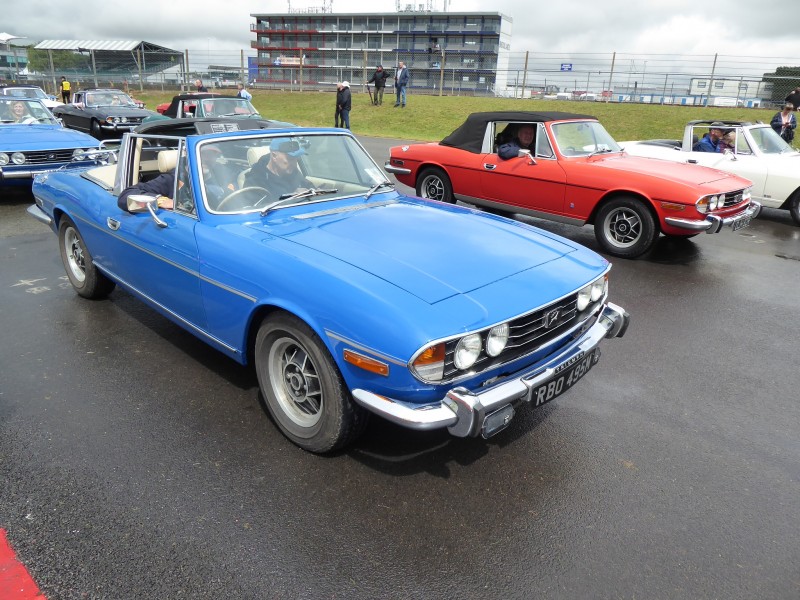
.jpg?width=180&height=120&fit=bounds)
.jpg?width=180&height=120&fit=bounds)
.jpg?width=180&height=120&fit=bounds)
.jpg?width=180&height=120&fit=bounds)
.jpg?width=180&height=120&fit=bounds)
.jpg?width=180&height=120&fit=bounds)
.jpg?width=180&height=120&fit=bounds)
.jpg?width=180&height=120&fit=bounds)
.jpg?width=180&height=120&fit=bounds)
.jpg?width=180&height=120&fit=bounds)
.jpg?width=180&height=120&fit=bounds)
.jpg?width=180&height=120&fit=bounds)
.jpg?width=180&height=120&fit=bounds)
.jpg?width=180&height=120&fit=bounds)
.jpg?width=180&height=120&fit=bounds)
.jpg?width=180&height=120&fit=bounds)
.jpg?width=180&height=120&fit=bounds)
.jpg?width=180&height=120&fit=bounds)
.jpg?width=180&height=120&fit=bounds)
.jpg?width=180&height=120&fit=bounds)
.jpg?width=180&height=120&fit=bounds)
.jpg?width=180&height=120&fit=bounds)
.jpg?width=180&height=120&fit=bounds)
.jpg?width=180&height=120&fit=bounds)
.jpg?width=180&height=120&fit=bounds)
.jpg?width=180&height=120&fit=bounds)
.jpg?width=180&height=120&fit=bounds)
.jpg?width=180&height=120&fit=bounds)
.jpg?width=180&height=120&fit=bounds)
.jpg?width=180&height=120&fit=bounds)
.jpg?width=180&height=120&fit=bounds)
.jpg?width=180&height=120&fit=bounds)
.jpg?width=180&height=120&fit=bounds)
.jpg?width=180&height=120&fit=bounds)
.jpg?width=180&height=120&fit=bounds)
.jpg?width=180&height=120&fit=bounds)
.jpg?width=180&height=120&fit=bounds)
.jpg?width=180&height=120&fit=bounds)
.jpg?width=180&height=120&fit=bounds)
.jpg?width=180&height=120&fit=bounds)
.jpg?width=180&height=120&fit=bounds)
.jpg?width=180&height=120&fit=bounds)
.jpg?width=180&height=120&fit=bounds)
.jpg?width=180&height=120&fit=bounds)
.jpg?width=180&height=120&fit=bounds)
.jpg?width=180&height=120&fit=bounds)
.jpg?width=180&height=120&fit=bounds)
.jpg?width=180&height=120&fit=bounds)
.jpg?width=180&height=120&fit=bounds)
.jpg?width=180&height=120&fit=bounds)
.jpg?width=180&height=120&fit=bounds)
.jpg?width=180&height=120&fit=bounds)
.jpg?width=180&height=120&fit=bounds)
.jpg?width=180&height=120&fit=bounds)
.jpg?width=180&height=120&fit=bounds)
.jpg?width=180&height=120&fit=bounds)
.jpg?width=180&height=120&fit=bounds)
.jpg?width=180&height=120&fit=bounds)
.jpg?width=180&height=120&fit=bounds)
.jpg?width=180&height=120&fit=bounds)
.jpg?width=180&height=120&fit=bounds)
.jpg?width=180&height=120&fit=bounds)
.jpg?width=180&height=120&fit=bounds)
.jpg?width=180&height=120&fit=bounds)
.jpg?width=180&height=120&fit=bounds)
.jpg?width=180&height=120&fit=bounds)
.jpg?width=180&height=120&fit=bounds)
.jpg?width=180&height=120&fit=bounds)
.jpg?width=180&height=120&fit=bounds)
.jpg?width=180&height=120&fit=bounds)
.jpg?width=180&height=120&fit=bounds)
.jpg?width=180&height=120&fit=bounds)
.jpg?width=180&height=120&fit=bounds)
.jpg?width=180&height=120&fit=bounds)
.jpg?width=180&height=120&fit=bounds)
.jpg?width=180&height=120&fit=bounds)
.jpg?width=180&height=120&fit=bounds)
.jpg?width=180&height=120&fit=bounds)
.jpg?width=180&height=120&fit=bounds)
.jpg?width=180&height=120&fit=bounds)
.jpg?width=180&height=120&fit=bounds)
.jpg?width=180&height=120&fit=bounds)
.jpg?width=180&height=120&fit=bounds)
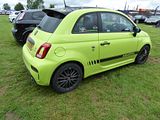
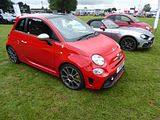
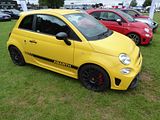
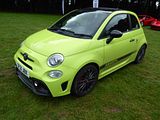
.jpg?width=180&height=120&fit=bounds)
.jpg?width=180&height=120&fit=bounds)
.jpg?width=180&height=120&fit=bounds)
.jpg?width=180&height=120&fit=bounds)
.jpg?width=180&height=120&fit=bounds)
.jpg?width=180&height=120&fit=bounds)
.jpg?width=180&height=120&fit=bounds)
.jpg?width=180&height=120&fit=bounds)
.jpg?width=180&height=120&fit=bounds)
.jpg?width=180&height=120&fit=bounds)
.jpg?width=180&height=120&fit=bounds)
.jpg?width=180&height=120&fit=bounds)
.jpg?width=180&height=120&fit=bounds)
.jpg?width=180&height=120&fit=bounds)
.jpg?width=180&height=120&fit=bounds)
.jpg?width=180&height=120&fit=bounds)
.jpg?width=180&height=120&fit=bounds)
.jpg?width=180&height=120&fit=bounds)
.jpg?width=180&height=120&fit=bounds)
.jpg?width=180&height=120&fit=bounds)
.jpg?width=180&height=120&fit=bounds)
.jpg?width=180&height=120&fit=bounds)
.jpg?width=180&height=120&fit=bounds)
.jpg?width=180&height=120&fit=bounds)
.jpg?width=180&height=120&fit=bounds)
.jpg?width=180&height=120&fit=bounds)
.jpg?width=180&height=120&fit=bounds)
.jpg?width=180&height=120&fit=bounds)
.jpg?width=180&height=120&fit=bounds)
.jpg?width=180&height=120&fit=bounds)
.jpg?width=180&height=120&fit=bounds)
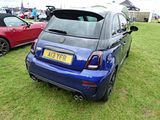
.jpg?width=180&height=120&fit=bounds)
.jpg?width=180&height=120&fit=bounds)
.jpg?width=180&height=120&fit=bounds)
.jpg?width=180&height=120&fit=bounds)
.jpg?width=180&height=120&fit=bounds)
.jpg?width=180&height=120&fit=bounds)
.jpg?width=180&height=120&fit=bounds)
.jpg?width=180&height=120&fit=bounds)
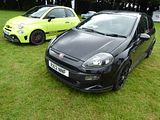
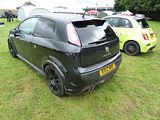
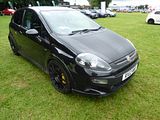
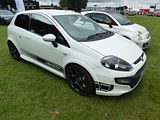
.jpg?width=180&height=120&fit=bounds)
.jpg?width=180&height=120&fit=bounds)
.jpg?width=180&height=120&fit=bounds)
.jpg?width=180&height=120&fit=bounds)
.jpg?width=180&height=120&fit=bounds)
.jpg?width=180&height=120&fit=bounds)
.jpg?width=180&height=120&fit=bounds)
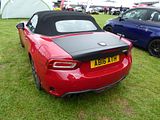
.jpg?width=180&height=120&fit=bounds)
.jpg?width=180&height=120&fit=bounds)
.jpg?width=180&height=120&fit=bounds)
.jpg?width=180&height=120&fit=bounds)
.jpg?width=180&height=120&fit=bounds)
.jpg?width=180&height=120&fit=bounds)
.jpg?width=180&height=120&fit=bounds)
.jpg?width=180&height=120&fit=bounds)
.jpg?width=180&height=120&fit=bounds)
.jpg?width=180&height=120&fit=bounds)
.jpg?width=180&height=120&fit=bounds)
.jpg?width=180&height=120&fit=bounds)
.jpg?width=180&height=120&fit=bounds)
.jpg?width=180&height=120&fit=bounds)
.jpg?width=180&height=120&fit=bounds)
.jpg?width=180&height=120&fit=bounds)
.jpg?width=180&height=120&fit=bounds)
.jpg?width=180&height=120&fit=bounds)
.jpg?width=180&height=120&fit=bounds)
.jpg?width=180&height=120&fit=bounds)
.jpg?width=180&height=120&fit=bounds)
.jpg?width=180&height=120&fit=bounds)
.jpg?width=180&height=120&fit=bounds)
.jpg?width=180&height=120&fit=bounds)
.jpg?width=180&height=120&fit=bounds)
.jpg?width=180&height=120&fit=bounds)
.jpg?width=180&height=120&fit=bounds)
.jpg?width=180&height=120&fit=bounds)
.jpg?width=180&height=120&fit=bounds)
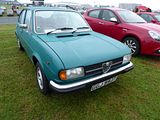
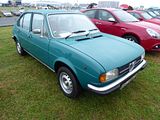
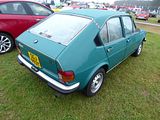
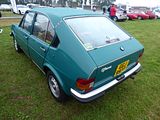
.jpg?width=180&height=120&fit=bounds)
.jpg?width=180&height=120&fit=bounds)
.jpg?width=180&height=120&fit=bounds)
.jpg?width=180&height=120&fit=bounds)
.jpg?width=180&height=120&fit=bounds)
.jpg?width=180&height=120&fit=bounds)
.jpg?width=180&height=120&fit=bounds)
.jpg?width=180&height=120&fit=bounds)
.jpg?width=180&height=120&fit=bounds)
.jpg?width=180&height=120&fit=bounds)
.jpg?width=180&height=120&fit=bounds)
.jpg?width=180&height=120&fit=bounds)
.jpg?width=180&height=120&fit=bounds)
.jpg?width=180&height=120&fit=bounds)
.jpg?width=180&height=120&fit=bounds)
.jpg?width=180&height=120&fit=bounds)
.jpg?width=180&height=120&fit=bounds)
.jpg?width=180&height=120&fit=bounds)
.jpg?width=180&height=120&fit=bounds)
.jpg?width=180&height=120&fit=bounds)
.jpg?width=180&height=120&fit=bounds)
.jpg?width=180&height=120&fit=bounds)
.jpg?width=180&height=120&fit=bounds)
.jpg?width=180&height=120&fit=bounds)
.jpg?width=180&height=120&fit=bounds)
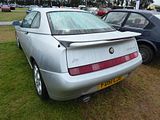
.jpg?width=180&height=120&fit=bounds)
.jpg?width=180&height=120&fit=bounds)
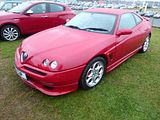
.jpg?width=180&height=120&fit=bounds)
.jpg?width=180&height=120&fit=bounds)
.jpg?width=180&height=120&fit=bounds)
.jpg?width=180&height=120&fit=bounds)
.jpg?width=180&height=120&fit=bounds)
.jpg?width=180&height=120&fit=bounds)
.jpg?width=180&height=120&fit=bounds)
.jpg?width=180&height=120&fit=bounds)
.jpg?width=180&height=120&fit=bounds)
.jpg?width=180&height=120&fit=bounds)
.jpg?width=180&height=120&fit=bounds)
.jpg?width=180&height=120&fit=bounds)
.jpg?width=180&height=120&fit=bounds)
.jpg?width=180&height=120&fit=bounds)
.jpg?width=180&height=120&fit=bounds)
.jpg?width=180&height=120&fit=bounds)
.jpg?width=180&height=120&fit=bounds)
.jpg?width=180&height=120&fit=bounds)
.jpg?width=180&height=120&fit=bounds)
.jpg?width=180&height=120&fit=bounds)
.jpg?width=180&height=120&fit=bounds)
.jpg?width=180&height=120&fit=bounds)
.jpg?width=180&height=120&fit=bounds)
.jpg?width=180&height=120&fit=bounds)
.jpg?width=180&height=120&fit=bounds)
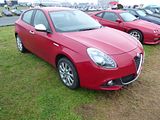
.jpg?width=180&height=120&fit=bounds)
.jpg?width=180&height=120&fit=bounds)
.jpg?width=180&height=120&fit=bounds)
.jpg?width=180&height=120&fit=bounds)
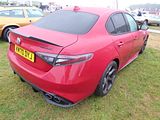
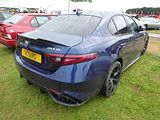
.jpg?width=180&height=120&fit=bounds)
.jpg?width=180&height=120&fit=bounds)
.jpg?width=180&height=120&fit=bounds)
.jpg?width=180&height=120&fit=bounds)
.jpg?width=180&height=120&fit=bounds)
.jpg?width=180&height=120&fit=bounds)
.jpg?width=180&height=120&fit=bounds)
.jpg?width=180&height=120&fit=bounds)
.jpg?width=180&height=120&fit=bounds)
.jpg?width=180&height=120&fit=bounds)
.jpg?width=180&height=120&fit=bounds)
.jpg?width=180&height=120&fit=bounds)
.jpg?width=180&height=120&fit=bounds)
.jpg?width=180&height=120&fit=bounds)
.jpg?width=180&height=120&fit=bounds)
.jpg?width=180&height=120&fit=bounds)
.jpg?width=180&height=120&fit=bounds)
.jpg?width=180&height=120&fit=bounds)
.jpg?width=180&height=120&fit=bounds)
.jpg?width=180&height=120&fit=bounds)
.jpg?width=180&height=120&fit=bounds)
.jpg?width=180&height=120&fit=bounds)
.jpg?width=180&height=120&fit=bounds)
.jpg?width=180&height=120&fit=bounds)
.jpg?width=180&height=120&fit=bounds)
.jpg?width=180&height=120&fit=bounds)
.jpg?width=180&height=120&fit=bounds)
.jpg?width=180&height=120&fit=bounds)
.jpg?width=180&height=120&fit=bounds)
.jpg?width=180&height=120&fit=bounds)
.jpg?width=180&height=120&fit=bounds)
.jpg?width=180&height=120&fit=bounds)
.jpg?width=180&height=120&fit=bounds)
.jpg?width=180&height=120&fit=bounds)
.jpg?width=180&height=120&fit=bounds)
.jpg?width=180&height=120&fit=bounds)
.jpg?width=180&height=120&fit=bounds)
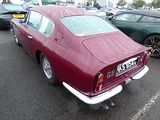
.jpg?width=180&height=120&fit=bounds)
.jpg?width=180&height=120&fit=bounds)
.jpg?width=180&height=120&fit=bounds)
.jpg?width=180&height=120&fit=bounds)
.jpg?width=180&height=120&fit=bounds)
.jpg?width=180&height=120&fit=bounds)
.jpg?width=180&height=120&fit=bounds)
.jpg?width=180&height=120&fit=bounds)
.jpg?width=180&height=120&fit=bounds)
.jpg?width=180&height=120&fit=bounds)
.jpg?width=180&height=120&fit=bounds)
.jpg?width=180&height=120&fit=bounds)
.jpg?width=180&height=120&fit=bounds)
.jpg?width=180&height=120&fit=bounds)
.jpg?width=180&height=120&fit=bounds)
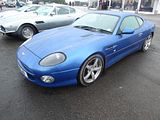
.jpg?width=180&height=120&fit=bounds)
.jpg?width=180&height=120&fit=bounds)
.jpg?width=180&height=120&fit=bounds)
.jpg?width=180&height=120&fit=bounds)
.jpg?width=180&height=120&fit=bounds)
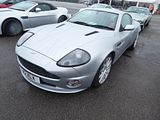
.jpg?width=180&height=120&fit=bounds)
.jpg?width=180&height=120&fit=bounds)
.jpg?width=180&height=120&fit=bounds)
.jpg?width=180&height=120&fit=bounds)
.jpg?width=180&height=120&fit=bounds)
.jpg?width=180&height=120&fit=bounds)
.jpg?width=180&height=120&fit=bounds)
.jpg?width=180&height=120&fit=bounds)
.jpg?width=180&height=120&fit=bounds)
.jpg?width=180&height=120&fit=bounds)
.jpg?width=180&height=120&fit=bounds)
.jpg?width=180&height=120&fit=bounds)
.jpg?width=180&height=120&fit=bounds)
.jpg?width=180&height=120&fit=bounds)
.jpg?width=180&height=120&fit=bounds)
.jpg?width=180&height=120&fit=bounds)
.jpg?width=180&height=120&fit=bounds)
.jpg?width=180&height=120&fit=bounds)
.jpg?width=180&height=120&fit=bounds)
.jpg?width=180&height=120&fit=bounds)
.jpg?width=180&height=120&fit=bounds)
.jpg?width=180&height=120&fit=bounds)
.jpg?width=180&height=120&fit=bounds)
.jpg?width=180&height=120&fit=bounds)
.jpg?width=180&height=120&fit=bounds)
.jpg?width=180&height=120&fit=bounds)
.jpg?width=180&height=120&fit=bounds)
.jpg?width=180&height=120&fit=bounds)
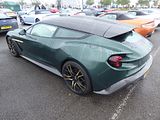
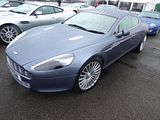
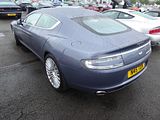
.jpg?width=180&height=120&fit=bounds)
.jpg?width=180&height=120&fit=bounds)
.jpg?width=180&height=120&fit=bounds)
.jpg?width=180&height=120&fit=bounds)
.jpg?width=180&height=120&fit=bounds)
.jpg?width=180&height=120&fit=bounds)
.jpg?width=180&height=120&fit=bounds)
.jpg?width=180&height=120&fit=bounds)
.jpg?width=180&height=120&fit=bounds)
.jpg?width=180&height=120&fit=bounds)
.jpg?width=180&height=120&fit=bounds)
.jpg?width=180&height=120&fit=bounds)
.jpg?width=180&height=120&fit=bounds)
.jpg?width=180&height=120&fit=bounds)
.jpg?width=180&height=120&fit=bounds)
.jpg?width=180&height=120&fit=bounds)
.jpg?width=180&height=120&fit=bounds)
.jpg?width=180&height=120&fit=bounds)
.jpg?width=180&height=120&fit=bounds)
.jpg?width=180&height=120&fit=bounds)
.jpg?width=180&height=120&fit=bounds)
.jpg?width=180&height=120&fit=bounds)
.jpg?width=180&height=120&fit=bounds)
.jpg?width=180&height=120&fit=bounds)
.jpg?width=180&height=120&fit=bounds)
.jpg?width=180&height=120&fit=bounds)
.jpg?width=180&height=120&fit=bounds)
.jpg?width=180&height=120&fit=bounds)
.jpg?width=180&height=120&fit=bounds)
.jpg?width=180&height=120&fit=bounds)
.jpg?width=180&height=120&fit=bounds)
.jpg?width=180&height=120&fit=bounds)
.jpg?width=180&height=120&fit=bounds)
.jpg?width=180&height=120&fit=bounds)
.jpg?width=180&height=120&fit=bounds)
.jpg?width=180&height=120&fit=bounds)
.jpg?width=180&height=120&fit=bounds)
.jpg?width=180&height=120&fit=bounds)
.jpg?width=180&height=120&fit=bounds)
.jpg?width=180&height=120&fit=bounds)
.jpg?width=180&height=120&fit=bounds)
.jpg?width=180&height=120&fit=bounds)
.jpg?width=180&height=120&fit=bounds)
.jpg?width=180&height=120&fit=bounds)
.jpg?width=180&height=120&fit=bounds)
.jpg?width=180&height=120&fit=bounds)
.jpg?width=180&height=120&fit=bounds)
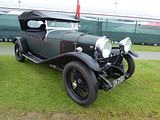
.jpg?width=180&height=120&fit=bounds)
.jpg?width=180&height=120&fit=bounds)
.jpg?width=180&height=120&fit=bounds)
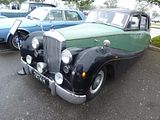
.jpg?width=180&height=120&fit=bounds)
.jpg?width=180&height=120&fit=bounds)
.jpg?width=180&height=120&fit=bounds)
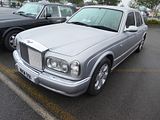
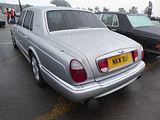
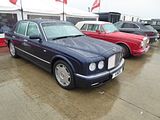
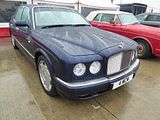
.jpg?width=180&height=120&fit=bounds)
.jpg?width=180&height=120&fit=bounds)
.jpg?width=180&height=120&fit=bounds)
.jpg?width=180&height=120&fit=bounds)
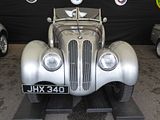
.jpg?width=180&height=120&fit=bounds)
.jpg?width=180&height=120&fit=bounds)
.jpg?width=180&height=120&fit=bounds)
.jpg?width=180&height=120&fit=bounds)
.jpg?width=180&height=120&fit=bounds)
.jpg?width=180&height=120&fit=bounds)
.jpg?width=180&height=120&fit=bounds)
.jpg?width=180&height=120&fit=bounds)
.jpg?width=180&height=120&fit=bounds)
.jpg?width=180&height=120&fit=bounds)
.jpg?width=180&height=120&fit=bounds)
.jpg?width=180&height=120&fit=bounds)
.jpg?width=180&height=120&fit=bounds)
.jpg?width=180&height=120&fit=bounds)
.jpg?width=180&height=120&fit=bounds)
.jpg?width=180&height=120&fit=bounds)
.jpg?width=180&height=120&fit=bounds)
.jpg?width=180&height=120&fit=bounds)
.jpg?width=180&height=120&fit=bounds)
.jpg?width=180&height=120&fit=bounds)
.jpg?width=180&height=120&fit=bounds)
.jpg?width=180&height=120&fit=bounds)
.jpg?width=180&height=120&fit=bounds)
.jpg?width=180&height=120&fit=bounds)
.jpg?width=180&height=120&fit=bounds)
.jpg?width=180&height=120&fit=bounds)
.jpg?width=180&height=120&fit=bounds)
.jpg?width=180&height=120&fit=bounds)
.jpg?width=180&height=120&fit=bounds)
.jpg?width=180&height=120&fit=bounds)
.jpg?width=180&height=120&fit=bounds)
.jpg?width=180&height=120&fit=bounds)
.jpg?width=180&height=120&fit=bounds)
.jpg?width=180&height=120&fit=bounds)
.jpg?width=180&height=120&fit=bounds)
.jpg?width=180&height=120&fit=bounds)
.jpg?width=180&height=120&fit=bounds)
.jpg?width=180&height=120&fit=bounds)
.jpg?width=180&height=120&fit=bounds)
.jpg?width=180&height=120&fit=bounds)
.jpg?width=180&height=120&fit=bounds)
.jpg?width=180&height=120&fit=bounds)
.jpg?width=180&height=120&fit=bounds)
.jpg?width=180&height=120&fit=bounds)
.jpg?width=180&height=120&fit=bounds)
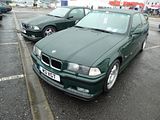
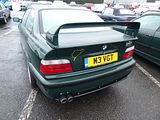
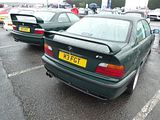
.jpg?width=180&height=120&fit=bounds)
.jpg?width=180&height=120&fit=bounds)
.jpg?width=180&height=120&fit=bounds)
.jpg?width=180&height=120&fit=bounds)
.jpg?width=180&height=120&fit=bounds)
.jpg?width=180&height=120&fit=bounds)
.jpg?width=180&height=120&fit=bounds)
.jpg?width=180&height=120&fit=bounds)
.jpg?width=180&height=120&fit=bounds)
.jpg?width=180&height=120&fit=bounds)
.jpg?width=180&height=120&fit=bounds)
.jpg?width=180&height=120&fit=bounds)
.jpg?width=180&height=120&fit=bounds)
.jpg?width=180&height=120&fit=bounds)
.jpg?width=180&height=120&fit=bounds)
.jpg?width=180&height=120&fit=bounds)
.jpg?width=180&height=120&fit=bounds)
.jpg?width=180&height=120&fit=bounds)
.jpg?width=180&height=120&fit=bounds)
.jpg?width=180&height=120&fit=bounds)
.jpg?width=180&height=120&fit=bounds)
.jpg?width=180&height=120&fit=bounds)
.jpg?width=180&height=120&fit=bounds)
.jpg?width=180&height=120&fit=bounds)
.jpg?width=180&height=120&fit=bounds)
.jpg?width=180&height=120&fit=bounds)
.jpg?width=180&height=120&fit=bounds)
.jpg?width=180&height=120&fit=bounds)
.jpg?width=180&height=120&fit=bounds)
.jpg?width=180&height=120&fit=bounds)
.jpg?width=180&height=120&fit=bounds)
.jpg?width=180&height=120&fit=bounds)
.jpg?width=180&height=120&fit=bounds)
.jpg?width=180&height=120&fit=bounds)
.jpg?width=180&height=120&fit=bounds)
.jpg?width=180&height=120&fit=bounds)
.jpg?width=180&height=120&fit=bounds)
.jpg?width=180&height=120&fit=bounds)
.jpg?width=180&height=120&fit=bounds)
.jpg?width=180&height=120&fit=bounds)
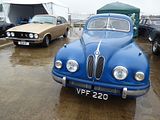
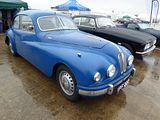
.jpg?width=180&height=120&fit=bounds)
.jpg?width=180&height=120&fit=bounds)
.jpg?width=180&height=120&fit=bounds)
.jpg?width=180&height=120&fit=bounds)
.jpg?width=180&height=120&fit=bounds)
.jpg?width=180&height=120&fit=bounds)
.jpg?width=180&height=120&fit=bounds)
.jpg?width=180&height=120&fit=bounds)
.jpg?width=180&height=120&fit=bounds)
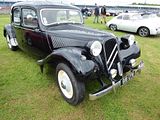
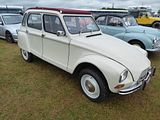
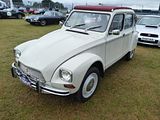
.jpg?width=180&height=120&fit=bounds)
.jpg?width=180&height=120&fit=bounds)
.jpg?width=180&height=120&fit=bounds)
.jpg?width=180&height=120&fit=bounds)
.jpg?width=180&height=120&fit=bounds)
.jpg?width=180&height=120&fit=bounds)
.jpg?width=180&height=120&fit=bounds)
.jpg?width=180&height=120&fit=bounds)
.jpg?width=180&height=120&fit=bounds)
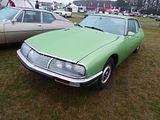
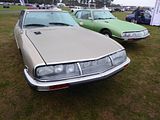
.jpg?width=180&height=120&fit=bounds)
.jpg?width=180&height=120&fit=bounds)
.jpg?width=180&height=120&fit=bounds)
.jpg?width=180&height=120&fit=bounds)
.jpg?width=180&height=120&fit=bounds)
.jpg?width=180&height=120&fit=bounds)
.jpg?width=180&height=120&fit=bounds)
.jpg?width=180&height=120&fit=bounds)
.jpg?width=180&height=120&fit=bounds)
.jpg?width=180&height=120&fit=bounds)
.jpg?width=180&height=120&fit=bounds)
.jpg?width=180&height=120&fit=bounds)
.jpg?width=180&height=120&fit=bounds)
.jpg?width=180&height=120&fit=bounds)
.jpg?width=180&height=120&fit=bounds)
.jpg?width=180&height=120&fit=bounds)
.jpg?width=180&height=120&fit=bounds)
.jpg?width=180&height=120&fit=bounds)
.jpg?width=180&height=120&fit=bounds)
.jpg?width=180&height=120&fit=bounds)
.jpg?width=180&height=120&fit=bounds)
.jpg?width=180&height=120&fit=bounds)
.jpg?width=180&height=120&fit=bounds)
.jpg?width=180&height=120&fit=bounds)
.jpg?width=180&height=120&fit=bounds)
.jpg?width=180&height=120&fit=bounds)
.jpg?width=180&height=120&fit=bounds)
.jpg?width=180&height=120&fit=bounds)
.jpg?width=180&height=120&fit=bounds)
.jpg?width=180&height=120&fit=bounds)
.jpg?width=180&height=120&fit=bounds)
.jpg?width=180&height=120&fit=bounds)
.jpg?width=180&height=120&fit=bounds)
.jpg?width=180&height=120&fit=bounds)
.jpg?width=180&height=120&fit=bounds)
.jpg?width=180&height=120&fit=bounds)
.jpg?width=180&height=120&fit=bounds)
.jpg?width=180&height=120&fit=bounds)
.jpg?width=180&height=120&fit=bounds)
.jpg?width=180&height=120&fit=bounds)
.jpg?width=180&height=120&fit=bounds)
.jpg?width=180&height=120&fit=bounds)
.jpg?width=180&height=120&fit=bounds)
.jpg?width=180&height=120&fit=bounds)
.jpg?width=180&height=120&fit=bounds)
.jpg?width=180&height=120&fit=bounds)
.jpg?width=180&height=120&fit=bounds)
.jpg?width=180&height=120&fit=bounds)
.jpg?width=180&height=120&fit=bounds)
.jpg?width=180&height=120&fit=bounds)
.jpg?width=180&height=120&fit=bounds)
.jpg?width=180&height=120&fit=bounds)
.jpg?width=180&height=120&fit=bounds)
.jpg?width=180&height=120&fit=bounds)
.jpg?width=180&height=120&fit=bounds)
.jpg?width=180&height=120&fit=bounds)
.jpg?width=180&height=120&fit=bounds)
.jpg?width=180&height=120&fit=bounds)
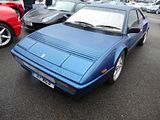
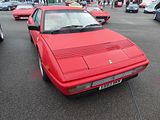
.jpg?width=180&height=120&fit=bounds)
.jpg?width=180&height=120&fit=bounds)
.jpg?width=180&height=120&fit=bounds)
.jpg?width=180&height=120&fit=bounds)
.jpg?width=180&height=120&fit=bounds)
.jpg?width=180&height=120&fit=bounds)
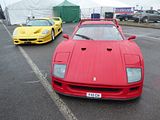
.jpg?width=180&height=120&fit=bounds)
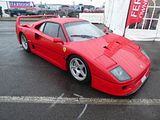
.jpg?width=180&height=120&fit=bounds)
.jpg?width=180&height=120&fit=bounds)
.jpg?width=180&height=120&fit=bounds)
.jpg?width=180&height=120&fit=bounds)
.jpg?width=180&height=120&fit=bounds)
.jpg?width=180&height=160&fit=bounds)
.jpg?width=180&height=120&fit=bounds)
.jpg?width=180&height=120&fit=bounds)
.jpg?width=180&height=120&fit=bounds)
.jpg?width=180&height=120&fit=bounds)
.jpg?width=180&height=120&fit=bounds)
.jpg?width=180&height=120&fit=bounds)
.jpg?width=180&height=120&fit=bounds)
.jpg?width=180&height=120&fit=bounds)
.jpg?width=180&height=120&fit=bounds)
.jpg?width=180&height=120&fit=bounds)
.jpg?width=180&height=120&fit=bounds)
.jpg?width=180&height=120&fit=bounds)
.jpg?width=180&height=120&fit=bounds)
.jpg?width=180&height=120&fit=bounds)
.jpg?width=180&height=120&fit=bounds)
.jpg?width=180&height=120&fit=bounds)
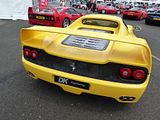
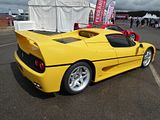
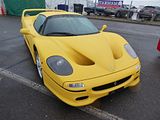
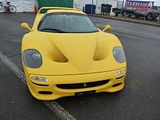
.jpg?width=180&height=120&fit=bounds)
.jpg?width=180&height=120&fit=bounds)
.jpg?width=180&height=120&fit=bounds)
.jpg?width=180&height=120&fit=bounds)
.jpg?width=180&height=120&fit=bounds)
.jpg?width=180&height=120&fit=bounds)
.jpg?width=180&height=120&fit=bounds)
.jpg?width=180&height=120&fit=bounds)
.jpg?width=180&height=120&fit=bounds)
.jpg?width=180&height=120&fit=bounds)
.jpg?width=180&height=120&fit=bounds)
.jpg?width=180&height=120&fit=bounds)
.jpg?width=180&height=120&fit=bounds)
.jpg?width=180&height=120&fit=bounds)
.jpg?width=180&height=120&fit=bounds)
.jpg?width=180&height=120&fit=bounds)
.jpg?width=180&height=120&fit=bounds)
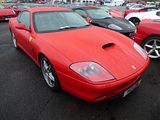
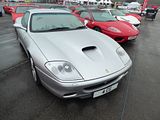
.jpg?width=180&height=120&fit=bounds)
.jpg?width=180&height=120&fit=bounds)
.jpg?width=180&height=120&fit=bounds)
.jpg?width=180&height=120&fit=bounds)
.jpg?width=180&height=120&fit=bounds)
.jpg?width=180&height=120&fit=bounds)
.jpg?width=180&height=120&fit=bounds)
.jpg?width=180&height=120&fit=bounds)
.jpg?width=180&height=120&fit=bounds)
.jpg?width=180&height=120&fit=bounds)
.jpg?width=180&height=160&fit=bounds)
.jpg?width=180&height=120&fit=bounds)
.jpg?width=180&height=120&fit=bounds)
.jpg?width=180&height=120&fit=bounds)
.jpg?width=180&height=120&fit=bounds)
.jpg?width=180&height=120&fit=bounds)
.jpg?width=180&height=120&fit=bounds)
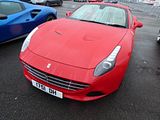
.jpg?width=180&height=120&fit=bounds)
.jpg?width=180&height=120&fit=bounds)
.jpg?width=180&height=120&fit=bounds)
.jpg?width=180&height=120&fit=bounds)
.jpg?width=180&height=120&fit=bounds)
.jpg?width=180&height=120&fit=bounds)
.jpg?width=180&height=120&fit=bounds)
.jpg?width=180&height=120&fit=bounds)
.jpg?width=180&height=120&fit=bounds)
.jpg?width=180&height=120&fit=bounds)
.jpg?width=180&height=120&fit=bounds)
.jpg?width=180&height=120&fit=bounds)
.jpg?width=180&height=120&fit=bounds)
.jpg?width=180&height=120&fit=bounds)
.jpg?width=180&height=120&fit=bounds)
.jpg?width=180&height=120&fit=bounds)
.jpg?width=180&height=120&fit=bounds)
.jpg?width=180&height=120&fit=bounds)
.jpg?width=180&height=120&fit=bounds)
.jpg?width=180&height=120&fit=bounds)
.jpg?width=180&height=120&fit=bounds)
.jpg?width=180&height=120&fit=bounds)
.jpg?width=180&height=120&fit=bounds)
.jpg?width=180&height=120&fit=bounds)
.jpg?width=180&height=120&fit=bounds)
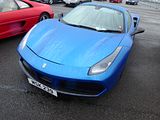
.jpg?width=180&height=120&fit=bounds)
.jpg?width=180&height=120&fit=bounds)
.jpg?width=180&height=120&fit=bounds)
.jpg?width=180&height=120&fit=bounds)
.jpg?width=180&height=120&fit=bounds)
.jpg?width=180&height=120&fit=bounds)
.jpg?width=180&height=120&fit=bounds)
.jpg?width=180&height=120&fit=bounds)
.jpg?width=180&height=120&fit=bounds)
.jpg?width=180&height=120&fit=bounds)
.jpg?width=180&height=120&fit=bounds)
.jpg?width=180&height=120&fit=bounds)
.jpg?width=180&height=120&fit=bounds)
.jpg?width=180&height=120&fit=bounds)
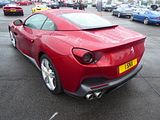
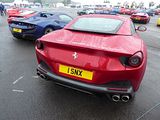
.jpg?width=180&height=120&fit=bounds)
.jpg?width=180&height=120&fit=bounds)
.jpg?width=180&height=120&fit=bounds)
.jpg?width=180&height=120&fit=bounds)
.jpg?width=180&height=120&fit=bounds)
.jpg?width=180&height=120&fit=bounds)
.jpg?width=180&height=120&fit=bounds)
.jpg?width=180&height=120&fit=bounds)
.jpg?width=180&height=120&fit=bounds)
.jpg?width=180&height=120&fit=bounds)
.jpg?width=180&height=120&fit=bounds)
.jpg?width=180&height=120&fit=bounds)
.jpg?width=180&height=120&fit=bounds)
.jpg?width=180&height=120&fit=bounds)
.jpg?width=180&height=120&fit=bounds)
.jpg?width=180&height=120&fit=bounds)
.jpg?width=180&height=120&fit=bounds)
.jpg?width=180&height=120&fit=bounds)
.jpg?width=180&height=120&fit=bounds)
.jpg?width=180&height=120&fit=bounds)
.jpg?width=180&height=120&fit=bounds)
.jpg?width=180&height=120&fit=bounds)
.jpg?width=180&height=120&fit=bounds)
.jpg?width=180&height=120&fit=bounds)
.jpg?width=180&height=120&fit=bounds)
.jpg?width=180&height=120&fit=bounds)
.jpg?width=180&height=120&fit=bounds)
.jpg?width=180&height=120&fit=bounds)
.jpg?width=180&height=120&fit=bounds)
.jpg?width=180&height=120&fit=bounds)
.jpg?width=180&height=120&fit=bounds)
.jpg?width=180&height=120&fit=bounds)
.jpg?width=180&height=120&fit=bounds)
.jpg?width=180&height=120&fit=bounds)
.jpg?width=180&height=120&fit=bounds)
.jpg?width=180&height=120&fit=bounds)
.jpg?width=180&height=120&fit=bounds)
.jpg?width=180&height=120&fit=bounds)
.jpg?width=180&height=120&fit=bounds)
.jpg?width=180&height=120&fit=bounds)
.jpg?width=180&height=120&fit=bounds)
.jpg?width=180&height=120&fit=bounds)
.jpg?width=180&height=120&fit=bounds)
.jpg?width=180&height=120&fit=bounds)
.jpg?width=180&height=120&fit=bounds)
.jpg?width=180&height=120&fit=bounds)
.jpg?width=180&height=120&fit=bounds)
.jpg?width=180&height=120&fit=bounds)
.jpg?width=180&height=120&fit=bounds)
.jpg?width=180&height=120&fit=bounds)
.jpg?width=180&height=120&fit=bounds)
.jpg?width=180&height=120&fit=bounds)
.jpg?width=180&height=120&fit=bounds)
.jpg?width=180&height=120&fit=bounds)
.jpg?width=180&height=120&fit=bounds)
.jpg?width=180&height=120&fit=bounds)
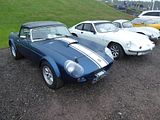
.jpg?width=180&height=120&fit=bounds)
.jpg?width=180&height=120&fit=bounds)
.jpg?width=180&height=120&fit=bounds)
.jpg?width=180&height=120&fit=bounds)
.jpg?width=180&height=120&fit=bounds)
.jpg?width=180&height=120&fit=bounds)
.jpg?width=180&height=120&fit=bounds)
.jpg?width=180&height=120&fit=bounds)
.jpg?width=180&height=120&fit=bounds)
.jpg?width=180&height=120&fit=bounds)
.jpg?width=180&height=120&fit=bounds)
.jpg?width=180&height=120&fit=bounds)
.jpg?width=180&height=120&fit=bounds)
.jpg?width=180&height=120&fit=bounds)
.jpg?width=180&height=120&fit=bounds)
.jpg?width=180&height=120&fit=bounds)
.jpg?width=180&height=120&fit=bounds)
.jpg?width=180&height=120&fit=bounds)
.jpg?width=180&height=120&fit=bounds)
.jpg?width=180&height=120&fit=bounds)
.jpg?width=180&height=120&fit=bounds)
.jpg?width=180&height=160&fit=bounds)
.jpg?width=180&height=160&fit=bounds)
.jpg?width=180&height=120&fit=bounds)
.jpg?width=180&height=120&fit=bounds)
.jpg?width=180&height=120&fit=bounds)
.jpg?width=180&height=120&fit=bounds)
.jpg?width=180&height=120&fit=bounds)
.jpg?width=180&height=120&fit=bounds)
.jpg?width=180&height=120&fit=bounds)
.jpg?width=180&height=120&fit=bounds)
.jpg?width=180&height=120&fit=bounds)
.jpg?width=180&height=120&fit=bounds)
.jpg?width=180&height=120&fit=bounds)
.jpg?width=180&height=120&fit=bounds)
.jpg?width=180&height=120&fit=bounds)
.jpg?width=180&height=120&fit=bounds)
.jpg?width=180&height=120&fit=bounds)
.jpg?width=180&height=120&fit=bounds)
.jpg?width=180&height=120&fit=bounds)
.jpg?width=180&height=120&fit=bounds)
.jpg?width=180&height=120&fit=bounds)
.jpg?width=180&height=120&fit=bounds)
.jpg?width=180&height=120&fit=bounds)
.jpg?width=180&height=120&fit=bounds)
.jpg?width=180&height=120&fit=bounds)
.jpg?width=180&height=120&fit=bounds)
.jpg?width=180&height=120&fit=bounds)
.jpg?width=180&height=120&fit=bounds)
.jpg?width=180&height=120&fit=bounds)
.jpg?width=180&height=120&fit=bounds)
.jpg?width=180&height=120&fit=bounds)
.jpg?width=180&height=120&fit=bounds)
.jpg?width=180&height=120&fit=bounds)
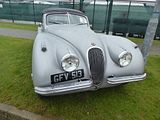
.jpg?width=180&height=120&fit=bounds)
.jpg?width=180&height=120&fit=bounds)
.jpg?width=180&height=120&fit=bounds)
.jpg?width=180&height=120&fit=bounds)
.jpg?width=180&height=120&fit=bounds)
.jpg?width=180&height=120&fit=bounds)
.jpg?width=180&height=120&fit=bounds)
.jpg?width=180&height=120&fit=bounds)
.jpg?width=180&height=120&fit=bounds)
.jpg?width=180&height=120&fit=bounds)
.jpg?width=180&height=120&fit=bounds)
.jpg?width=180&height=120&fit=bounds)
.jpg?width=180&height=120&fit=bounds)
.jpg?width=180&height=120&fit=bounds)
.jpg?width=180&height=120&fit=bounds)
.jpg?width=180&height=120&fit=bounds)
.jpg?width=180&height=120&fit=bounds)
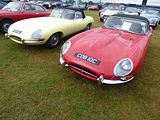
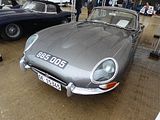
.jpg?width=180&height=120&fit=bounds)
.jpg?width=180&height=120&fit=bounds)
.jpg?width=180&height=120&fit=bounds)
.jpg?width=180&height=120&fit=bounds)
.jpg?width=180&height=120&fit=bounds)
.jpg?width=180&height=120&fit=bounds)
.jpg?width=180&height=120&fit=bounds)
.jpg?width=180&height=120&fit=bounds)
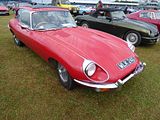
.jpg?width=180&height=120&fit=bounds)
.jpg?width=180&height=120&fit=bounds)
.jpg?width=180&height=120&fit=bounds)
.jpg?width=180&height=120&fit=bounds)
.jpg?width=180&height=120&fit=bounds)
.jpg?width=180&height=120&fit=bounds)
.jpg?width=180&height=120&fit=bounds)
.jpg?width=180&height=120&fit=bounds)
.jpg?width=180&height=120&fit=bounds)
.jpg?width=180&height=120&fit=bounds)
.jpg?width=180&height=120&fit=bounds)
.jpg?width=180&height=120&fit=bounds)
.jpg?width=180&height=120&fit=bounds)
.jpg?width=180&height=120&fit=bounds)
.jpg?width=180&height=120&fit=bounds)
.jpg?width=180&height=120&fit=bounds)
.jpg?width=180&height=120&fit=bounds)
.jpg?width=180&height=120&fit=bounds)
.jpg?width=180&height=120&fit=bounds)
.jpg?width=180&height=120&fit=bounds)
.jpg?width=180&height=120&fit=bounds)
.jpg?width=180&height=120&fit=bounds)
.jpg?width=180&height=120&fit=bounds)
.jpg?width=180&height=120&fit=bounds)
.jpg?width=180&height=120&fit=bounds)
.jpg?width=180&height=120&fit=bounds)
.jpg?width=180&height=120&fit=bounds)
.jpg?width=180&height=120&fit=bounds)
.jpg?width=180&height=120&fit=bounds)
.jpg?width=180&height=120&fit=bounds)
.jpg?width=180&height=120&fit=bounds)
.jpg?width=180&height=120&fit=bounds)
.jpg?width=180&height=120&fit=bounds)
.jpg?width=180&height=120&fit=bounds)
.jpg?width=180&height=120&fit=bounds)
.jpg?width=180&height=120&fit=bounds)
.jpg?width=180&height=120&fit=bounds)
.jpg?width=180&height=120&fit=bounds)
.jpg?width=180&height=120&fit=bounds)
.jpg?width=180&height=120&fit=bounds)
.jpg?width=180&height=120&fit=bounds)
.jpg?width=180&height=120&fit=bounds)
.jpg?width=180&height=120&fit=bounds)
.jpg?width=180&height=120&fit=bounds)
.jpg?width=180&height=120&fit=bounds)
.jpg?width=180&height=120&fit=bounds)
.jpg?width=180&height=120&fit=bounds)
.jpg?width=180&height=120&fit=bounds)
.jpg?width=180&height=120&fit=bounds)
.jpg?width=180&height=120&fit=bounds)
.jpg?width=180&height=120&fit=bounds)
.jpg?width=180&height=120&fit=bounds)
.jpg?width=180&height=120&fit=bounds)
.jpg?width=180&height=120&fit=bounds)
.jpg?width=180&height=120&fit=bounds)
.jpg?width=180&height=120&fit=bounds)
.jpg?width=180&height=120&fit=bounds)
.jpg?width=180&height=120&fit=bounds)
.jpg?width=180&height=120&fit=bounds)
.jpg?width=180&height=120&fit=bounds)
.jpg?width=180&height=120&fit=bounds)
.jpg?width=180&height=120&fit=bounds)
.jpg?width=180&height=120&fit=bounds)
.jpg?width=180&height=120&fit=bounds)
.jpg?width=180&height=120&fit=bounds)
.jpg?width=180&height=120&fit=bounds)
.jpg?width=180&height=120&fit=bounds)
.jpg?width=180&height=120&fit=bounds)
.jpg?width=180&height=120&fit=bounds)
.jpg?width=180&height=120&fit=bounds)
.jpg?width=180&height=120&fit=bounds)
.jpg?width=180&height=120&fit=bounds)
.jpg?width=180&height=120&fit=bounds)
.jpg?width=180&height=120&fit=bounds)
.jpg?width=180&height=120&fit=bounds)
.jpg?width=180&height=120&fit=bounds)
.jpg?width=180&height=120&fit=bounds)
.jpg?width=180&height=120&fit=bounds)
.jpg?width=180&height=120&fit=bounds)
.jpg?width=180&height=120&fit=bounds)
.jpg?width=180&height=120&fit=bounds)
.jpg?width=180&height=120&fit=bounds)
.jpg?width=180&height=120&fit=bounds)
.jpg?width=180&height=120&fit=bounds)
.jpg?width=180&height=120&fit=bounds)
.jpg?width=180&height=120&fit=bounds)
.jpg?width=180&height=120&fit=bounds)
.jpg?width=180&height=120&fit=bounds)
.jpg?width=180&height=120&fit=bounds)
.jpg?width=180&height=120&fit=bounds)
.jpg?width=180&height=120&fit=bounds)
.jpg?width=180&height=120&fit=bounds)
.jpg?width=180&height=160&fit=bounds)
.jpg?width=180&height=120&fit=bounds)
.jpg?width=180&height=120&fit=bounds)
.jpg?width=180&height=120&fit=bounds)
.jpg?width=180&height=120&fit=bounds)
.jpg?width=180&height=120&fit=bounds)
.jpg?width=180&height=120&fit=bounds)
.jpg?width=180&height=120&fit=bounds)
.jpg?width=180&height=120&fit=bounds)
.jpg?width=180&height=120&fit=bounds)
.jpg?width=180&height=120&fit=bounds)
.jpg?width=180&height=120&fit=bounds)
.jpg?width=180&height=120&fit=bounds)
.jpg?width=180&height=120&fit=bounds)
.jpg?width=180&height=120&fit=bounds)
.jpg?width=180&height=120&fit=bounds)
.jpg?width=180&height=120&fit=bounds)
.jpg?width=180&height=120&fit=bounds)
.jpg?width=180&height=120&fit=bounds)
.jpg?width=180&height=120&fit=bounds)
.jpg?width=180&height=120&fit=bounds)
.jpg?width=180&height=120&fit=bounds)
.jpg?width=180&height=120&fit=bounds)
.jpg?width=180&height=120&fit=bounds)
.jpg?width=180&height=120&fit=bounds)
.jpg?width=180&height=120&fit=bounds)
.jpg?width=180&height=120&fit=bounds)
.jpg?width=180&height=120&fit=bounds)
.jpg?width=180&height=120&fit=bounds)
.jpg?width=180&height=120&fit=bounds)
.jpg?width=180&height=120&fit=bounds)
.jpg?width=180&height=120&fit=bounds)
.jpg?width=180&height=120&fit=bounds)
.jpg?width=180&height=120&fit=bounds)
.jpg?width=180&height=120&fit=bounds)
.jpg?width=180&height=120&fit=bounds)
.jpg?width=180&height=120&fit=bounds)
.jpg?width=180&height=120&fit=bounds)
.jpg?width=180&height=120&fit=bounds)
.jpg?width=180&height=120&fit=bounds)
.jpg?width=180&height=120&fit=bounds)
.jpg?width=180&height=120&fit=bounds)
.jpg?width=180&height=120&fit=bounds)
.jpg?width=180&height=120&fit=bounds)
.jpg?width=180&height=120&fit=bounds)
.jpg?width=180&height=120&fit=bounds)
.jpg?width=180&height=120&fit=bounds)
.jpg?width=180&height=120&fit=bounds)
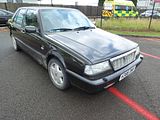
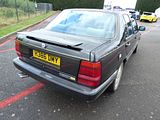
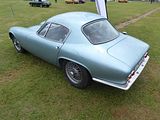
.jpg?width=180&height=120&fit=bounds)
.jpg?width=180&height=120&fit=bounds)
.jpg?width=180&height=120&fit=bounds)
.jpg?width=180&height=120&fit=bounds)
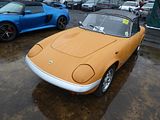
.jpg?width=180&height=120&fit=bounds)
.jpg?width=180&height=120&fit=bounds)
.jpg?width=180&height=120&fit=bounds)
.jpg?width=180&height=120&fit=bounds)
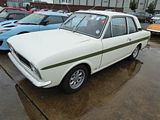
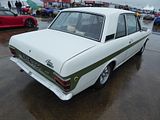
.jpg?width=180&height=120&fit=bounds)
.jpg?width=180&height=120&fit=bounds)
.jpg?width=180&height=120&fit=bounds)
.jpg?width=180&height=120&fit=bounds)
.jpg?width=180&height=120&fit=bounds)
.jpg?width=180&height=120&fit=bounds)
.jpg?width=180&height=120&fit=bounds)
.jpg?width=180&height=120&fit=bounds)
.jpg?width=180&height=120&fit=bounds)
.jpg?width=180&height=120&fit=bounds)
.jpg?width=180&height=120&fit=bounds)
.jpg?width=180&height=120&fit=bounds)
.jpg?width=180&height=120&fit=bounds)
.jpg?width=180&height=120&fit=bounds)
.jpg?width=180&height=120&fit=bounds)
.jpg?width=180&height=120&fit=bounds)
.jpg?width=180&height=120&fit=bounds)
.jpg?width=180&height=120&fit=bounds)
.jpg?width=180&height=120&fit=bounds)
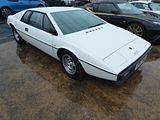
.jpg?width=180&height=120&fit=bounds)
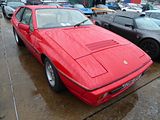
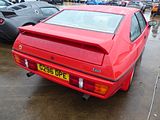
.jpg?width=180&height=120&fit=bounds)
.jpg?width=180&height=120&fit=bounds)
.jpg?width=180&height=120&fit=bounds)
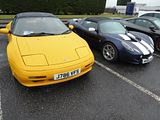
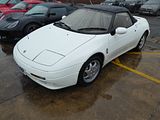
.jpg?width=180&height=120&fit=bounds)
.jpg?width=180&height=120&fit=bounds)
.jpg?width=180&height=120&fit=bounds)
.jpg?width=180&height=120&fit=bounds)
.jpg?width=180&height=120&fit=bounds)
.jpg?width=180&height=120&fit=bounds)
.jpg?width=180&height=120&fit=bounds)
.jpg?width=180&height=120&fit=bounds)
.jpg?width=180&height=120&fit=bounds)
.jpg?width=180&height=120&fit=bounds)
.jpg?width=180&height=120&fit=bounds)
.jpg?width=180&height=120&fit=bounds)
.jpg?width=180&height=120&fit=bounds)
.jpg?width=180&height=120&fit=bounds)
.jpg?width=180&height=120&fit=bounds)
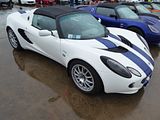
.jpg?width=180&height=120&fit=bounds)
.jpg?width=180&height=120&fit=bounds)
.jpg?width=180&height=120&fit=bounds)
.jpg?width=180&height=120&fit=bounds)
.jpg?width=180&height=120&fit=bounds)
.jpg?width=180&height=120&fit=bounds)
.jpg?width=180&height=120&fit=bounds)
.jpg?width=180&height=120&fit=bounds)
.jpg?width=180&height=120&fit=bounds)
.jpg?width=180&height=120&fit=bounds)
.jpg?width=180&height=120&fit=bounds)
.jpg?width=180&height=120&fit=bounds)
.jpg?width=180&height=120&fit=bounds)
.jpg?width=180&height=120&fit=bounds)
.jpg?width=180&height=120&fit=bounds)
.jpg?width=180&height=120&fit=bounds)
.jpg?width=180&height=120&fit=bounds)
.jpg?width=180&height=120&fit=bounds)
.jpg?width=180&height=120&fit=bounds)
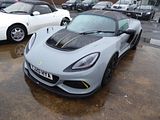
.jpg?width=180&height=120&fit=bounds)
.jpg?width=180&height=120&fit=bounds)
.jpg?width=180&height=120&fit=bounds)
.jpg?width=180&height=120&fit=bounds)
.jpg?width=180&height=120&fit=bounds)
.jpg?width=180&height=120&fit=bounds)
.jpg?width=180&height=120&fit=bounds)
.jpg?width=180&height=120&fit=bounds)
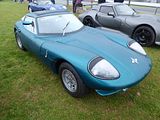
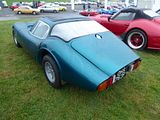
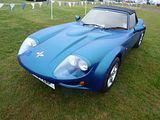
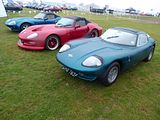
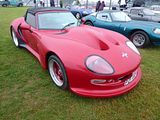
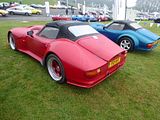
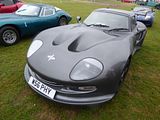
.jpg?width=180&height=120&fit=bounds)
.jpg?width=180&height=120&fit=bounds)
.jpg?width=180&height=120&fit=bounds)
.jpg?width=180&height=120&fit=bounds)
.jpg?width=180&height=120&fit=bounds)
.jpg?width=180&height=120&fit=bounds)
.jpg?width=180&height=120&fit=bounds)
.jpg?width=180&height=120&fit=bounds)
.jpg?width=180&height=120&fit=bounds)
.jpg?width=180&height=120&fit=bounds)
.jpg?width=180&height=120&fit=bounds)
.jpg?width=180&height=120&fit=bounds)
.jpg?width=180&height=120&fit=bounds)
.jpg?width=180&height=120&fit=bounds)
.jpg?width=180&height=120&fit=bounds)
.jpg?width=180&height=120&fit=bounds)
.jpg?width=180&height=120&fit=bounds)
.jpg?width=180&height=120&fit=bounds)
.jpg?width=180&height=120&fit=bounds)
.jpg?width=180&height=120&fit=bounds)
.jpg?width=180&height=120&fit=bounds)
.jpg?width=180&height=120&fit=bounds)
.jpg?width=180&height=120&fit=bounds)
.jpg?width=180&height=120&fit=bounds)
.jpg?width=180&height=120&fit=bounds)
.jpg?width=180&height=120&fit=bounds)
.jpg?width=180&height=120&fit=bounds)
.jpg?width=180&height=120&fit=bounds)
.jpg?width=180&height=120&fit=bounds)
.jpg?width=180&height=120&fit=bounds)
.jpg?width=180&height=120&fit=bounds)
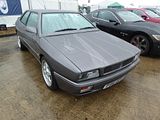
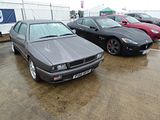
.jpg?width=180&height=120&fit=bounds)
.jpg?width=180&height=120&fit=bounds)
.jpg?width=180&height=120&fit=bounds)
.jpg?width=180&height=120&fit=bounds)
.jpg?width=180&height=120&fit=bounds)
.jpg?width=180&height=120&fit=bounds)
.jpg?width=180&height=120&fit=bounds)
.jpg?width=180&height=120&fit=bounds)
.jpg?width=180&height=120&fit=bounds)
.jpg?width=180&height=120&fit=bounds)
.jpg?width=180&height=120&fit=bounds)
.jpg?width=180&height=120&fit=bounds)
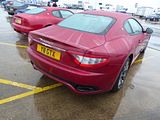
.jpg?width=180&height=120&fit=bounds)
.jpg?width=180&height=120&fit=bounds)
.jpg?width=180&height=120&fit=bounds)
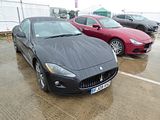
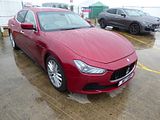
.jpg?width=180&height=120&fit=bounds)
.jpg?width=180&height=120&fit=bounds)
.jpg?width=180&height=120&fit=bounds)
.jpg?width=180&height=120&fit=bounds)
.jpg?width=180&height=120&fit=bounds)
.jpg?width=180&height=120&fit=bounds)
.jpg?width=180&height=120&fit=bounds)
.jpg?width=180&height=120&fit=bounds)
.jpg?width=180&height=120&fit=bounds)
.jpg?width=180&height=120&fit=bounds)
.jpg?width=180&height=120&fit=bounds)
.jpg?width=180&height=120&fit=bounds)
.jpg?width=180&height=120&fit=bounds)
.jpg?width=180&height=120&fit=bounds)
.jpg?width=180&height=120&fit=bounds)
.jpg?width=180&height=120&fit=bounds)
.jpg?width=180&height=120&fit=bounds)
.jpg?width=180&height=120&fit=bounds)
.jpg?width=180&height=120&fit=bounds)
.jpg?width=180&height=120&fit=bounds)
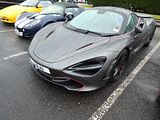
.jpg?width=180&height=120&fit=bounds)
.jpg?width=180&height=120&fit=bounds)
.jpg?width=180&height=120&fit=bounds)
.jpg?width=180&height=120&fit=bounds)
.jpg?width=180&height=120&fit=bounds)
.jpg?width=180&height=120&fit=bounds)
.jpg?width=180&height=120&fit=bounds)
.jpg?width=180&height=120&fit=bounds)
.jpg?width=180&height=120&fit=bounds)
.jpg?width=180&height=120&fit=bounds)
.jpg?width=180&height=120&fit=bounds)
.jpg?width=180&height=120&fit=bounds)
.jpg?width=180&height=120&fit=bounds)
.jpg?width=180&height=120&fit=bounds)
.jpg?width=180&height=120&fit=bounds)
.jpg?width=180&height=120&fit=bounds)
.jpg?width=180&height=120&fit=bounds)
.jpg?width=180&height=120&fit=bounds)
.jpg?width=180&height=120&fit=bounds)
.jpg?width=180&height=120&fit=bounds)
.jpg?width=180&height=120&fit=bounds)
.jpg?width=180&height=120&fit=bounds)
.jpg?width=180&height=120&fit=bounds)
.jpg?width=180&height=120&fit=bounds)
.jpg?width=180&height=120&fit=bounds)
.jpg?width=180&height=120&fit=bounds)
.jpg?width=180&height=120&fit=bounds)
.jpg?width=180&height=120&fit=bounds)
.jpg?width=180&height=120&fit=bounds)
.jpg?width=180&height=120&fit=bounds)
.jpg?width=180&height=120&fit=bounds)
.jpg?width=180&height=120&fit=bounds)
.jpg?width=180&height=120&fit=bounds)
.jpg?width=180&height=120&fit=bounds)
.jpg?width=180&height=120&fit=bounds)
.jpg?width=180&height=120&fit=bounds)
.jpg?width=180&height=120&fit=bounds)
.jpg?width=180&height=120&fit=bounds)
.jpg?width=180&height=120&fit=bounds)
.jpg?width=180&height=120&fit=bounds)
.jpg?width=180&height=120&fit=bounds)
.jpg?width=180&height=120&fit=bounds)
.jpg?width=180&height=120&fit=bounds)
.jpg?width=180&height=120&fit=bounds)
.jpg?width=180&height=120&fit=bounds)
.jpg?width=180&height=120&fit=bounds)
.jpg?width=180&height=120&fit=bounds)
.jpg?width=180&height=120&fit=bounds)
.jpg?width=180&height=120&fit=bounds)
.jpg?width=180&height=120&fit=bounds)
.jpg?width=180&height=120&fit=bounds)
.jpg?width=180&height=120&fit=bounds)
.jpg?width=180&height=120&fit=bounds)
.jpg?width=180&height=120&fit=bounds)
.jpg?width=180&height=120&fit=bounds)
.jpg?width=180&height=120&fit=bounds)
.jpg?width=180&height=120&fit=bounds)
.jpg?width=180&height=120&fit=bounds)
.jpg?width=180&height=120&fit=bounds)
.jpg?width=180&height=120&fit=bounds)
.jpg?width=180&height=120&fit=bounds)
.jpg?width=180&height=120&fit=bounds)
.jpg?width=180&height=120&fit=bounds)
.jpg?width=180&height=120&fit=bounds)
.jpg?width=180&height=120&fit=bounds)
.jpg?width=180&height=120&fit=bounds)
.jpg?width=180&height=120&fit=bounds)
.jpg?width=180&height=120&fit=bounds)
.jpg?width=180&height=120&fit=bounds)
.jpg?width=180&height=120&fit=bounds)
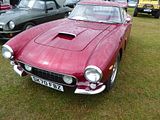
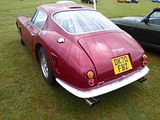
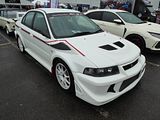
.jpg?width=180&height=120&fit=bounds)
.jpg?width=180&height=120&fit=bounds)
.jpg?width=180&height=120&fit=bounds)
.jpg?width=180&height=120&fit=bounds)
.jpg?width=180&height=120&fit=bounds)
.jpg?width=180&height=120&fit=bounds)
.jpg?width=180&height=120&fit=bounds)
.jpg?width=180&height=120&fit=bounds)
.jpg?width=180&height=120&fit=bounds)
.jpg?width=180&height=120&fit=bounds)
.jpg?width=180&height=120&fit=bounds)
.jpg?width=180&height=120&fit=bounds)
.jpg?width=180&height=120&fit=bounds)
.jpg?width=180&height=120&fit=bounds)
.jpg?width=180&height=120&fit=bounds)
.jpg?width=180&height=120&fit=bounds)
.jpg?width=180&height=120&fit=bounds)
.jpg?width=180&height=120&fit=bounds)
.jpg?width=180&height=120&fit=bounds)
.jpg?width=180&height=120&fit=bounds)
.jpg?width=180&height=120&fit=bounds)
.jpg?width=180&height=120&fit=bounds)
.jpg?width=180&height=120&fit=bounds)
.jpg?width=180&height=120&fit=bounds)
.jpg?width=180&height=120&fit=bounds)
.jpg?width=180&height=120&fit=bounds)
.jpg?width=180&height=120&fit=bounds)
.jpg?width=180&height=120&fit=bounds)
.jpg?width=180&height=120&fit=bounds)
.jpg?width=180&height=120&fit=bounds)
.jpg?width=180&height=120&fit=bounds)
.jpg?width=180&height=120&fit=bounds)
.jpg?width=180&height=120&fit=bounds)
.jpg?width=180&height=120&fit=bounds)
.jpg?width=180&height=120&fit=bounds)
.jpg?width=180&height=120&fit=bounds)
.jpg?width=180&height=120&fit=bounds)
.jpg?width=180&height=120&fit=bounds)
.jpg?width=180&height=120&fit=bounds)
.jpg?width=180&height=120&fit=bounds)
.jpg?width=180&height=120&fit=bounds)
.jpg?width=180&height=120&fit=bounds)
.jpg?width=180&height=120&fit=bounds)
.jpg?width=180&height=120&fit=bounds)
.jpg?width=180&height=120&fit=bounds)
.jpg?width=180&height=120&fit=bounds)
.jpg?width=180&height=120&fit=bounds)
.jpg?width=180&height=120&fit=bounds)
.jpg?width=180&height=120&fit=bounds)
.jpg?width=180&height=120&fit=bounds)
.jpg?width=180&height=120&fit=bounds)
.jpg?width=180&height=120&fit=bounds)
.jpg?width=180&height=120&fit=bounds)
.jpg?width=180&height=120&fit=bounds)
.jpg?width=180&height=120&fit=bounds)
.jpg?width=180&height=120&fit=bounds)
.jpg?width=180&height=120&fit=bounds)
.jpg?width=180&height=120&fit=bounds)
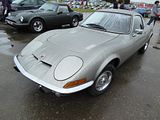
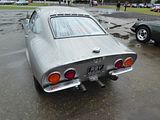
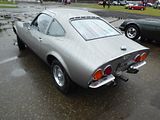
.jpg?width=180&height=120&fit=bounds)
.jpg?width=180&height=120&fit=bounds)
.jpg?width=180&height=120&fit=bounds)
.jpg?width=180&height=120&fit=bounds)
.jpg?width=180&height=120&fit=bounds)
.jpg?width=180&height=120&fit=bounds)
.jpg?width=180&height=120&fit=bounds)
.jpg?width=180&height=120&fit=bounds)
.jpg?width=180&height=120&fit=bounds)
.jpg?width=180&height=120&fit=bounds)
.jpg?width=180&height=120&fit=bounds)
.jpg?width=180&height=120&fit=bounds)
.jpg?width=180&height=120&fit=bounds)
.jpg?width=180&height=120&fit=bounds)
.jpg?width=180&height=120&fit=bounds)
.jpg?width=180&height=120&fit=bounds)
.jpg?width=180&height=120&fit=bounds)
.jpg?width=180&height=120&fit=bounds)
.jpg?width=180&height=120&fit=bounds)
.jpg?width=180&height=120&fit=bounds)
.jpg?width=180&height=120&fit=bounds)
.jpg?width=180&height=120&fit=bounds)
.jpg?width=180&height=120&fit=bounds)
.jpg?width=180&height=120&fit=bounds)
.jpg?width=180&height=120&fit=bounds)
.jpg?width=180&height=120&fit=bounds)
.jpg?width=180&height=120&fit=bounds)
.jpg?width=180&height=120&fit=bounds)
.jpg?width=180&height=120&fit=bounds)
.jpg?width=180&height=120&fit=bounds)
.jpg?width=180&height=120&fit=bounds)
.jpg?width=180&height=120&fit=bounds)
.jpg?width=180&height=120&fit=bounds)
.jpg?width=180&height=120&fit=bounds)
.jpg?width=180&height=120&fit=bounds)
.jpg?width=180&height=120&fit=bounds)
.jpg?width=180&height=120&fit=bounds)
.jpg?width=180&height=120&fit=bounds)
.jpg?width=180&height=120&fit=bounds)
.jpg?width=180&height=120&fit=bounds)
.jpg?width=180&height=120&fit=bounds)
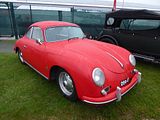
.jpg?width=180&height=120&fit=bounds)
.jpg?width=180&height=120&fit=bounds)
.jpg?width=180&height=120&fit=bounds)
.jpg?width=180&height=120&fit=bounds)
.jpg?width=180&height=120&fit=bounds)
.jpg?width=180&height=120&fit=bounds)
.jpg?width=180&height=120&fit=bounds)
.jpg?width=180&height=120&fit=bounds)
.jpg?width=180&height=120&fit=bounds)
.jpg?width=180&height=120&fit=bounds)
.jpg?width=180&height=120&fit=bounds)
.jpg?width=180&height=120&fit=bounds)
.jpg?width=180&height=120&fit=bounds)
.jpg?width=180&height=120&fit=bounds)
.jpg?width=180&height=120&fit=bounds)
.jpg?width=180&height=120&fit=bounds)
.jpg?width=180&height=120&fit=bounds)
.jpg?width=180&height=120&fit=bounds)
.jpg?width=180&height=120&fit=bounds)
.jpg?width=180&height=120&fit=bounds)
.jpg?width=180&height=120&fit=bounds)
.jpg?width=180&height=120&fit=bounds)
.jpg?width=180&height=120&fit=bounds)
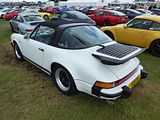
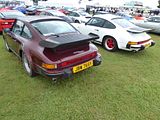
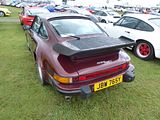
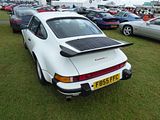
.jpg?width=180&height=120&fit=bounds)
.jpg?width=180&height=120&fit=bounds)
.jpg?width=180&height=120&fit=bounds)
.jpg?width=180&height=120&fit=bounds)
.jpg?width=180&height=120&fit=bounds)
.jpg?width=180&height=120&fit=bounds)
.jpg?width=180&height=120&fit=bounds)
.jpg?width=180&height=120&fit=bounds)
.jpg?width=180&height=120&fit=bounds)
.jpg?width=180&height=120&fit=bounds)
.jpg?width=180&height=120&fit=bounds)
.jpg?width=180&height=120&fit=bounds)
.jpg?width=180&height=120&fit=bounds)
.jpg?width=180&height=120&fit=bounds)
.jpg?width=180&height=120&fit=bounds)
.jpg?width=180&height=120&fit=bounds)
.jpg?width=180&height=120&fit=bounds)
.jpg?width=180&height=120&fit=bounds)
.jpg?width=180&height=120&fit=bounds)
.jpg?width=180&height=120&fit=bounds)
.jpg?width=180&height=120&fit=bounds)
.jpg?width=180&height=120&fit=bounds)
.jpg?width=180&height=120&fit=bounds)
.jpg?width=180&height=120&fit=bounds)
.jpg?width=180&height=120&fit=bounds)
.jpg?width=180&height=120&fit=bounds)
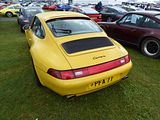
.jpg?width=180&height=120&fit=bounds)
.jpg?width=180&height=120&fit=bounds)
.jpg?width=180&height=120&fit=bounds)
.jpg?width=180&height=120&fit=bounds)
.jpg?width=180&height=120&fit=bounds)
.jpg?width=180&height=120&fit=bounds)
.jpg?width=180&height=120&fit=bounds)
.jpg?width=180&height=120&fit=bounds)
.jpg?width=180&height=120&fit=bounds)
.jpg?width=180&height=120&fit=bounds)
.jpg?width=180&height=120&fit=bounds)
.jpg?width=180&height=120&fit=bounds)
.jpg?width=180&height=120&fit=bounds)
.jpg?width=180&height=120&fit=bounds)
.jpg?width=180&height=120&fit=bounds)
.jpg?width=180&height=120&fit=bounds)
.jpg?width=180&height=120&fit=bounds)
.jpg?width=180&height=120&fit=bounds)
.jpg?width=180&height=120&fit=bounds)
.jpg?width=180&height=120&fit=bounds)
.jpg?width=180&height=120&fit=bounds)
.jpg?width=180&height=120&fit=bounds)
.jpg?width=180&height=120&fit=bounds)
.jpg?width=180&height=120&fit=bounds)
.jpg?width=180&height=120&fit=bounds)
.jpg?width=180&height=120&fit=bounds)
.jpg?width=180&height=120&fit=bounds)
.jpg?width=180&height=120&fit=bounds)
.jpg?width=180&height=120&fit=bounds)
.jpg?width=180&height=120&fit=bounds)
.jpg?width=180&height=120&fit=bounds)
.jpg?width=180&height=120&fit=bounds)
.jpg?width=180&height=120&fit=bounds)
.jpg?width=180&height=120&fit=bounds)
.jpg?width=180&height=120&fit=bounds)
.jpg?width=180&height=120&fit=bounds)
.jpg?width=180&height=120&fit=bounds)
.jpg?width=180&height=120&fit=bounds)
.jpg?width=180&height=120&fit=bounds)
.jpg?width=180&height=120&fit=bounds)
.jpg?width=180&height=120&fit=bounds)
.jpg?width=180&height=120&fit=bounds)
.jpg?width=180&height=120&fit=bounds)
.jpg?width=180&height=120&fit=bounds)
.jpg?width=180&height=120&fit=bounds)
.jpg?width=180&height=120&fit=bounds)
.jpg?width=180&height=120&fit=bounds)
.jpg?width=180&height=120&fit=bounds)
.jpg?width=180&height=120&fit=bounds)
.jpg?width=180&height=120&fit=bounds)
.jpg?width=180&height=120&fit=bounds)
.jpg?width=180&height=120&fit=bounds)
.jpg?width=180&height=120&fit=bounds)
.jpg?width=180&height=120&fit=bounds)
.jpg?width=180&height=120&fit=bounds)
.jpg?width=180&height=120&fit=bounds)
.jpg?width=180&height=120&fit=bounds)
.jpg?width=180&height=120&fit=bounds)
.jpg?width=180&height=120&fit=bounds)
.jpg?width=180&height=120&fit=bounds)
.jpg?width=180&height=120&fit=bounds)
.jpg?width=180&height=120&fit=bounds)
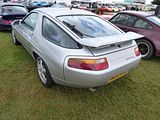
.jpg?width=180&height=120&fit=bounds)
.jpg?width=180&height=120&fit=bounds)
.jpg?width=180&height=120&fit=bounds)
.jpg?width=180&height=120&fit=bounds)
.jpg?width=180&height=120&fit=bounds)
.jpg?width=180&height=120&fit=bounds)
.jpg?width=180&height=120&fit=bounds)
.jpg?width=180&height=120&fit=bounds)
.jpg?width=180&height=120&fit=bounds)
.jpg?width=180&height=120&fit=bounds)
.jpg?width=180&height=120&fit=bounds)
.jpg?width=180&height=120&fit=bounds)
.jpg?width=180&height=120&fit=bounds)
.jpg?width=180&height=120&fit=bounds)
.jpg?width=180&height=120&fit=bounds)
.jpg?width=180&height=120&fit=bounds)
.jpg?width=180&height=120&fit=bounds)
.jpg?width=180&height=120&fit=bounds)
.jpg?width=180&height=120&fit=bounds)
.jpg?width=180&height=120&fit=bounds)
.jpg?width=180&height=120&fit=bounds)
.jpg?width=180&height=120&fit=bounds)
.jpg?width=180&height=120&fit=bounds)
.jpg?width=180&height=120&fit=bounds)
.jpg?width=180&height=120&fit=bounds)
.jpg?width=180&height=120&fit=bounds)
.jpg?width=180&height=120&fit=bounds)
.jpg?width=180&height=120&fit=bounds)
.jpg?width=180&height=120&fit=bounds)
.jpg?width=180&height=120&fit=bounds)
.jpg?width=180&height=120&fit=bounds)
.jpg?width=180&height=120&fit=bounds)
.jpg?width=180&height=120&fit=bounds)
.jpg?width=180&height=120&fit=bounds)
.jpg?width=180&height=120&fit=bounds)
.jpg?width=180&height=120&fit=bounds)
.jpg?width=180&height=120&fit=bounds)
.jpg?width=180&height=120&fit=bounds)
.jpg?width=180&height=120&fit=bounds)
.jpg?width=180&height=120&fit=bounds)
.jpg?width=180&height=120&fit=bounds)
.jpg?width=180&height=120&fit=bounds)
.jpg?width=180&height=120&fit=bounds)
.jpg?width=180&height=120&fit=bounds)
.jpg?width=180&height=120&fit=bounds)
.jpg?width=180&height=120&fit=bounds)
.jpg?width=180&height=120&fit=bounds)
.jpg?width=180&height=120&fit=bounds)
.jpg?width=180&height=120&fit=bounds)
.jpg?width=180&height=120&fit=bounds)
.jpg?width=180&height=120&fit=bounds)
.jpg?width=180&height=120&fit=bounds)
.jpg?width=180&height=120&fit=bounds)
.jpg?width=180&height=120&fit=bounds)
.jpg?width=180&height=120&fit=bounds)
.jpg?width=180&height=120&fit=bounds)
.jpg?width=180&height=120&fit=bounds)
.jpg?width=180&height=120&fit=bounds)
.jpg?width=180&height=120&fit=bounds)
.jpg?width=180&height=120&fit=bounds)
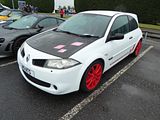
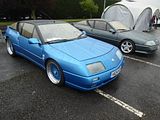
.jpg?width=180&height=120&fit=bounds)
.jpg?width=180&height=120&fit=bounds)
.jpg?width=180&height=120&fit=bounds)
.jpg?width=180&height=120&fit=bounds)
.jpg?width=180&height=120&fit=bounds)
.jpg?width=180&height=120&fit=bounds)
.jpg?width=180&height=120&fit=bounds)
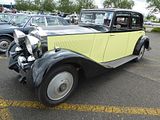
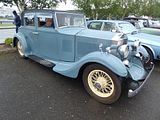
.jpg?width=180&height=120&fit=bounds)
.jpg?width=180&height=120&fit=bounds)
.jpg?width=180&height=120&fit=bounds)
.jpg?width=180&height=120&fit=bounds)
.jpg?width=180&height=120&fit=bounds)
.jpg?width=180&height=120&fit=bounds)
.jpg?width=180&height=120&fit=bounds)
.jpg?width=180&height=120&fit=bounds)
.jpg?width=180&height=120&fit=bounds)
.jpg?width=180&height=120&fit=bounds)
.jpg?width=180&height=120&fit=bounds)
.jpg?width=180&height=120&fit=bounds)
.jpg?width=180&height=120&fit=bounds)
.jpg?width=180&height=120&fit=bounds)
.jpg?width=180&height=120&fit=bounds)
.jpg?width=180&height=120&fit=bounds)
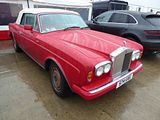
.jpg?width=180&height=120&fit=bounds)
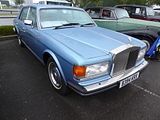
.jpg?width=180&height=120&fit=bounds)
.jpg?width=180&height=120&fit=bounds)
.jpg?width=180&height=120&fit=bounds)
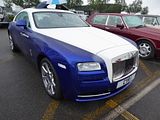
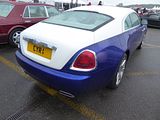
.jpg?width=180&height=120&fit=bounds)
.jpg?width=180&height=120&fit=bounds)
.jpg?width=180&height=120&fit=bounds)
.jpg?width=180&height=120&fit=bounds)
.jpg?width=180&height=120&fit=bounds)
.jpg?width=180&height=120&fit=bounds)
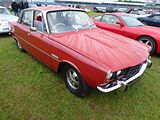
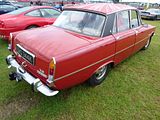
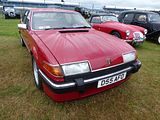
.jpg?width=180&height=120&fit=bounds)
.jpg?width=180&height=120&fit=bounds)
.jpg?width=180&height=120&fit=bounds)
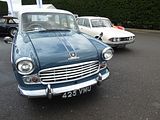
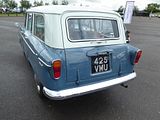
.jpg?width=180&height=120&fit=bounds)
.jpg?width=180&height=120&fit=bounds)
.jpg?width=180&height=120&fit=bounds)
.jpg?width=180&height=120&fit=bounds)
.jpg?width=180&height=120&fit=bounds)
.jpg?width=180&height=120&fit=bounds)
.jpg?width=180&height=120&fit=bounds)
.jpg?width=180&height=120&fit=bounds)
.jpg?width=180&height=120&fit=bounds)
.jpg?width=180&height=120&fit=bounds)
.jpg?width=180&height=120&fit=bounds)
.jpg?width=180&height=120&fit=bounds)
.jpg?width=180&height=120&fit=bounds)
.jpg?width=180&height=120&fit=bounds)
.jpg?width=180&height=120&fit=bounds)
.jpg?width=180&height=120&fit=bounds)
.jpg?width=180&height=120&fit=bounds)
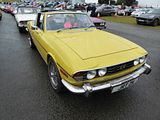
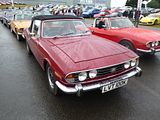
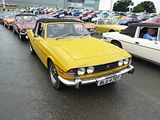
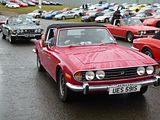
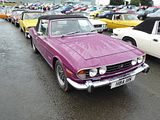
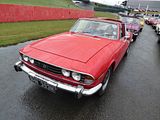
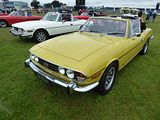
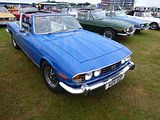
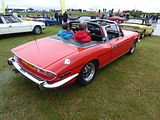
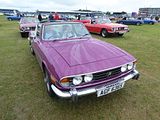
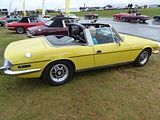
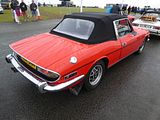
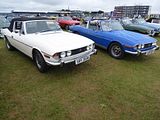
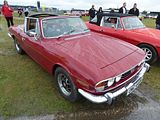
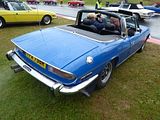
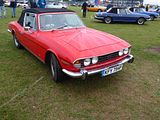
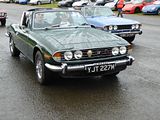
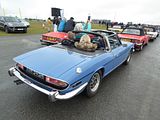
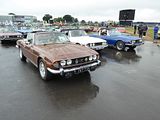
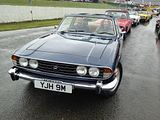
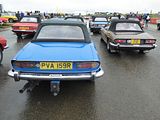
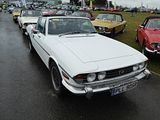
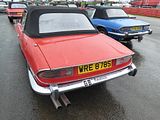
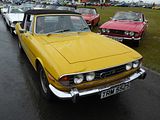
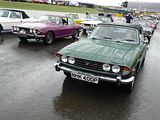
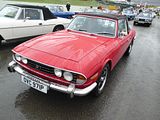
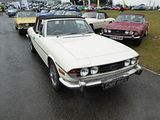
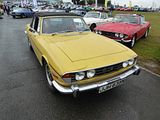
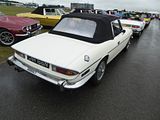
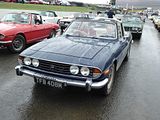
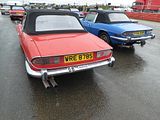
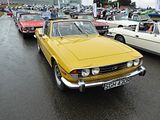
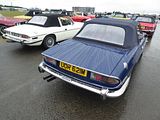
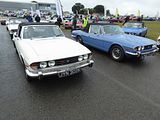
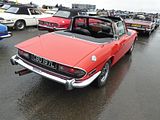
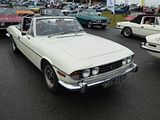
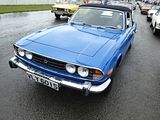
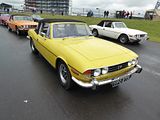
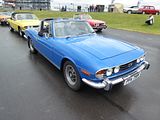
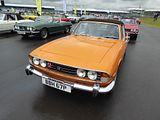
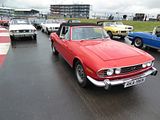
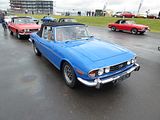
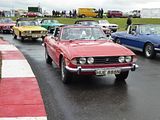
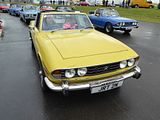
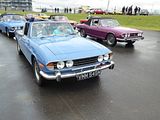
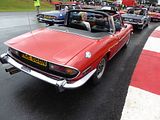
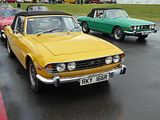
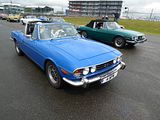
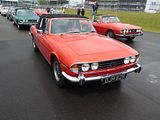
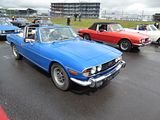
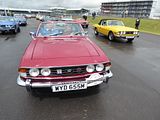
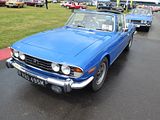
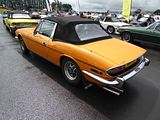
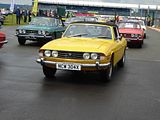
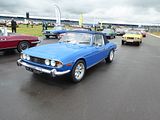
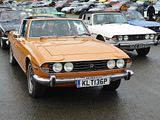
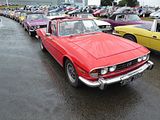
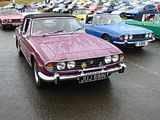
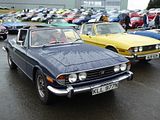
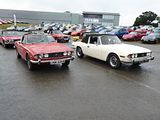
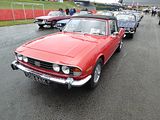
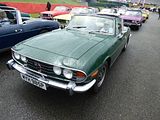
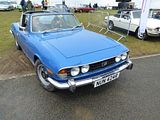
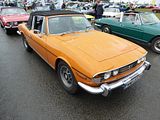
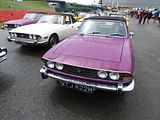
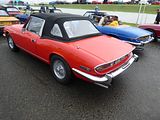
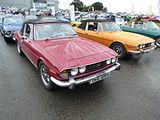
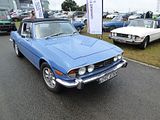
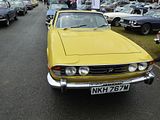
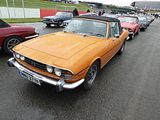
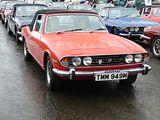
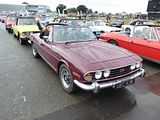
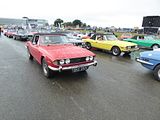
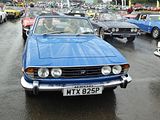
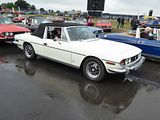
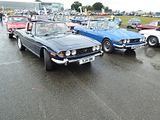
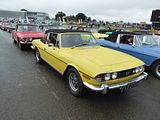
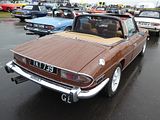
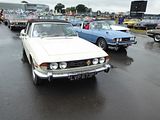
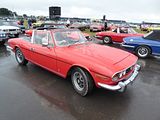
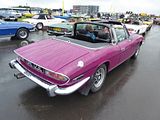
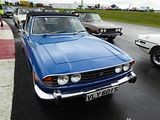
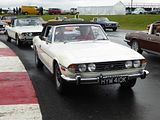
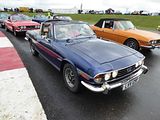
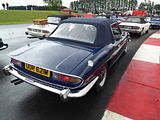
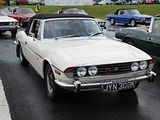
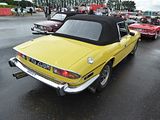
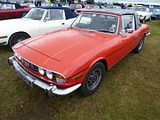
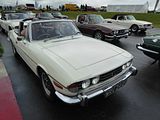
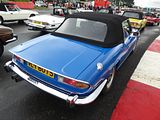
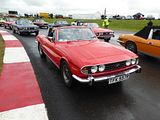
.jpg?width=180&height=120&fit=bounds)
.jpg?width=180&height=120&fit=bounds)
.jpg?width=180&height=120&fit=bounds)
.jpg?width=180&height=120&fit=bounds)
.jpg?width=180&height=120&fit=bounds)
.jpg?width=180&height=120&fit=bounds)
.jpg?width=180&height=120&fit=bounds)
.jpg?width=180&height=120&fit=bounds)
.jpg?width=180&height=120&fit=bounds)
.jpg?width=180&height=120&fit=bounds)
.jpg?width=180&height=120&fit=bounds)
.jpg?width=180&height=120&fit=bounds)
.jpg?width=180&height=120&fit=bounds)
.jpg?width=180&height=120&fit=bounds)
.jpg?width=180&height=120&fit=bounds)
.jpg?width=180&height=120&fit=bounds)
.jpg?width=180&height=120&fit=bounds)
.jpg?width=180&height=120&fit=bounds)
.jpg?width=180&height=120&fit=bounds)
.jpg?width=180&height=120&fit=bounds)
.jpg?width=180&height=120&fit=bounds)
.jpg?width=180&height=120&fit=bounds)
.jpg?width=180&height=120&fit=bounds)
.jpg?width=180&height=120&fit=bounds)
.jpg?width=180&height=120&fit=bounds)
.jpg?width=180&height=120&fit=bounds)
.jpg?width=180&height=120&fit=bounds)
.jpg?width=180&height=120&fit=bounds)
.jpg?width=180&height=120&fit=bounds)
.jpg?width=180&height=120&fit=bounds)
.jpg?width=180&height=120&fit=bounds)
.jpg?width=180&height=120&fit=bounds)
.jpg?width=180&height=120&fit=bounds)
.jpg?width=180&height=120&fit=bounds)
.jpg?width=180&height=120&fit=bounds)
.jpg?width=180&height=120&fit=bounds)
.jpg?width=180&height=120&fit=bounds)
.jpg?width=180&height=120&fit=bounds)
.jpg?width=180&height=120&fit=bounds)
.jpg?width=180&height=120&fit=bounds)
.jpg?width=180&height=120&fit=bounds)
.jpg?width=180&height=120&fit=bounds)
.jpg?width=180&height=120&fit=bounds)
.jpg?width=180&height=120&fit=bounds)
.jpg?width=180&height=120&fit=bounds)
.jpg?width=180&height=120&fit=bounds)
.jpg?width=180&height=120&fit=bounds)
.jpg?width=180&height=120&fit=bounds)
.jpg?width=180&height=120&fit=bounds)
.jpg?width=180&height=120&fit=bounds)
.jpg?width=180&height=120&fit=bounds)
.jpg?width=180&height=120&fit=bounds)
.jpg?width=180&height=120&fit=bounds)
.jpg?width=180&height=120&fit=bounds)
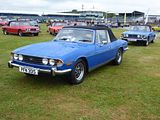
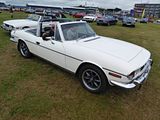
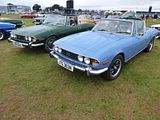
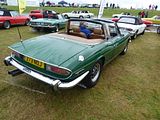
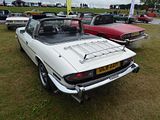
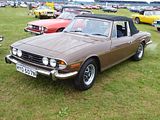
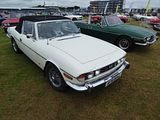
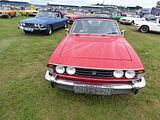
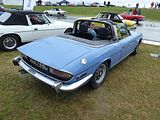
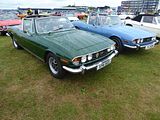
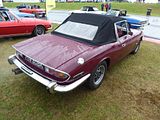
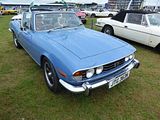
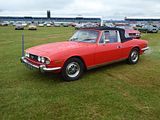
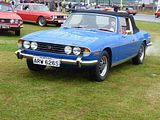
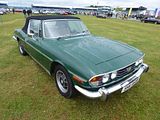
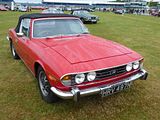
.jpg?width=180&height=120&fit=bounds)
.jpg?width=180&height=120&fit=bounds)
.jpg?width=180&height=120&fit=bounds)
.jpg?width=180&height=120&fit=bounds)
.jpg?width=180&height=120&fit=bounds)
.jpg?width=180&height=120&fit=bounds)
.jpg?width=180&height=120&fit=bounds)
.jpg?width=180&height=120&fit=bounds)
.jpg?width=180&height=120&fit=bounds)
.jpg?width=180&height=120&fit=bounds)
.jpg?width=180&height=120&fit=bounds)
.jpg?width=180&height=120&fit=bounds)
.jpg?width=180&height=120&fit=bounds)
.jpg?width=180&height=120&fit=bounds)
.jpg?width=180&height=120&fit=bounds)
.jpg?width=180&height=120&fit=bounds)
.jpg?width=180&height=120&fit=bounds)
.jpg?width=180&height=120&fit=bounds)
.jpg?width=180&height=120&fit=bounds)
.jpg?width=180&height=120&fit=bounds)
.jpg?width=180&height=120&fit=bounds)
.jpg?width=180&height=120&fit=bounds)
.jpg?width=180&height=120&fit=bounds)
.jpg?width=180&height=120&fit=bounds)
.jpg?width=180&height=120&fit=bounds)
.jpg?width=180&height=120&fit=bounds)
.jpg?width=180&height=120&fit=bounds)
.jpg?width=180&height=120&fit=bounds)
.jpg?width=180&height=120&fit=bounds)
.jpg?width=180&height=120&fit=bounds)
.jpg?width=180&height=120&fit=bounds)
.jpg?width=180&height=120&fit=bounds)
.jpg?width=180&height=120&fit=bounds)
.jpg?width=180&height=120&fit=bounds)
.jpg?width=180&height=120&fit=bounds)
.jpg?width=180&height=120&fit=bounds)
.jpg?width=180&height=120&fit=bounds)
.jpg?width=180&height=120&fit=bounds)
.jpg?width=180&height=120&fit=bounds)
.jpg?width=180&height=120&fit=bounds)
.jpg?width=180&height=120&fit=bounds)
.jpg?width=180&height=120&fit=bounds)
.jpg?width=180&height=120&fit=bounds)
.jpg?width=180&height=120&fit=bounds)
.jpg?width=180&height=120&fit=bounds)
.jpg?width=180&height=120&fit=bounds)
.jpg?width=180&height=120&fit=bounds)
.jpg?width=180&height=120&fit=bounds)
.jpg?width=180&height=120&fit=bounds)
.jpg?width=180&height=120&fit=bounds)
.jpg?width=180&height=120&fit=bounds)
.jpg?width=180&height=120&fit=bounds)
.jpg?width=180&height=120&fit=bounds)
.jpg?width=180&height=120&fit=bounds)
.jpg?width=180&height=120&fit=bounds)
.jpg?width=180&height=120&fit=bounds)
.jpg?width=180&height=120&fit=bounds)
.jpg?width=180&height=120&fit=bounds)
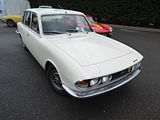
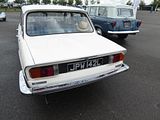
.jpg?width=180&height=120&fit=bounds)
.jpg?width=180&height=120&fit=bounds)
.jpg?width=180&height=120&fit=bounds)
.jpg?width=180&height=120&fit=bounds)
.jpg?width=180&height=120&fit=bounds)
.jpg?width=180&height=120&fit=bounds)
.jpg?width=180&height=120&fit=bounds)
.jpg?width=180&height=120&fit=bounds)
.jpg?width=180&height=120&fit=bounds)
.jpg?width=180&height=120&fit=bounds)
.jpg?width=180&height=120&fit=bounds)
.jpg?width=180&height=120&fit=bounds)
.jpg?width=180&height=120&fit=bounds)
.jpg?width=180&height=120&fit=bounds)
.jpg?width=180&height=120&fit=bounds)
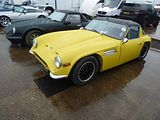
.jpg?width=180&height=120&fit=bounds)
.jpg?width=180&height=120&fit=bounds)
.jpg?width=180&height=120&fit=bounds)
.jpg?width=180&height=120&fit=bounds)
.jpg?width=180&height=120&fit=bounds)
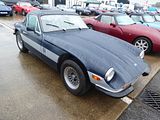
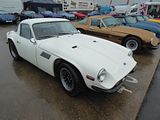
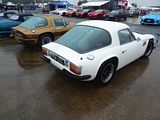
.jpg?width=180&height=120&fit=bounds)
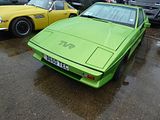
.jpg?width=180&height=120&fit=bounds)
.jpg?width=180&height=120&fit=bounds)
.jpg?width=180&height=120&fit=bounds)
.jpg?width=180&height=120&fit=bounds)
.jpg?width=180&height=120&fit=bounds)
.jpg?width=180&height=120&fit=bounds)
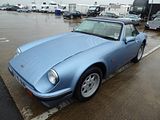
.jpg?width=180&height=120&fit=bounds)
.jpg?width=180&height=120&fit=bounds)
.jpg?width=180&height=120&fit=bounds)
.jpg?width=180&height=120&fit=bounds)
.jpg?width=180&height=120&fit=bounds)
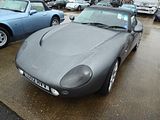
.jpg?width=180&height=120&fit=bounds)
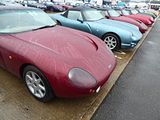
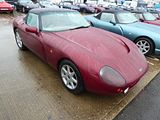
.jpg?width=180&height=120&fit=bounds)
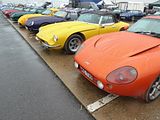
.jpg?width=180&height=120&fit=bounds)
.jpg?width=180&height=120&fit=bounds)
.jpg?width=180&height=120&fit=bounds)
.jpg?width=180&height=120&fit=bounds)
.jpg?width=180&height=120&fit=bounds)
.jpg?width=180&height=120&fit=bounds)
.jpg?width=180&height=120&fit=bounds)
.jpg?width=180&height=120&fit=bounds)
.jpg?width=180&height=120&fit=bounds)
.jpg?width=180&height=120&fit=bounds)
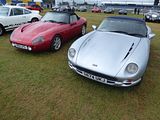
.jpg?width=180&height=120&fit=bounds)
.jpg?width=180&height=120&fit=bounds)
.jpg?width=180&height=120&fit=bounds)
.jpg?width=180&height=120&fit=bounds)
.jpg?width=180&height=120&fit=bounds)
.jpg?width=180&height=120&fit=bounds)
.jpg?width=180&height=120&fit=bounds)
.jpg?width=180&height=120&fit=bounds)
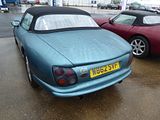
.jpg?width=180&height=120&fit=bounds)
.jpg?width=180&height=120&fit=bounds)
.jpg?width=180&height=120&fit=bounds)
.jpg?width=180&height=120&fit=bounds)
.jpg?width=180&height=120&fit=bounds)
.jpg?width=180&height=120&fit=bounds)
.jpg?width=180&height=120&fit=bounds)
.jpg?width=180&height=120&fit=bounds)
.jpg?width=180&height=120&fit=bounds)
.jpg?width=180&height=120&fit=bounds)
.jpg?width=180&height=120&fit=bounds)
.jpg?width=180&height=120&fit=bounds)
.jpg?width=180&height=120&fit=bounds)
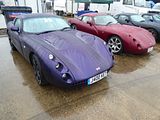
.jpg?width=180&height=120&fit=bounds)
.jpg?width=180&height=120&fit=bounds)
.jpg?width=180&height=120&fit=bounds)
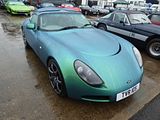
.jpg?width=180&height=120&fit=bounds)
.jpg?width=180&height=120&fit=bounds)
.jpg?width=180&height=120&fit=bounds)
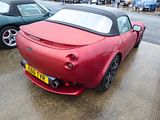
.jpg?width=180&height=120&fit=bounds)
.jpg?width=180&height=120&fit=bounds)
.jpg?width=180&height=120&fit=bounds)
.jpg?width=180&height=120&fit=bounds)
.jpg?width=180&height=120&fit=bounds)
.jpg?width=180&height=120&fit=bounds)
.jpg?width=180&height=120&fit=bounds)
.jpg?width=180&height=120&fit=bounds)
.jpg?width=180&height=120&fit=bounds)
.jpg?width=180&height=120&fit=bounds)
.jpg?width=180&height=120&fit=bounds)
.jpg?width=180&height=120&fit=bounds)
.jpg?width=180&height=120&fit=bounds)
.jpg?width=180&height=120&fit=bounds)
.jpg?width=180&height=120&fit=bounds)
.jpg?width=180&height=120&fit=bounds)
.jpg?width=180&height=120&fit=bounds)
.jpg?width=180&height=120&fit=bounds)
.jpg?width=180&height=120&fit=bounds)
.jpg?width=180&height=120&fit=bounds)
.jpg?width=180&height=120&fit=bounds)
.jpg?width=180&height=120&fit=bounds)
.jpg?width=180&height=120&fit=bounds)
.jpg?width=180&height=120&fit=bounds)
.jpg?width=180&height=120&fit=bounds)
.jpg?width=180&height=120&fit=bounds)
.jpg?width=180&height=120&fit=bounds)
.jpg?width=180&height=120&fit=bounds)
.jpg?width=180&height=120&fit=bounds)
.jpg?width=180&height=120&fit=bounds)
.jpg?width=180&height=120&fit=bounds)
.jpg?width=180&height=120&fit=bounds)
.jpg?width=180&height=120&fit=bounds)
.jpg?width=180&height=120&fit=bounds)
.jpg?width=180&height=120&fit=bounds)
.jpg?width=180&height=120&fit=bounds)
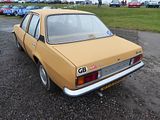
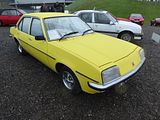
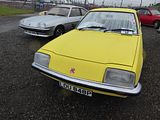
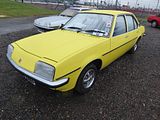
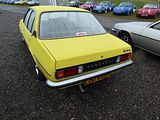
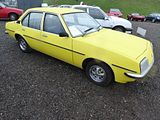
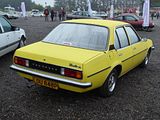
.jpg?width=180&height=120&fit=bounds)
.jpg?width=180&height=120&fit=bounds)
.jpg?width=180&height=120&fit=bounds)
.jpg?width=180&height=120&fit=bounds)
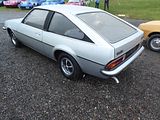
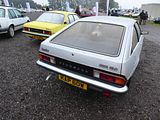
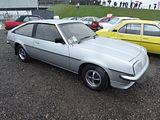
.jpg?width=180&height=120&fit=bounds)
.jpg?width=180&height=120&fit=bounds)
.jpg?width=180&height=120&fit=bounds)
.jpg?width=180&height=120&fit=bounds)
.jpg?width=180&height=120&fit=bounds)
.jpg?width=180&height=120&fit=bounds)
.jpg?width=180&height=120&fit=bounds)
.jpg?width=180&height=120&fit=bounds)
.jpg?width=180&height=120&fit=bounds)
.jpg?width=180&height=120&fit=bounds)
.jpg?width=180&height=120&fit=bounds)
.jpg?width=180&height=120&fit=bounds)
.jpg?width=180&height=120&fit=bounds)
.jpg?width=180&height=120&fit=bounds)
.jpg?width=180&height=120&fit=bounds)
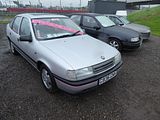
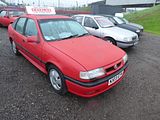
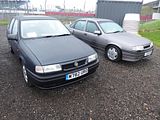
.jpg?width=180&height=120&fit=bounds)
.jpg?width=180&height=120&fit=bounds)
.jpg?width=180&height=120&fit=bounds)
.jpg?width=180&height=120&fit=bounds)
.jpg?width=180&height=120&fit=bounds)
.jpg?width=180&height=120&fit=bounds)
.jpg?width=180&height=120&fit=bounds)
.jpg?width=180&height=120&fit=bounds)
.jpg?width=180&height=120&fit=bounds)
.jpg?width=180&height=120&fit=bounds)
.jpg?width=180&height=120&fit=bounds)
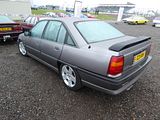
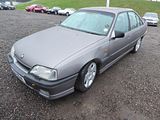
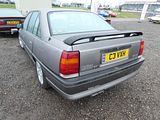
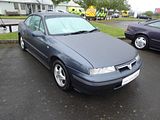
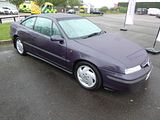
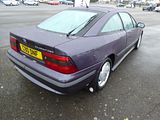
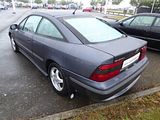
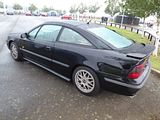
.jpg?width=180&height=120&fit=bounds)
.jpg?width=180&height=120&fit=bounds)
.jpg?width=180&height=120&fit=bounds)
.jpg?width=180&height=120&fit=bounds)
.jpg?width=180&height=120&fit=bounds)
.jpg?width=180&height=120&fit=bounds)
.jpg?width=180&height=120&fit=bounds)
.jpg?width=180&height=120&fit=bounds)
.jpg?width=180&height=120&fit=bounds)
.jpg?width=180&height=120&fit=bounds)
.jpg?width=180&height=120&fit=bounds)
.jpg?width=180&height=120&fit=bounds)
.jpg?width=180&height=120&fit=bounds)
.jpg?width=180&height=120&fit=bounds)
.jpg?width=180&height=120&fit=bounds)
.jpg?width=180&height=120&fit=bounds)
.jpg?width=180&height=120&fit=bounds)
.jpg?width=180&height=120&fit=bounds)
.jpg?width=180&height=120&fit=bounds)
.jpg?width=180&height=120&fit=bounds)
.jpg?width=180&height=120&fit=bounds)
.jpg?width=180&height=120&fit=bounds)
.jpg?width=180&height=120&fit=bounds)
.jpg?width=180&height=120&fit=bounds)
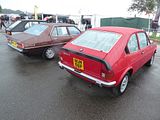
.jpg?width=180&height=120&fit=bounds)
.jpg?width=180&height=120&fit=bounds)
.jpg?width=180&height=120&fit=bounds)
.jpg?width=180&height=120&fit=bounds)
.jpg?width=180&height=120&fit=bounds)
.jpg?width=180&height=120&fit=bounds)
.jpg?width=180&height=120&fit=bounds)
.jpg?width=180&height=120&fit=bounds)
.jpg?width=180&height=120&fit=bounds)
.jpg?width=180&height=120&fit=bounds)
.jpg?width=180&height=120&fit=bounds)
.jpg?width=180&height=120&fit=bounds)
.jpg?width=180&height=120&fit=bounds)
.jpg?width=180&height=120&fit=bounds)
.jpg?width=180&height=120&fit=bounds)
.jpg?width=180&height=120&fit=bounds)
.jpg?width=180&height=120&fit=bounds)
.jpg?width=180&height=120&fit=bounds)
.jpg?width=180&height=120&fit=bounds)
.jpg?width=180&height=120&fit=bounds)
.jpg?width=180&height=120&fit=bounds)
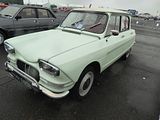
.jpg?width=180&height=120&fit=bounds)
.jpg?width=180&height=120&fit=bounds)
.jpg?width=180&height=120&fit=bounds)
.jpg?width=180&height=120&fit=bounds)
.jpg?width=180&height=120&fit=bounds)
.jpg?width=180&height=120&fit=bounds)
.jpg?width=180&height=120&fit=bounds)
.jpg?width=180&height=120&fit=bounds)
.jpg?width=180&height=120&fit=bounds)
.jpg?width=180&height=120&fit=bounds)
.jpg?width=180&height=120&fit=bounds)
.jpg?width=180&height=120&fit=bounds)
.jpg?width=180&height=120&fit=bounds)
.jpg?width=180&height=120&fit=bounds)
.jpg?width=180&height=120&fit=bounds)
.jpg?width=180&height=120&fit=bounds)
.jpg?width=180&height=120&fit=bounds)
.jpg?width=180&height=120&fit=bounds)
.jpg?width=180&height=120&fit=bounds)
.jpg?width=180&height=120&fit=bounds)
.jpg?width=180&height=120&fit=bounds)
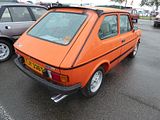
.jpg?width=180&height=120&fit=bounds)
.jpg?width=180&height=120&fit=bounds)
.jpg?width=180&height=120&fit=bounds)
.jpg?width=180&height=120&fit=bounds)
.jpg?width=180&height=120&fit=bounds)
.jpg?width=180&height=120&fit=bounds)
.jpg?width=180&height=120&fit=bounds)
.jpg?width=180&height=120&fit=bounds)
.jpg?width=180&height=120&fit=bounds)
.jpg?width=180&height=120&fit=bounds)
.jpg?width=180&height=120&fit=bounds)
.jpg?width=180&height=120&fit=bounds)
.jpg?width=180&height=120&fit=bounds)
.jpg?width=180&height=120&fit=bounds)
.jpg?width=180&height=120&fit=bounds)
.jpg?width=180&height=120&fit=bounds)
.jpg?width=180&height=120&fit=bounds)
.jpg?width=180&height=120&fit=bounds)
.jpg?width=180&height=120&fit=bounds)
.jpg?width=180&height=120&fit=bounds)
.jpg?width=180&height=120&fit=bounds)
.jpg?width=180&height=120&fit=bounds)
.jpg?width=180&height=120&fit=bounds)
.jpg?width=180&height=120&fit=bounds)
.jpg?width=180&height=120&fit=bounds)
.jpg?width=180&height=120&fit=bounds)
.jpg?width=180&height=120&fit=bounds)
.jpg?width=180&height=120&fit=bounds)
.jpg?width=180&height=120&fit=bounds)
.jpg?width=180&height=120&fit=bounds)
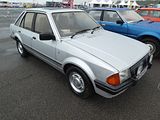
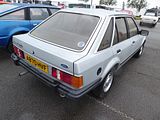
.jpg?width=180&height=120&fit=bounds)
.jpg?width=180&height=120&fit=bounds)
.jpg?width=180&height=120&fit=bounds)
.jpg?width=180&height=120&fit=bounds)
.jpg?width=180&height=120&fit=bounds)
.jpg?width=180&height=120&fit=bounds)
.jpg?width=180&height=120&fit=bounds)
.jpg?width=180&height=120&fit=bounds)
.jpg?width=180&height=120&fit=bounds)
.jpg?width=180&height=120&fit=bounds)
.jpg?width=180&height=120&fit=bounds)
.jpg?width=180&height=120&fit=bounds)
.jpg?width=180&height=120&fit=bounds)
.jpg?width=180&height=120&fit=bounds)
.jpg?width=180&height=120&fit=bounds)
.jpg?width=180&height=120&fit=bounds)
.jpg?width=180&height=120&fit=bounds)
.jpg?width=180&height=120&fit=bounds)
.jpg?width=180&height=120&fit=bounds)
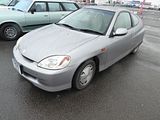
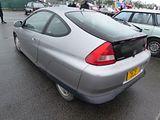
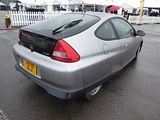
.jpg?width=180&height=120&fit=bounds)
.jpg?width=180&height=120&fit=bounds)
.jpg?width=180&height=120&fit=bounds)
.jpg?width=180&height=120&fit=bounds)
.jpg?width=180&height=120&fit=bounds)
.jpg?width=180&height=120&fit=bounds)
.jpg?width=180&height=120&fit=bounds)
.jpg?width=180&height=120&fit=bounds)
.jpg?width=180&height=120&fit=bounds)
.jpg?width=180&height=120&fit=bounds)
.jpg?width=180&height=120&fit=bounds)
.jpg?width=180&height=120&fit=bounds)
.jpg?width=180&height=120&fit=bounds)
.jpg?width=180&height=120&fit=bounds)
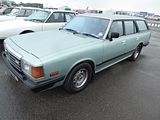
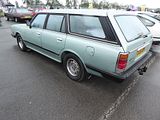
.jpg?width=180&height=120&fit=bounds)
.jpg?width=180&height=120&fit=bounds)
.jpg?width=180&height=120&fit=bounds)
.jpg?width=180&height=120&fit=bounds)
.jpg?width=180&height=120&fit=bounds)
.jpg?width=180&height=120&fit=bounds)
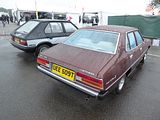
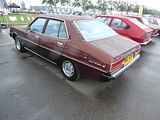
.jpg?width=180&height=120&fit=bounds)
.jpg?width=180&height=120&fit=bounds)
.jpg?width=180&height=120&fit=bounds)
.jpg?width=180&height=120&fit=bounds)
.jpg?width=180&height=120&fit=bounds)
.jpg?width=180&height=120&fit=bounds)
.jpg?width=180&height=120&fit=bounds)
.jpg?width=180&height=120&fit=bounds)
.jpg?width=180&height=120&fit=bounds)
.jpg?width=180&height=120&fit=bounds)
.jpg?width=180&height=120&fit=bounds)
.jpg?width=180&height=120&fit=bounds)
.jpg?width=180&height=120&fit=bounds)
.jpg?width=180&height=120&fit=bounds)
.jpg?width=180&height=120&fit=bounds)
.jpg?width=180&height=120&fit=bounds)
.jpg?width=180&height=120&fit=bounds)
.jpg?width=180&height=120&fit=bounds)
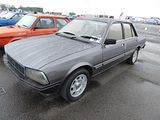
.jpg?width=180&height=120&fit=bounds)
.jpg?width=180&height=120&fit=bounds)
.jpg?width=180&height=120&fit=bounds)
.jpg?width=180&height=120&fit=bounds)
.jpg?width=180&height=120&fit=bounds)
.jpg?width=180&height=120&fit=bounds)
.jpg?width=180&height=120&fit=bounds)
.jpg?width=180&height=120&fit=bounds)
.jpg?width=180&height=120&fit=bounds)
.jpg?width=180&height=120&fit=bounds)
.jpg?width=180&height=120&fit=bounds)
.jpg?width=180&height=120&fit=bounds)
.jpg?width=180&height=120&fit=bounds)
.jpg?width=180&height=120&fit=bounds)
.jpg?width=180&height=120&fit=bounds)
.jpg?width=180&height=120&fit=bounds)
.jpg?width=180&height=120&fit=bounds)
.jpg?width=180&height=120&fit=bounds)
.jpg?width=180&height=120&fit=bounds)
.jpg?width=180&height=120&fit=bounds)
.jpg?width=180&height=120&fit=bounds)
.jpg?width=180&height=120&fit=bounds)
.jpg?width=180&height=120&fit=bounds)
.jpg?width=180&height=120&fit=bounds)
.jpg?width=180&height=120&fit=bounds)
.jpg?width=180&height=120&fit=bounds)
.jpg?width=180&height=120&fit=bounds)
.jpg?width=180&height=120&fit=bounds)
.jpg?width=180&height=120&fit=bounds)
.jpg?width=180&height=120&fit=bounds)
.jpg?width=180&height=120&fit=bounds)
.jpg?width=180&height=120&fit=bounds)
.jpg?width=180&height=120&fit=bounds)
.jpg?width=180&height=120&fit=bounds)
.jpg?width=180&height=120&fit=bounds)
.jpg?width=180&height=120&fit=bounds)
.jpg?width=180&height=120&fit=bounds)
.jpg?width=180&height=120&fit=bounds)
.jpg?width=180&height=120&fit=bounds)
.jpg?width=180&height=120&fit=bounds)
.jpg?width=180&height=120&fit=bounds)
.jpg?width=180&height=120&fit=bounds)
.jpg?width=180&height=120&fit=bounds)
.jpg?width=180&height=120&fit=bounds)
.jpg?width=180&height=120&fit=bounds)
.jpg?width=180&height=160&fit=bounds)
.jpg?width=180&height=120&fit=bounds)
.jpg?width=180&height=120&fit=bounds)
.jpg?width=180&height=120&fit=bounds)
.jpg?width=180&height=120&fit=bounds)
.jpg?width=180&height=120&fit=bounds)
.jpg?width=180&height=120&fit=bounds)
.jpg?width=180&height=120&fit=bounds)
.jpg?width=180&height=120&fit=bounds)
.jpg?width=180&height=120&fit=bounds)
.jpg?width=180&height=120&fit=bounds)
.jpg?width=180&height=120&fit=bounds)
.jpg?width=180&height=120&fit=bounds)
.jpg?width=180&height=120&fit=bounds)
.jpg?width=180&height=120&fit=bounds)
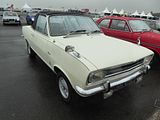
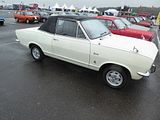
.jpg?width=180&height=120&fit=bounds)
.jpg?width=180&height=120&fit=bounds)
.jpg?width=180&height=120&fit=bounds)
.jpg?width=180&height=120&fit=bounds)
.jpg?width=180&height=120&fit=bounds)
.jpg?width=180&height=120&fit=bounds)
.jpg?width=180&height=120&fit=bounds)
.jpg?width=180&height=120&fit=bounds)
.jpg?width=180&height=120&fit=bounds)
.jpg?width=180&height=120&fit=bounds)
.jpg?width=180&height=120&fit=bounds)
.jpg?width=180&height=120&fit=bounds)
.jpg?width=180&height=120&fit=bounds)
.jpg?width=180&height=120&fit=bounds)
.jpg?width=180&height=120&fit=bounds)
.jpg?width=180&height=120&fit=bounds)
.jpg?width=180&height=120&fit=bounds)
.jpg?width=180&height=120&fit=bounds)
.jpg?width=180&height=120&fit=bounds)
.jpg?width=180&height=120&fit=bounds)
.jpg?width=180&height=120&fit=bounds)
.jpg?width=180&height=120&fit=bounds)
.jpg?width=180&height=120&fit=bounds)
.jpg?width=180&height=120&fit=bounds)
.jpg?width=180&height=120&fit=bounds)
.jpg?width=180&height=120&fit=bounds)
.jpg?width=180&height=120&fit=bounds)
.jpg?width=180&height=120&fit=bounds)
.jpg?width=180&height=120&fit=bounds)
.jpg?width=180&height=120&fit=bounds)
.jpg?width=180&height=120&fit=bounds)
.jpg?width=180&height=120&fit=bounds)
.jpg?width=180&height=120&fit=bounds)
.jpg?width=180&height=120&fit=bounds)
.jpg?width=180&height=120&fit=bounds)
.jpg?width=180&height=120&fit=bounds)
.jpg?width=180&height=120&fit=bounds)
.jpg?width=180&height=120&fit=bounds)
.jpg?width=180&height=120&fit=bounds)
.jpg?width=180&height=120&fit=bounds)
.jpg?width=180&height=120&fit=bounds)
.jpg?width=180&height=120&fit=bounds)
.jpg?width=180&height=120&fit=bounds)
.jpg?width=180&height=120&fit=bounds)
.jpg?width=180&height=120&fit=bounds)
.jpg?width=180&height=120&fit=bounds)
.jpg?width=180&height=120&fit=bounds)
.jpg?width=180&height=120&fit=bounds)
.jpg?width=180&height=120&fit=bounds)
.jpg?width=180&height=120&fit=bounds)
.jpg?width=180&height=120&fit=bounds)
.jpg?width=180&height=120&fit=bounds)
.jpg?width=180&height=120&fit=bounds)
.jpg?width=180&height=120&fit=bounds)
.jpg?width=180&height=120&fit=bounds)
.jpg?width=180&height=120&fit=bounds)
.jpg?width=180&height=120&fit=bounds)
.jpg?width=180&height=120&fit=bounds)
.jpg?width=180&height=120&fit=bounds)
.jpg?width=180&height=120&fit=bounds)
.jpg?width=180&height=120&fit=bounds)
.jpg?width=180&height=120&fit=bounds)
.jpg?width=180&height=120&fit=bounds)
.jpg?width=180&height=160&fit=bounds)
.jpg?width=180&height=120&fit=bounds)
.jpg?width=180&height=120&fit=bounds)
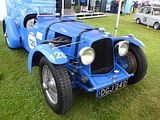
.jpg?width=180&height=120&fit=bounds)
.jpg?width=180&height=120&fit=bounds)
.jpg?width=180&height=160&fit=bounds)
.jpg?width=180&height=120&fit=bounds)
.jpg?width=180&height=120&fit=bounds)
.jpg?width=180&height=120&fit=bounds)
.jpg?width=180&height=120&fit=bounds)
.jpg?width=180&height=120&fit=bounds)
.jpg?width=180&height=120&fit=bounds)
.jpg?width=180&height=120&fit=bounds)
.jpg?width=180&height=160&fit=bounds)
.jpg?width=180&height=120&fit=bounds)
.jpg?width=180&height=120&fit=bounds)
.jpg?width=180&height=120&fit=bounds)
.jpg?width=180&height=120&fit=bounds)
.jpg?width=180&height=120&fit=bounds)
.jpg?width=180&height=120&fit=bounds)
.jpg?width=180&height=120&fit=bounds)
.jpg?width=180&height=120&fit=bounds)
.jpg?width=180&height=120&fit=bounds)
.jpg?width=180&height=120&fit=bounds)
.jpg?width=180&height=120&fit=bounds)
.jpg?width=180&height=120&fit=bounds)
.jpg?width=180&height=120&fit=bounds)
.jpg?width=180&height=120&fit=bounds)
.jpg?width=180&height=120&fit=bounds)
.jpg?width=180&height=120&fit=bounds)
.jpg?width=180&height=120&fit=bounds)
.jpg?width=180&height=120&fit=bounds)
.jpg?width=180&height=120&fit=bounds)
.jpg?width=180&height=120&fit=bounds)
.jpg?width=180&height=120&fit=bounds)
.jpg?width=180&height=120&fit=bounds)
.jpg?width=180&height=120&fit=bounds)
.jpg?width=180&height=120&fit=bounds)
.jpg?width=180&height=120&fit=bounds)
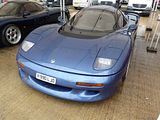
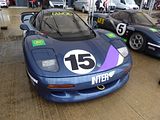
.jpg?width=180&height=120&fit=bounds)
.jpg?width=180&height=120&fit=bounds)
.jpg?width=180&height=120&fit=bounds)
.jpg?width=180&height=120&fit=bounds)
.jpg?width=180&height=120&fit=bounds)
.jpg?width=180&height=120&fit=bounds)
.jpg?width=180&height=120&fit=bounds)
.jpg?width=180&height=120&fit=bounds)
.jpg?width=180&height=120&fit=bounds)
.jpg?width=180&height=120&fit=bounds)
.jpg?width=180&height=120&fit=bounds)
.jpg?width=180&height=120&fit=bounds)
.jpg?width=180&height=120&fit=bounds)
.jpg?width=180&height=120&fit=bounds)
.jpg?width=180&height=120&fit=bounds)
.jpg?width=180&height=120&fit=bounds)
.jpg?width=180&height=120&fit=bounds)
.jpg?width=180&height=120&fit=bounds)
.jpg?width=180&height=120&fit=bounds)
.jpg?width=180&height=120&fit=bounds)
.jpg?width=180&height=120&fit=bounds)
.jpg?width=180&height=120&fit=bounds)
.jpg?width=180&height=120&fit=bounds)
.jpg?width=180&height=120&fit=bounds)
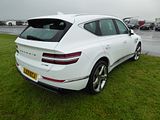
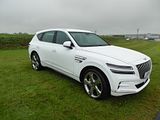
.jpg?width=180&height=120&fit=bounds)
.jpg?width=180&height=120&fit=bounds)
.jpg?width=180&height=120&fit=bounds)
.jpg?width=180&height=120&fit=bounds)
.jpg?width=180&height=120&fit=bounds)
.jpg?width=180&height=120&fit=bounds)
.jpg?width=180&height=120&fit=bounds)
.jpg?width=180&height=120&fit=bounds)
.jpg?width=180&height=120&fit=bounds)
.jpg?width=180&height=120&fit=bounds)
.jpg?width=180&height=120&fit=bounds)
.jpg?width=180&height=120&fit=bounds)
.jpg?width=180&height=120&fit=bounds)
.jpg?width=180&height=120&fit=bounds)
.jpg?width=180&height=120&fit=bounds)
.jpg?width=180&height=120&fit=bounds)
.jpg?width=180&height=120&fit=bounds)
.jpg?width=180&height=120&fit=bounds)
.jpg?width=180&height=120&fit=bounds)
.jpg?width=180&height=120&fit=bounds)
.jpg?width=180&height=120&fit=bounds)
.jpg?width=180&height=120&fit=bounds)
.jpg?width=180&height=120&fit=bounds)
.jpg?width=180&height=160&fit=bounds)
.jpg?width=180&height=120&fit=bounds)
.jpg?width=180&height=120&fit=bounds)
.jpg?width=180&height=120&fit=bounds)
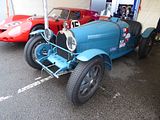
.jpg?width=180&height=120&fit=bounds)
.jpg?width=180&height=120&fit=bounds)
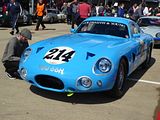
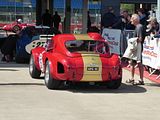
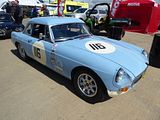
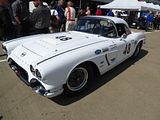
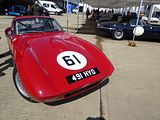
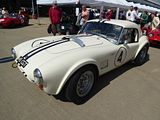
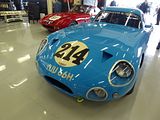
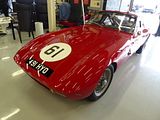
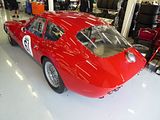
.jpg?width=180&height=120&fit=bounds)
.jpg?width=180&height=120&fit=bounds)
.jpg?width=180&height=120&fit=bounds)
.jpg?width=180&height=120&fit=bounds)
.jpg?width=180&height=120&fit=bounds)
.jpg?width=180&height=120&fit=bounds)
.jpg?width=180&height=120&fit=bounds)
.jpg?width=180&height=120&fit=bounds)
.jpg?width=180&height=120&fit=bounds)
.jpg?width=180&height=120&fit=bounds)
.jpg?width=180&height=120&fit=bounds)
.jpg?width=180&height=120&fit=bounds)
.jpg?width=180&height=120&fit=bounds)
.jpg?width=180&height=120&fit=bounds)
.jpg?width=180&height=120&fit=bounds)
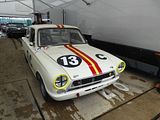
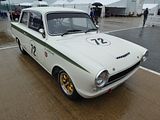
.jpg?width=180&height=120&fit=bounds)
.jpg?width=180&height=120&fit=bounds)
.jpg?width=180&height=120&fit=bounds)
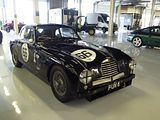
.jpg?width=180&height=120&fit=bounds)
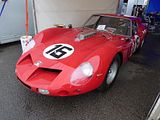
.jpg?width=180&height=120&fit=bounds)
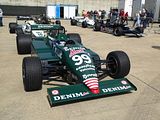
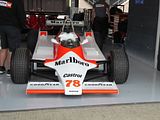
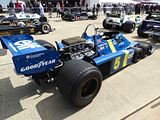
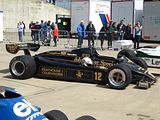
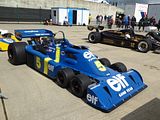
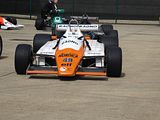
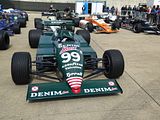
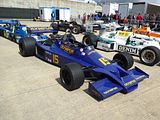
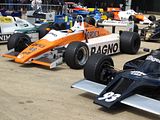
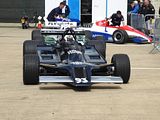
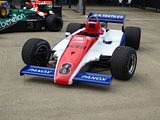

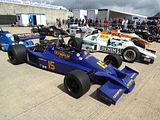


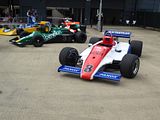
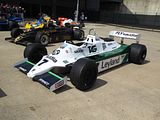
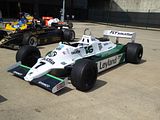
.jpg?width=180&height=120&fit=bounds)
.jpg?width=180&height=120&fit=bounds)
.jpg?width=180&height=120&fit=bounds)
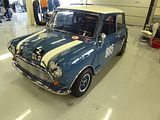
.jpg?width=180&height=120&fit=bounds)
.jpg?width=180&height=120&fit=bounds)
.jpg?width=180&height=120&fit=bounds)
.jpg?width=180&height=120&fit=bounds)
.jpg?width=180&height=120&fit=bounds)
.jpg?width=180&height=120&fit=bounds)
.jpg?width=180&height=120&fit=bounds)
.jpg?width=180&height=120&fit=bounds)
.jpg?width=180&height=160&fit=bounds)
.jpg?width=180&height=160&fit=bounds)
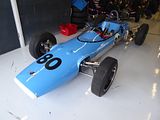
.jpg?width=180&height=120&fit=bounds)
.jpg?width=180&height=120&fit=bounds)
.jpg?width=180&height=120&fit=bounds)
.jpg?width=180&height=120&fit=bounds)
.jpg?width=180&height=120&fit=bounds)
.jpg?width=180&height=120&fit=bounds)
.jpg?width=180&height=120&fit=bounds)
.jpg?width=180&height=120&fit=bounds)
.jpg?width=180&height=120&fit=bounds)
.jpg?width=180&height=120&fit=bounds)
.jpg?width=180&height=120&fit=bounds)
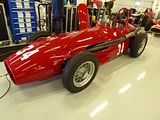
.jpg?width=180&height=120&fit=bounds)
.jpg?width=180&height=120&fit=bounds)
.jpg?width=180&height=120&fit=bounds)
.jpg?width=180&height=160&fit=bounds)
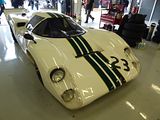
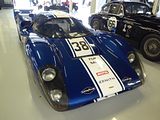
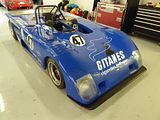
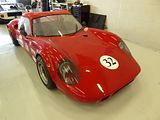
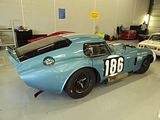
.jpg?width=180&height=120&fit=bounds)
.jpg?width=180&height=120&fit=bounds)
.jpg?width=180&height=120&fit=bounds)
.jpg?width=180&height=120&fit=bounds)
.jpg?width=180&height=120&fit=bounds)
.jpg?width=180&height=120&fit=bounds)
.jpg?width=180&height=120&fit=bounds)
.jpg?width=180&height=120&fit=bounds)
.jpg?width=180&height=120&fit=bounds)
.jpg?width=180&height=120&fit=bounds)
.jpg?width=180&height=120&fit=bounds)
.jpg?width=180&height=120&fit=bounds)
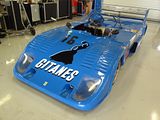
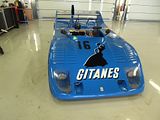
.jpg?width=180&height=120&fit=bounds)
.jpg?width=180&height=120&fit=bounds)
.jpg?width=180&height=120&fit=bounds)
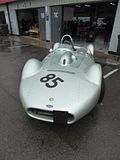
.jpg?width=180&height=120&fit=bounds)
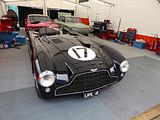
.jpg?width=180&height=120&fit=bounds)
.jpg?width=180&height=120&fit=bounds)
.jpg?width=180&height=120&fit=bounds)
.jpg?width=180&height=120&fit=bounds)
.jpg?width=180&height=120&fit=bounds)
.jpg?width=180&height=120&fit=bounds)
.jpg?width=180&height=120&fit=bounds)
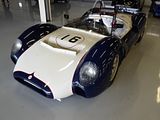
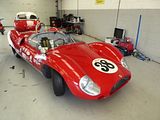
.jpg?width=180&height=120&fit=bounds)
.jpg?width=180&height=120&fit=bounds)
.jpg?width=180&height=120&fit=bounds)
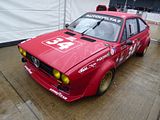
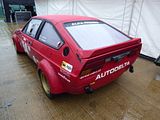
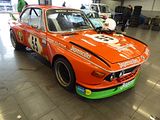
.jpg?width=180&height=120&fit=bounds)
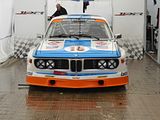
.jpg?width=180&height=120&fit=bounds)
.jpg?width=180&height=120&fit=bounds)
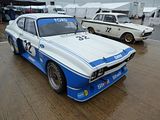
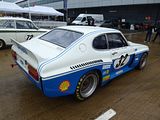
.jpg?width=180&height=120&fit=bounds)
.jpg?width=180&height=120&fit=bounds)
.jpg?width=180&height=120&fit=bounds)
.jpg?width=180&height=120&fit=bounds)
.jpg?width=180&height=120&fit=bounds)
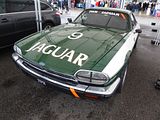
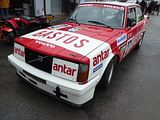
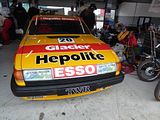
.jpg?width=180&height=120&fit=bounds)
.jpg?width=180&height=120&fit=bounds)
.jpg?width=180&height=120&fit=bounds)
.jpg?width=180&height=120&fit=bounds)
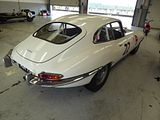
.jpg?width=180&height=120&fit=bounds)
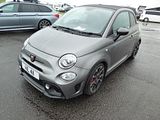
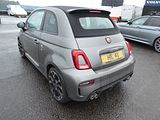
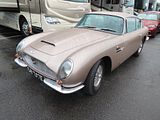
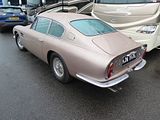
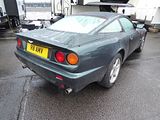
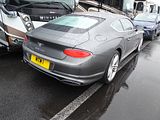
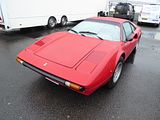
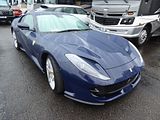
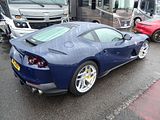
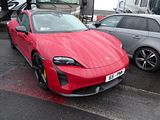
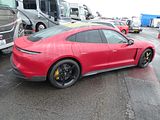
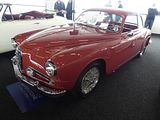
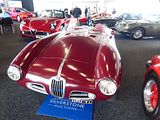
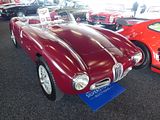
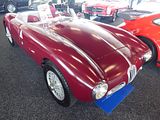
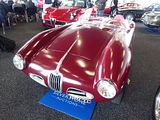
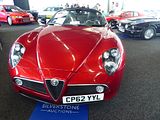
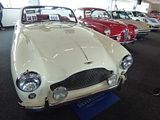
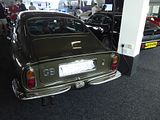
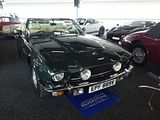
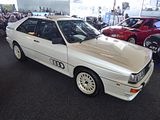
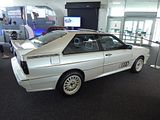
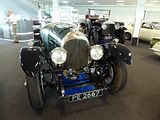
.jpg?width=180&height=120&fit=bounds)
.jpg?width=180&height=120&fit=bounds)
.jpg?width=180&height=120&fit=bounds)
.jpg?width=180&height=120&fit=bounds)
.jpg?width=180&height=120&fit=bounds)
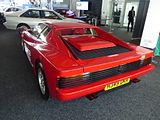
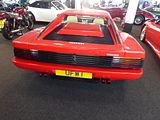
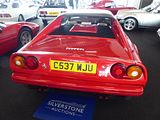
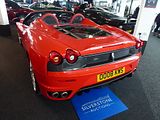
.jpg?width=180&height=120&fit=bounds)
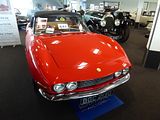
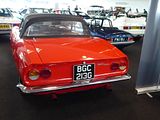
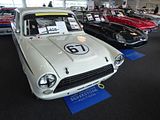
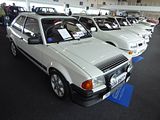
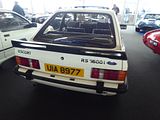
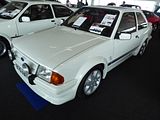
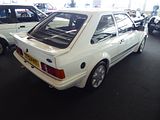
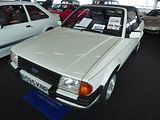
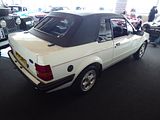
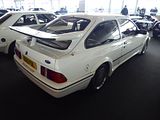
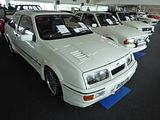
.jpg?width=180&height=120&fit=bounds)
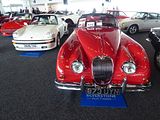
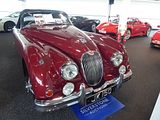
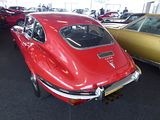
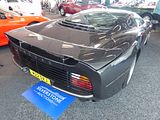
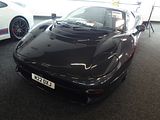
.jpg?width=180&height=120&fit=bounds)
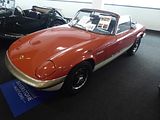
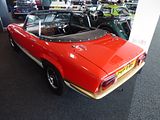
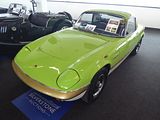
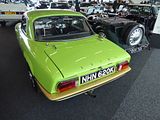
.jpg?width=180&height=120&fit=bounds)
.jpg?width=180&height=120&fit=bounds)
.jpg?width=180&height=120&fit=bounds)
.jpg?width=180&height=120&fit=bounds)
.jpg?width=180&height=120&fit=bounds)
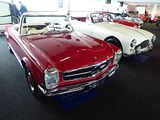
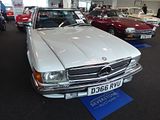
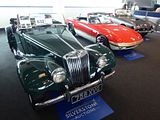
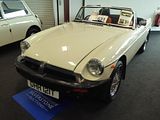
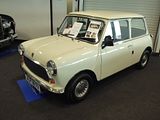
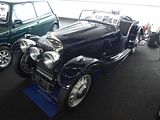
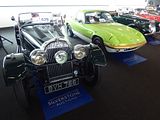
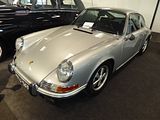
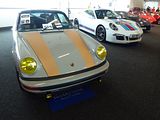
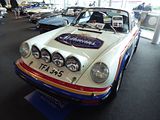
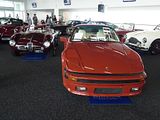
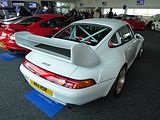
.jpg?width=180&height=120&fit=bounds)
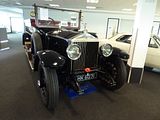
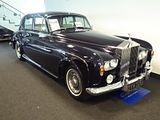
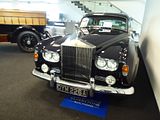
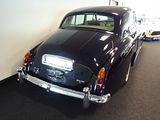
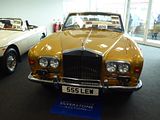
.jpg?width=180&height=120&fit=bounds)
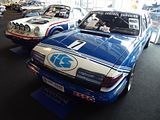
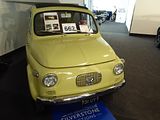
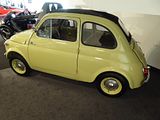
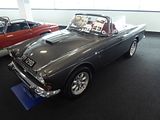
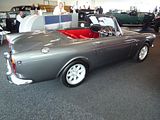
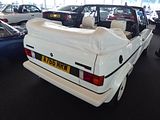
.jpg?width=180&height=120&fit=bounds)
.jpg?width=180&height=120&fit=bounds)
.jpg?width=180&height=120&fit=bounds)
.jpg?width=180&height=120&fit=bounds)
.jpg?width=180&height=120&fit=bounds)
.jpg?width=180&height=120&fit=bounds)
.jpg?width=180&height=120&fit=bounds)
.jpg?width=180&height=120&fit=bounds)
.jpg?width=180&height=120&fit=bounds)
.jpg?width=180&height=120&fit=bounds)
.jpg?width=180&height=120&fit=bounds)
.jpg?width=180&height=120&fit=bounds)
.jpg?width=180&height=120&fit=bounds)


